My most current blog entry:
Entries in Flowers (84)
Visitors From Abroad Day Trip: Pak Khlong Flower Market
 Tuesday, March 31, 2020 at 5:45PM
Tuesday, March 31, 2020 at 5:45PM 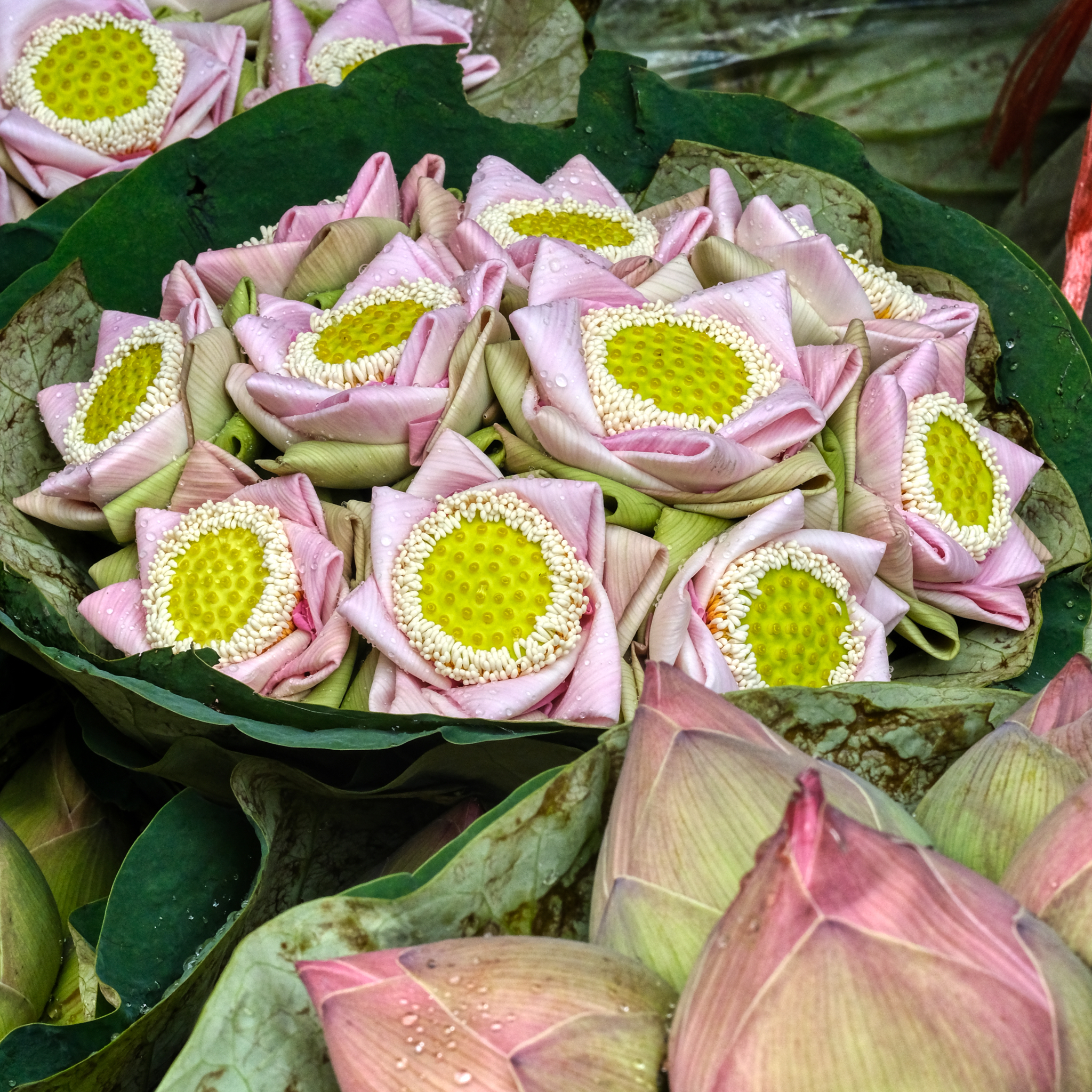 Pak Khlong Talat is Bangkok's great flower market . . . and one of the largest flower markets in the world.
Pak Khlong Talat is Bangkok's great flower market . . . and one of the largest flower markets in the world.
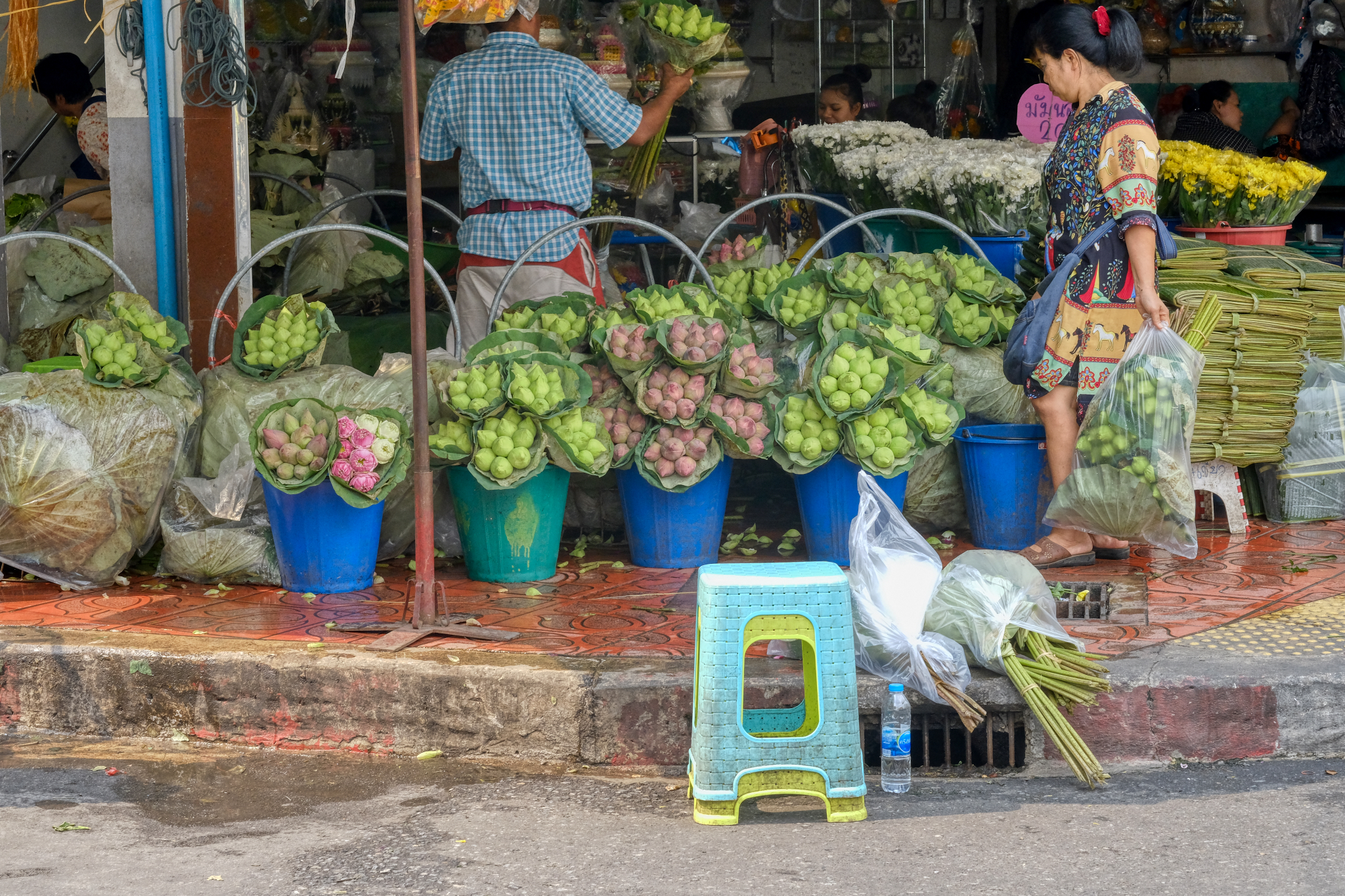 Literally millions of fresh lotus buds and flowers every day pass through this flower market.
Literally millions of fresh lotus buds and flowers every day pass through this flower market.
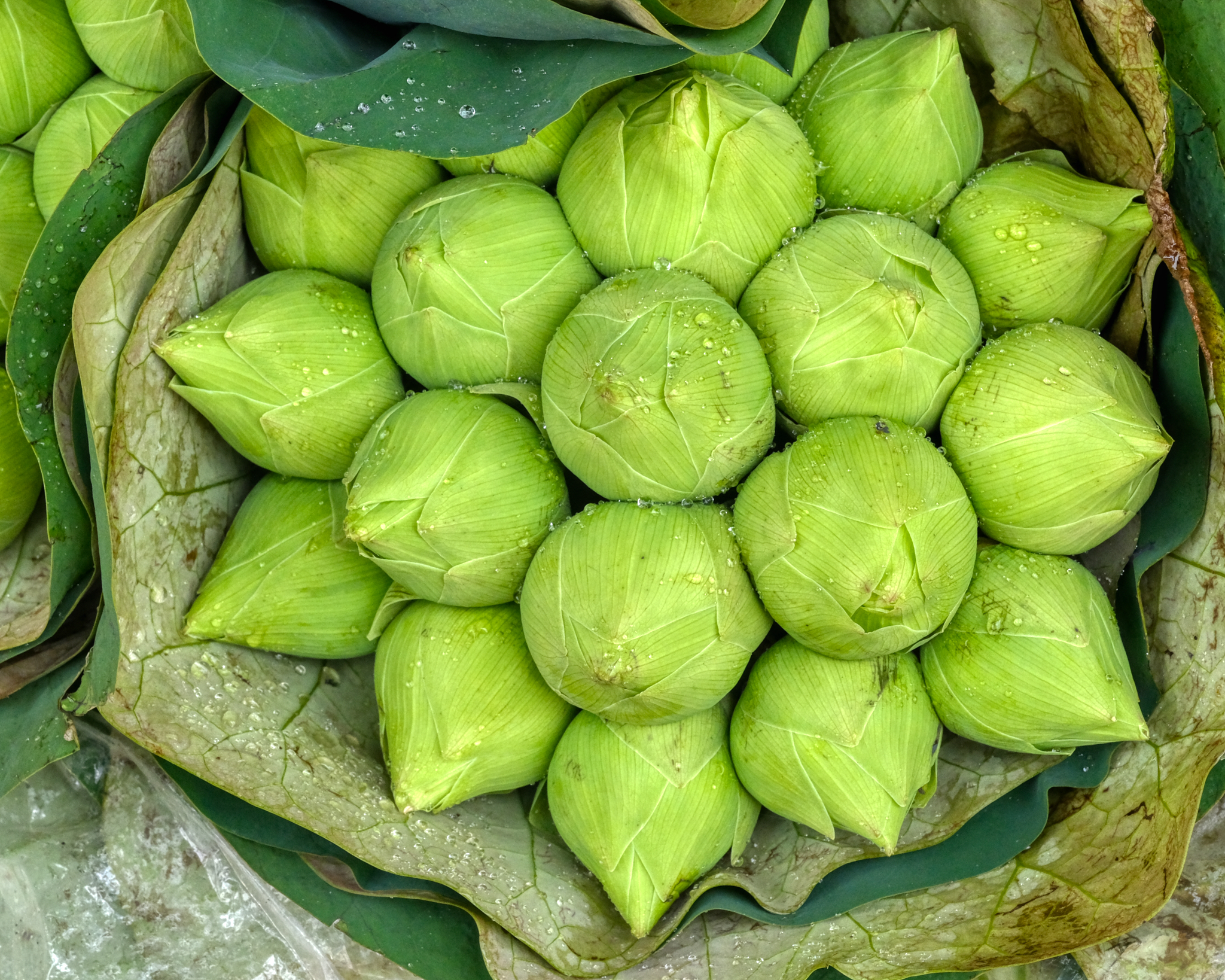 The lotus bud is a powerful symbol in Buddhist thought.
The lotus bud is a powerful symbol in Buddhist thought.
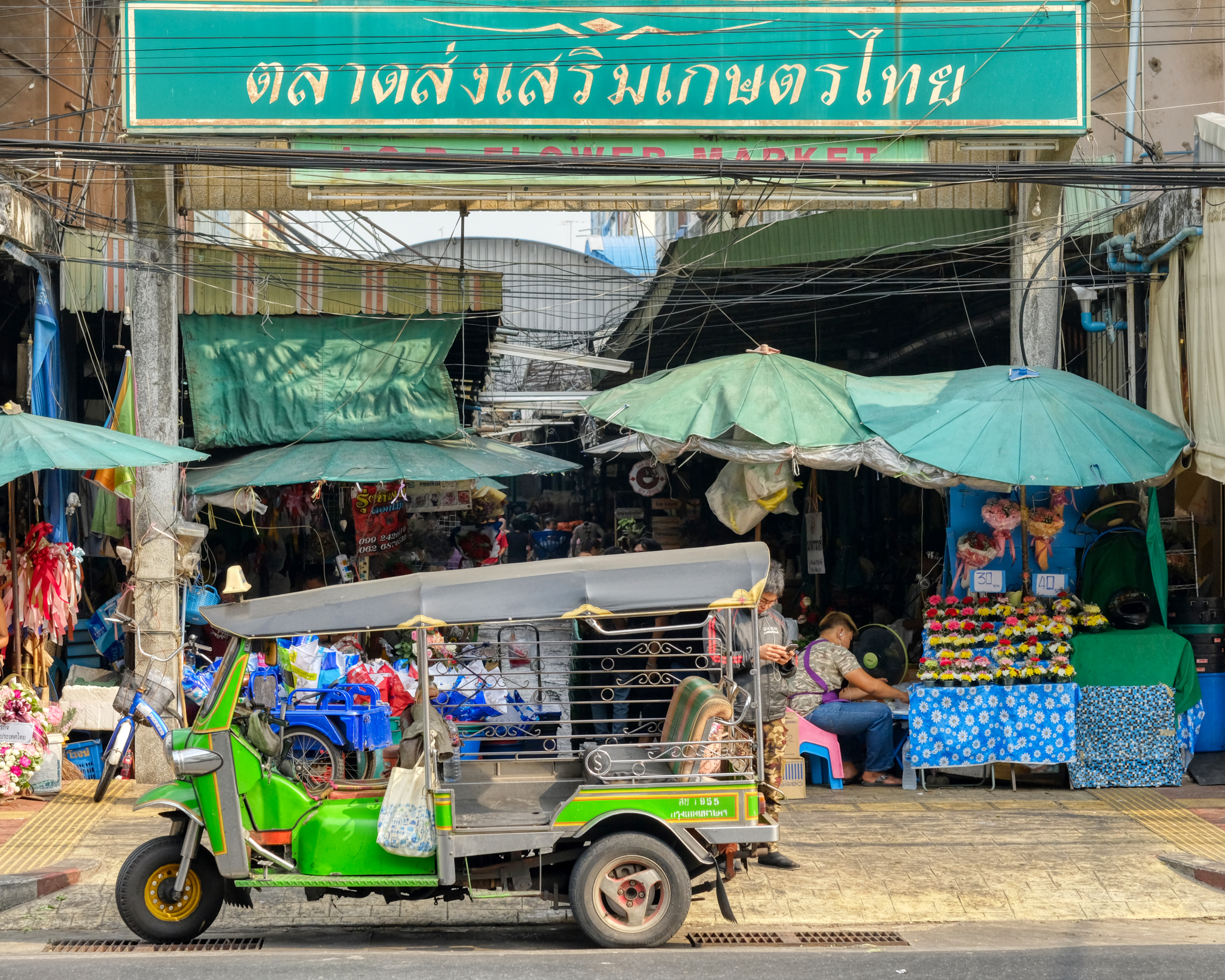 Pak Khlong Talat is a huge flower market with large indoor spaces and narrow alleys all full of flowers . . . it is a wholesale market, so many buyers come every morning and send their purchases back to their shops by tuk-tuk.
Pak Khlong Talat is a huge flower market with large indoor spaces and narrow alleys all full of flowers . . . it is a wholesale market, so many buyers come every morning and send their purchases back to their shops by tuk-tuk.
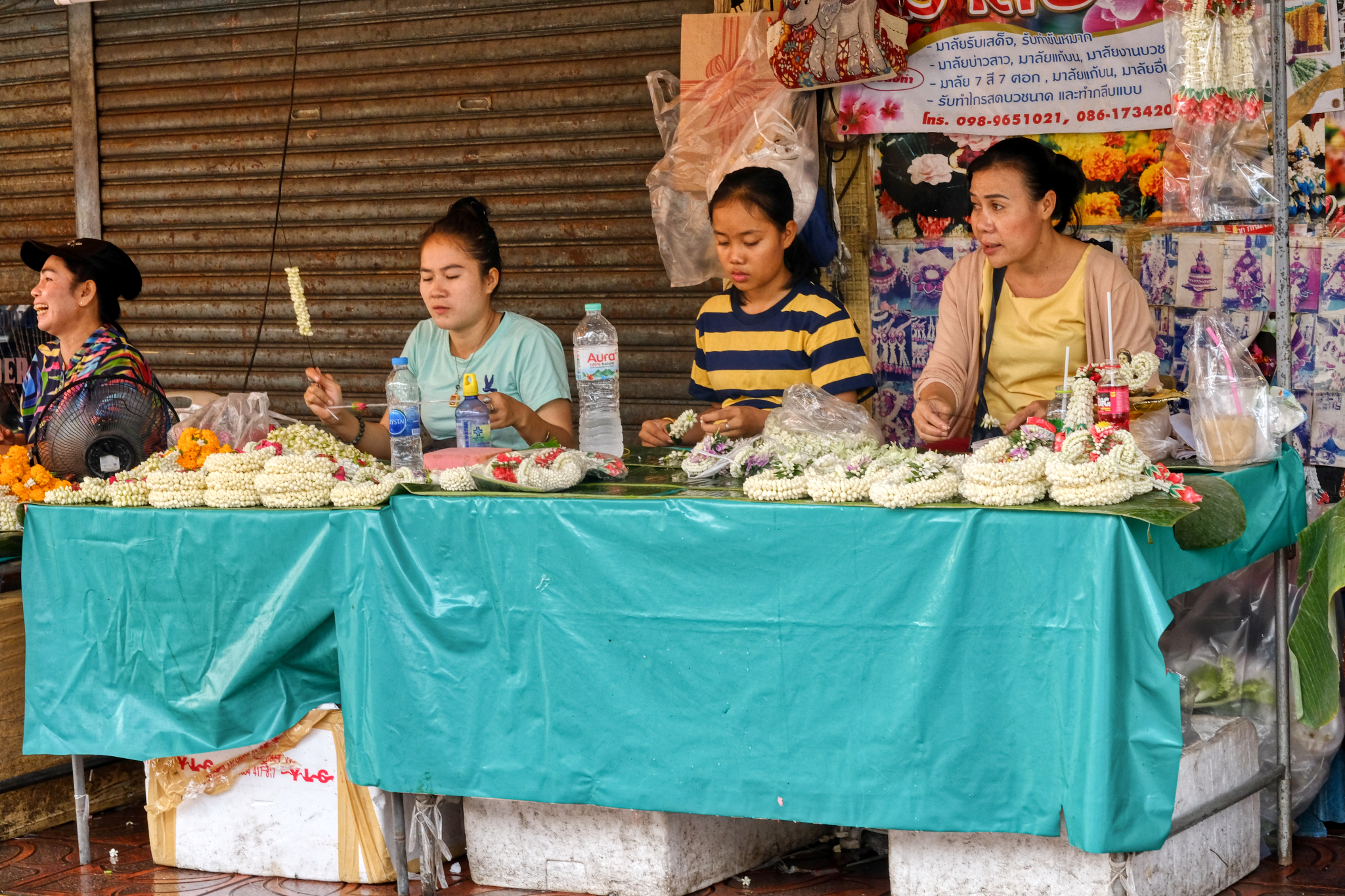 Some buyers come to buy 'raw' flowers for arrangement elsewhere, and some come to buy ready-made arrangements, like these aromatic jasmine bud garlands (used in Buddhist blessings). Imagine how wonderful these women smell after a days' work!!!
Some buyers come to buy 'raw' flowers for arrangement elsewhere, and some come to buy ready-made arrangements, like these aromatic jasmine bud garlands (used in Buddhist blessings). Imagine how wonderful these women smell after a days' work!!!
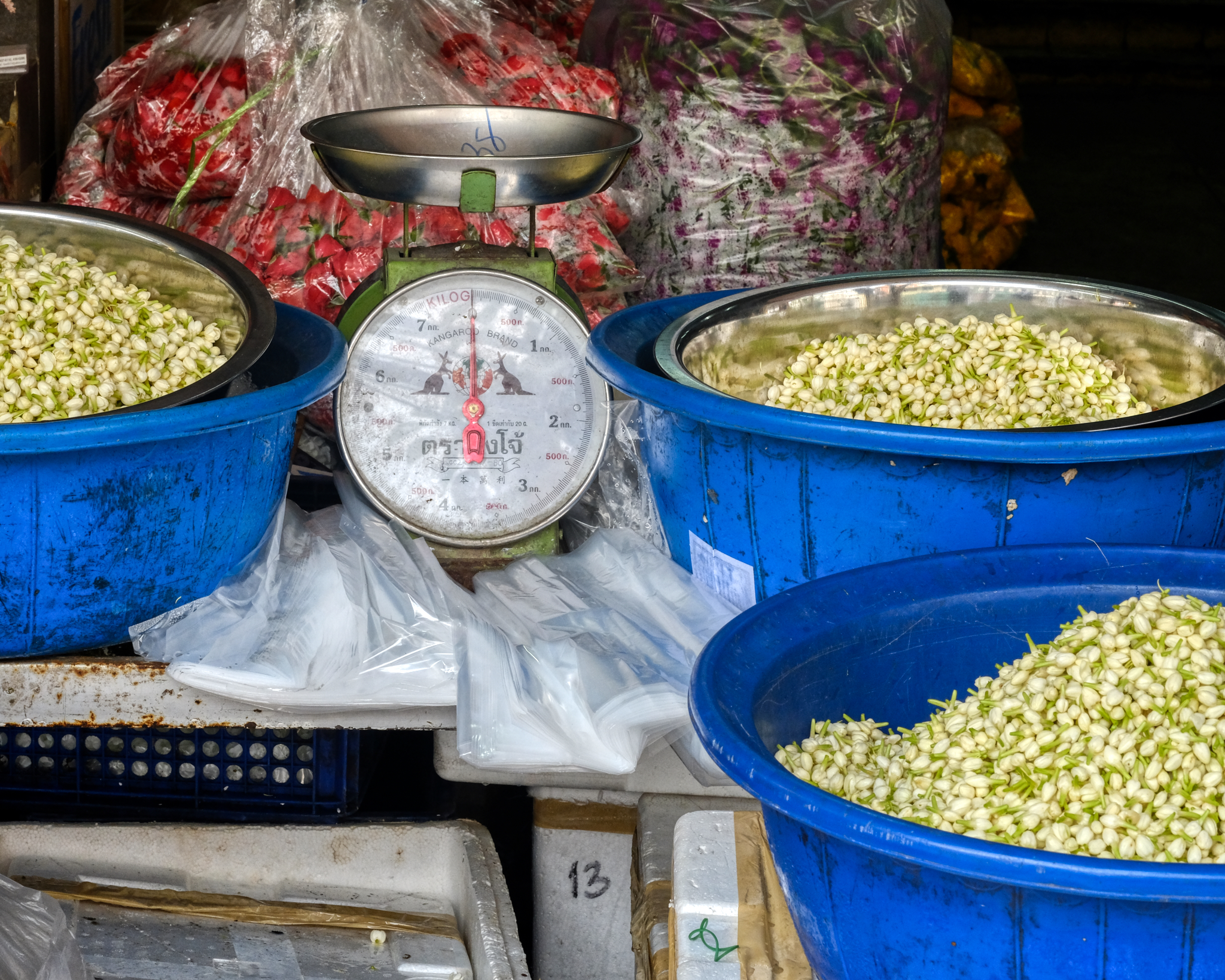 Fragrant jasmine buds being weighed.
Fragrant jasmine buds being weighed.
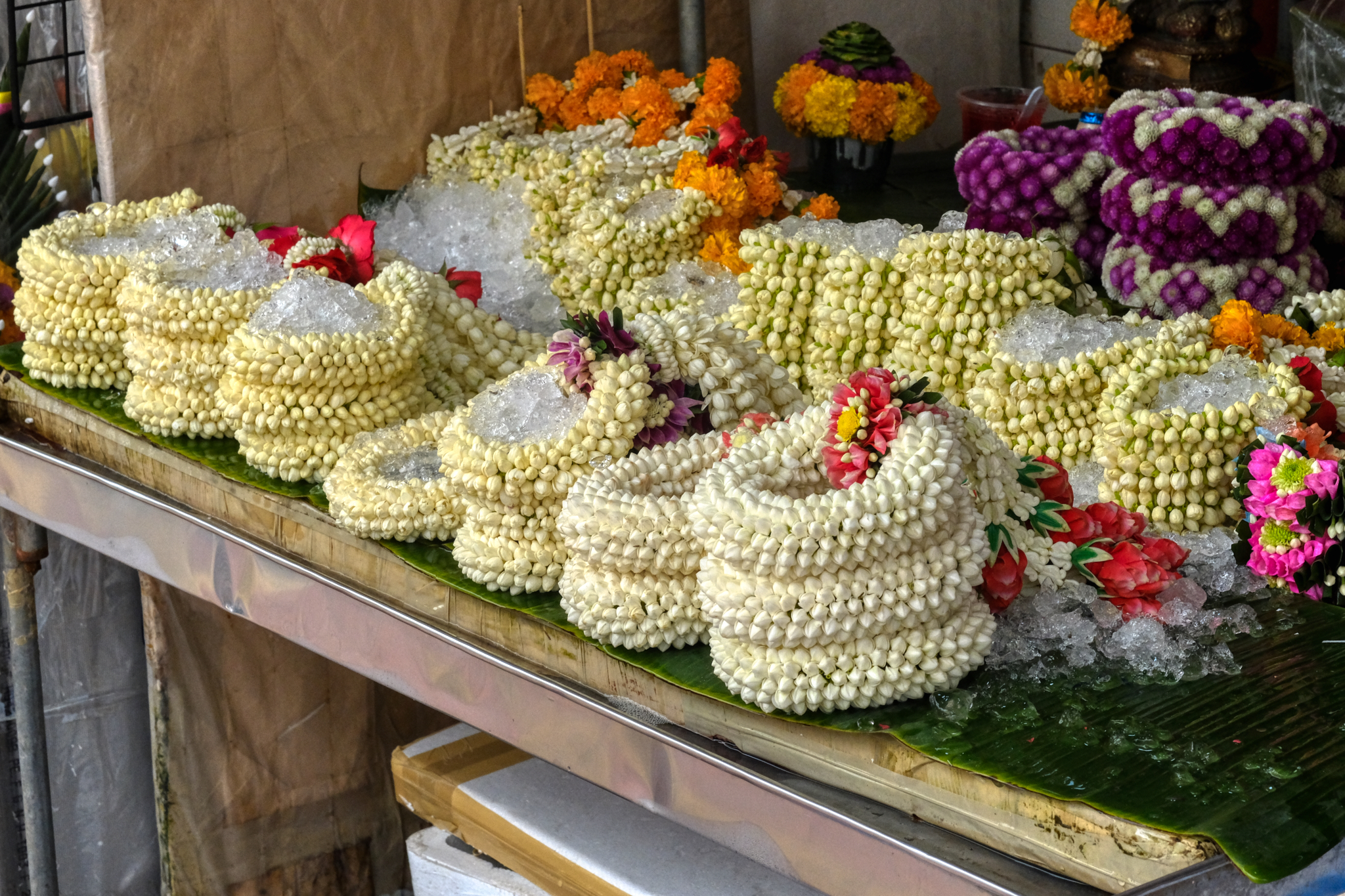 Beautifully made jasmine garlands on ice, ready for sales.
Beautifully made jasmine garlands on ice, ready for sales.
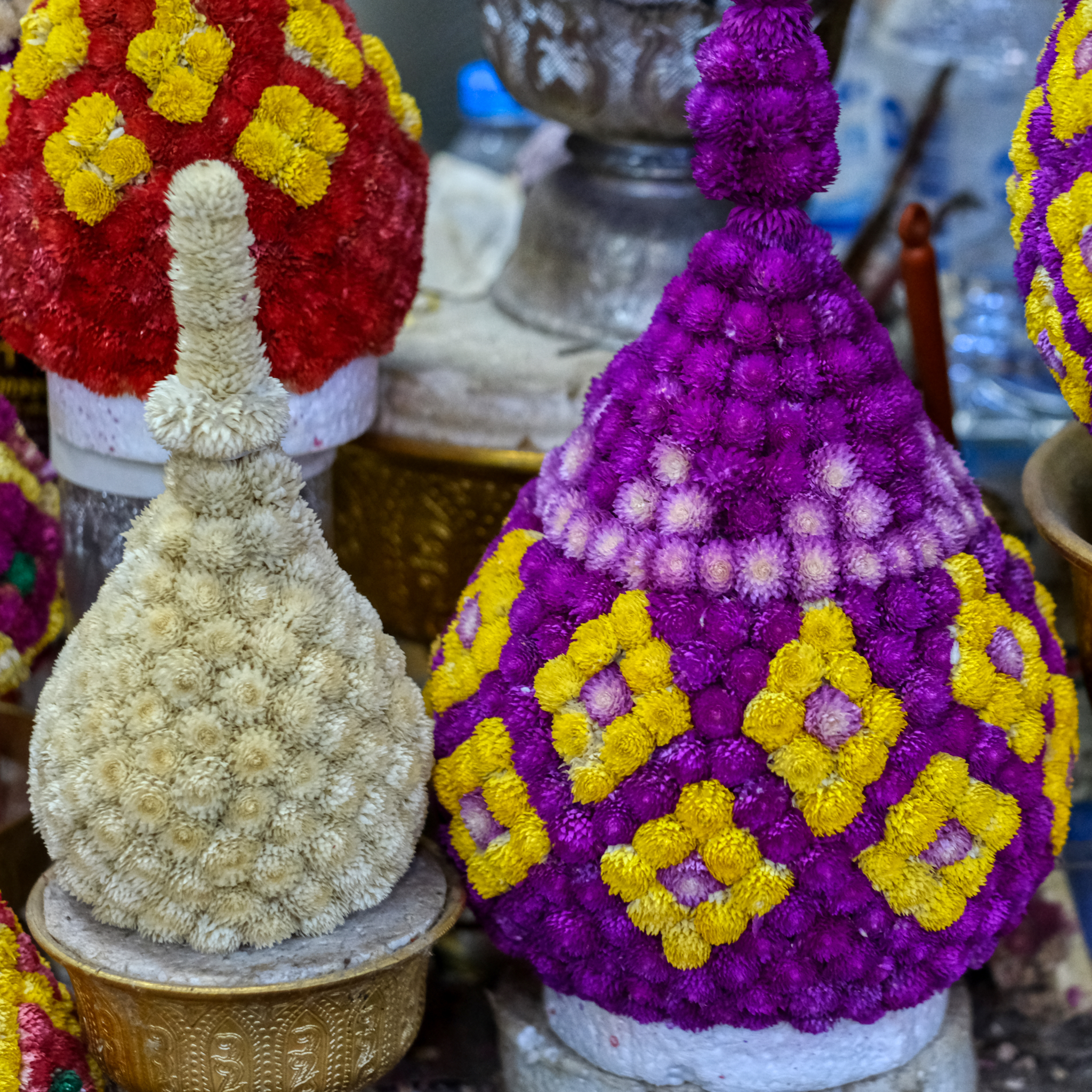 Many kinds and styles of Buddhist votive flower arrangements were being made everywhere.
Many kinds and styles of Buddhist votive flower arrangements were being made everywhere.
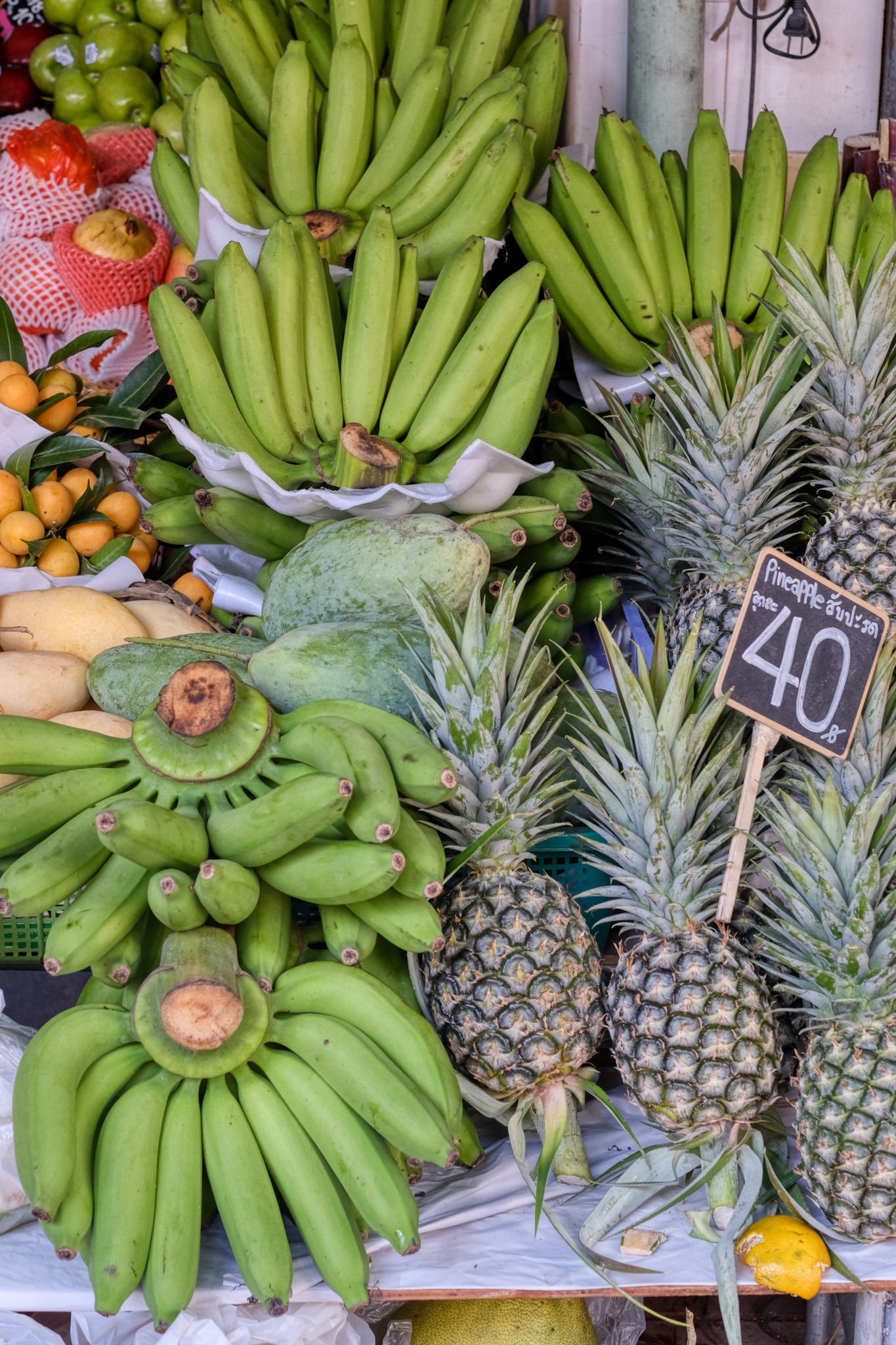 The market has more than flowers for sale . . . fruit for the hundreds, if not thousands of flower market workers.
The market has more than flowers for sale . . . fruit for the hundreds, if not thousands of flower market workers.
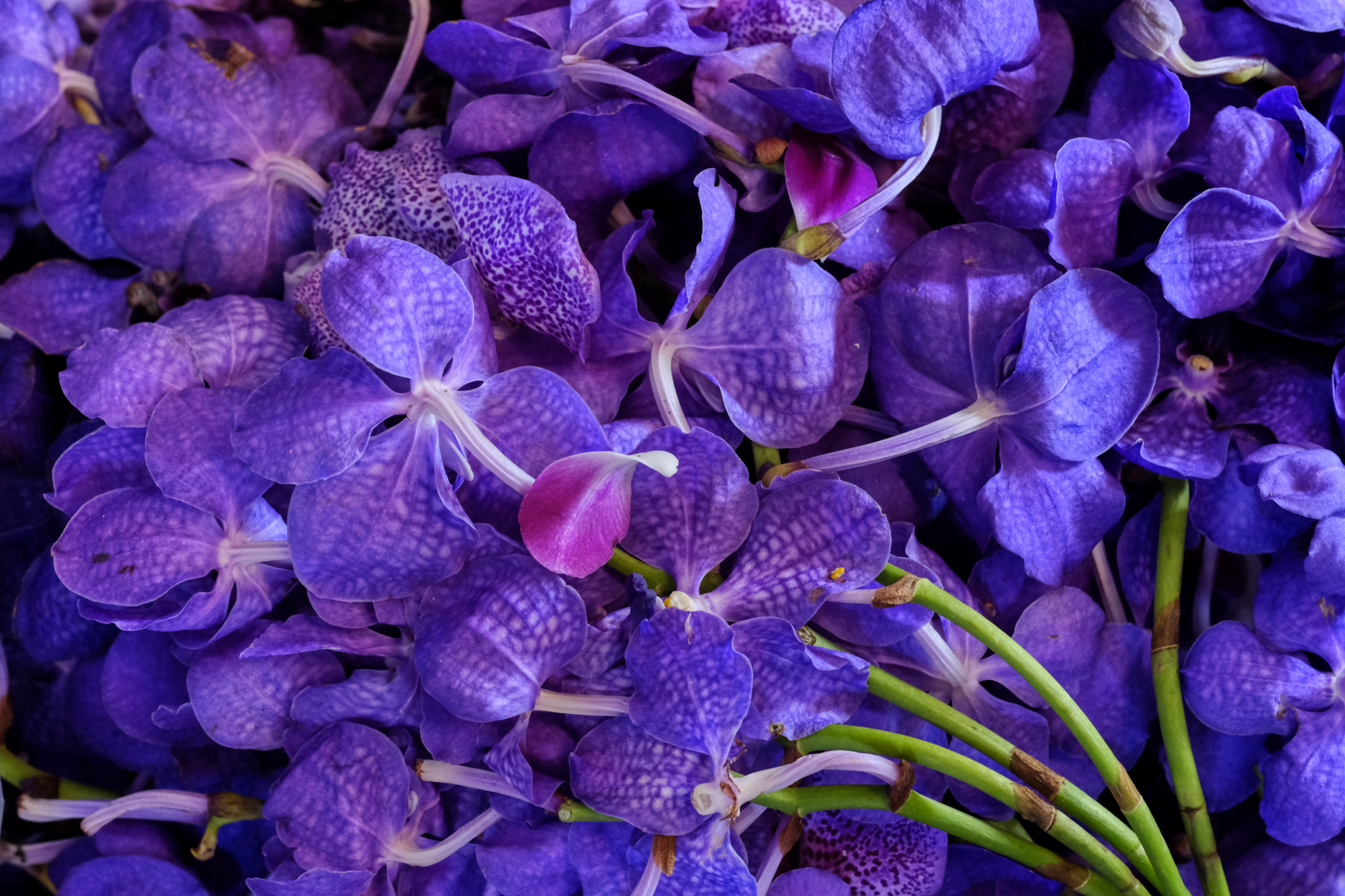 But, of course, it is the flowers that amaze a visitor to the flower market. Orchids everywhere!
But, of course, it is the flowers that amaze a visitor to the flower market. Orchids everywhere!
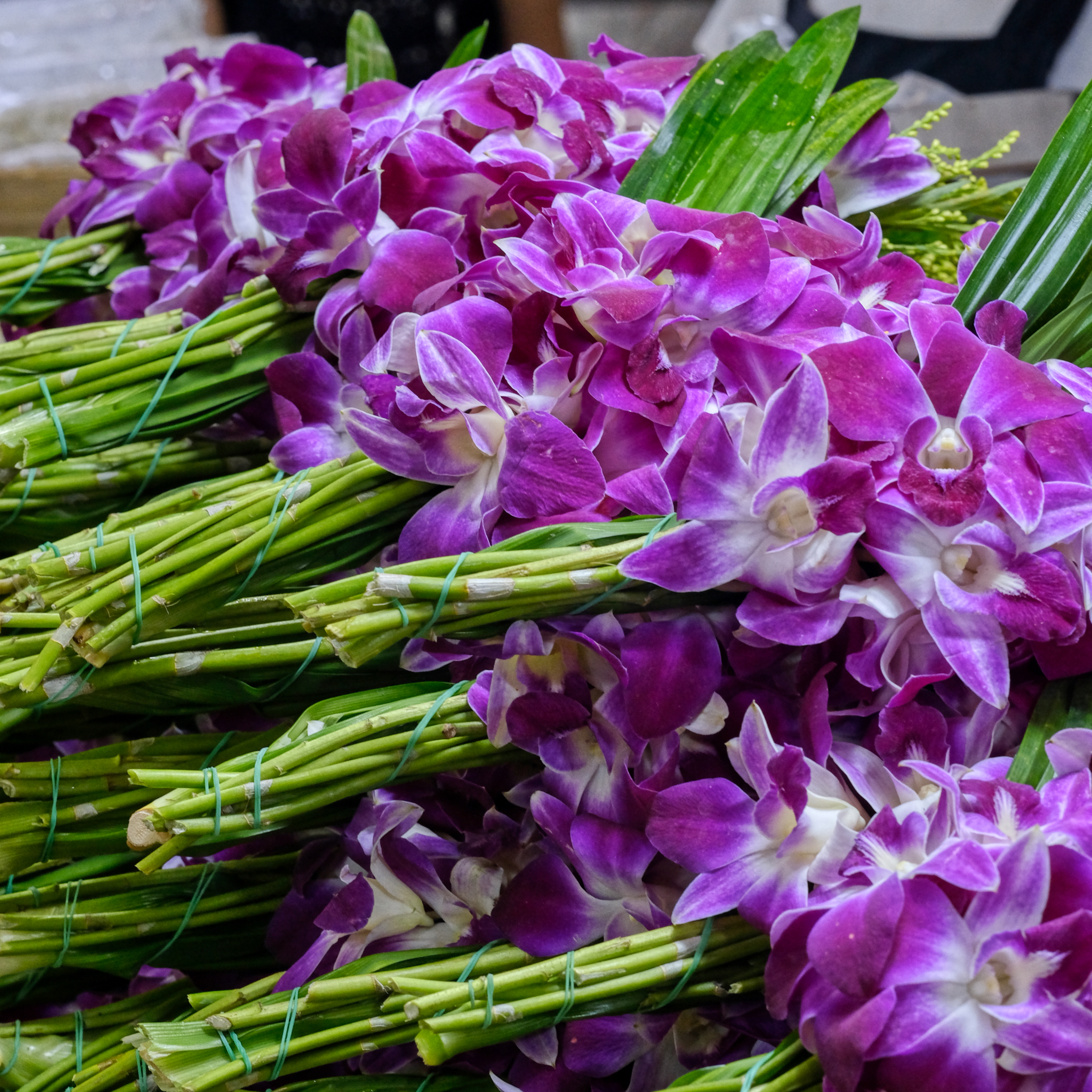 Thailand's hot and humid climate means that orchids grow outside all year long. Just nail one on a tree and it grows!
Thailand's hot and humid climate means that orchids grow outside all year long. Just nail one on a tree and it grows!
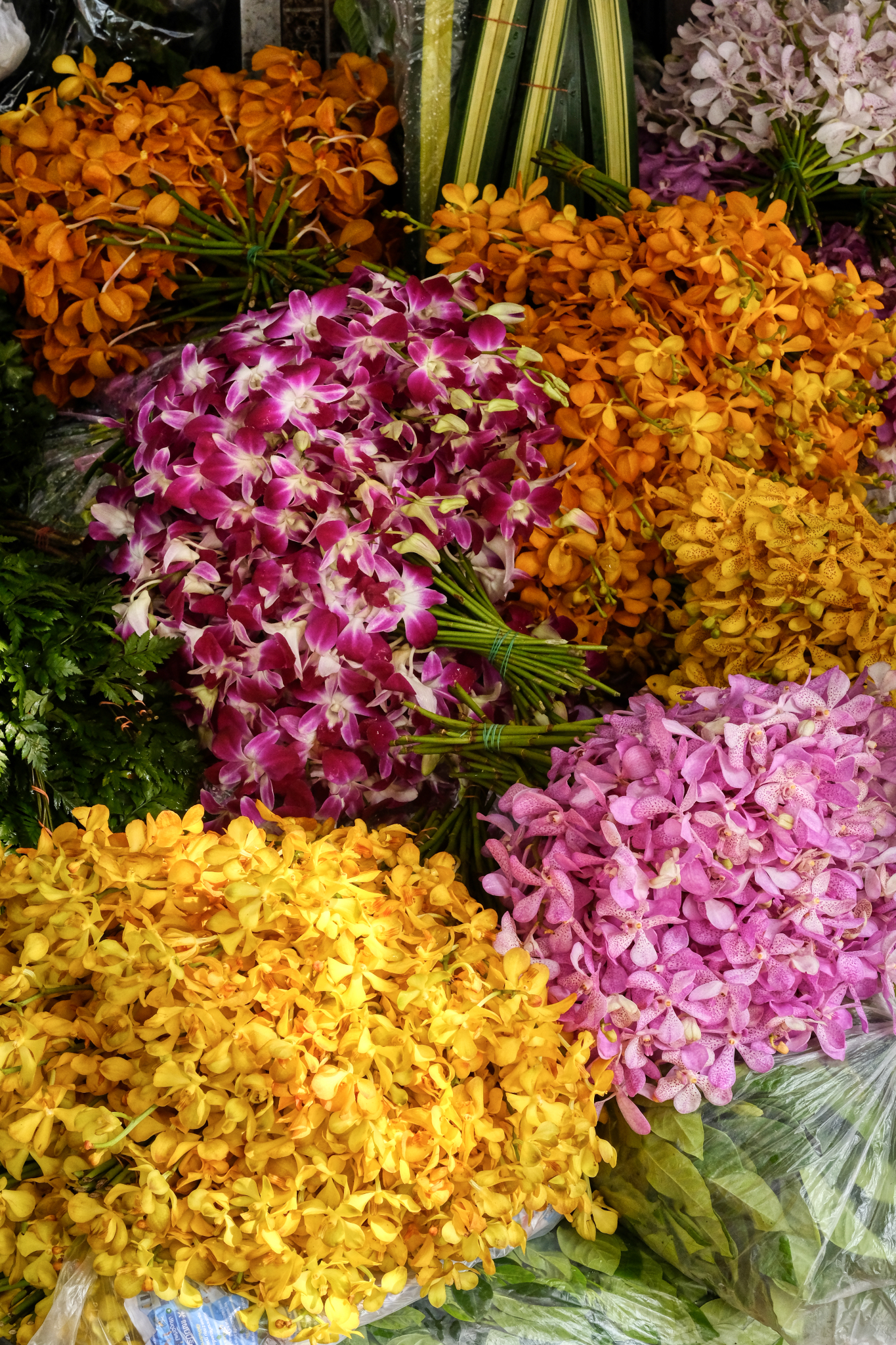 Orchids come in every color of the rainbow . . .
Orchids come in every color of the rainbow . . .
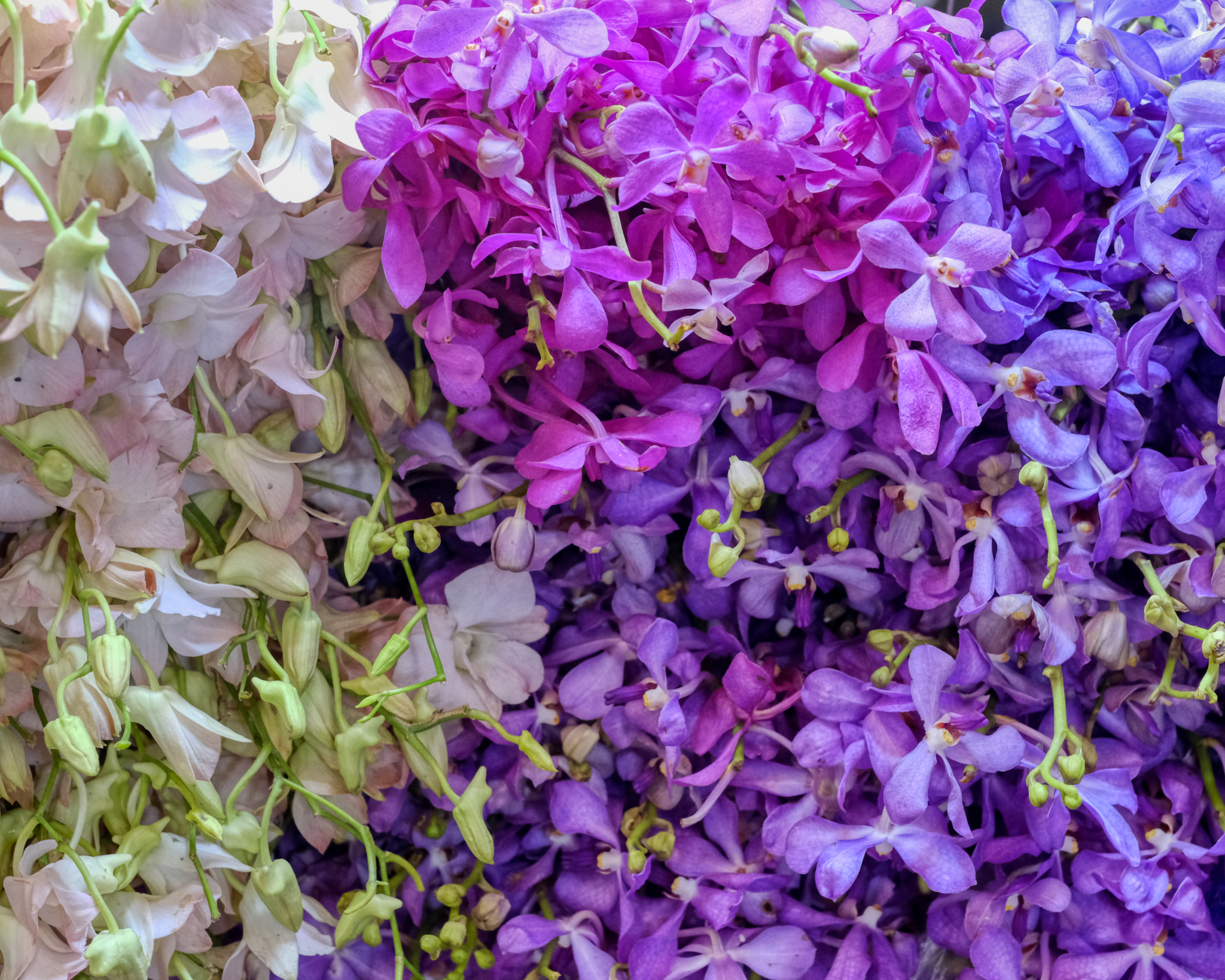 Exquisite orchids.
Exquisite orchids.
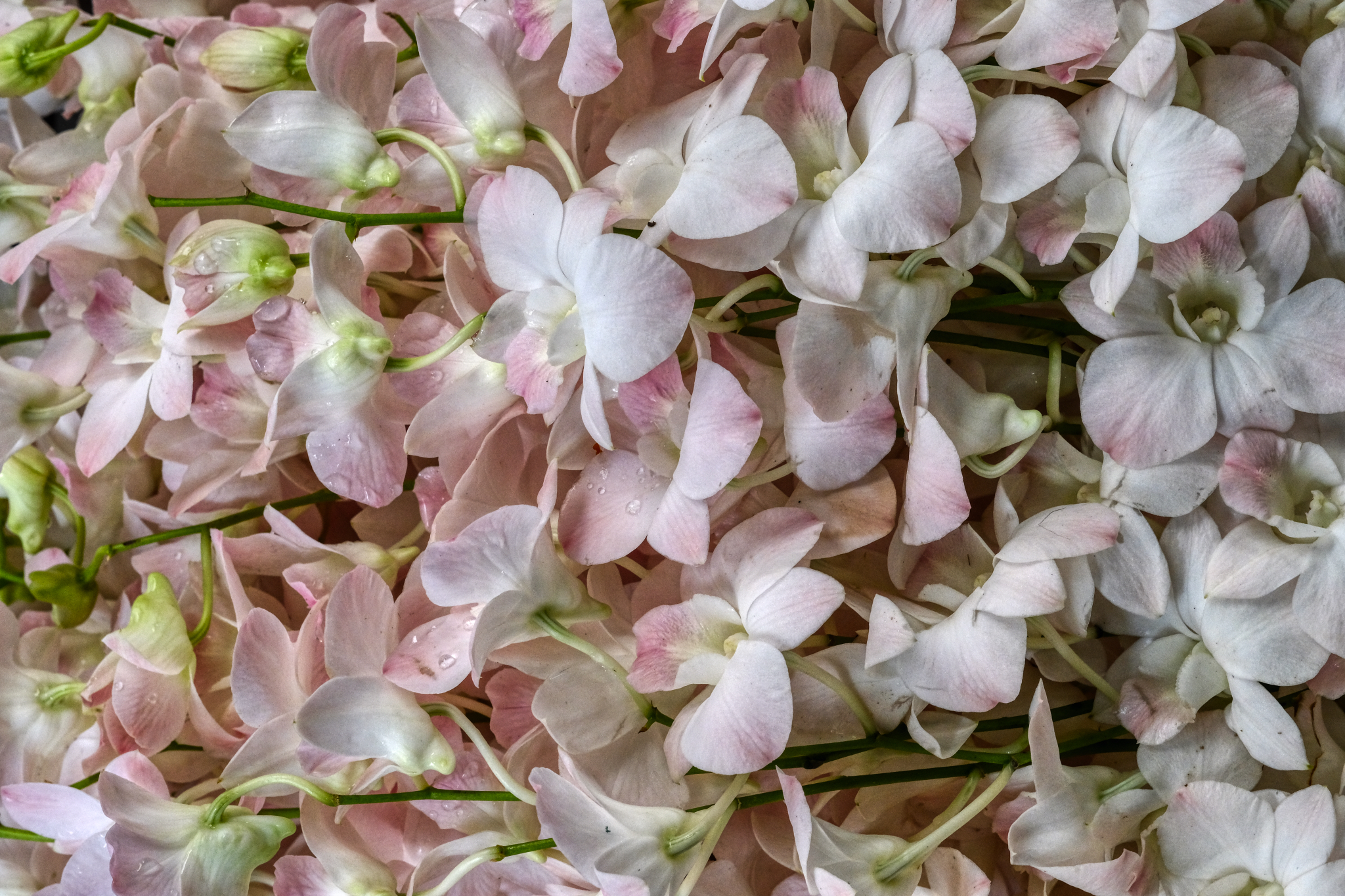 . . . including white orchids.
. . . including white orchids.
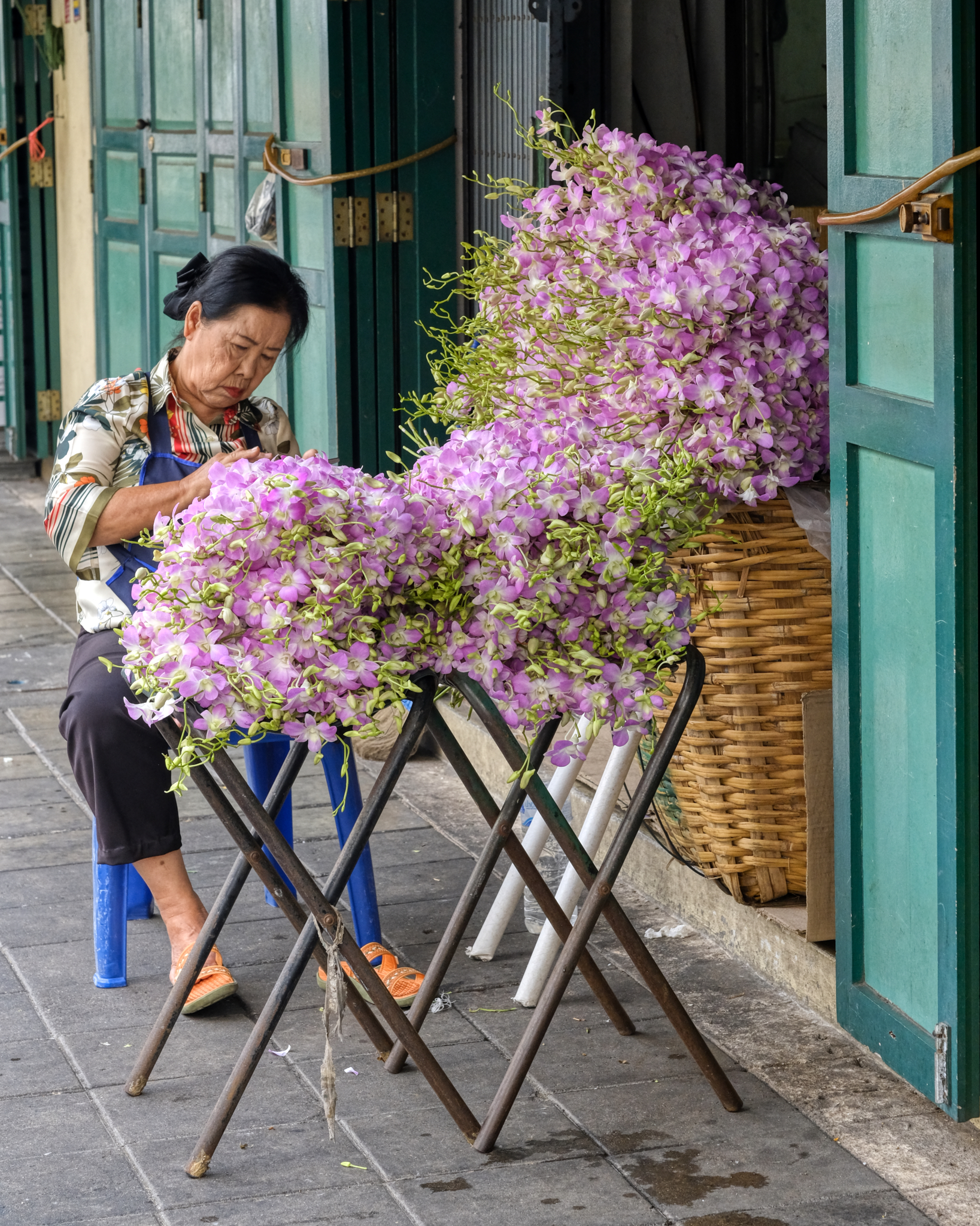 An orchid hawker tending her product.
An orchid hawker tending her product.
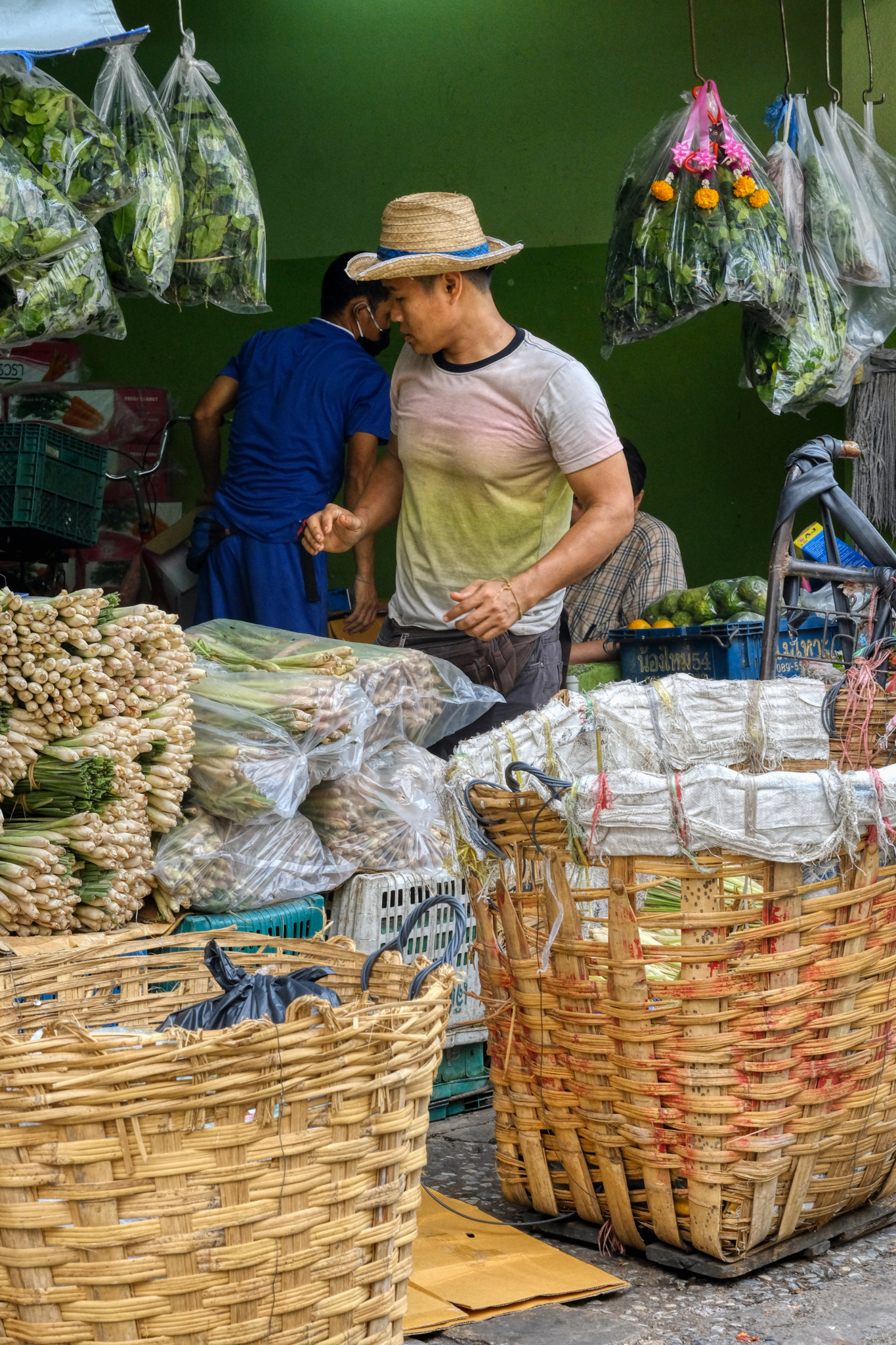 The flower market is also a good place to get people photos.
The flower market is also a good place to get people photos.
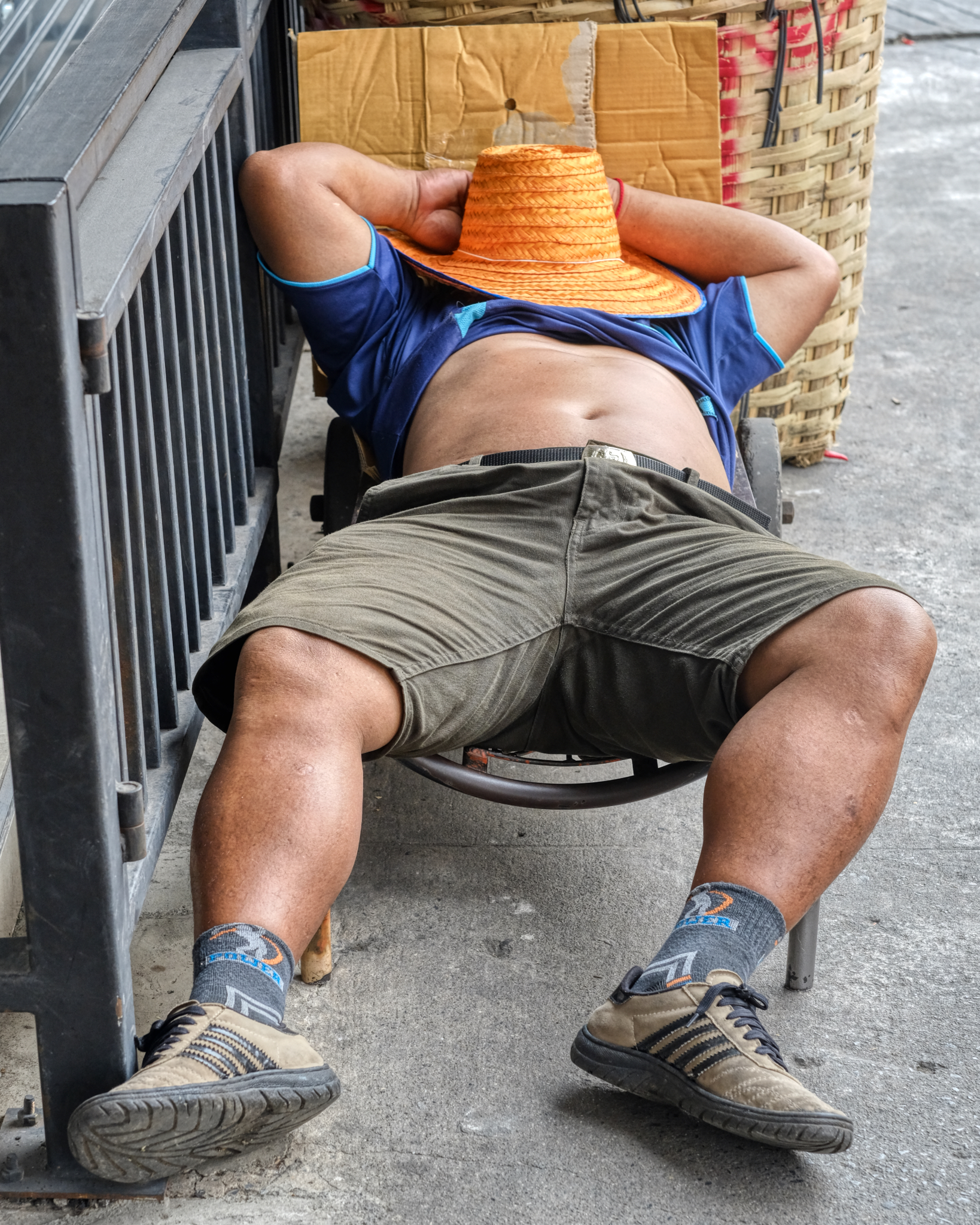 The market opens at 3:00am when the growers begin to bring in their flowers . . . and buyers begin to purchase and ship. This draymen looks tired!
The market opens at 3:00am when the growers begin to bring in their flowers . . . and buyers begin to purchase and ship. This draymen looks tired!
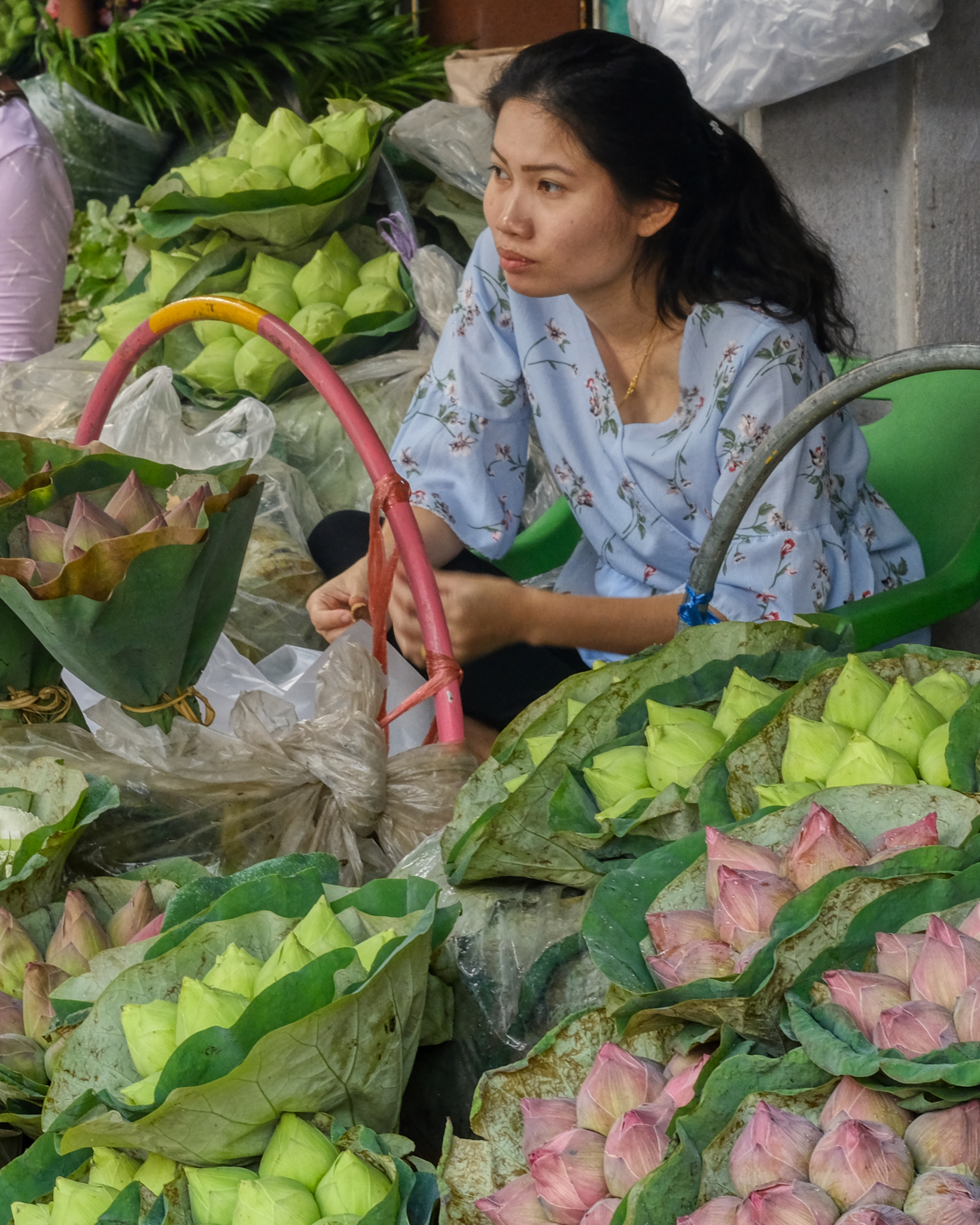 Hoping for a big sale.
Hoping for a big sale.
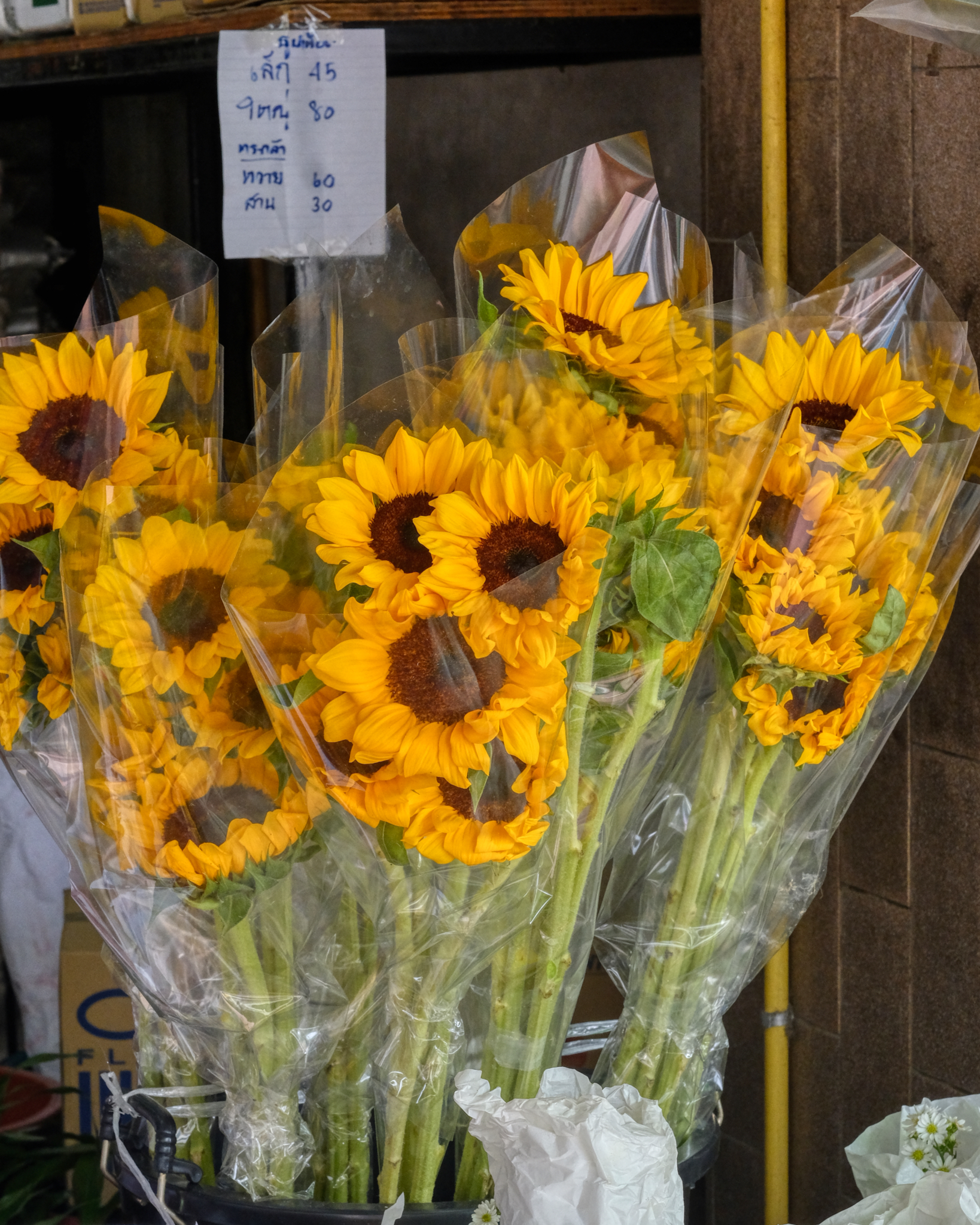 The kinds and varieties of flowers available for sale was staggering! These sunflowers are from Thailand.
The kinds and varieties of flowers available for sale was staggering! These sunflowers are from Thailand.
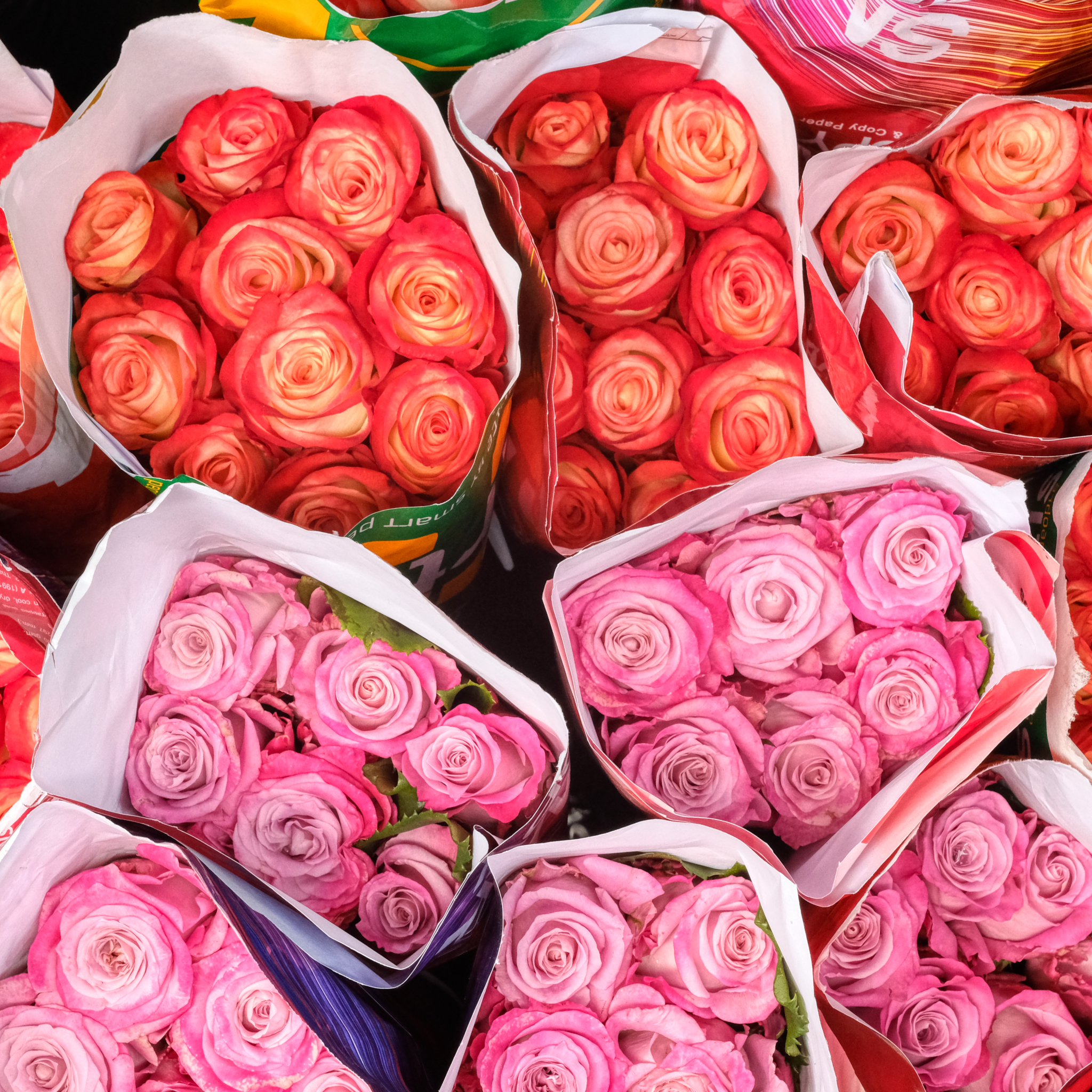 Roses, roses, roses . . .
Roses, roses, roses . . .
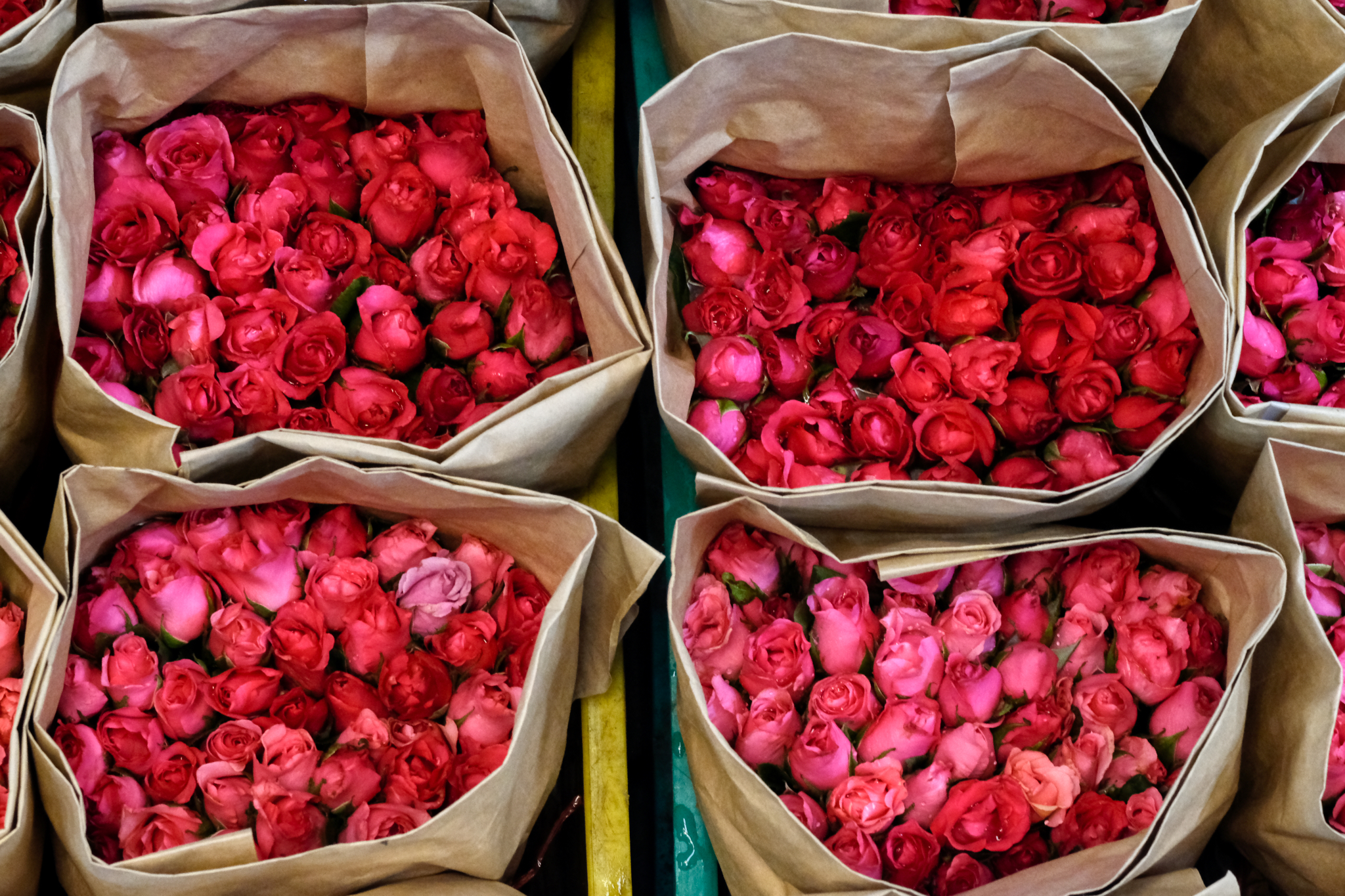 . . . roses, roses, roses . . .
. . . roses, roses, roses . . .
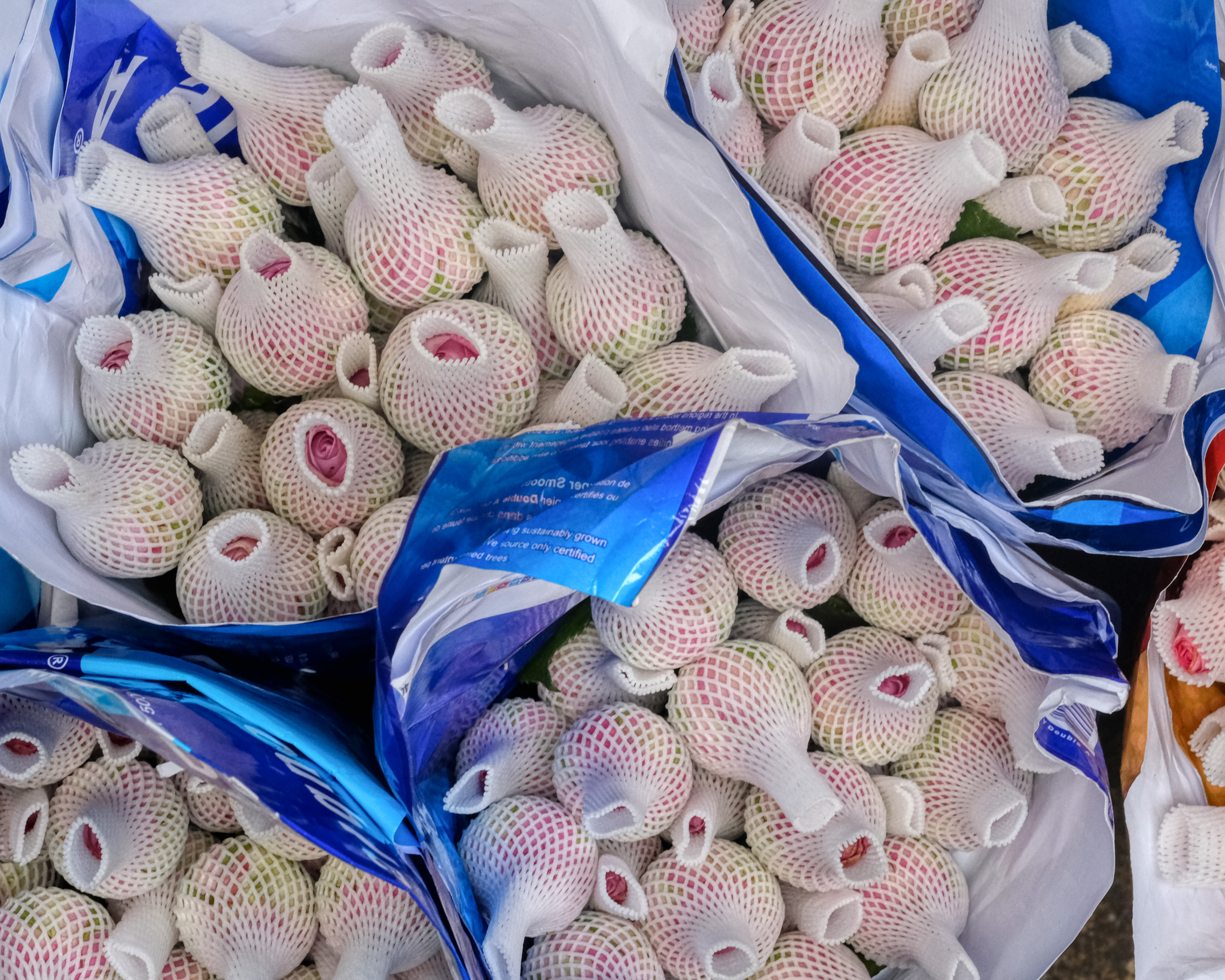 . . . and more roses. These wrapped roses were imported from Europe.
. . . and more roses. These wrapped roses were imported from Europe.
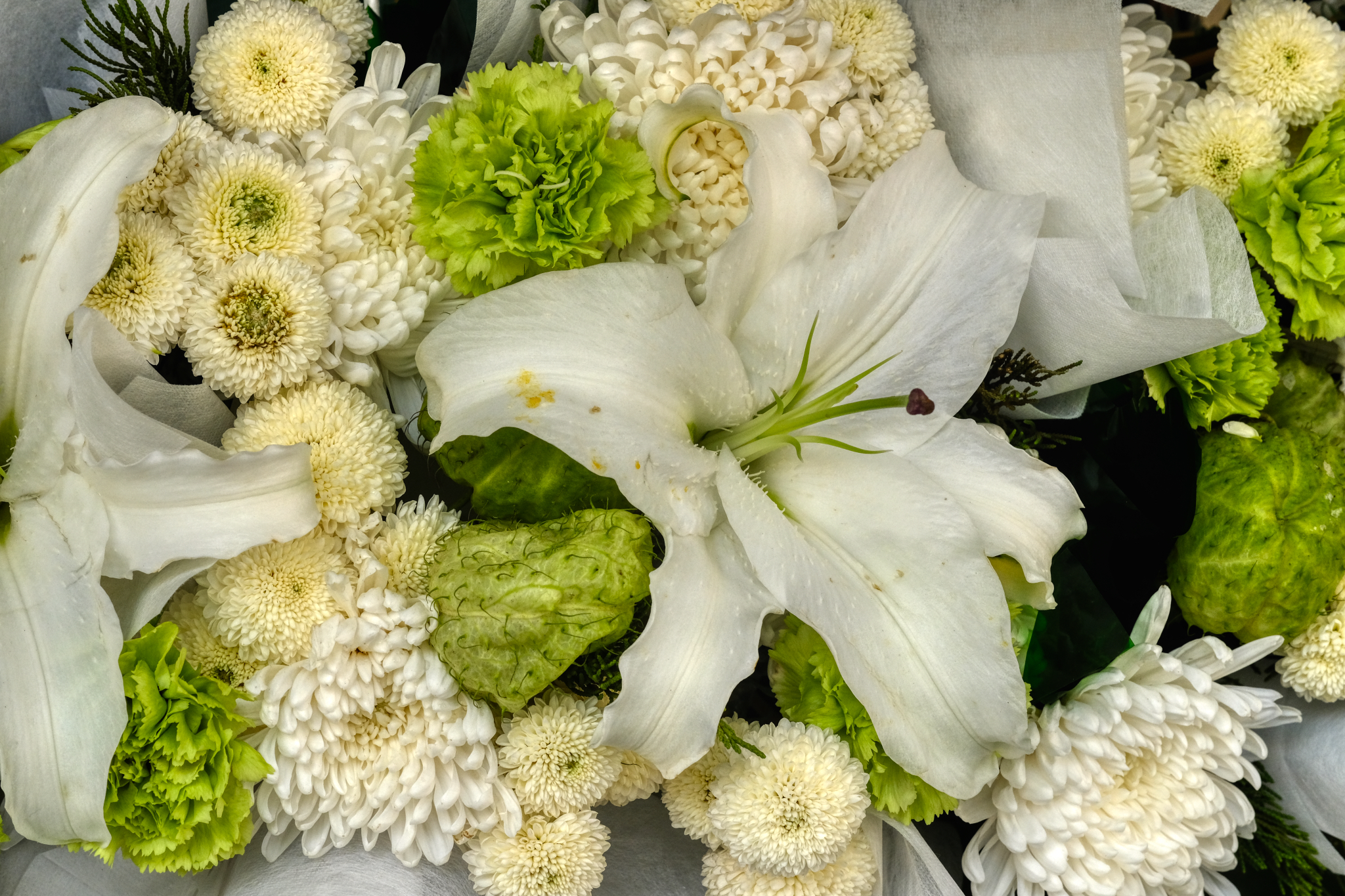 Some flowers were sold as already made arrangements, like this white lily ensemble.
Some flowers were sold as already made arrangements, like this white lily ensemble.
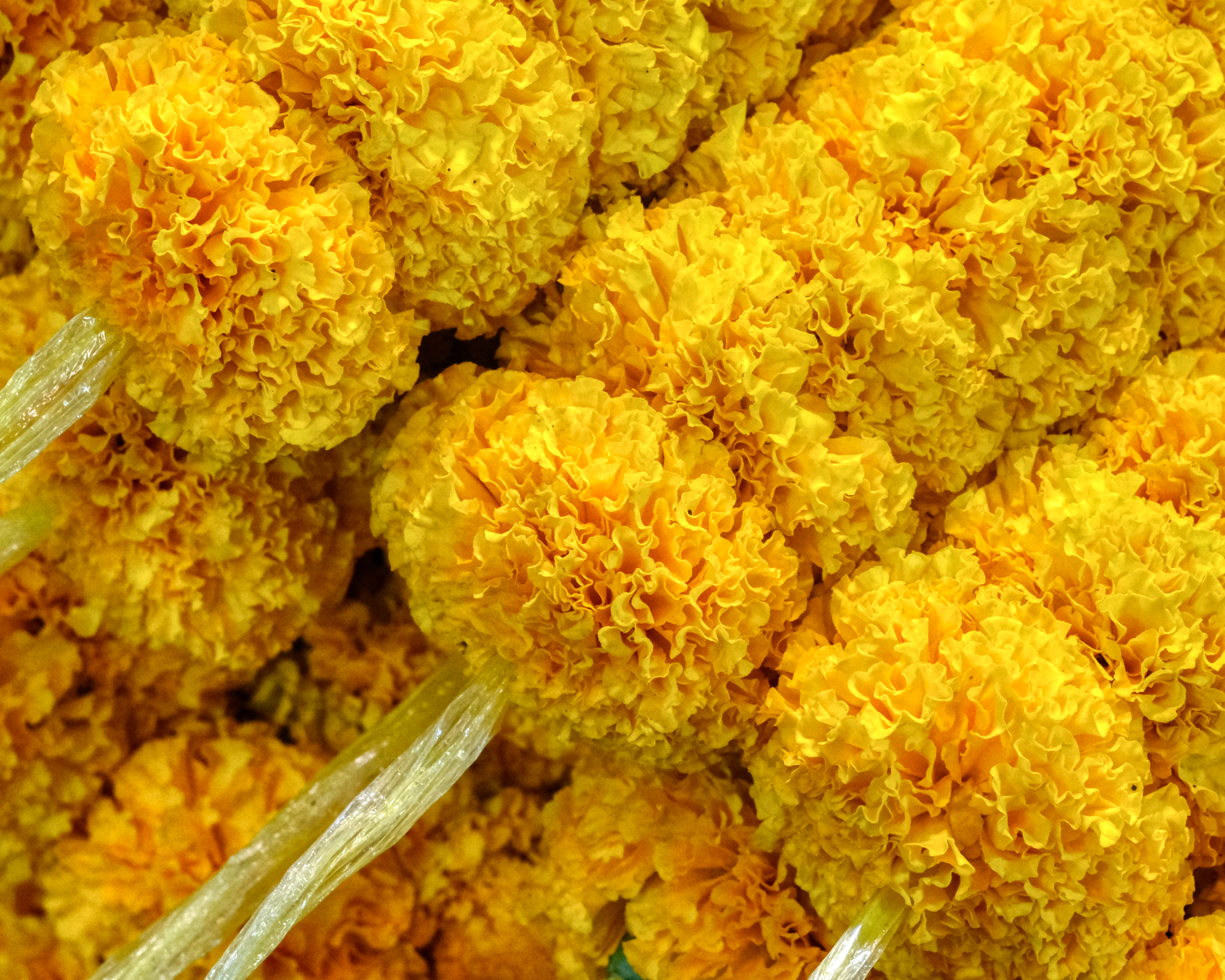 Marigold flowers sold on nylon strings.
Marigold flowers sold on nylon strings.
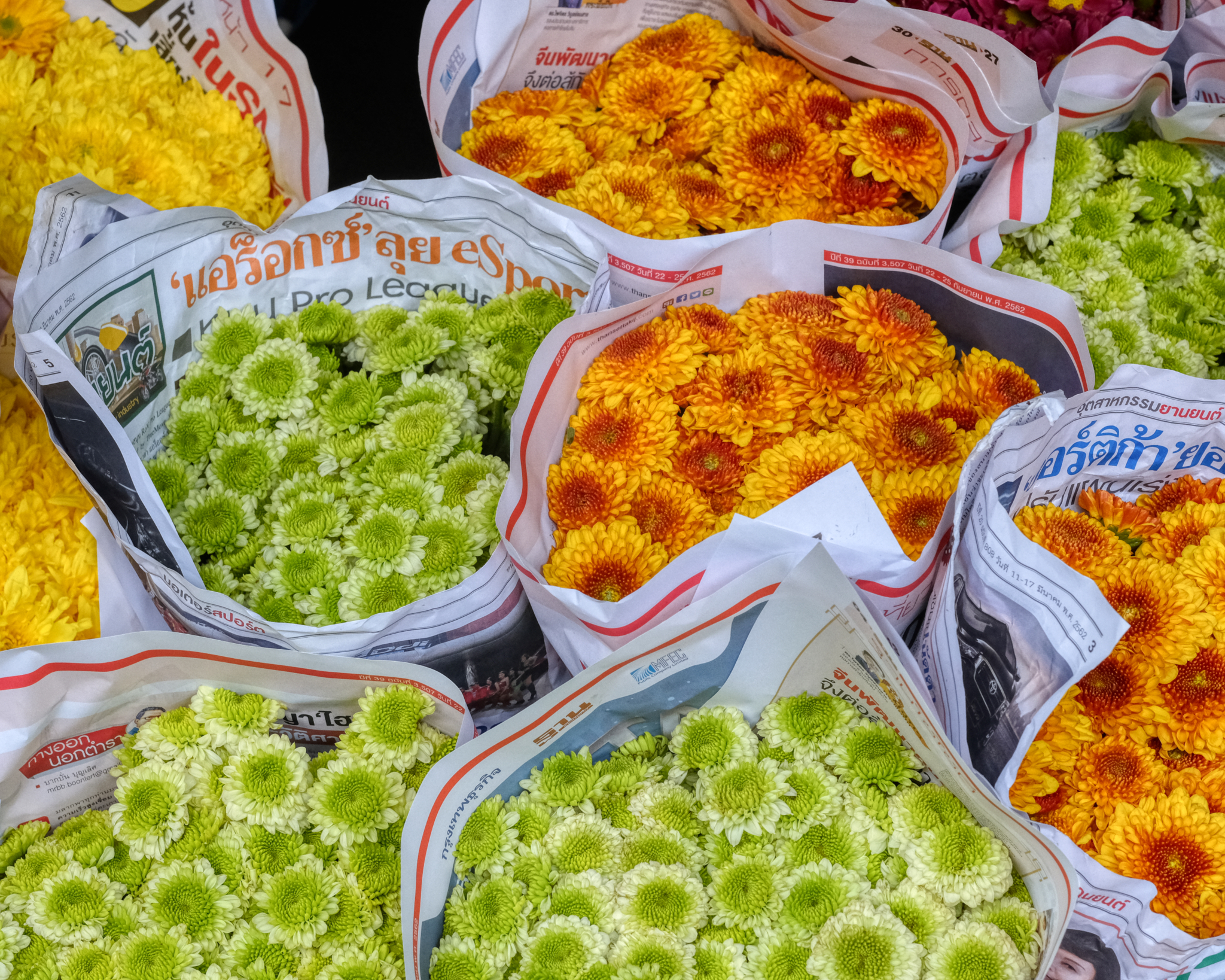 Such a beautiful and colorful array . . .
Such a beautiful and colorful array . . .
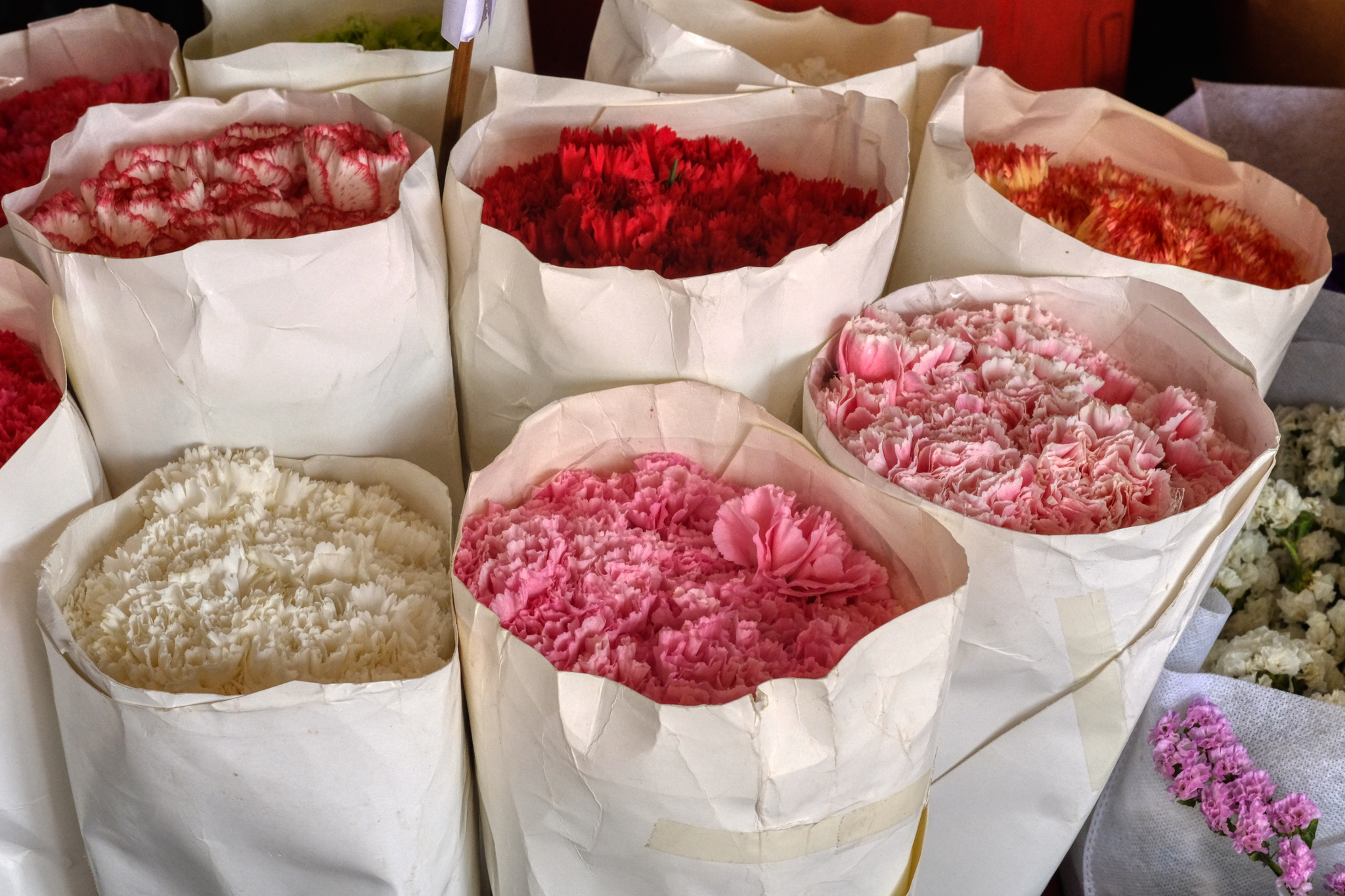 Although the light in the market was not ideal for flower photography, every once in a while there was magic light!
Although the light in the market was not ideal for flower photography, every once in a while there was magic light!
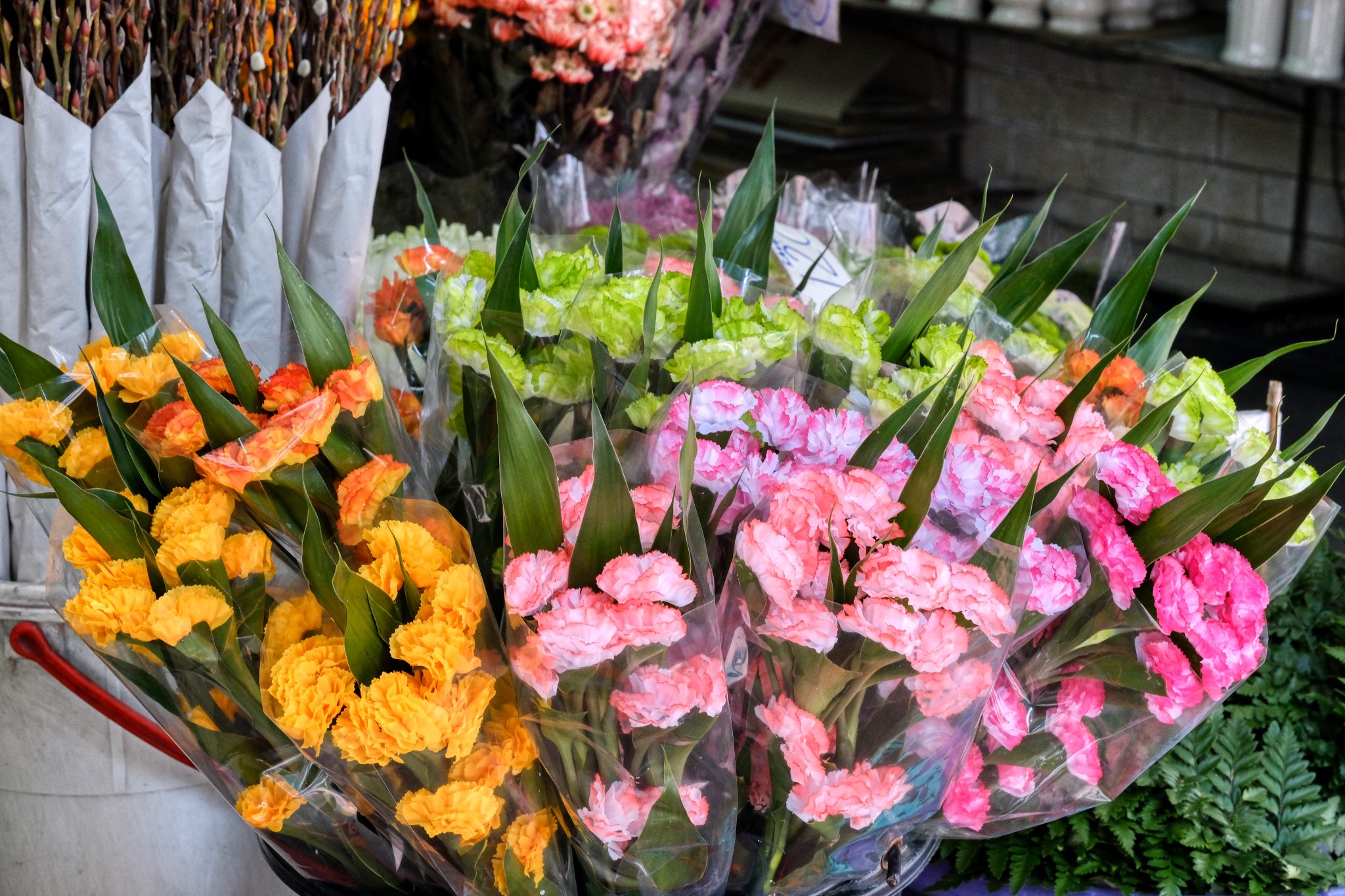 Pretty little things!
Pretty little things!
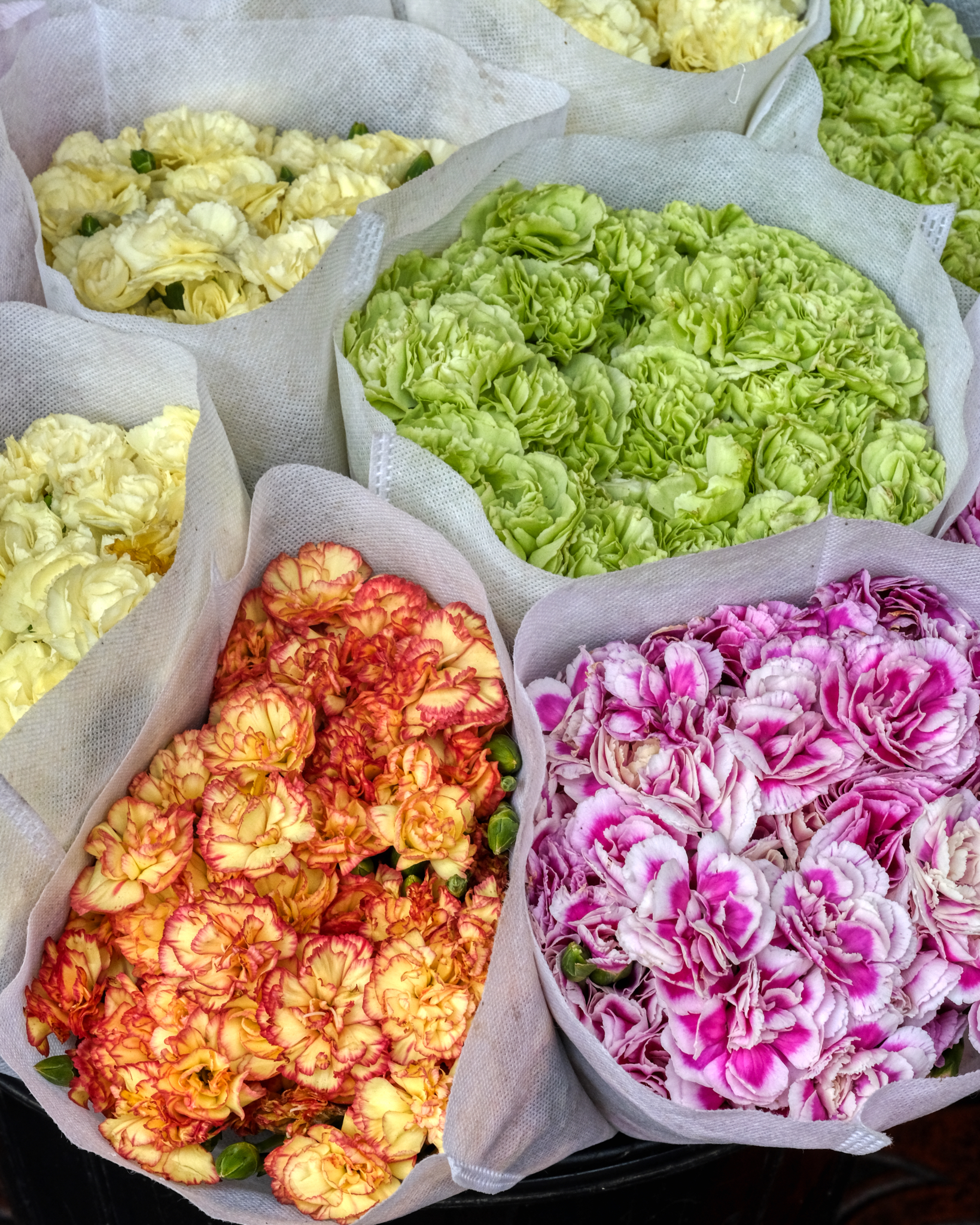 Bunches and bunches of flowers.
Bunches and bunches of flowers.
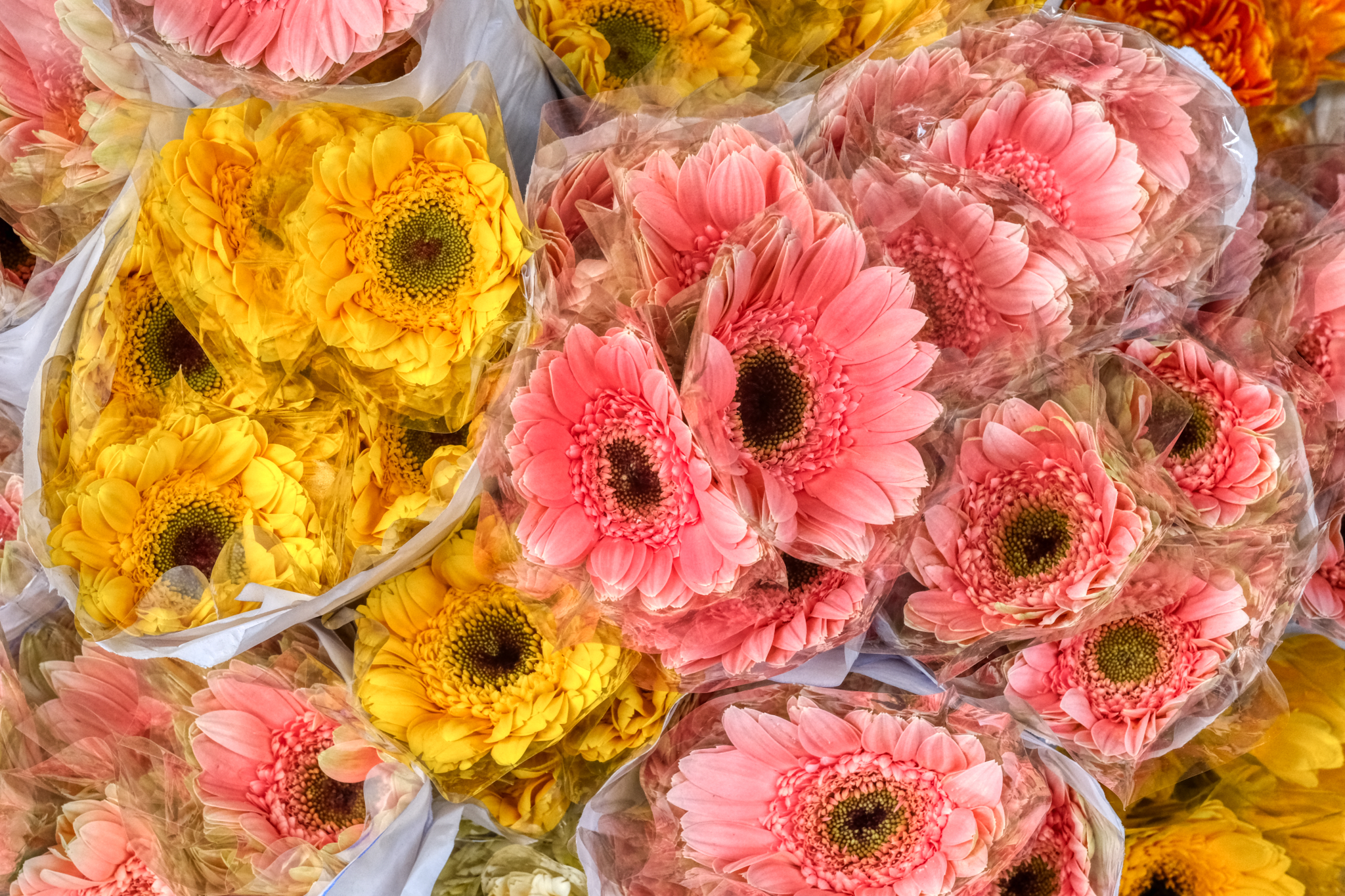 And bundles and bundles of beautiful flowers.
And bundles and bundles of beautiful flowers.
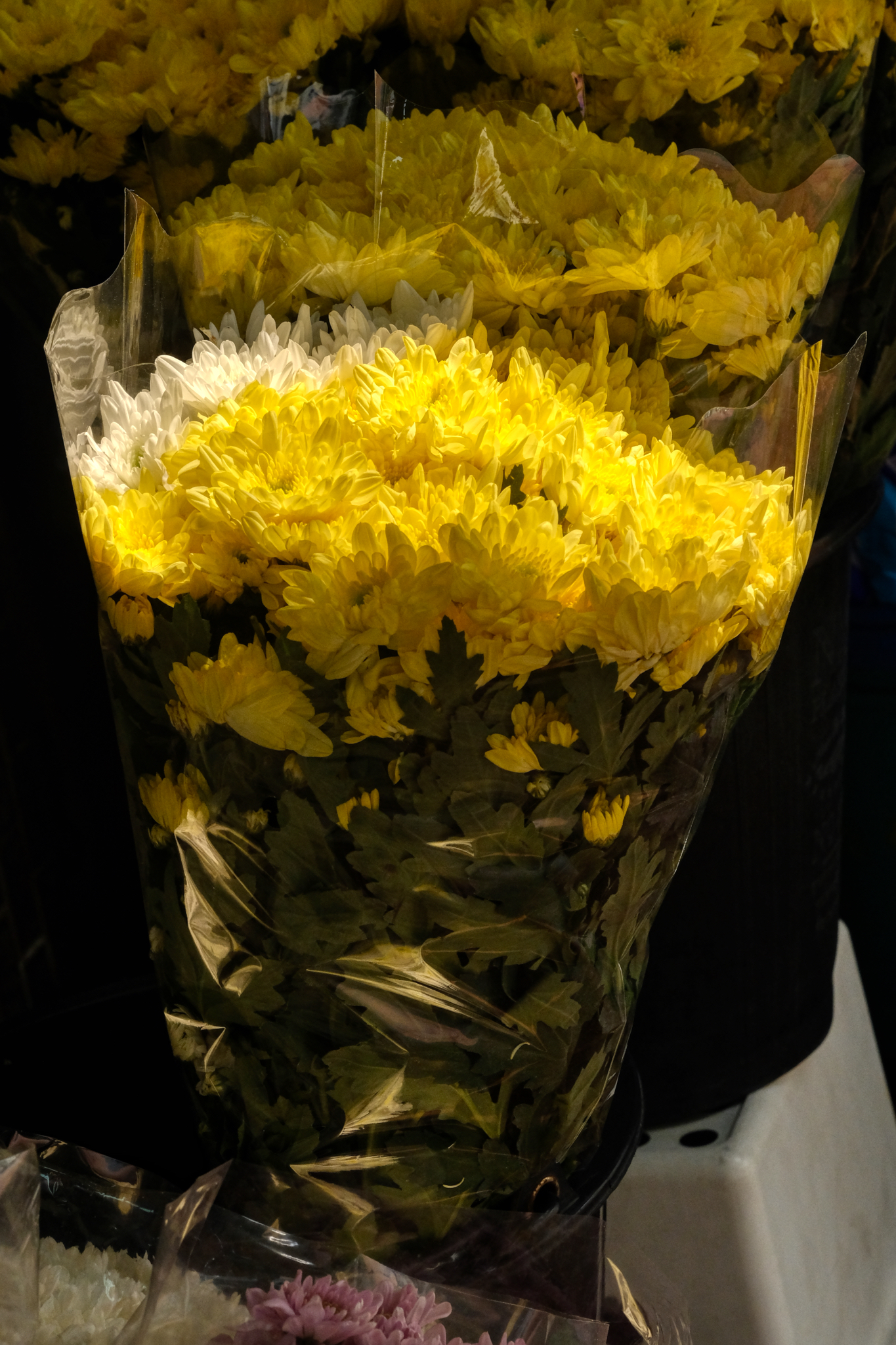 And this extraordinary bouquet!
And this extraordinary bouquet!
 Individually hand-wrapped chrysanthemums.
Individually hand-wrapped chrysanthemums.
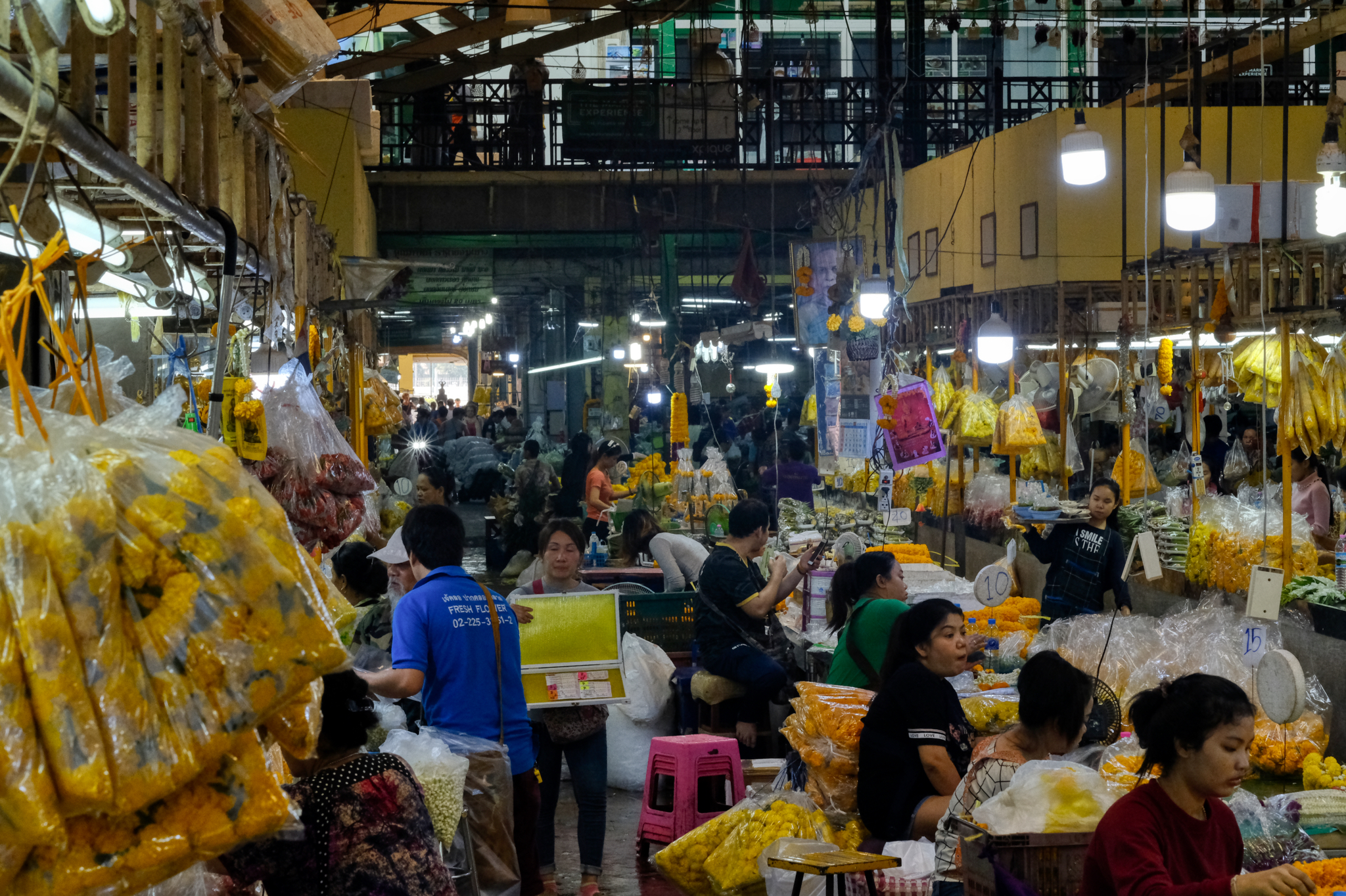 Inside the flower market. This was at around 9:30am and lots of the stalls were already closed . . . sold out.
Inside the flower market. This was at around 9:30am and lots of the stalls were already closed . . . sold out.
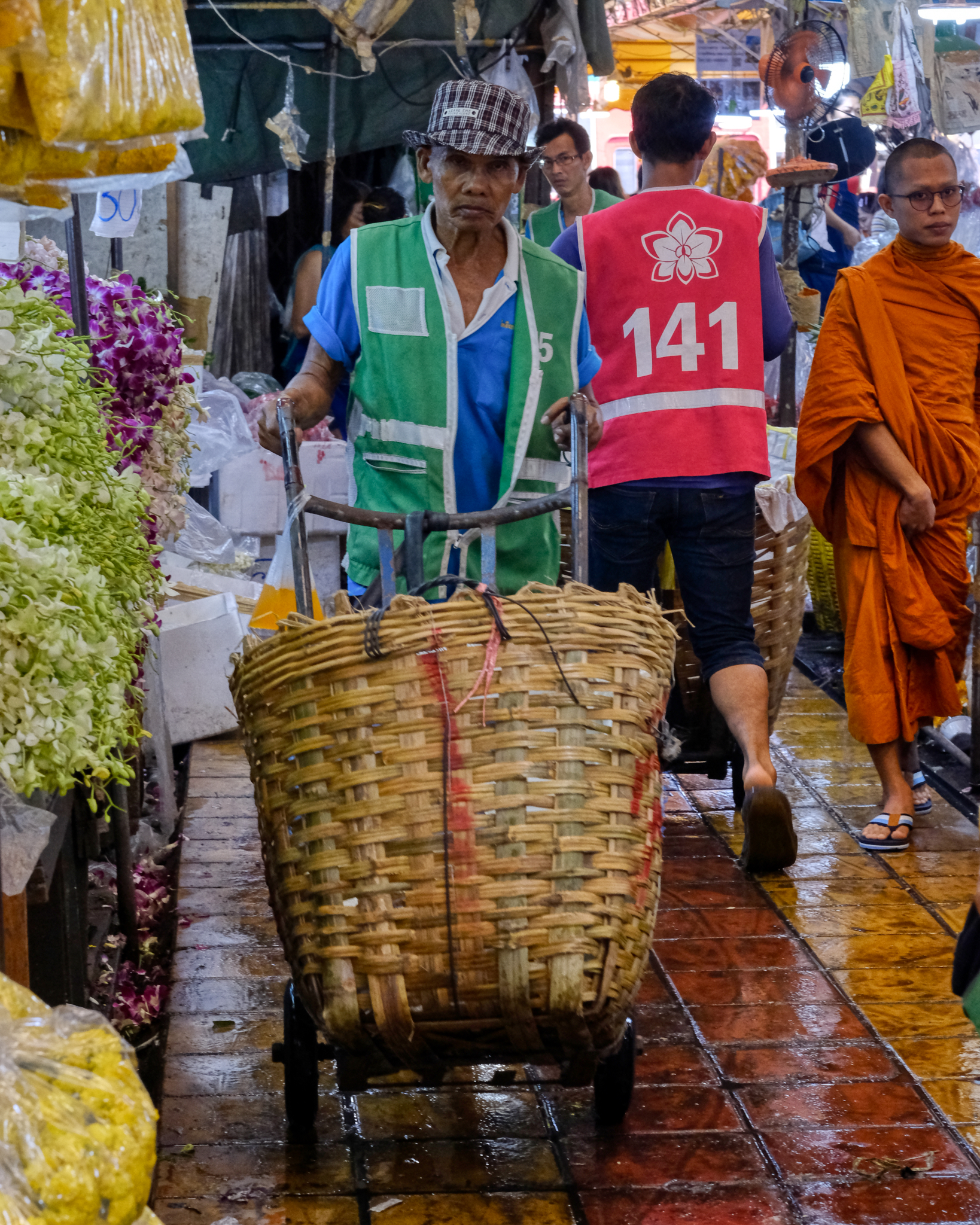 A market draymen moving purchases out of the market to waiting tuk-tuk delivery.
A market draymen moving purchases out of the market to waiting tuk-tuk delivery.
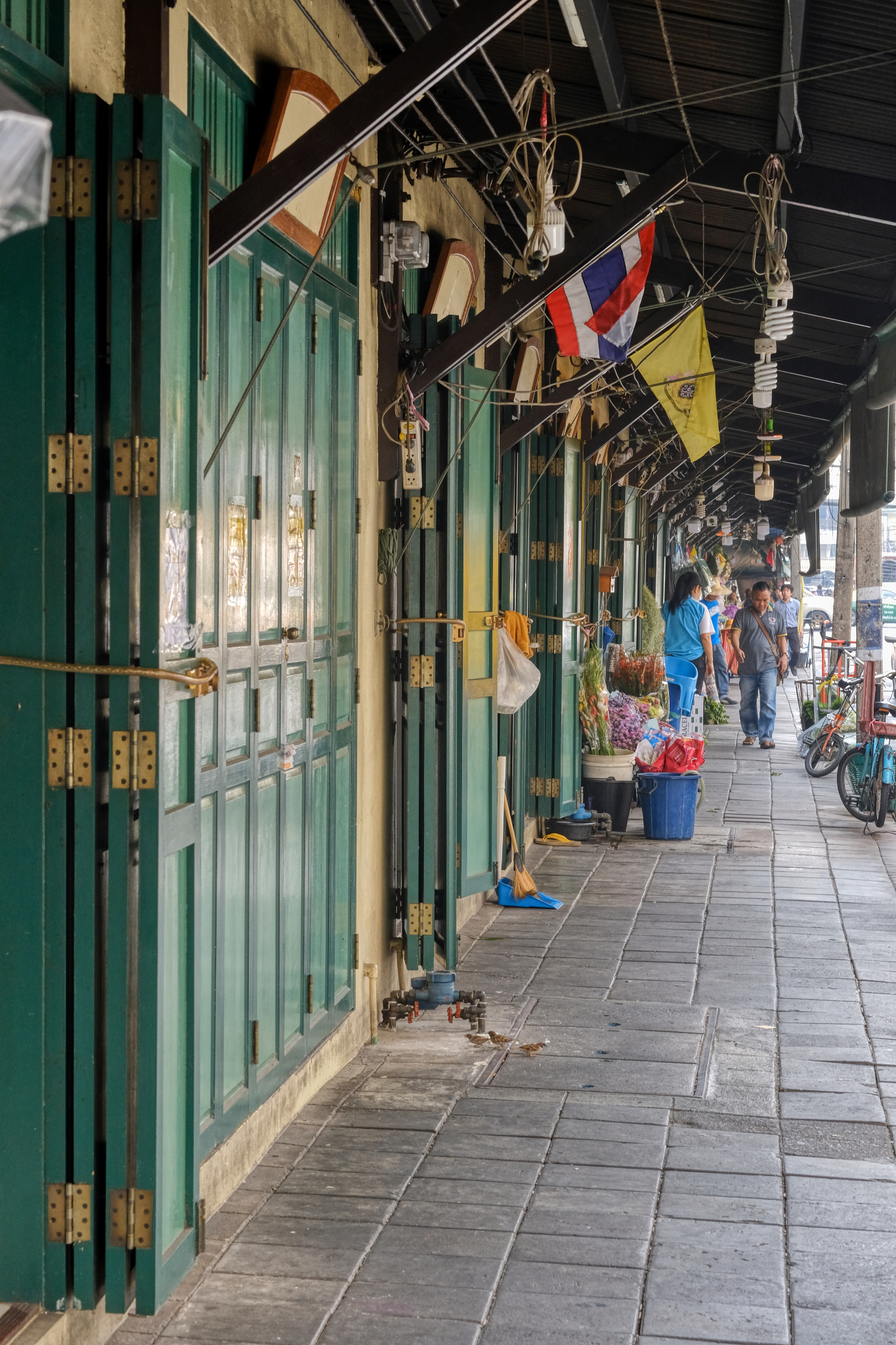 The area around the flower is made up of many rows of old shop houses.
The area around the flower is made up of many rows of old shop houses.
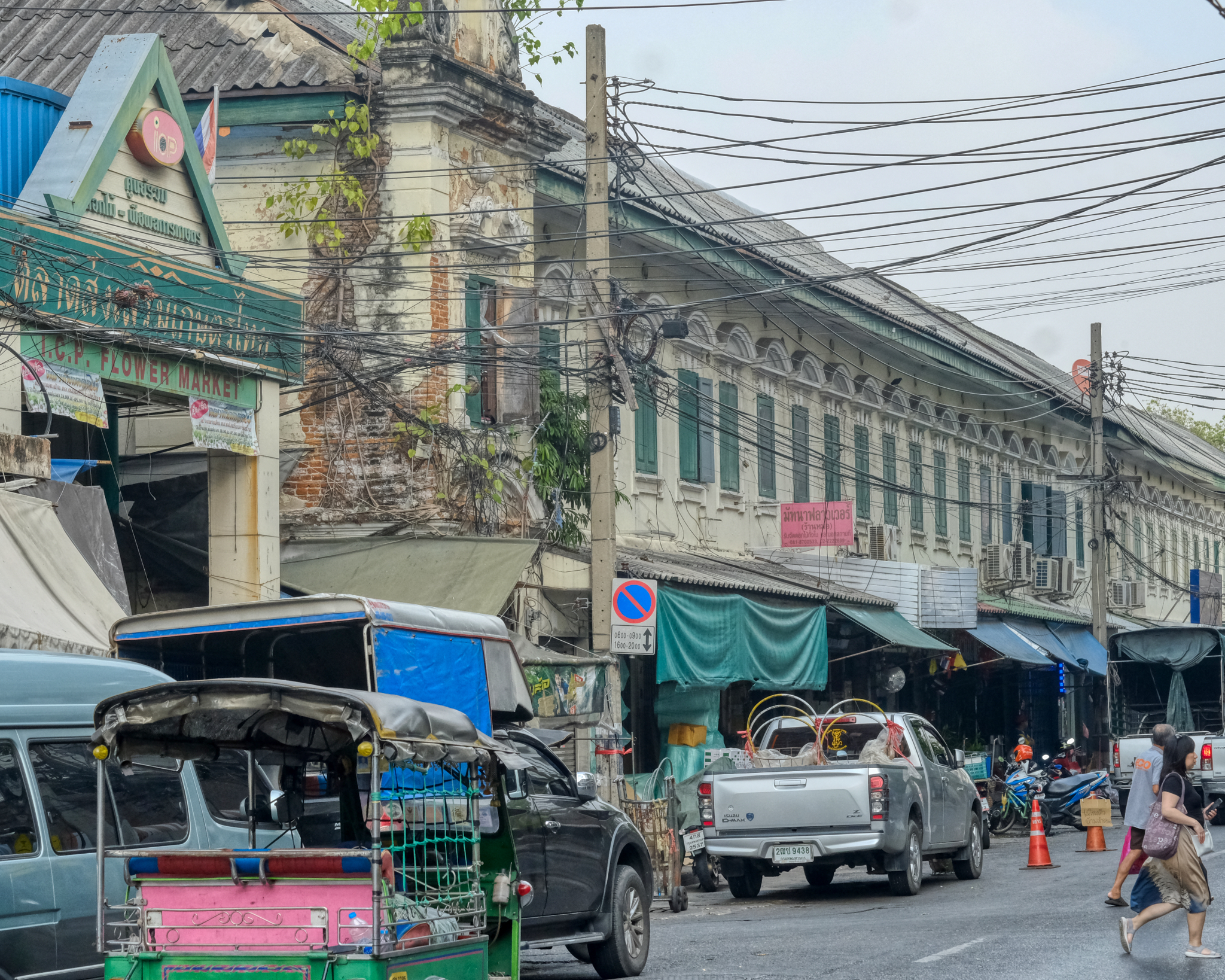 The flower market is in a very old part of Bangkok, not far from the Chao River and just north of the Chinatown district.
The flower market is in a very old part of Bangkok, not far from the Chao River and just north of the Chinatown district.
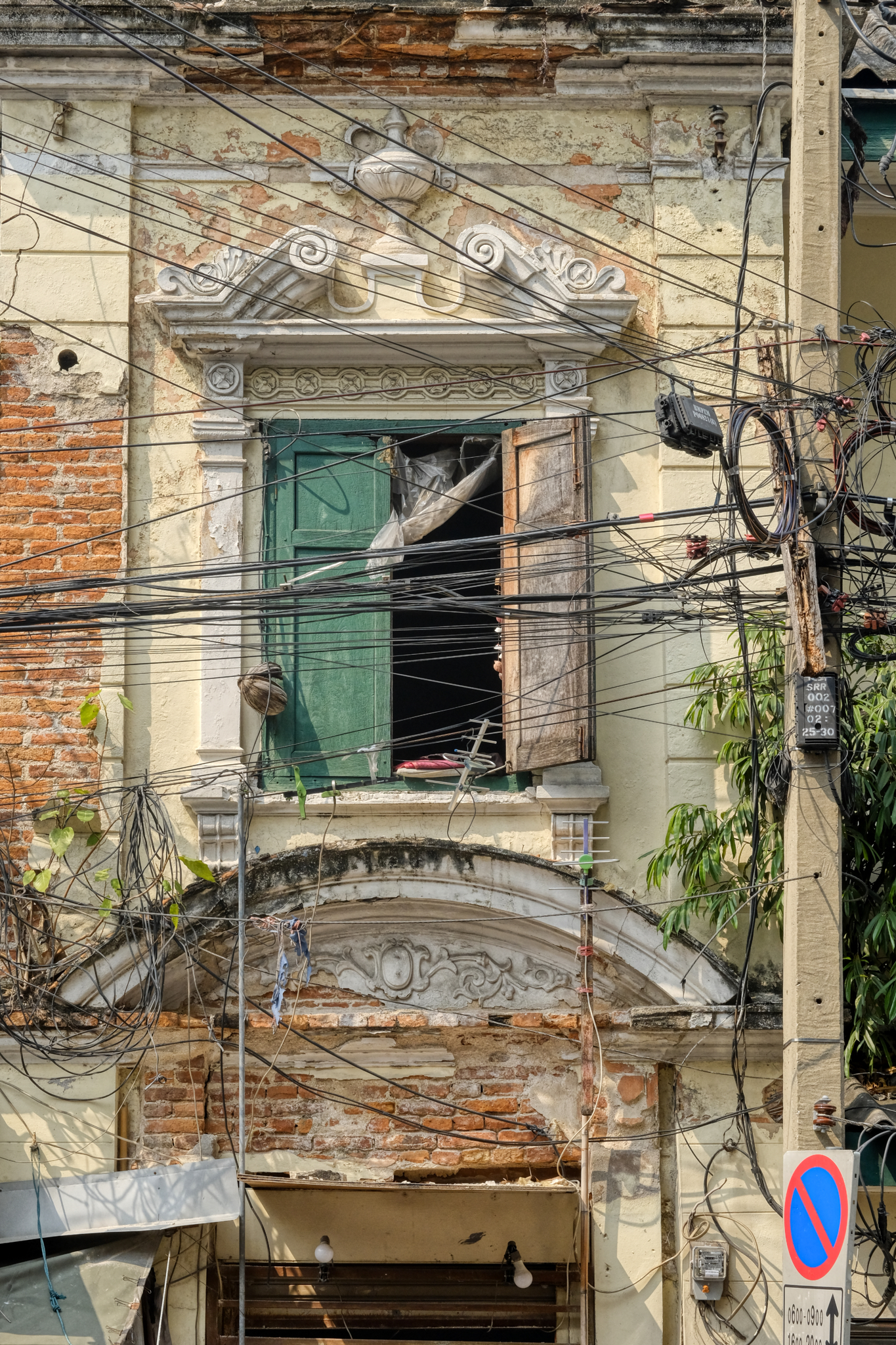 Remnants of Old Bangkok can be seen in and among the complexity of the streets.
Remnants of Old Bangkok can be seen in and among the complexity of the streets.
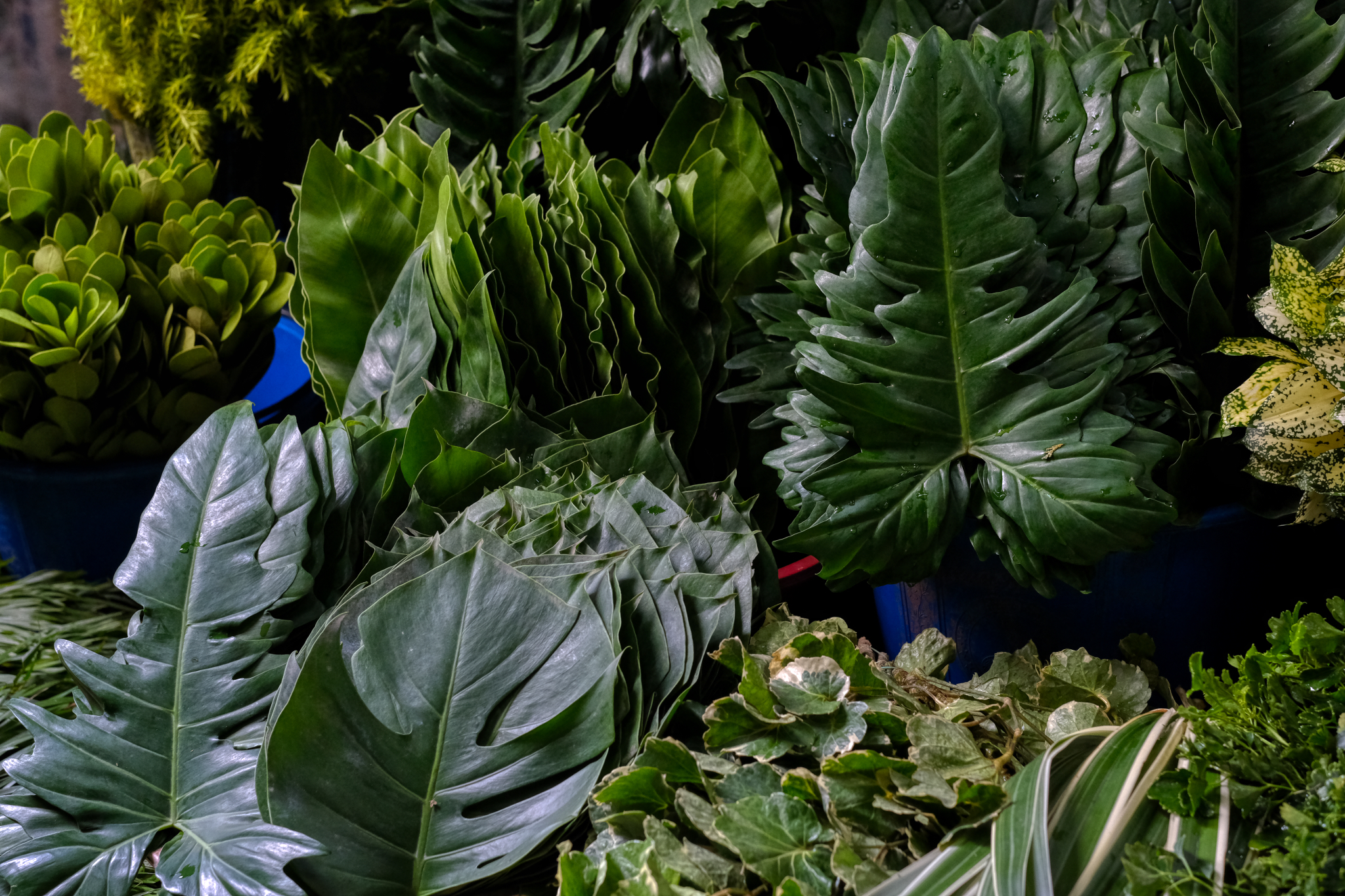 Not only flowers . . . but everything a creative flower arranger might want to employ in a tropical flower arrangement!
Not only flowers . . . but everything a creative flower arranger might want to employ in a tropical flower arrangement!
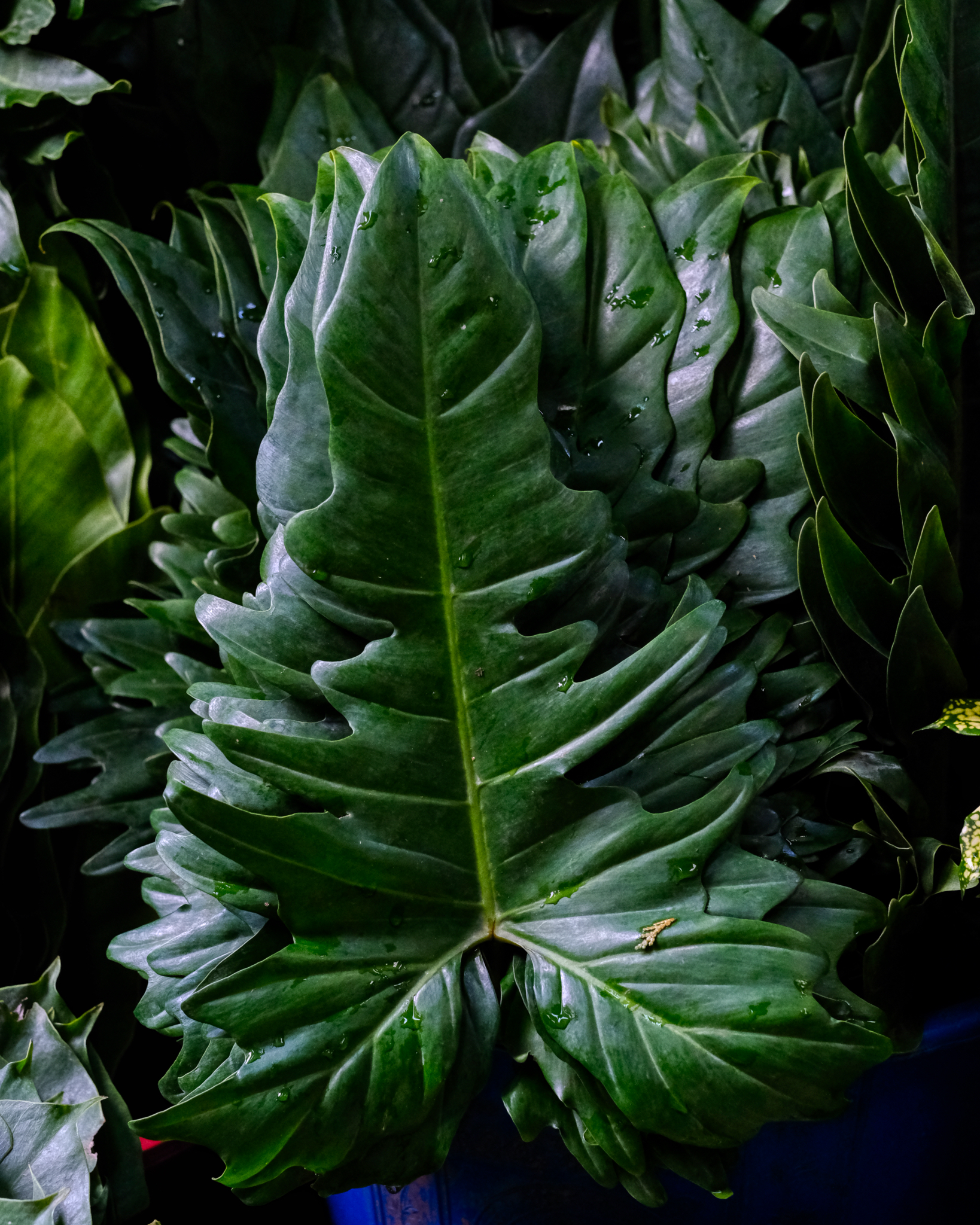 Existentially beautiful tropical leaf.
Existentially beautiful tropical leaf.
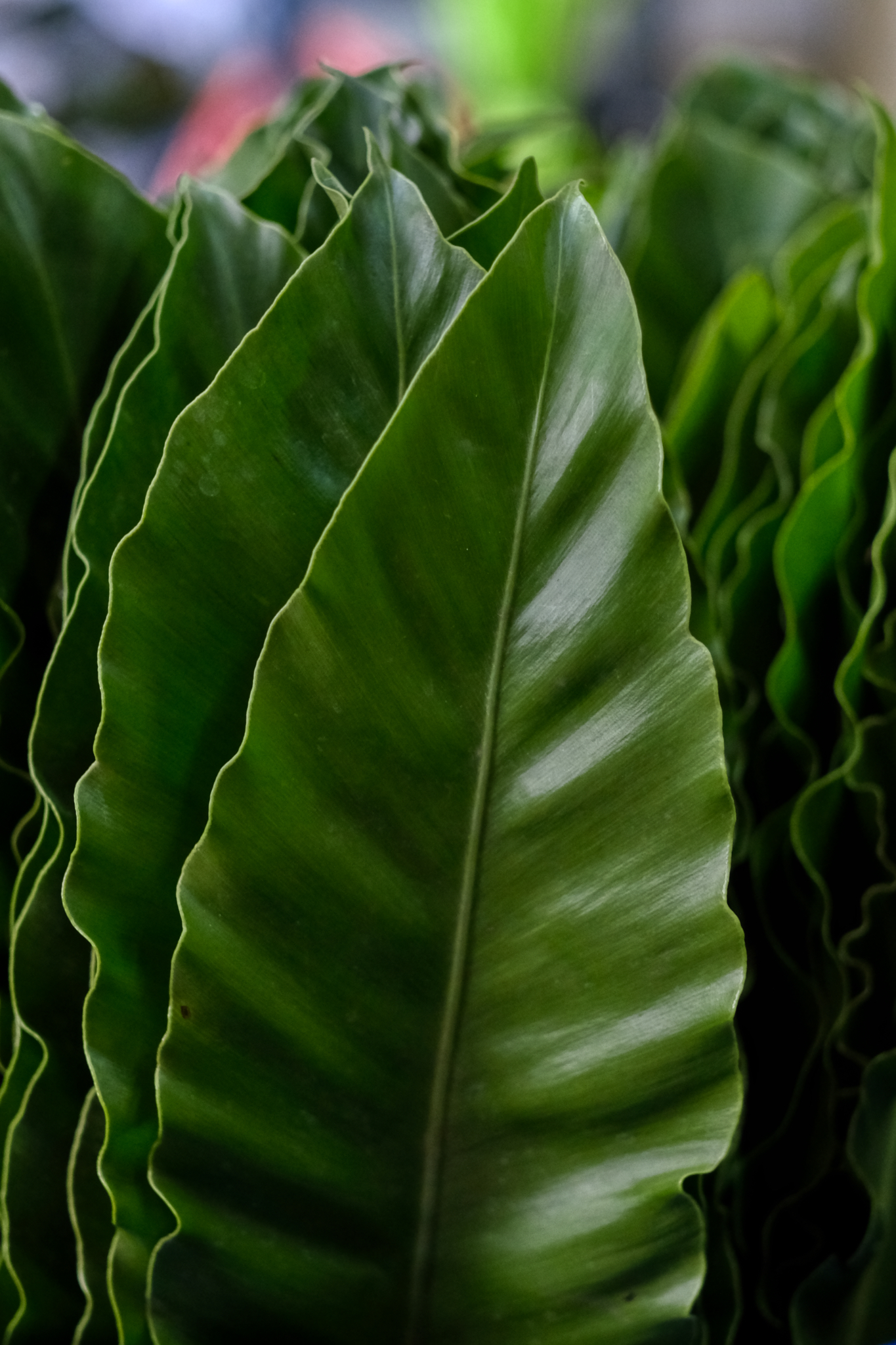 Gorgeous.
Gorgeous.
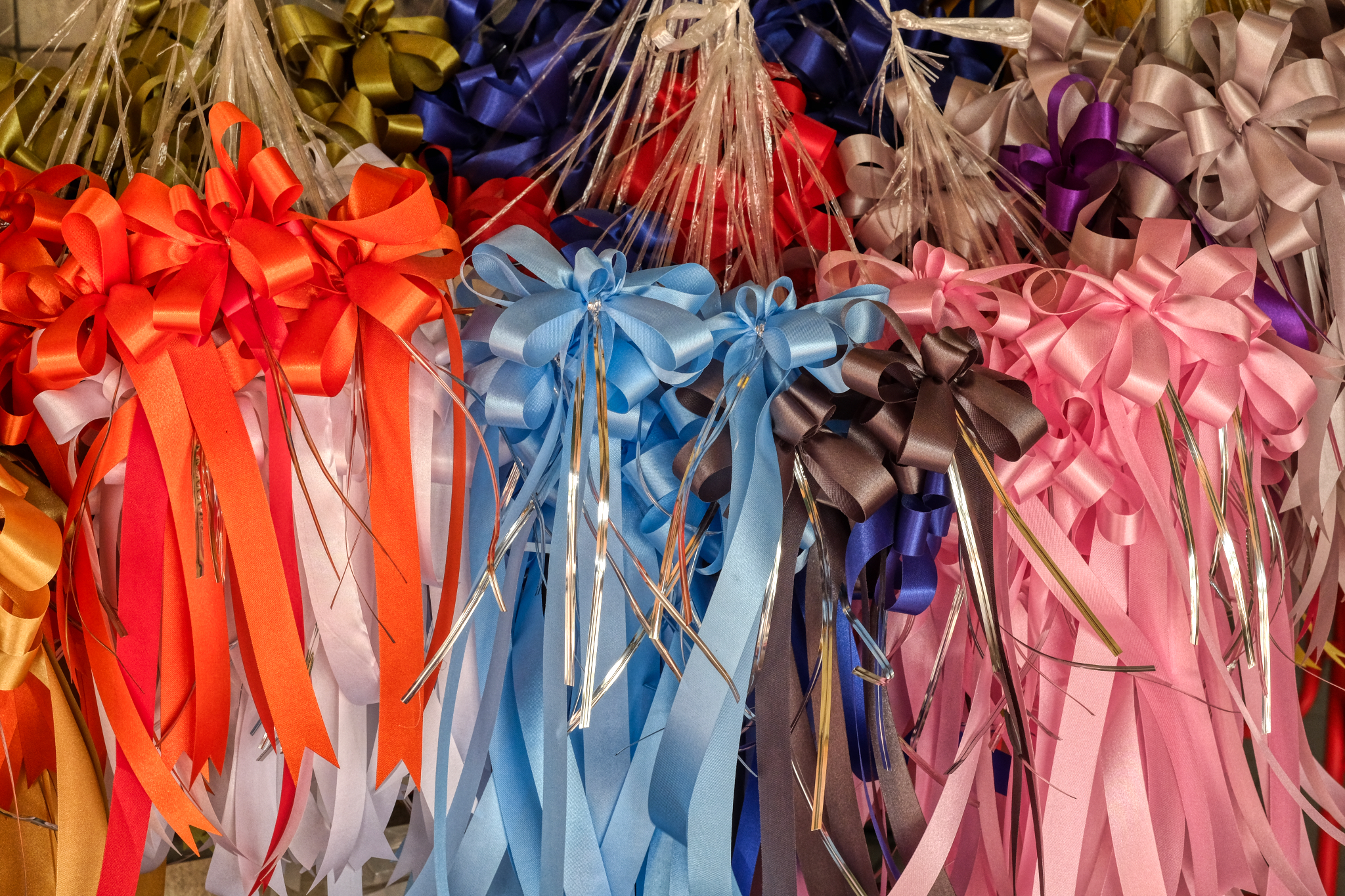 And ribbons and bows for that special wedding or graduation event.
And ribbons and bows for that special wedding or graduation event.
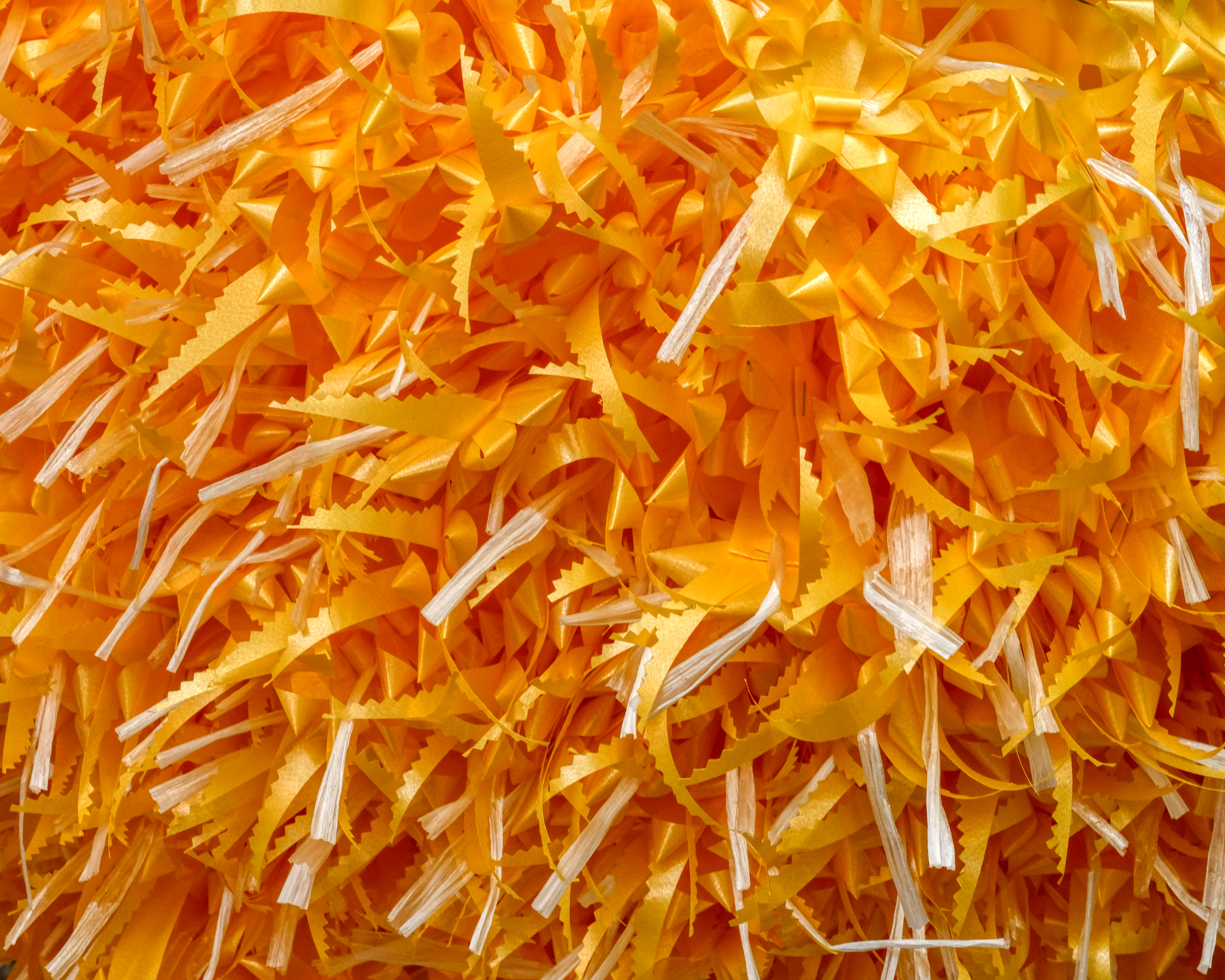 A complete flower arranger super store!
A complete flower arranger super store!
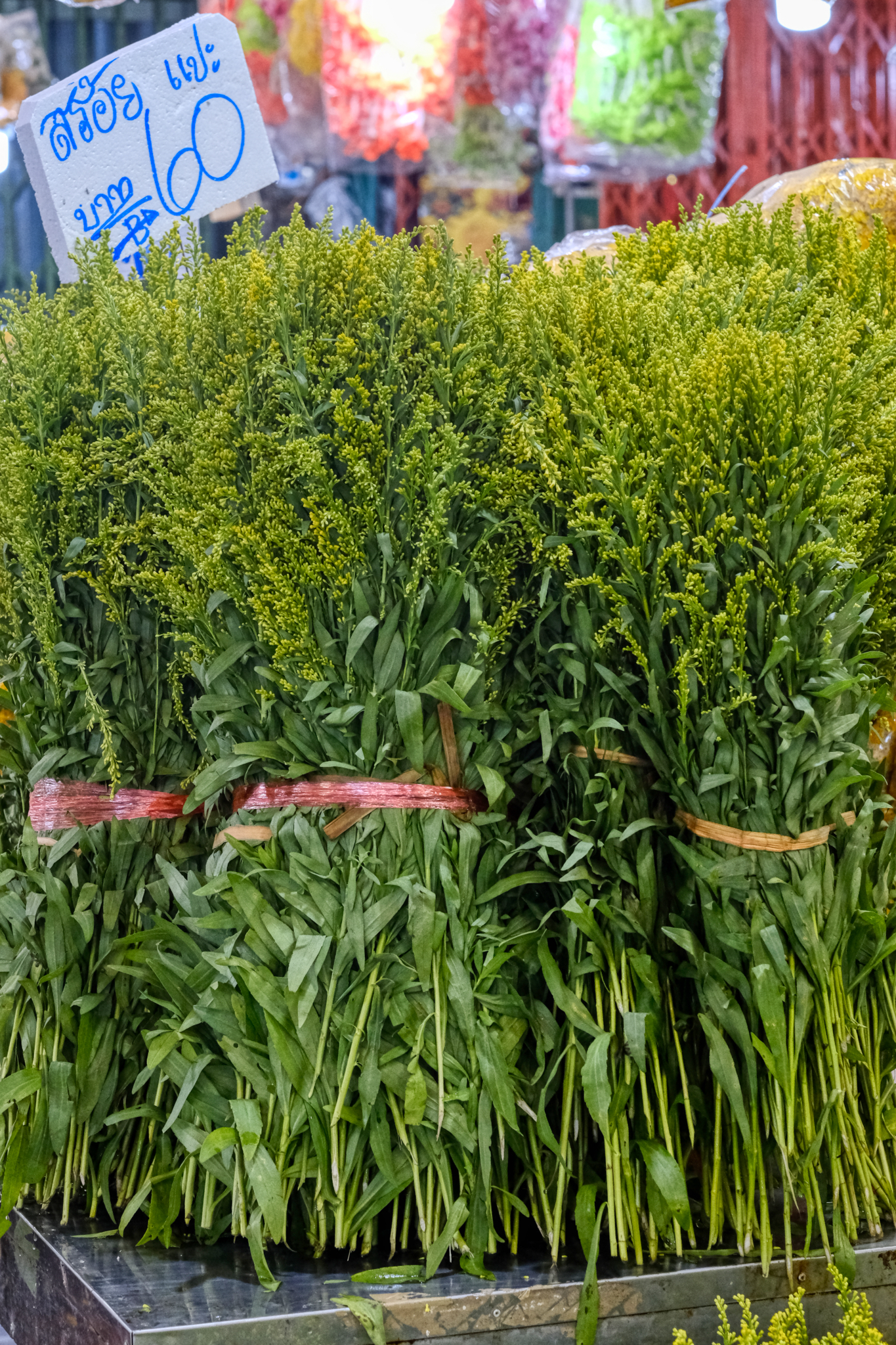 Need some green sprigs with little buds for your arrangement . . . sure, they have them.
Need some green sprigs with little buds for your arrangement . . . sure, they have them.
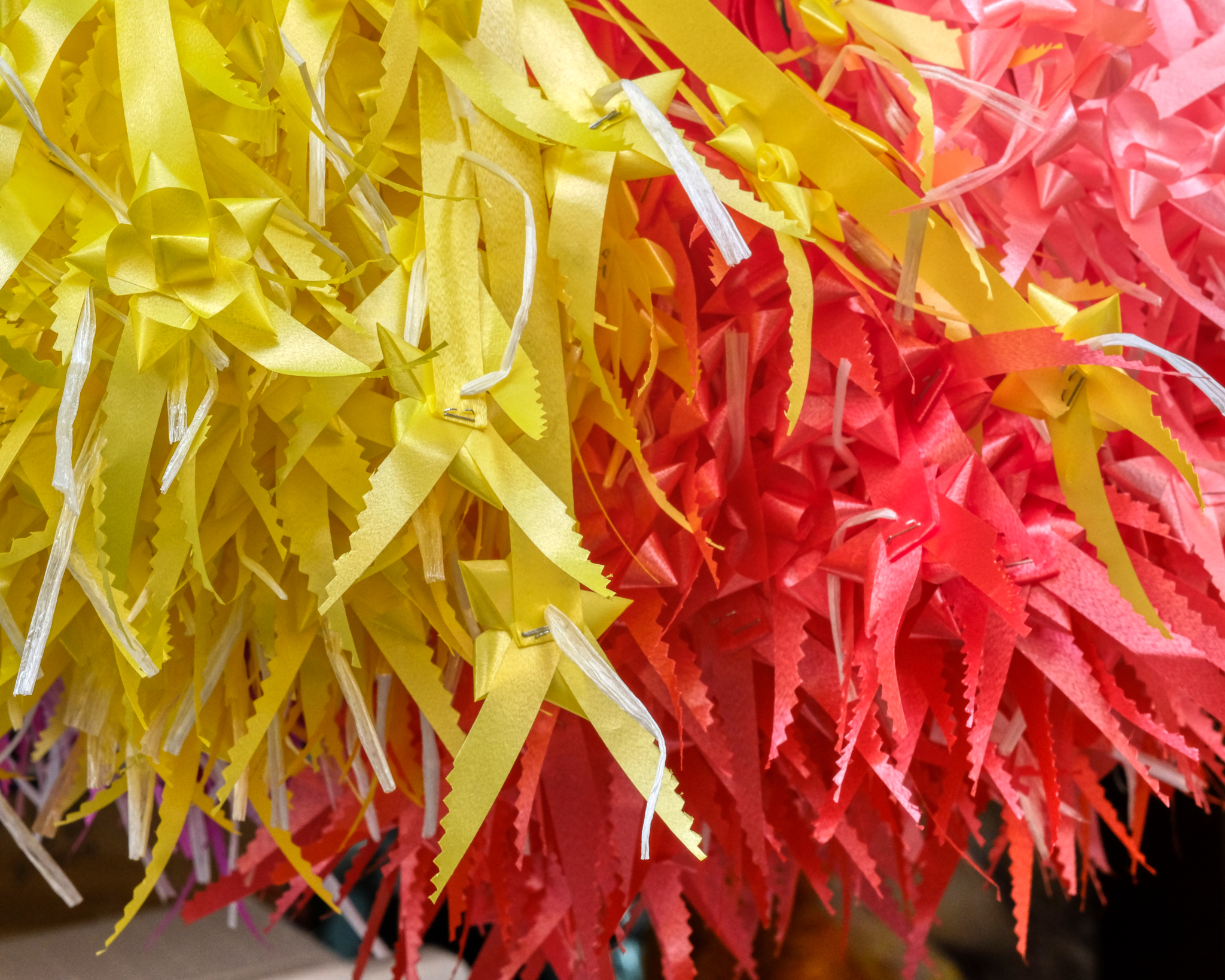 And ribbons and bows . . .
And ribbons and bows . . .
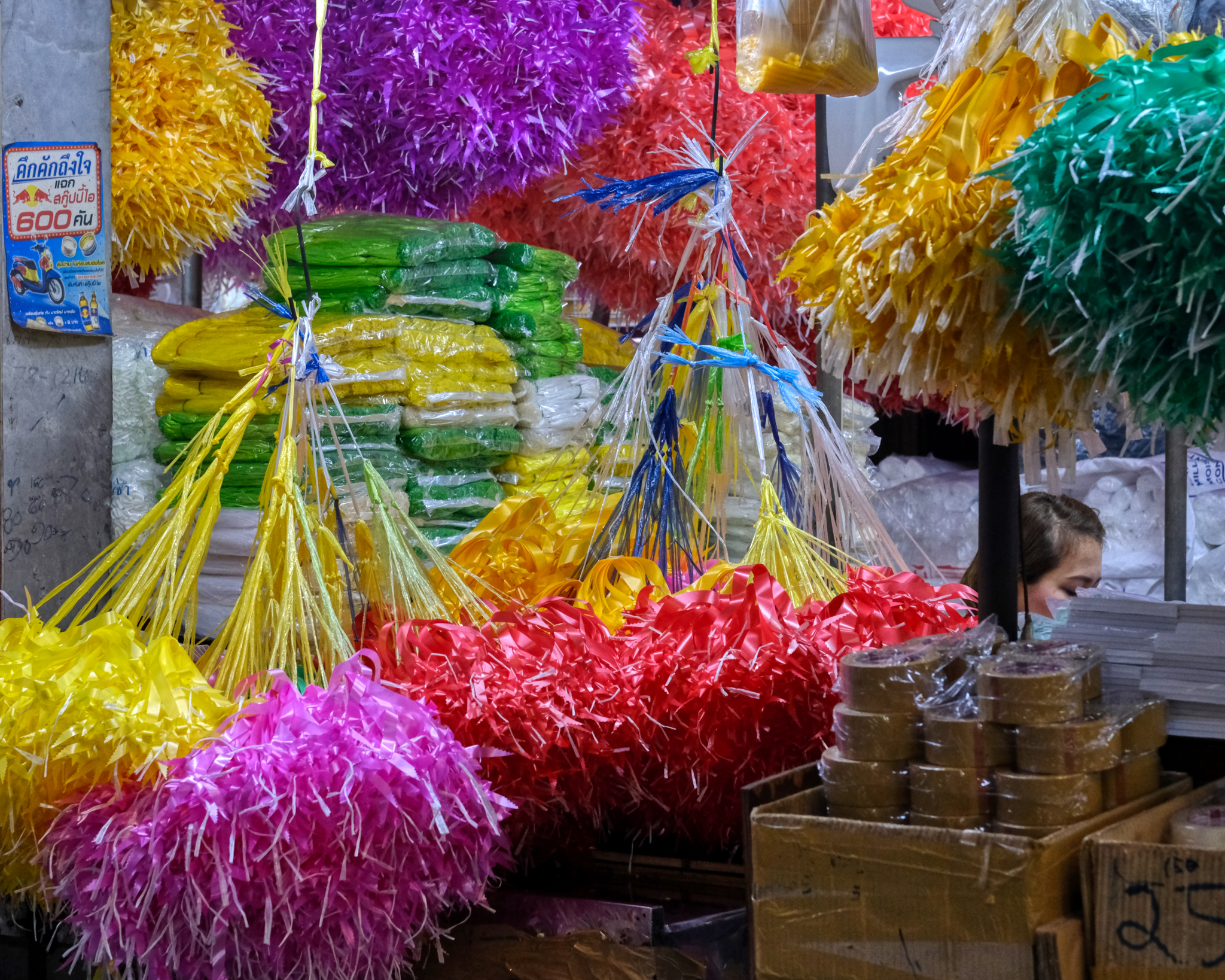 . . . bunches and bunches of ribbons and bows.
. . . bunches and bunches of ribbons and bows.
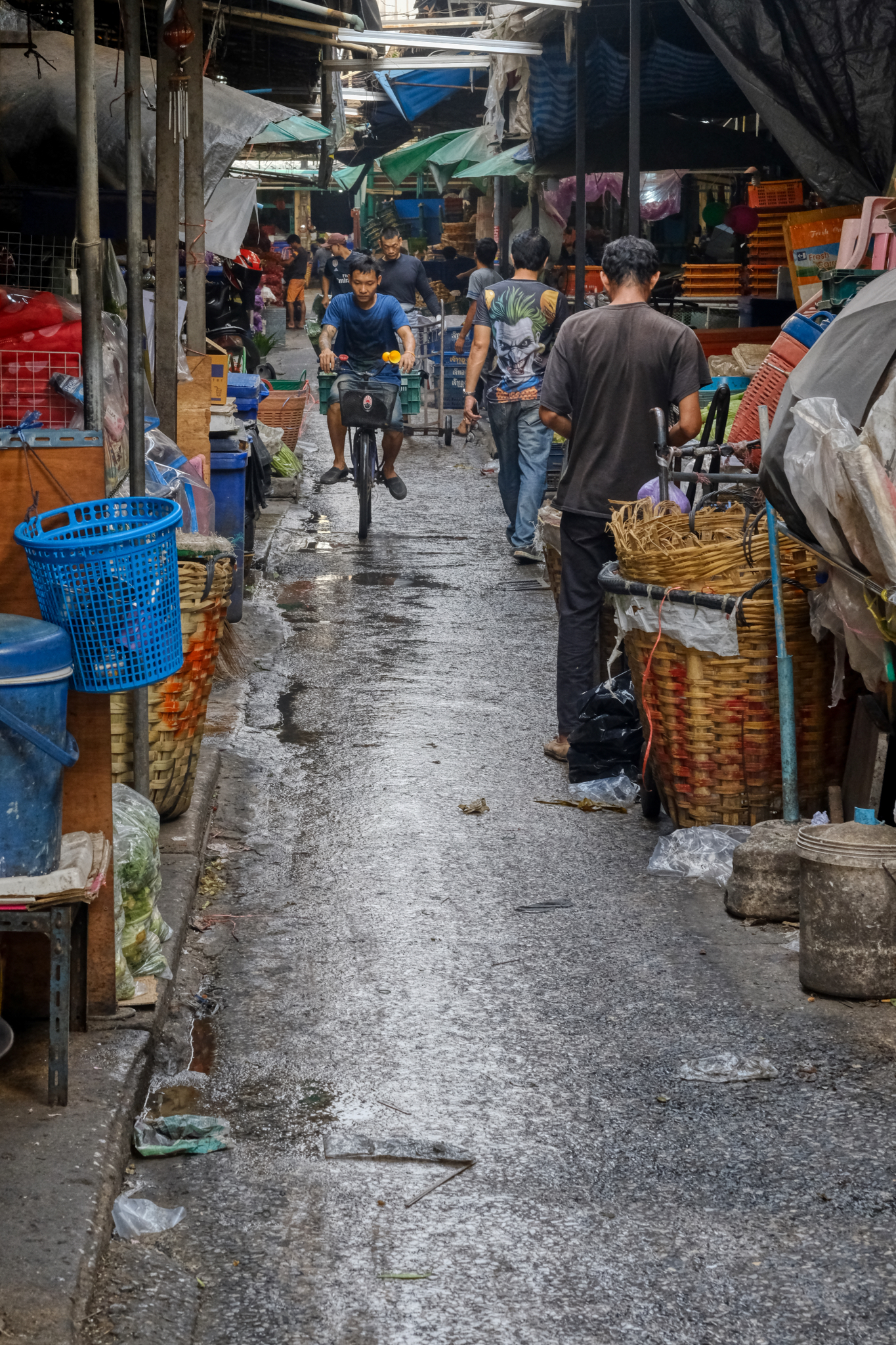 The back side of the flower market blends into a traditional, and common, Bangkok "wet market" -- a fresh fruit and vegetable market.
The back side of the flower market blends into a traditional, and common, Bangkok "wet market" -- a fresh fruit and vegetable market.
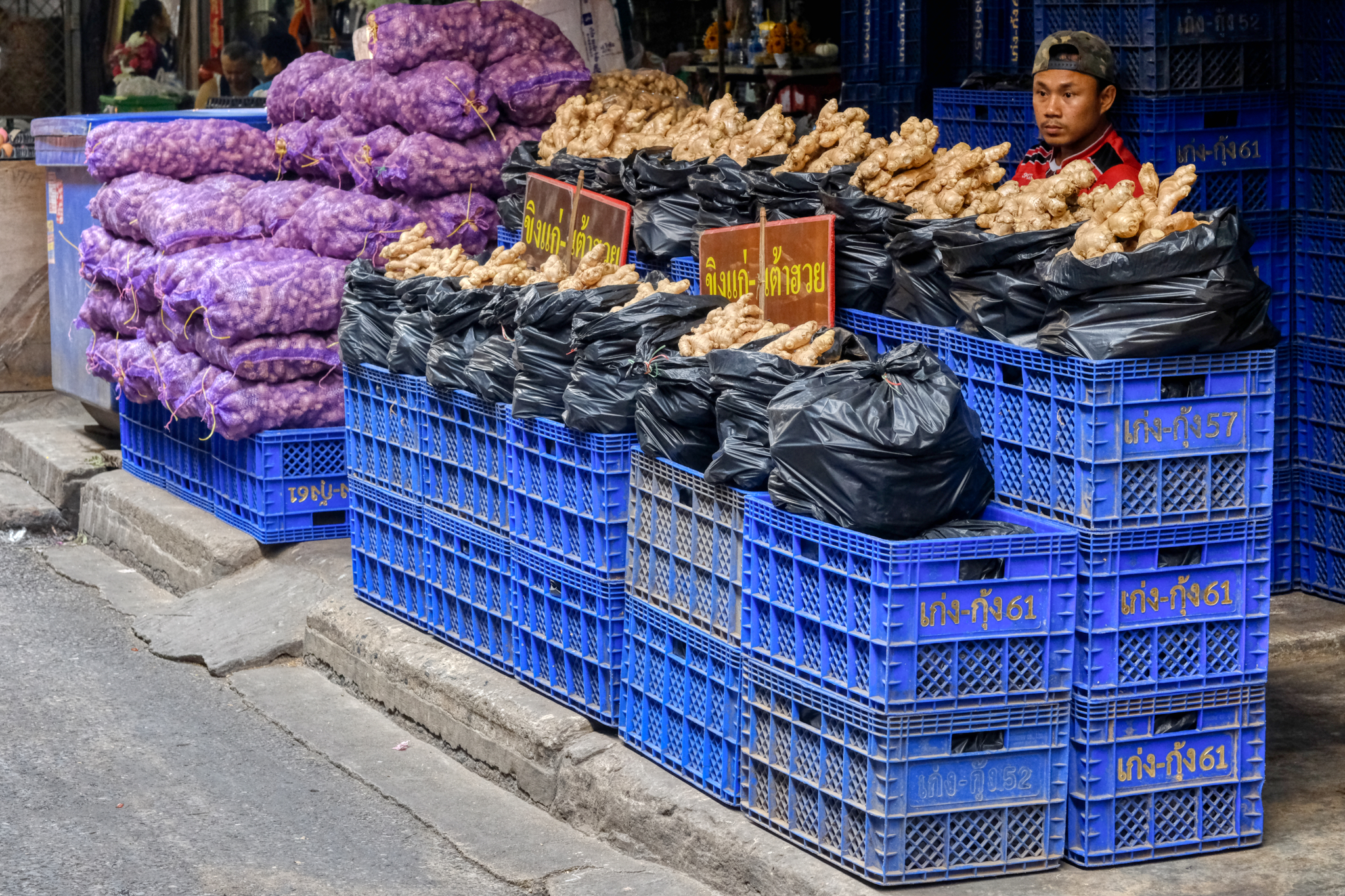 A ginger hawker's display.
A ginger hawker's display.
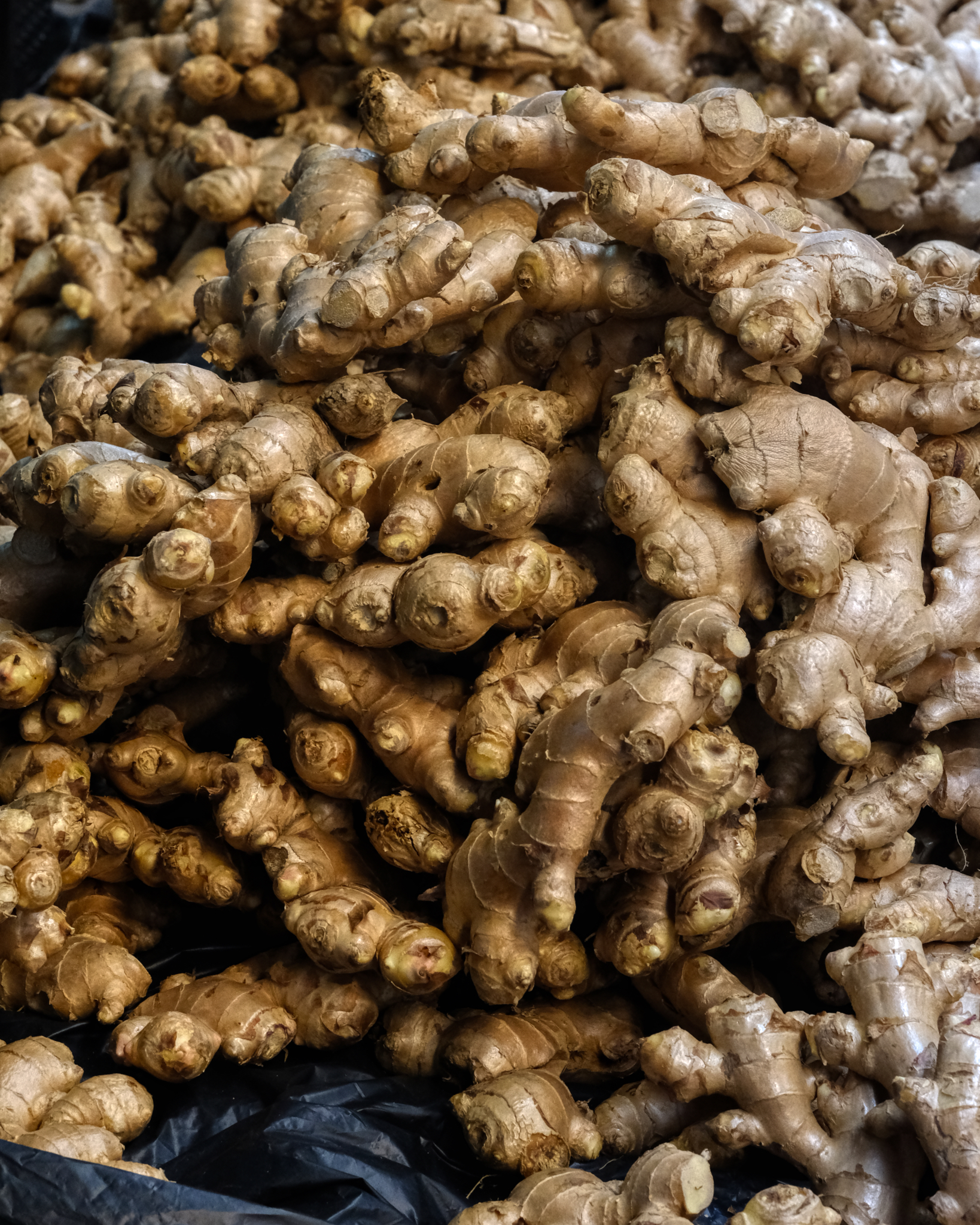 Beautiful ginger. I love ginger . . . and many Thai dishes are made with ginger . . . especially Thai desserts, my favorite.
Beautiful ginger. I love ginger . . . and many Thai dishes are made with ginger . . . especially Thai desserts, my favorite.
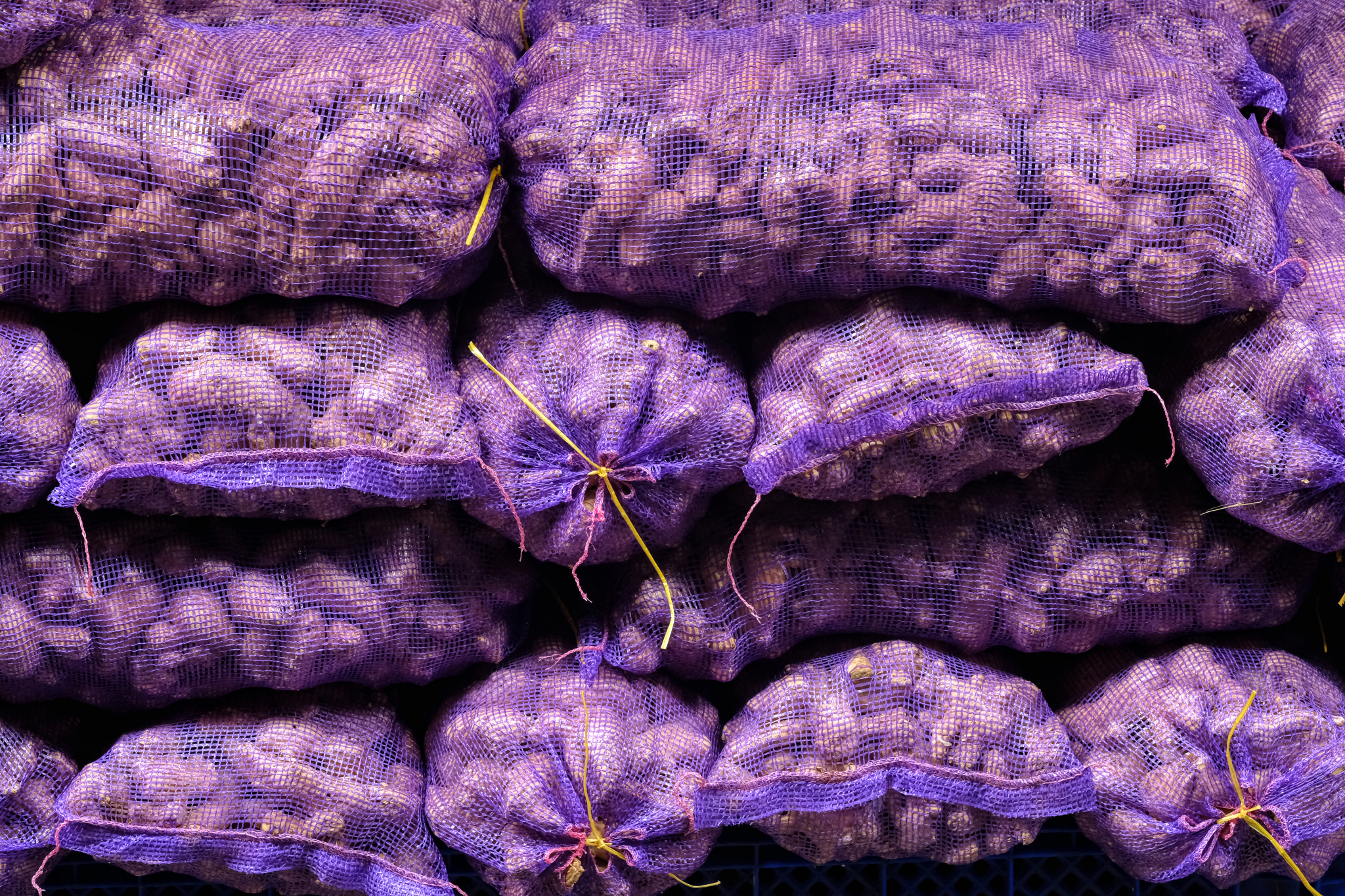 Purple net sacks full of potatoes.
Purple net sacks full of potatoes.
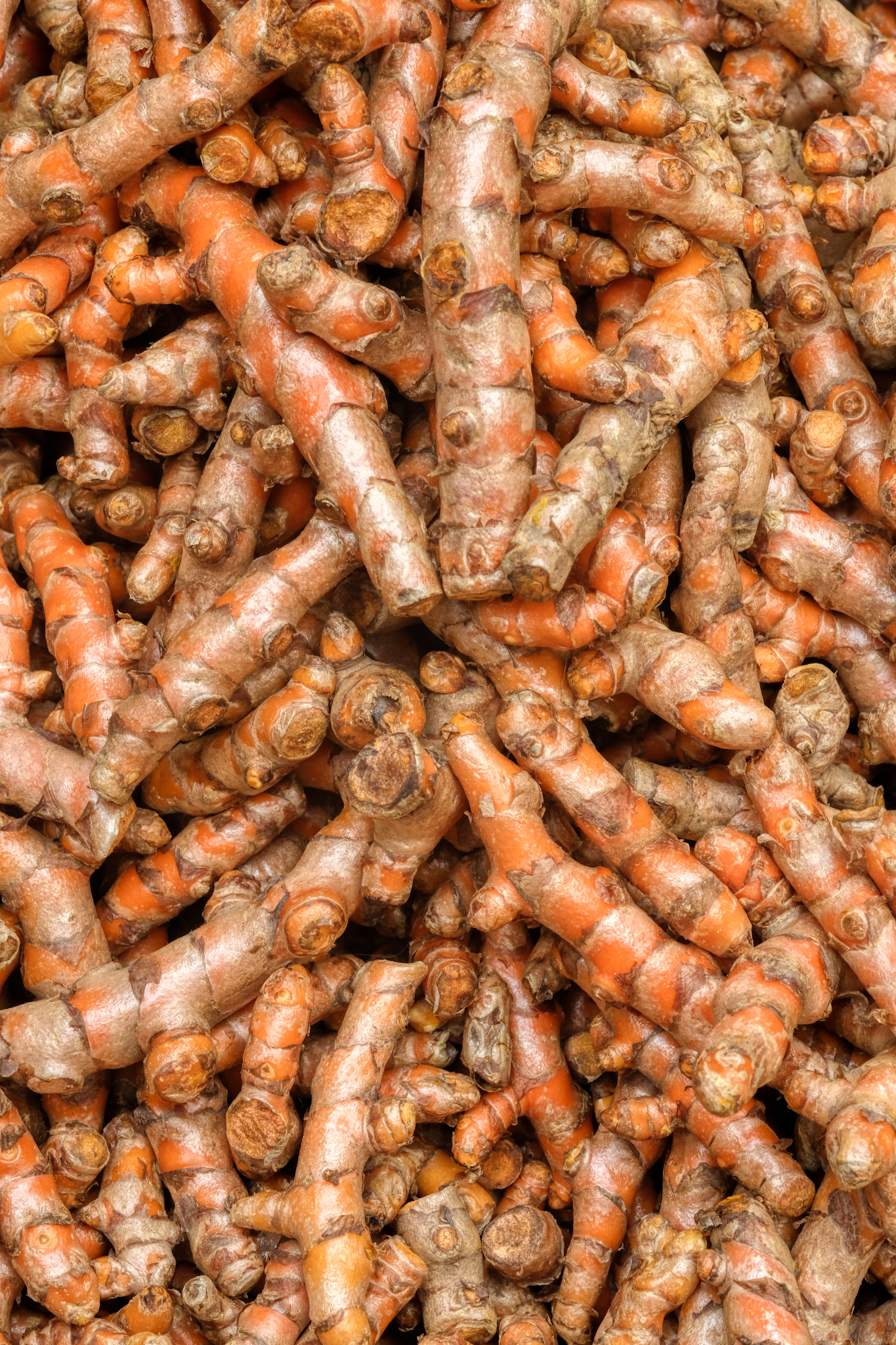 A stack of spice root.
A stack of spice root.
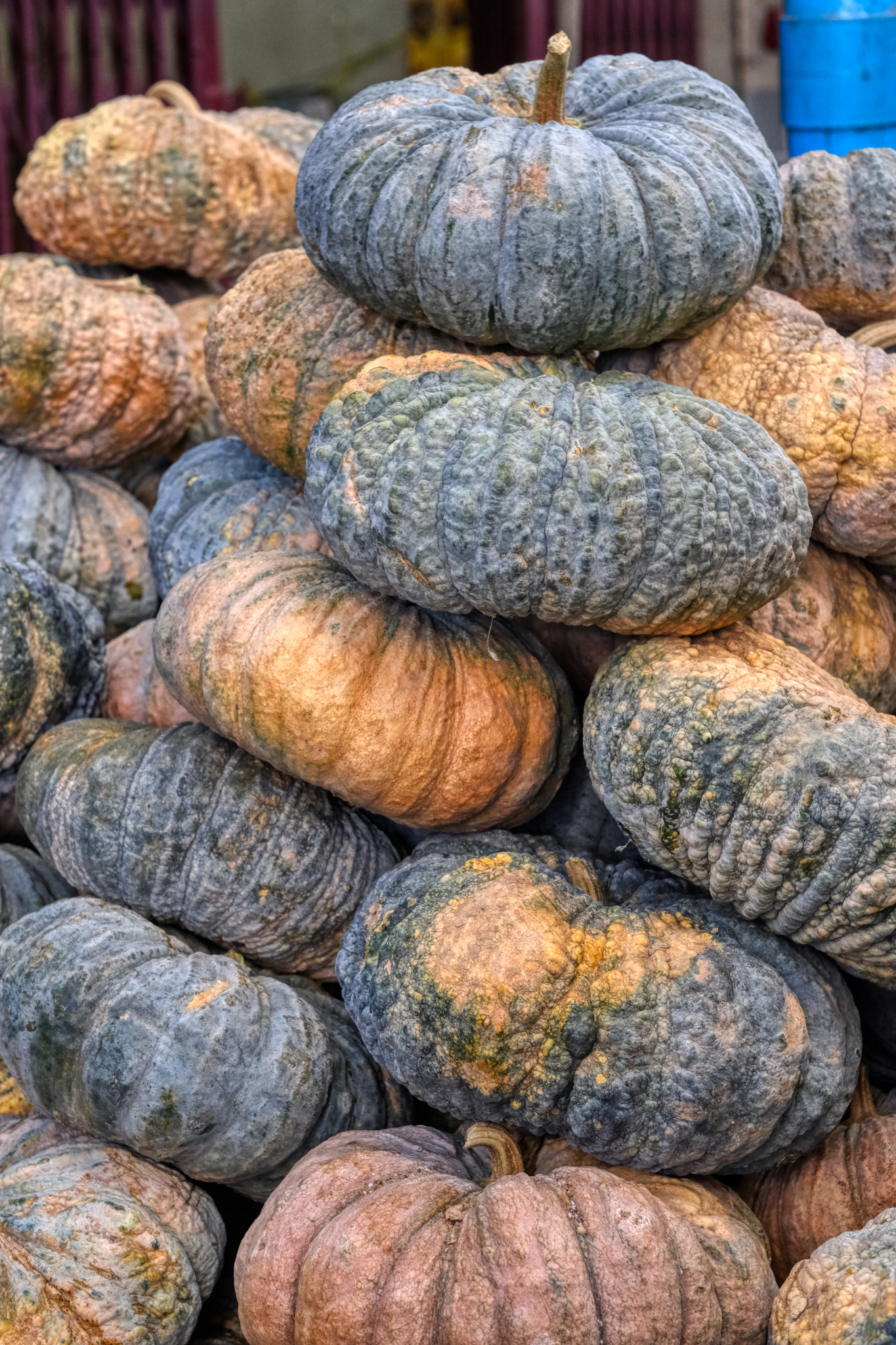 A stack of Thai squash ("fucktong" in Thai).
A stack of Thai squash ("fucktong" in Thai).
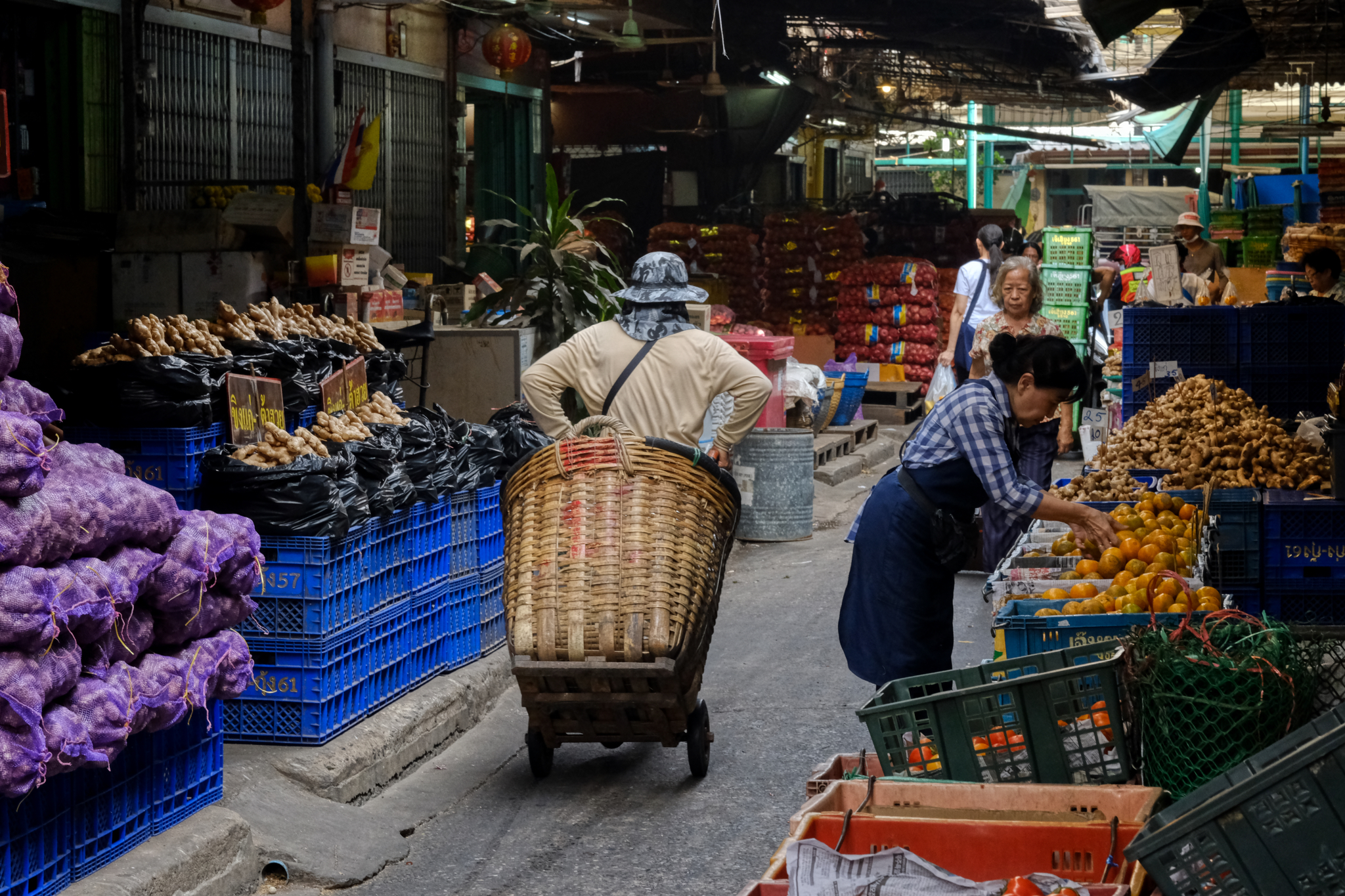 A lot of activity in the vegetable wholesale market.
A lot of activity in the vegetable wholesale market.
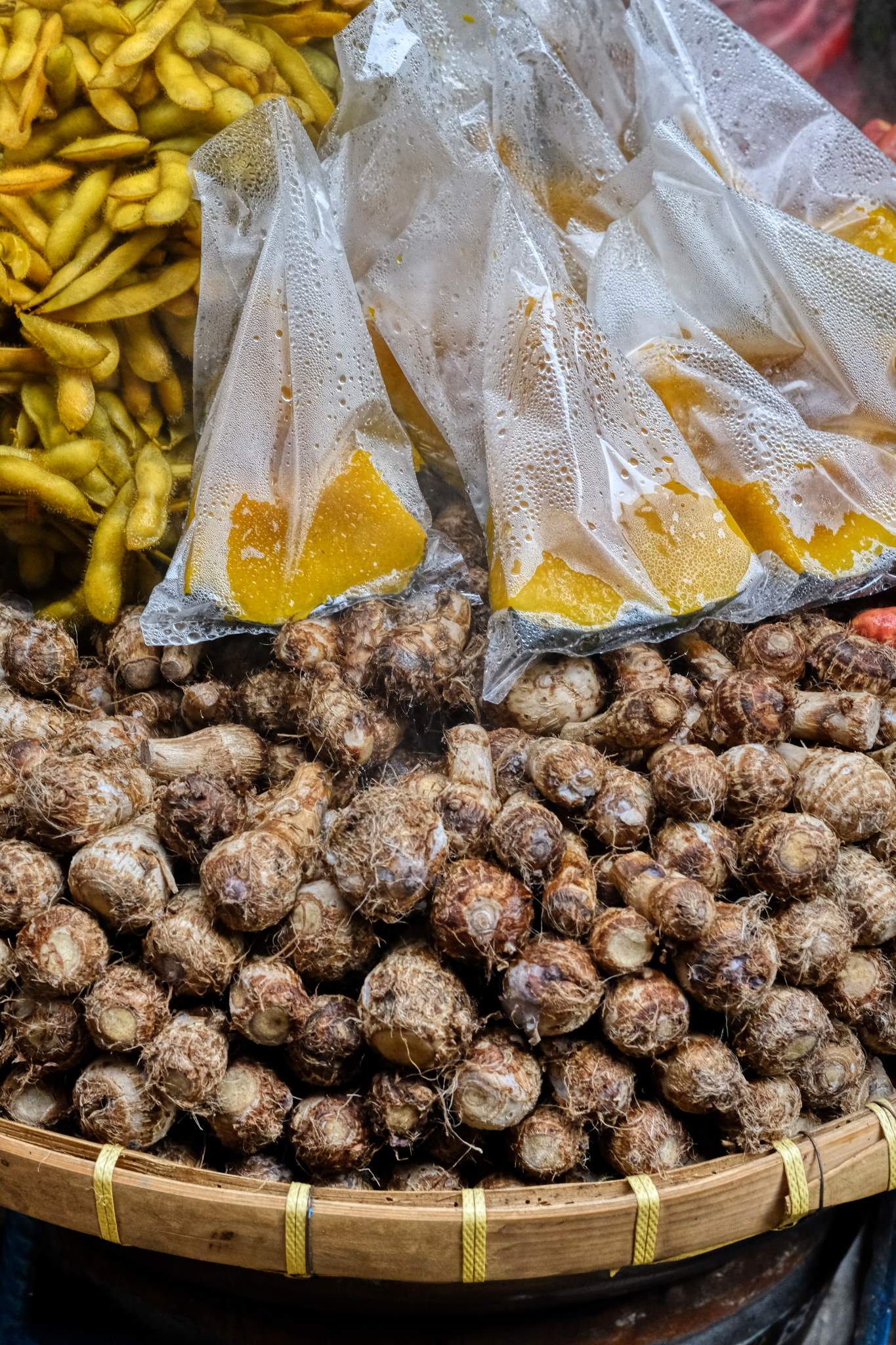 Unique ingredients are what make Thai food so tasty.
Unique ingredients are what make Thai food so tasty.
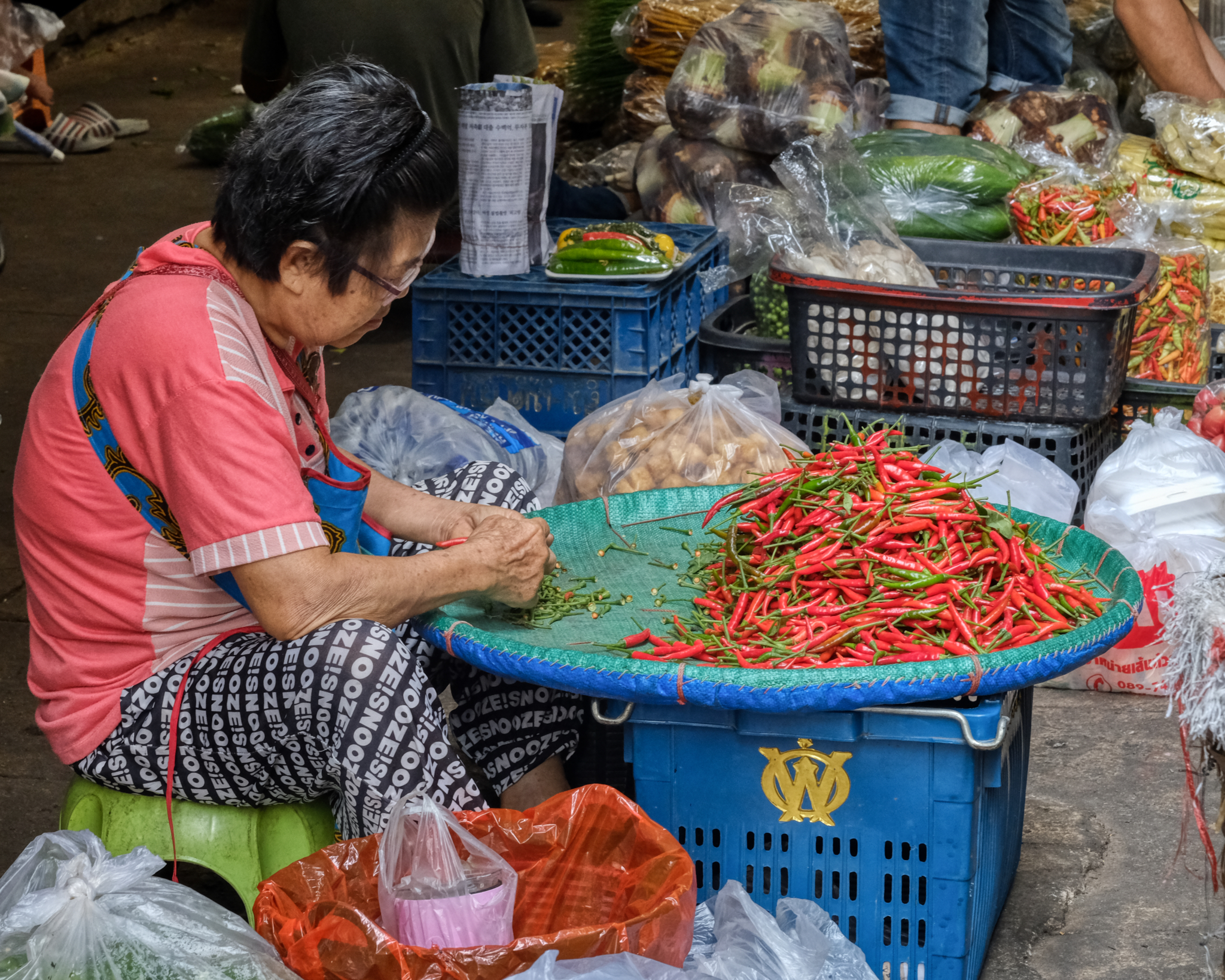 A market chili sorter . . . she did not smell like flowers!!!
A market chili sorter . . . she did not smell like flowers!!!
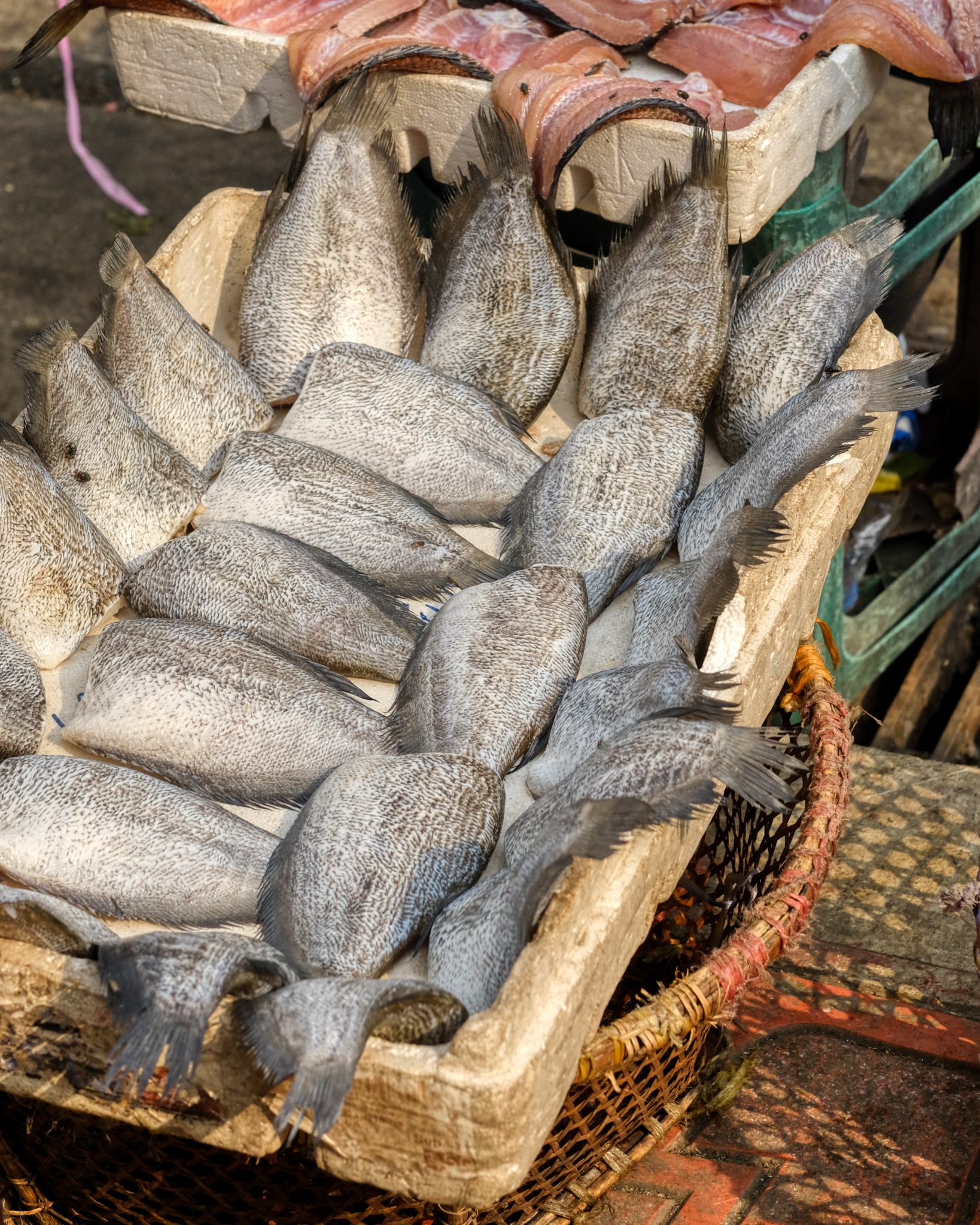 A small sale of fish . . . no doubt intended for the market workers to take home for dinner.
A small sale of fish . . . no doubt intended for the market workers to take home for dinner.
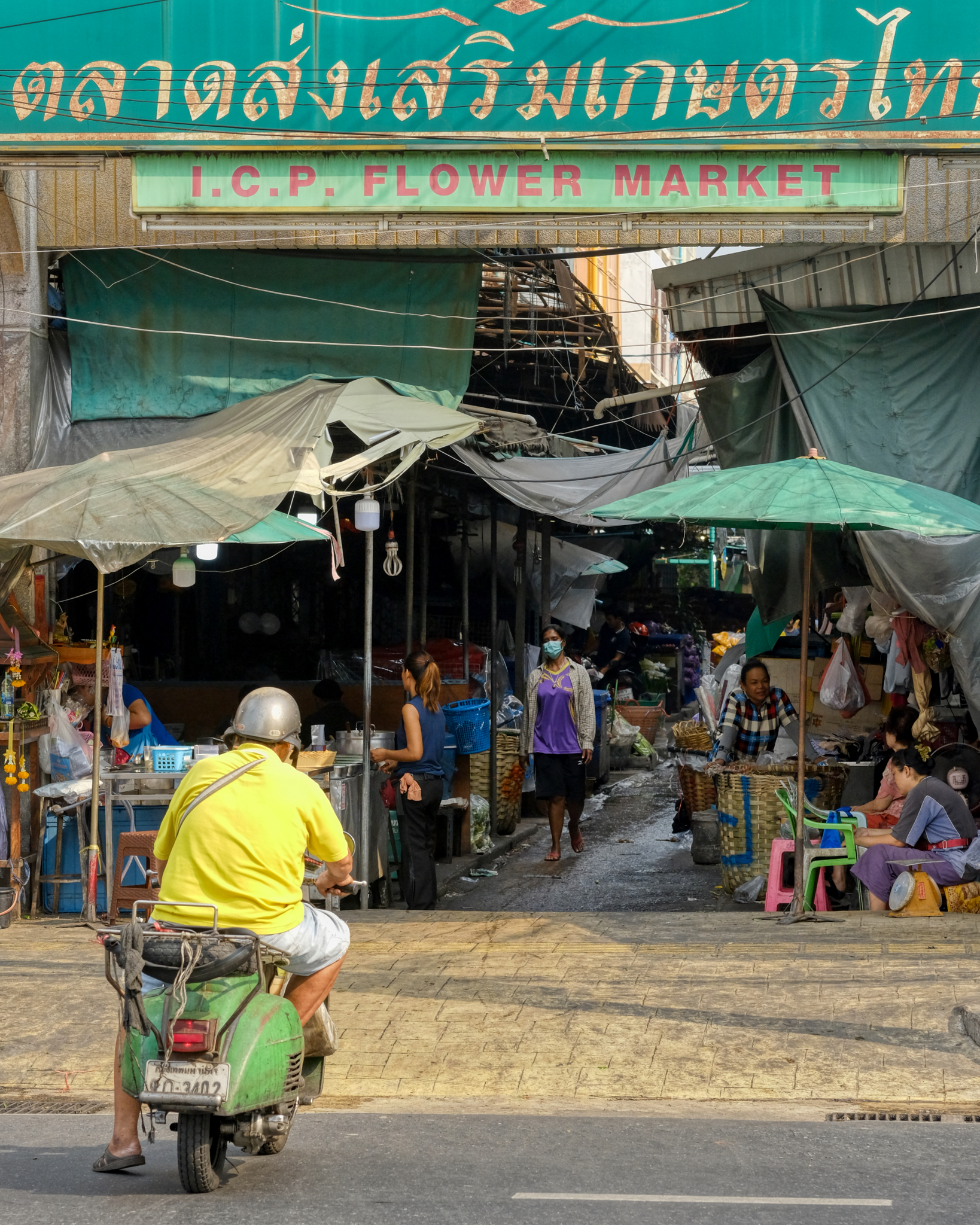 After three hours (!!) we finally stepped outside the markets.
After three hours (!!) we finally stepped outside the markets.
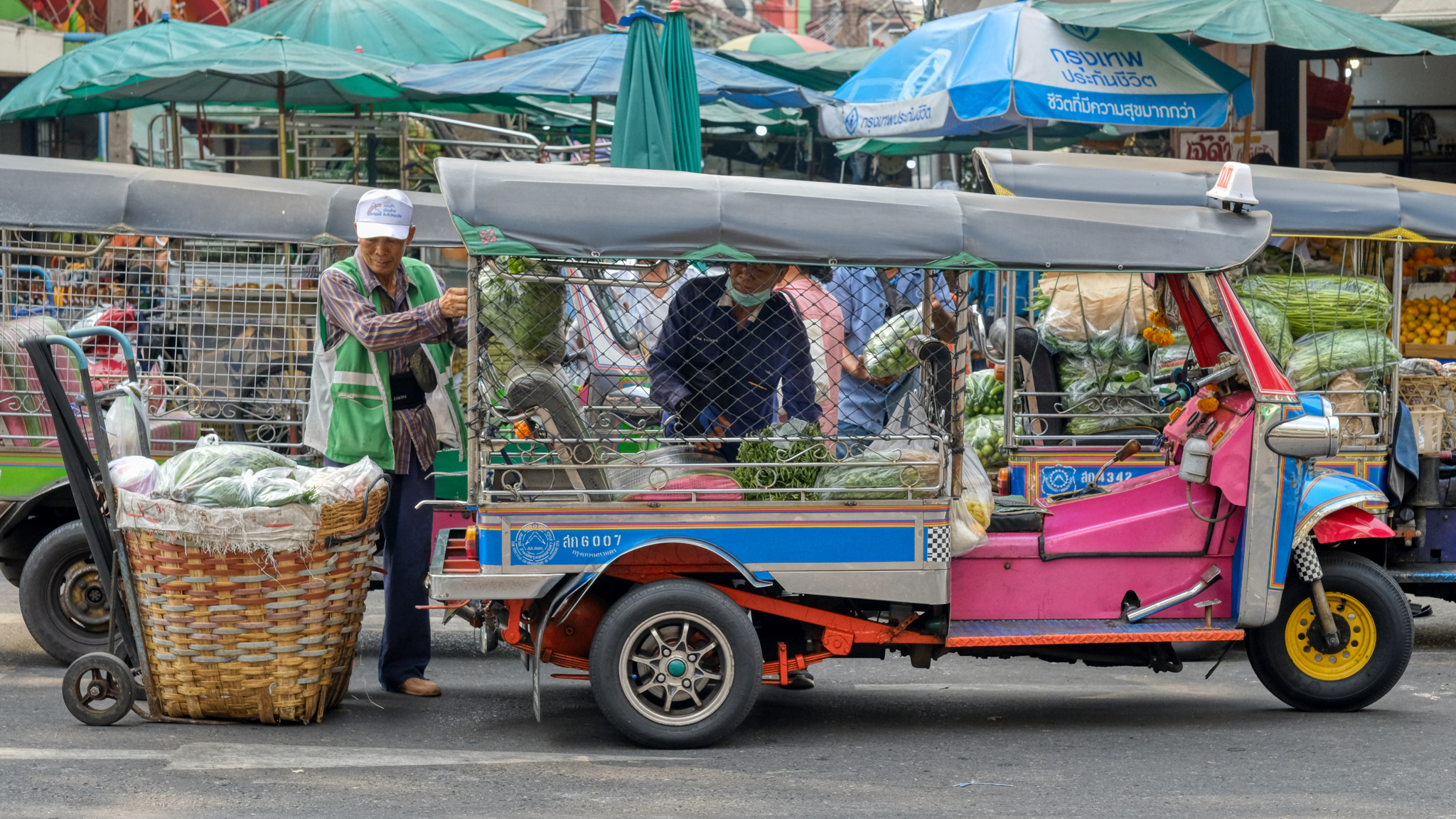 Loading up the produce . . . outside the market.
Loading up the produce . . . outside the market.
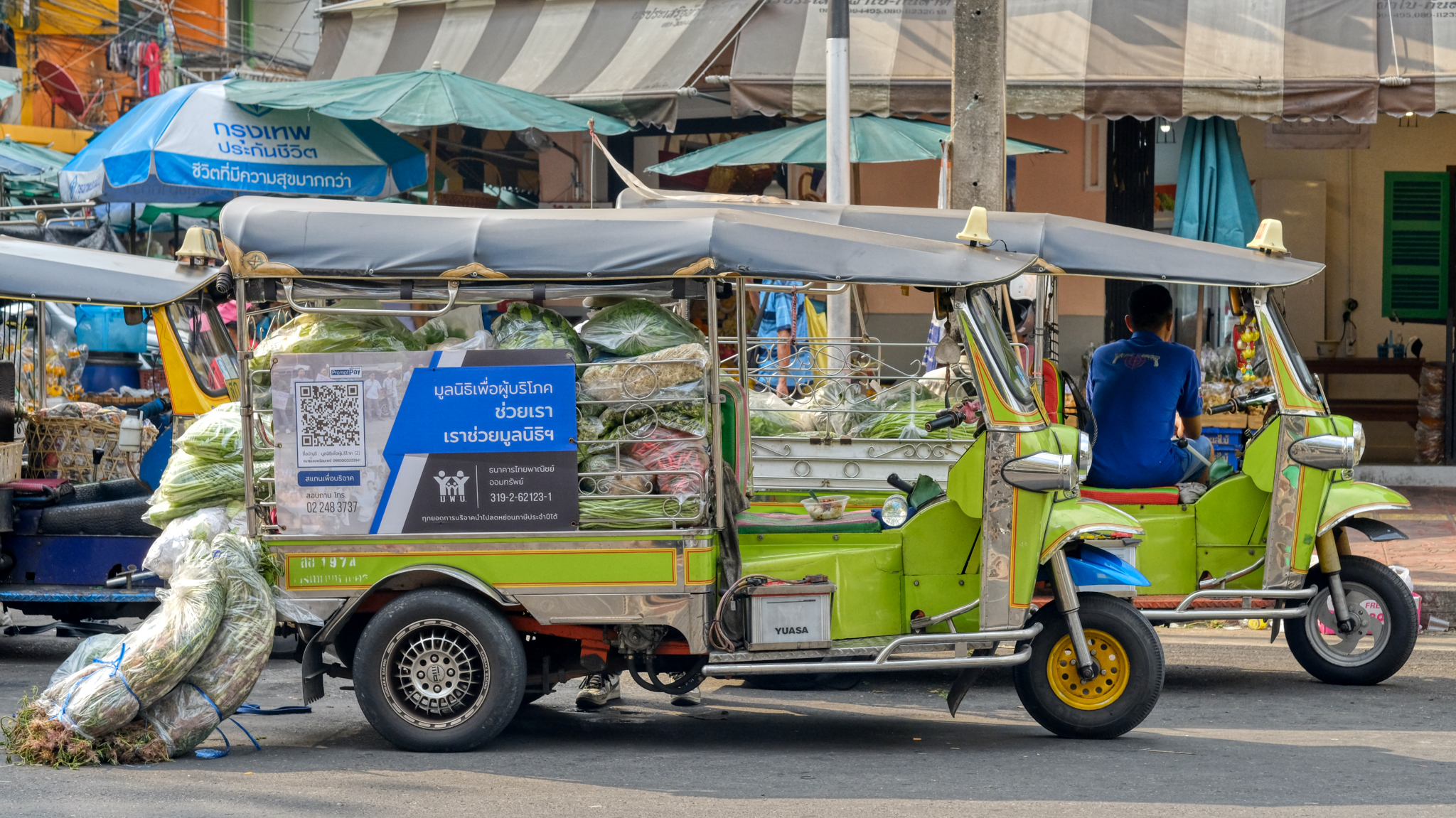 Produce all loaded in the tuk-tuk bound for a restaurent or small market somewhere in the city.
Produce all loaded in the tuk-tuk bound for a restaurent or small market somewhere in the city.
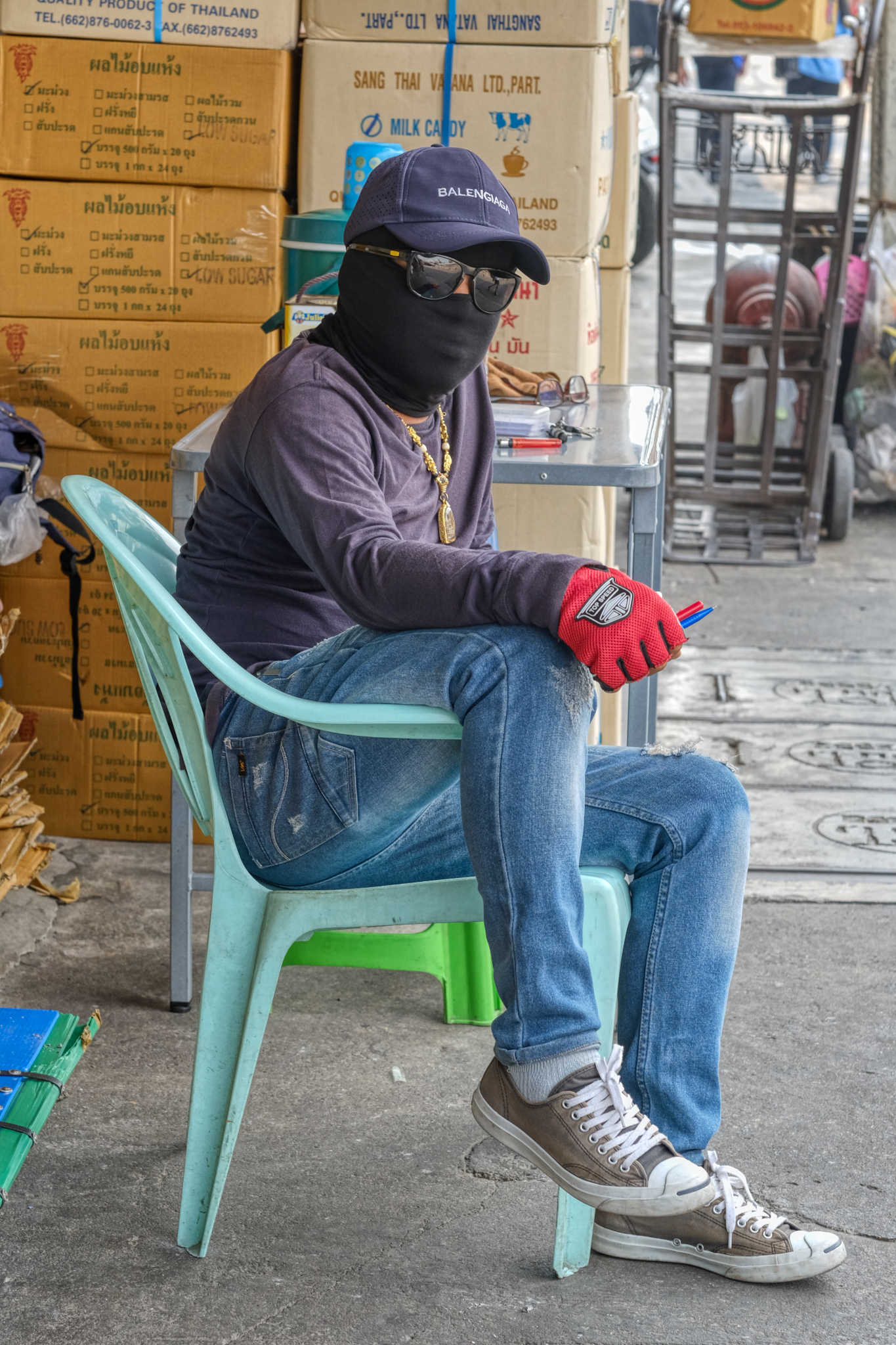 Who was that masked man? A flower market worker taking a break.
Who was that masked man? A flower market worker taking a break.
-------------------------------------------------
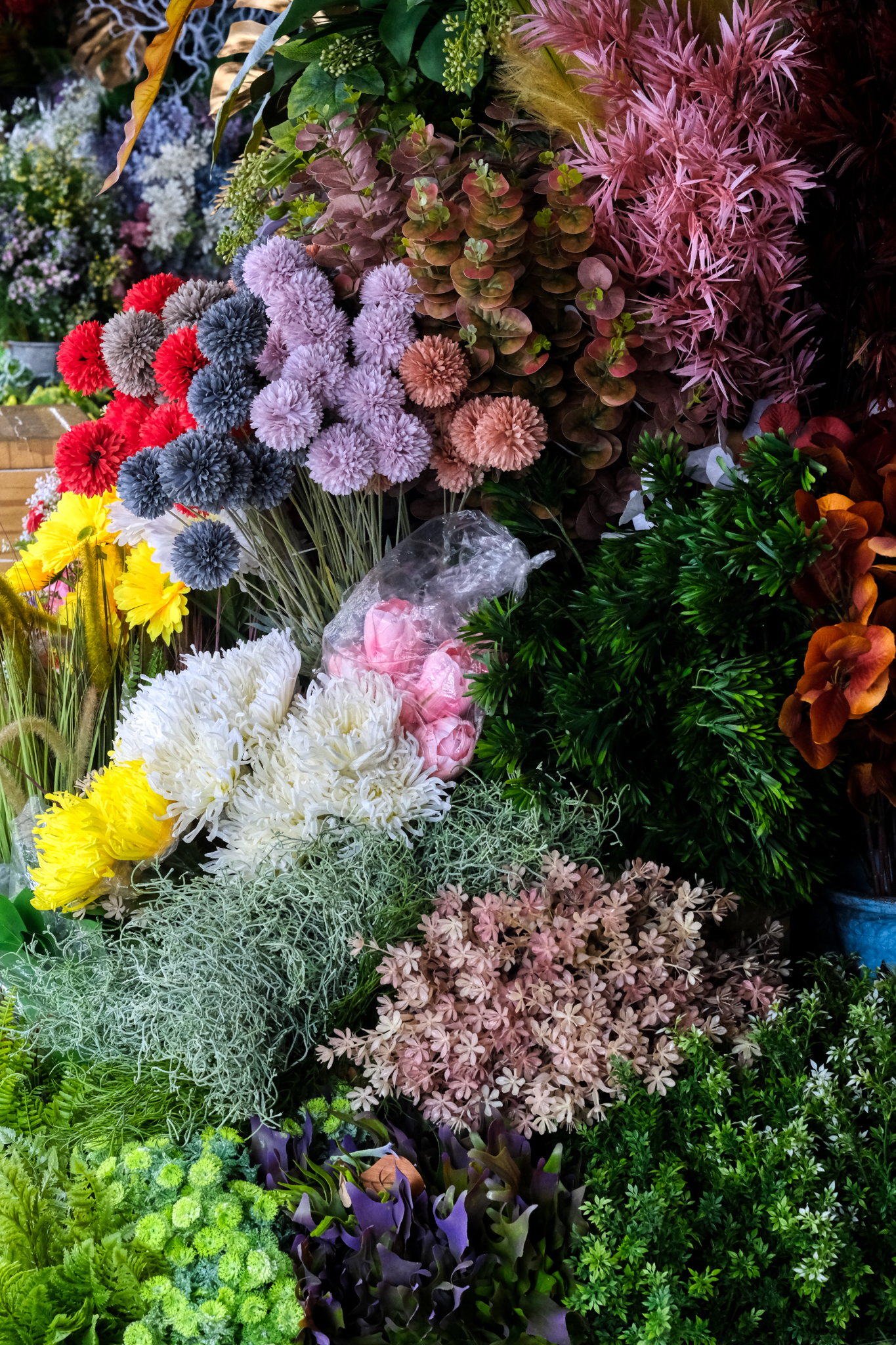 We walked a few blocks from the flower market to find a very good cup of coffee . . . and stumbled upon this shop selling "fake" plastic flowers: incredibly realistic plastic flowers. I guess some people get tired of having to buy fresh flowers over and over . . .
We walked a few blocks from the flower market to find a very good cup of coffee . . . and stumbled upon this shop selling "fake" plastic flowers: incredibly realistic plastic flowers. I guess some people get tired of having to buy fresh flowers over and over . . .
A New Years Eve Ramble Near Hua Hin, Thailand
 Friday, March 20, 2020 at 2:05PM
Friday, March 20, 2020 at 2:05PM 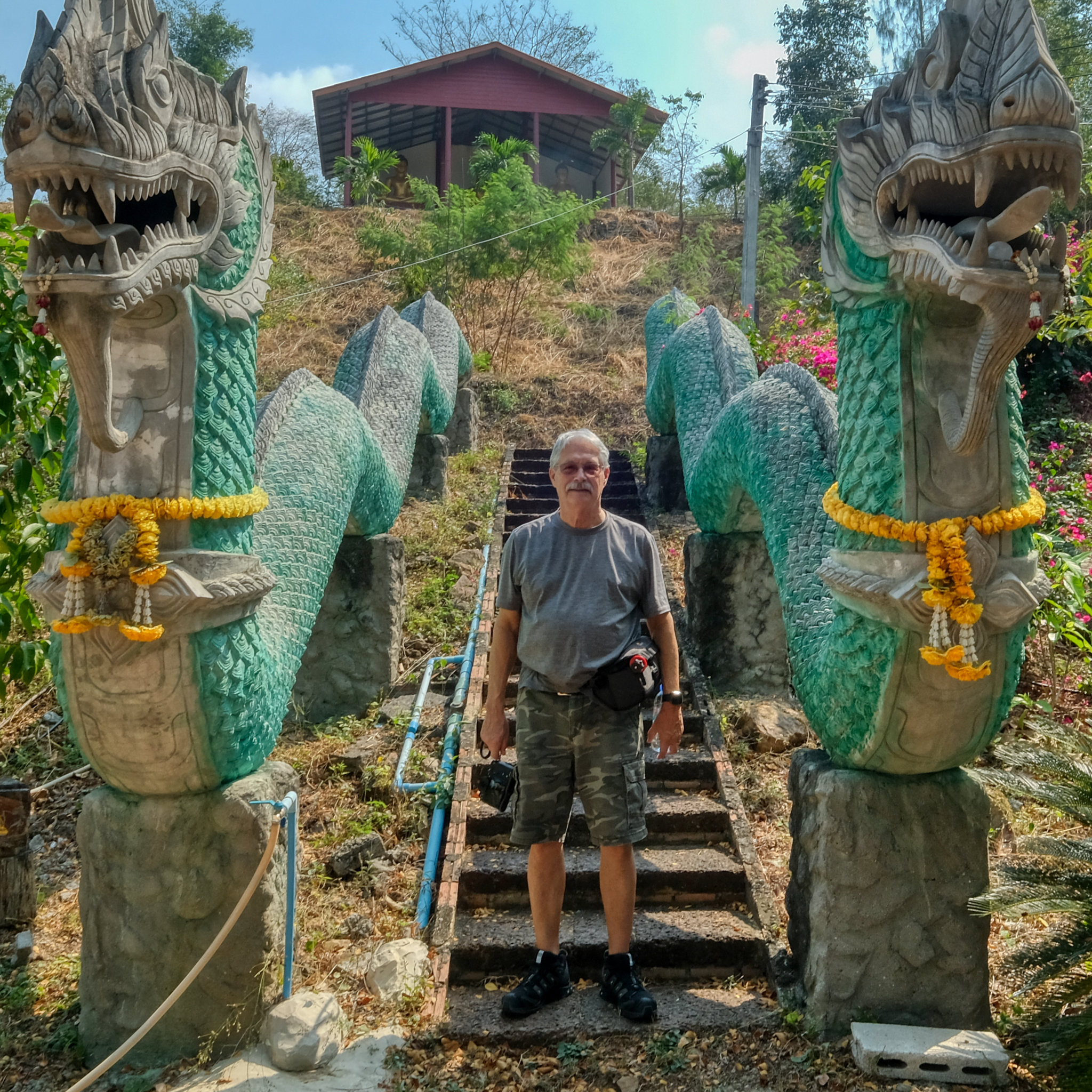 My visiting friend (of 45 years) on the verge of a long climb!
My visiting friend (of 45 years) on the verge of a long climb!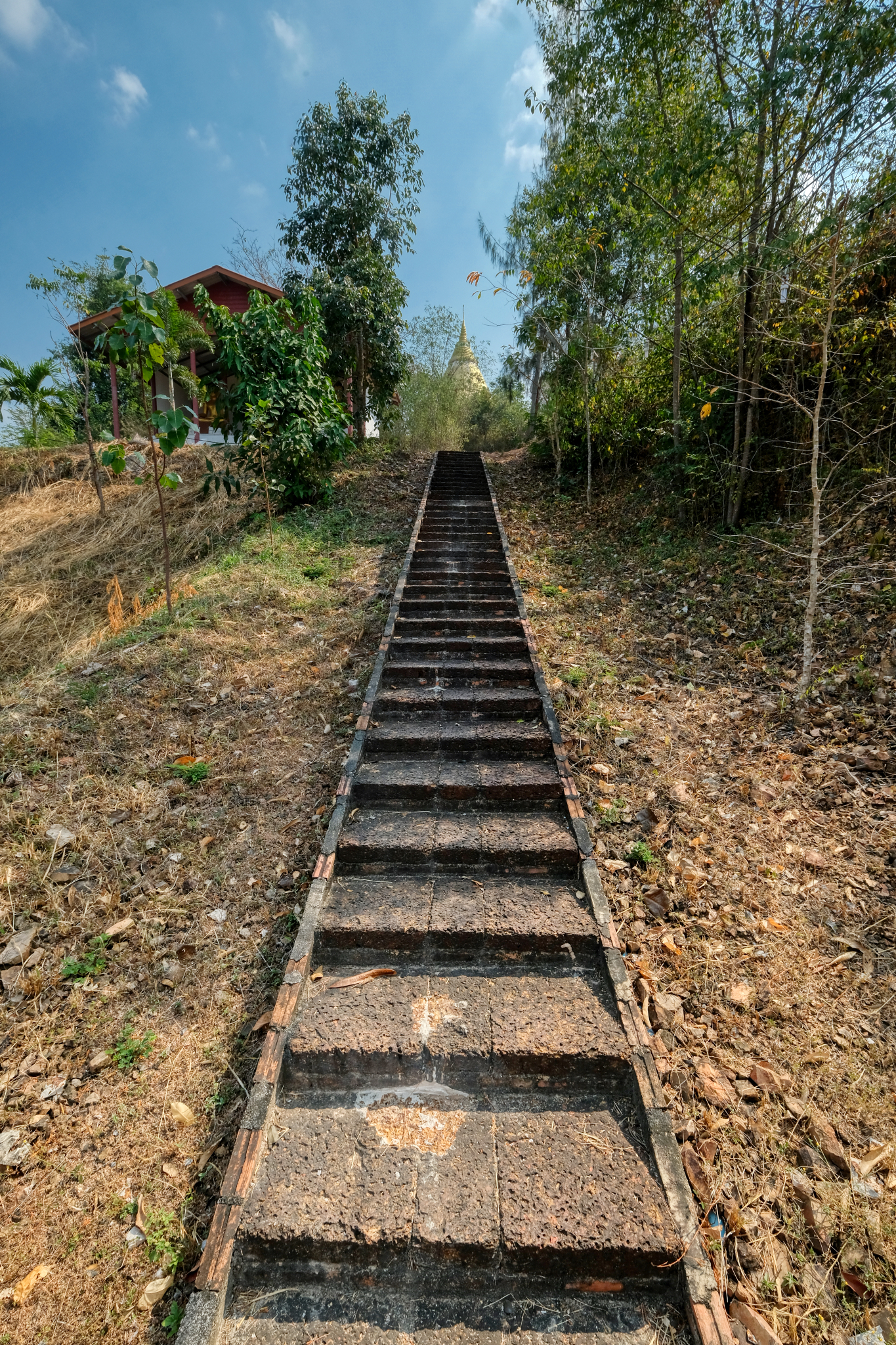 A long way up to the chedi.
A long way up to the chedi. 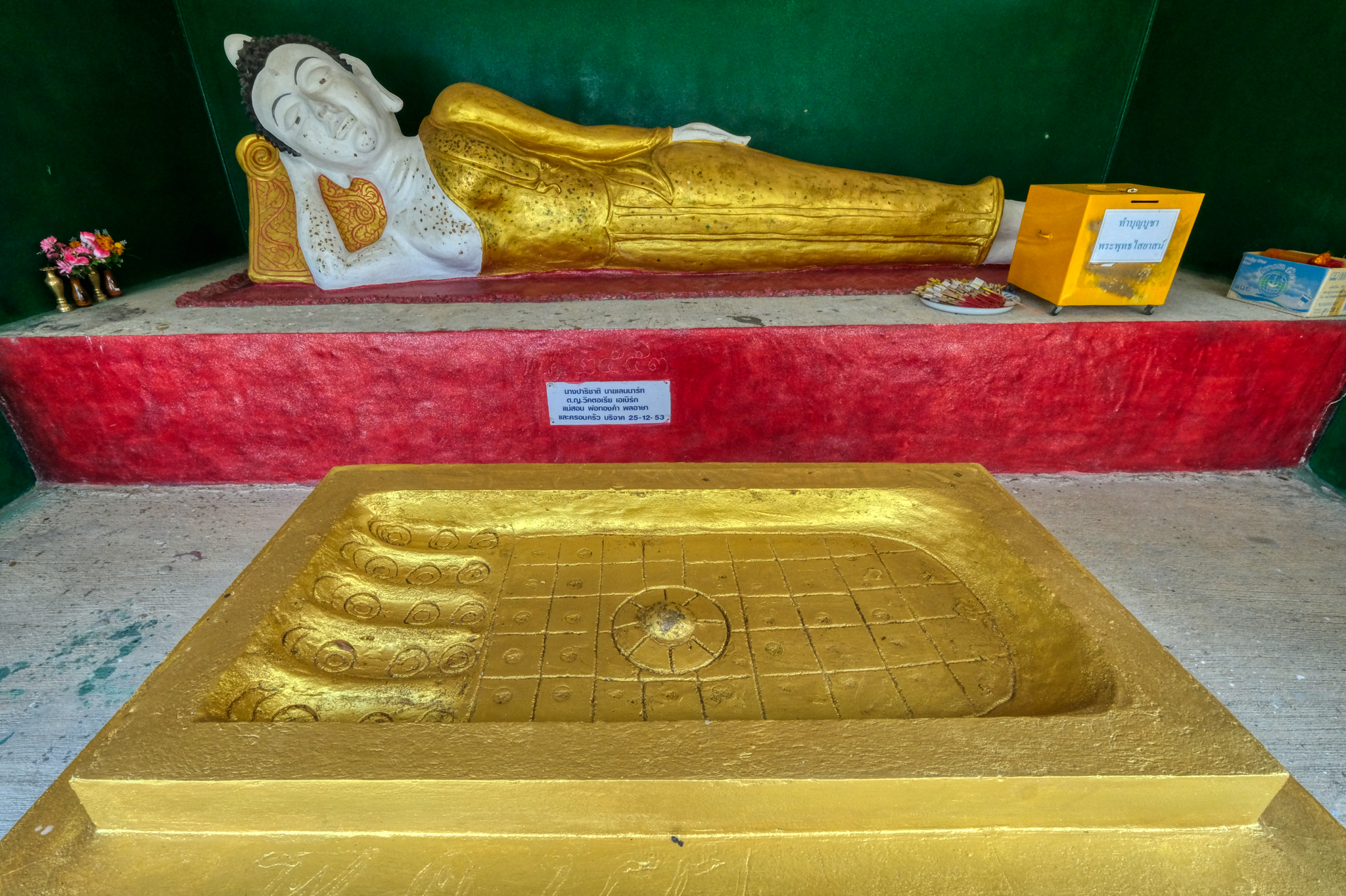 A beautiful shrine with a reclining Buddha on the way up . . .
A beautiful shrine with a reclining Buddha on the way up . . . 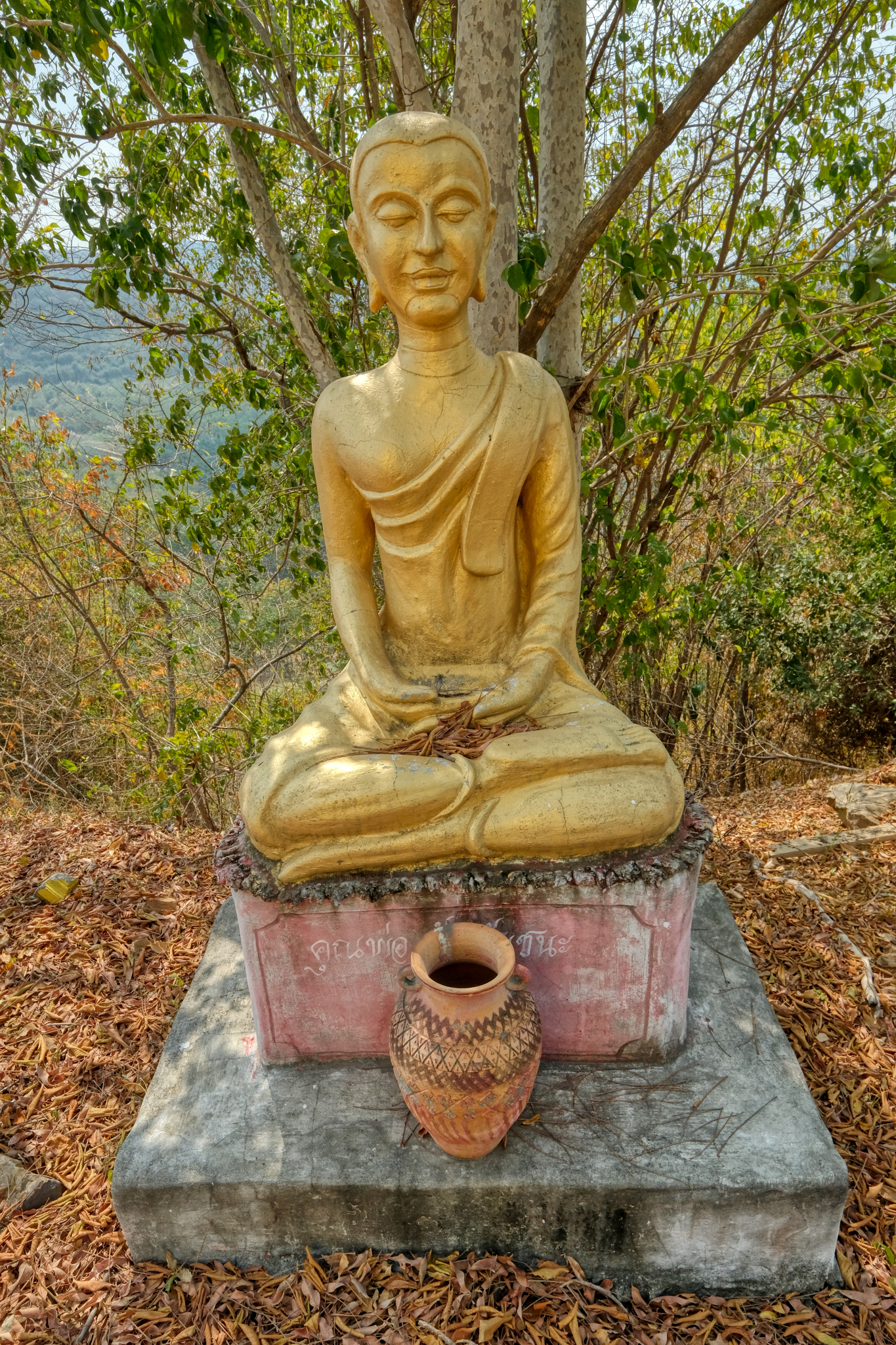 This 'naive art' Buddha image was very heartwarming.
This 'naive art' Buddha image was very heartwarming.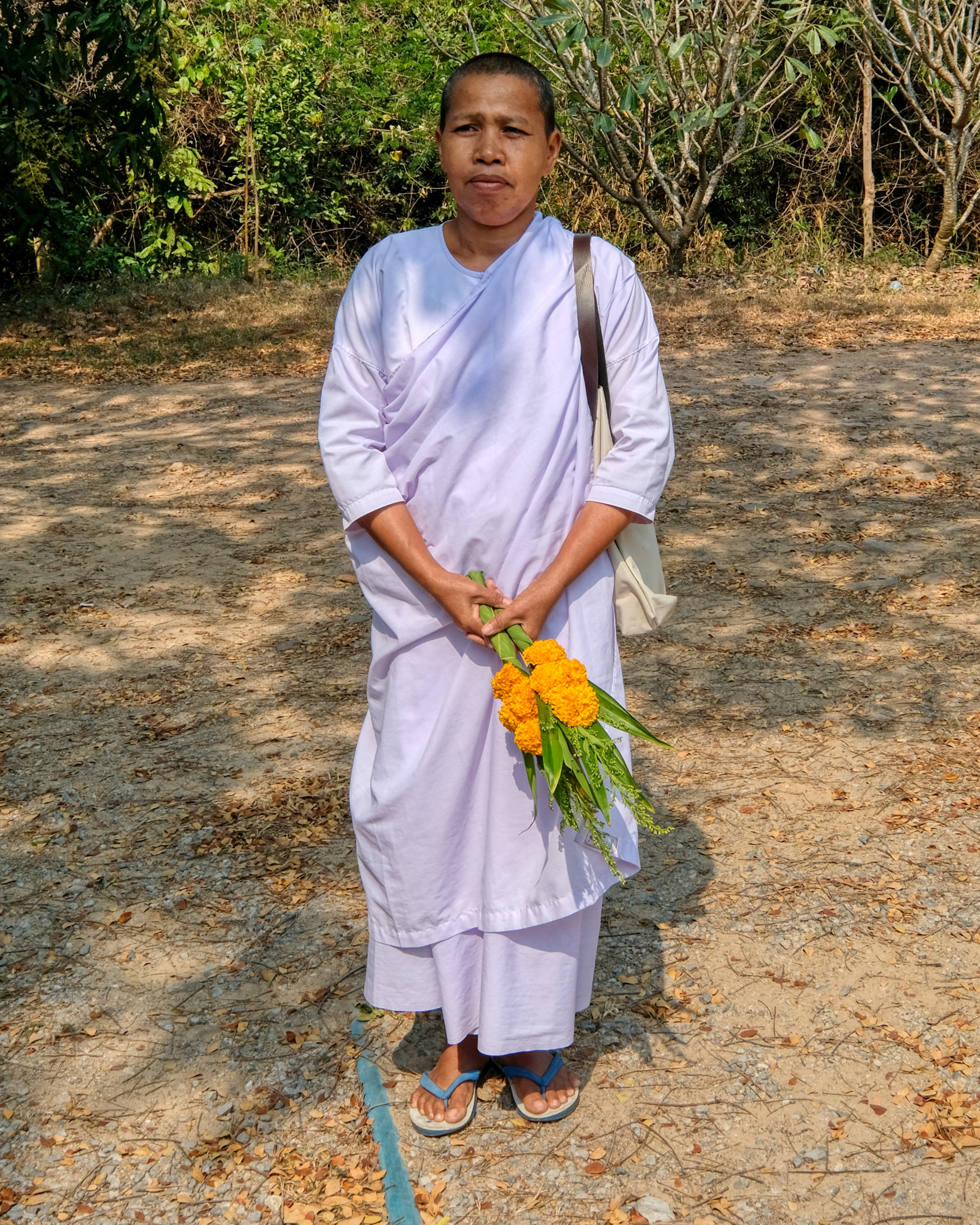 This Buddhist 'nun' followed us around for the afternoon. She is a kind of security guard. Good idea . . . there are some very beautiful and rare Buddha statues in the golden chedi (known as a 'stupa' in other Buddhist trditions and countries).
This Buddhist 'nun' followed us around for the afternoon. She is a kind of security guard. Good idea . . . there are some very beautiful and rare Buddha statues in the golden chedi (known as a 'stupa' in other Buddhist trditions and countries).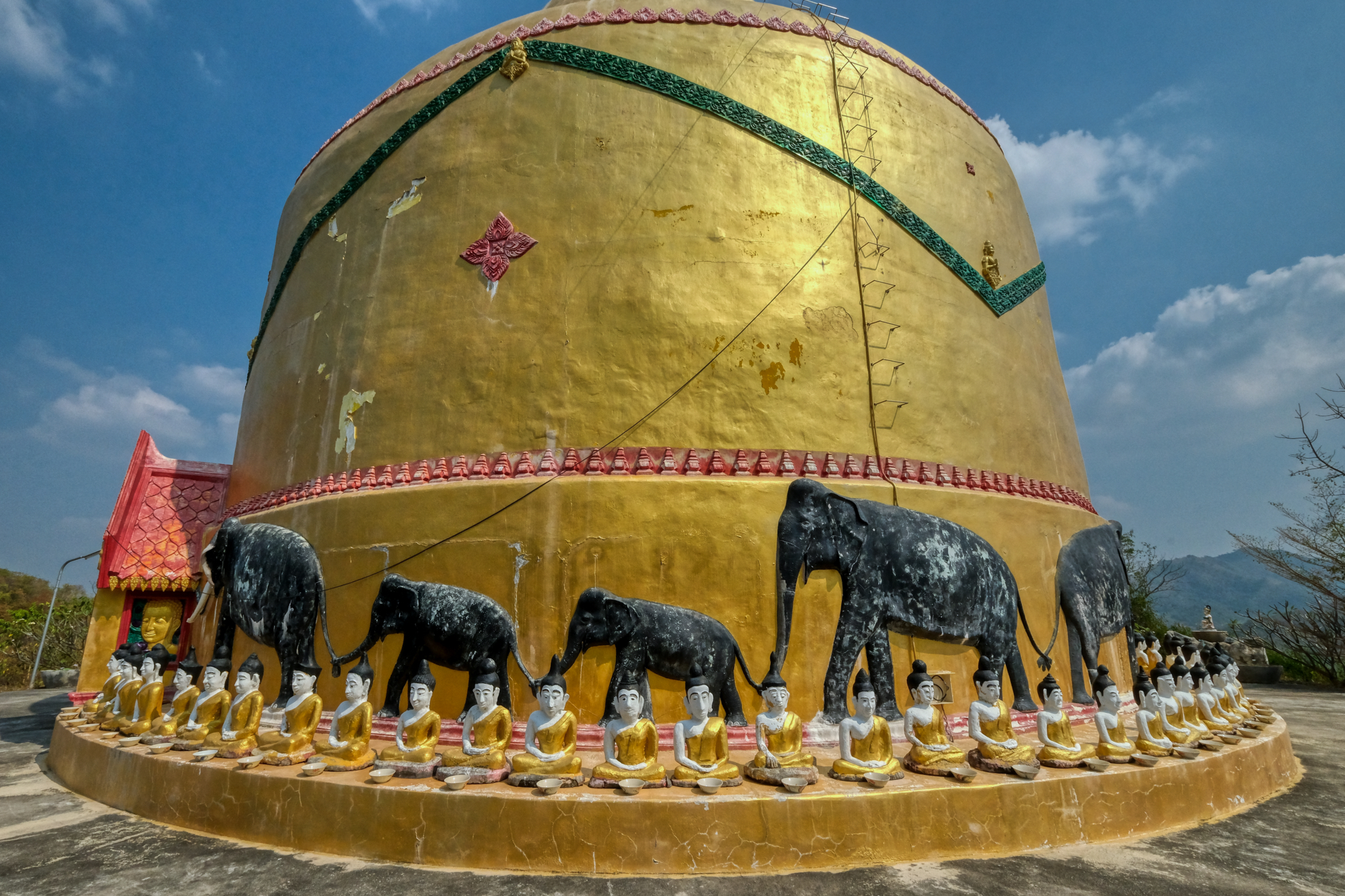 This is what I had taken my friend to see . . . and for me, to see again.
This is what I had taken my friend to see . . . and for me, to see again.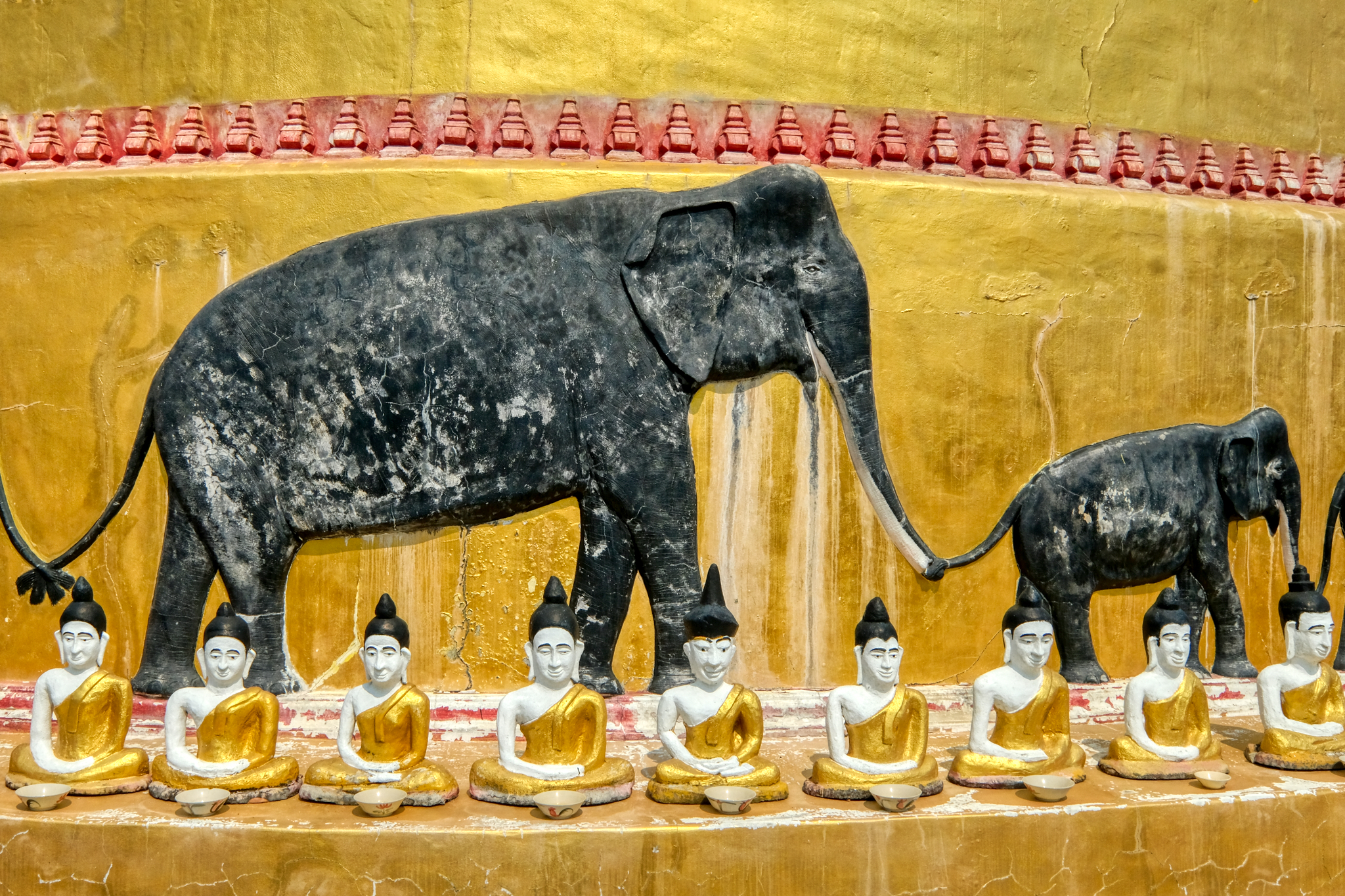 More fascinating, and individualistic, naive art Buddha images. As interesting as the outside of the chedi was, it is the inside that brought me back!
More fascinating, and individualistic, naive art Buddha images. As interesting as the outside of the chedi was, it is the inside that brought me back!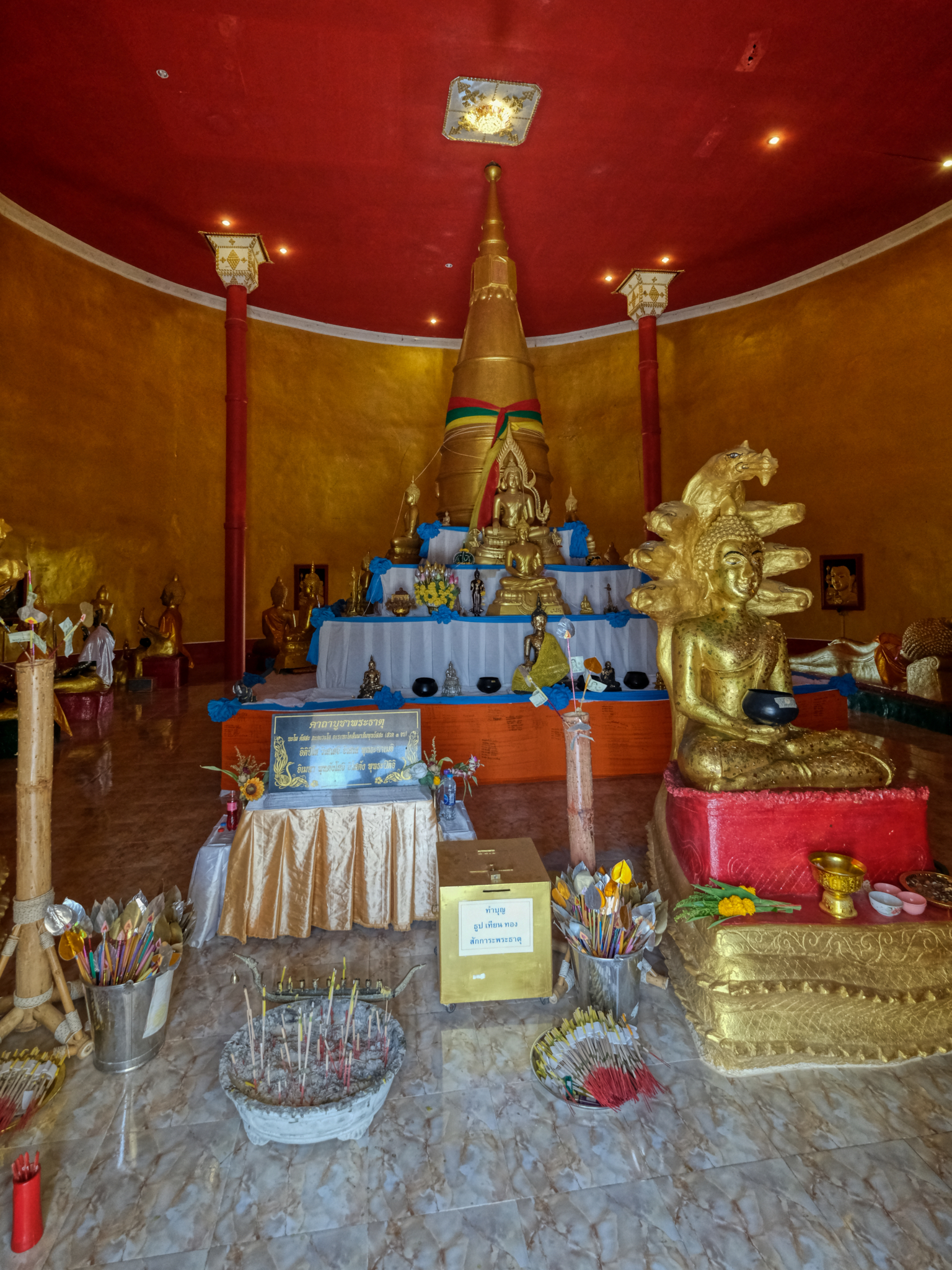 Looking into the chedi interior from the front door. WOW!
Looking into the chedi interior from the front door. WOW!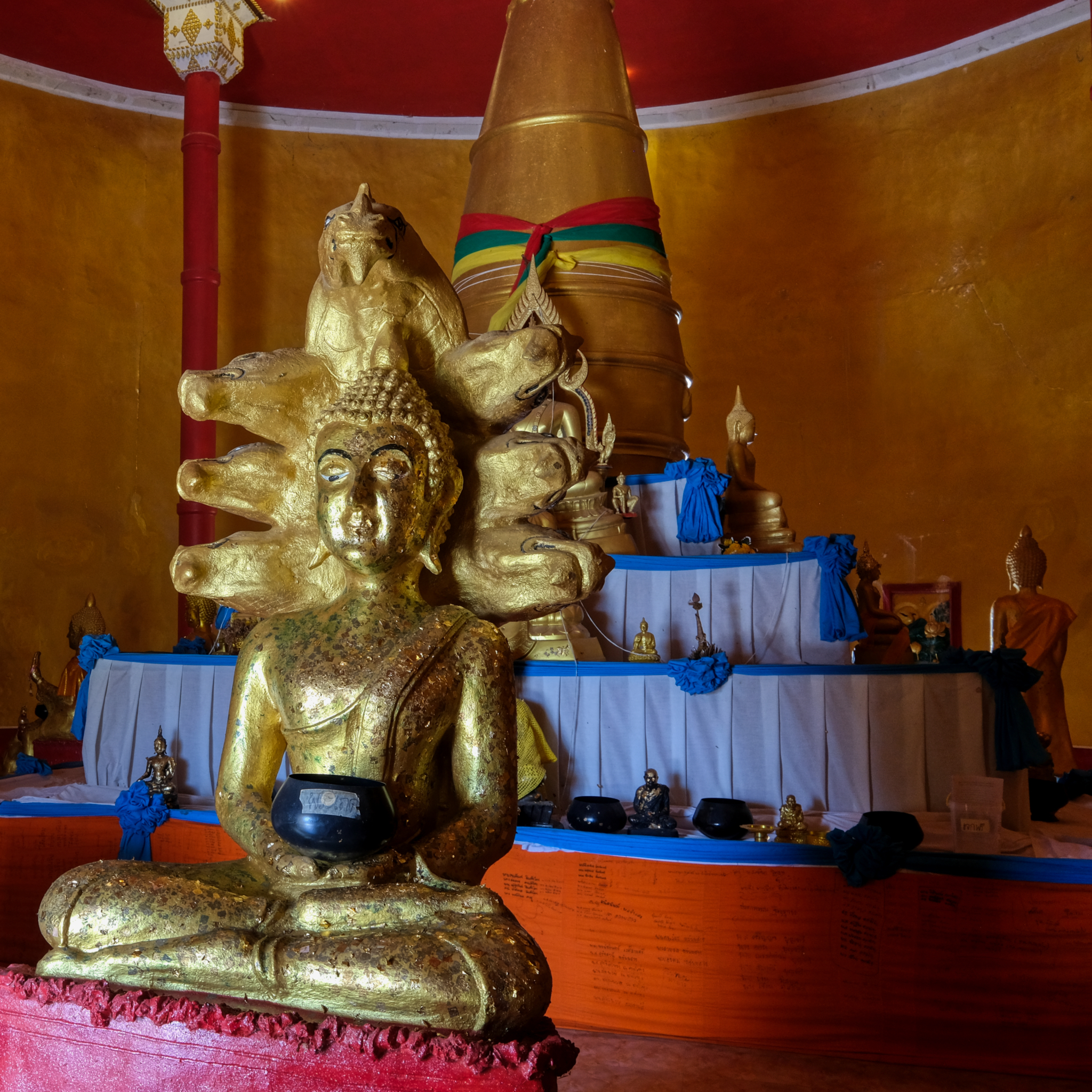 The light was so scrumptious, the images so serene . . .
The light was so scrumptious, the images so serene . . .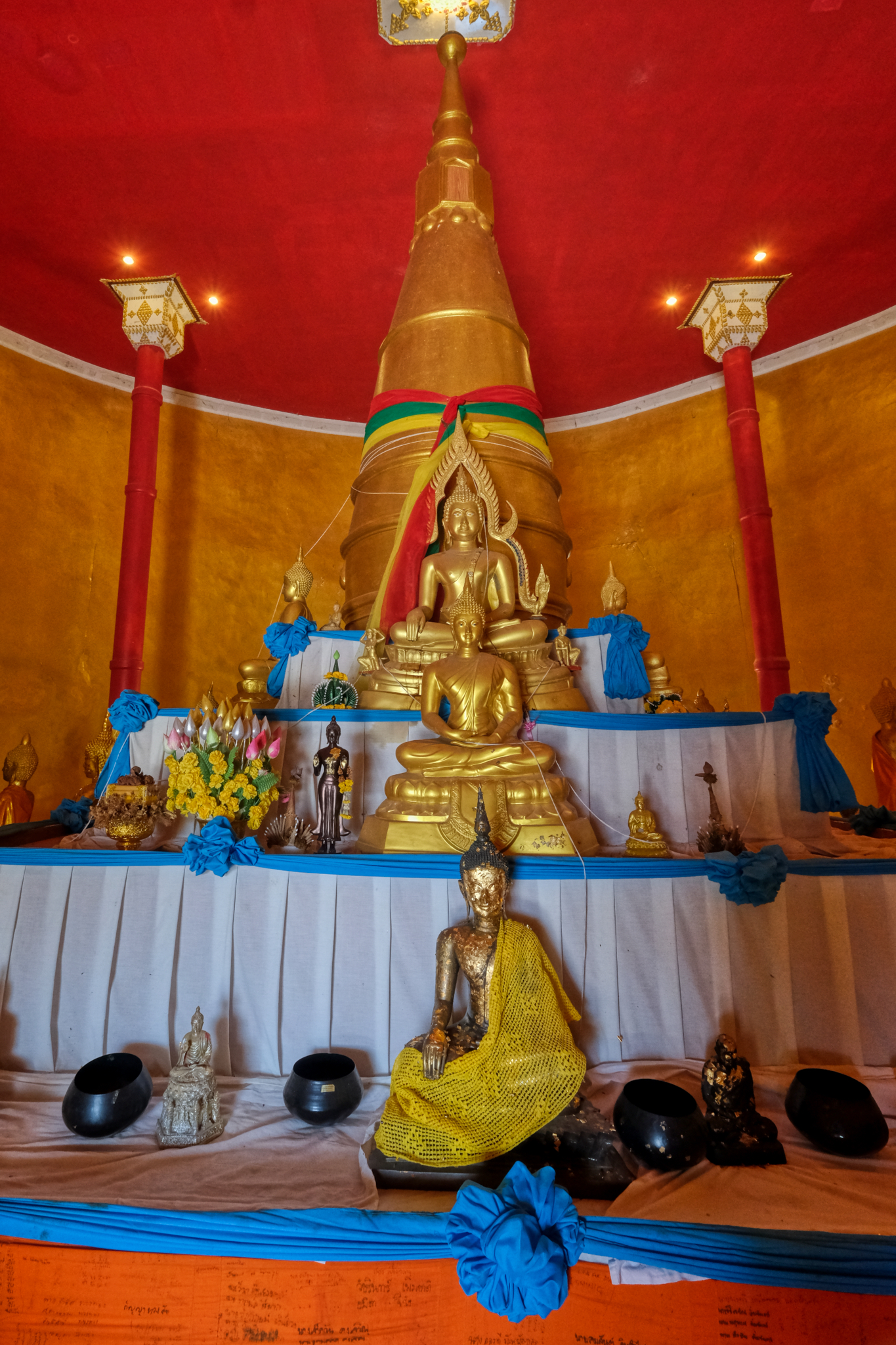 The front of the entry altar. The big interior in its marvelously bright colors.
The front of the entry altar. The big interior in its marvelously bright colors.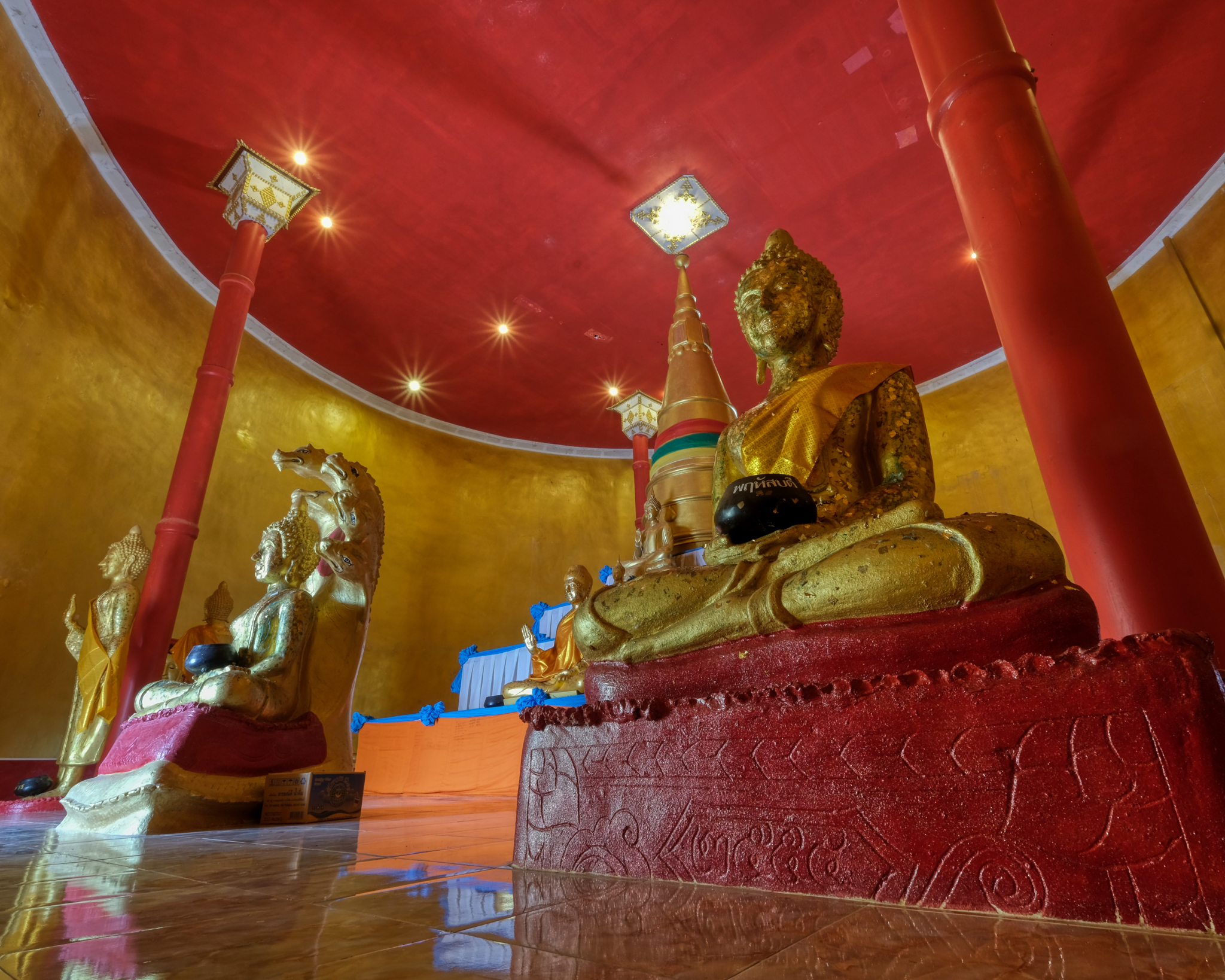 My camera on a small tripod . . . so many superb images to capture.
My camera on a small tripod . . . so many superb images to capture.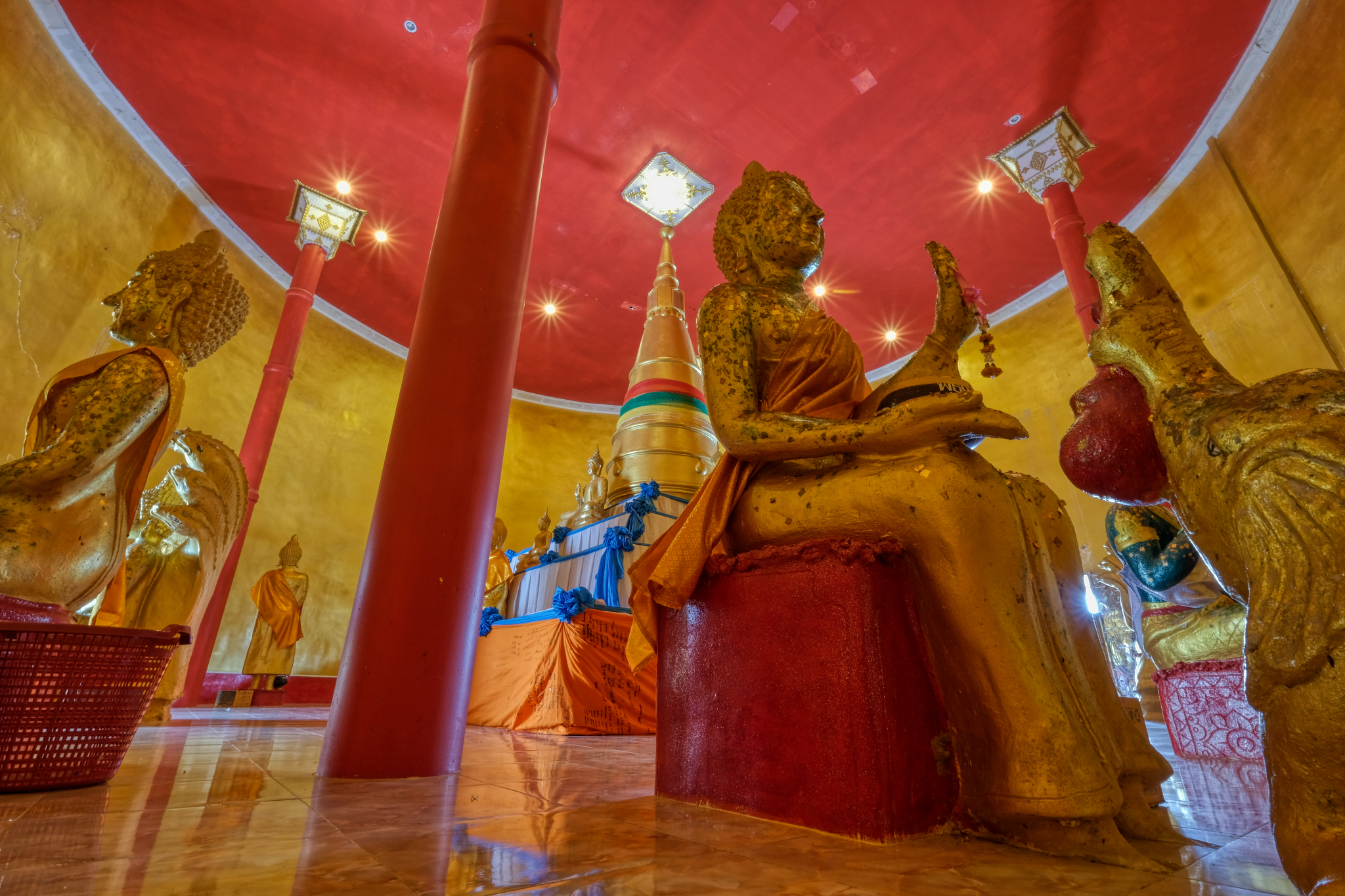
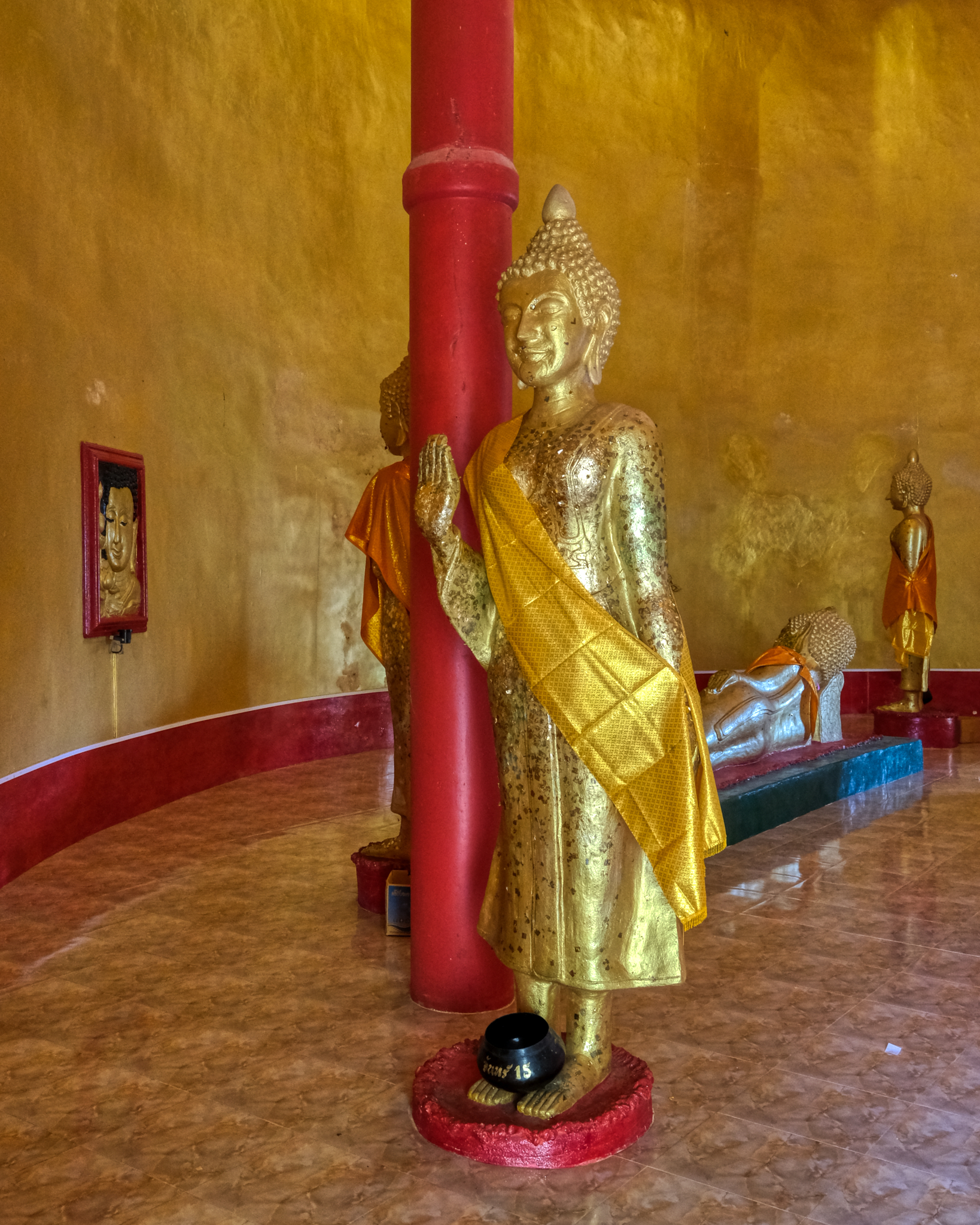 Holding Back The River of samsaric temptation.
Holding Back The River of samsaric temptation.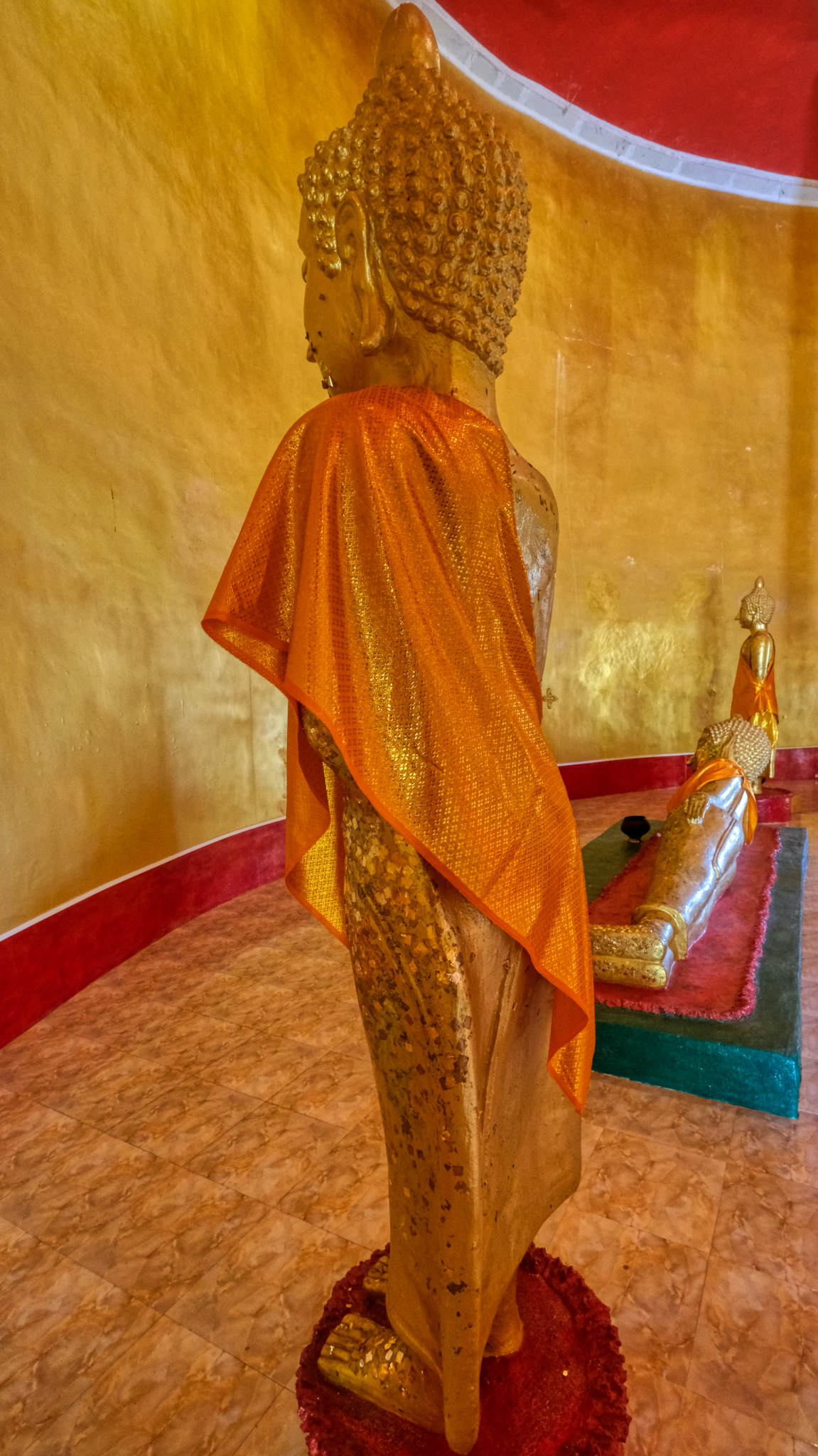 Beautiful spiritual space of Buddhanature.
Beautiful spiritual space of Buddhanature.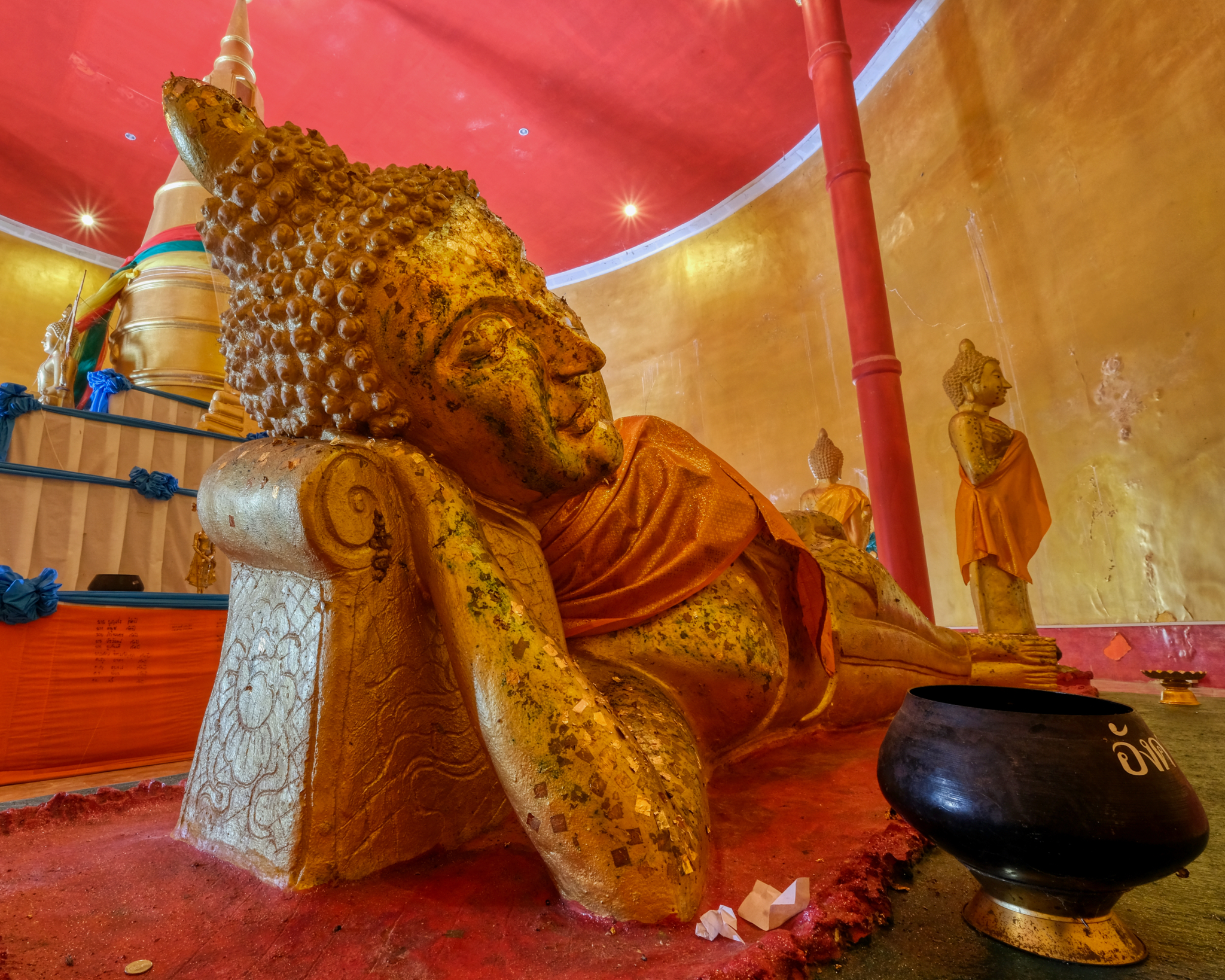 A Reclining Buddha . . . this posture represents the mahāparinabbāna: the Buddha's final state of enlightenment before his death!
A Reclining Buddha . . . this posture represents the mahāparinabbāna: the Buddha's final state of enlightenment before his death!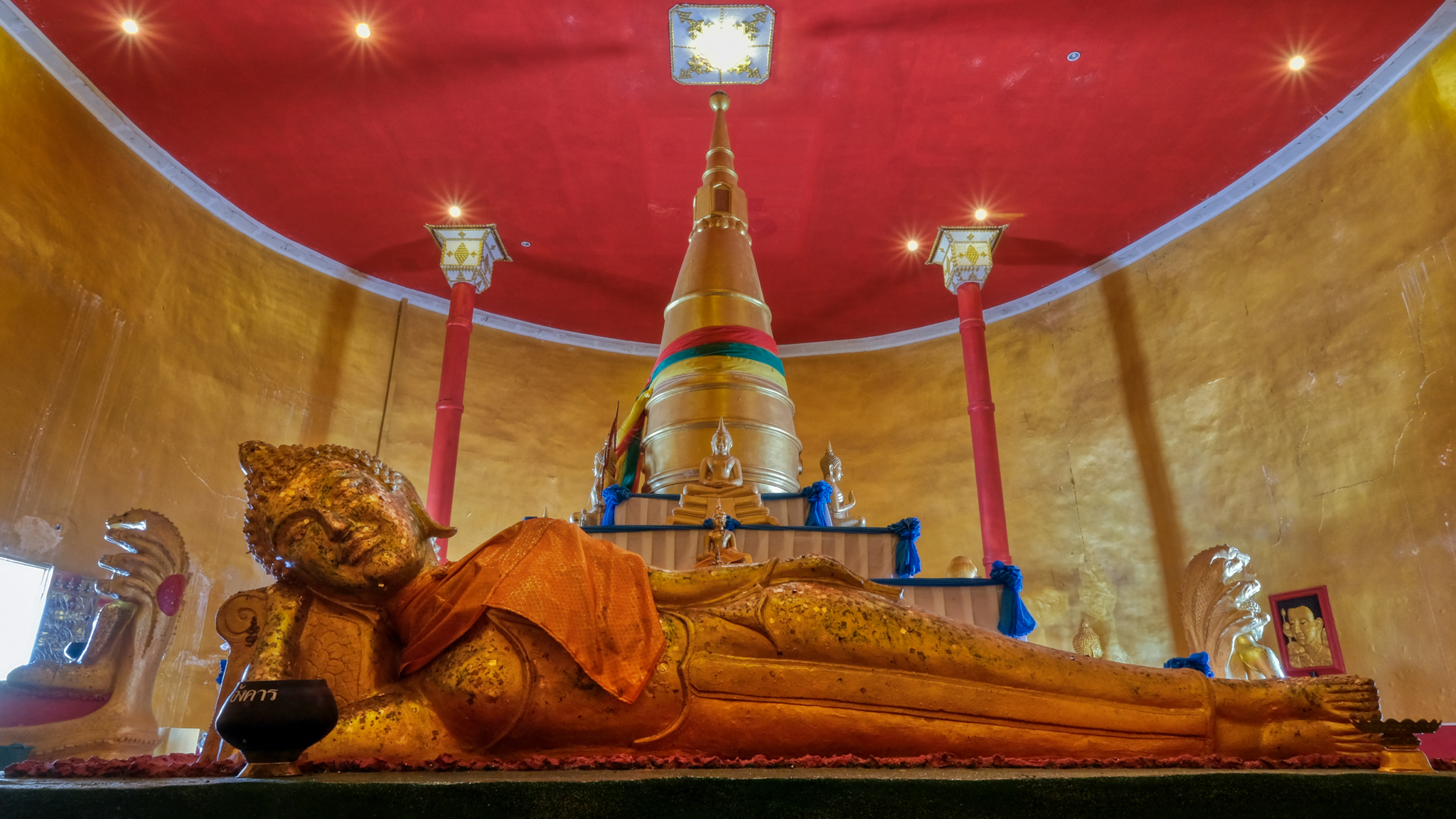 The last time I was in this chedi I did not have a lens wide enough to take this photo. I'm very glad I came back, and would have come back even without a camera. This chedi has become a favorite spiritual pilgrimage site for me.
The last time I was in this chedi I did not have a lens wide enough to take this photo. I'm very glad I came back, and would have come back even without a camera. This chedi has become a favorite spiritual pilgrimage site for me.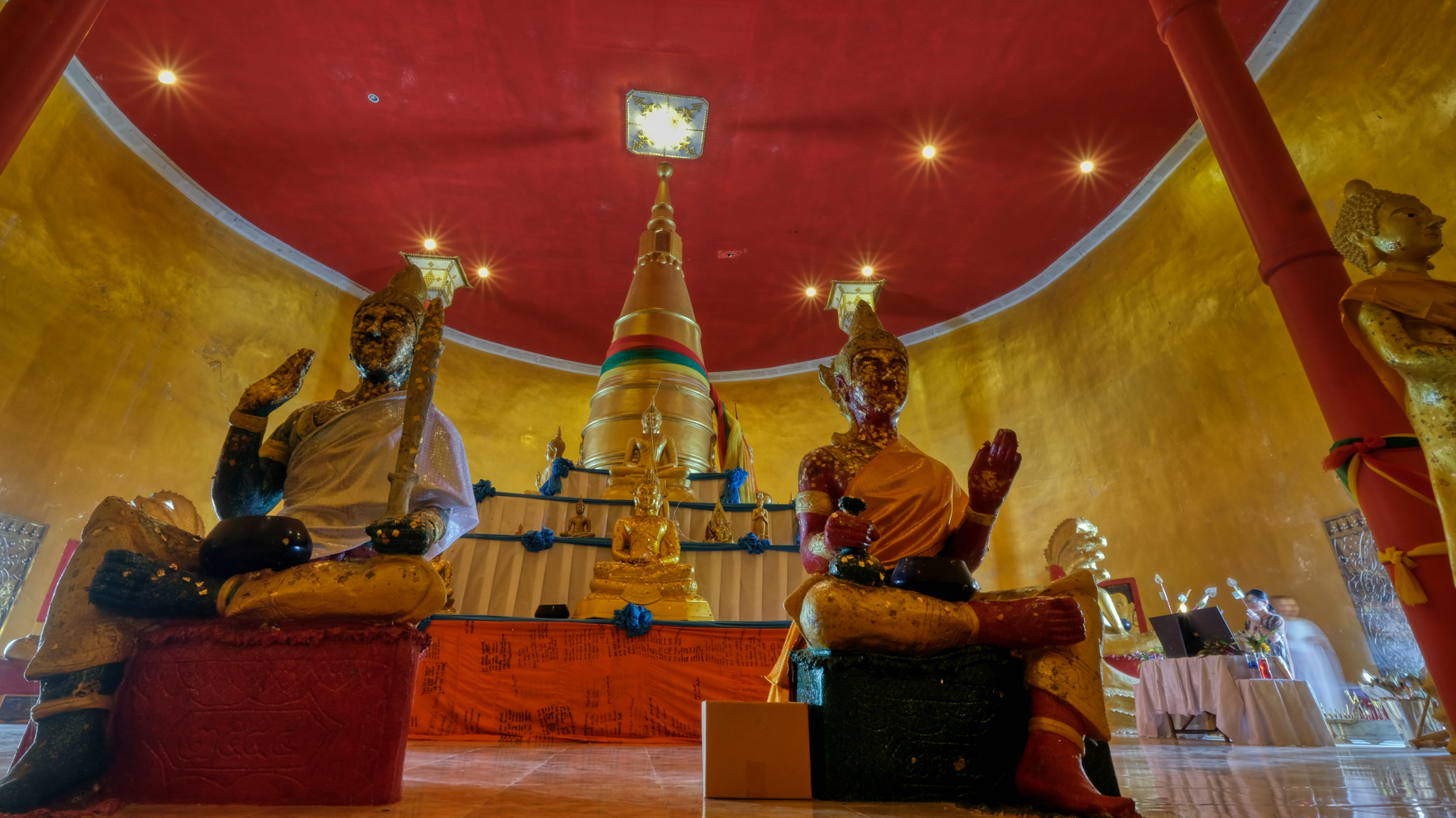 Each side of the central interior chedi presents a different compositional arrangement. Notice our nun and another pilgrim on the right.
Each side of the central interior chedi presents a different compositional arrangement. Notice our nun and another pilgrim on the right.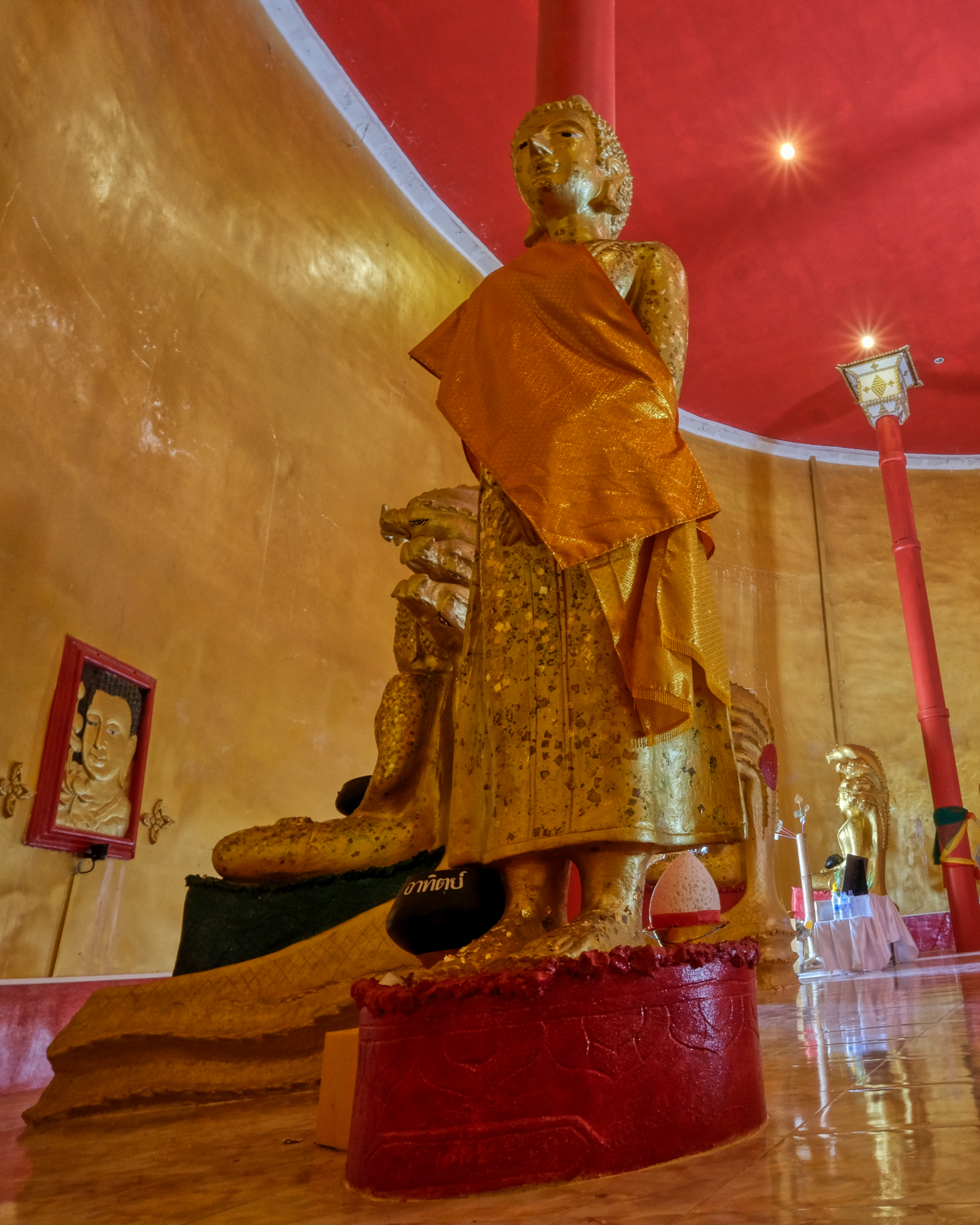 Move a few feet and see another striking composition . . .
Move a few feet and see another striking composition . . .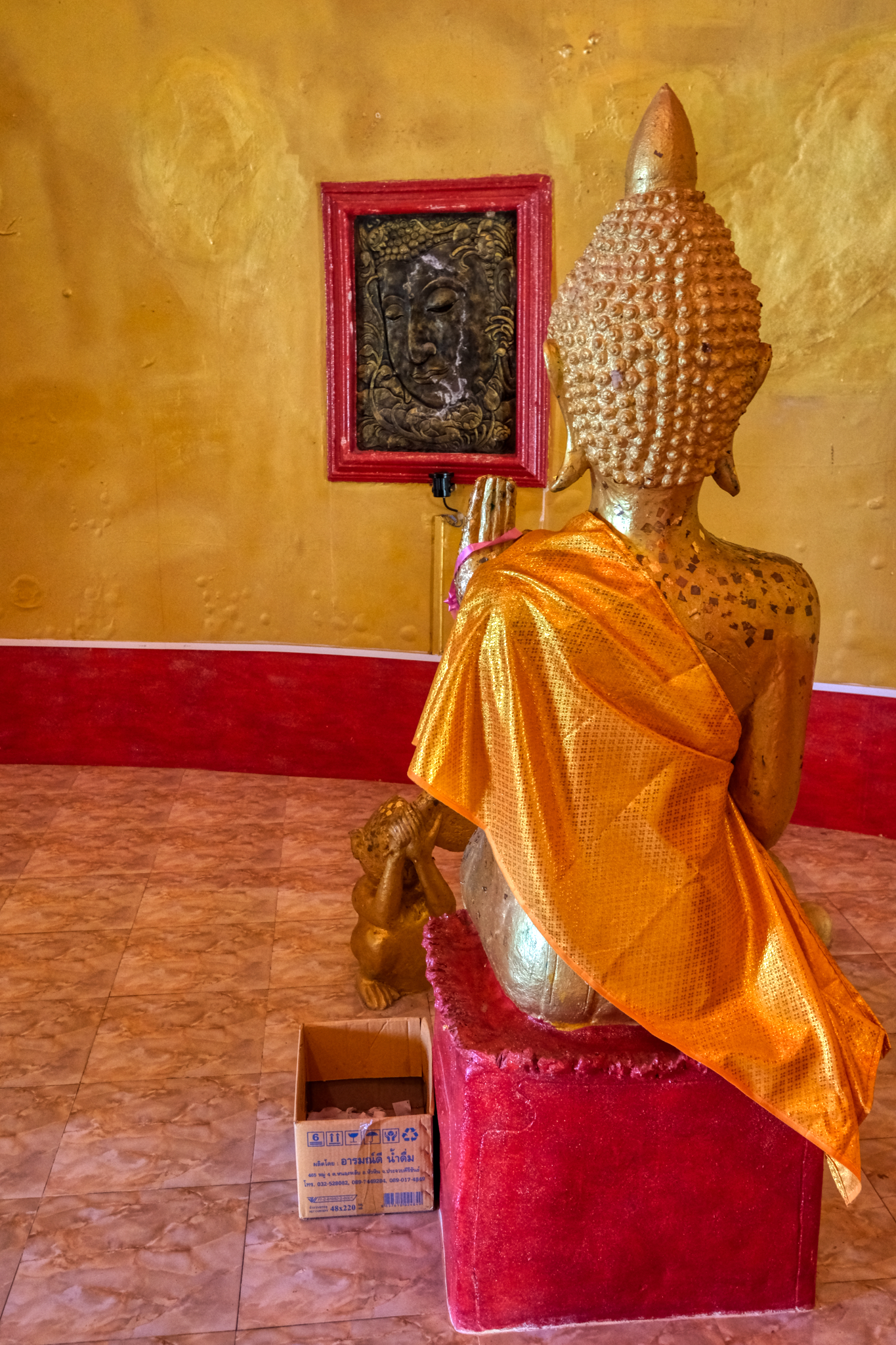 Not all of the statuary represents the Buddha. Some, like this one, are of bikkus, followers of the Buddha captured in a moment of listening to the dharma.
Not all of the statuary represents the Buddha. Some, like this one, are of bikkus, followers of the Buddha captured in a moment of listening to the dharma.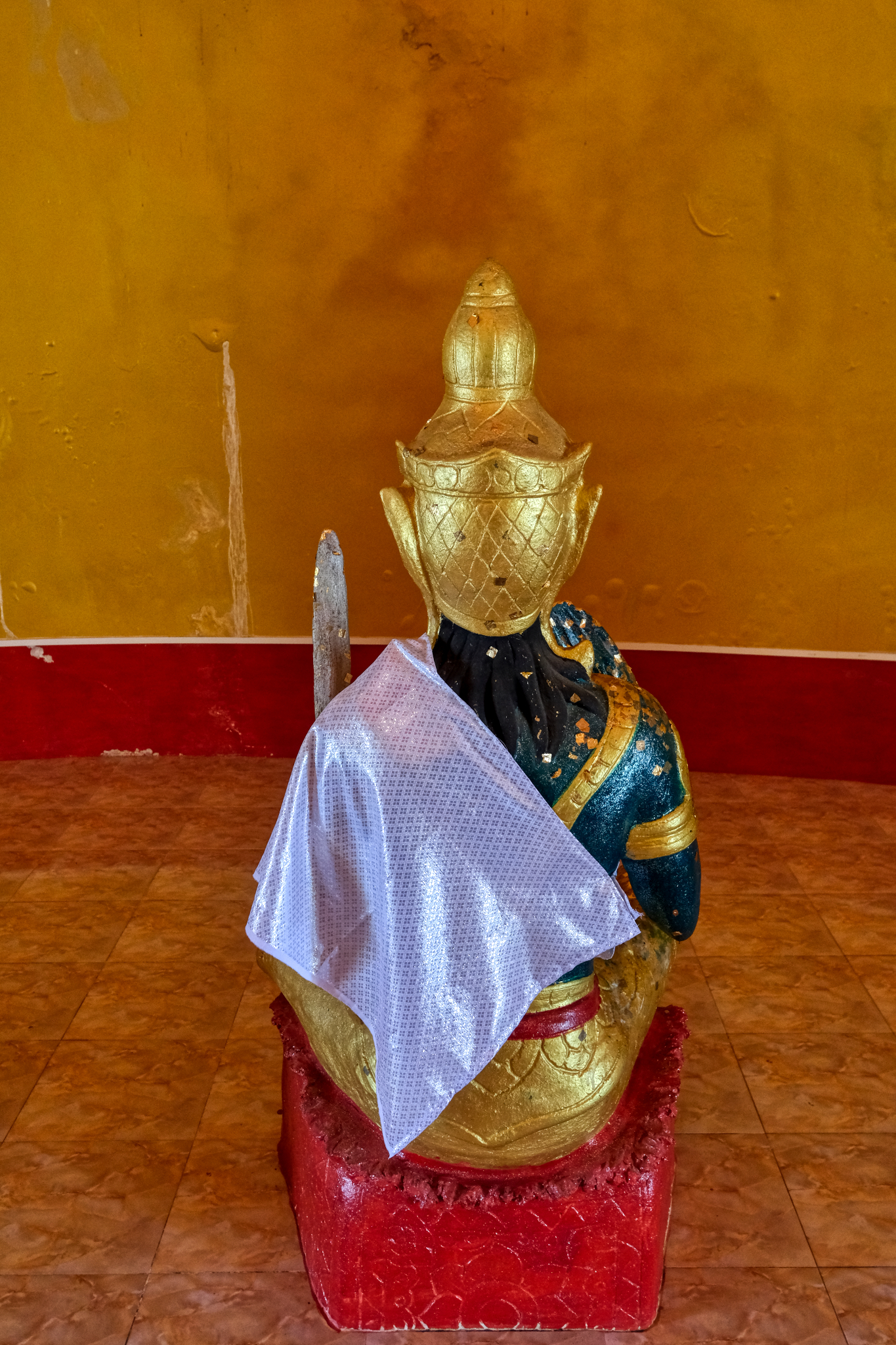 A bikku.
A bikku.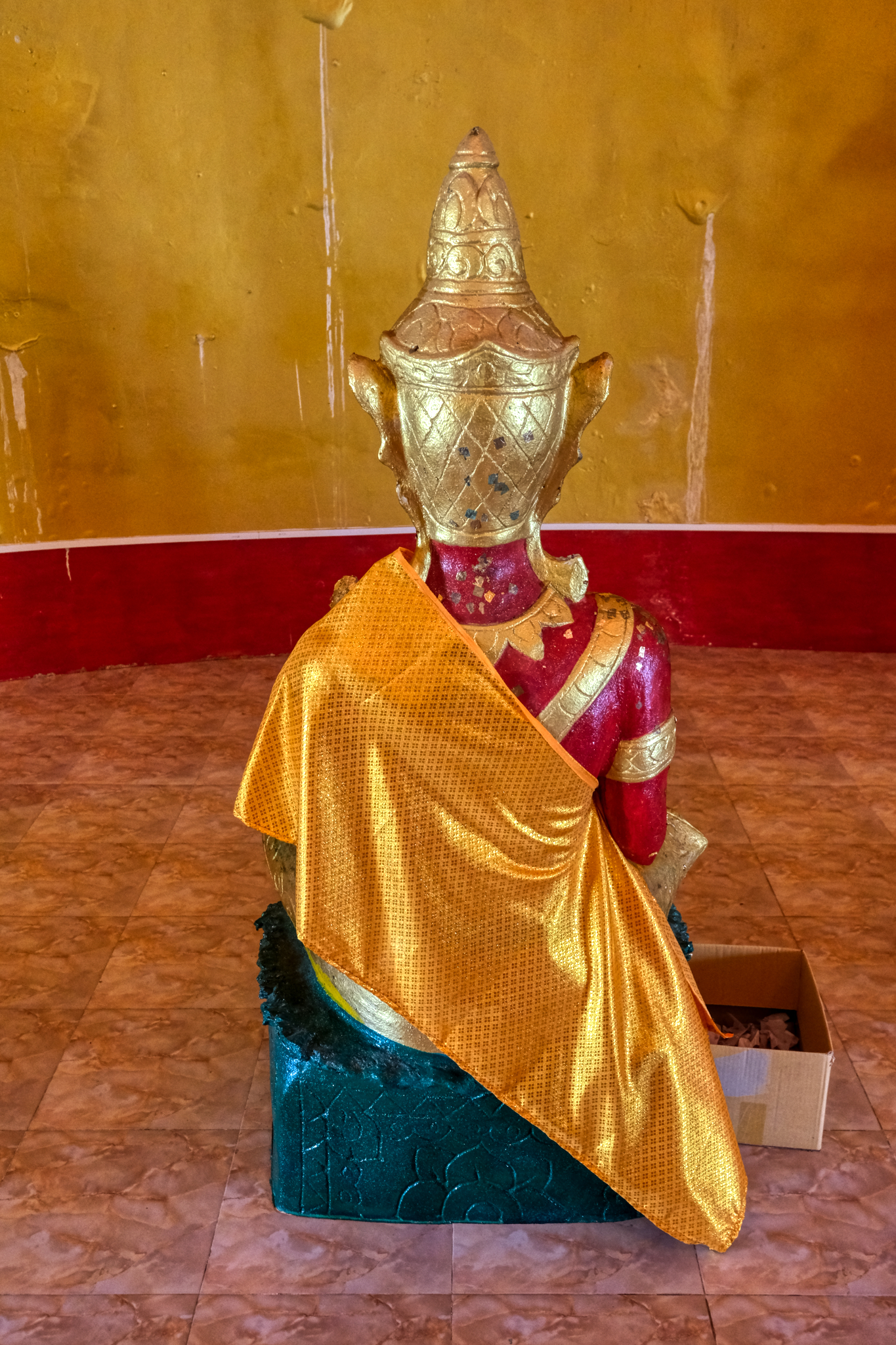 A bikku. The cardboard box is for the paper fold left over after a visitor has laid a piece of gold leaf on the statue in reverence.
A bikku. The cardboard box is for the paper fold left over after a visitor has laid a piece of gold leaf on the statue in reverence.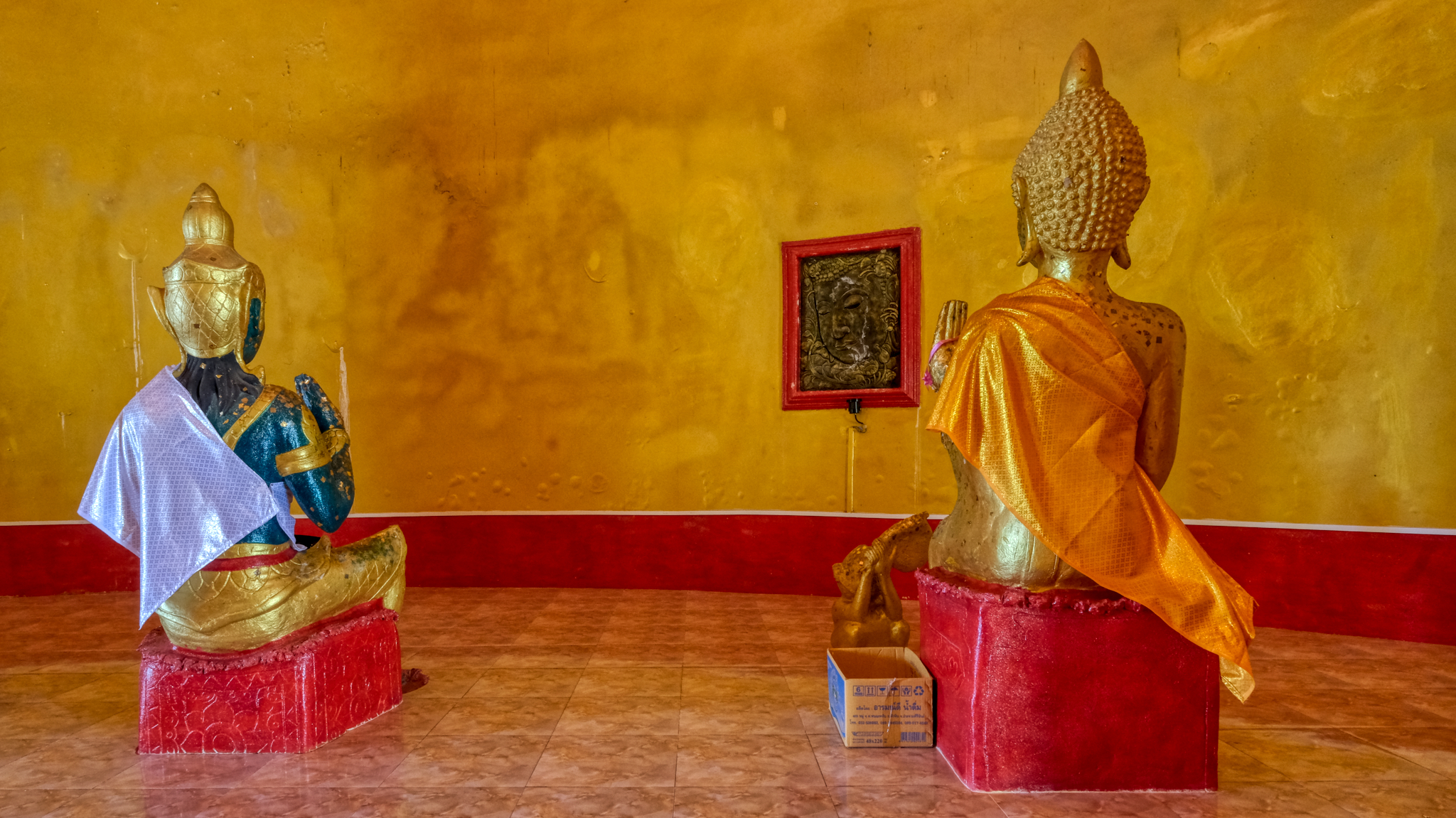 There is something so compelling about these dressed statues.
There is something so compelling about these dressed statues.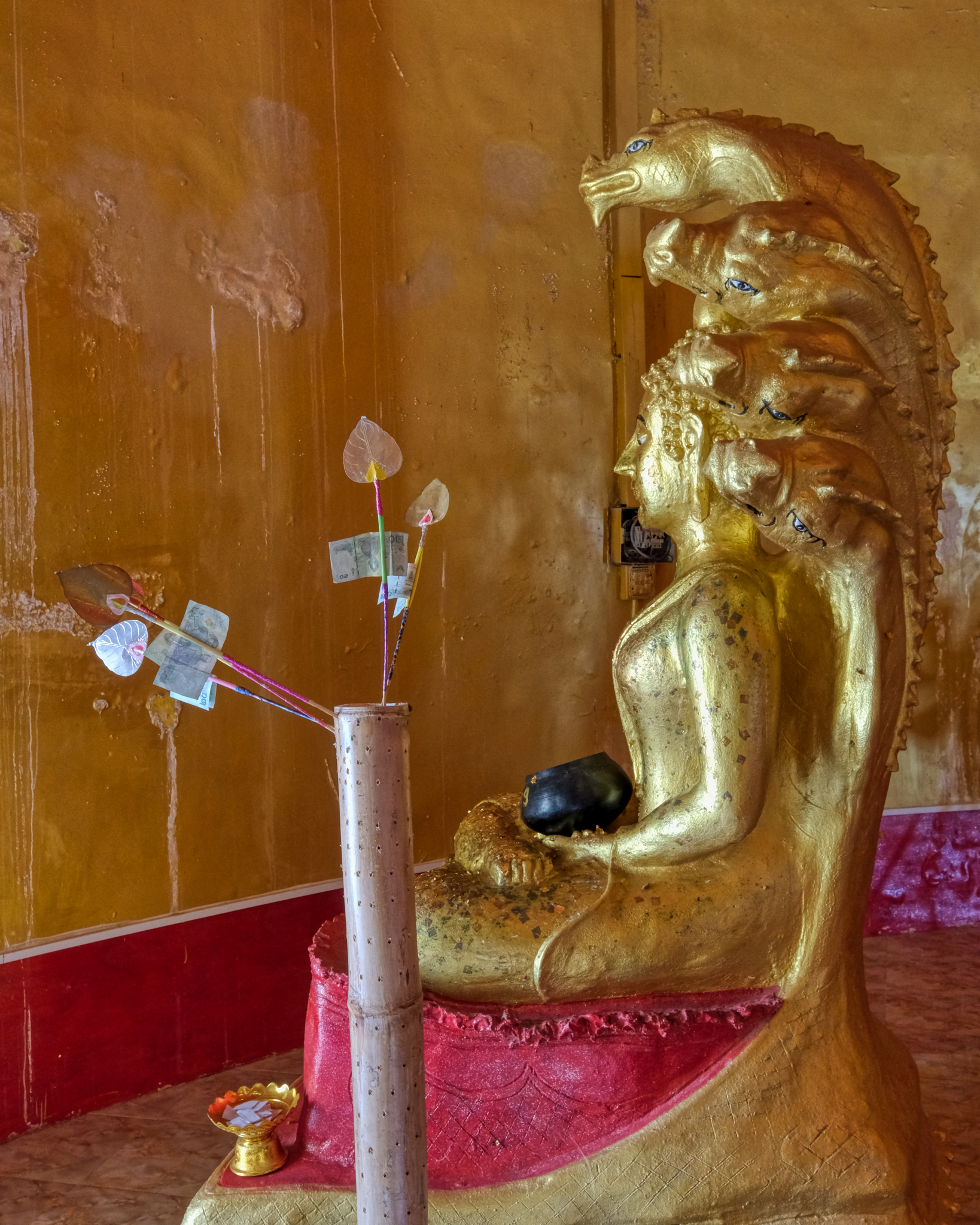 Every few feet . . . another image to never forget . . .
Every few feet . . . another image to never forget . . .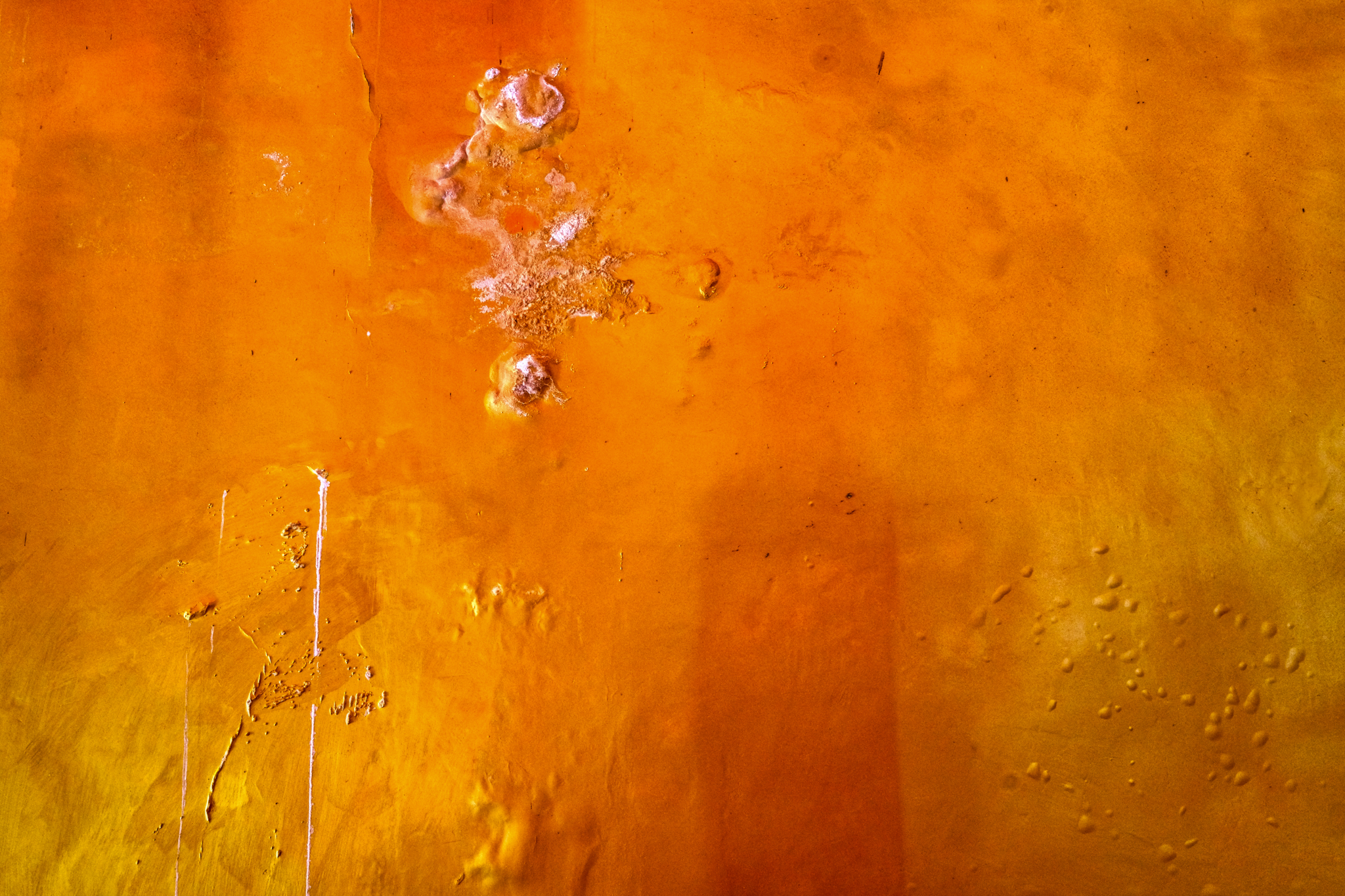 The walls themselves were a thing of wonder.
The walls themselves were a thing of wonder.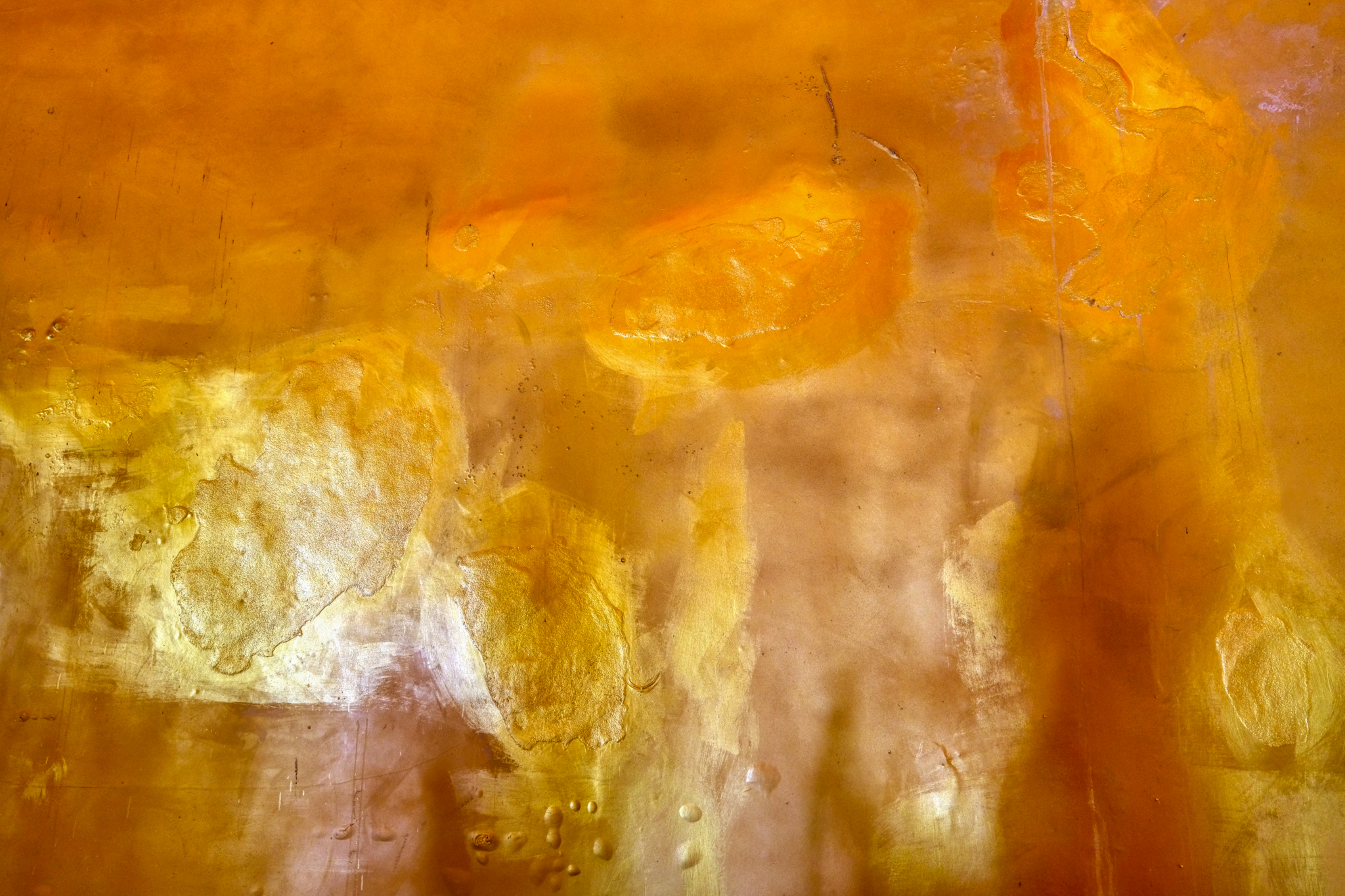 I am very nearly moved to tears by these walls . . . the color, the play of light, the human touch, the honesty.
I am very nearly moved to tears by these walls . . . the color, the play of light, the human touch, the honesty.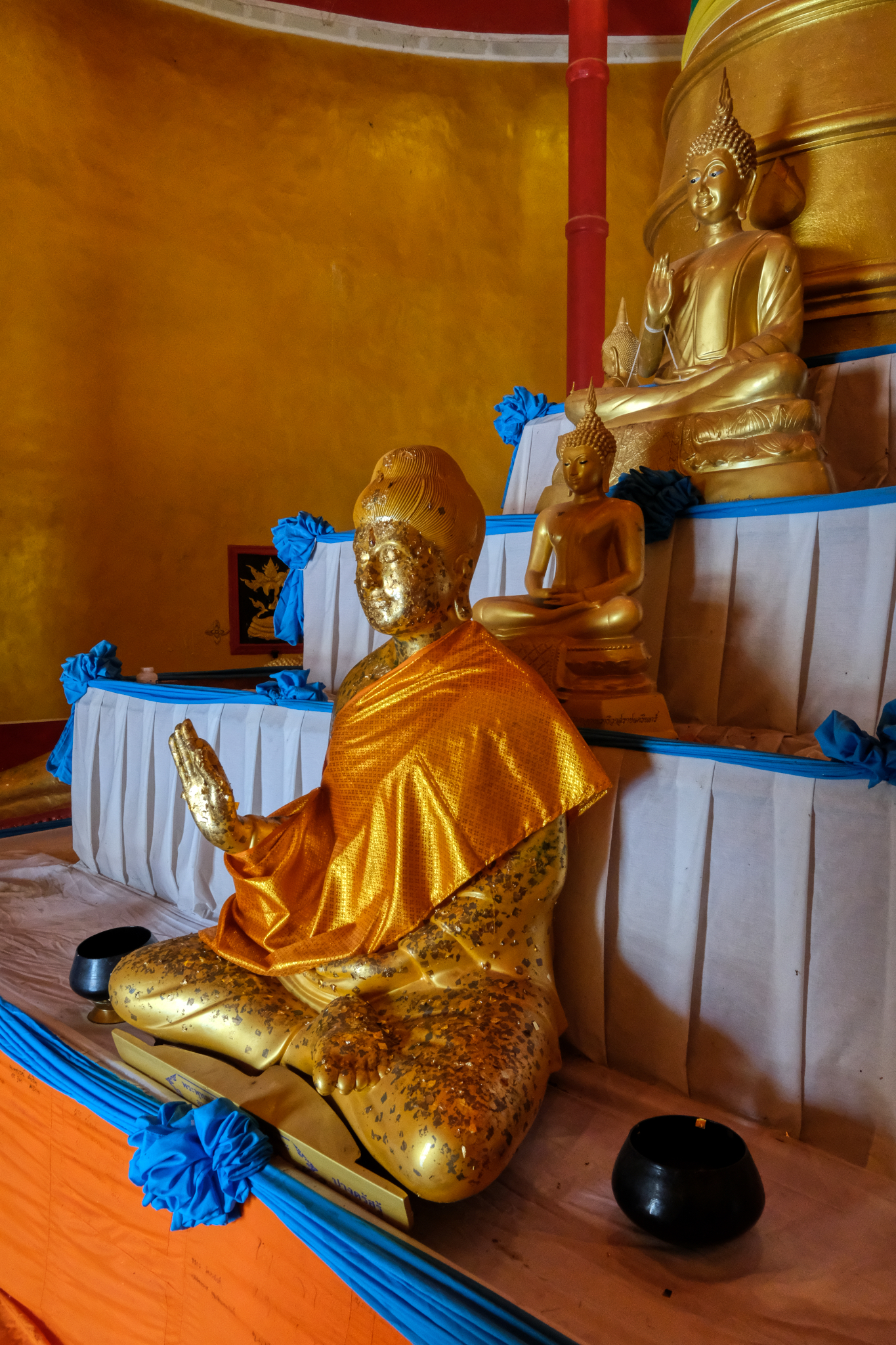 An altar facing an opposite door and sunlight.
An altar facing an opposite door and sunlight.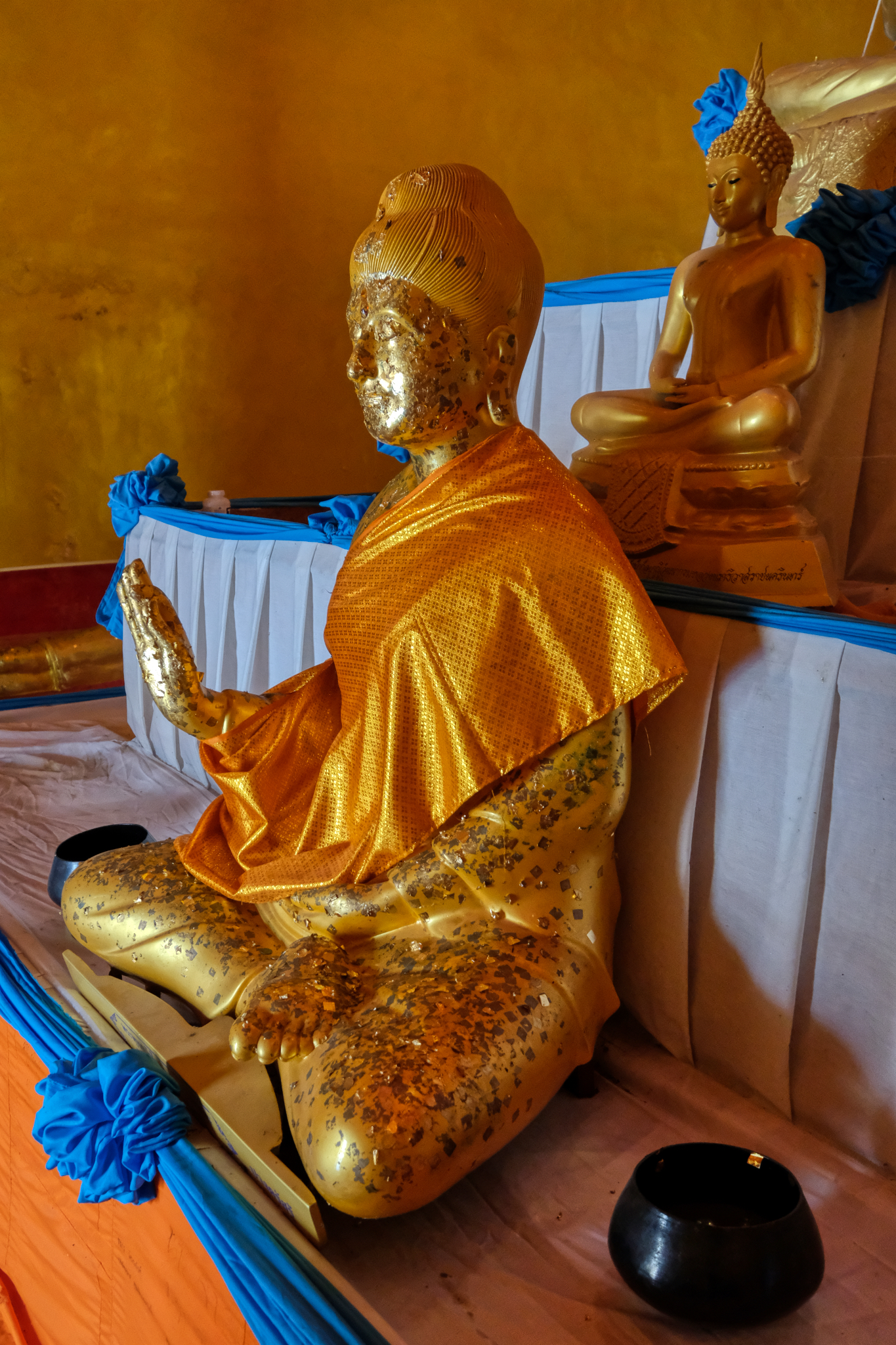 This Buddha statue in the Fearlessness (Abhāya mudrā) pose.
This Buddha statue in the Fearlessness (Abhāya mudrā) pose.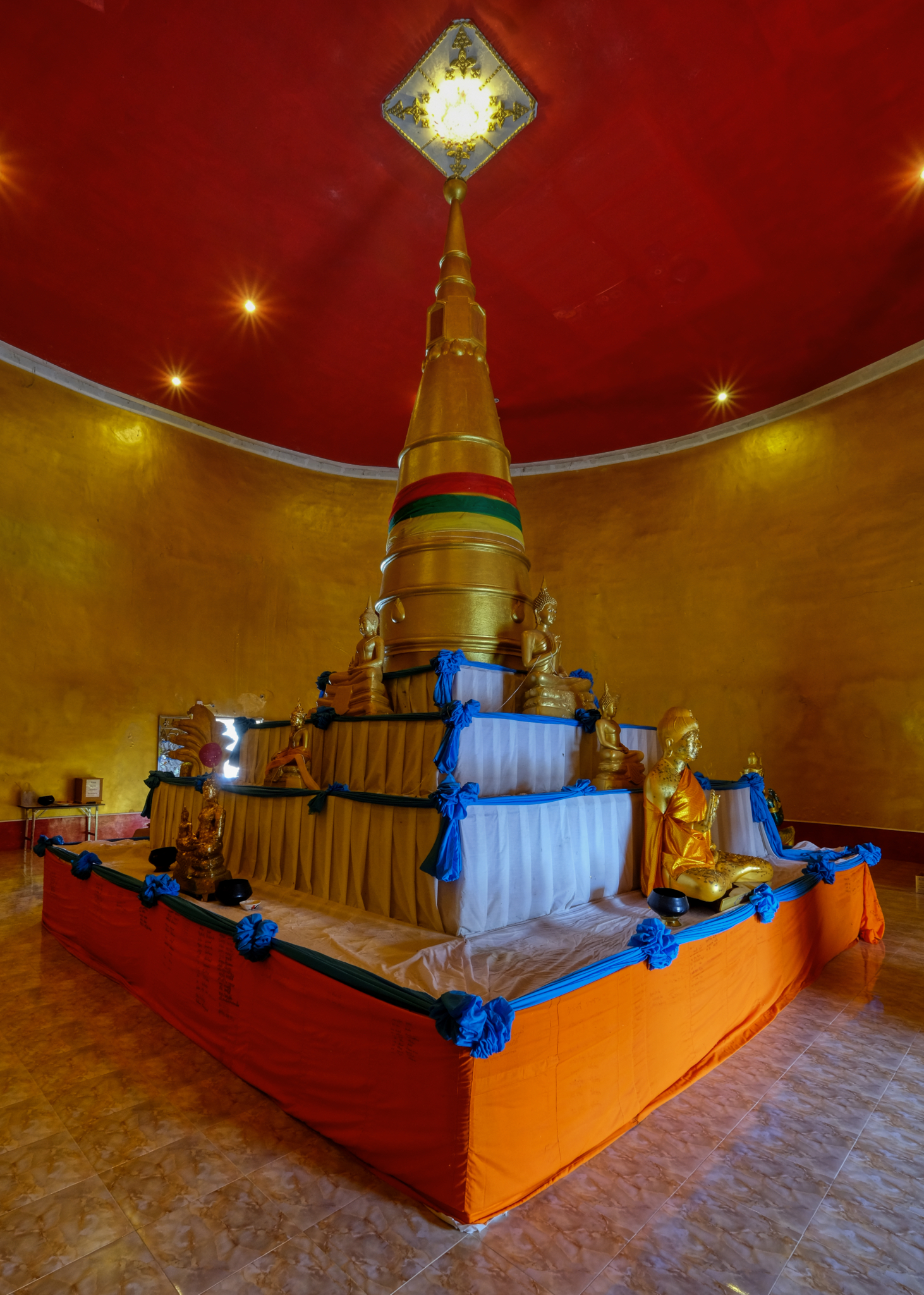 The chedi within the larger chedi.
The chedi within the larger chedi.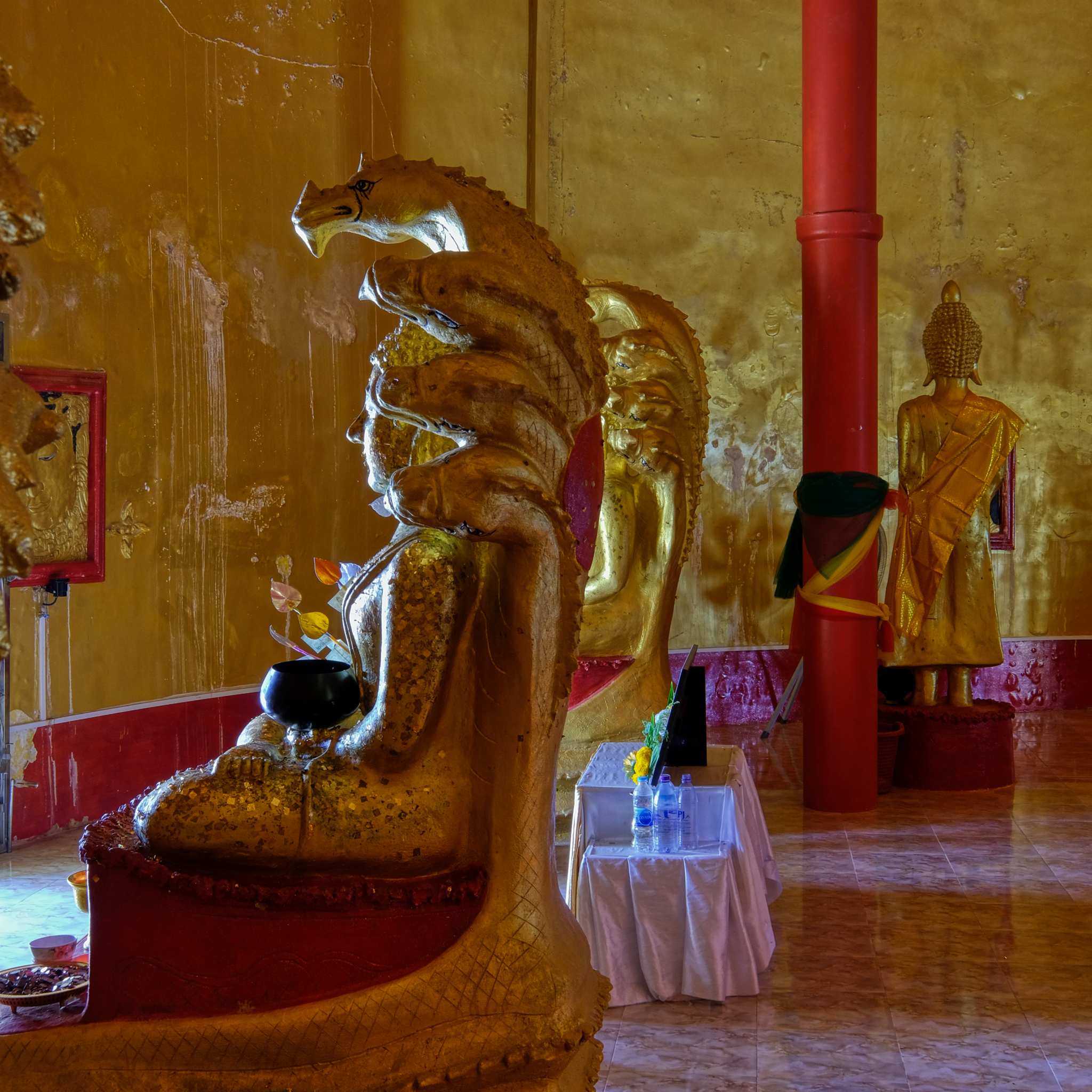 In some locations the light on the figures and on the wall came together in fantastic ways!
In some locations the light on the figures and on the wall came together in fantastic ways!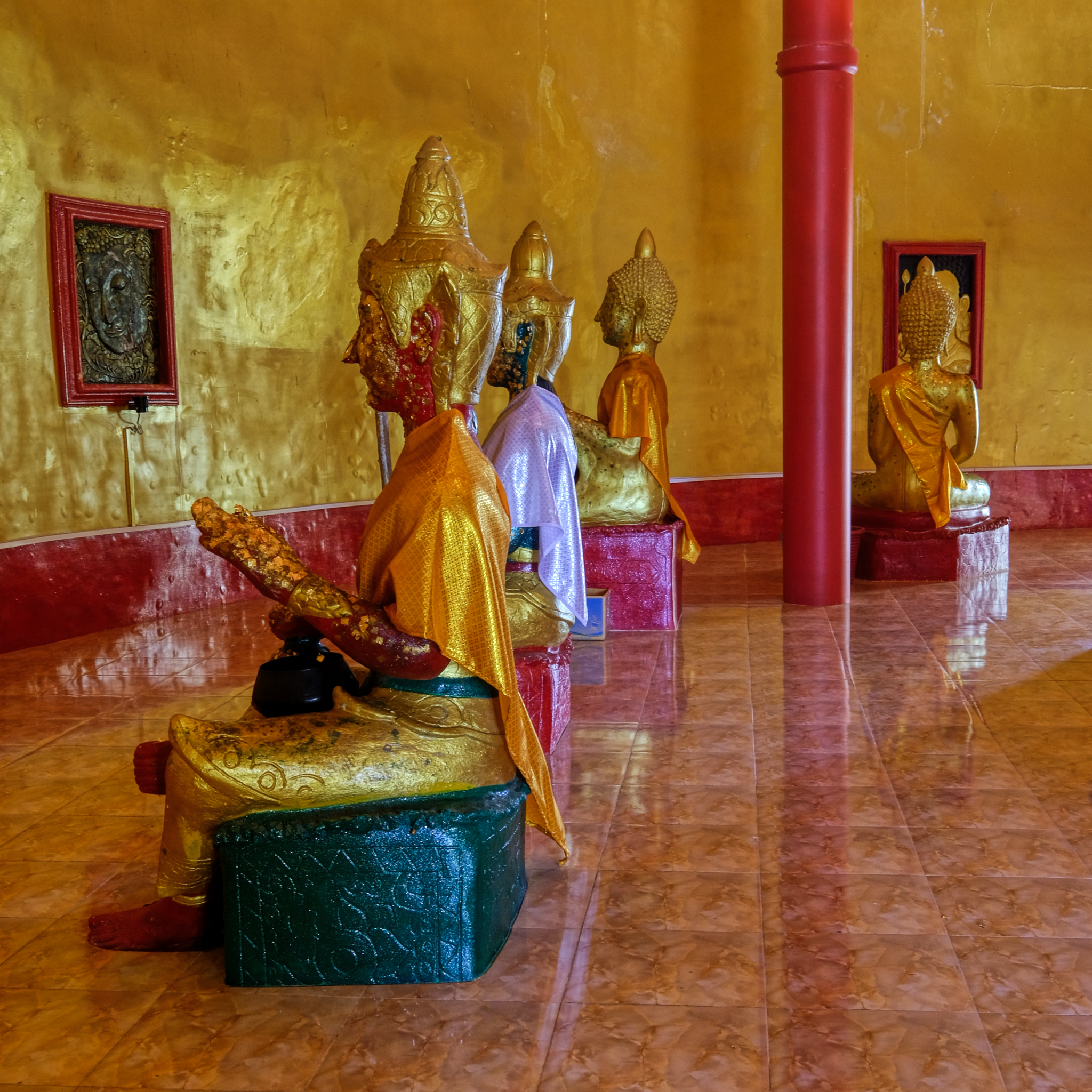 Phenomenal light and color and shapes . . . .
Phenomenal light and color and shapes . . . .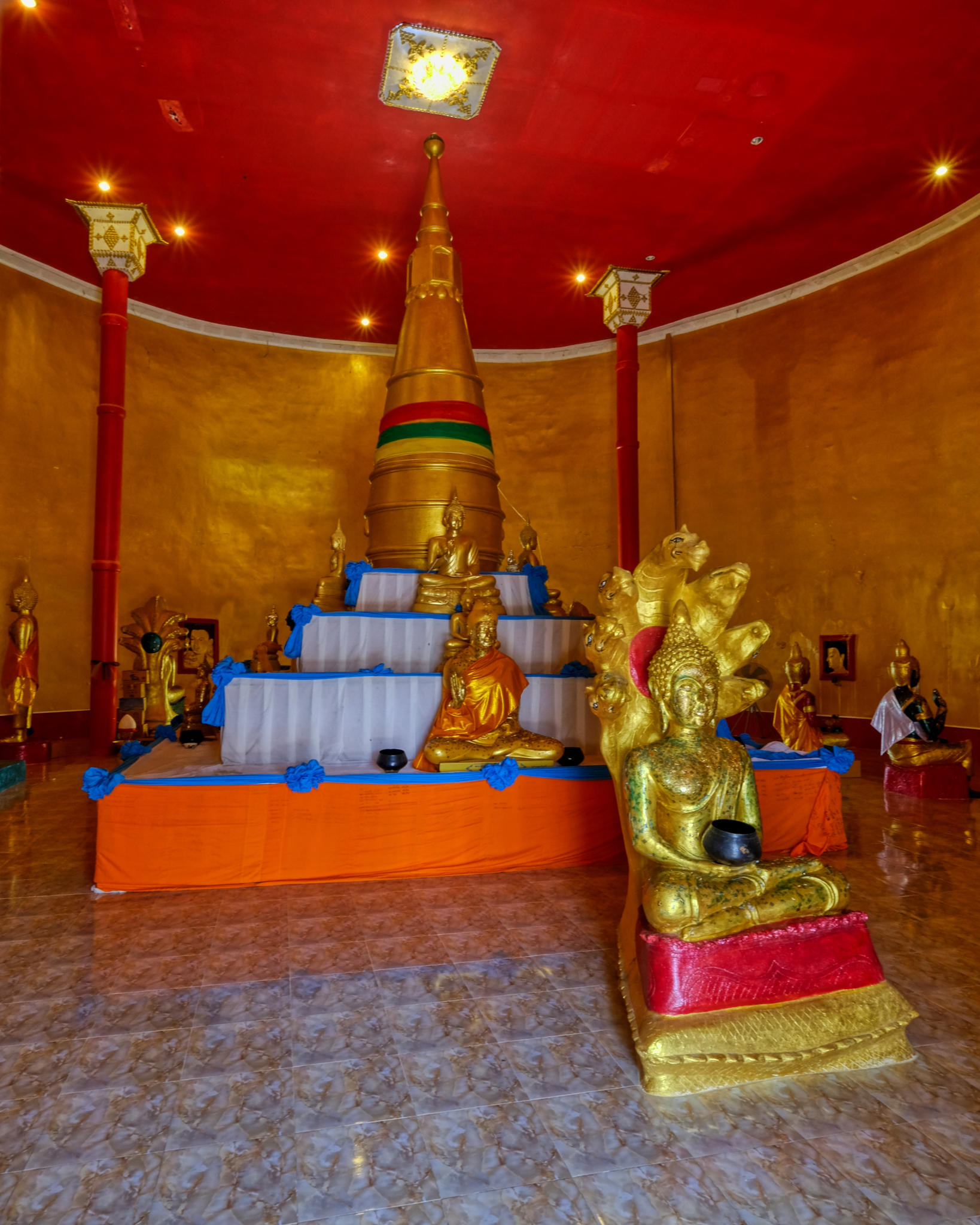 Although the Buddha figures seem sparse in this photo it seemed FULL of them.
Although the Buddha figures seem sparse in this photo it seemed FULL of them.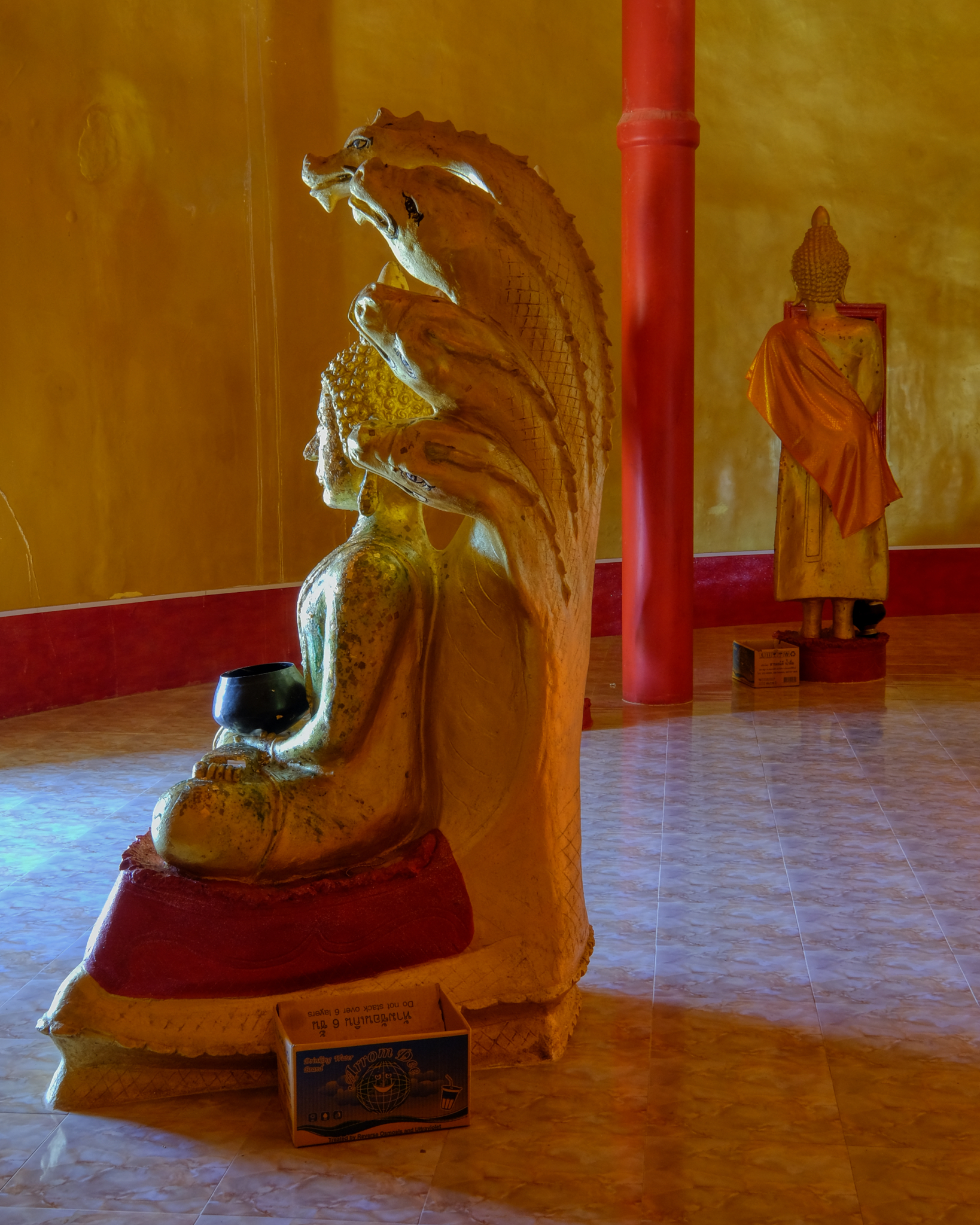 I did not know when to stop taking photos. I took a break and made merit at each Buddha image with gold leaf and reverent wais.
I did not know when to stop taking photos. I took a break and made merit at each Buddha image with gold leaf and reverent wais.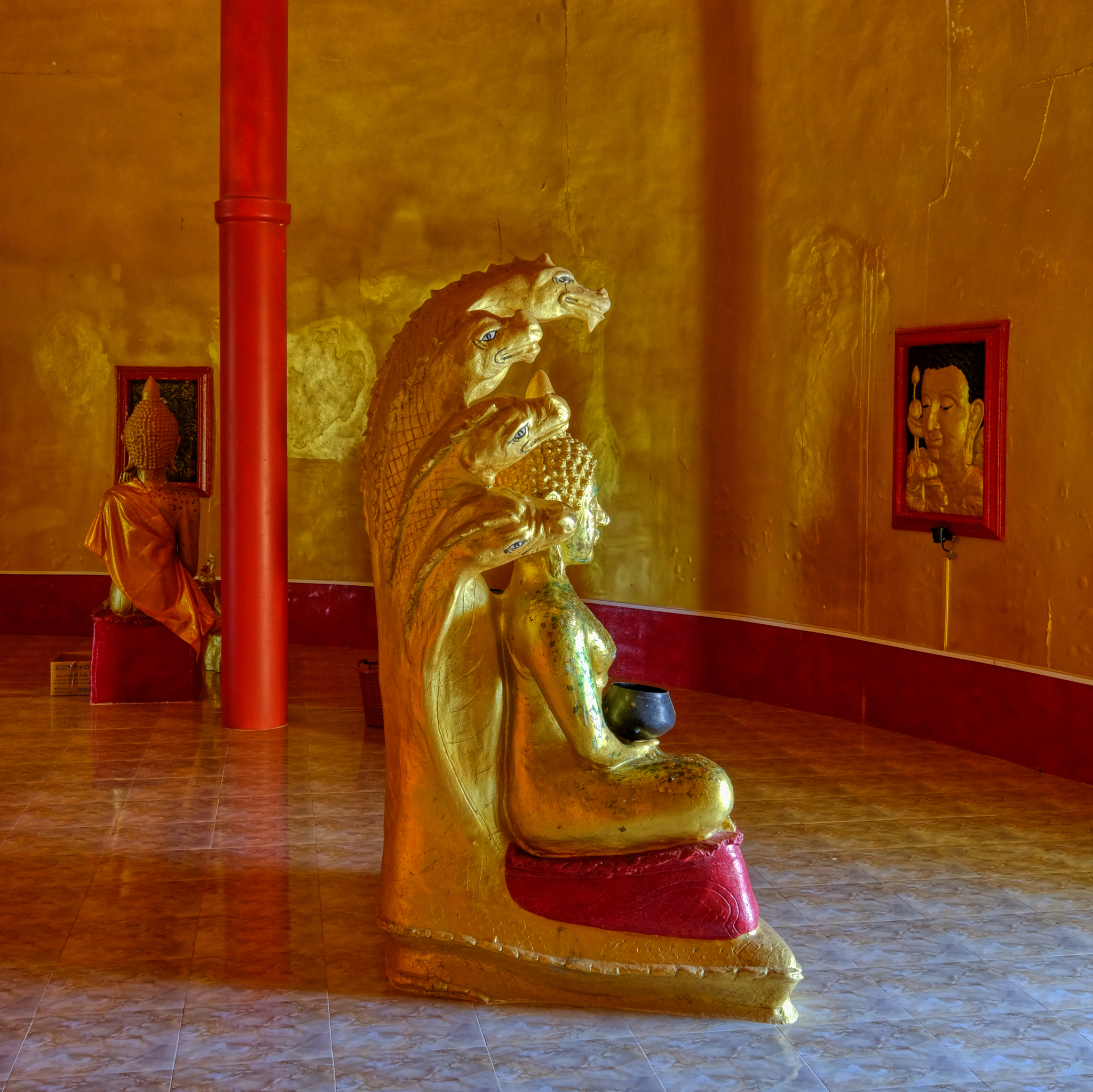 I became aware that as the sun outside brightened and dimmed, so did the lighting effects in the interior. Fantastic!
I became aware that as the sun outside brightened and dimmed, so did the lighting effects in the interior. Fantastic!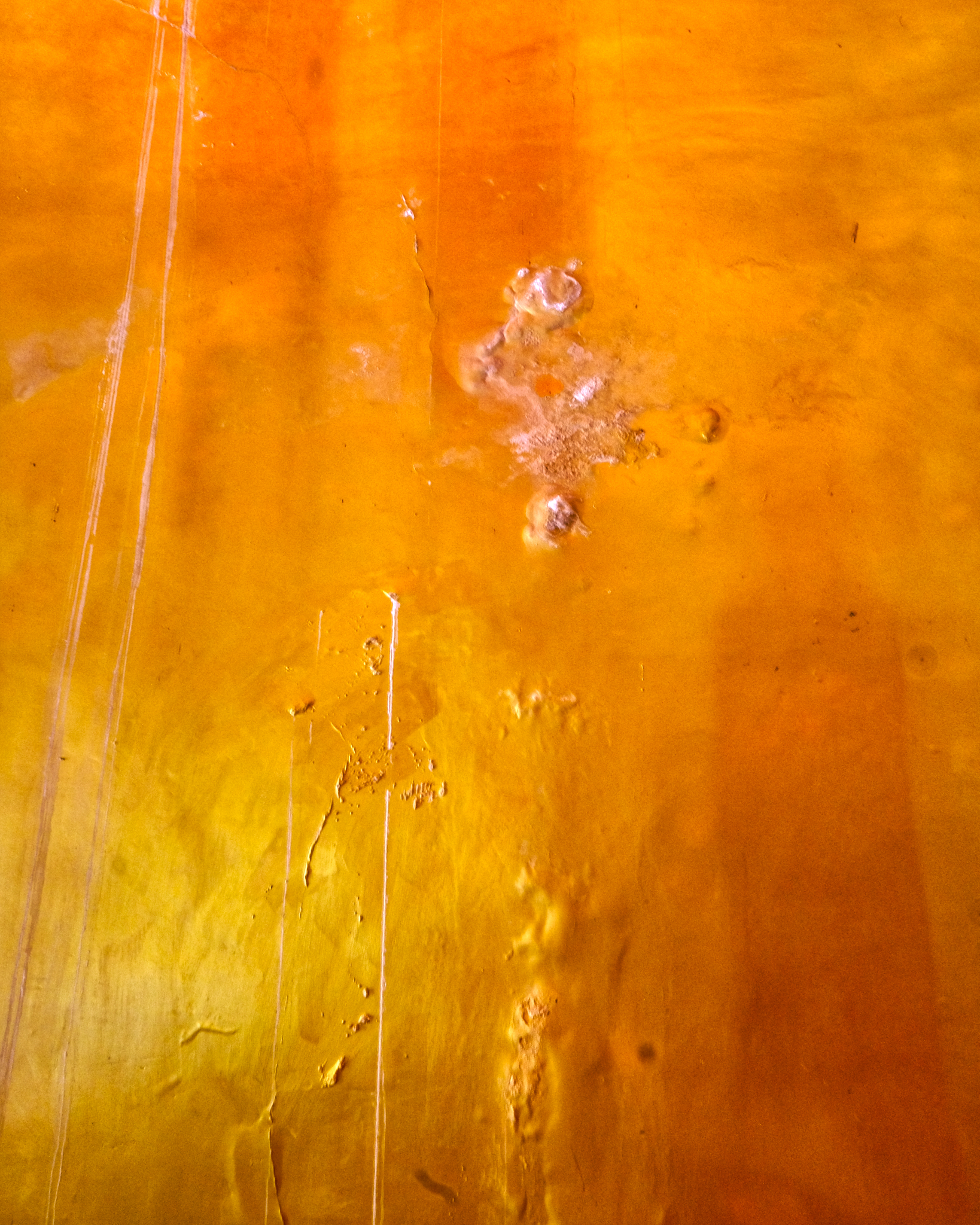 We spent several hours inside this remarkable chedi. So captivated by everything . . . standing staring at the walls in absolute wonder.
We spent several hours inside this remarkable chedi. So captivated by everything . . . standing staring at the walls in absolute wonder.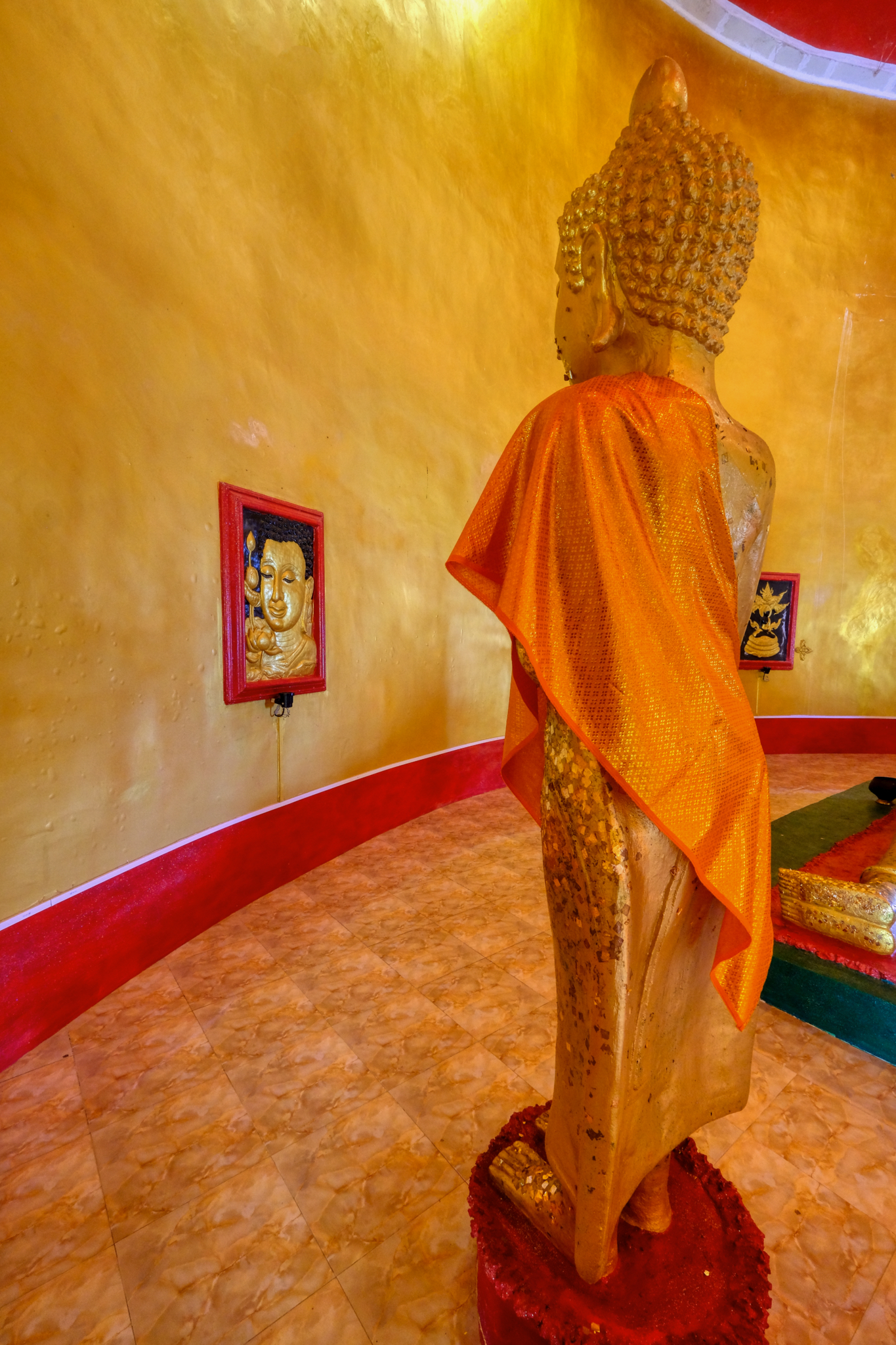 We had to leave . . . reluctantly. We had a whole day ahead of us and many adventures to have.
We had to leave . . . reluctantly. We had a whole day ahead of us and many adventures to have.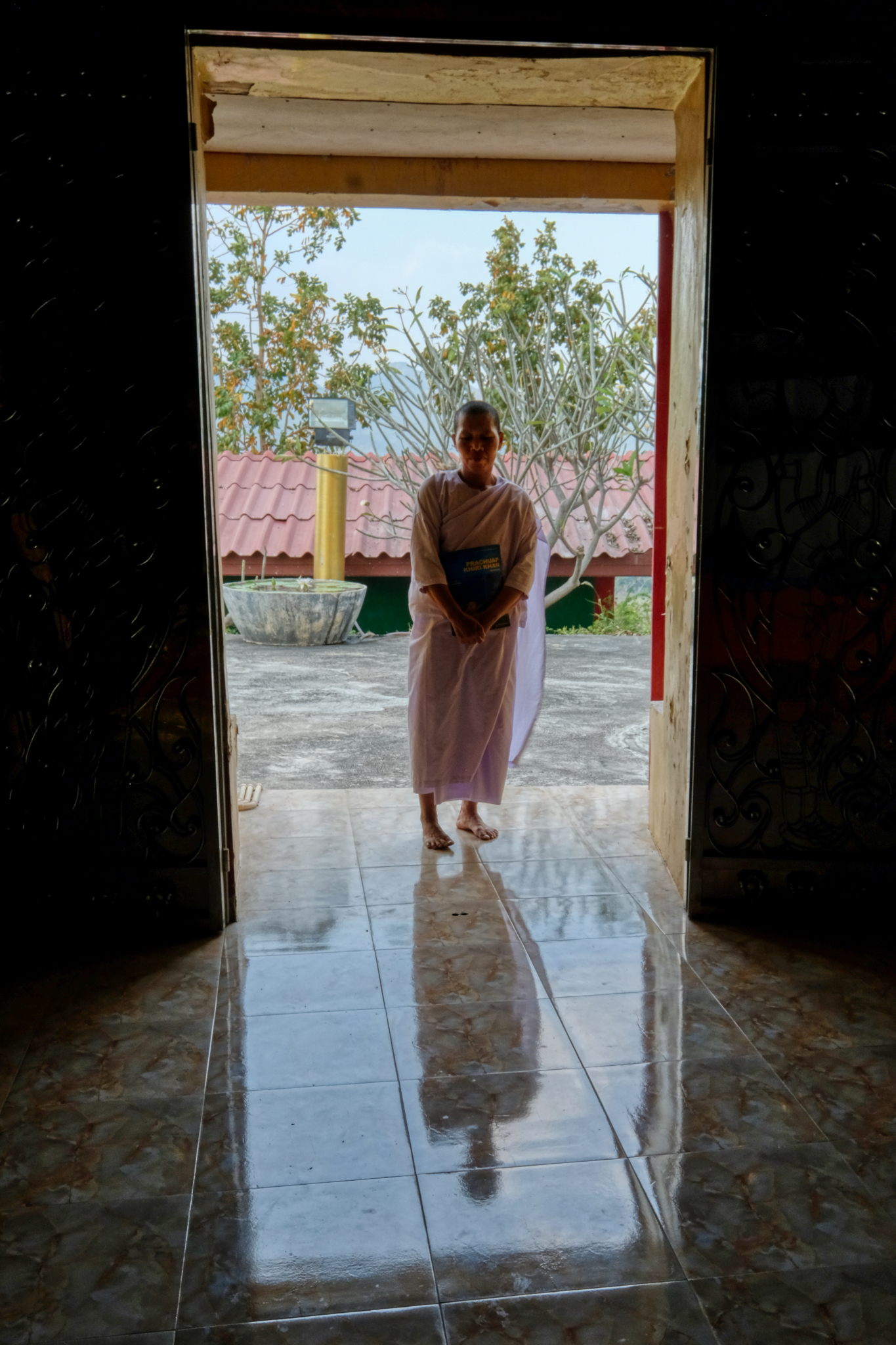 We at last left the chedi to the nun to have on her own in solitude.
We at last left the chedi to the nun to have on her own in solitude.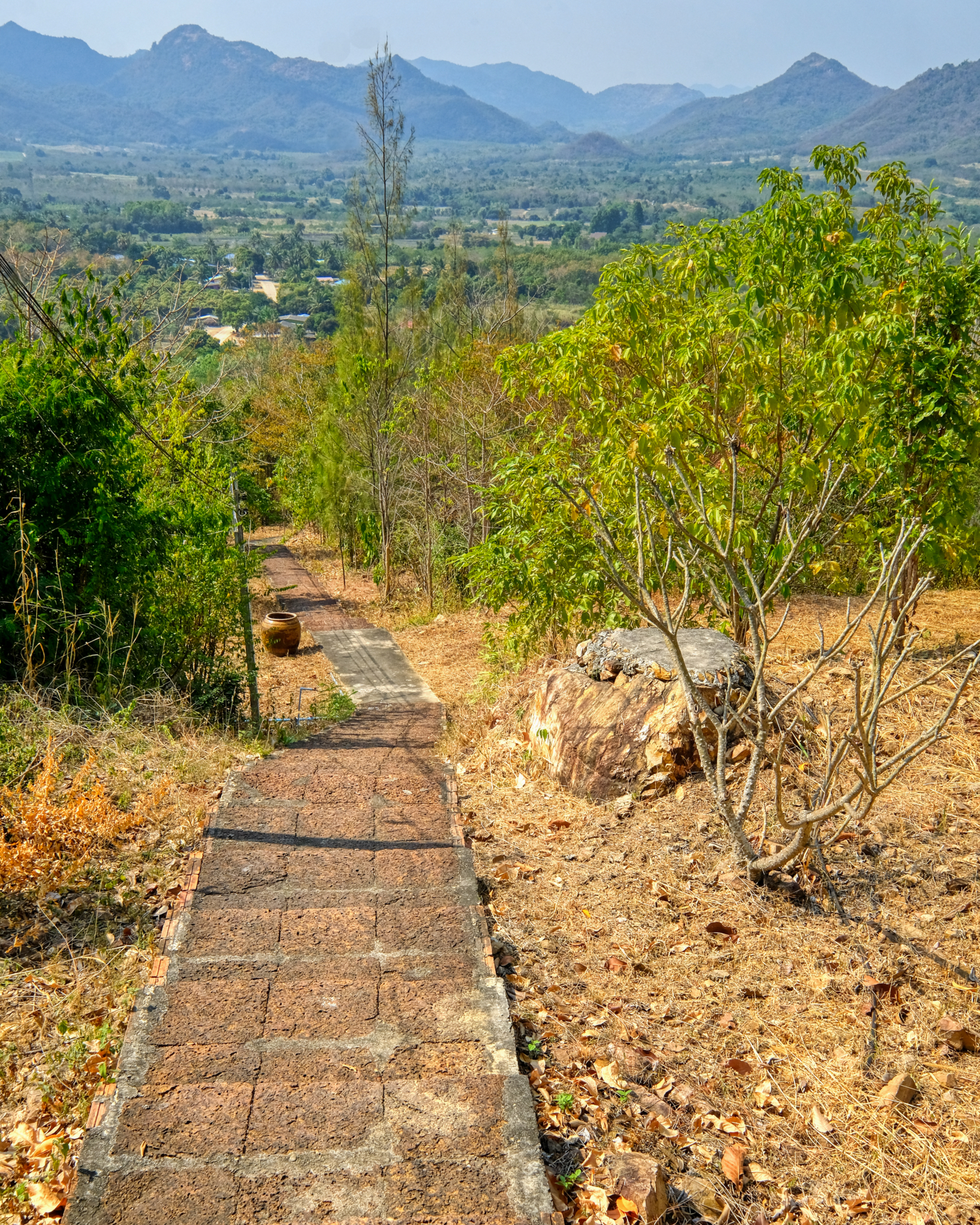 The chedi sits high on a hilltop with a wide view. This is a very rural location west of Hua Hin.
The chedi sits high on a hilltop with a wide view. This is a very rural location west of Hua Hin.Phenomenal Angkor Wat, Cambodia
 Thursday, March 5, 2020 at 3:05PM
Thursday, March 5, 2020 at 3:05PM 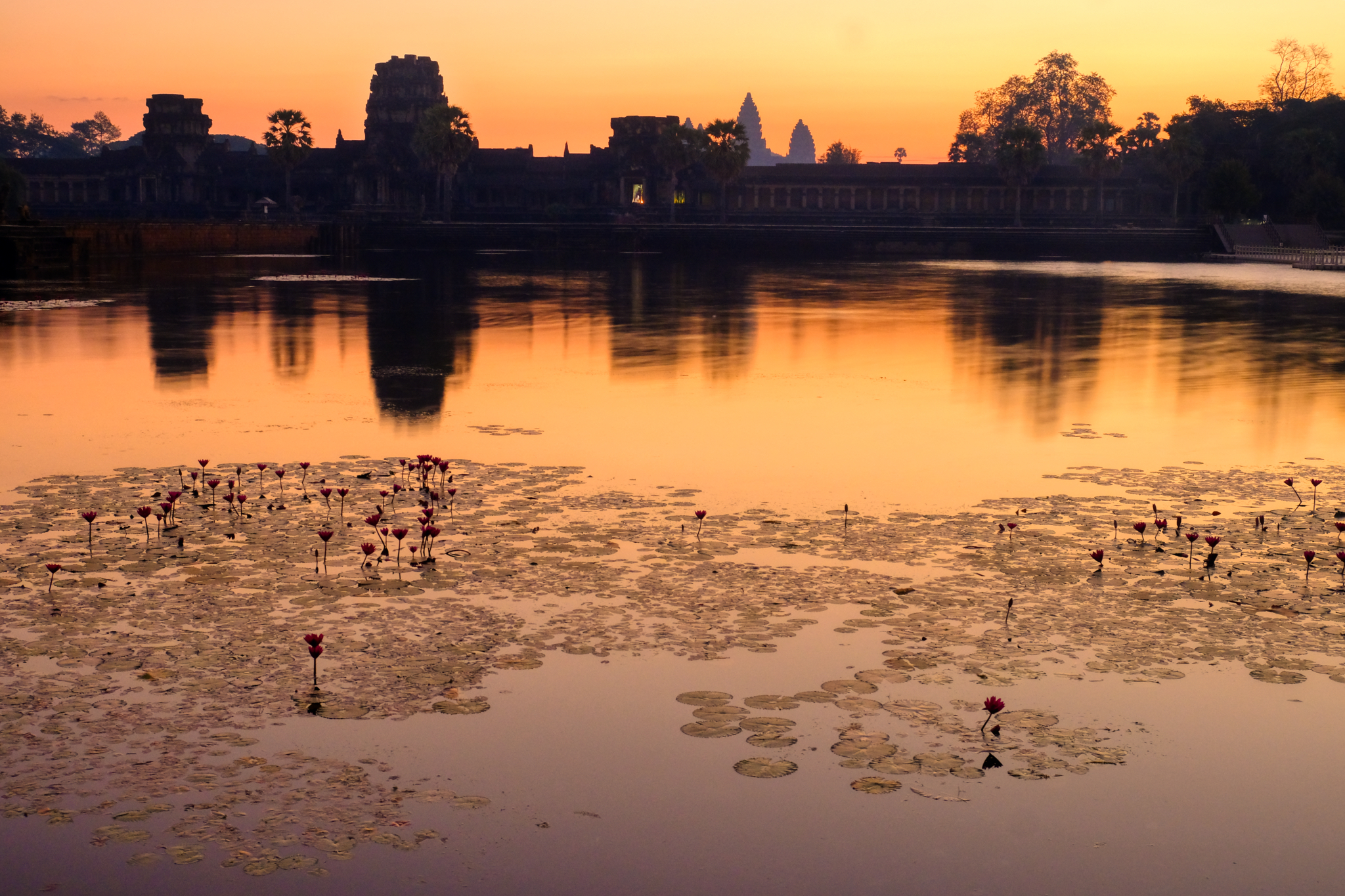 First light at Angkor Wat main complex.
First light at Angkor Wat main complex.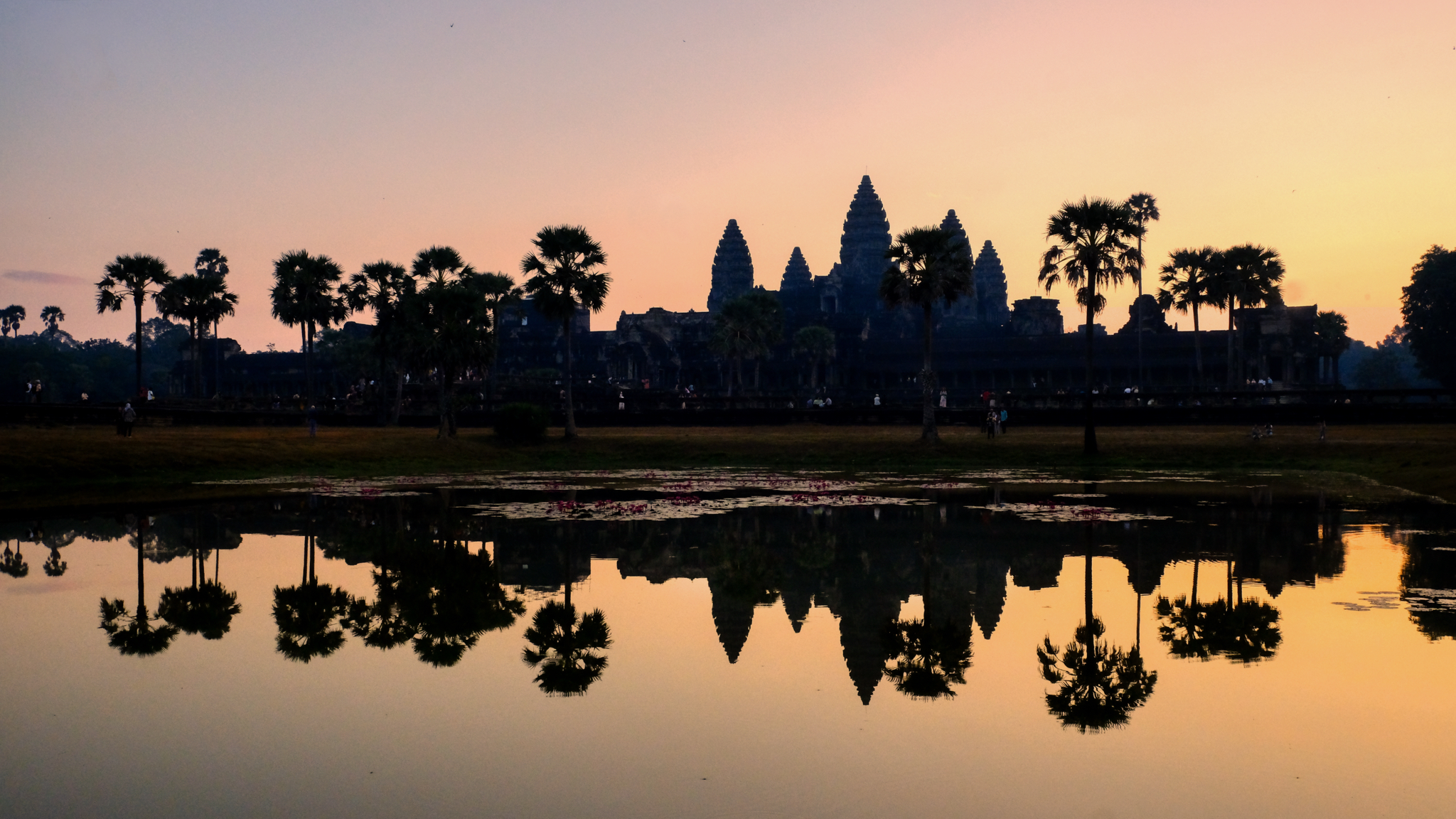 6:00am and already there were thousands of tourists to catch the temples in the magic light. Most of the tourists were either French or Chinese, although I doubt there are many Chinese now that the COVD-9 virus has almost completely halted Chinese tourism.
6:00am and already there were thousands of tourists to catch the temples in the magic light. Most of the tourists were either French or Chinese, although I doubt there are many Chinese now that the COVD-9 virus has almost completely halted Chinese tourism.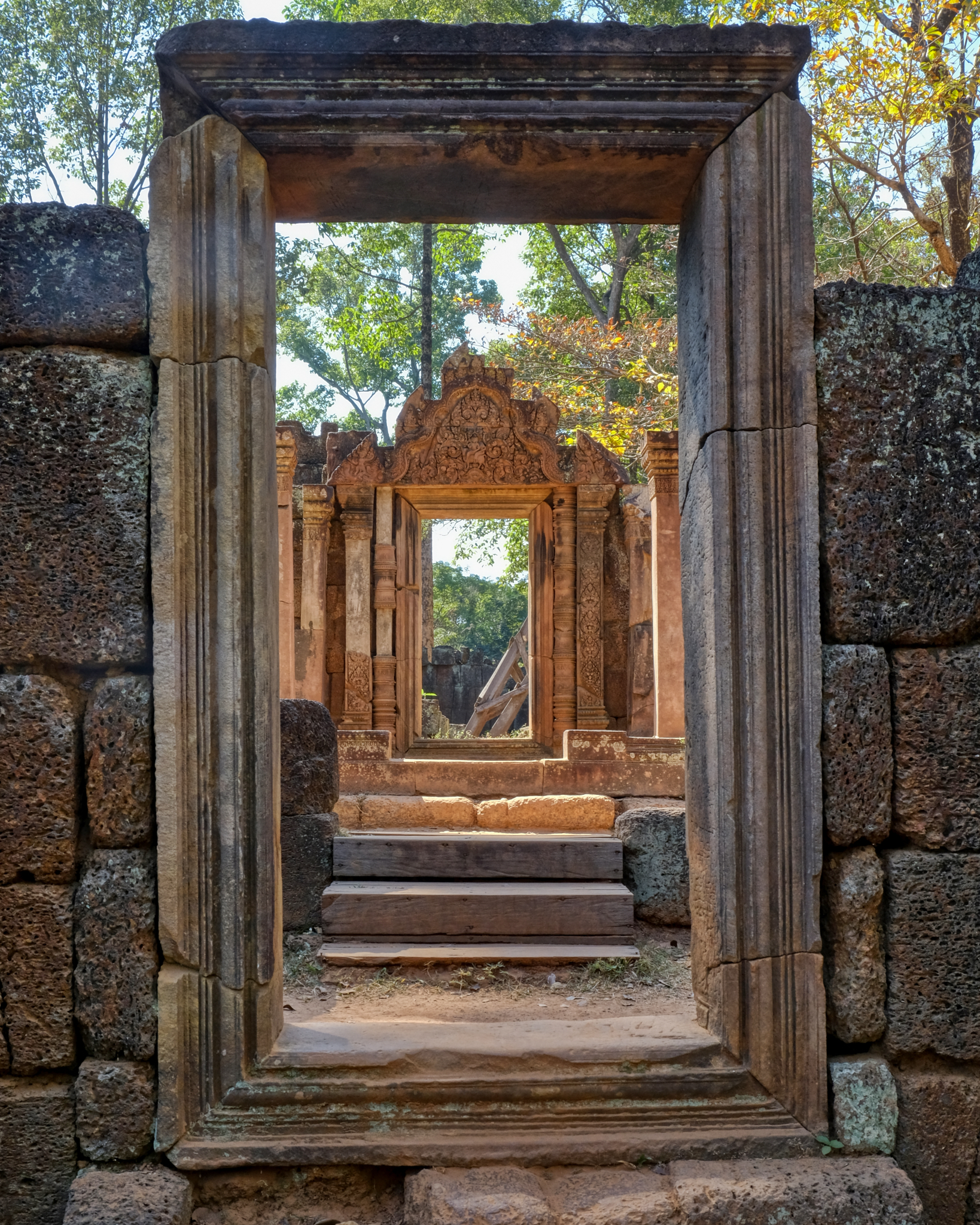 Built 1000 years ago . . . still amazing.
Built 1000 years ago . . . still amazing.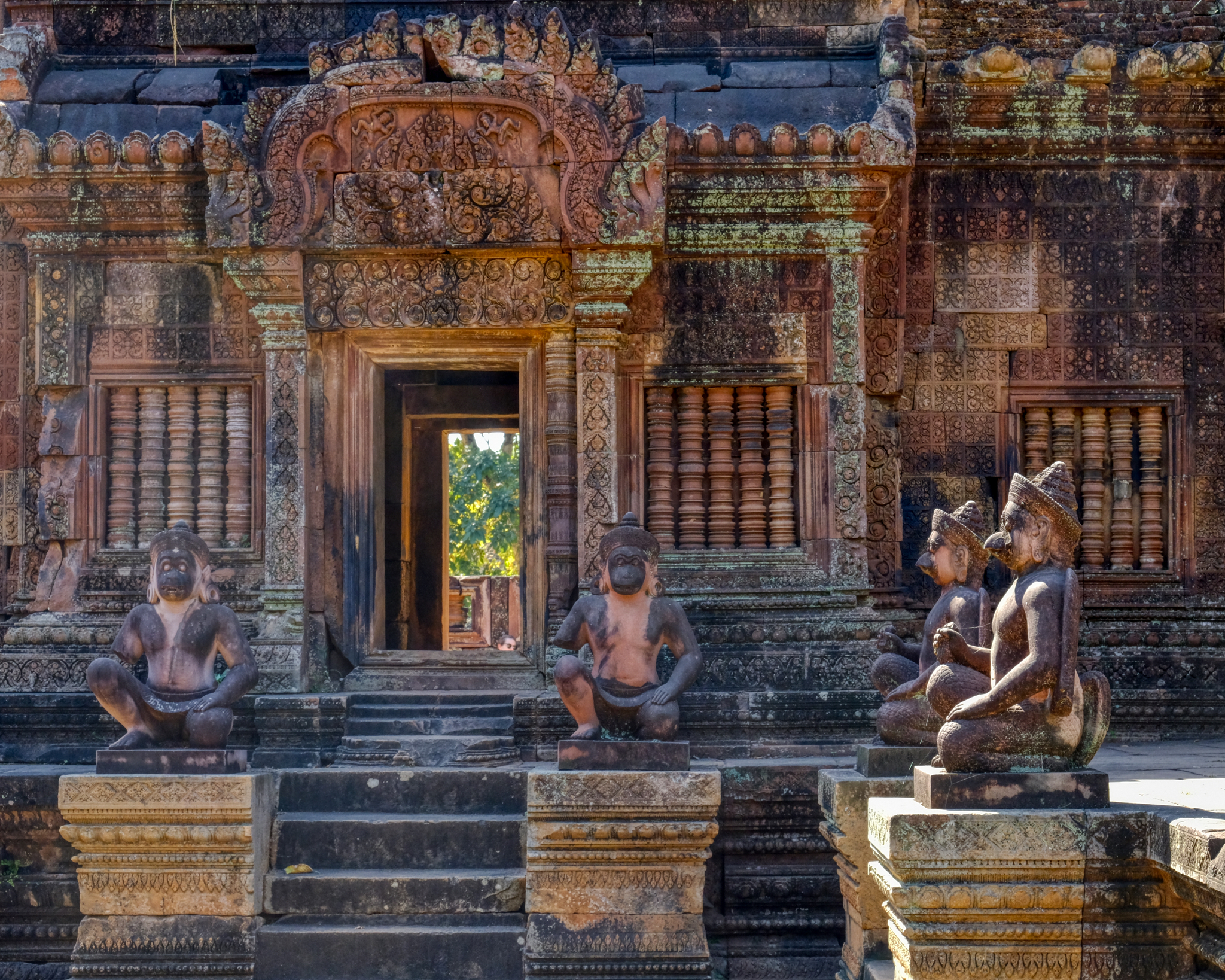 The sheer expanse of temple ruins at Angkor, and the great variety of temple materials and decoration make it well worth spending many days there, as I did in January 2020.
The sheer expanse of temple ruins at Angkor, and the great variety of temple materials and decoration make it well worth spending many days there, as I did in January 2020.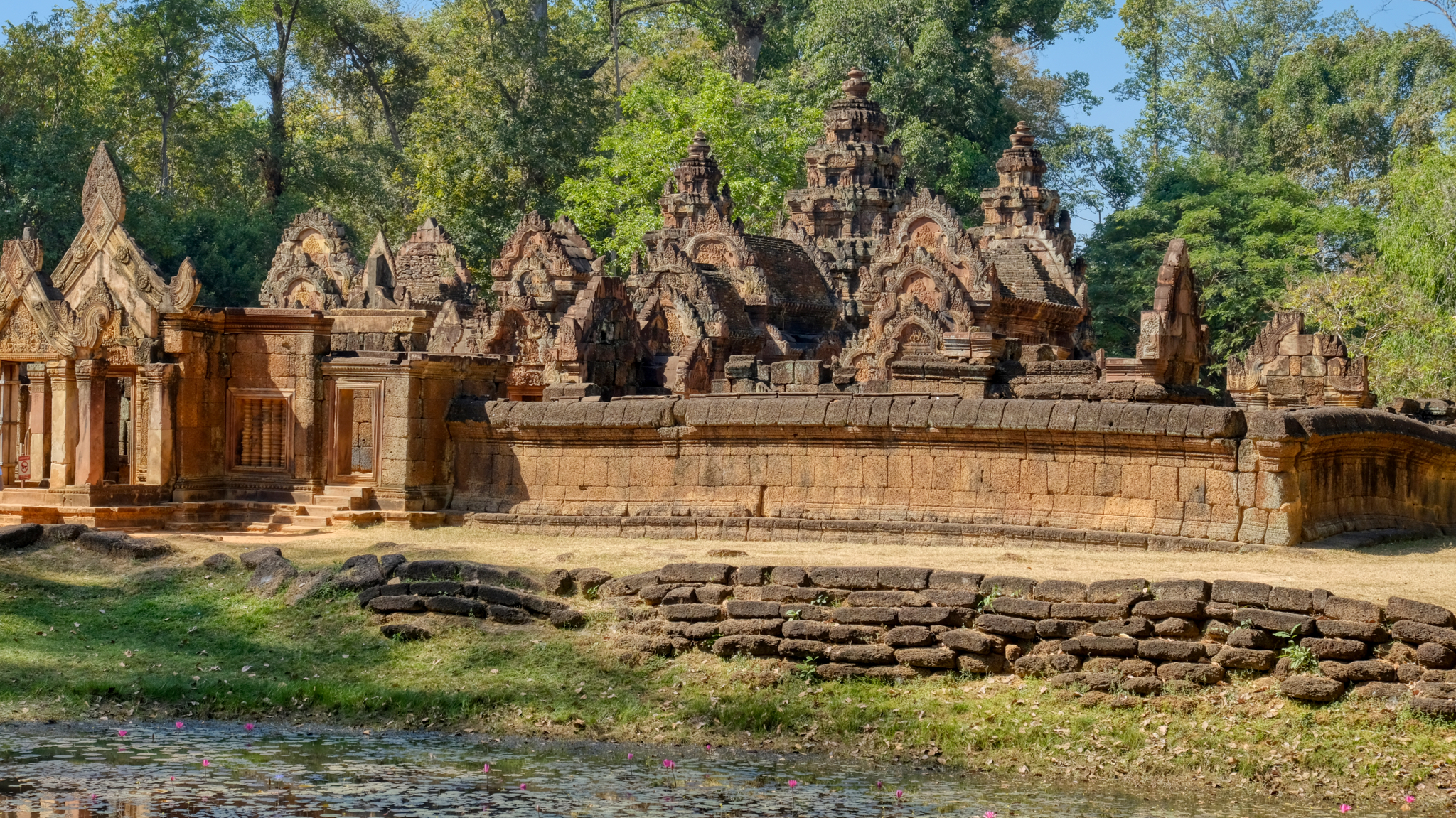 There is so much to see in the Angkor Wat complex - many ancient sites. spread out around many square miles. Here is a small slide show sampling of the sights before we begin.
There is so much to see in the Angkor Wat complex - many ancient sites. spread out around many square miles. Here is a small slide show sampling of the sights before we begin.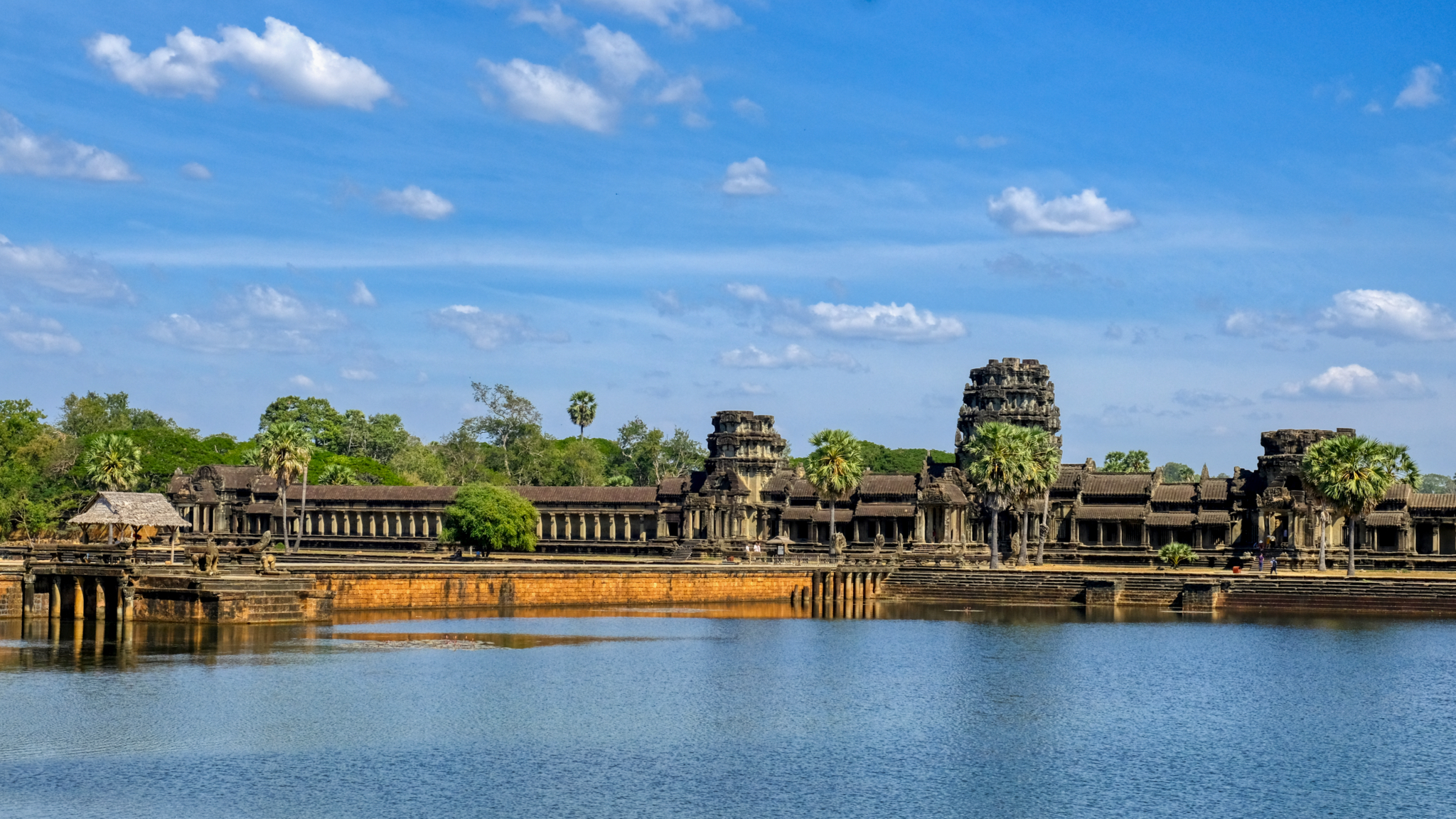 There is a main Angkor Wat temple with a grand entry across a beautiful pond.
There is a main Angkor Wat temple with a grand entry across a beautiful pond.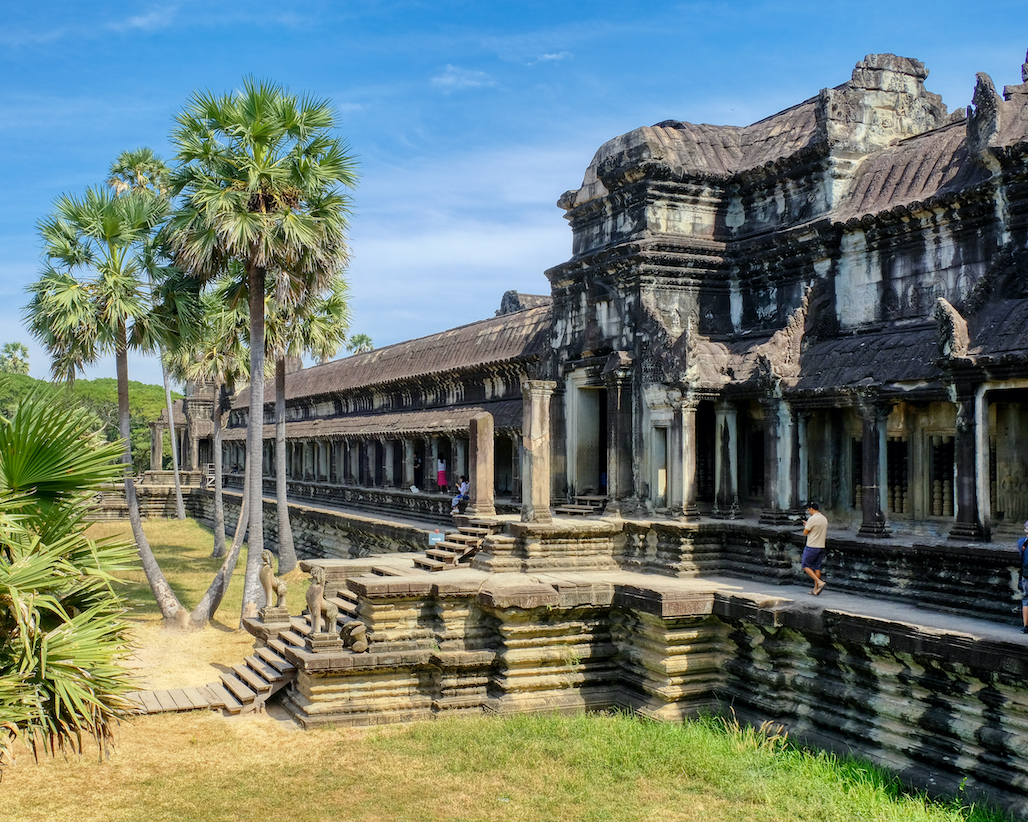 Just inside the "entry" gate.
Just inside the "entry" gate.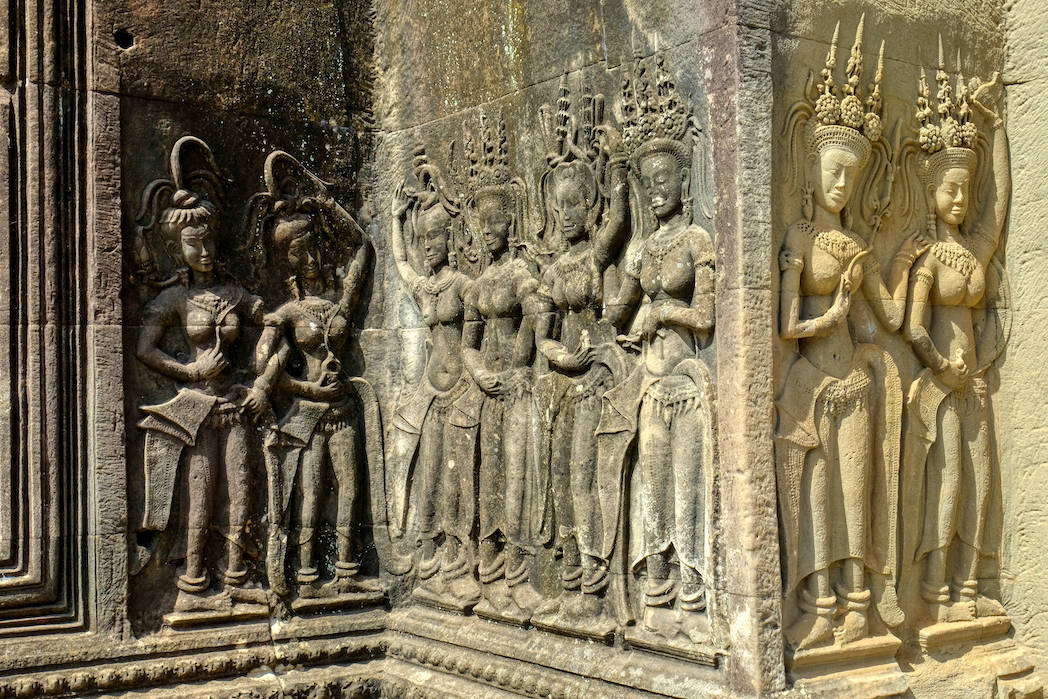 The interior and exterior surfaces are all nearly completely carved in panels of patterns and figures.
The interior and exterior surfaces are all nearly completely carved in panels of patterns and figures.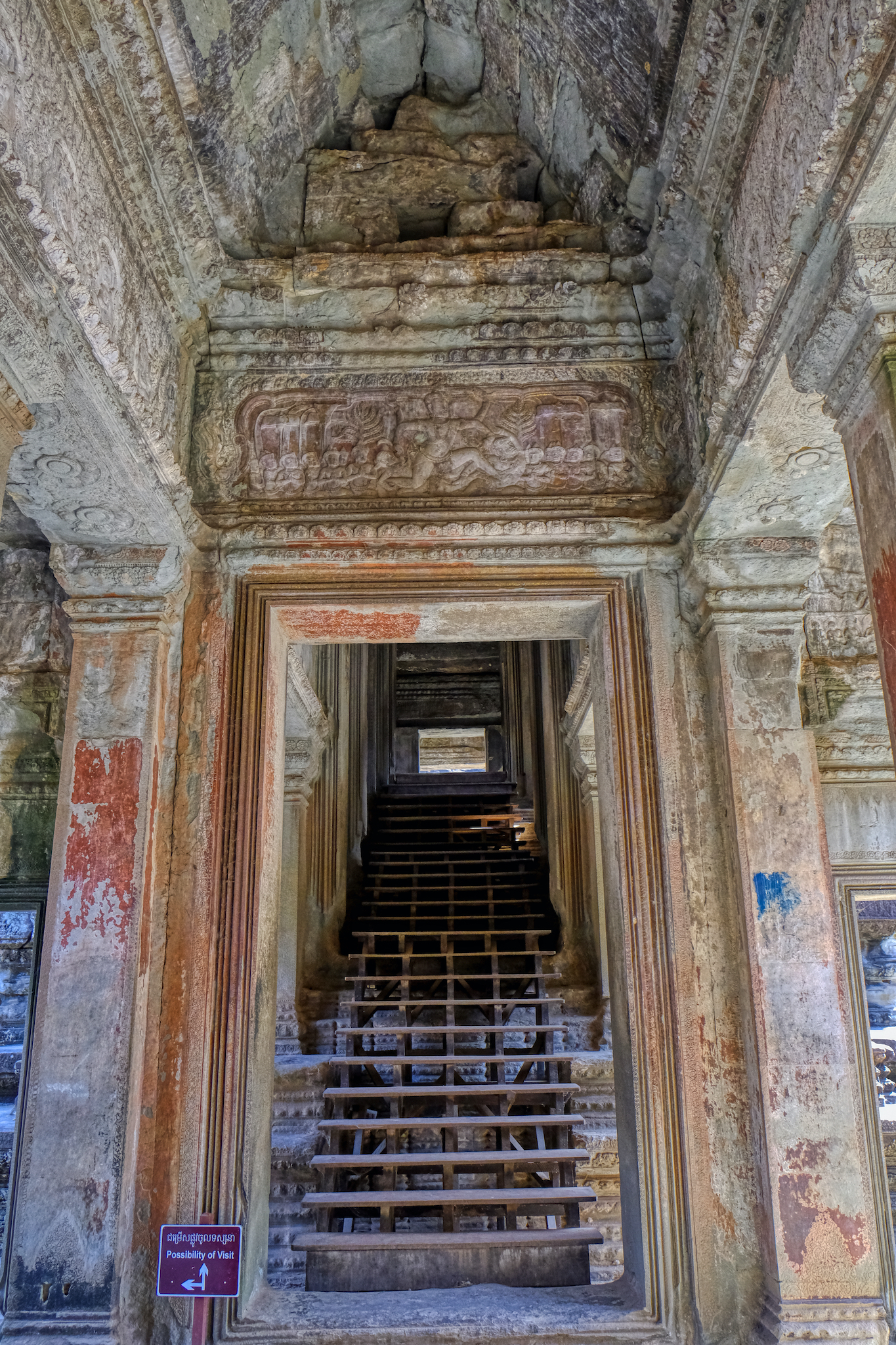
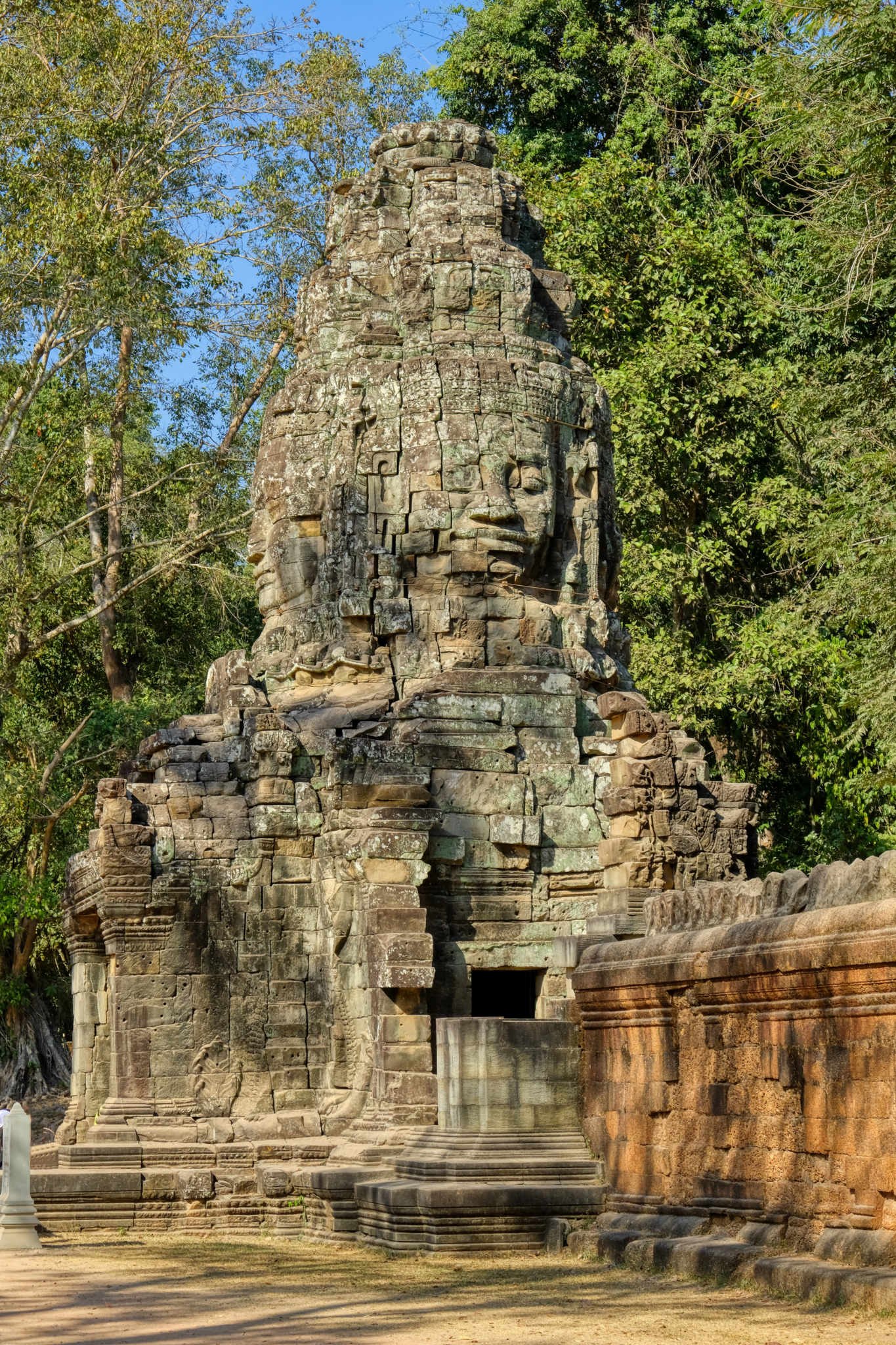 The many temple complexes are surrounded by high walls and often moats. All have four gates; one each facing north, south, east, and west.
The many temple complexes are surrounded by high walls and often moats. All have four gates; one each facing north, south, east, and west.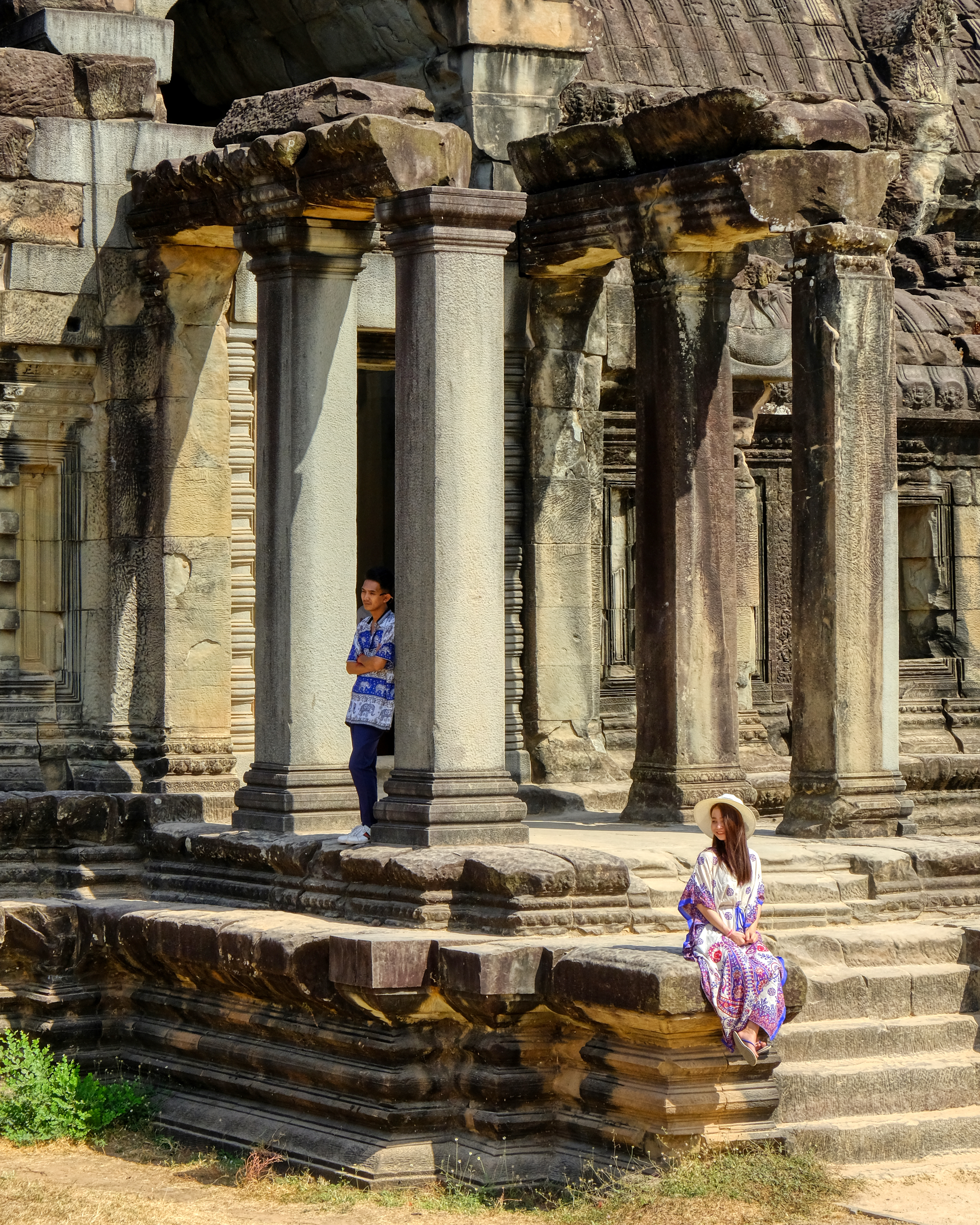 Inside the the main temple grounds, tourists stop to pose among the ruins. Thank you.
Inside the the main temple grounds, tourists stop to pose among the ruins. Thank you.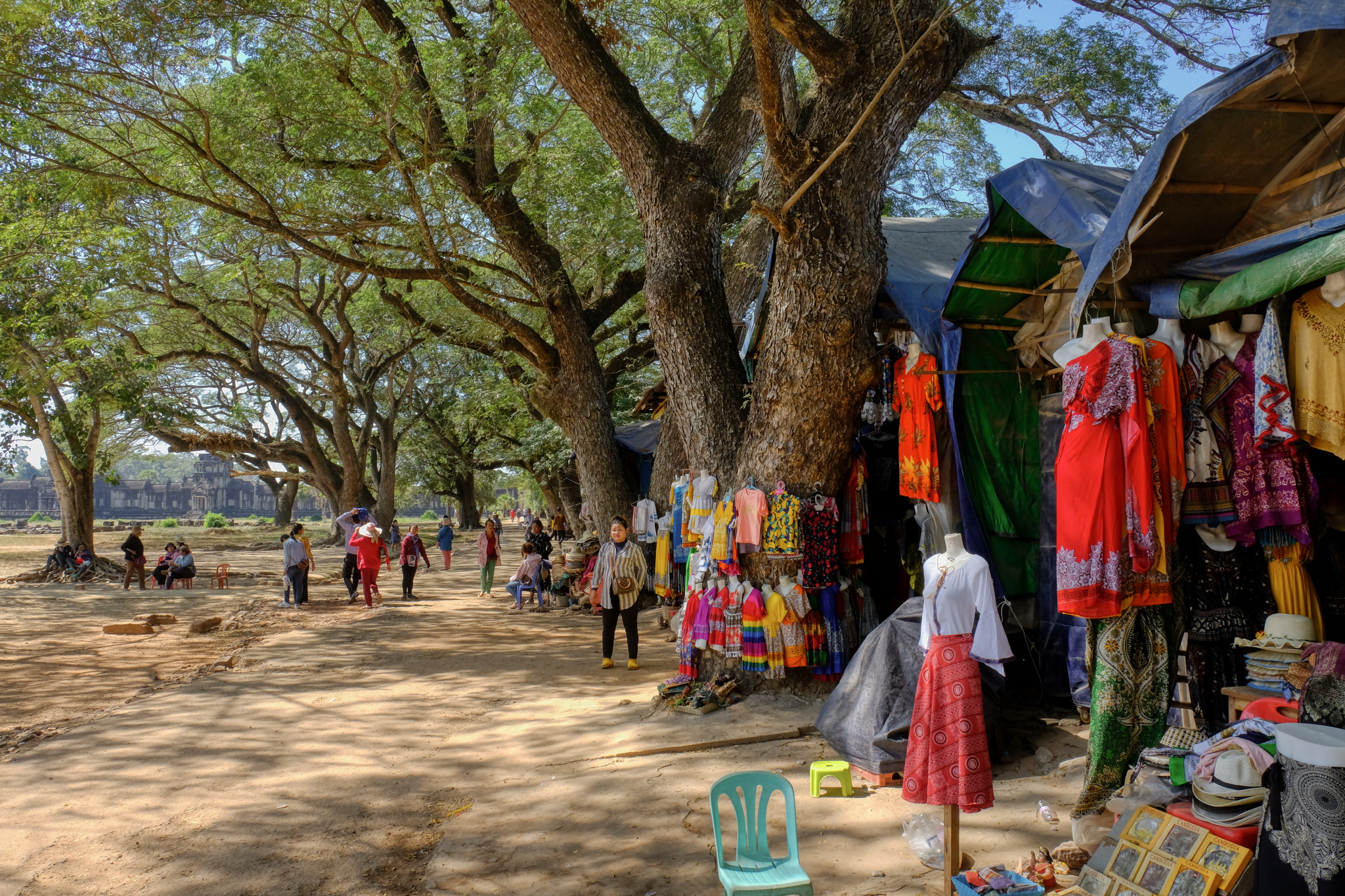 Curious vendors here and there. Yes, I bought the t-shirt. Of course I did
Curious vendors here and there. Yes, I bought the t-shirt. Of course I did Through and into a temple gatehouse structure.
Through and into a temple gatehouse structure.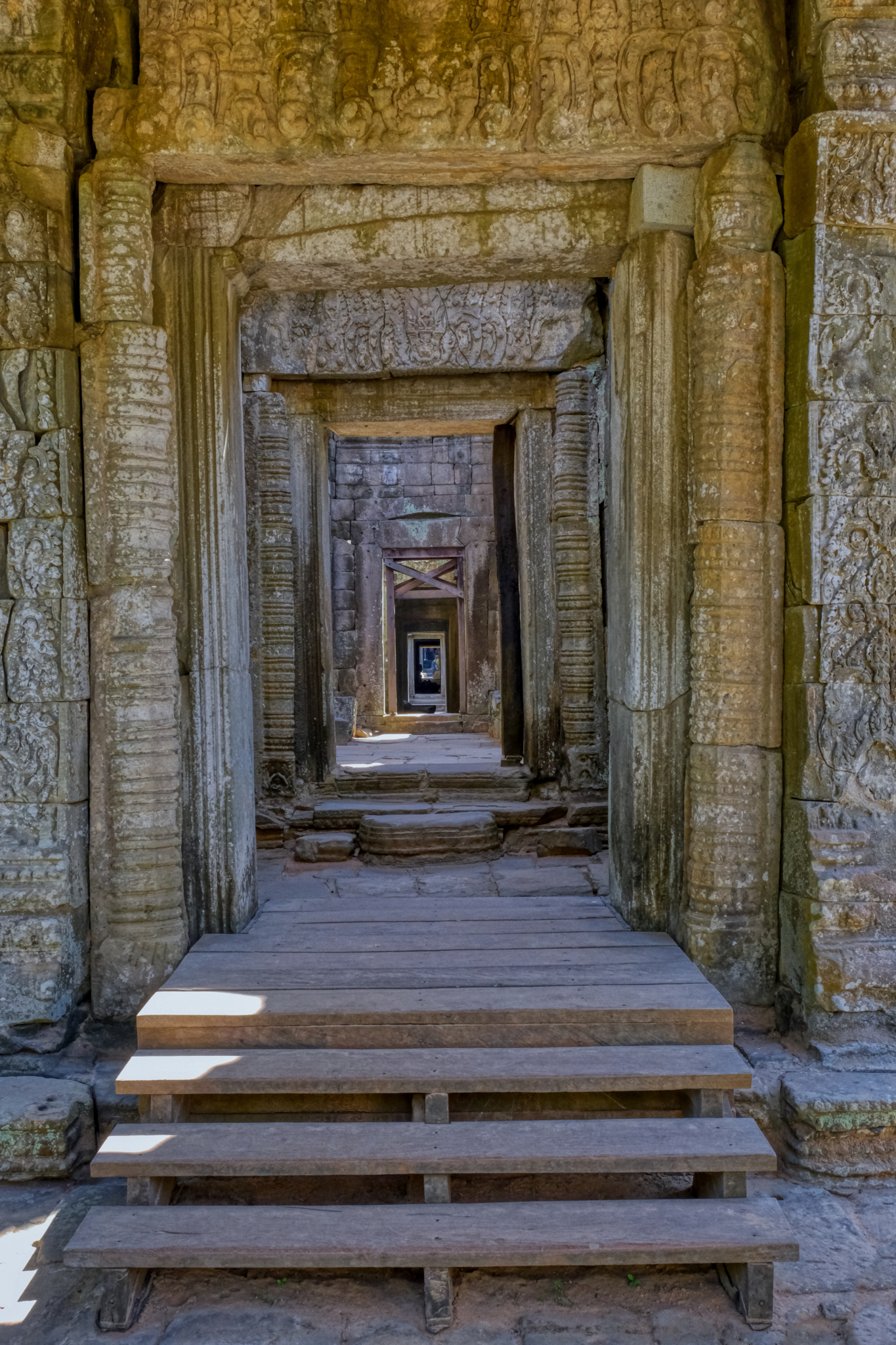 Inside the temples there are inviting and mysterious passages everywhere.
Inside the temples there are inviting and mysterious passages everywhere.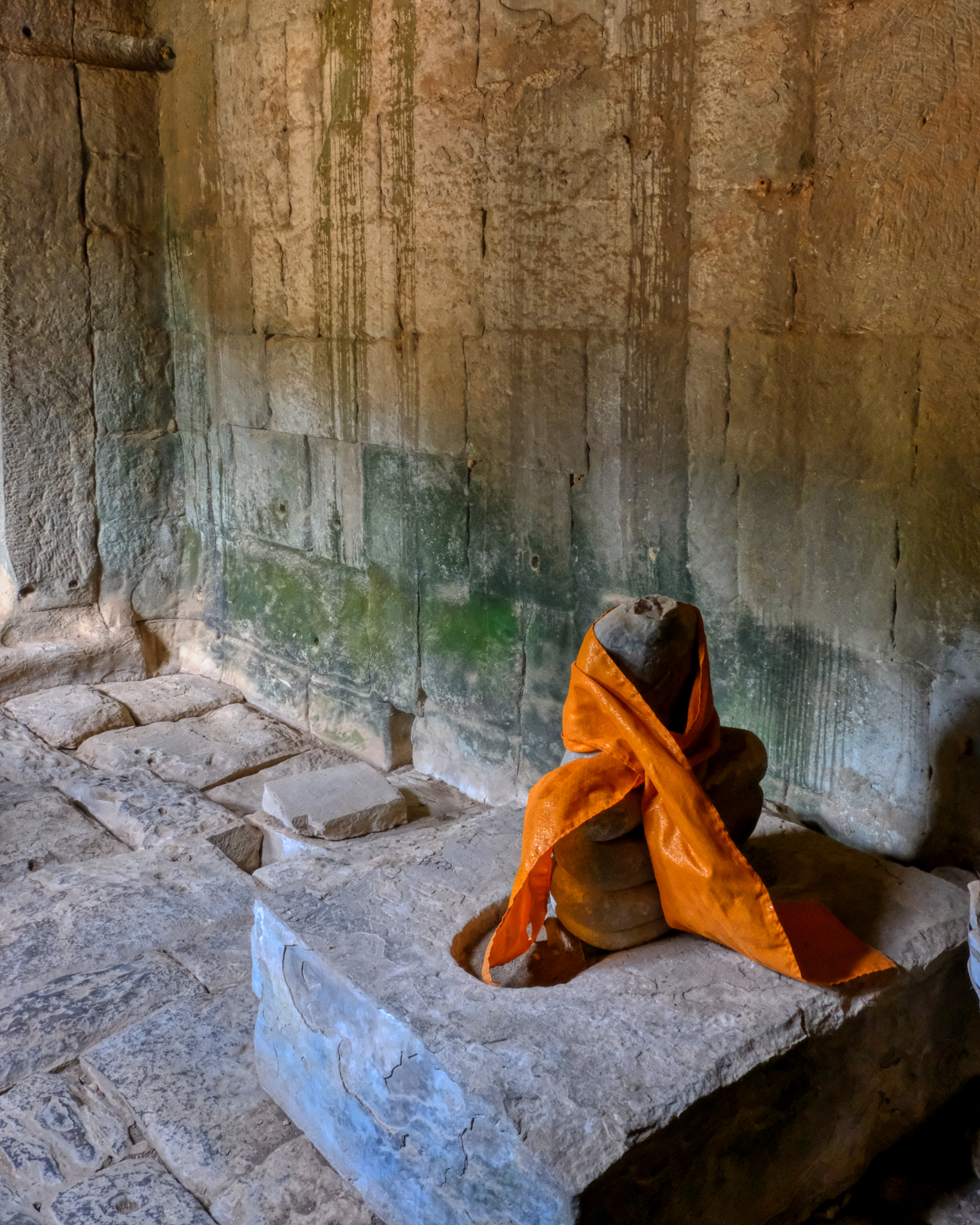 Although headless, many of the ancient Buddha relics are still tended by local followers.
Although headless, many of the ancient Buddha relics are still tended by local followers.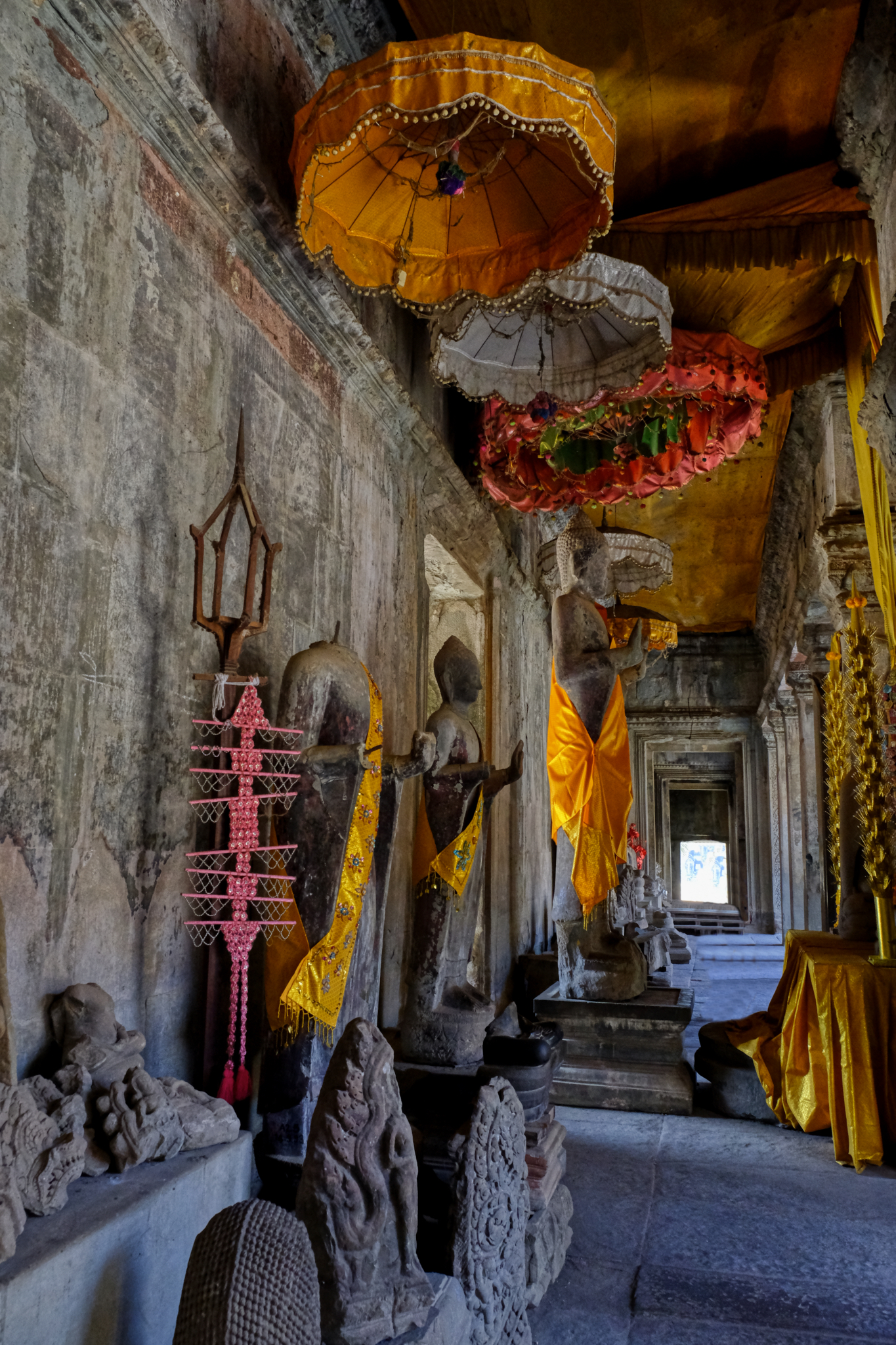 A fascinating hall of revered Buddha relics.
A fascinating hall of revered Buddha relics.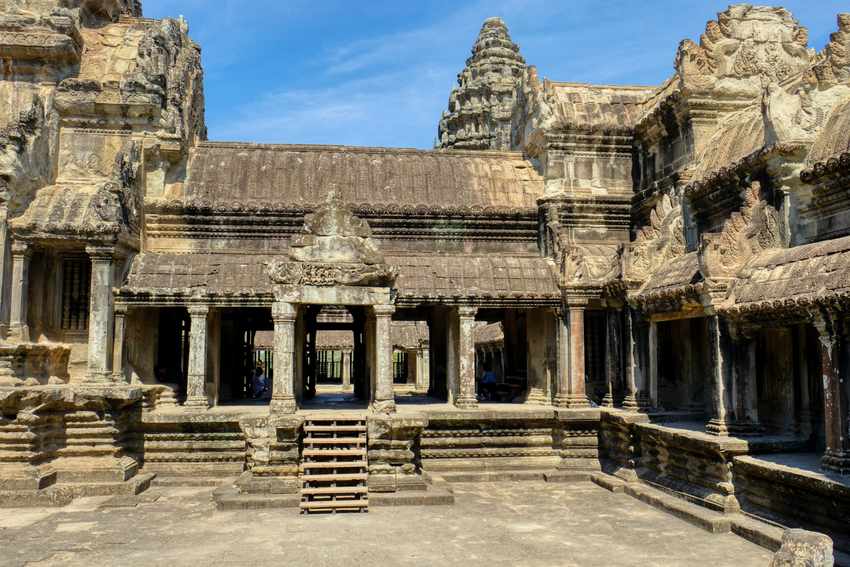 Interior courtyard within the temple structures.
Interior courtyard within the temple structures.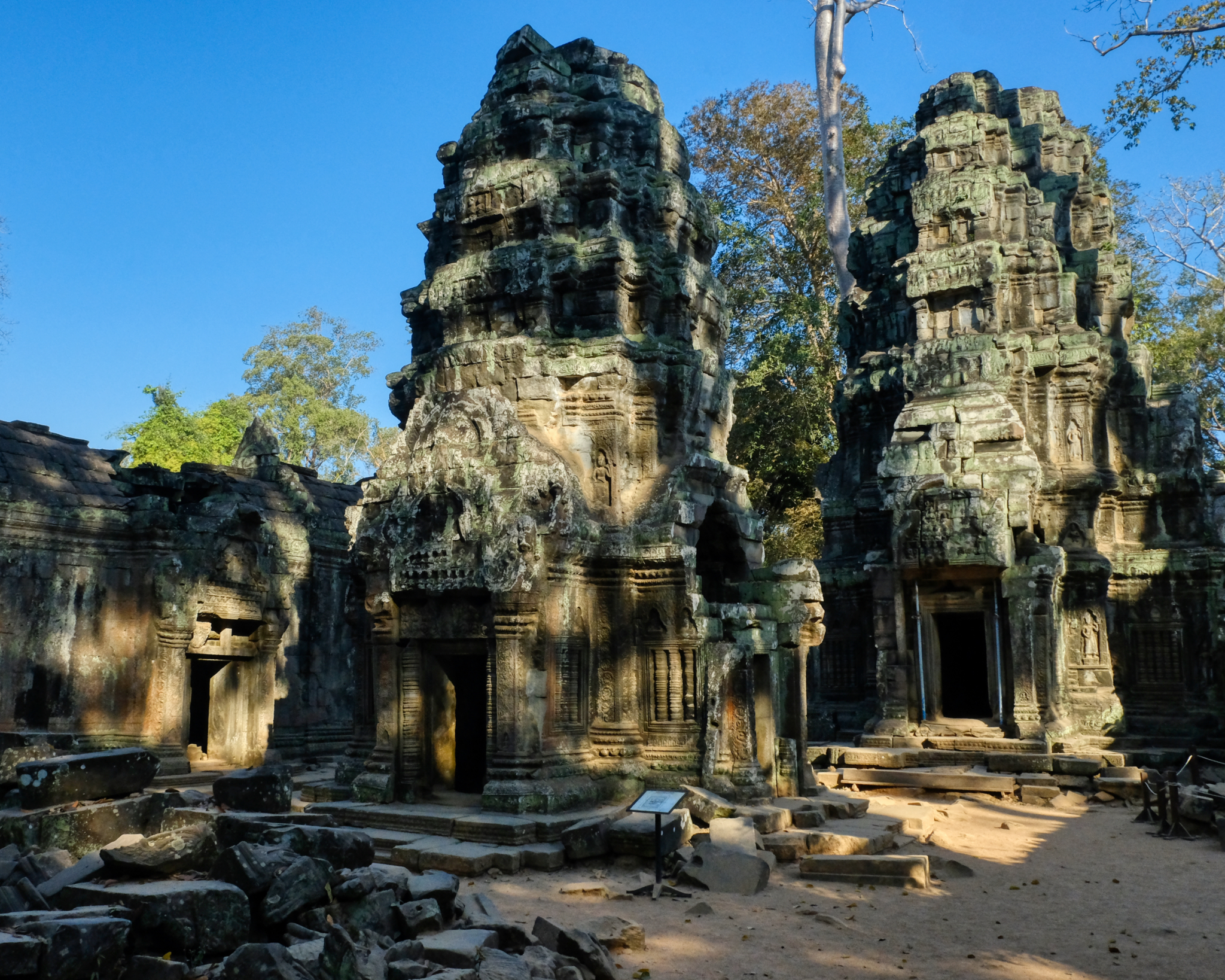 Ruins of Angkor Wat chedis. Incredible and unique architectural style.
Ruins of Angkor Wat chedis. Incredible and unique architectural style.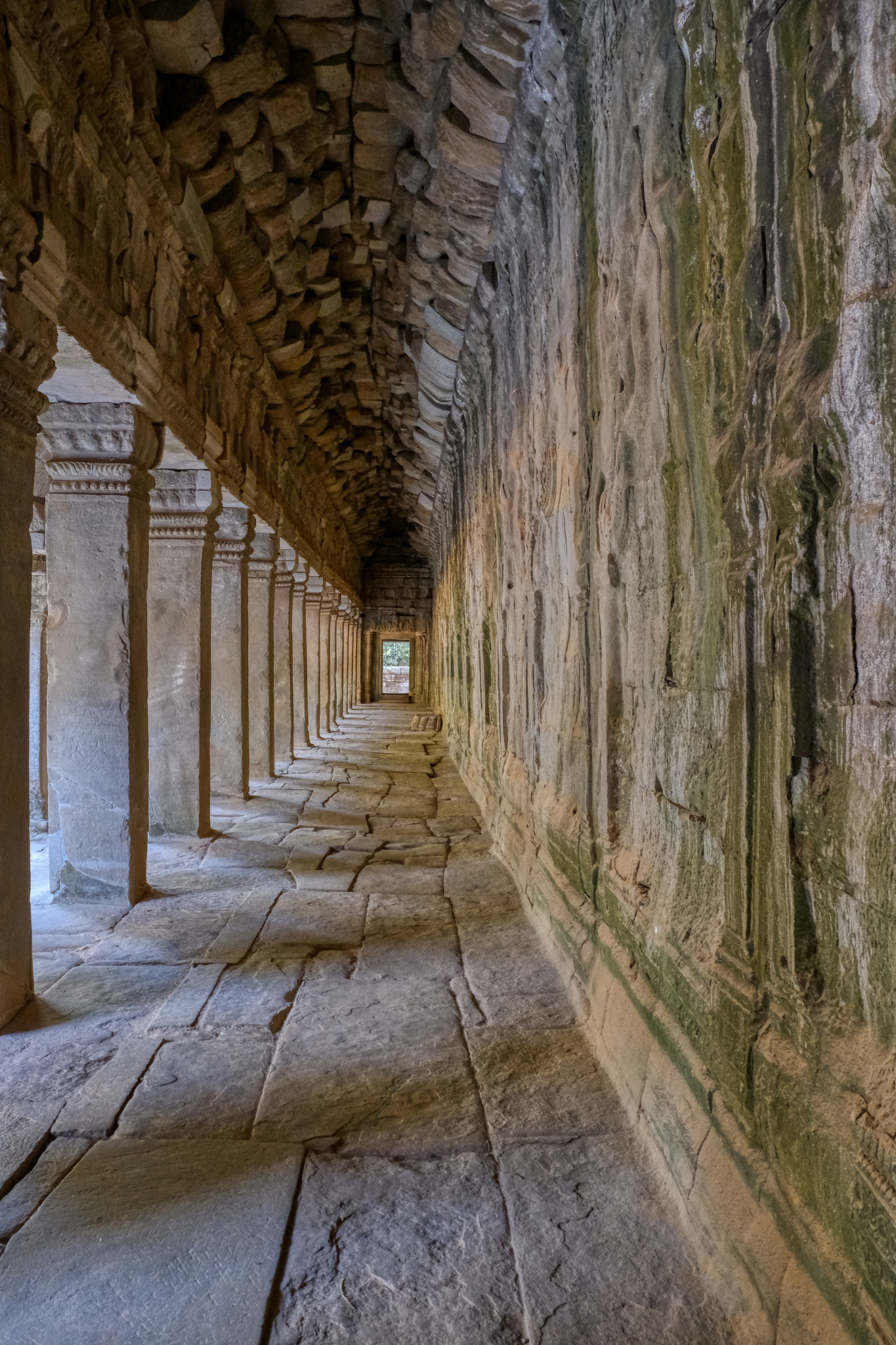 Interior halls and colonnades everywhere invite exploration.
Interior halls and colonnades everywhere invite exploration.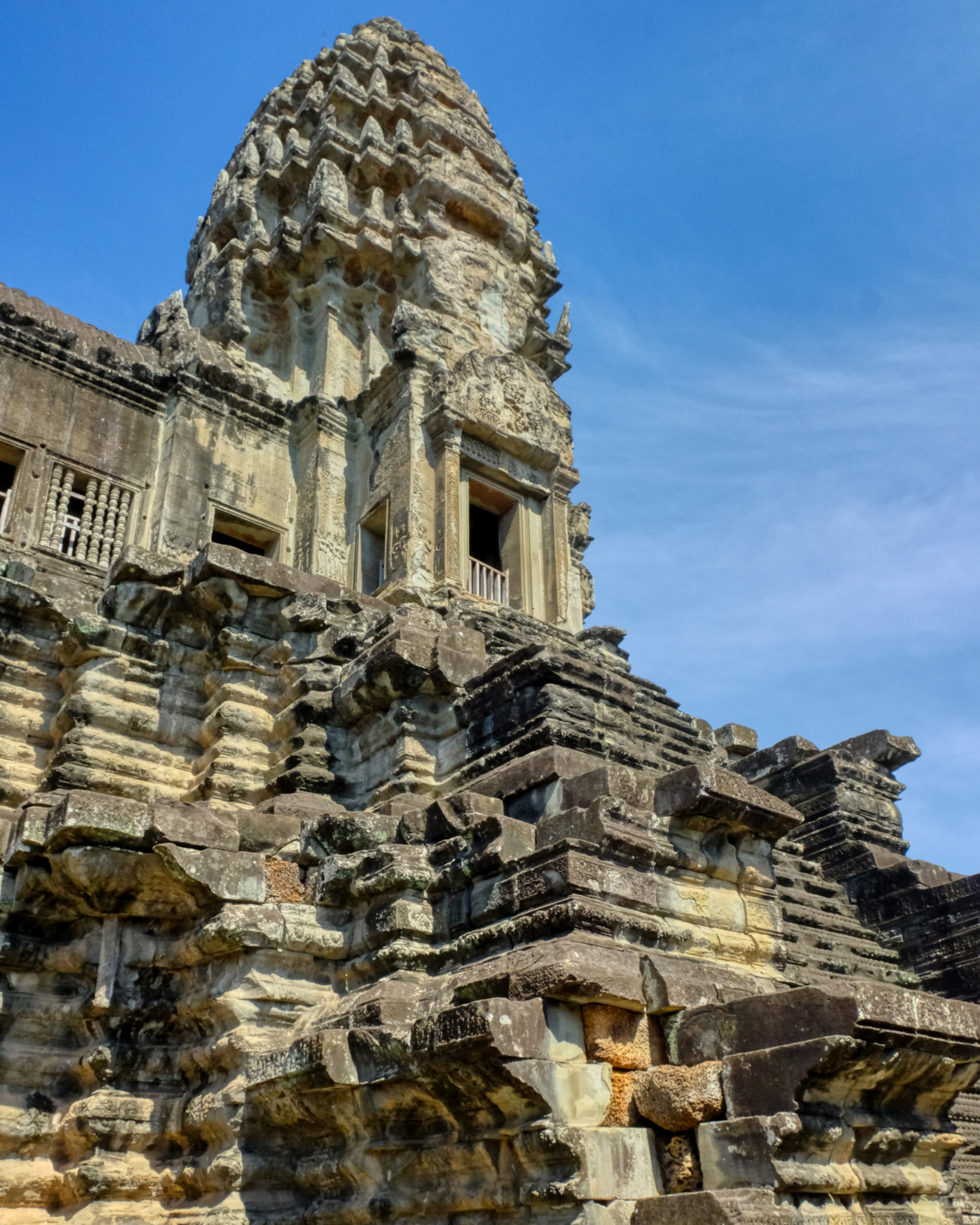 Stone spires carved with elaborate patterns of adornment.
Stone spires carved with elaborate patterns of adornment.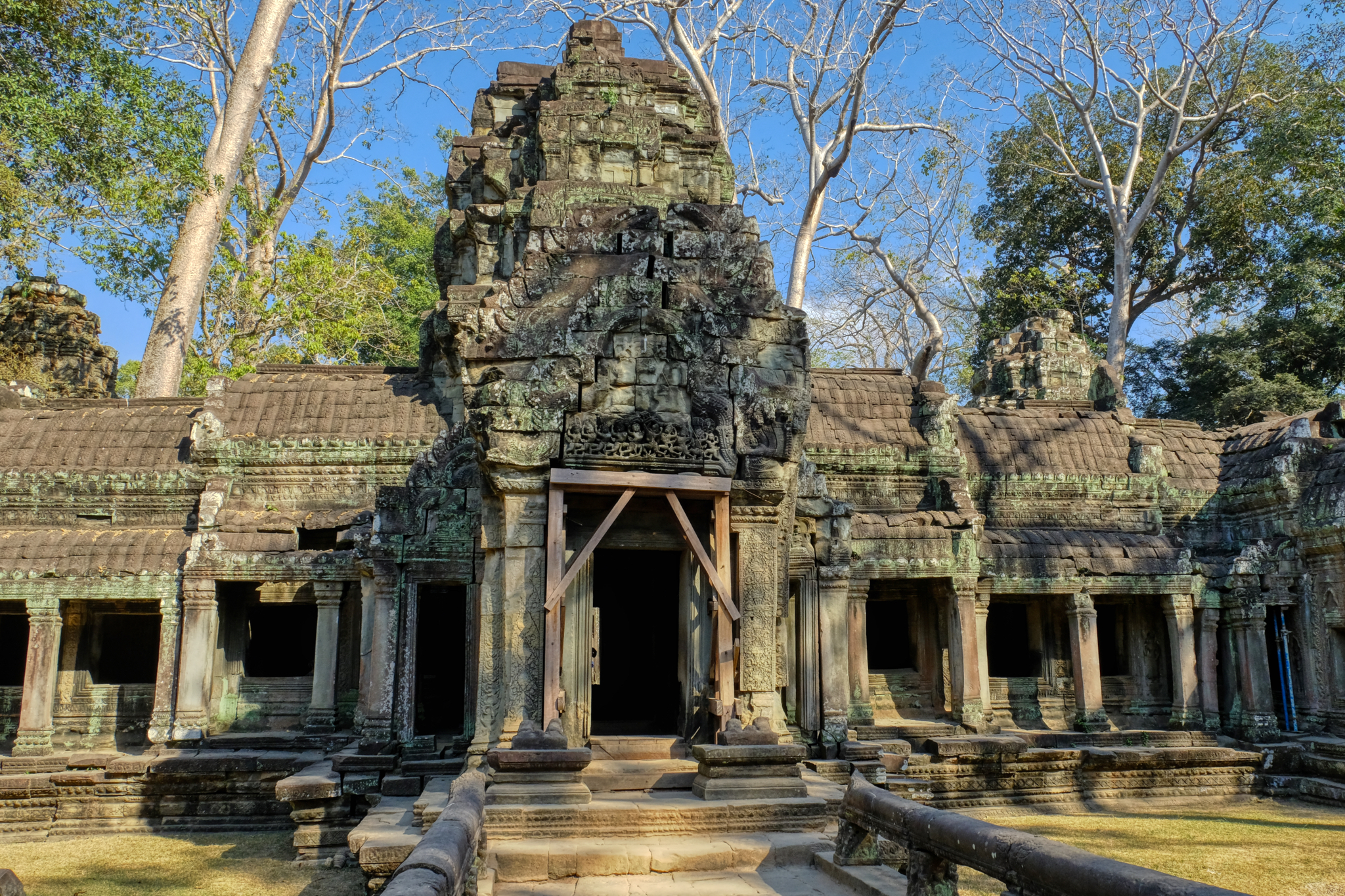 Reclaimed from the jungle that reclaimed the temple centuries ago.
Reclaimed from the jungle that reclaimed the temple centuries ago.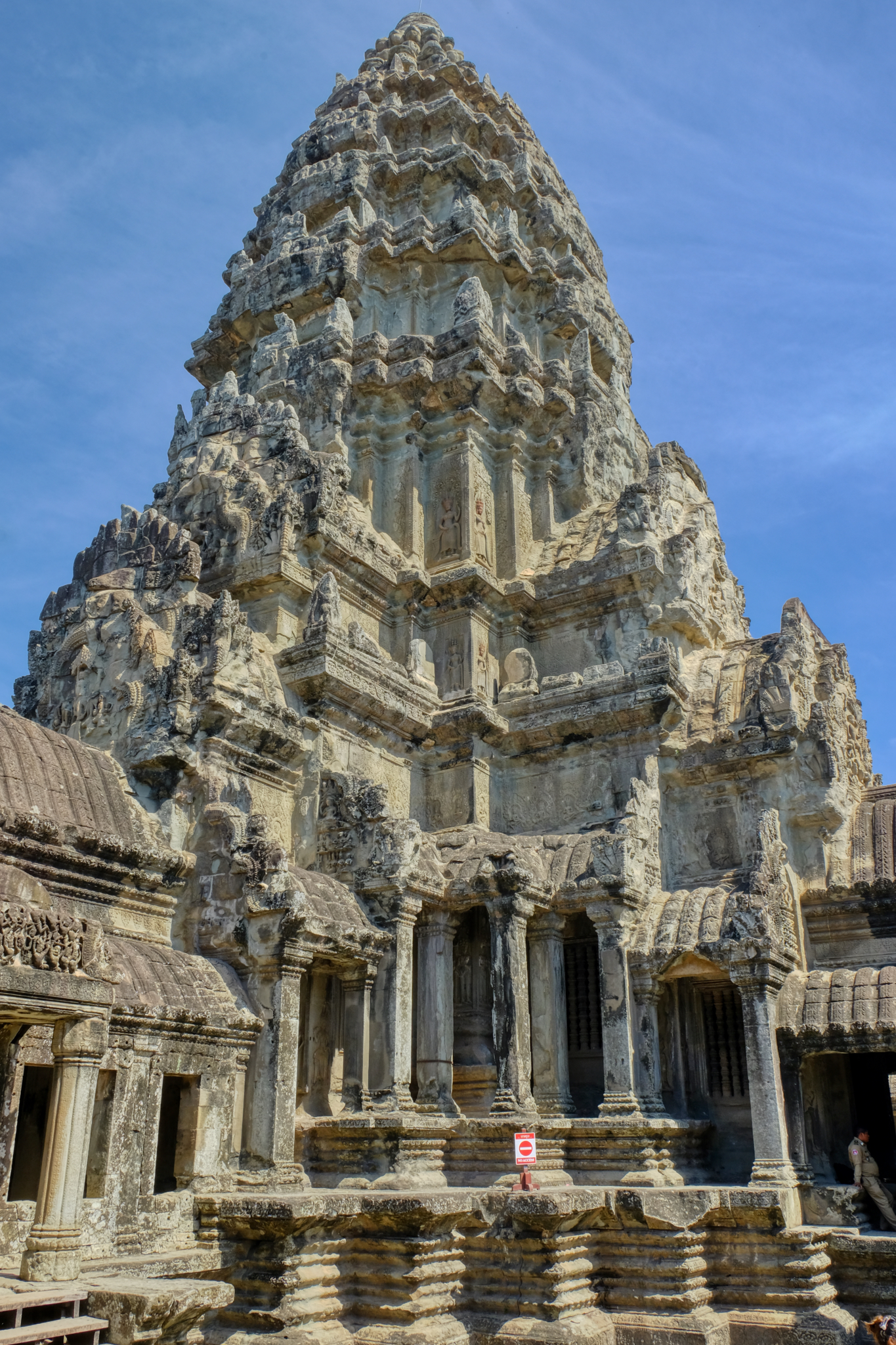 A temple spire. Fascinating.
A temple spire. Fascinating.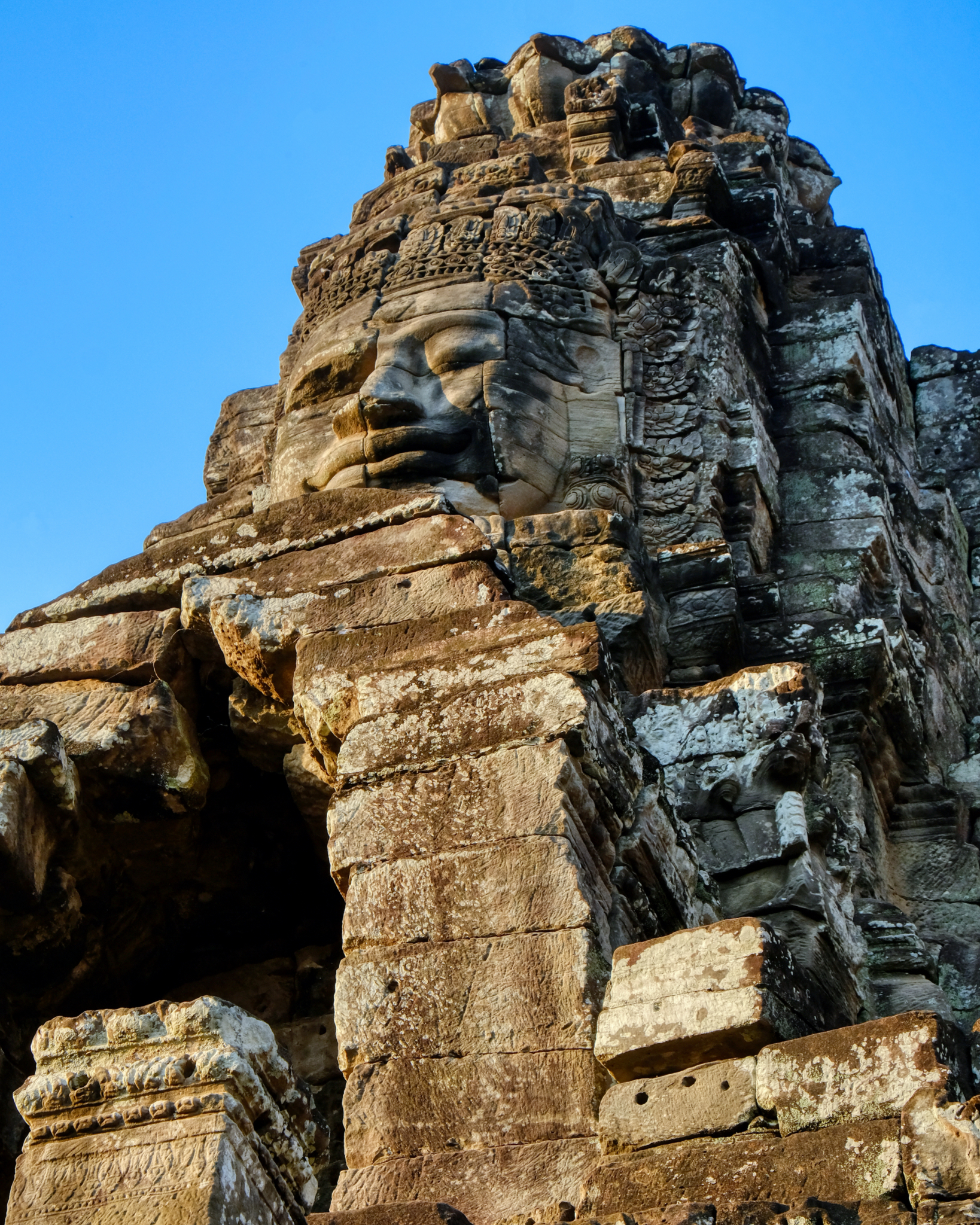
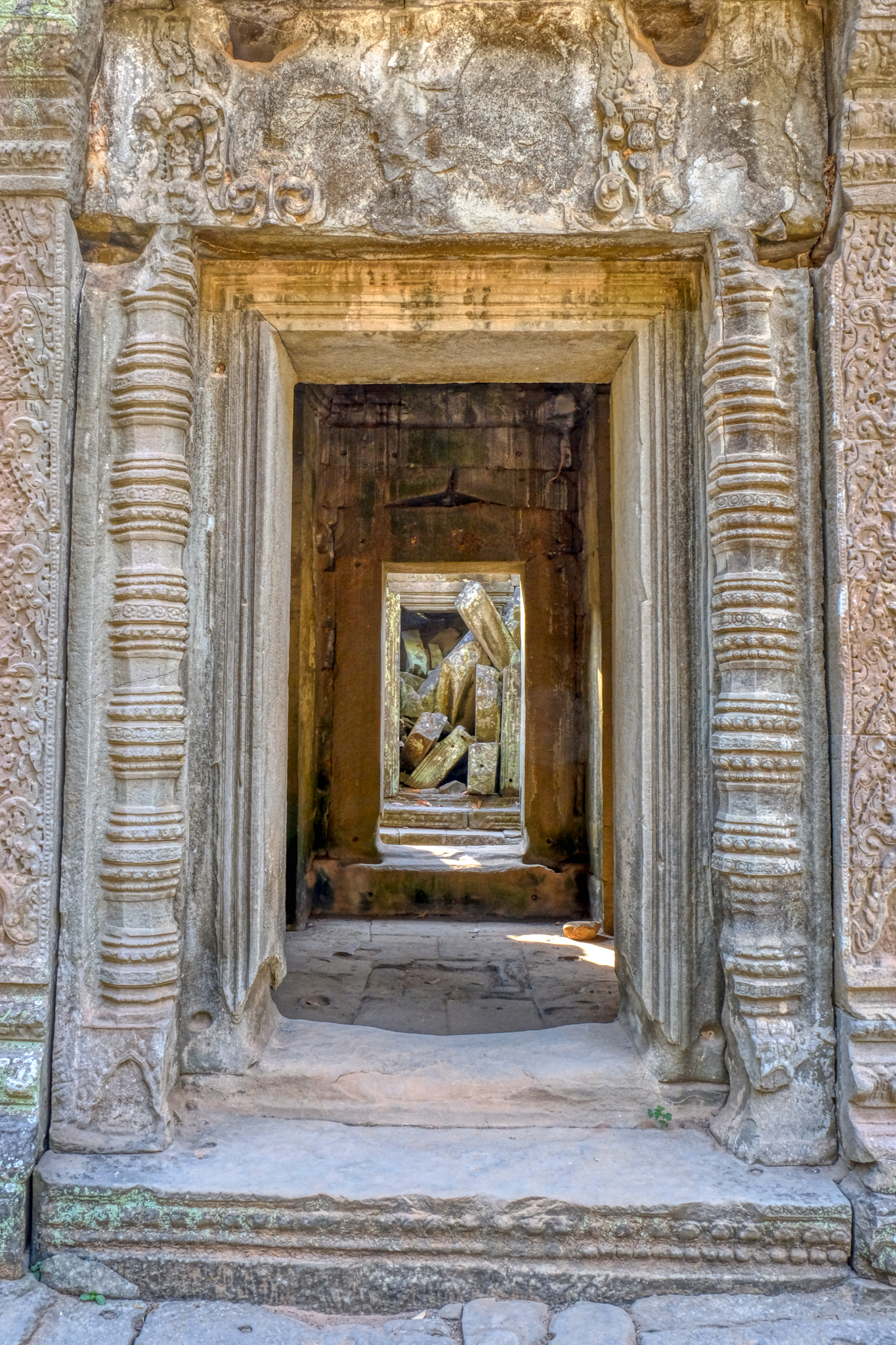 Endless passages, rooms, doors, and b locked exits. It was incredibly interesting to just wander around in this ancient place.
Endless passages, rooms, doors, and b locked exits. It was incredibly interesting to just wander around in this ancient place.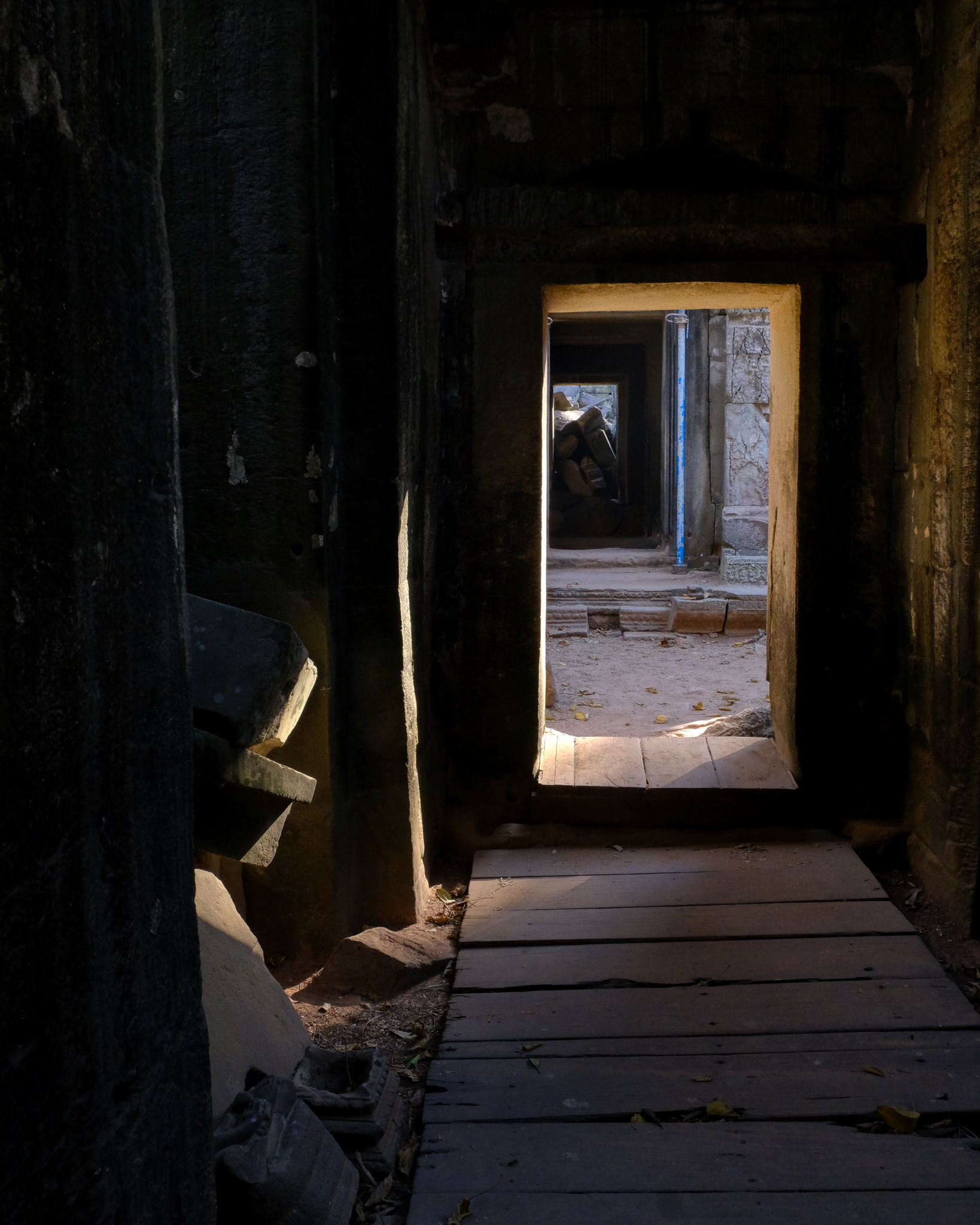 A space of wonder.
A space of wonder.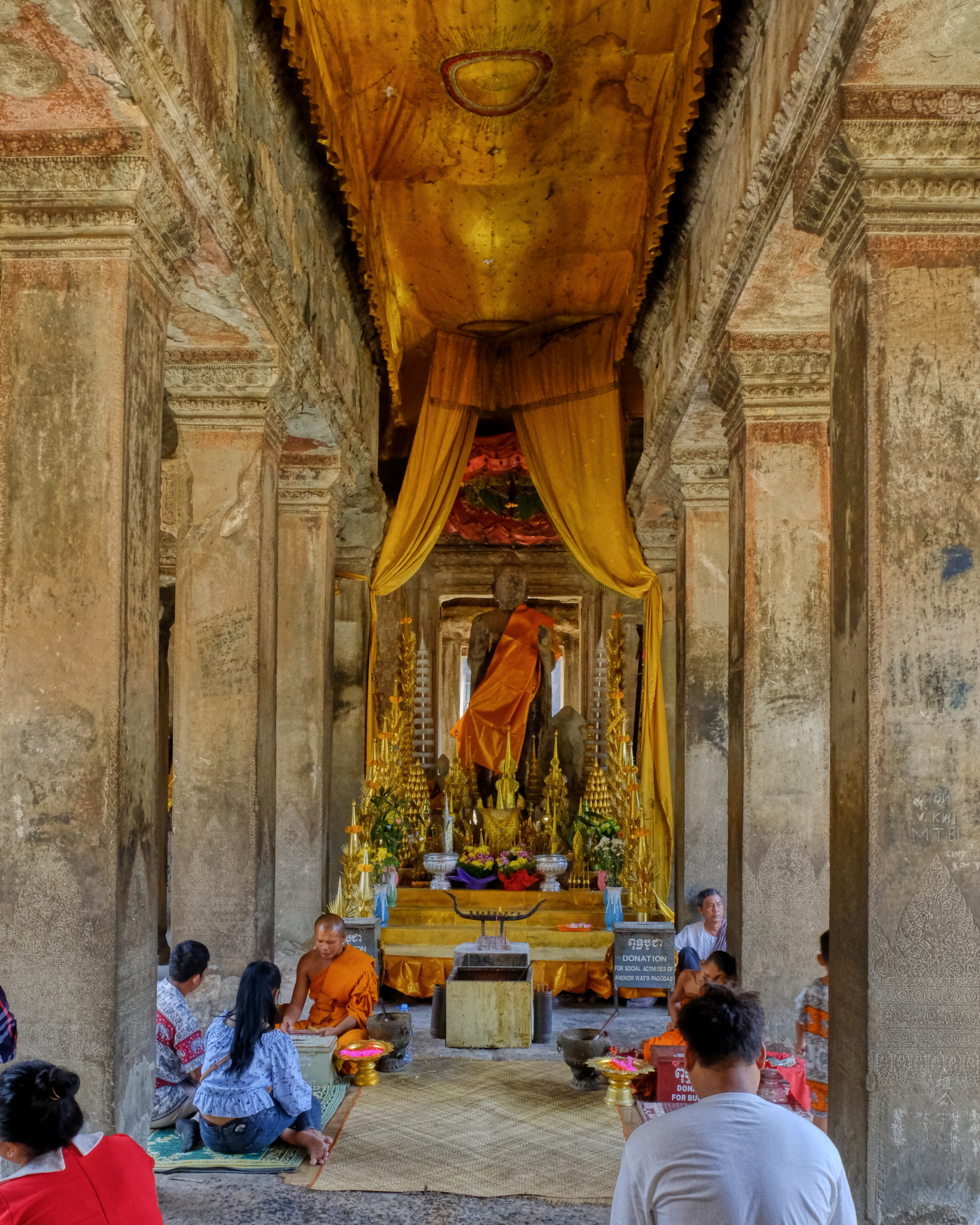 Rounding a corner inside the temple I came across Buddhist monks blessing devotees: Ankor Wat is still a living spiritual center.
Rounding a corner inside the temple I came across Buddhist monks blessing devotees: Ankor Wat is still a living spiritual center.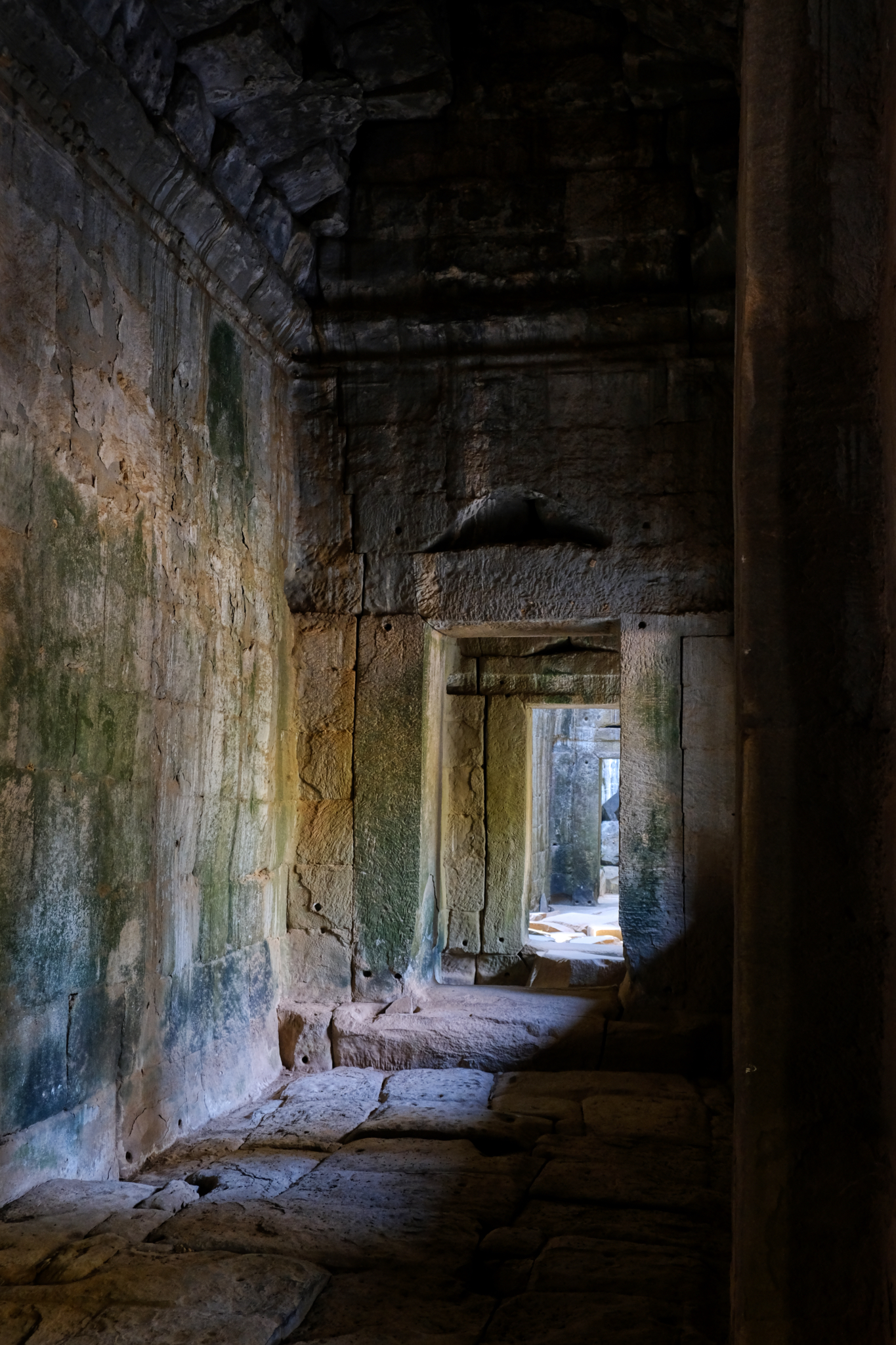 After the blessing monks . . . back into the labyrinth of passages . . .
After the blessing monks . . . back into the labyrinth of passages . . .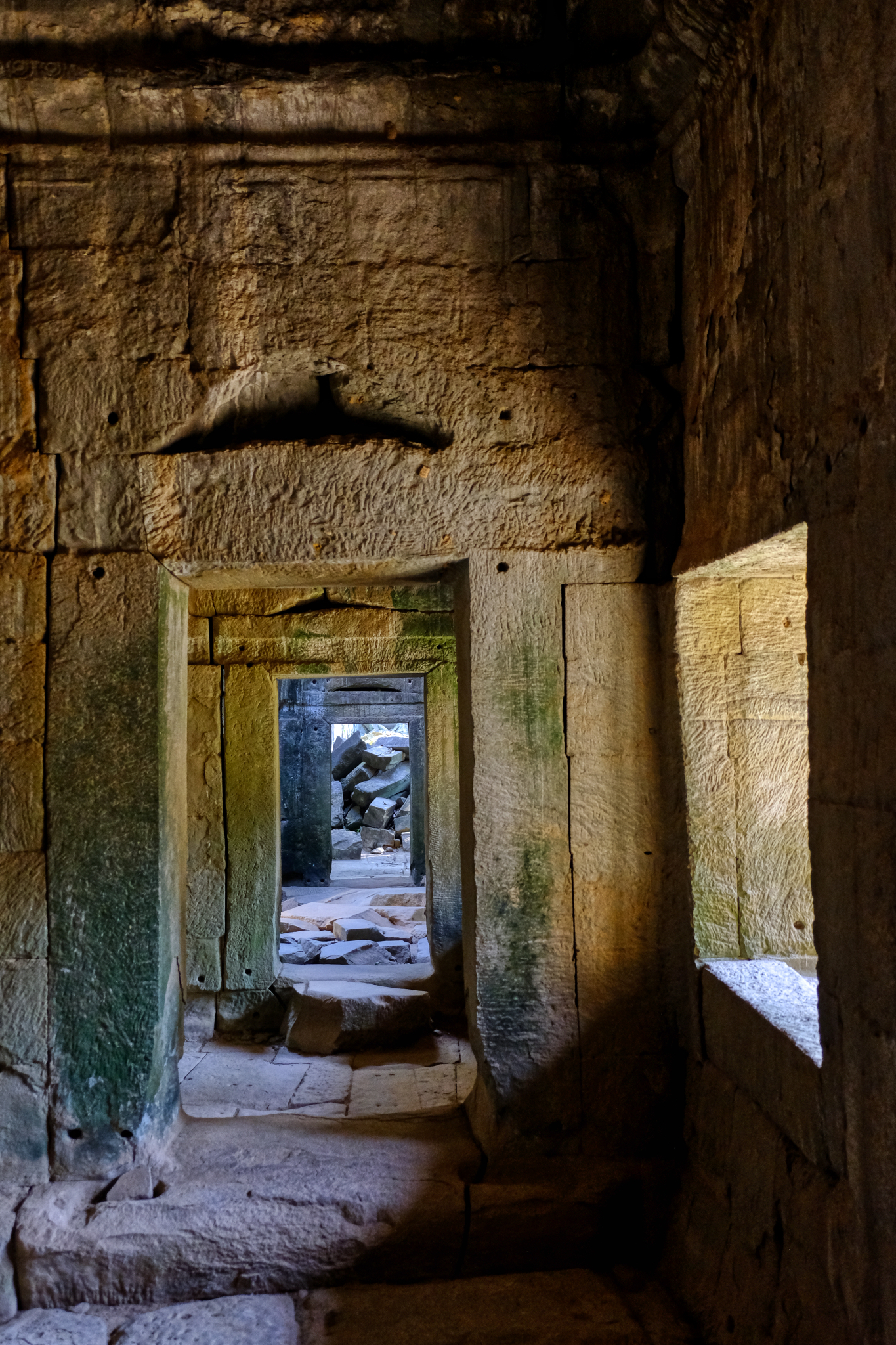 On and on . . . imagining the people who occupied these spaces when it was an active and populated city.
On and on . . . imagining the people who occupied these spaces when it was an active and populated city.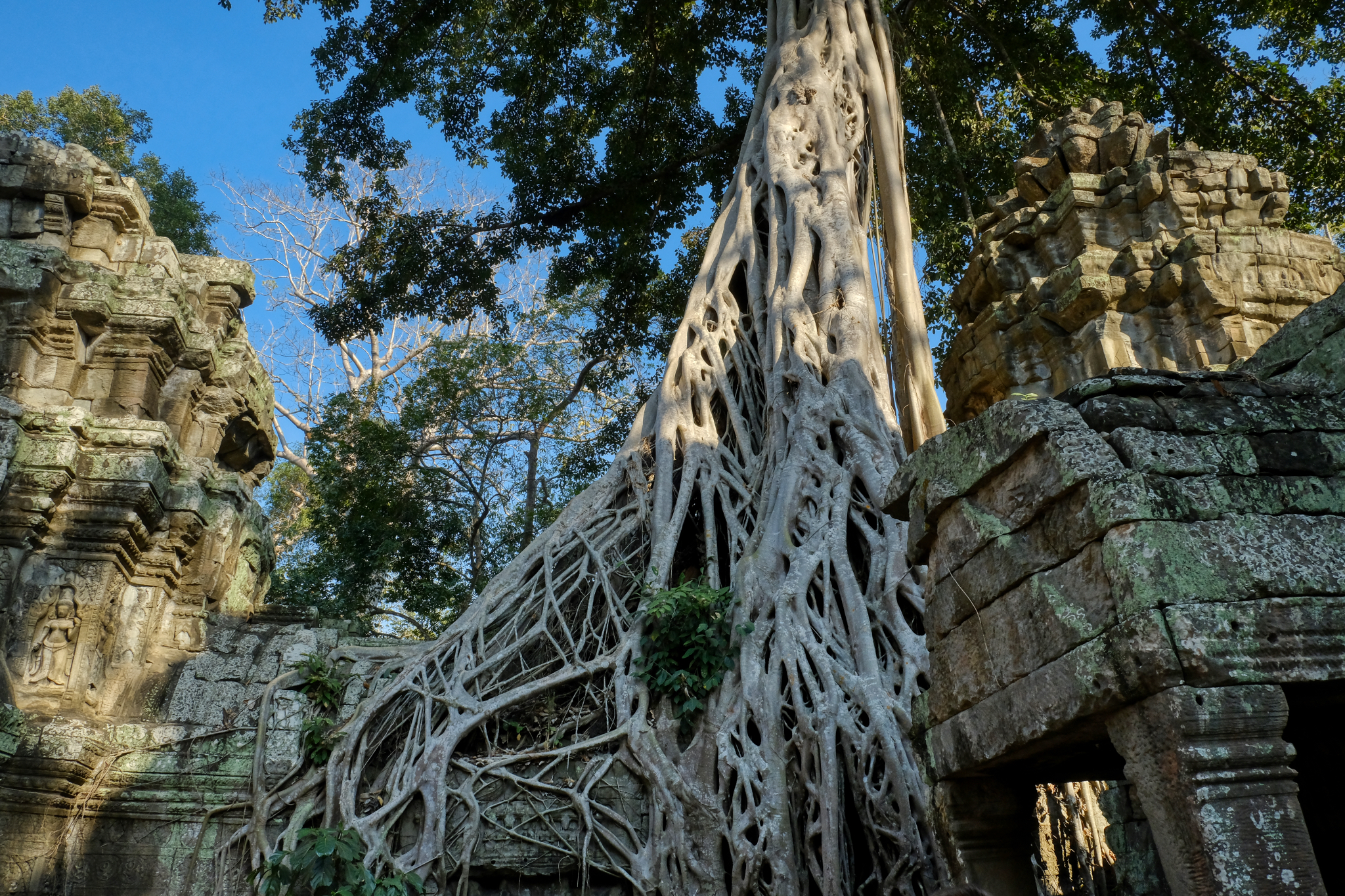 The jungle is still trying to interpose itself on the ancient temple structures.
The jungle is still trying to interpose itself on the ancient temple structures.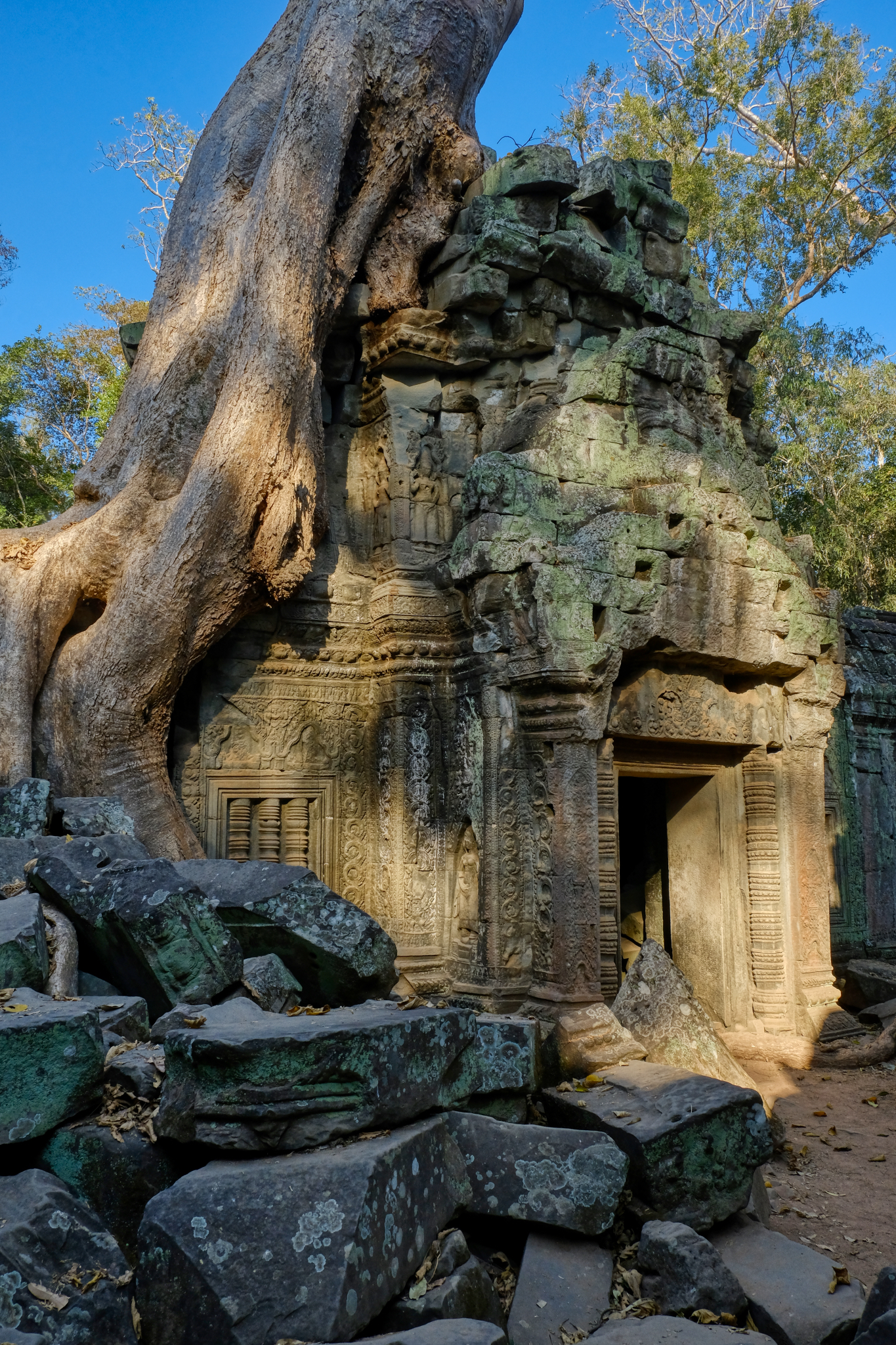 The iconic image of Angkor Wat is the giant tree roots embracing the temple stones.
The iconic image of Angkor Wat is the giant tree roots embracing the temple stones.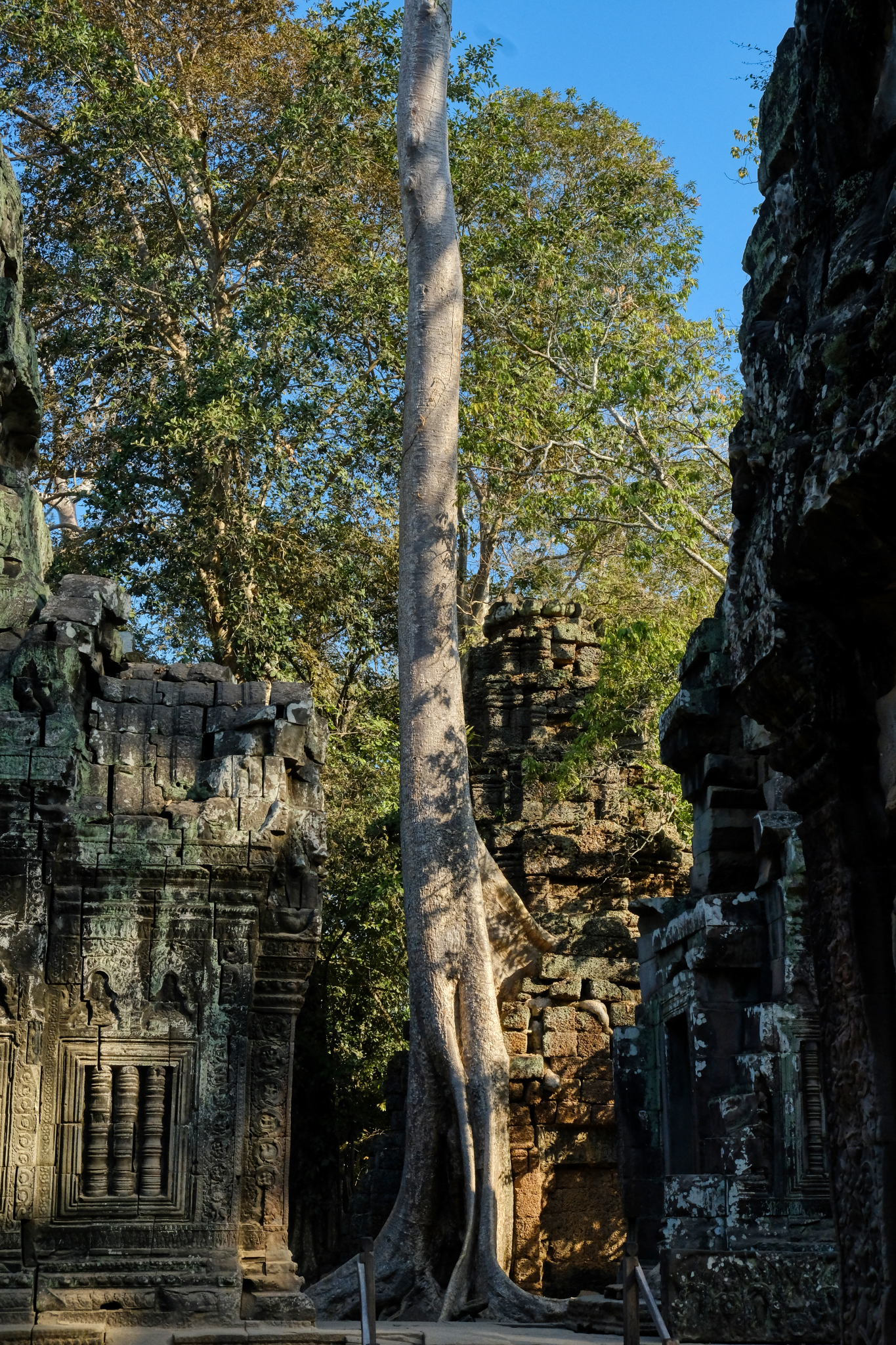 A mutual embrace . . . this tower looks as if it would fall without the support of the tree.
A mutual embrace . . . this tower looks as if it would fall without the support of the tree.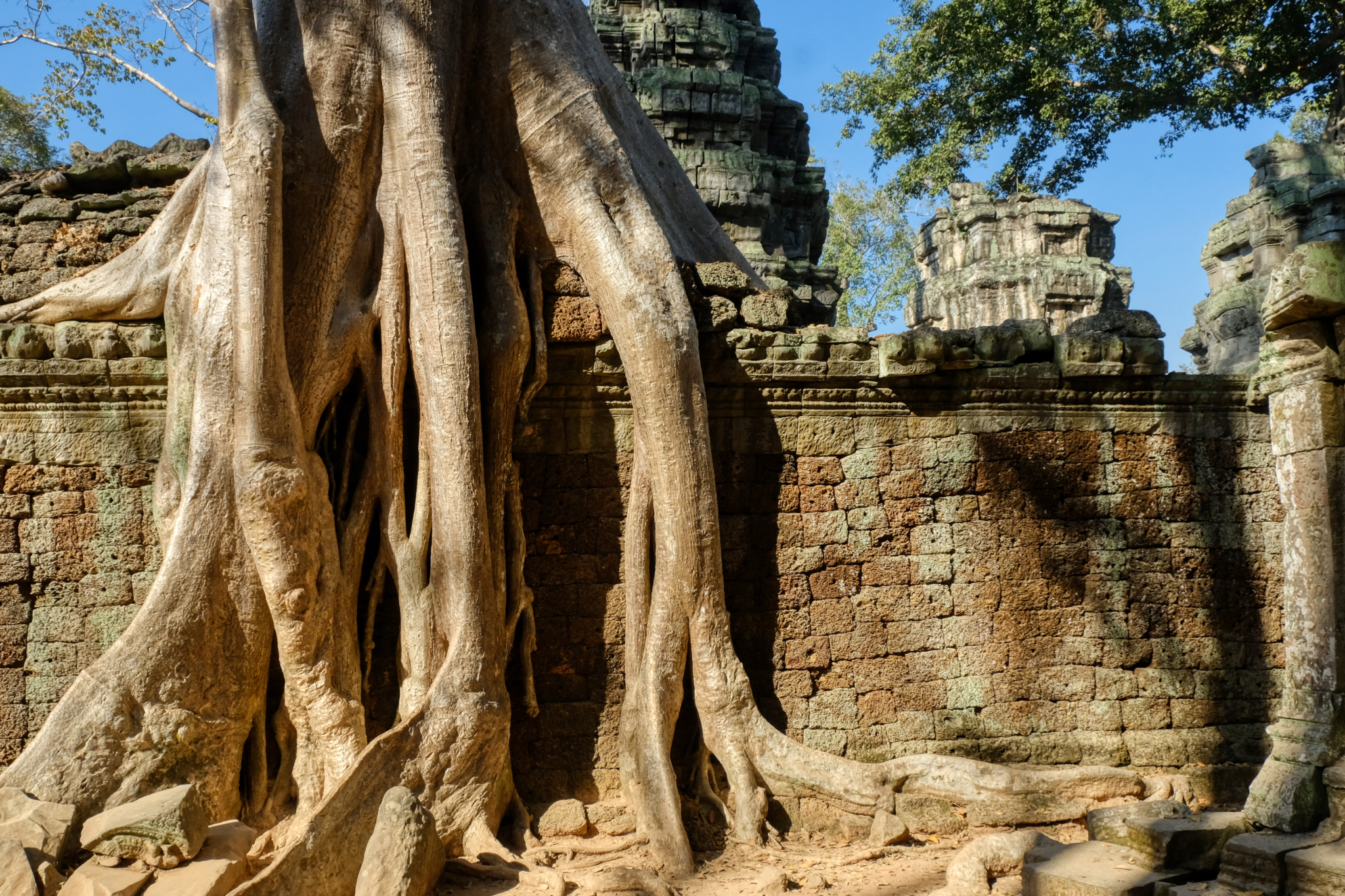 A wall with cascading roots. Truly awesome.
A wall with cascading roots. Truly awesome.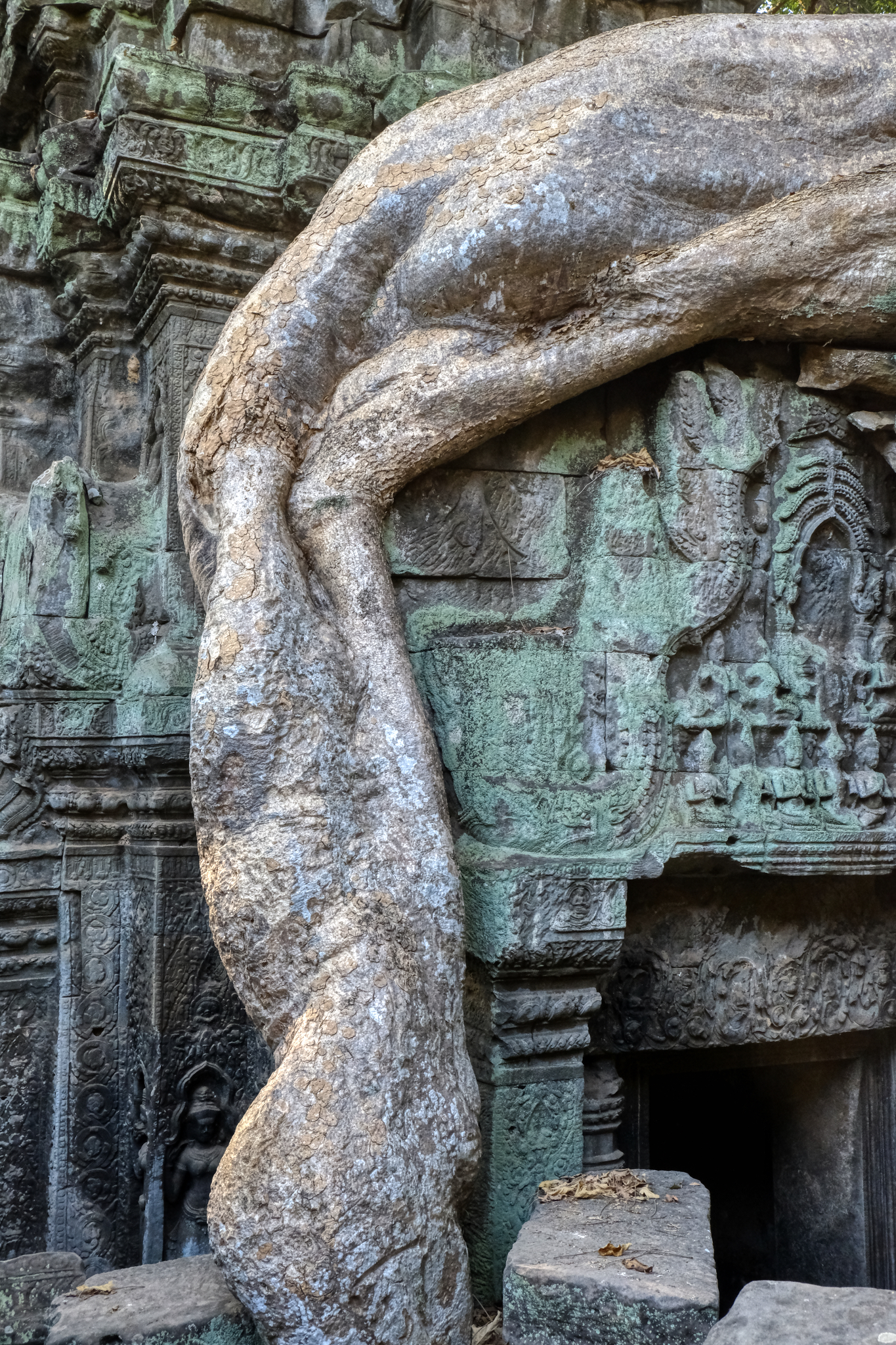 Like a limb from a giant alien animal . . . these roots are massive!
Like a limb from a giant alien animal . . . these roots are massive!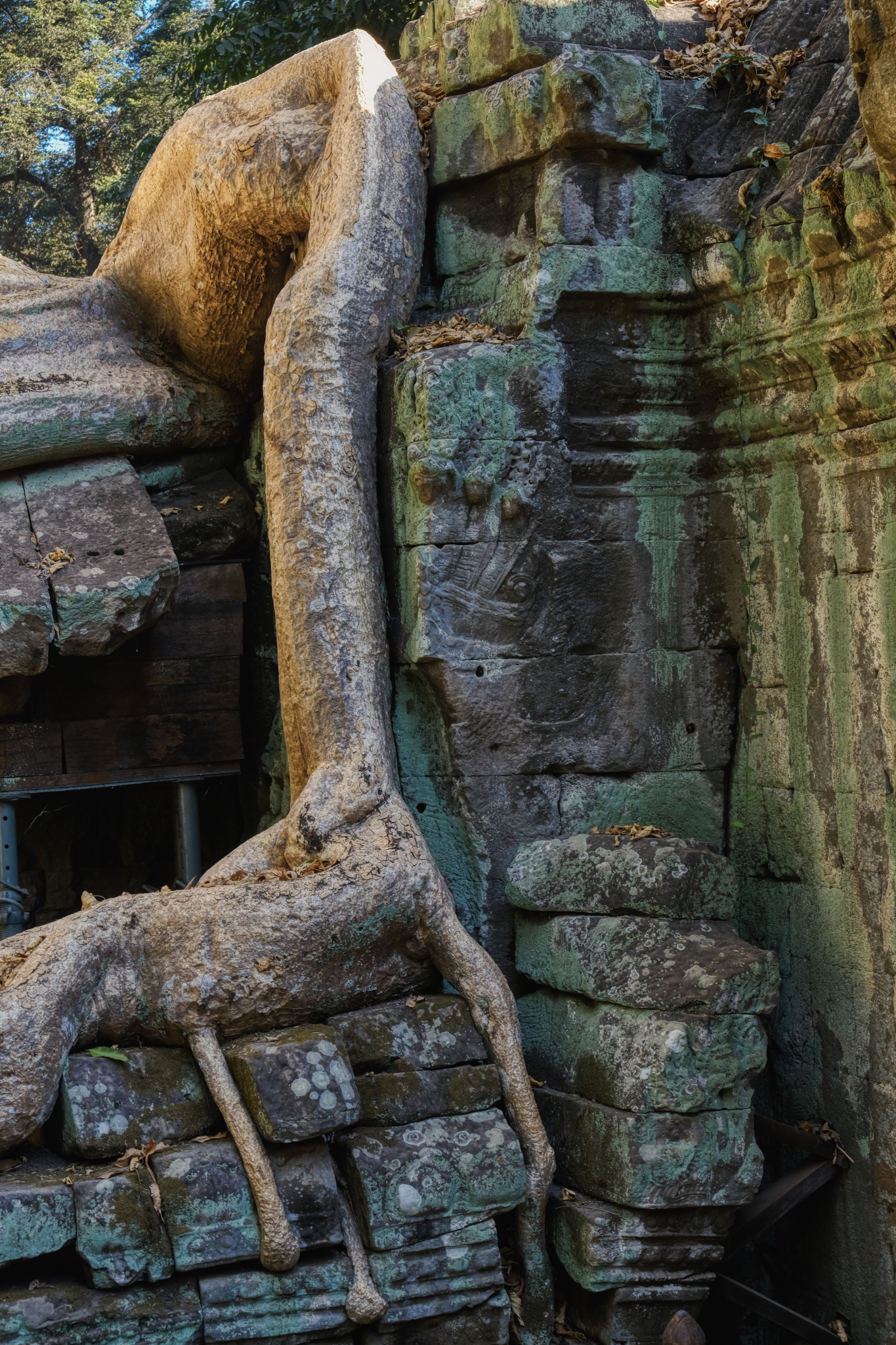 The temple in the grip of its alien overlord!
The temple in the grip of its alien overlord!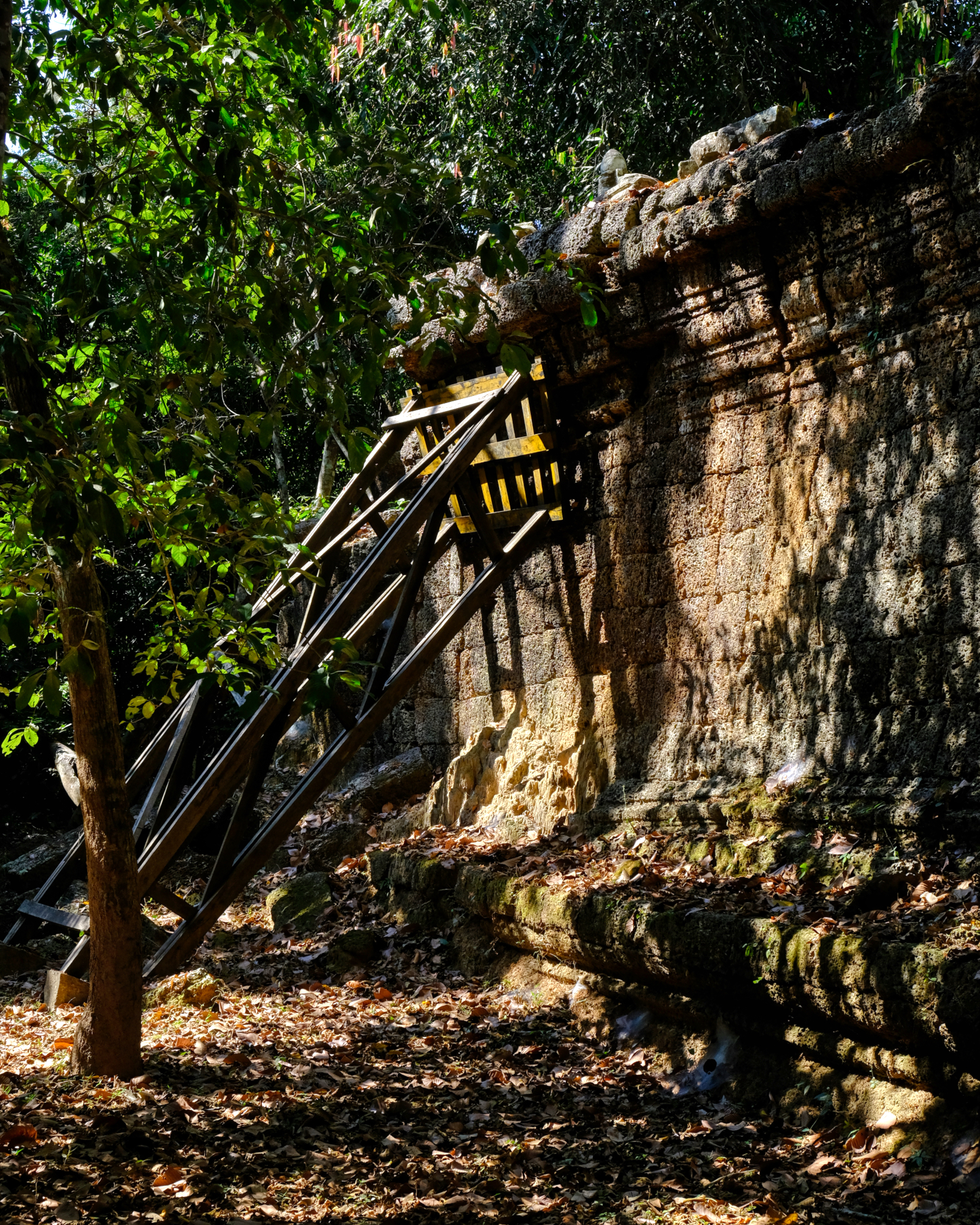 The aging walls supported. Most of the restoration work on Angkor Wat has been carries out by French and Cambodian archaeologists.
The aging walls supported. Most of the restoration work on Angkor Wat has been carries out by French and Cambodian archaeologists.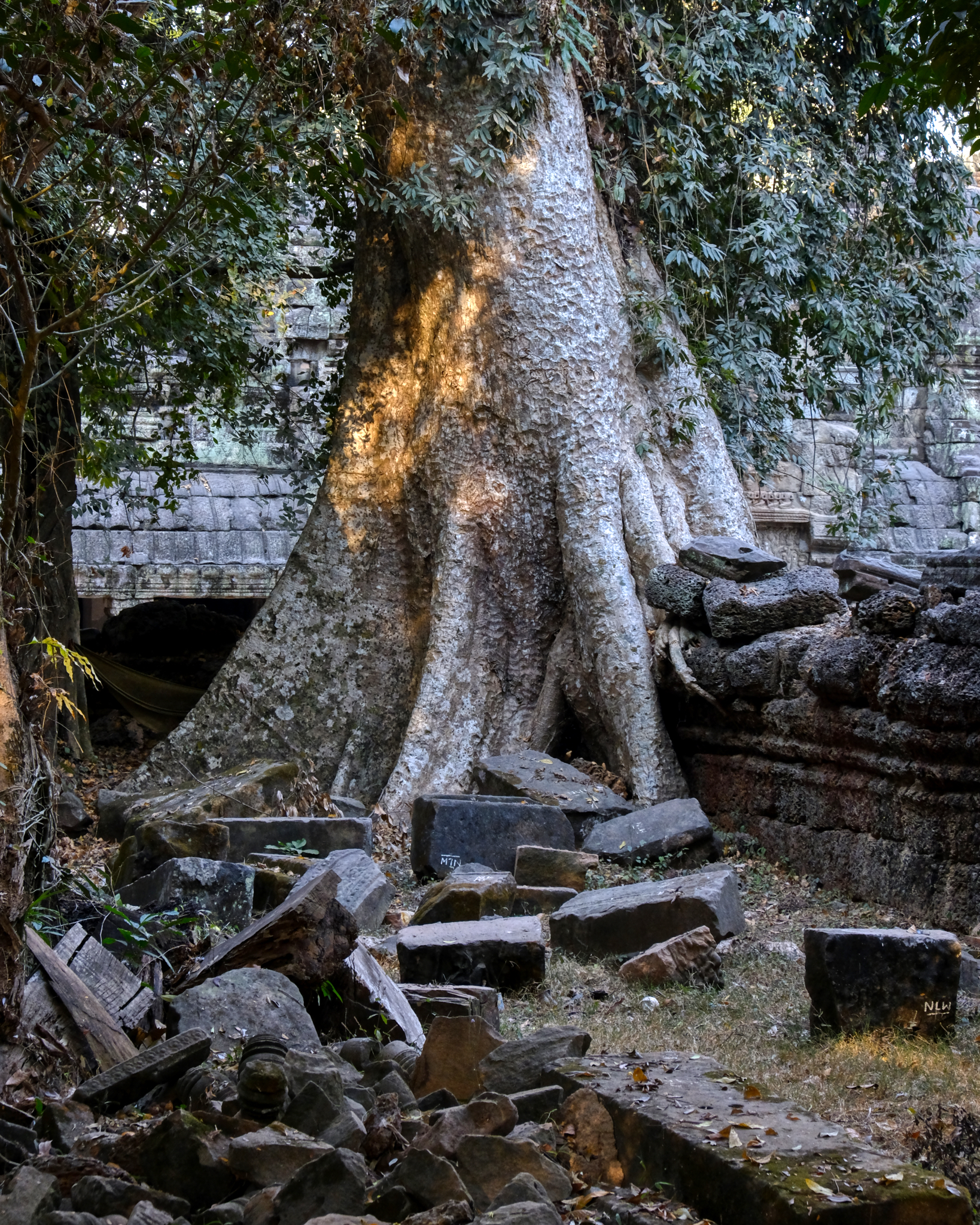 Much of the various sites remain unreconstructed.
Much of the various sites remain unreconstructed.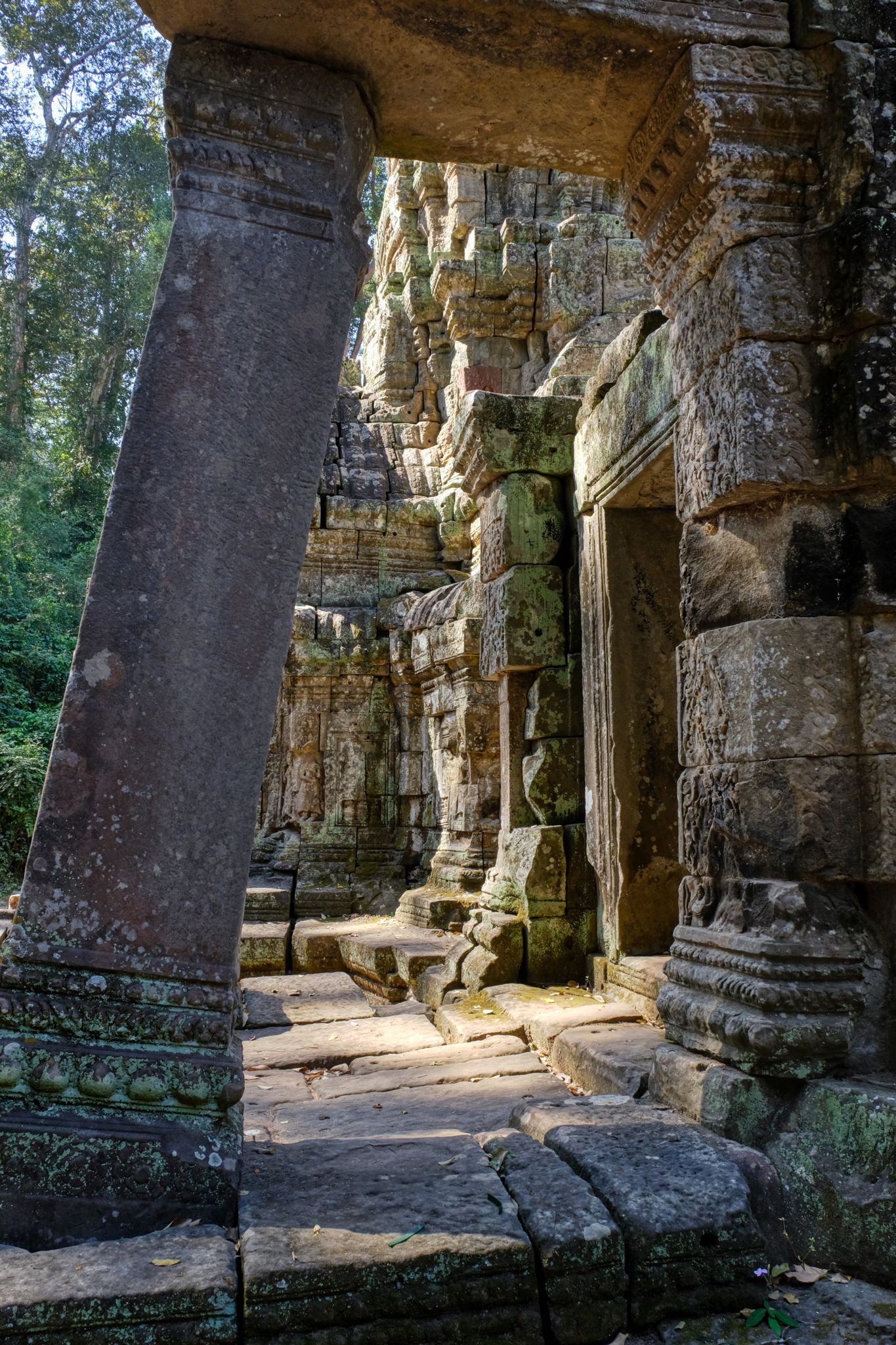 The state of deterioration is surprisingly less than one would have thought after 1000 years . . . but they build out of stone!
The state of deterioration is surprisingly less than one would have thought after 1000 years . . . but they build out of stone!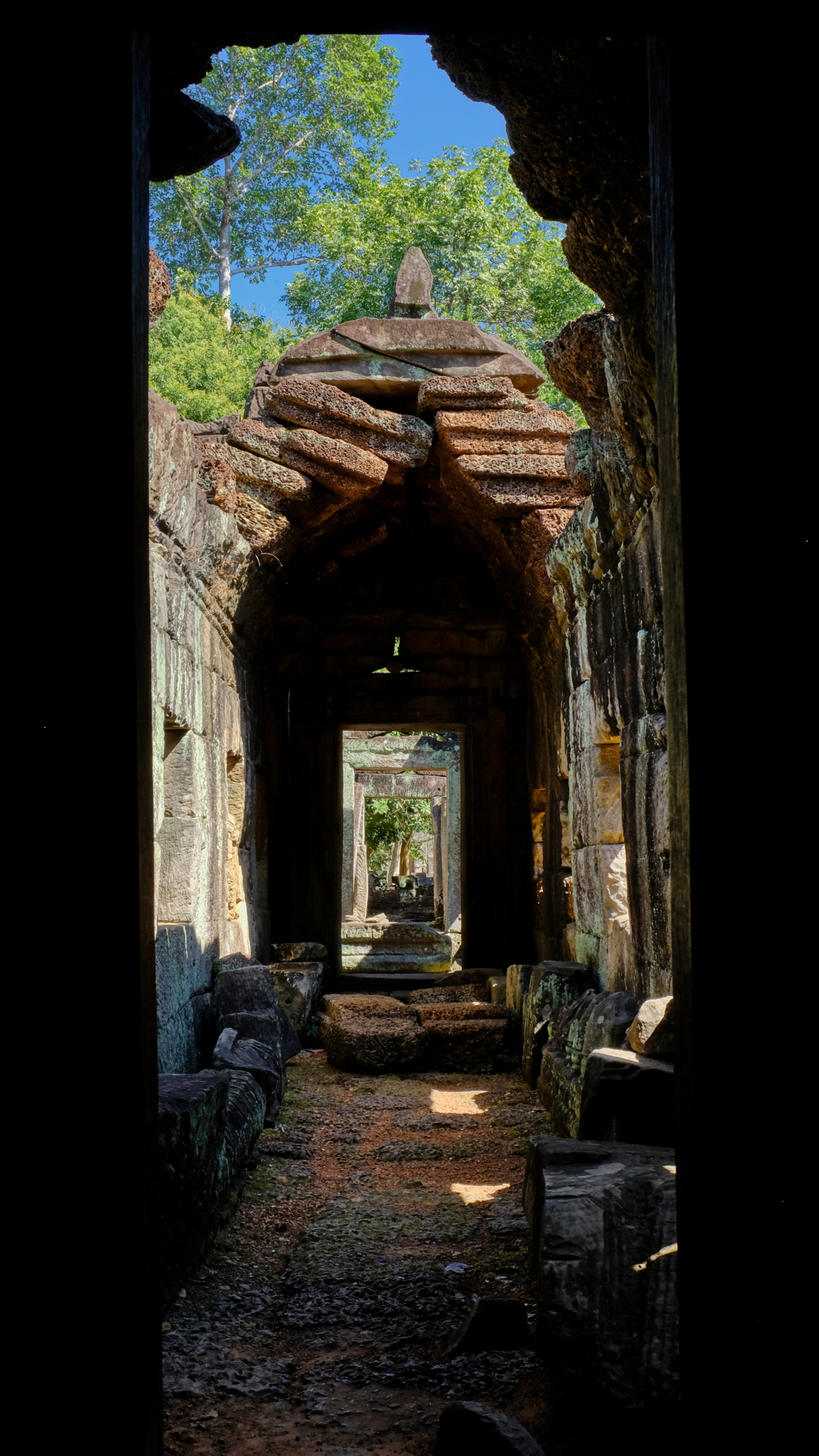 My friend and I wandered for many hours through these narrow mysterious passages, always surprised with some amazing scene around every corner . . .
My friend and I wandered for many hours through these narrow mysterious passages, always surprised with some amazing scene around every corner . . .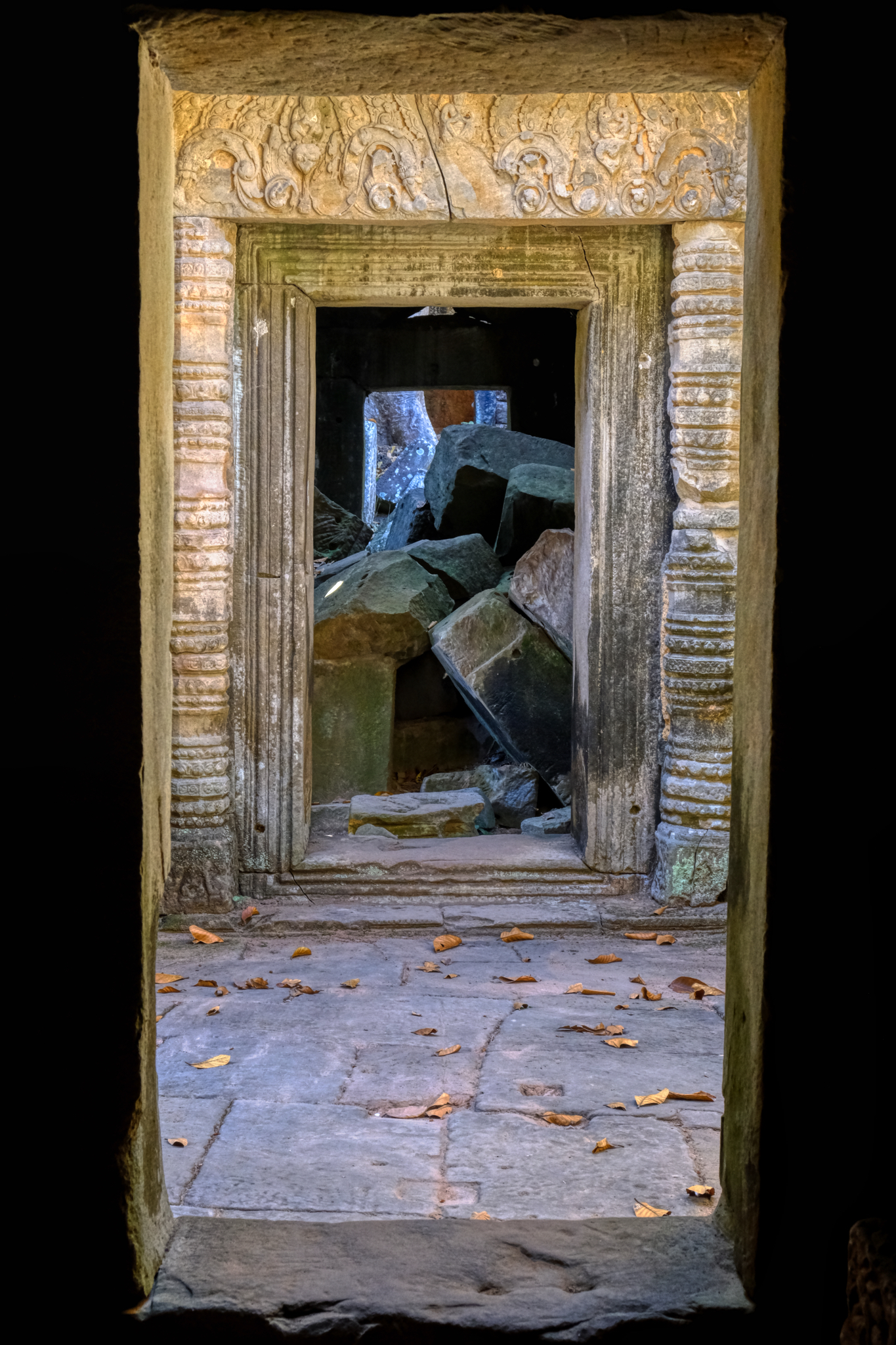 . . . always another scene of doors and passages . . . gorgeous . . .
. . . always another scene of doors and passages . . . gorgeous . . .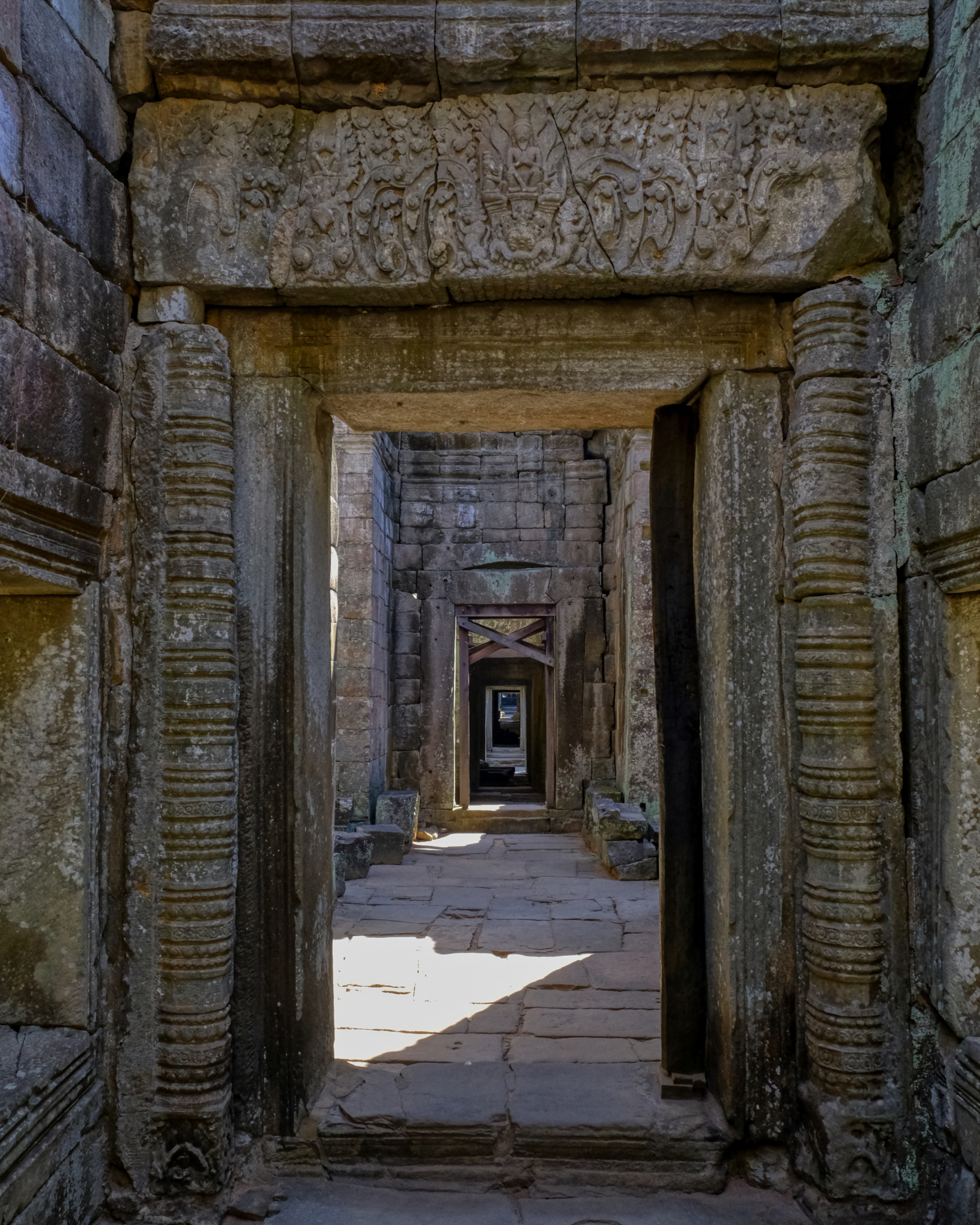 . . . on and on we walked, our mouths open in amazement all the while!
. . . on and on we walked, our mouths open in amazement all the while!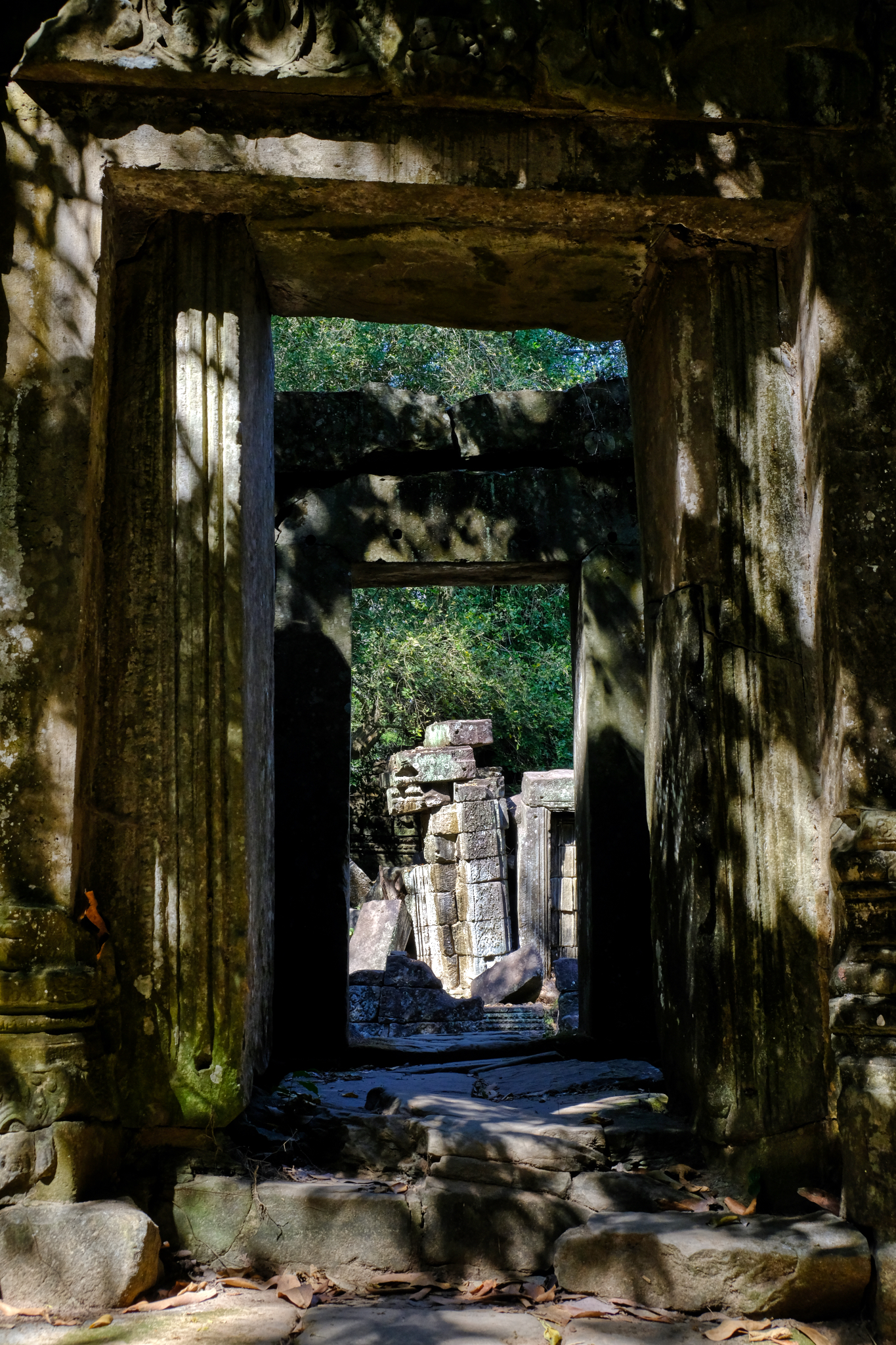 Our long walks through the interior passages would occasionally lead us back outdoors.
Our long walks through the interior passages would occasionally lead us back outdoors.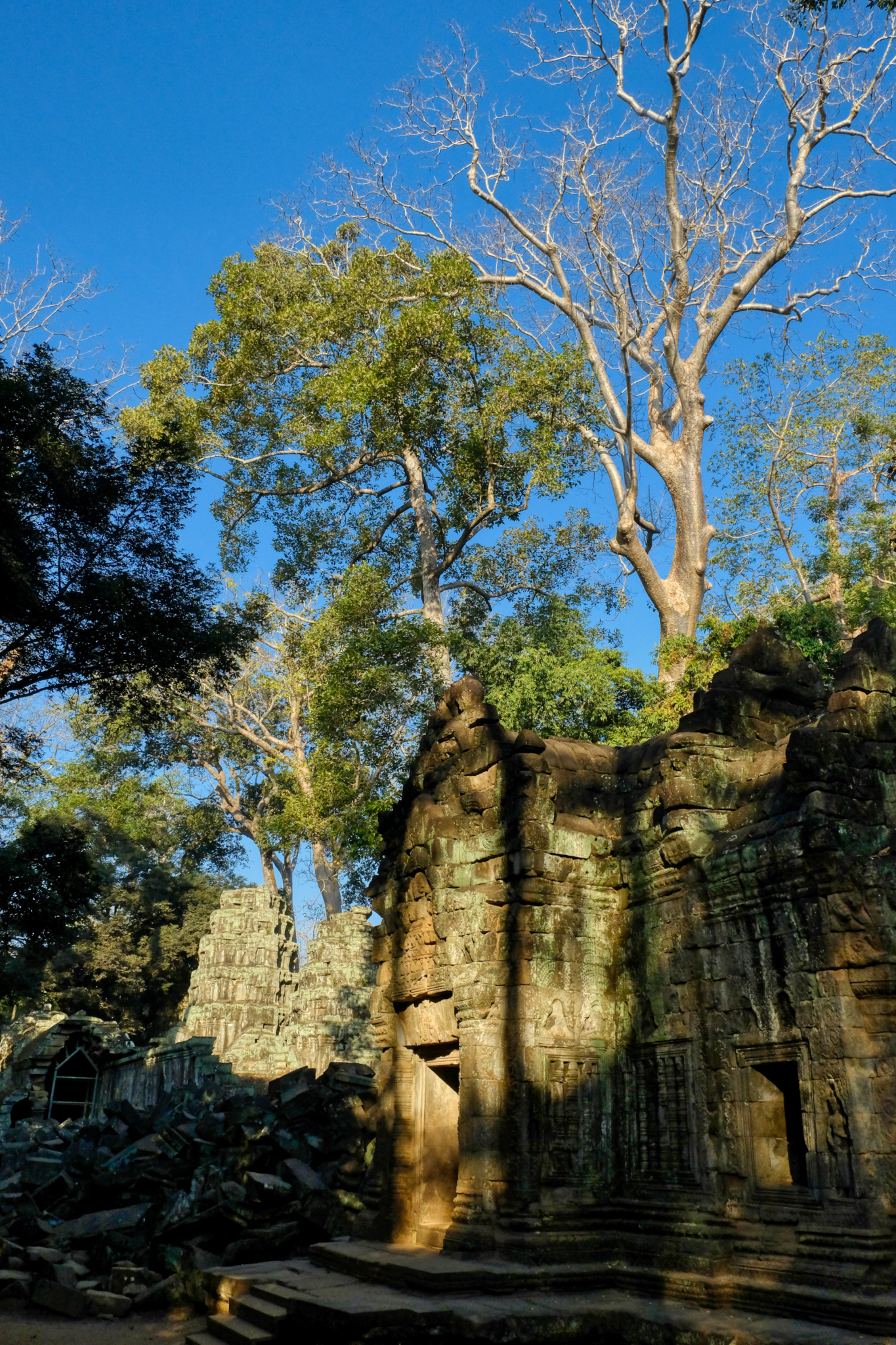 And back outside we were greeted with more amazing ancient monumental temple structures.
And back outside we were greeted with more amazing ancient monumental temple structures.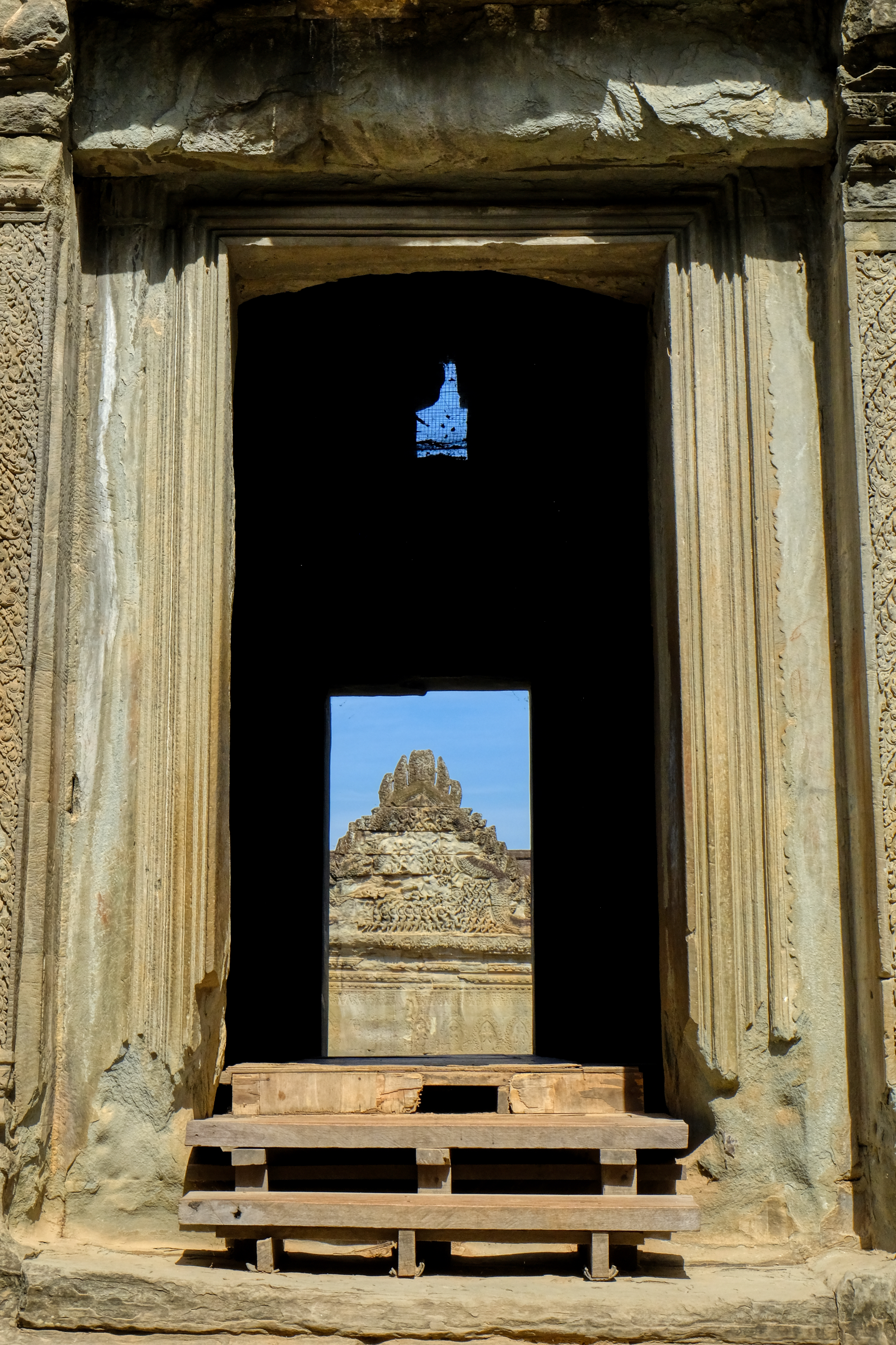 Always tempted to explore in another courtyard . . . endless curiosity.
Always tempted to explore in another courtyard . . . endless curiosity.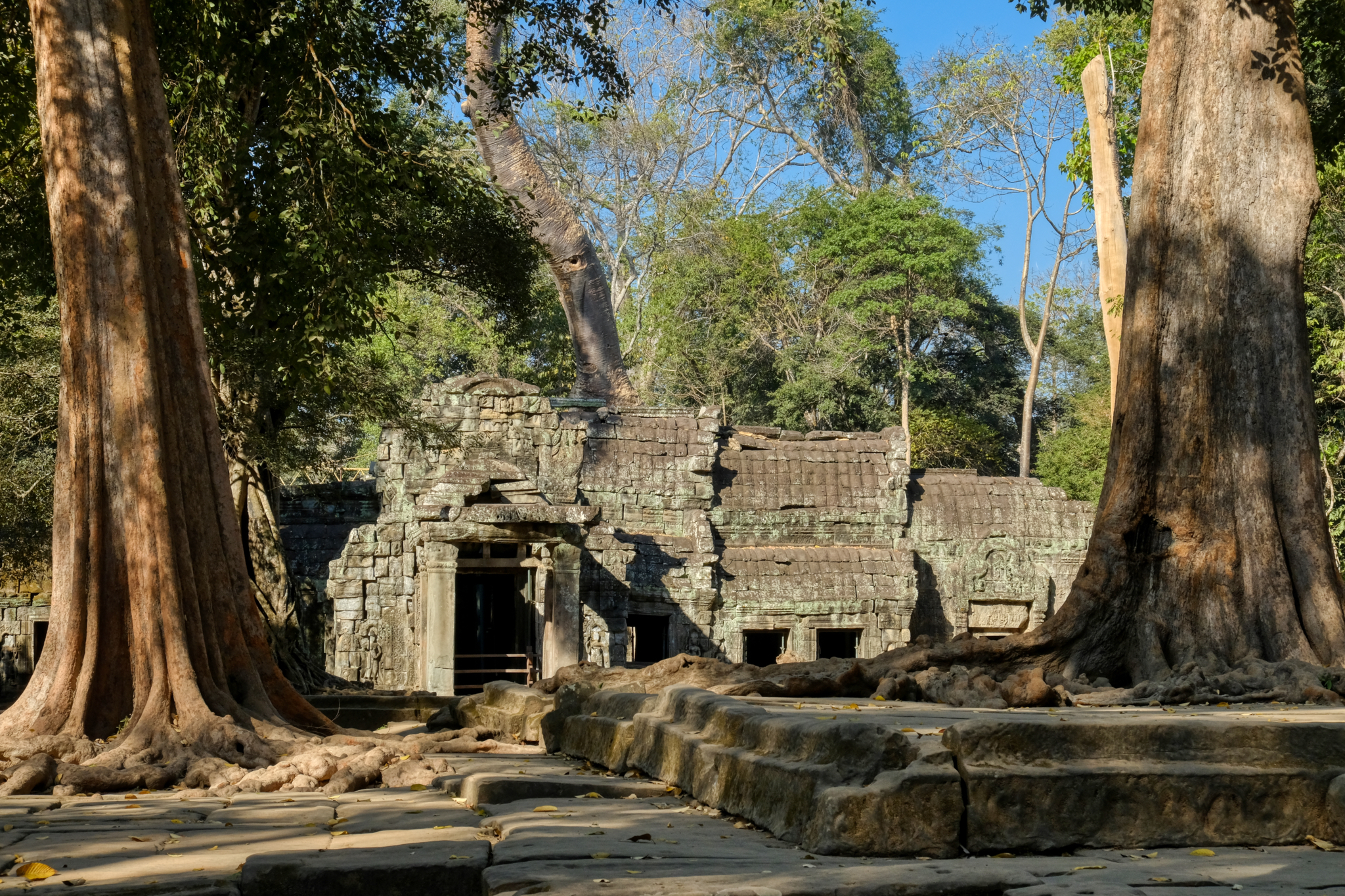 We had a car and driver each day who knew all the temples and would drive us between them. A new temple.
We had a car and driver each day who knew all the temples and would drive us between them. A new temple.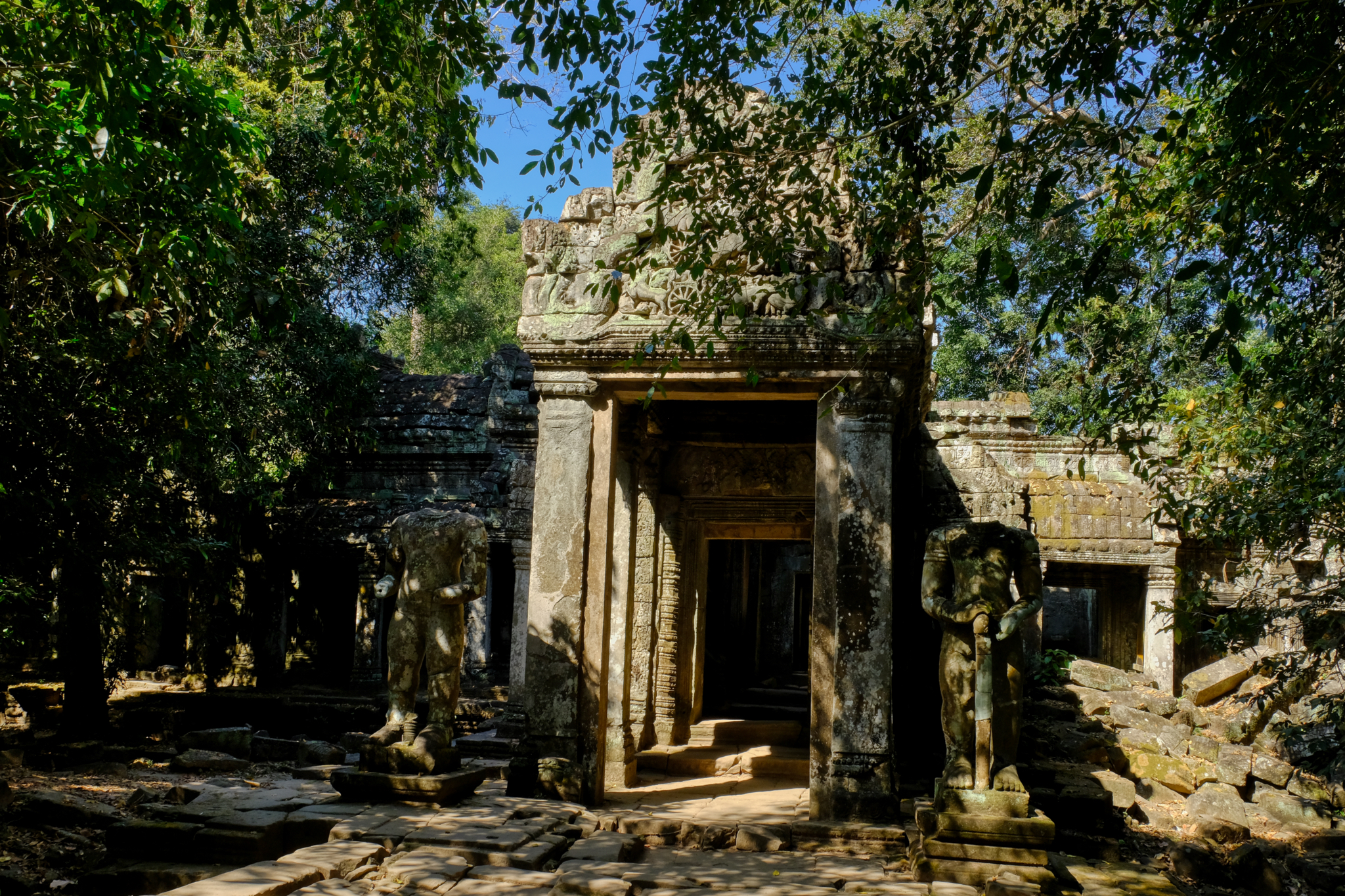 There were signs of vandalism and pilfering of stone figure heads.
There were signs of vandalism and pilfering of stone figure heads.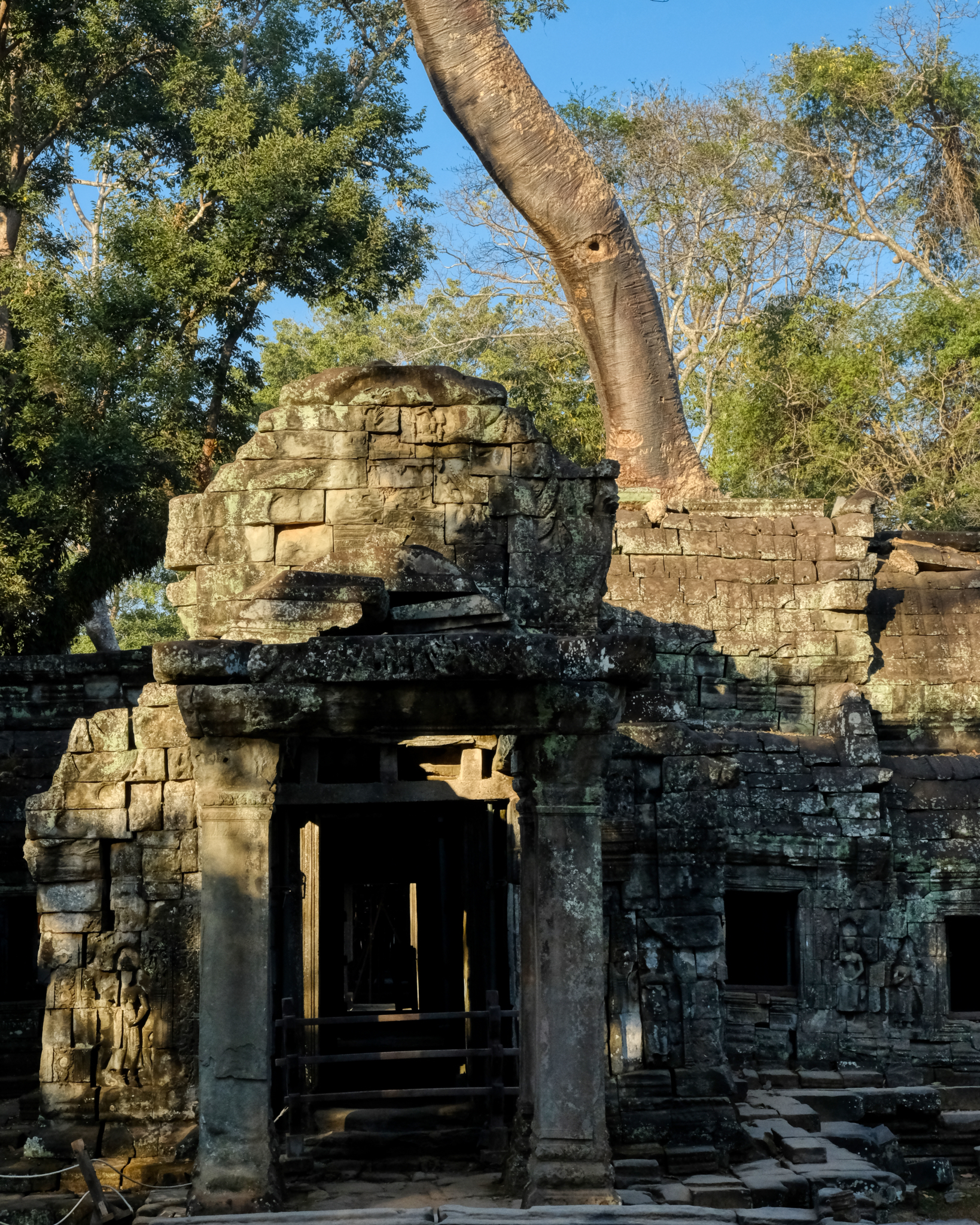 A sweet temple sala.
A sweet temple sala.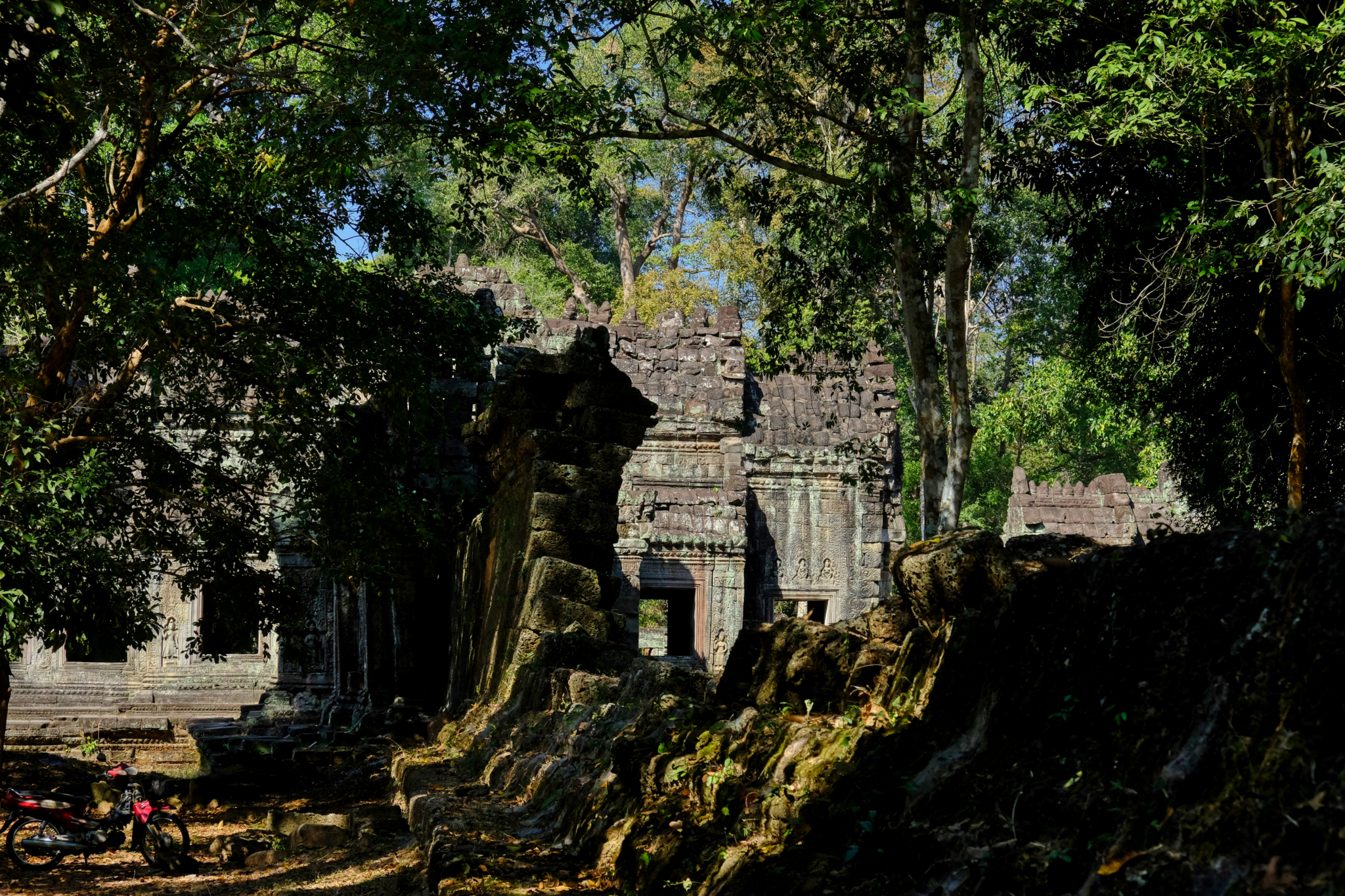 In deep shade or in bright sun, the temples are a marvel of detail . . .
In deep shade or in bright sun, the temples are a marvel of detail . . . 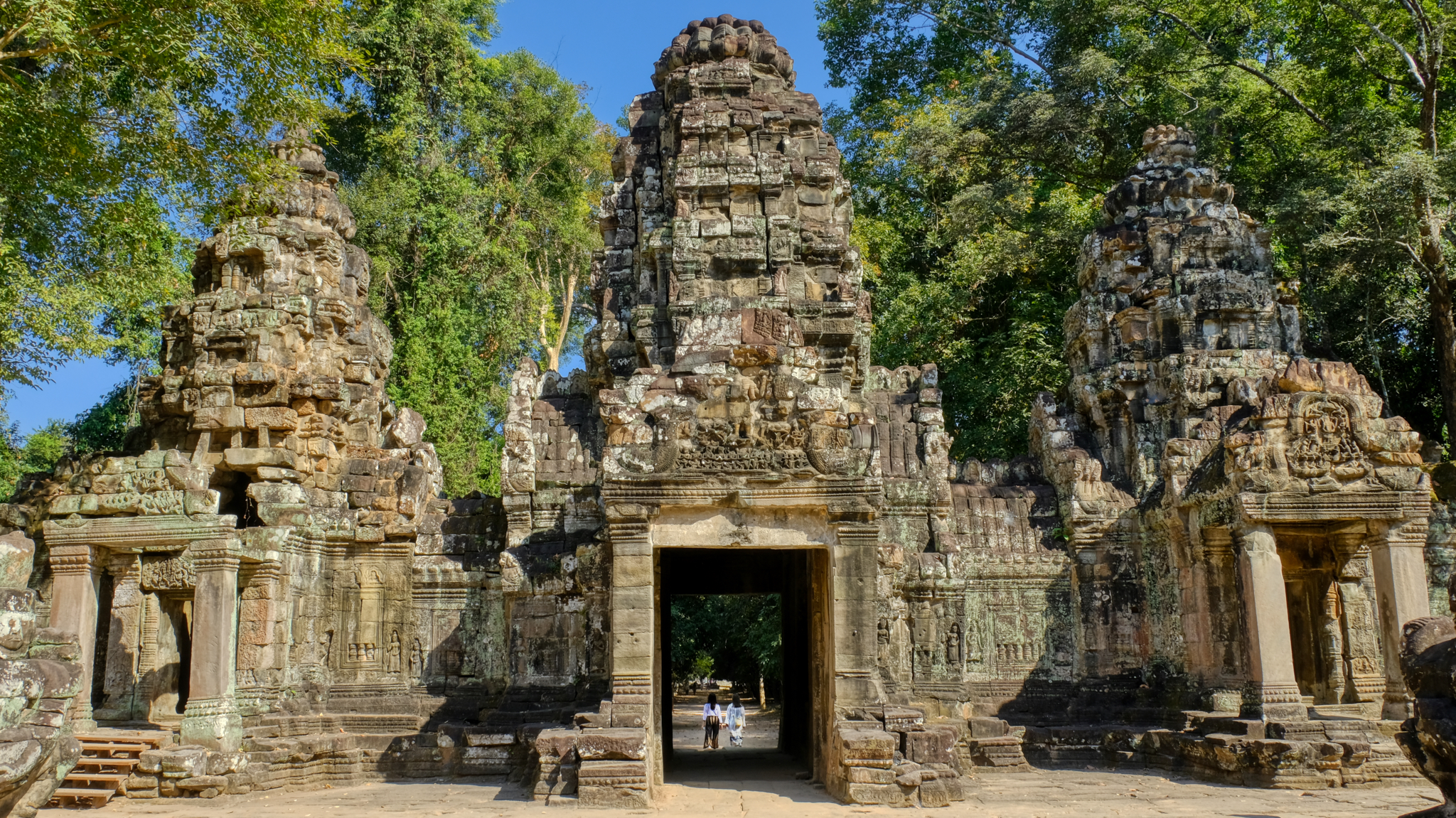 One of the many extraordinary gates.
One of the many extraordinary gates.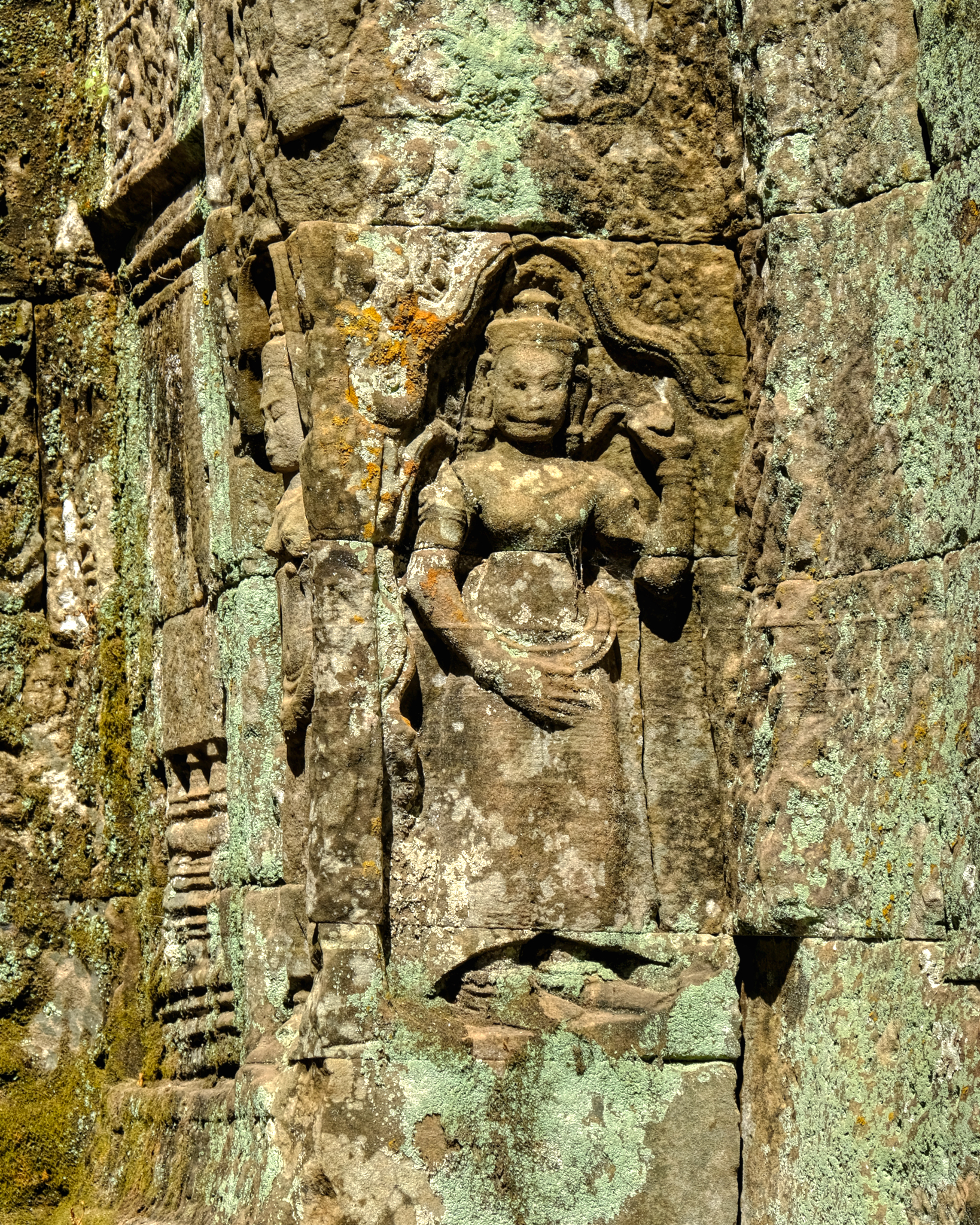 These gates were carved in exquisite detail. Cambodia is a tropical country with a considerable wet season each year, as evidenced by the moss and mold that often covered the monuments.
These gates were carved in exquisite detail. Cambodia is a tropical country with a considerable wet season each year, as evidenced by the moss and mold that often covered the monuments.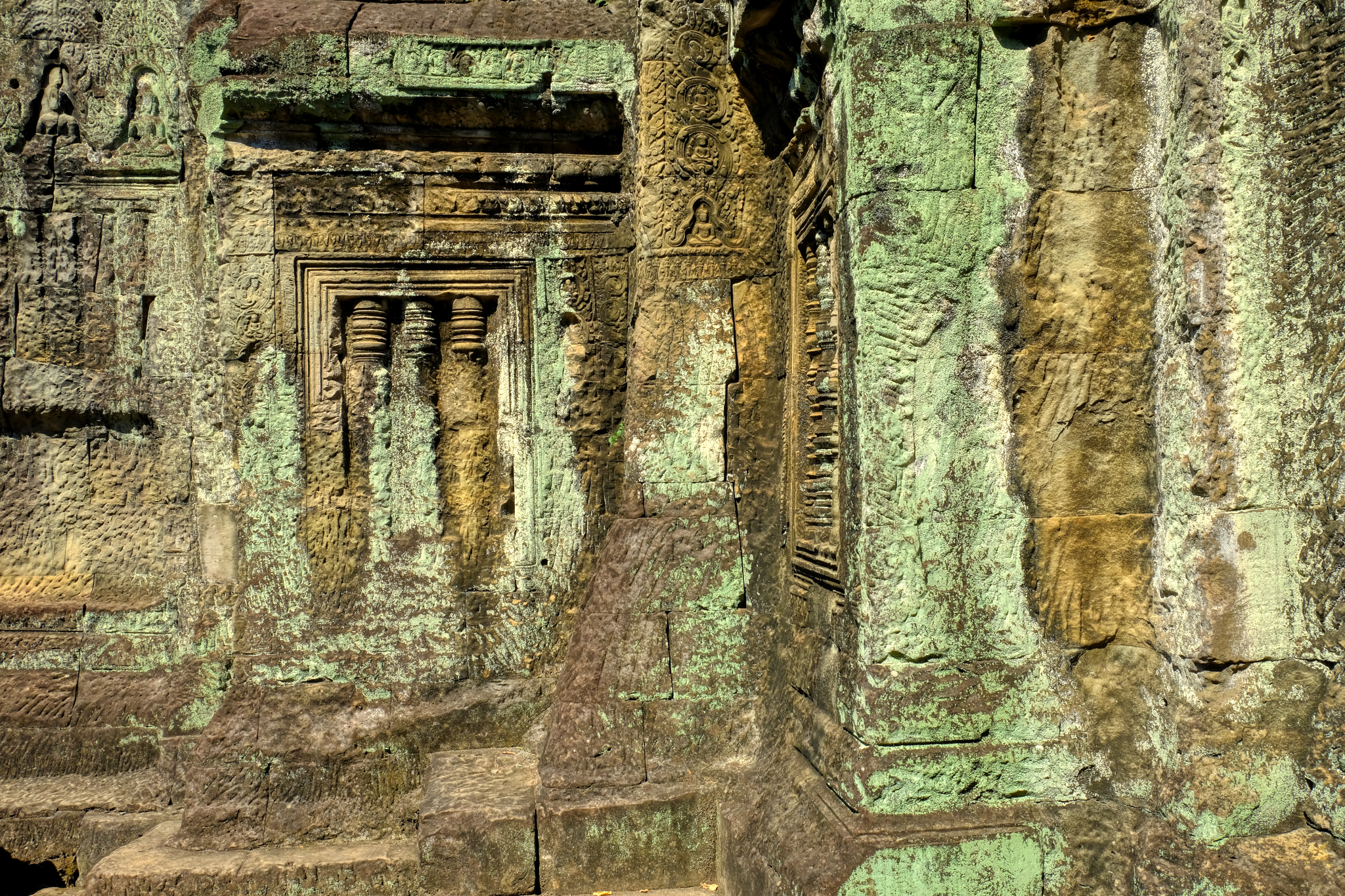 The harsh, almost clinical, light actually helps in these photos of the tropical encrusting of the ruins.
The harsh, almost clinical, light actually helps in these photos of the tropical encrusting of the ruins.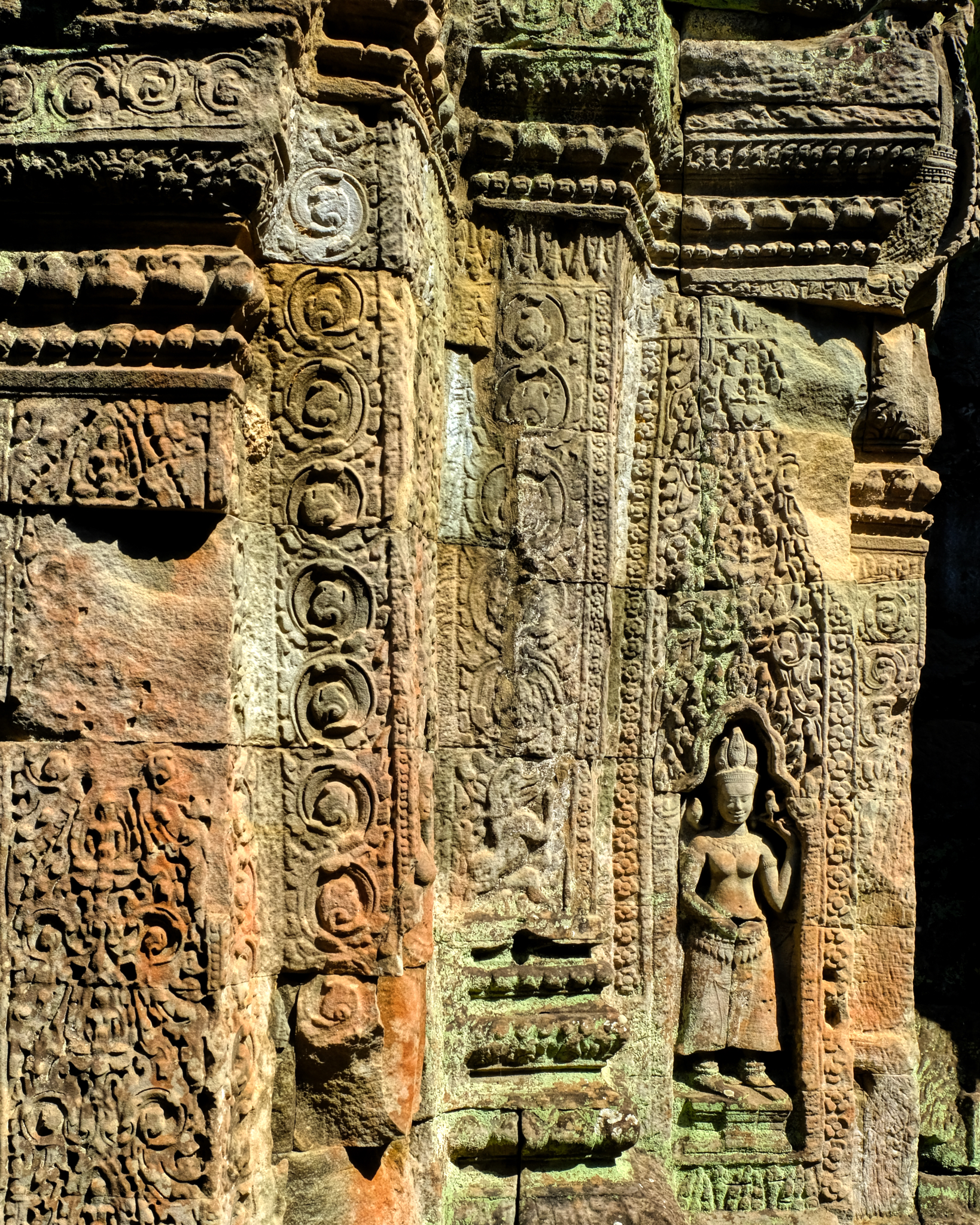 Such beautifully carved figures and patterns everywhere.
Such beautifully carved figures and patterns everywhere.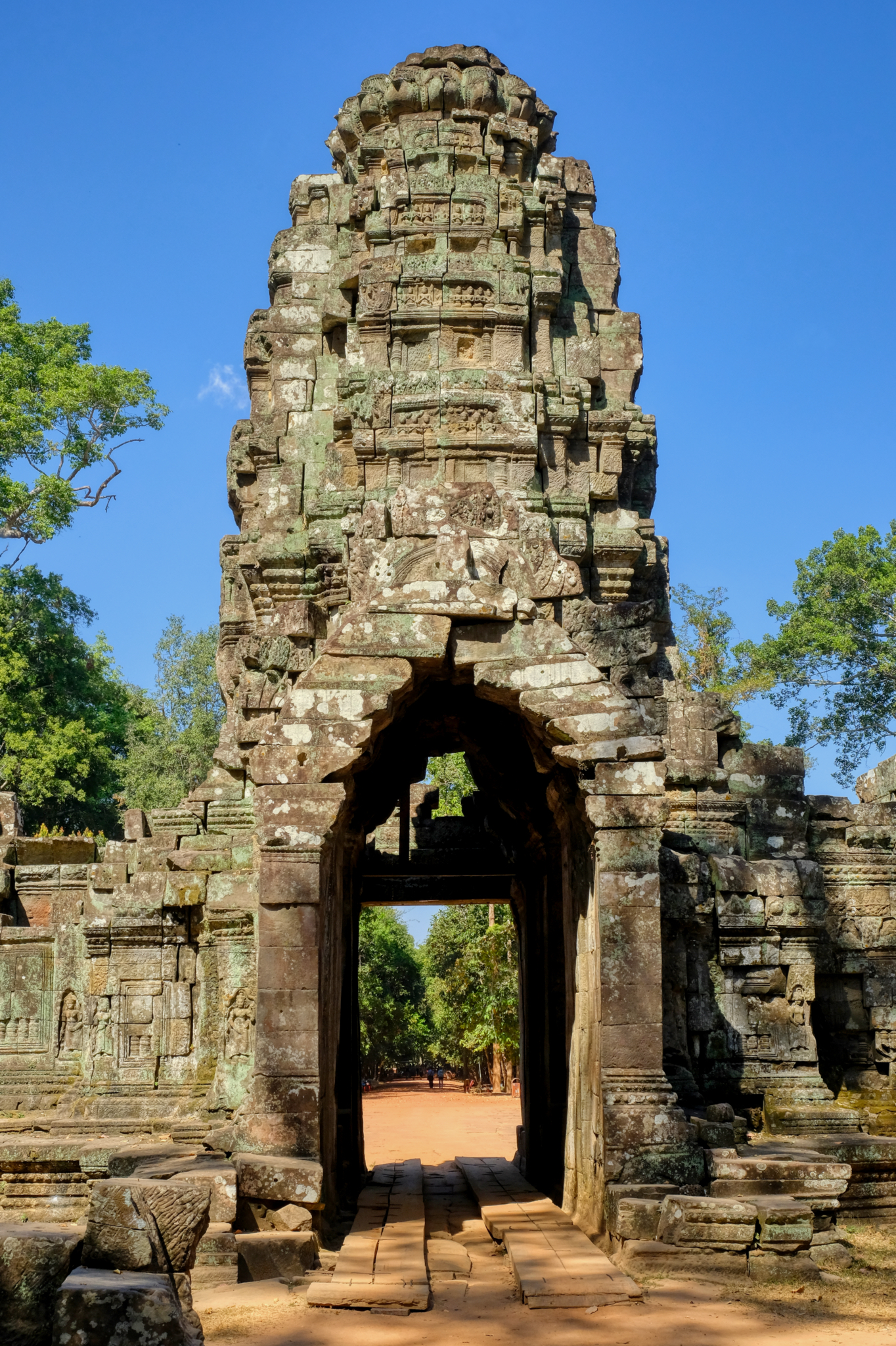 I loved these gates . . .
I loved these gates . . . 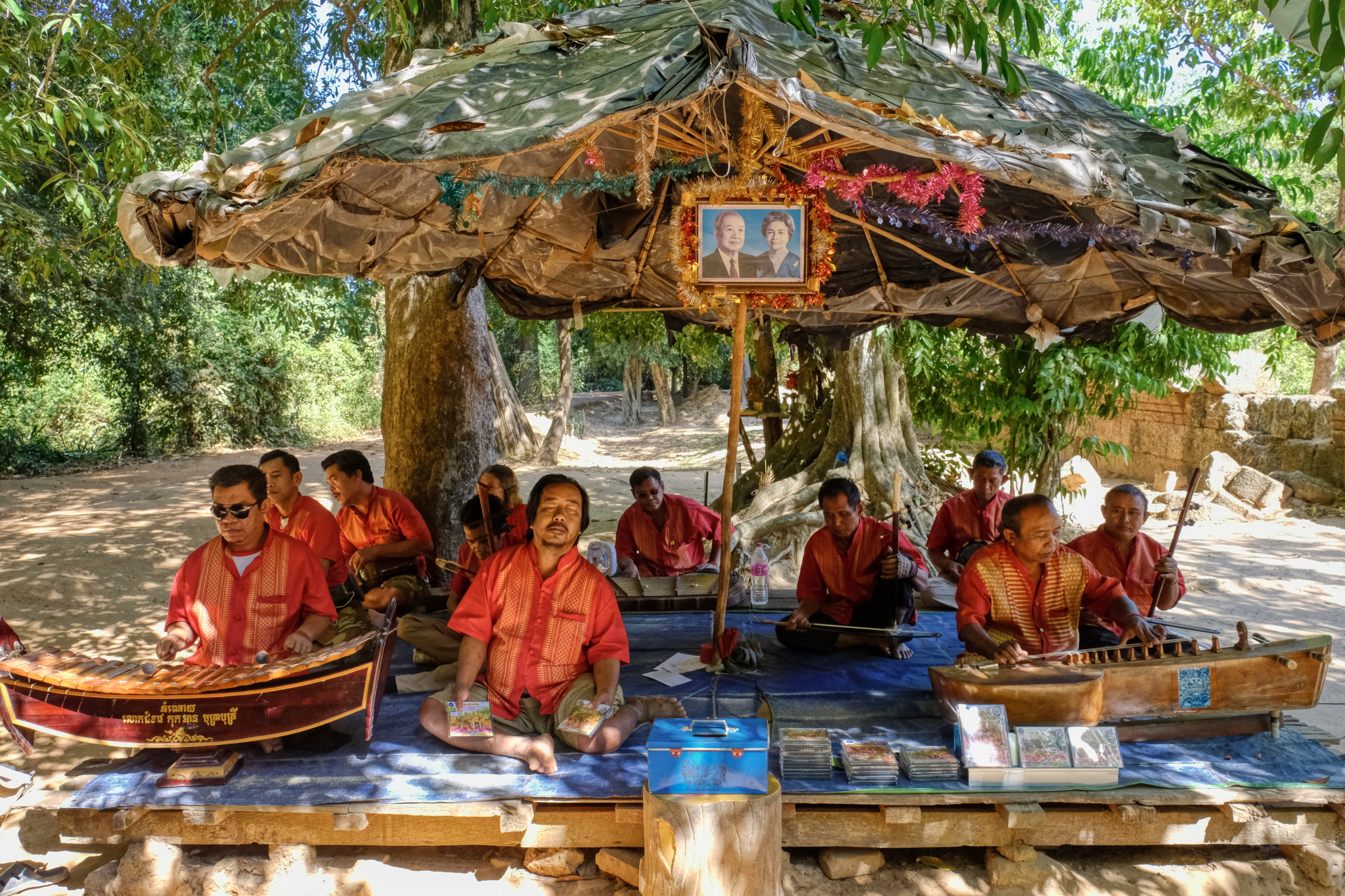 After walking through the gates, it was sometimes a kilometer or more until you arrived at the temple complex. Sometimes there would be traditional Khmer musicians along the walk.
After walking through the gates, it was sometimes a kilometer or more until you arrived at the temple complex. Sometimes there would be traditional Khmer musicians along the walk.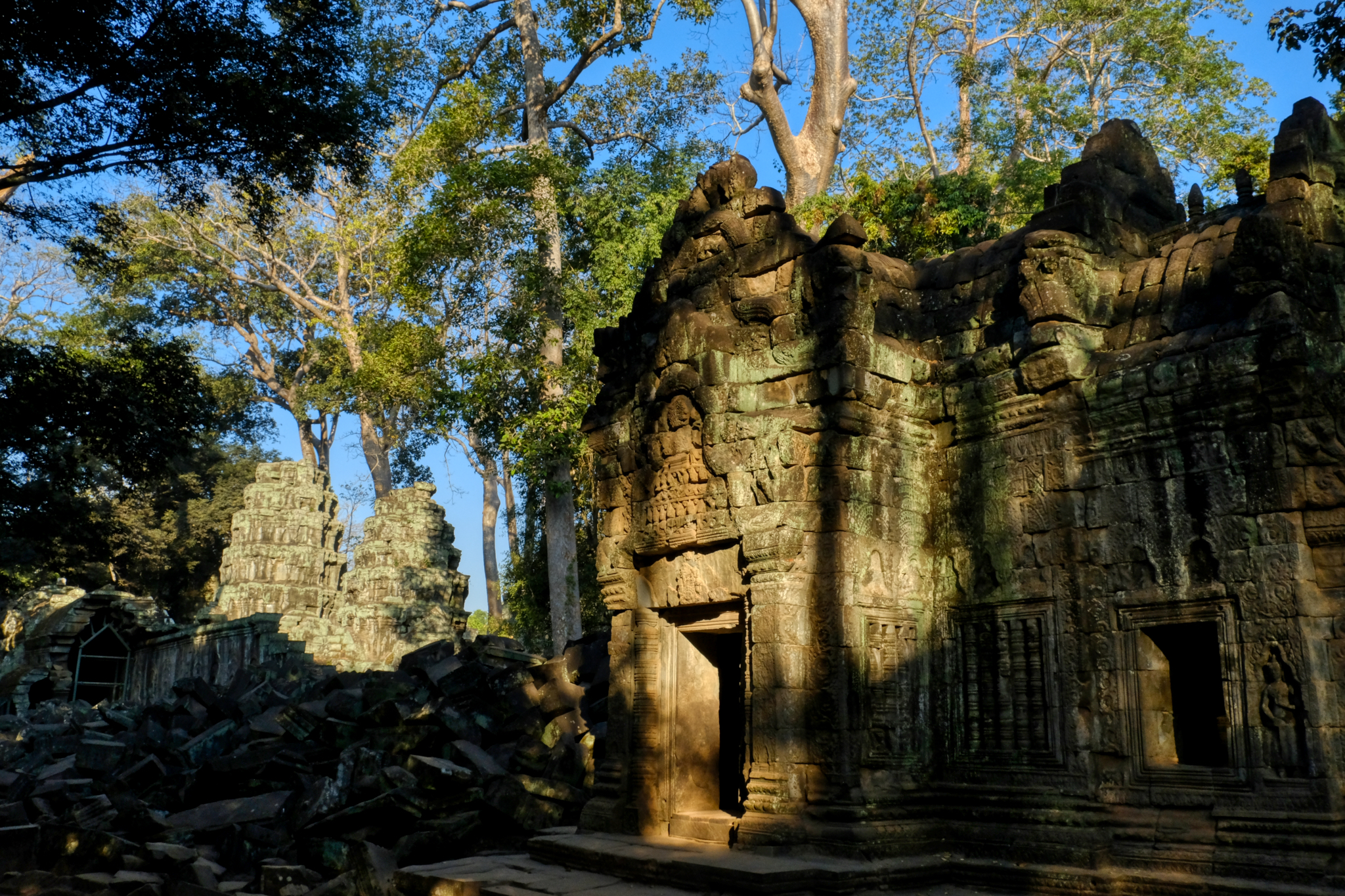 We spent two full days, starting before sunrise and ending after sunset, among the Angkor ruin.
We spent two full days, starting before sunrise and ending after sunset, among the Angkor ruin.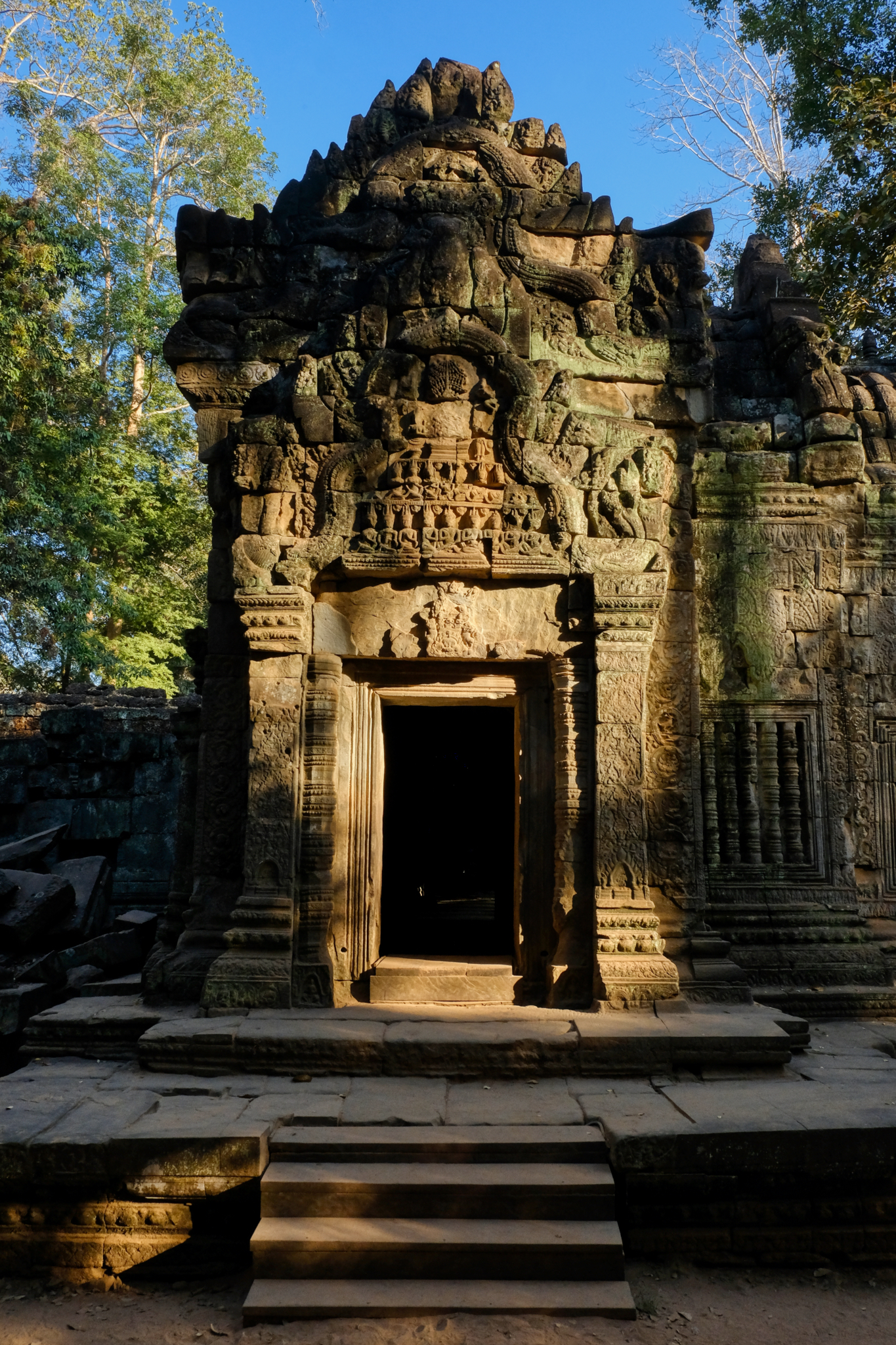 The late, angled light made for some fantastic conditions for photography.
The late, angled light made for some fantastic conditions for photography.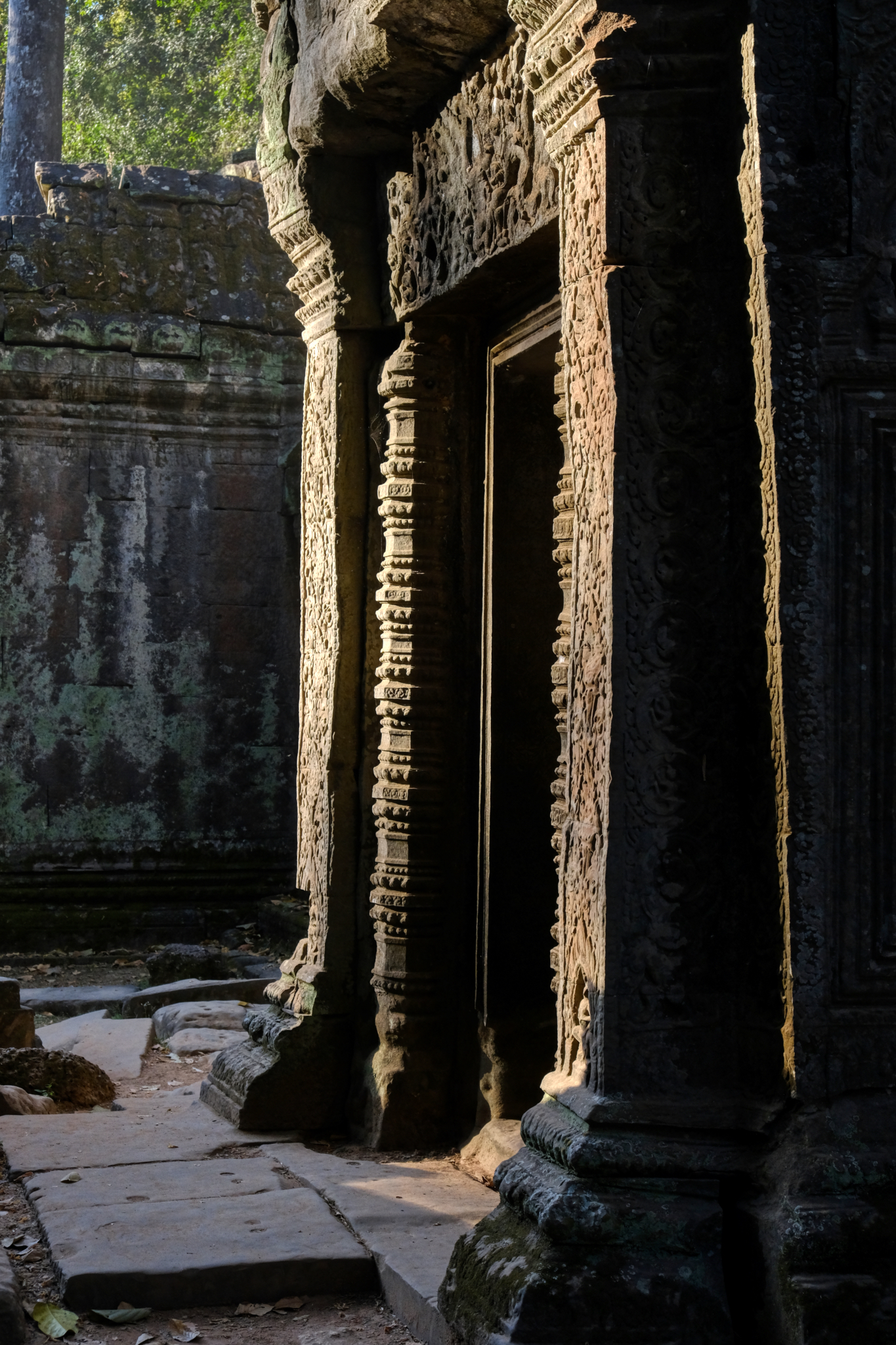 Late light and shadow on the Angkor Wat ruins.
Late light and shadow on the Angkor Wat ruins.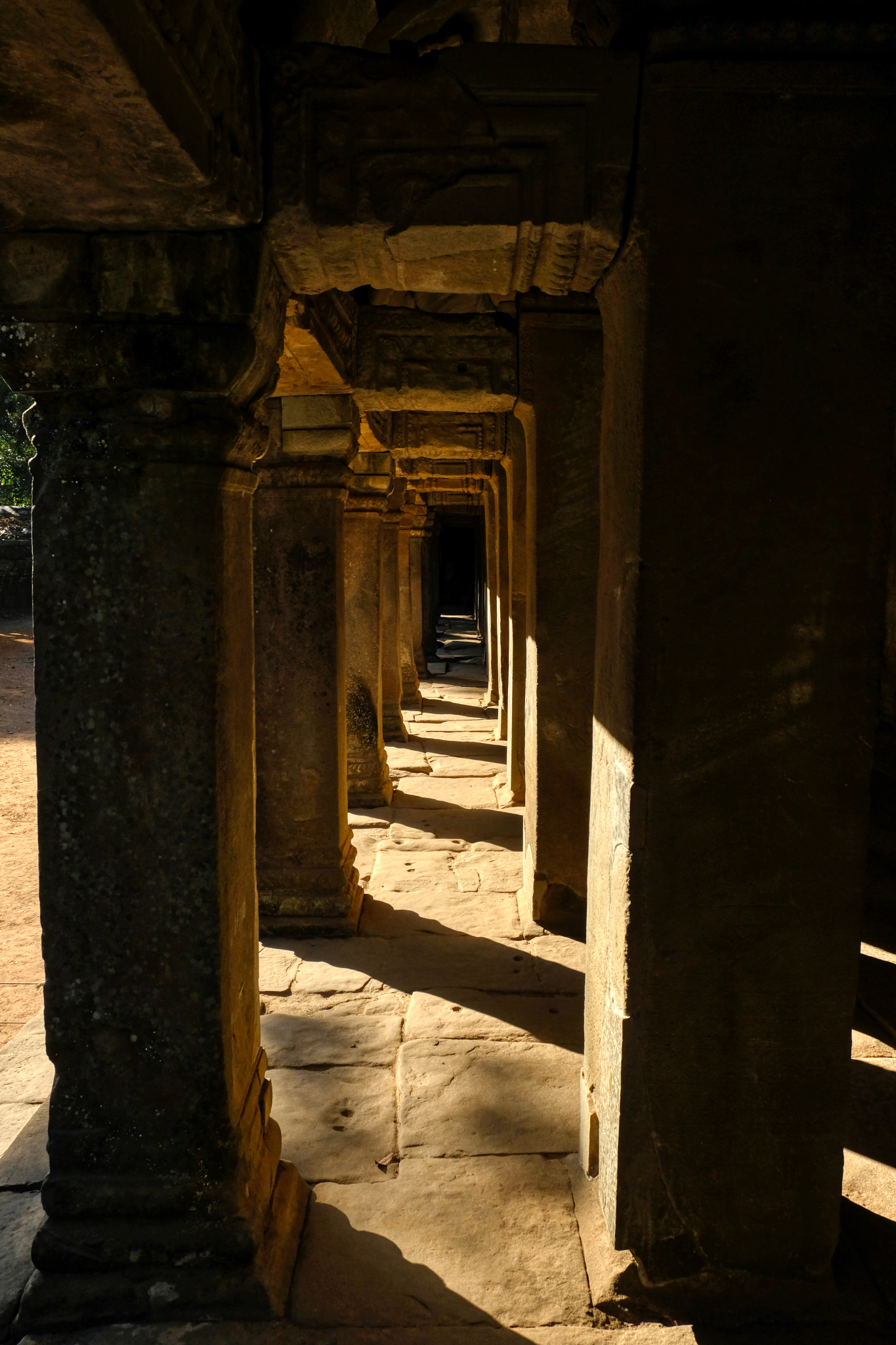 Sharp shadow in the Angkor Wat colonnades.
Sharp shadow in the Angkor Wat colonnades.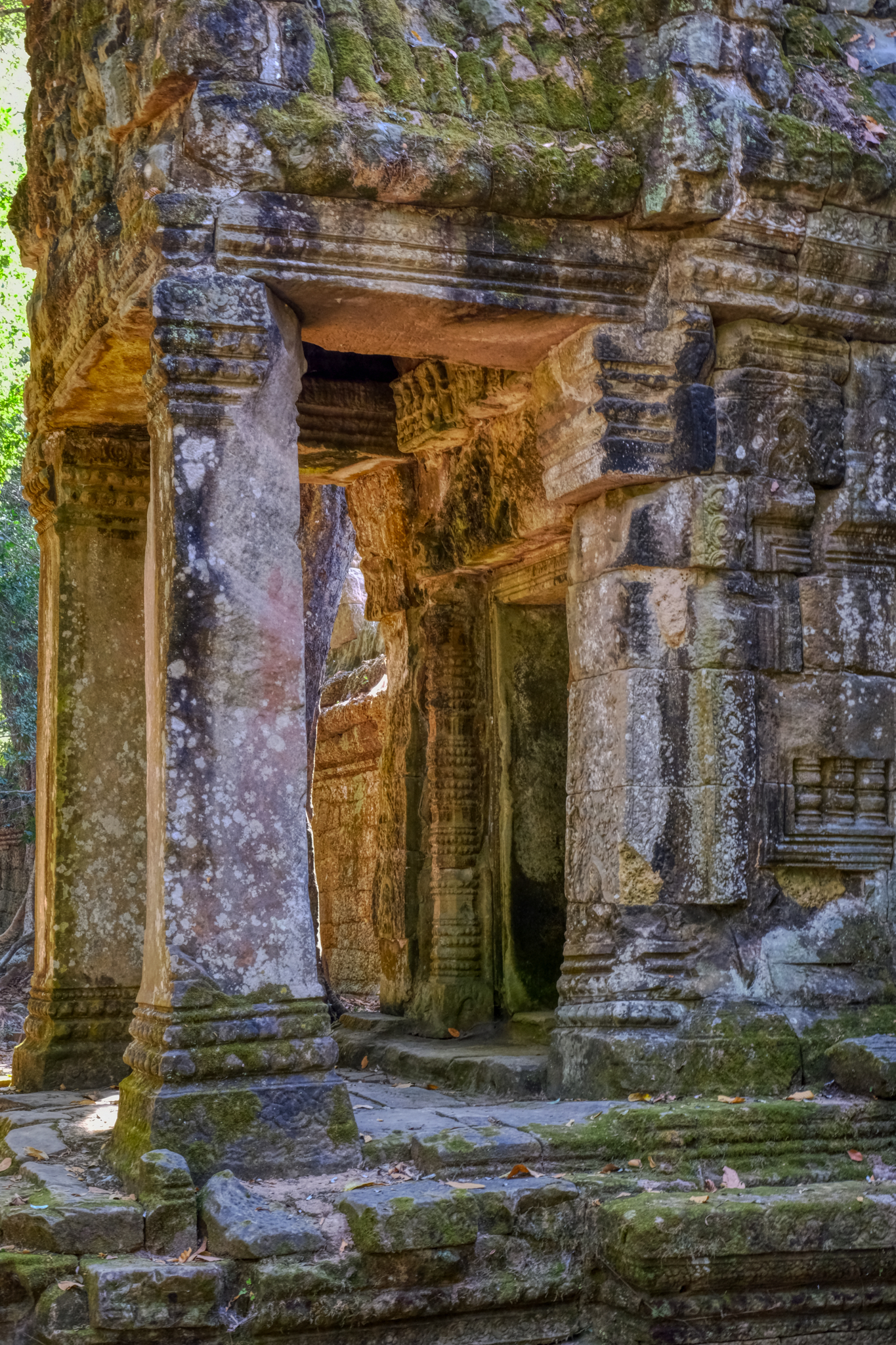 Ah! The light!
Ah! The light!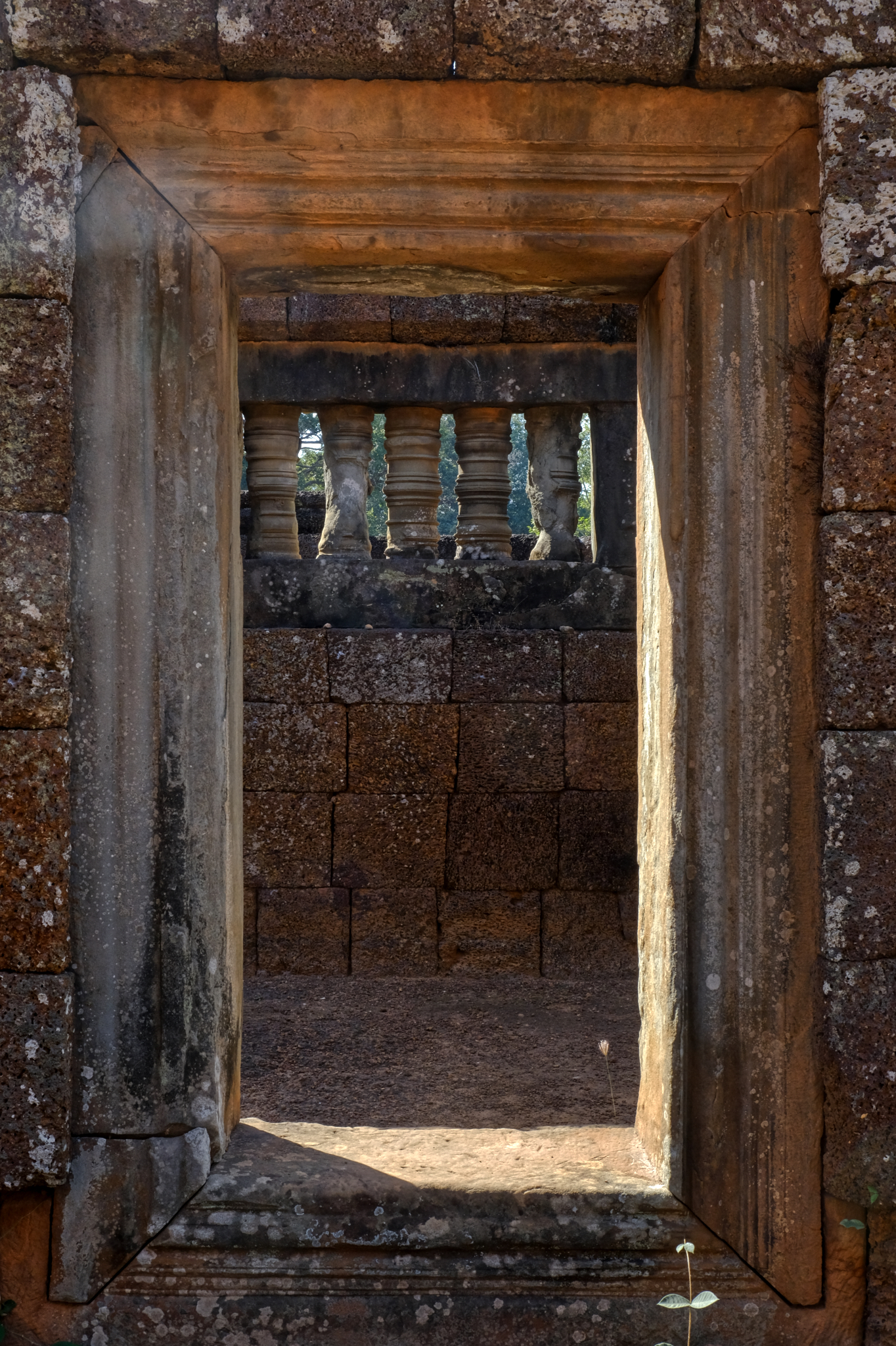 Shadows framed.
Shadows framed.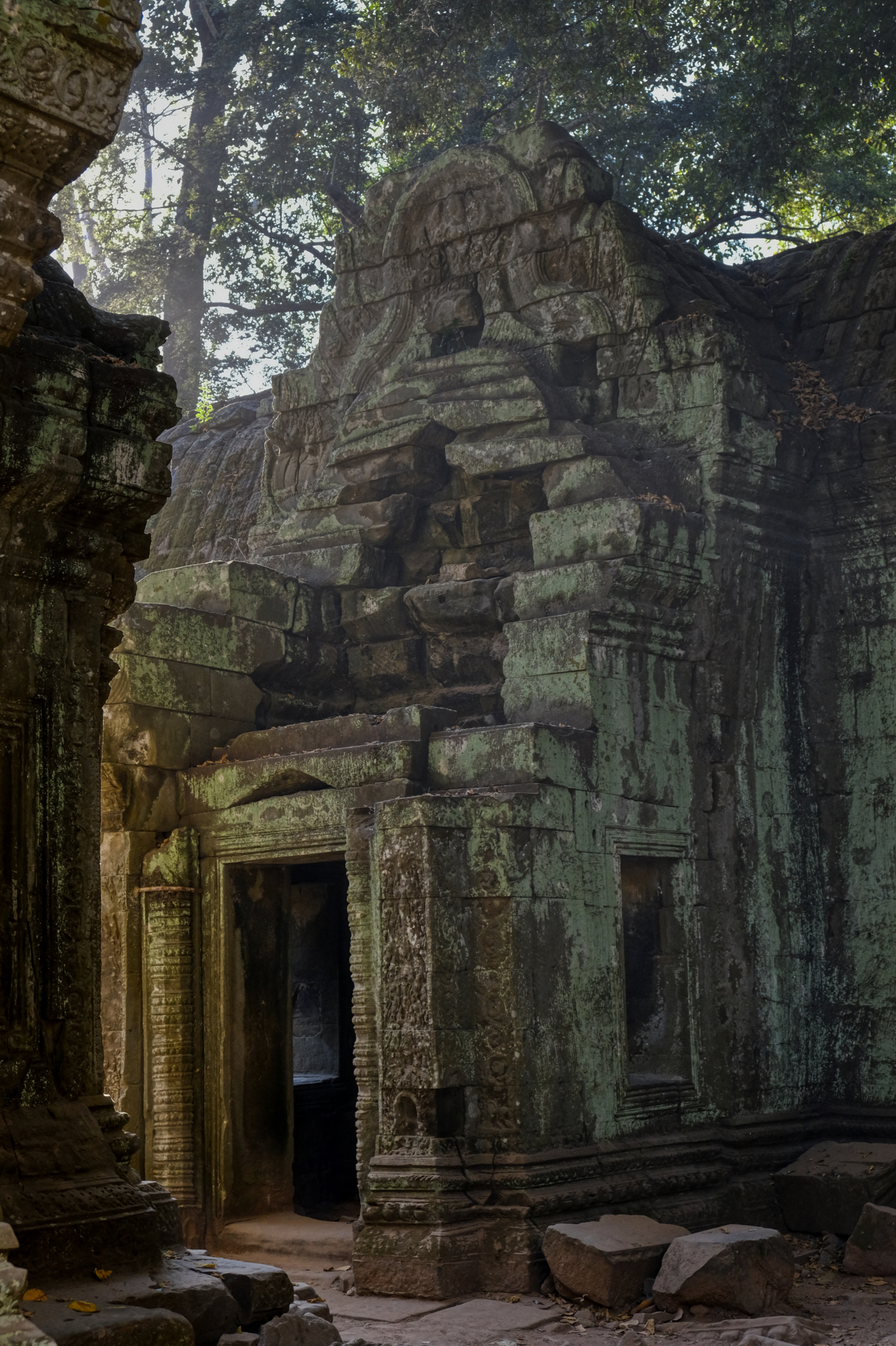 Smoky ruins in the late light.
Smoky ruins in the late light.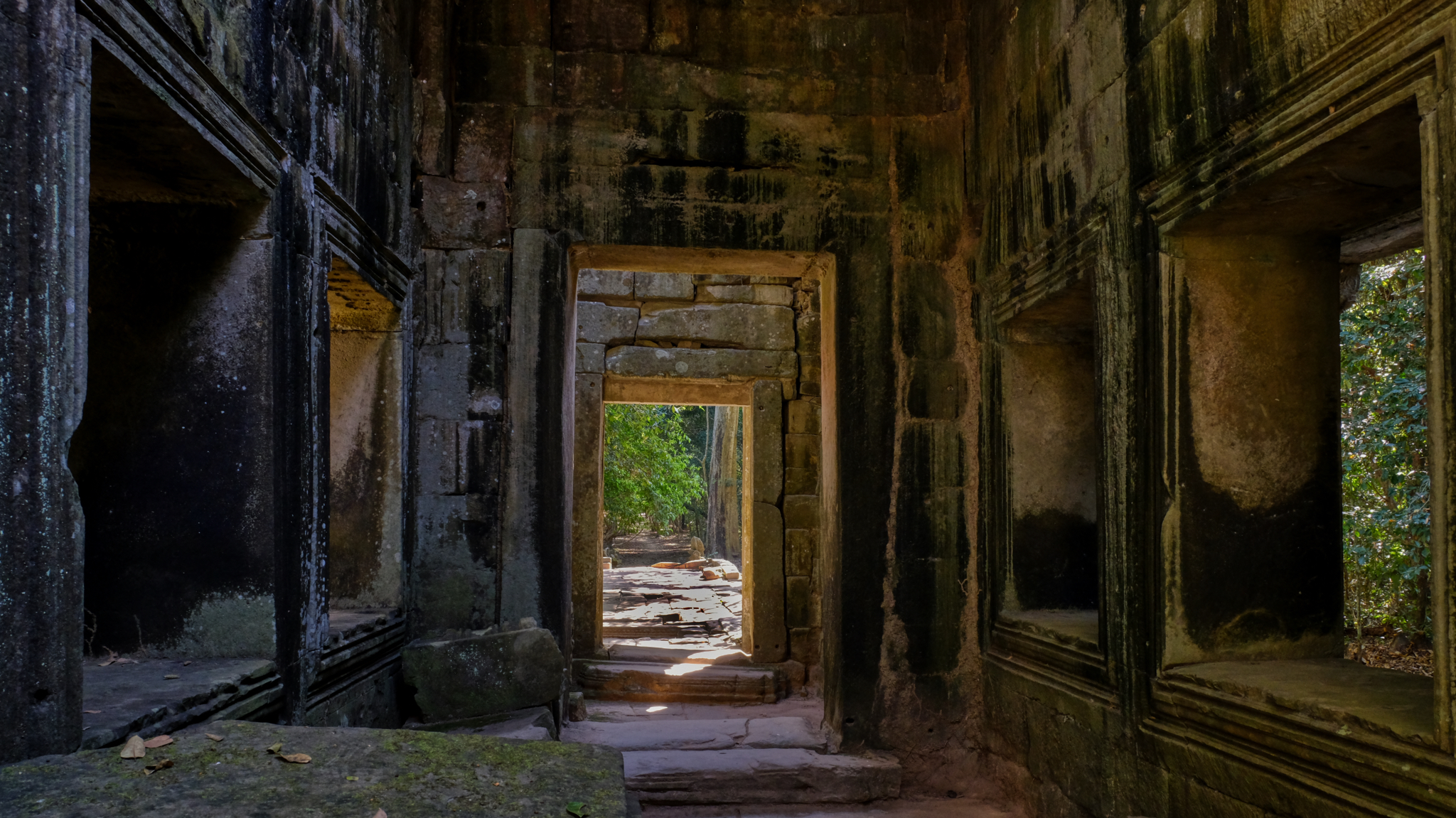 These interiors were full of an almost magical spiritual moodiness.
These interiors were full of an almost magical spiritual moodiness.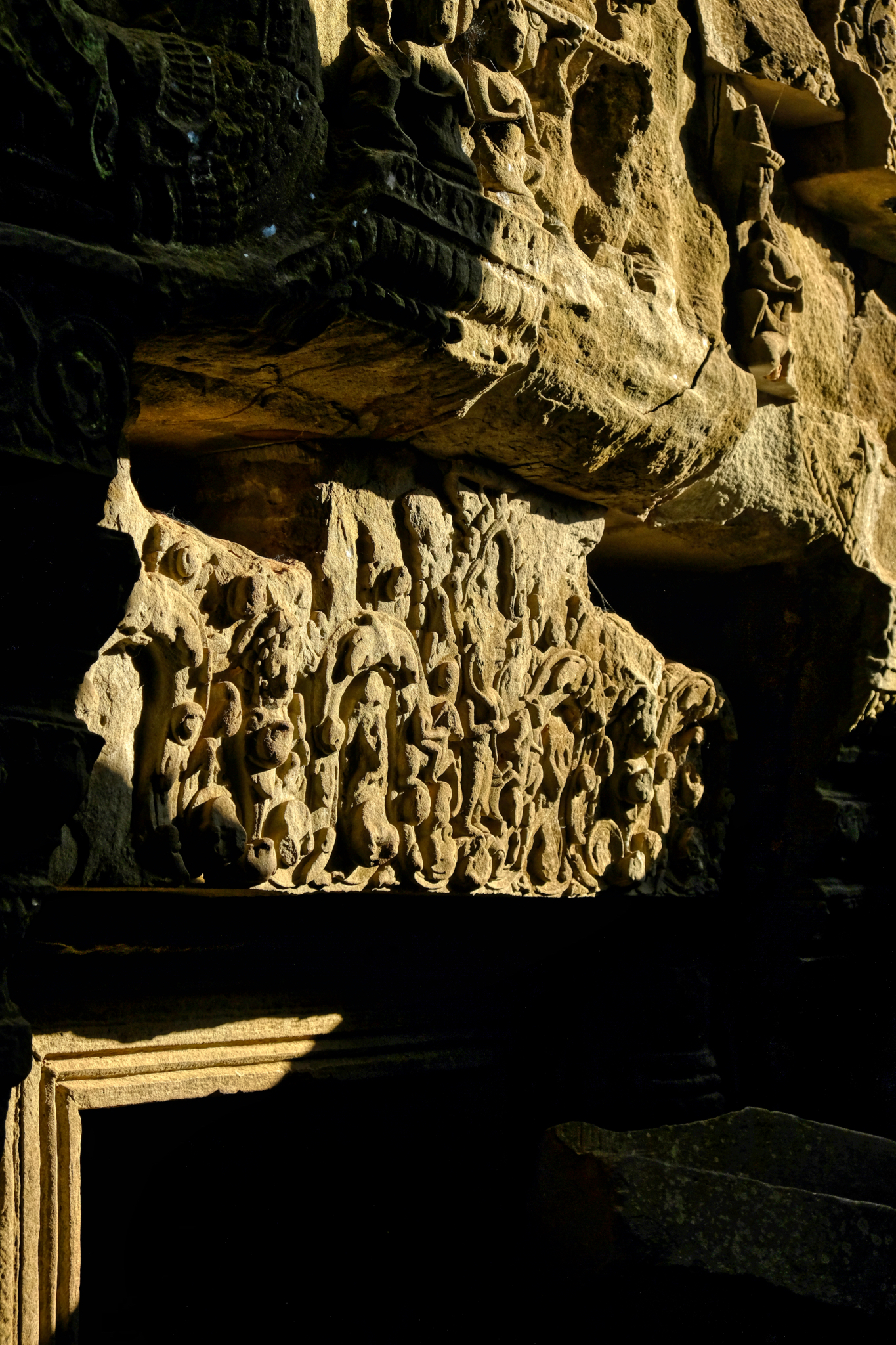 Long shadows accentuated the fine detail. Almost every surface of the temples was carved.
Long shadows accentuated the fine detail. Almost every surface of the temples was carved.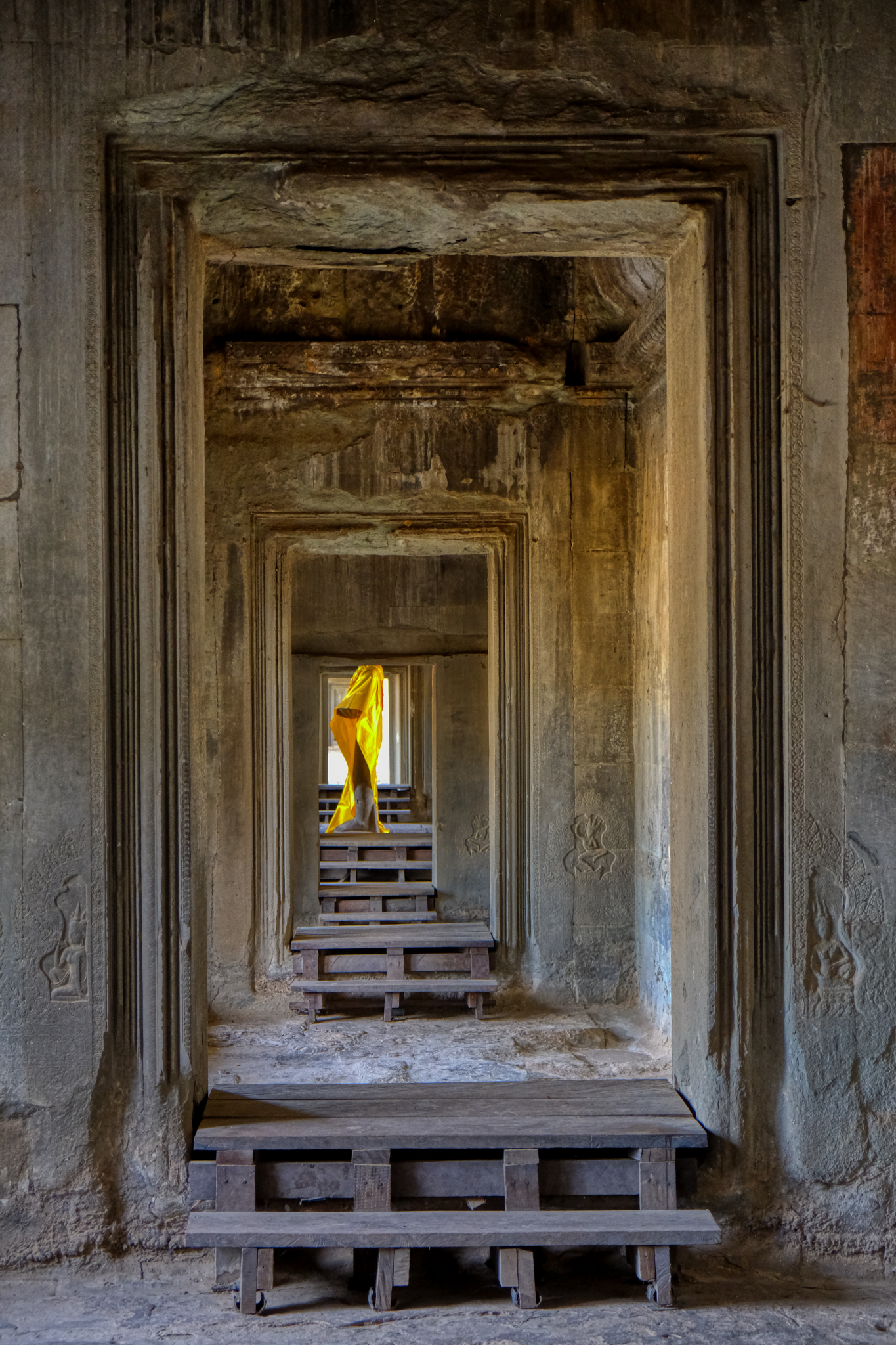 As you might imagine, I was in photographers' heaven walking the halls and passages of Angkor Wat . . . something amazing to shoot at every turn.
As you might imagine, I was in photographers' heaven walking the halls and passages of Angkor Wat . . . something amazing to shoot at every turn.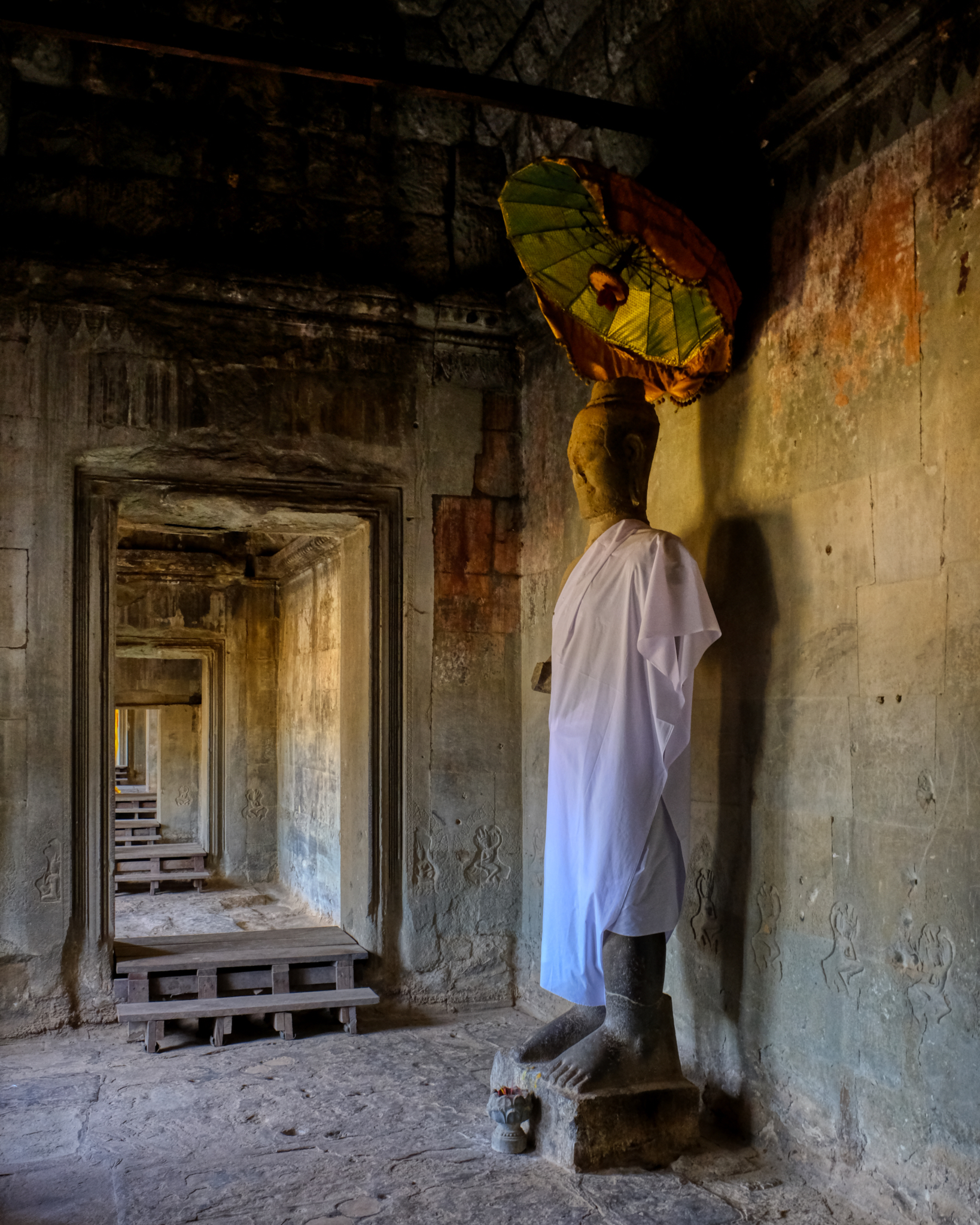 A new image at each turn, at each new chamber, at each door.
A new image at each turn, at each new chamber, at each door.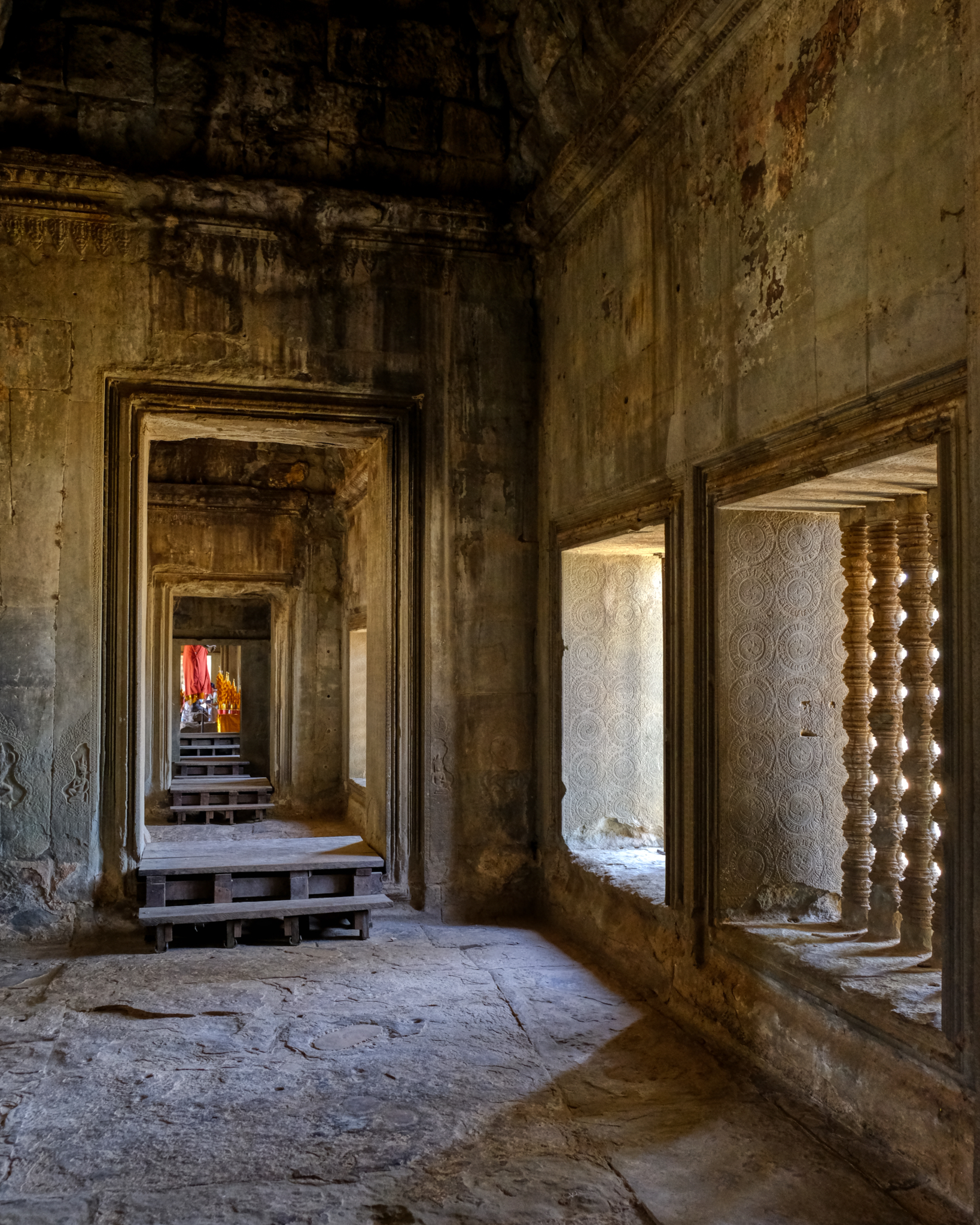 A surprise ahead!
A surprise ahead!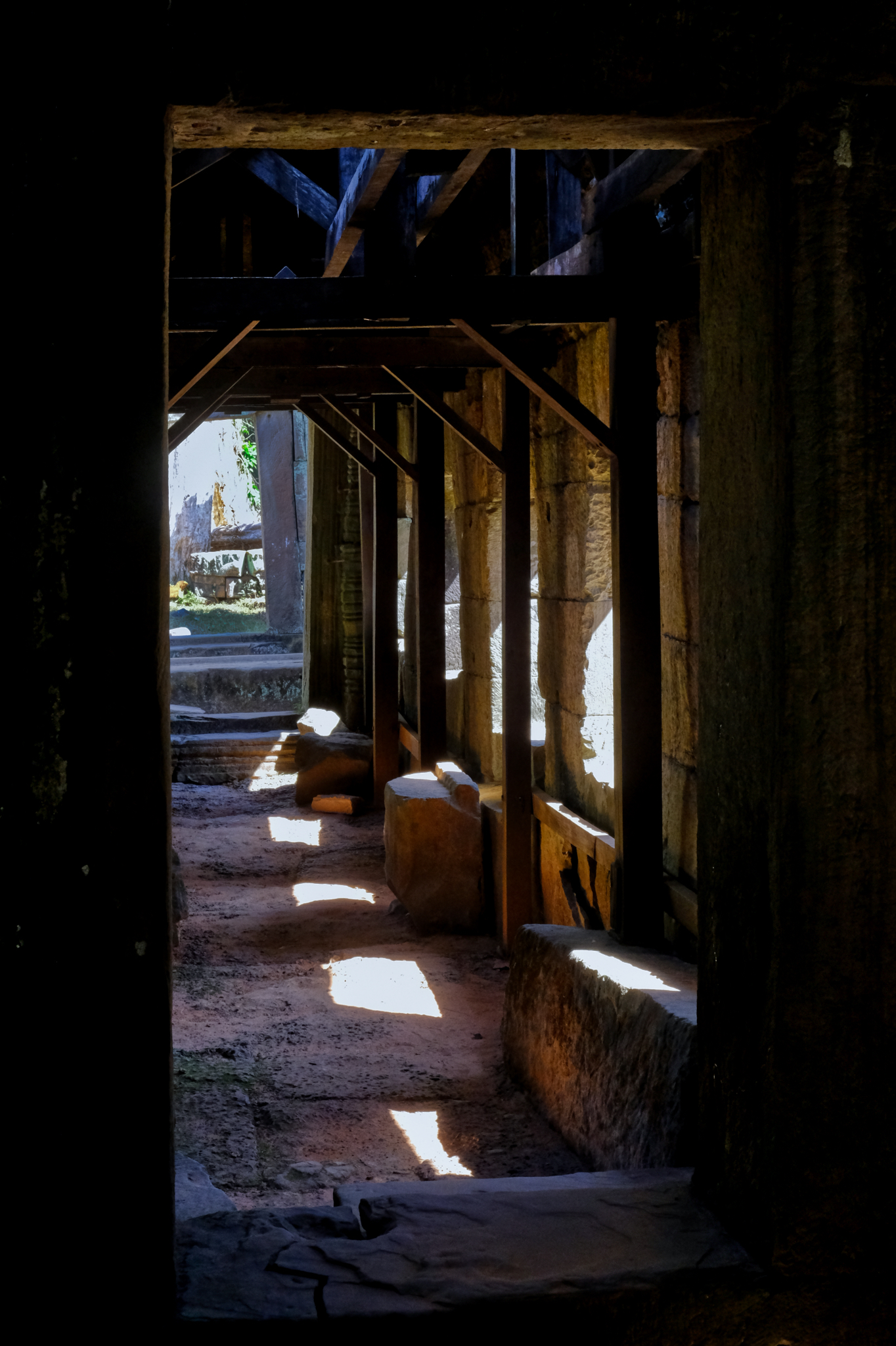 Gorgeous light along the galleries.
Gorgeous light along the galleries.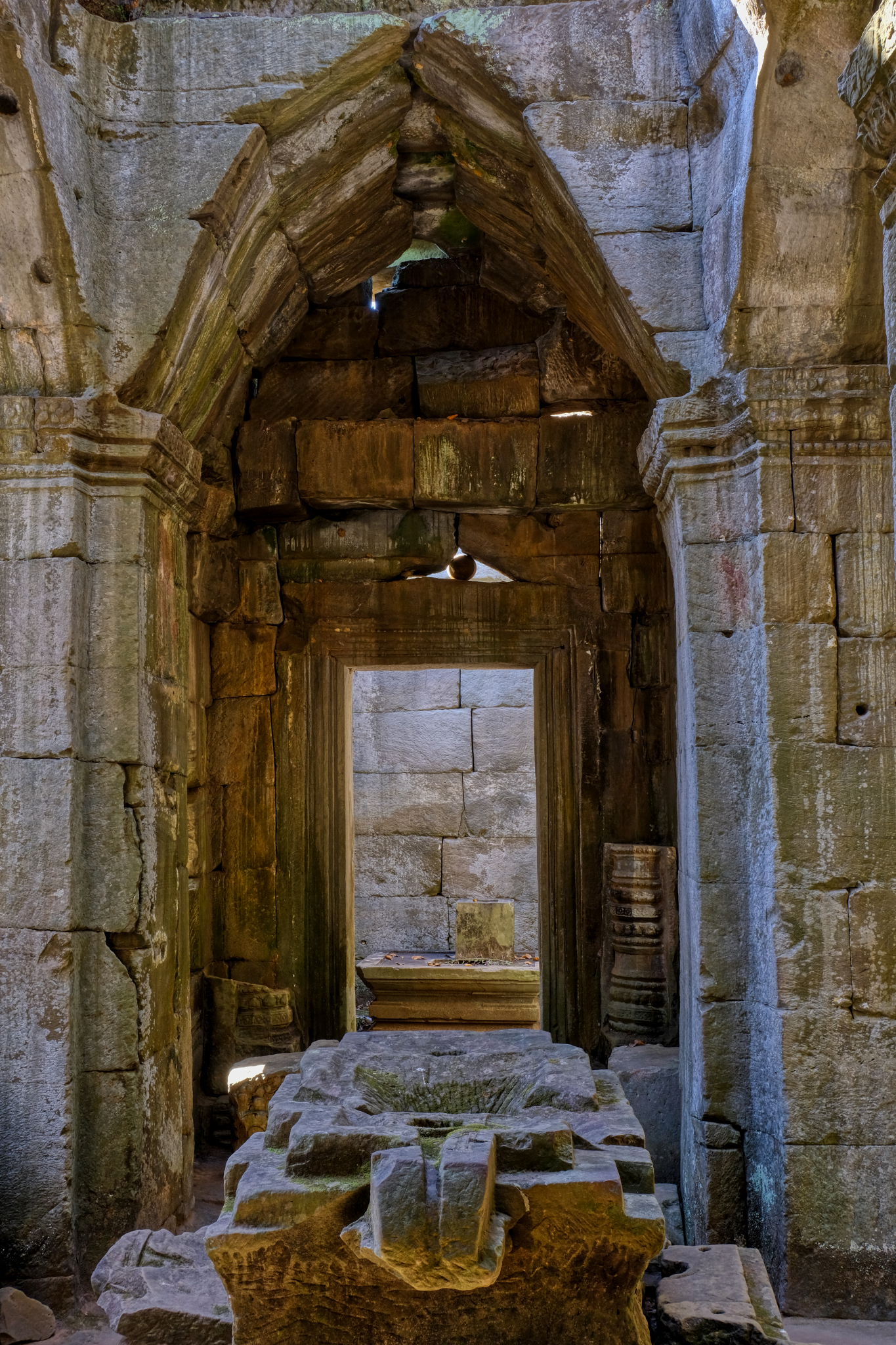 The aesthetics of these stone passages with their relics evokes a calm amazement.
The aesthetics of these stone passages with their relics evokes a calm amazement.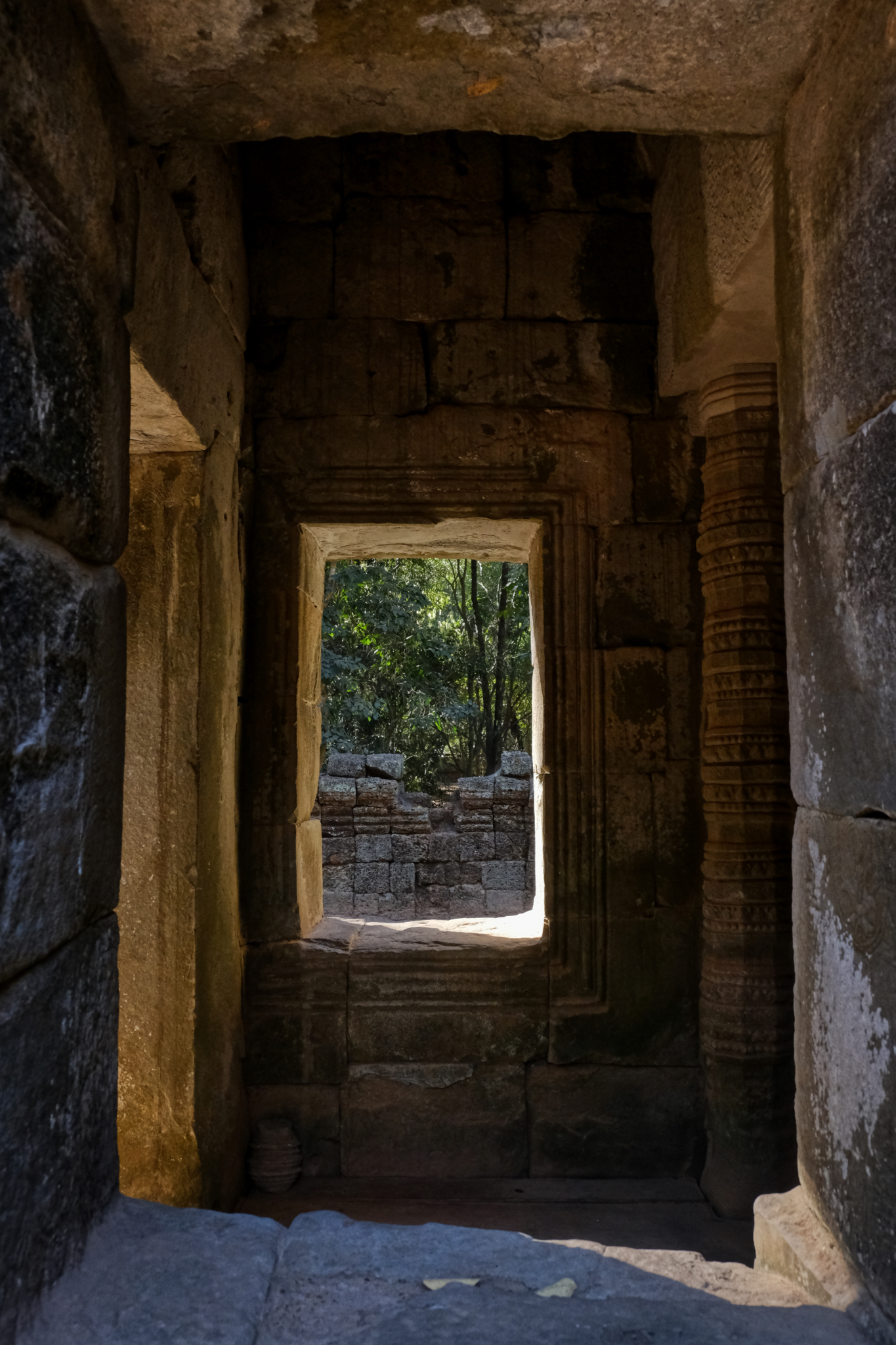 I have always been drawn to these kinds of scenes for photography . . . there seems to be some elemental symbolics involved here . . .
I have always been drawn to these kinds of scenes for photography . . . there seems to be some elemental symbolics involved here . . . 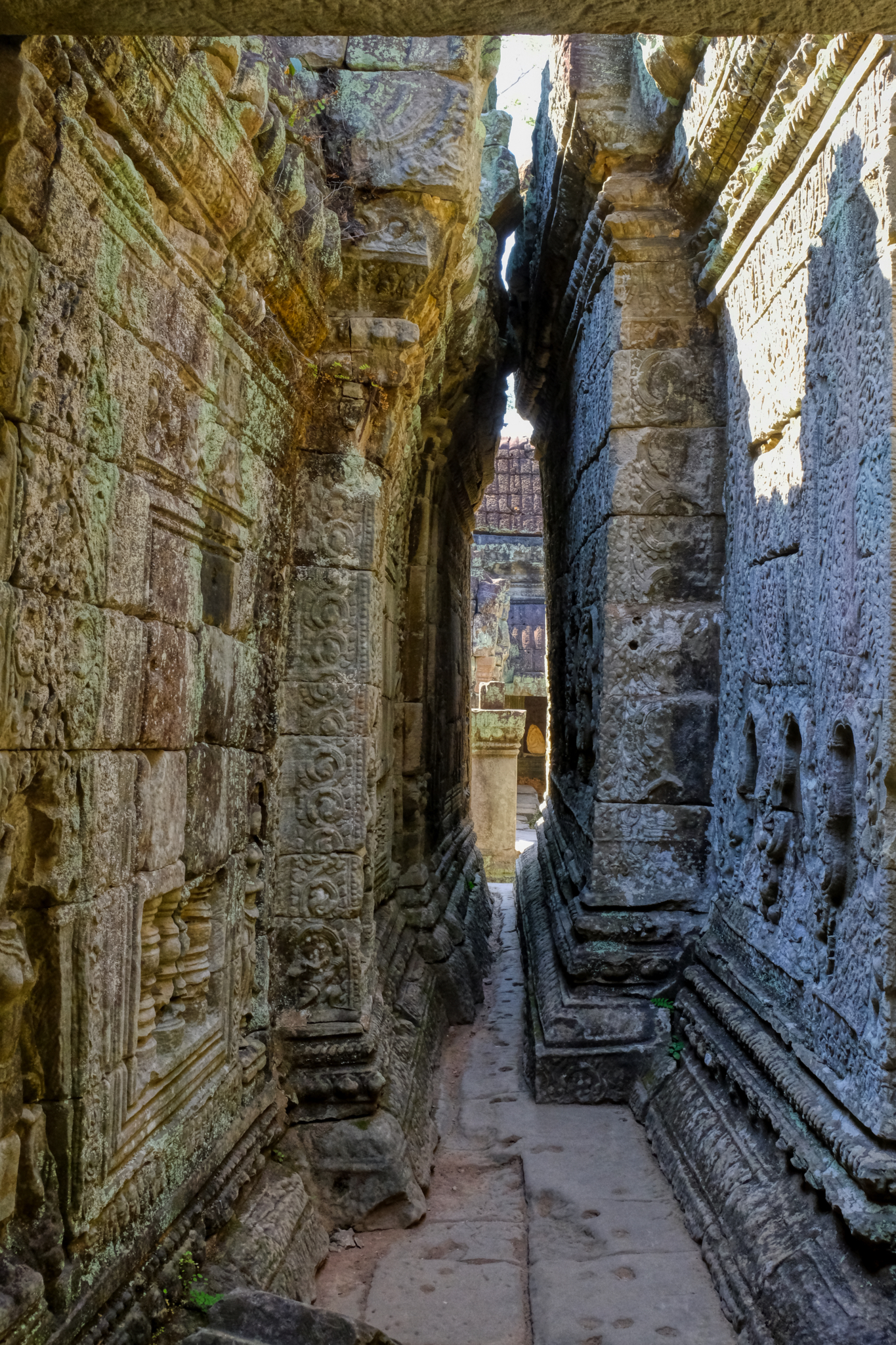 Endless stone doors and windows, light and shadow . . .
Endless stone doors and windows, light and shadow . . .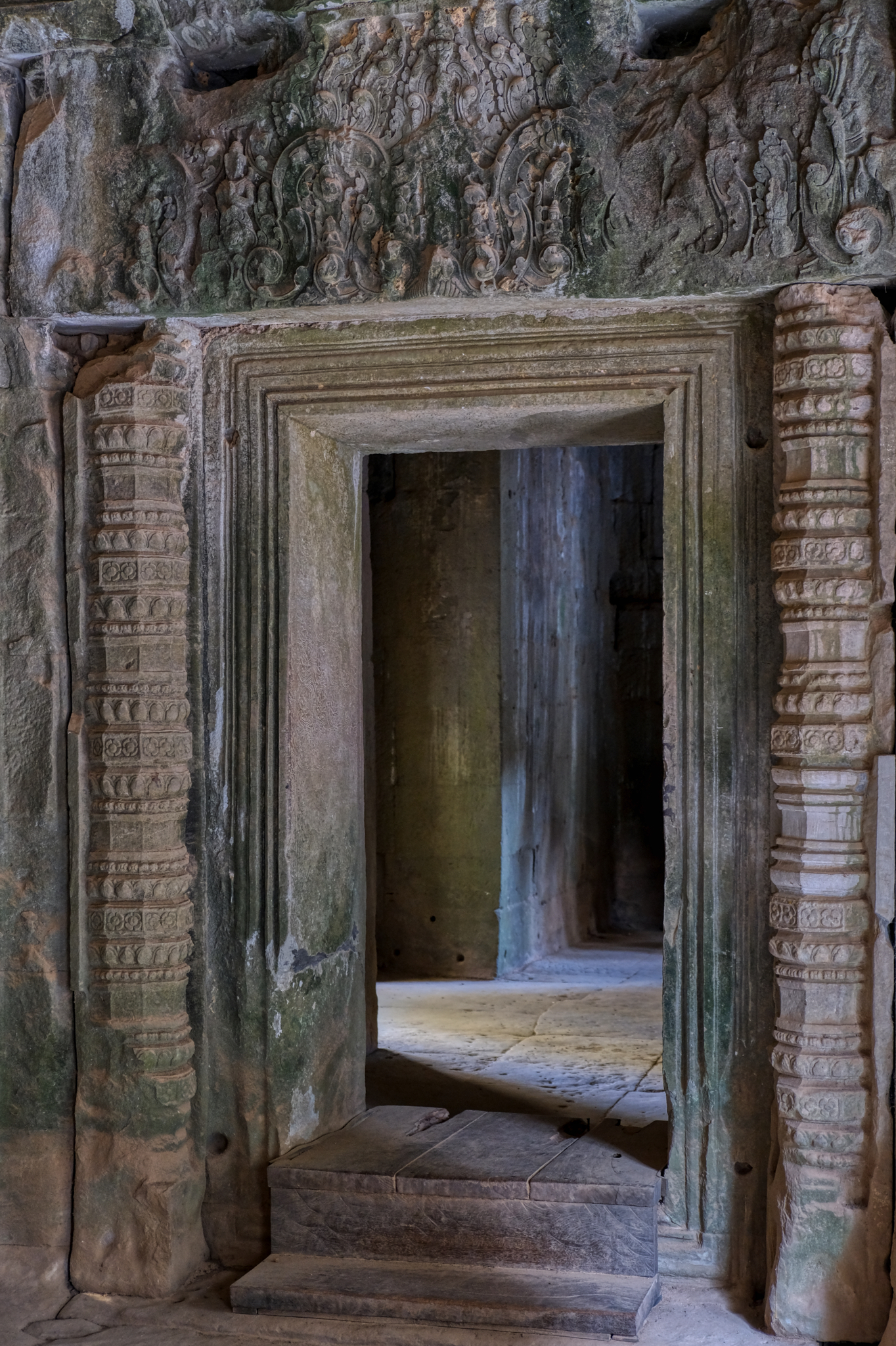 Interior doors. The Light! The shadows!
Interior doors. The Light! The shadows!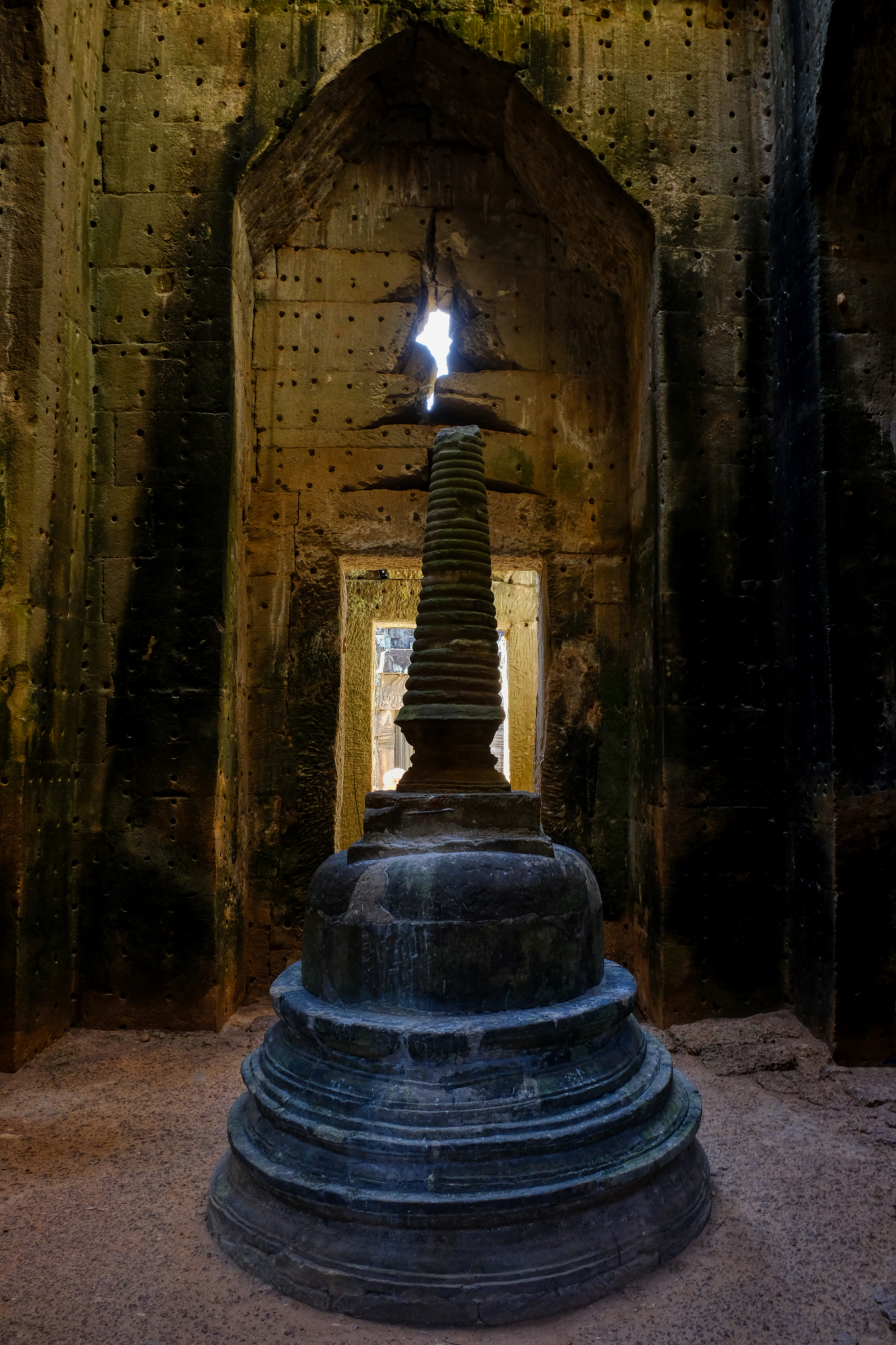 Astonishing chedi in the intersection of two long halls! The many holes in the stone walls indicate they were covered with carvings in stone or wood.
Astonishing chedi in the intersection of two long halls! The many holes in the stone walls indicate they were covered with carvings in stone or wood.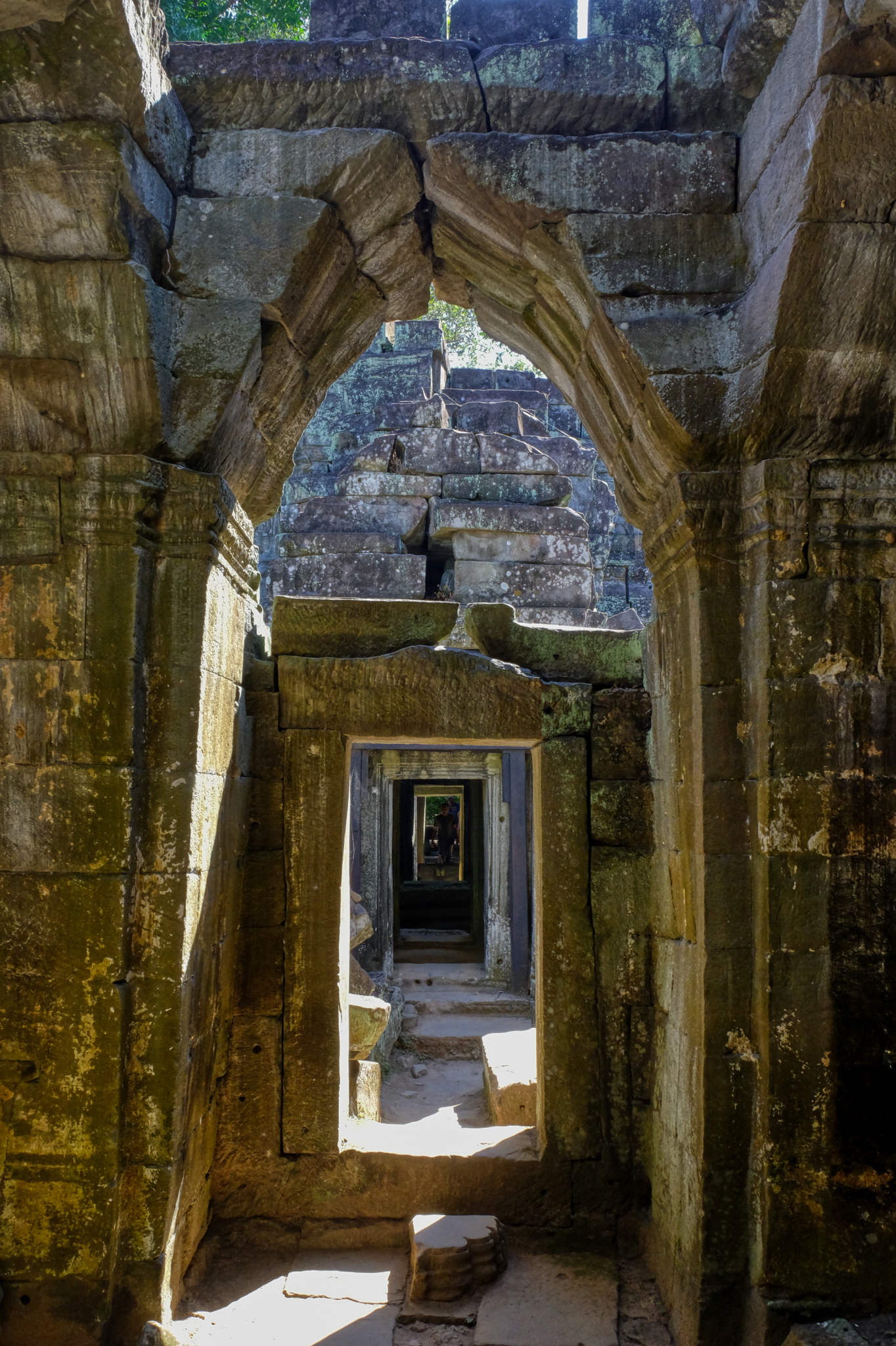 Endless curiosity . . .
Endless curiosity . . .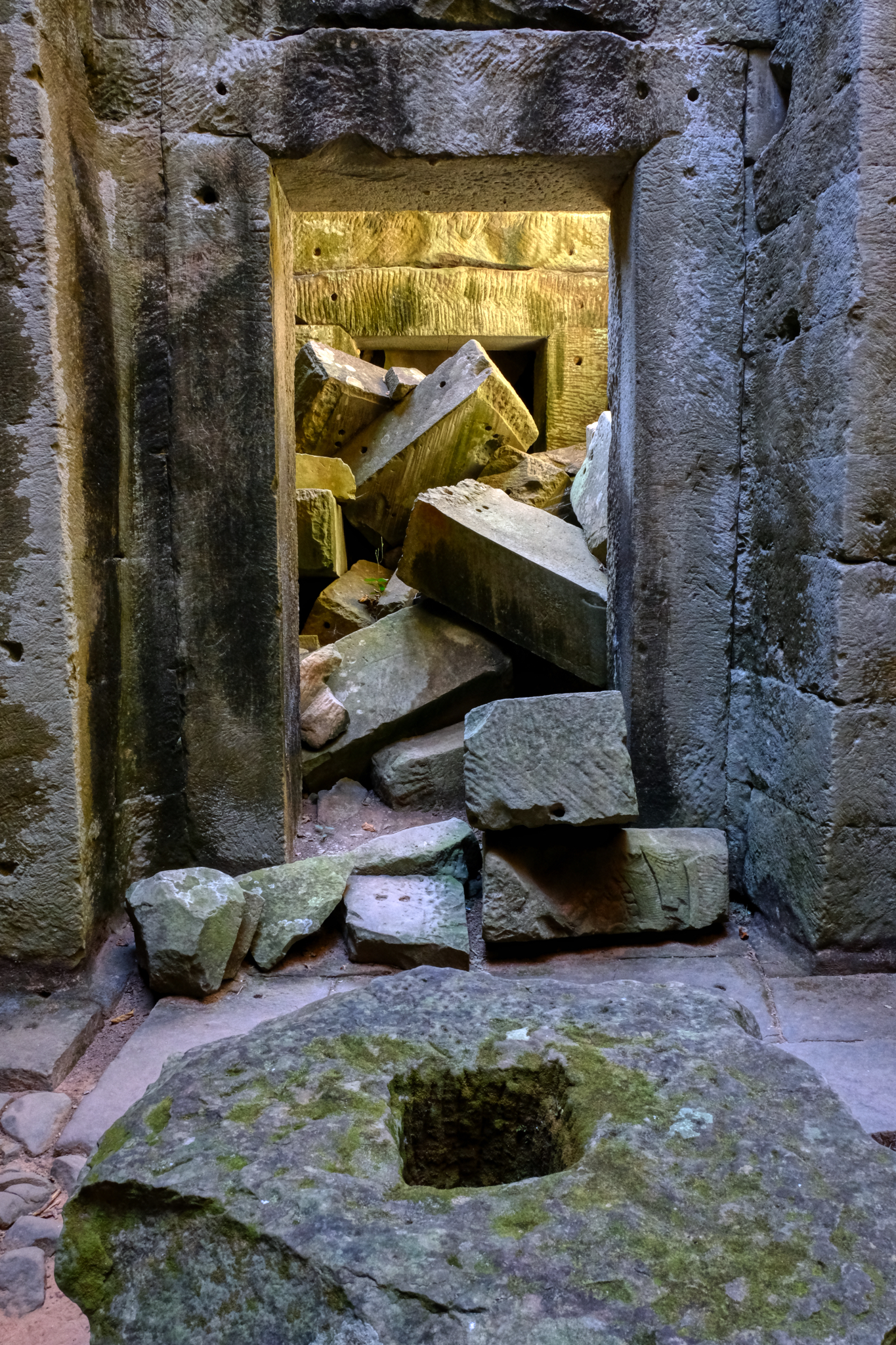 Wandering the halls and passages and finding an outlet into the honey light . . . what's out there?
Wandering the halls and passages and finding an outlet into the honey light . . . what's out there?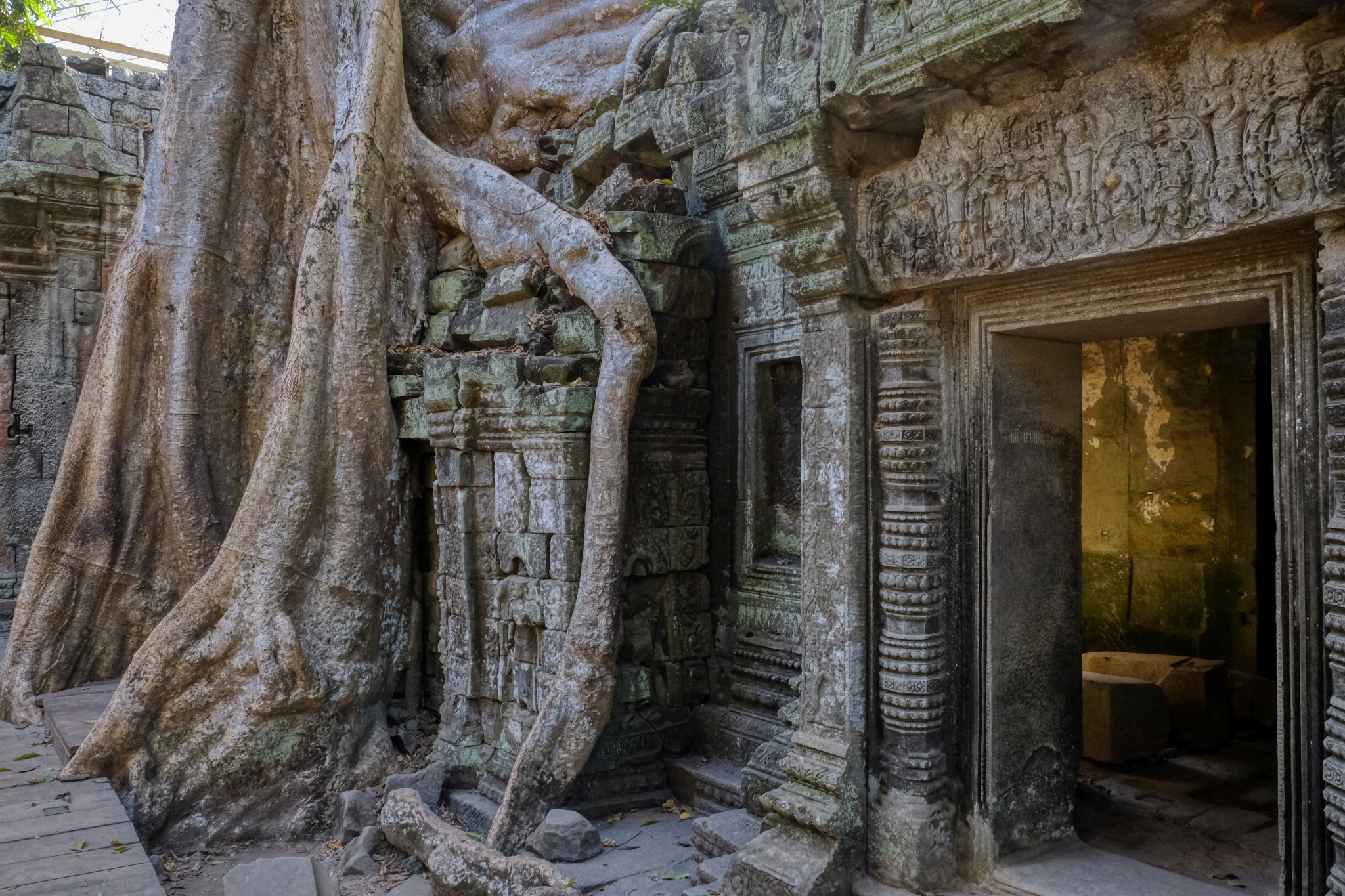 . . . and THIS is what was on the outside of these long stone passages!
. . . and THIS is what was on the outside of these long stone passages!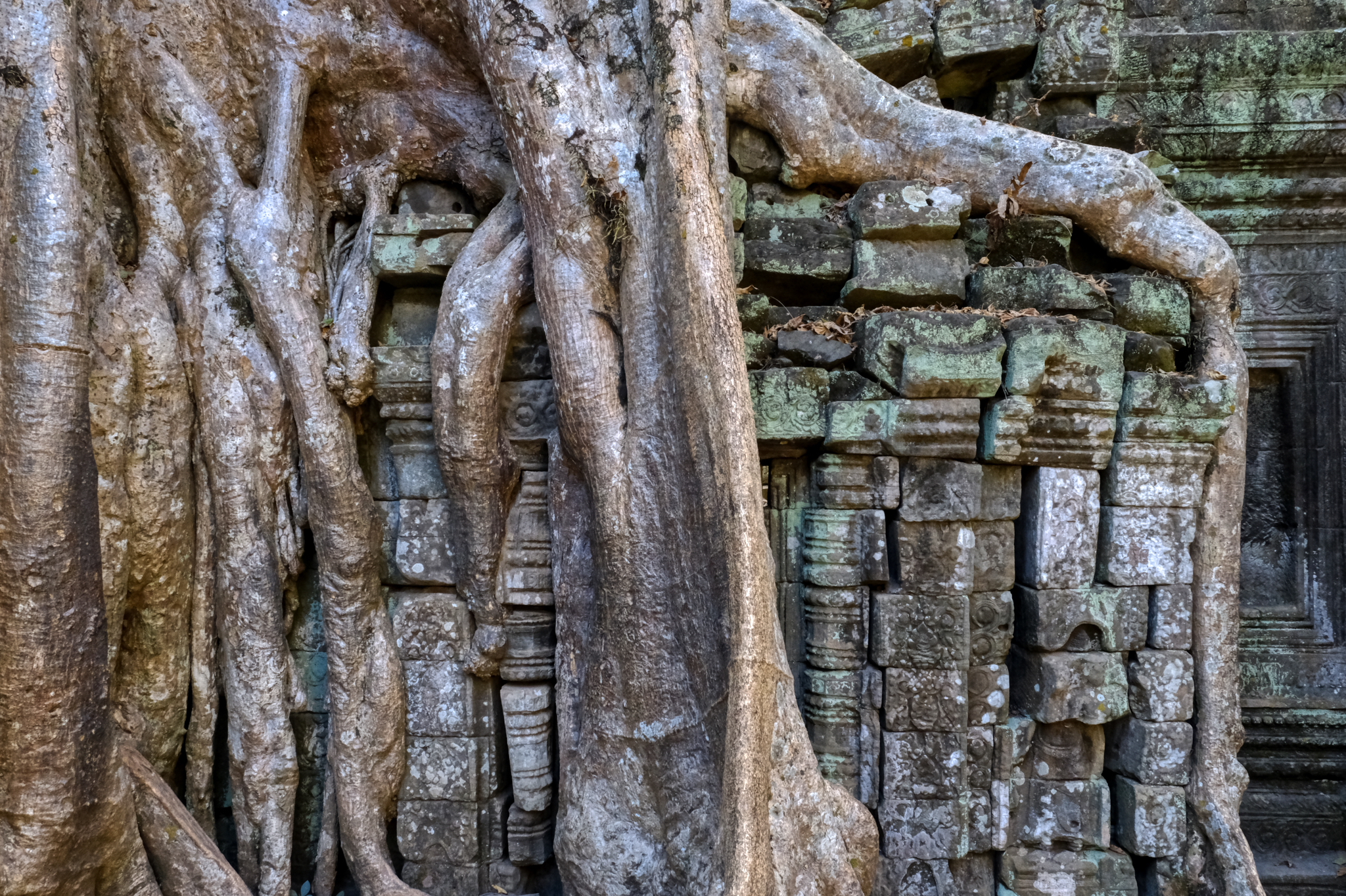 The classic 'Jungle Reclaiming the Lost Temple' photo. Still wonderful!
The classic 'Jungle Reclaiming the Lost Temple' photo. Still wonderful!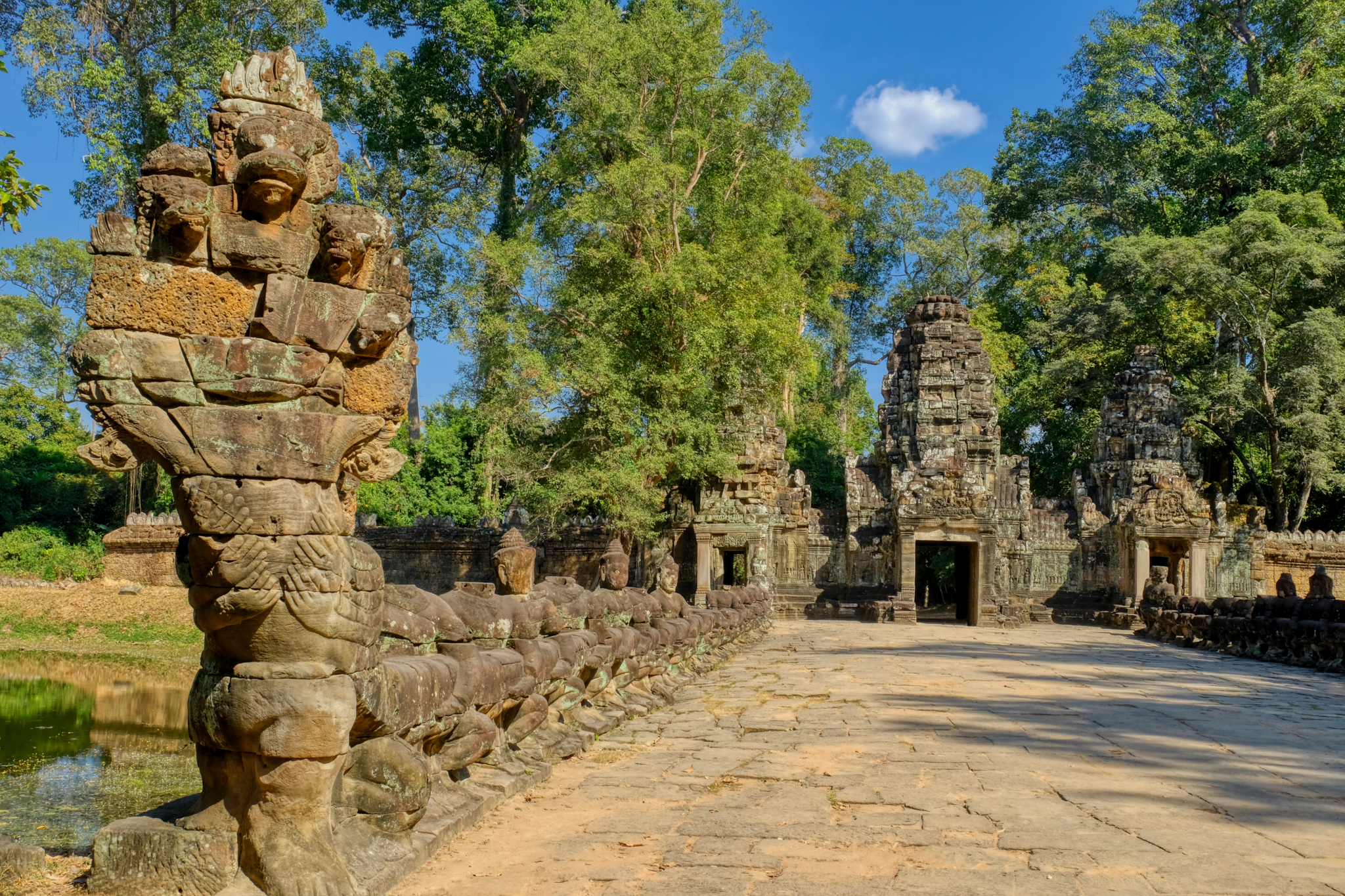 Our driver brought us to another temple site, this one had an entrance guarded by a bridge guarded by stone cobras!
Our driver brought us to another temple site, this one had an entrance guarded by a bridge guarded by stone cobras!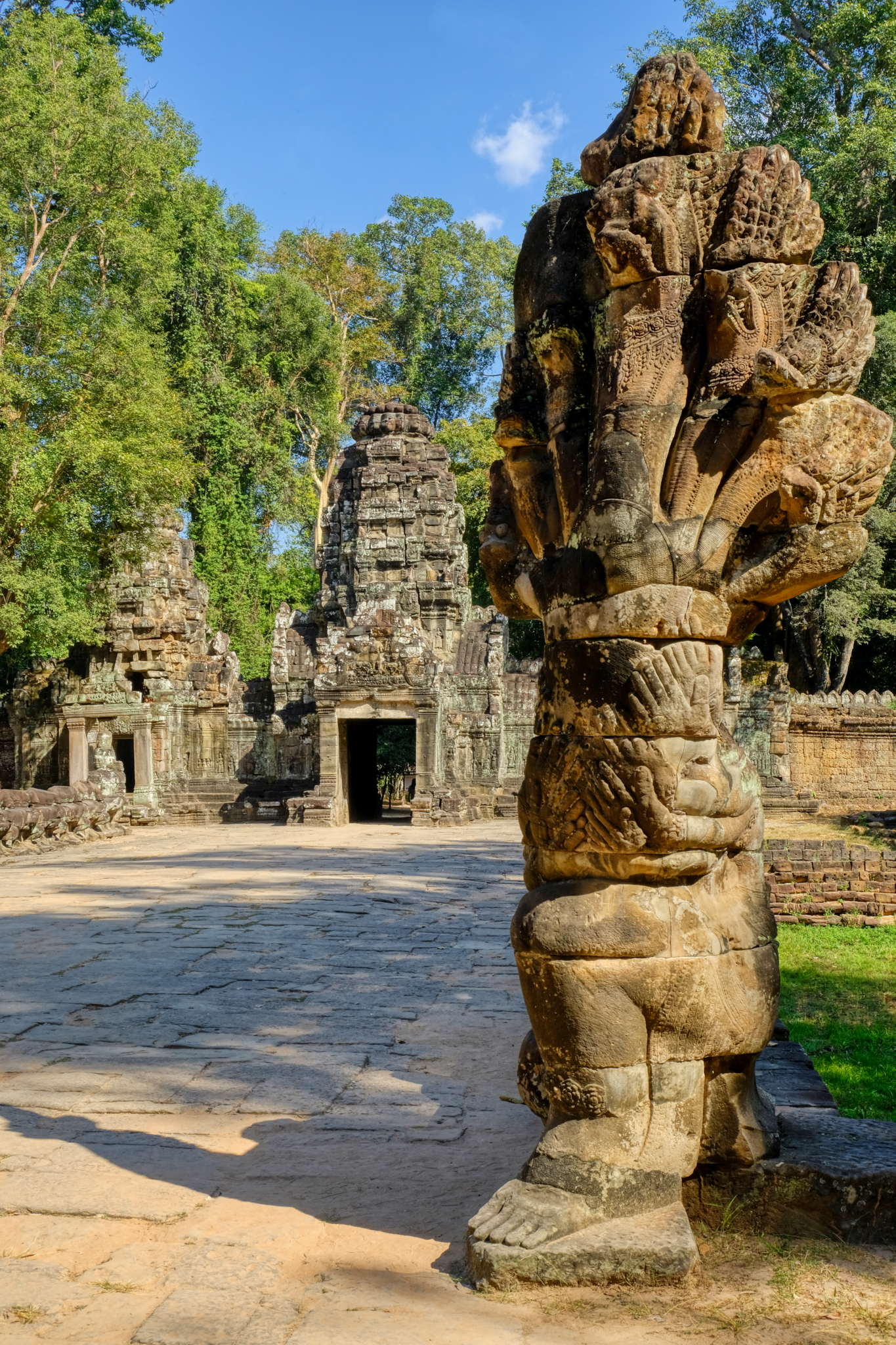 Frightening to peoples of that time, I would imaging.
Frightening to peoples of that time, I would imaging.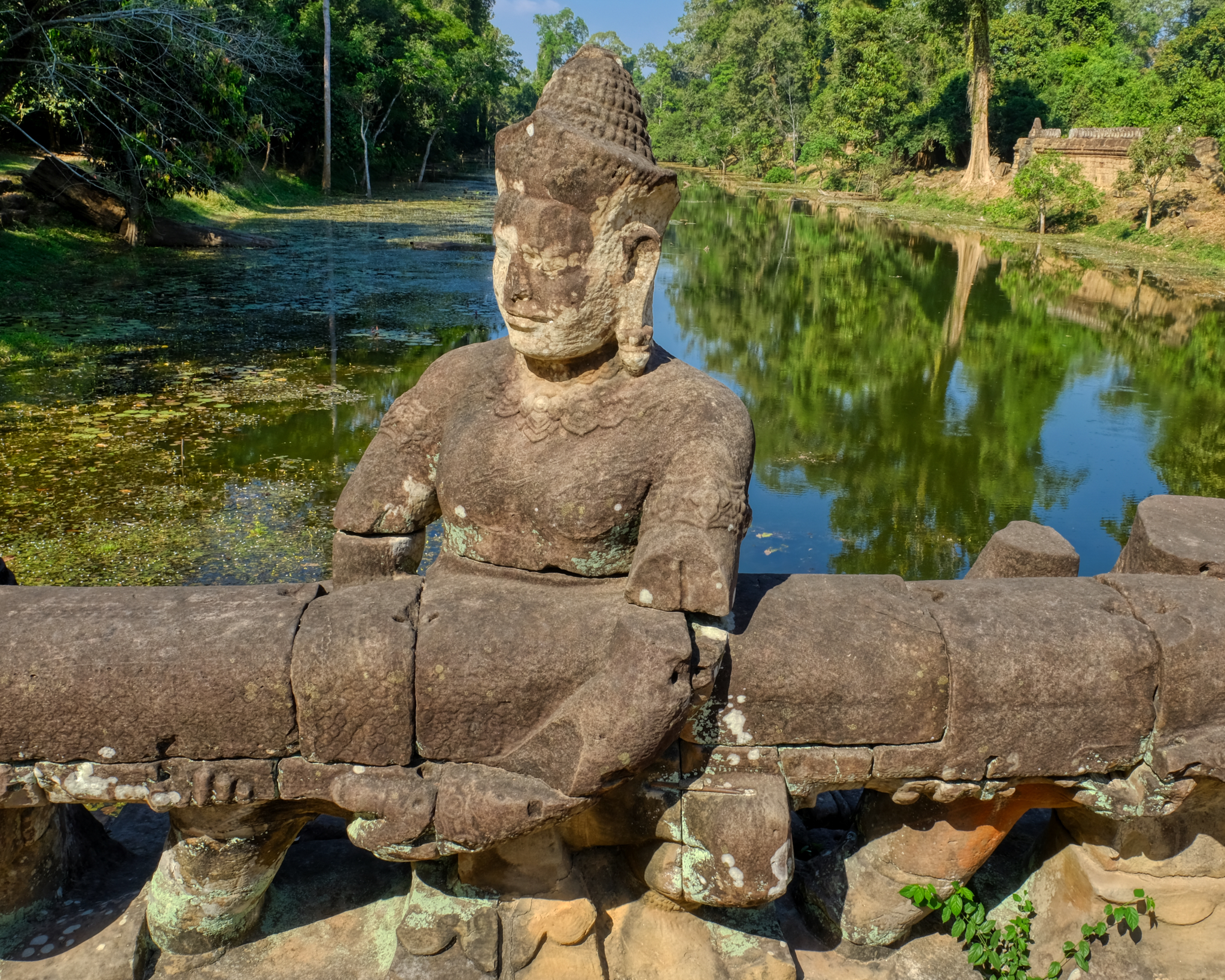 The body of the giant stone cobra was held by a row stone statues that made up the bridge guardrail.
The body of the giant stone cobra was held by a row stone statues that made up the bridge guardrail.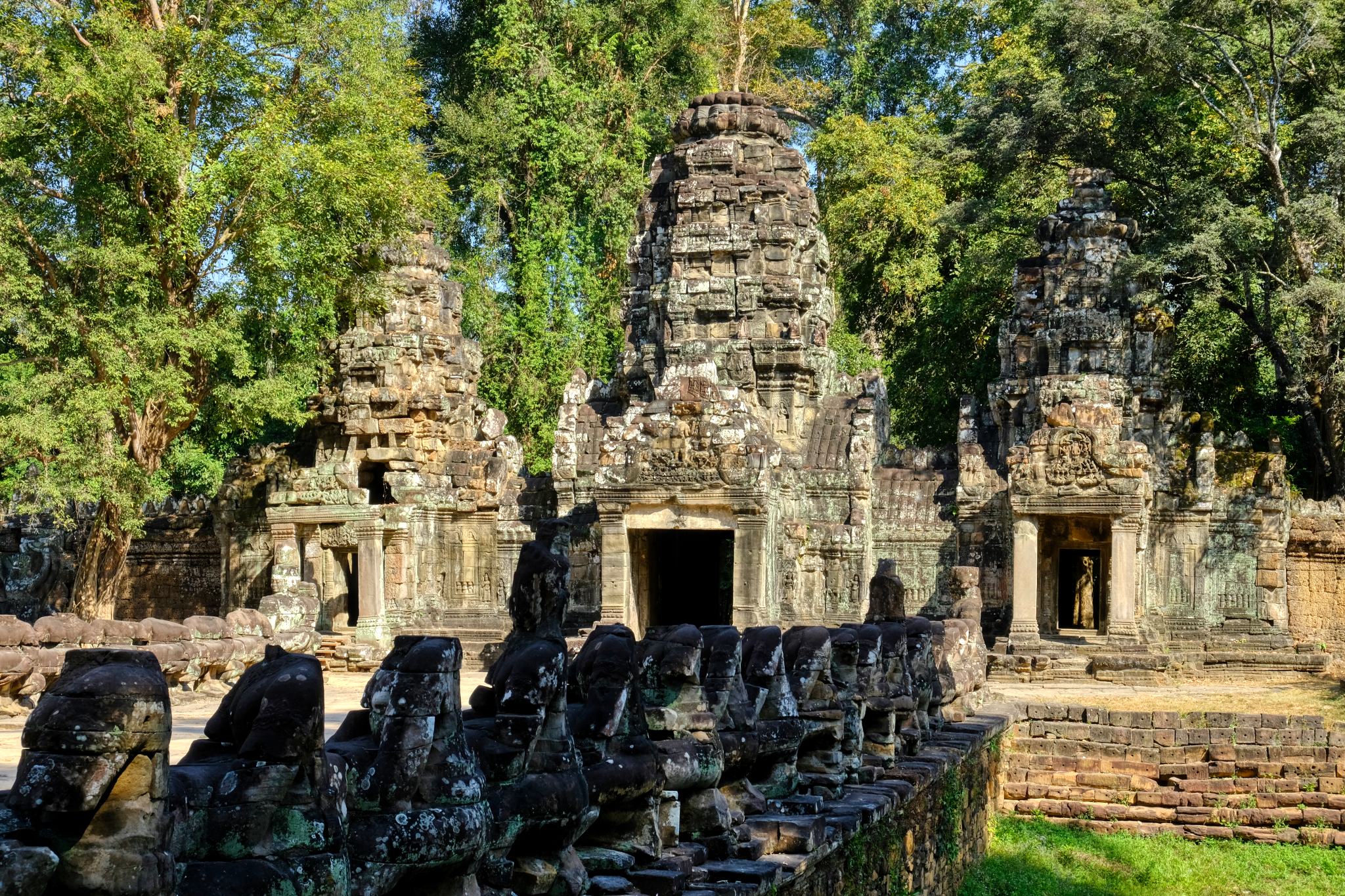 The heads on all of the stone bridge statues have been stolen over the years . . . they end up in museums, private collections, and "art" shops in Bangkok. Despicable.
The heads on all of the stone bridge statues have been stolen over the years . . . they end up in museums, private collections, and "art" shops in Bangkok. Despicable.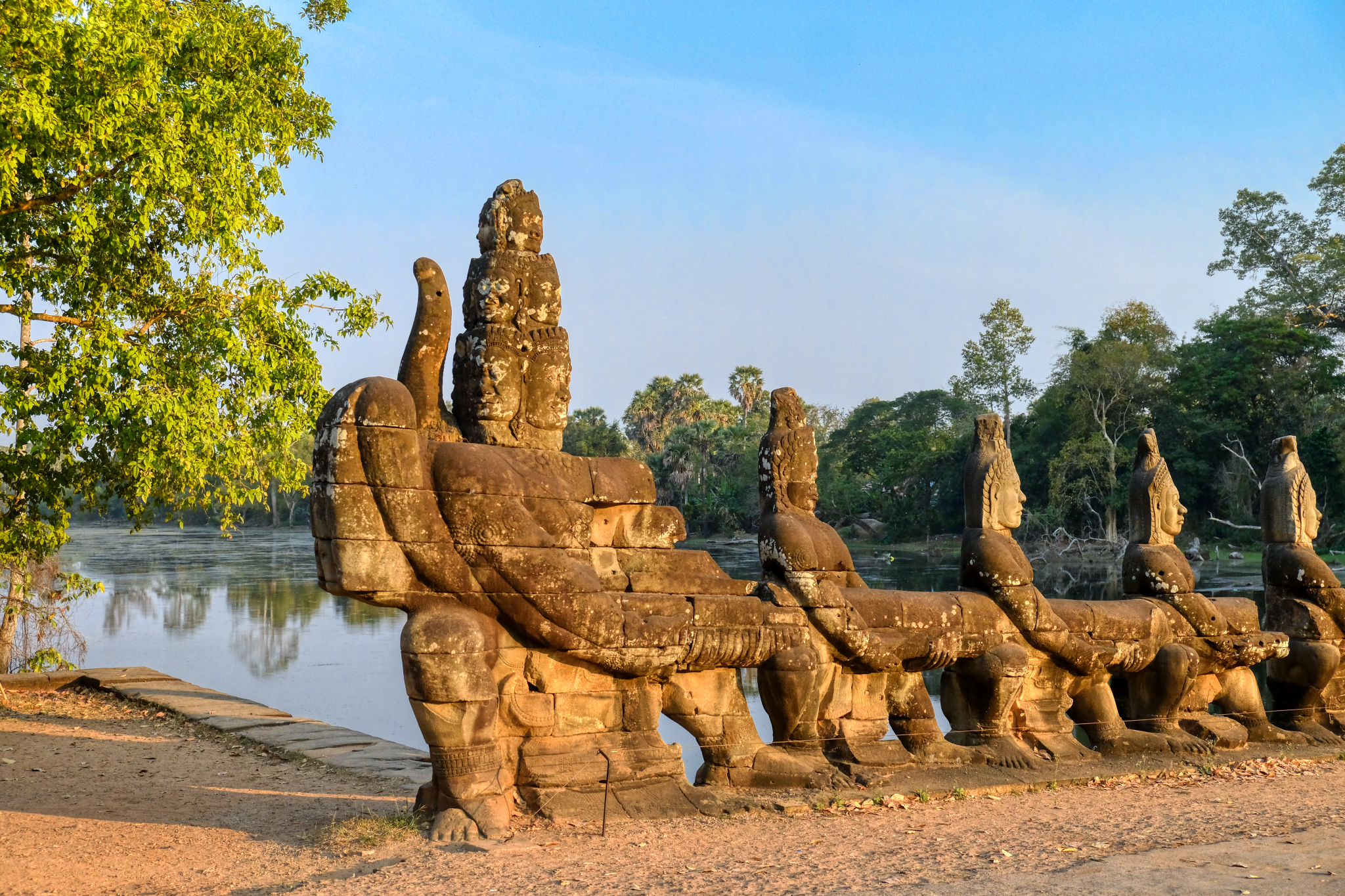 Many of the temple complexes still have their moats.
Many of the temple complexes still have their moats.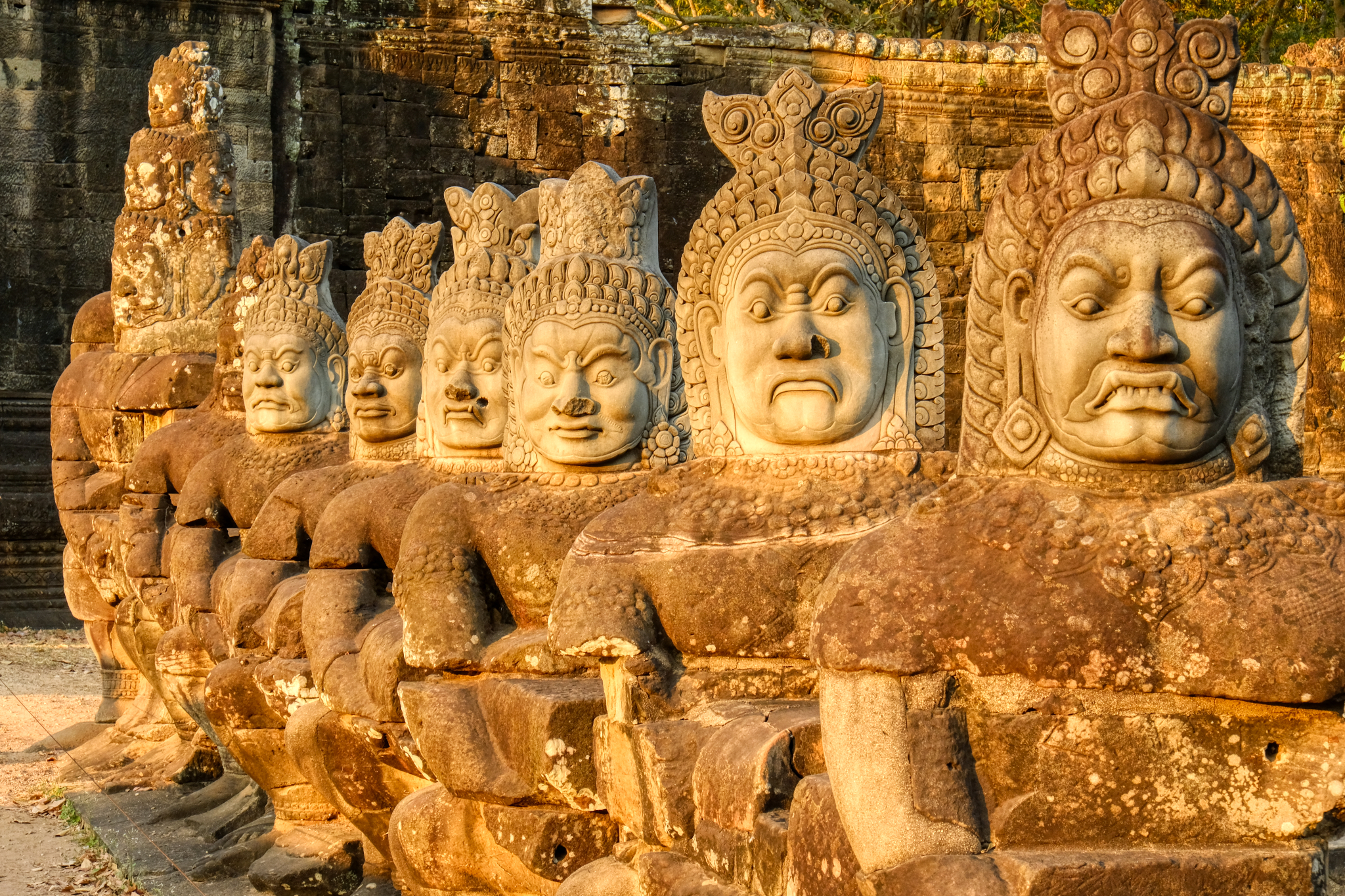 We found only one bridge with the full compliment of guarding figures . . . and they were wonderful!
We found only one bridge with the full compliment of guarding figures . . . and they were wonderful!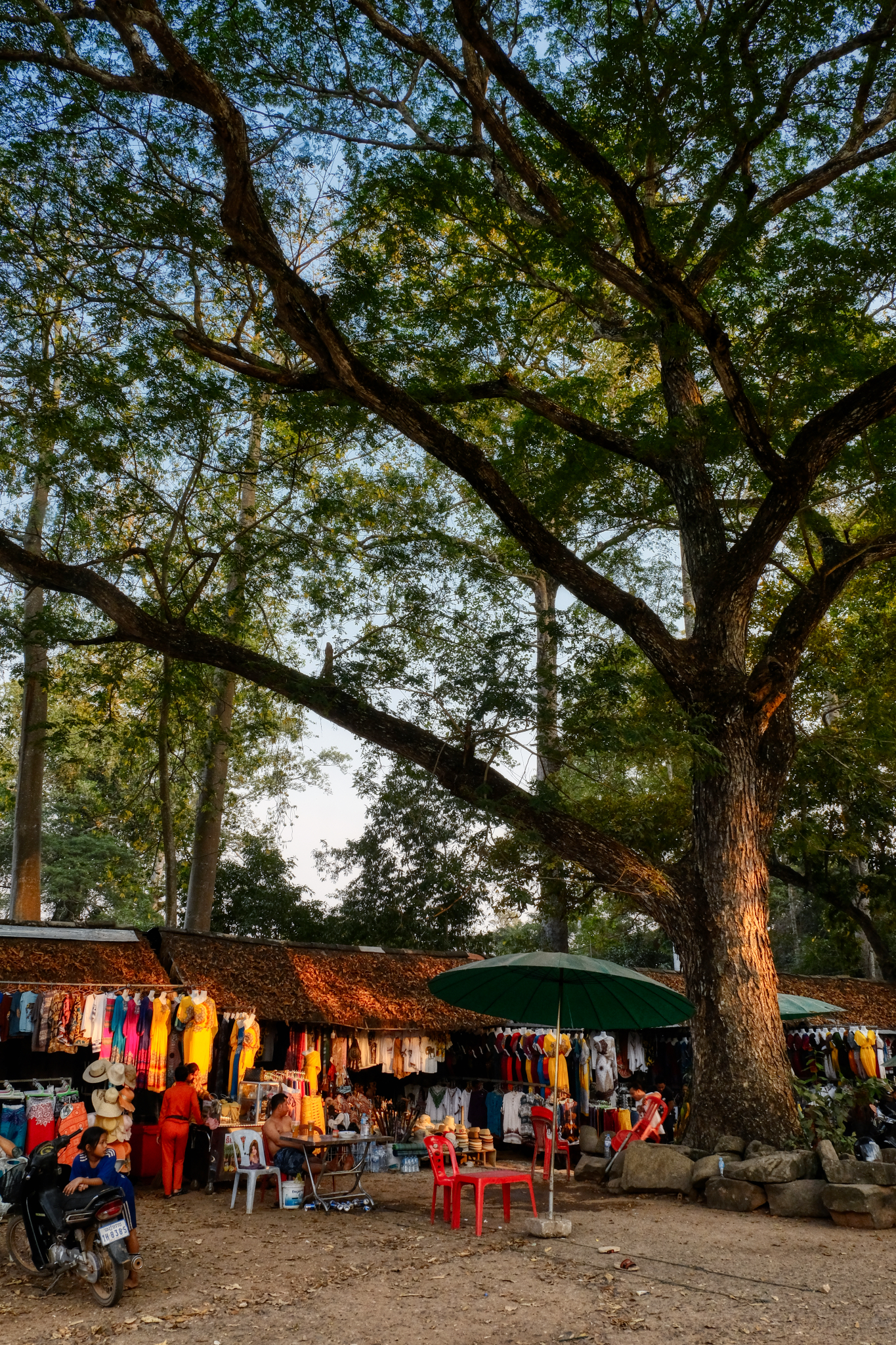 Here and there we saw small encampments of curios hawkers.
Here and there we saw small encampments of curios hawkers.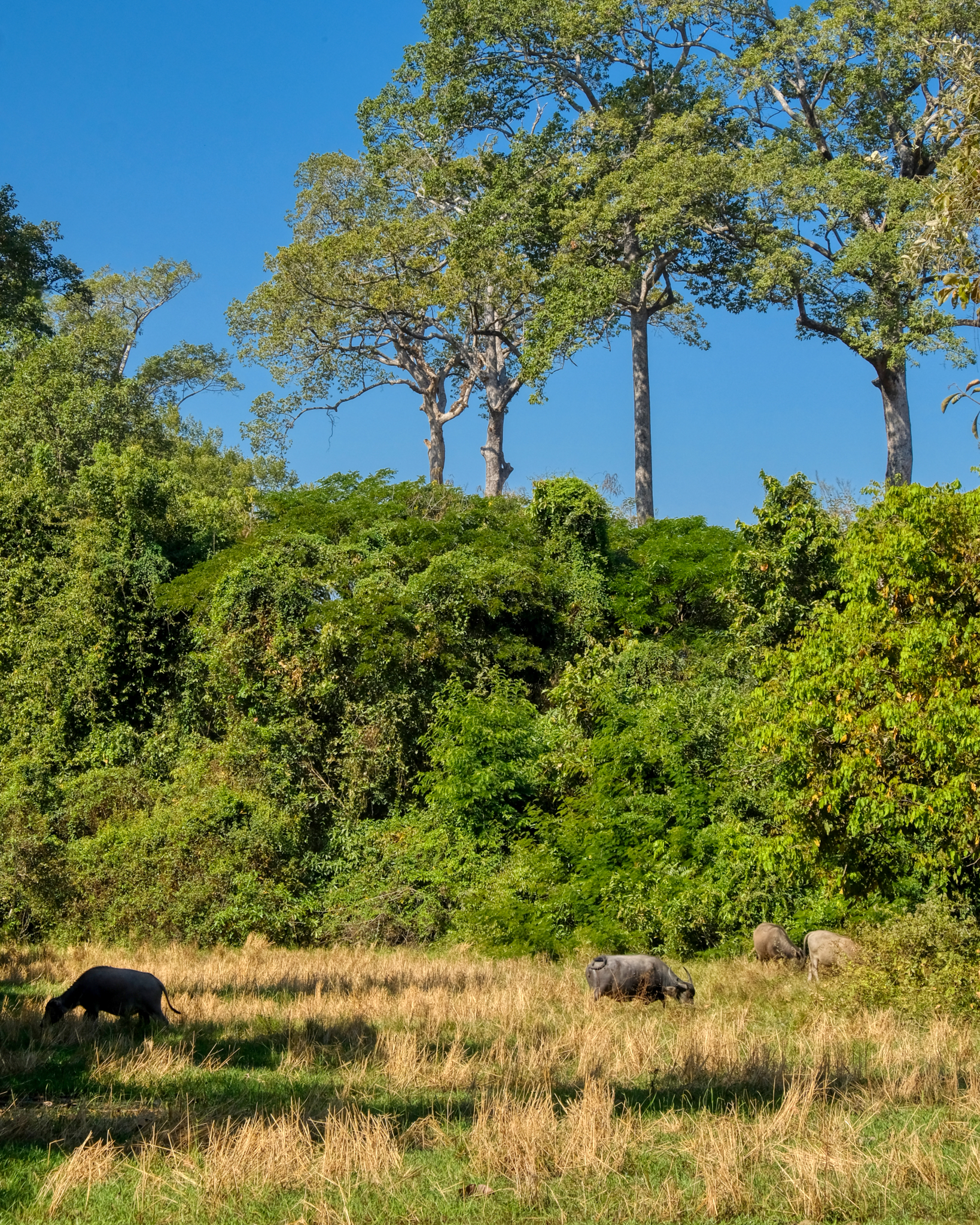 Our drive between temple sited took us through some beautiful and peaceful countryside. Some of the temples were 8-10 miles apart.
Our drive between temple sited took us through some beautiful and peaceful countryside. Some of the temples were 8-10 miles apart.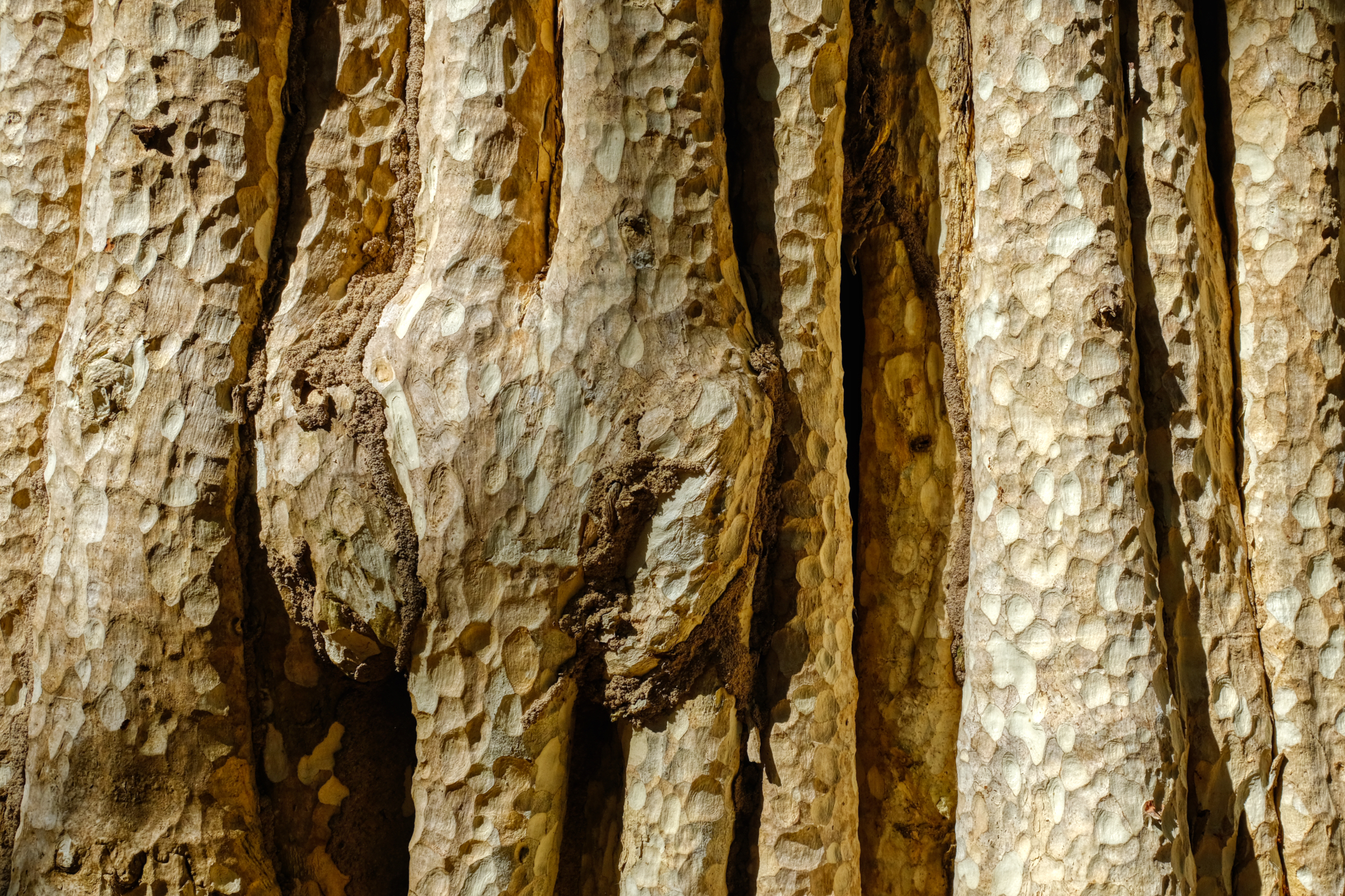 Nature here held some big surprises . . . like this complex tree bark.
Nature here held some big surprises . . . like this complex tree bark. Here and there, as we neared a new temple site, the road would be lined with these markers.
Here and there, as we neared a new temple site, the road would be lined with these markers.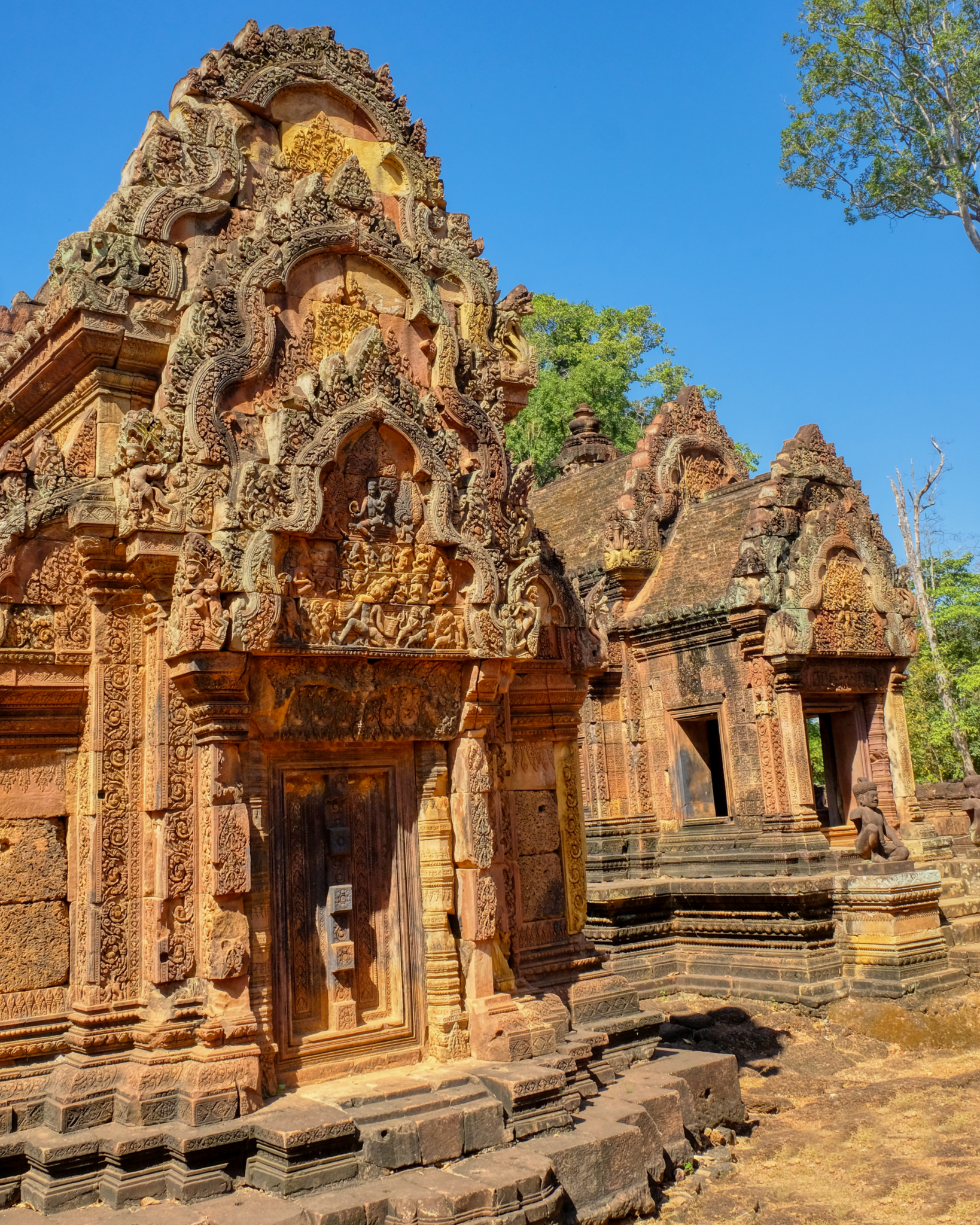 One of the last sites we visited had the temple structures made of a reddish stone with black volcanic rock accents. All carved, of course.
One of the last sites we visited had the temple structures made of a reddish stone with black volcanic rock accents. All carved, of course.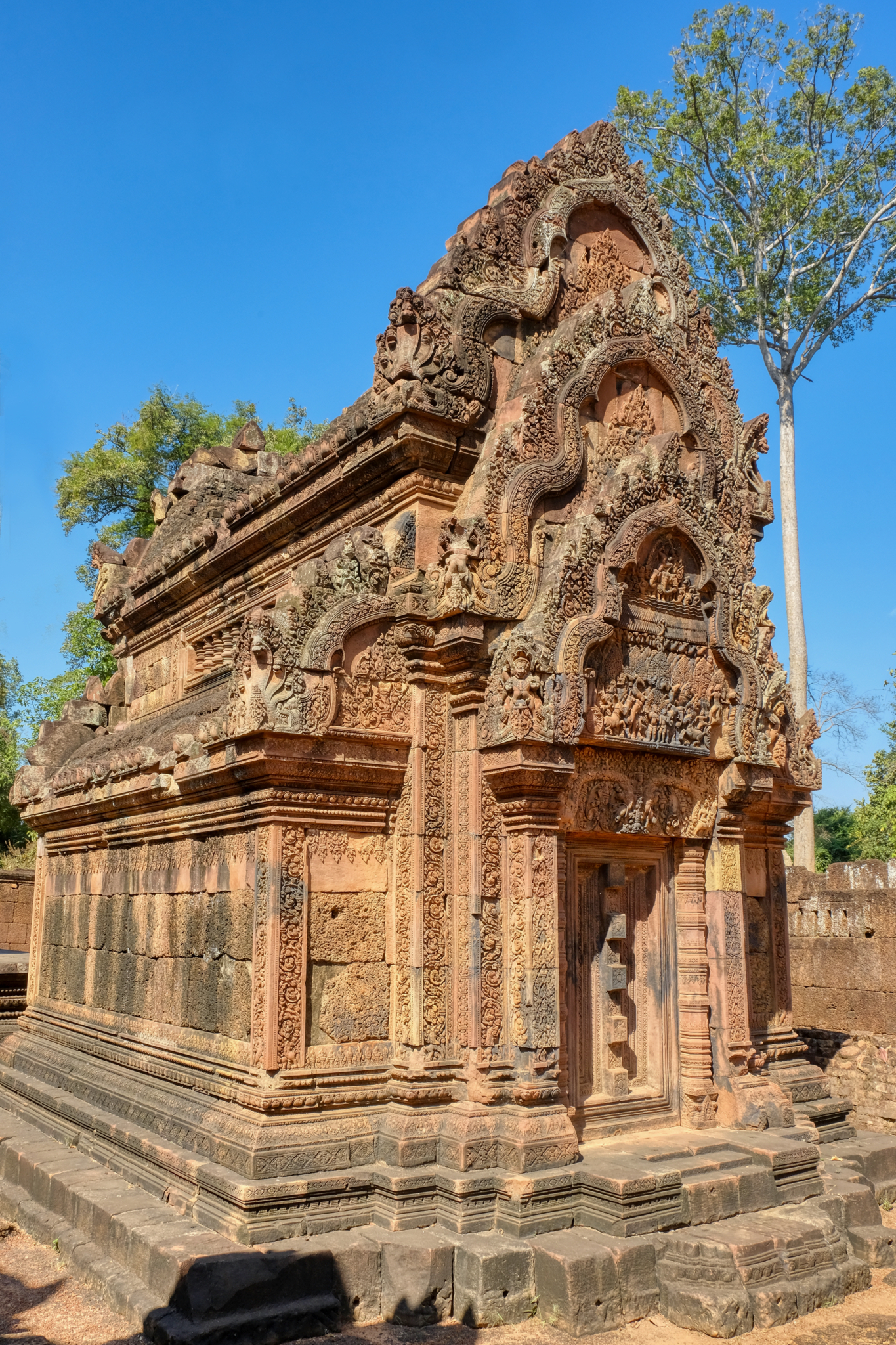 The carved details were very detailed and refined.
The carved details were very detailed and refined.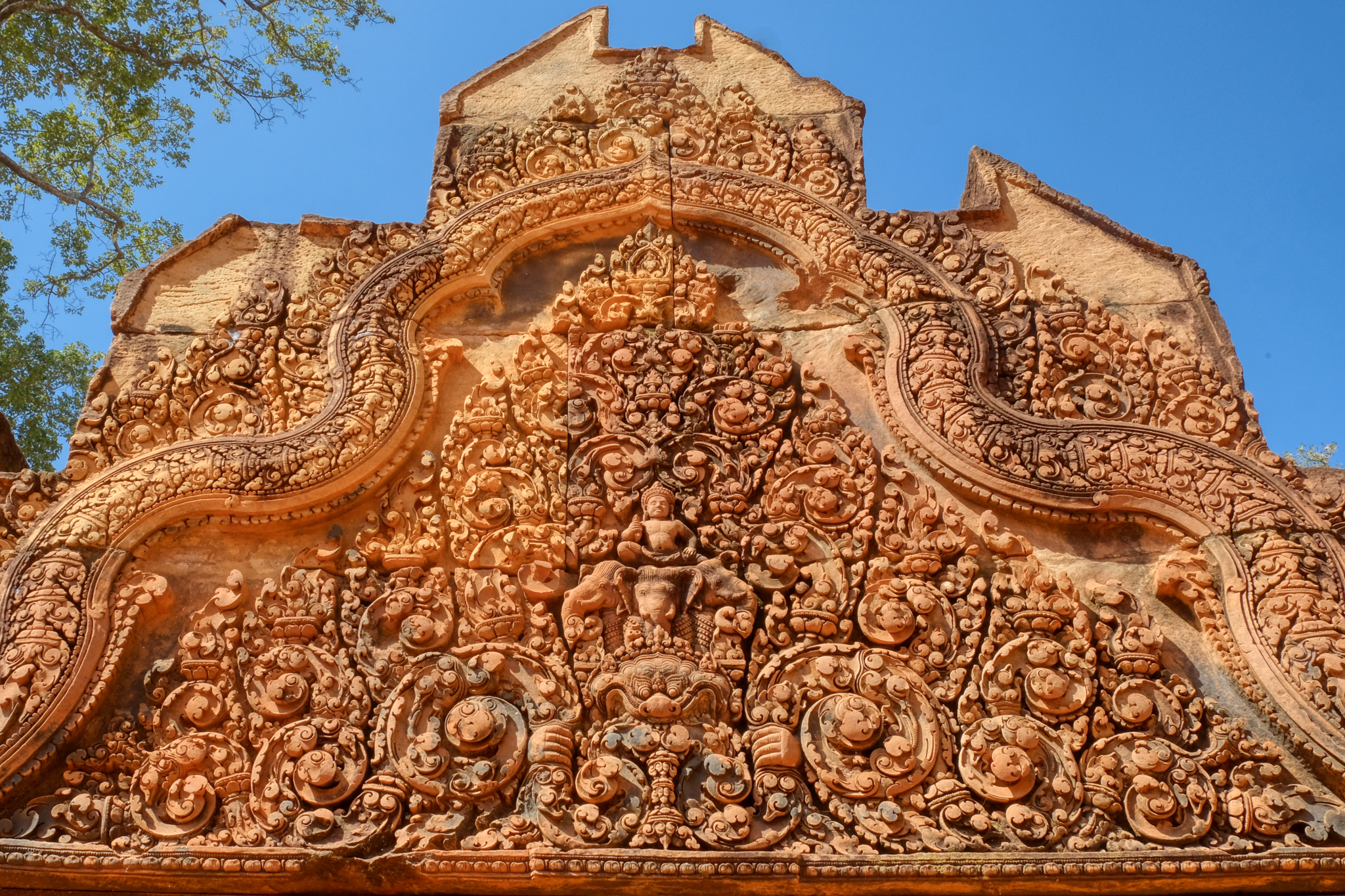 Upon closer inspection, I could not tell if these were fired red clay ceramics or a red sandstone . . . .
Upon closer inspection, I could not tell if these were fired red clay ceramics or a red sandstone . . . .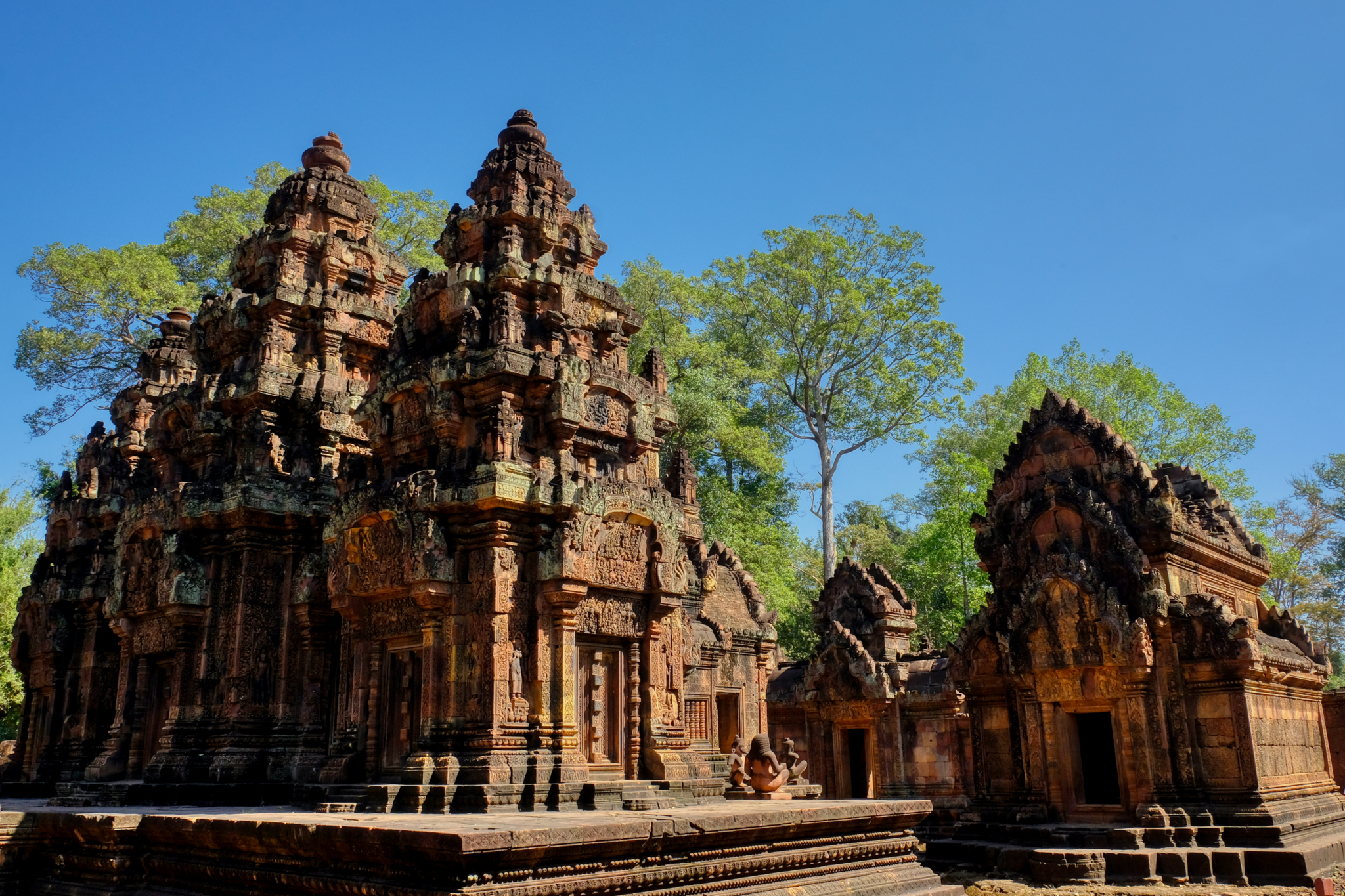 Late afternoon deep shadows on the red temple.
Late afternoon deep shadows on the red temple.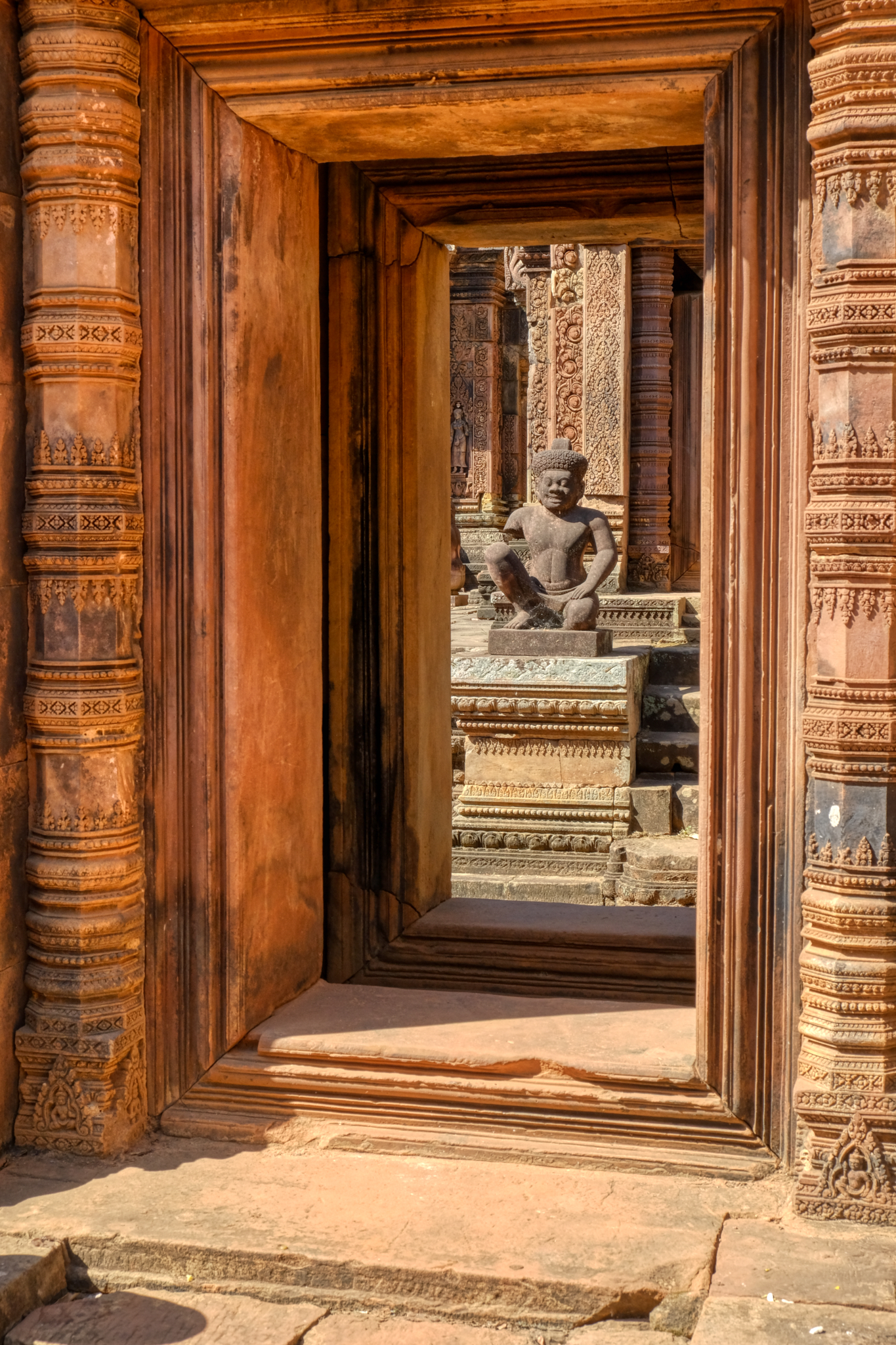 Many of these images, especially this one, lend themselves to printing and framing.
Many of these images, especially this one, lend themselves to printing and framing.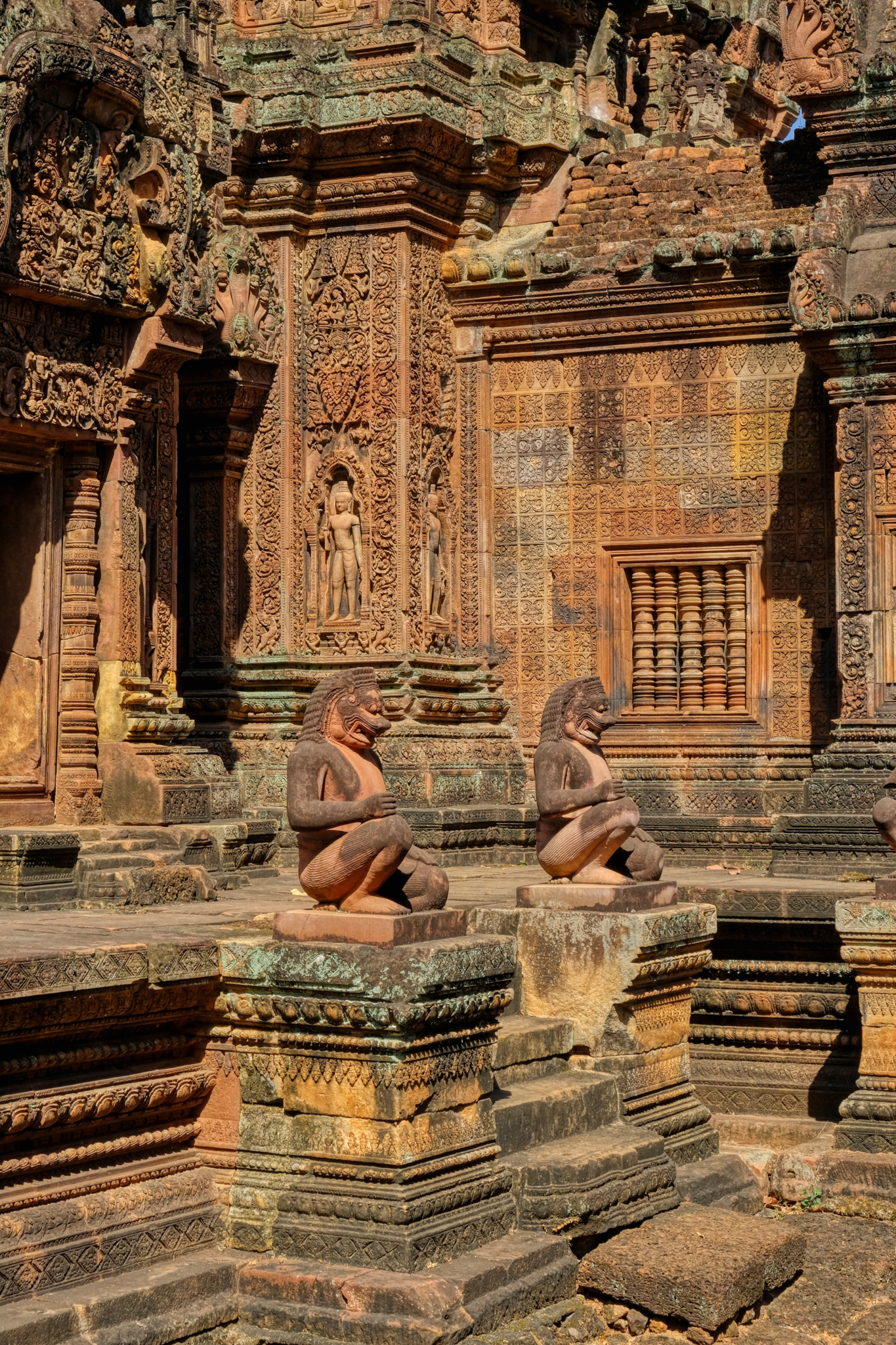 This temple had nearly no evidence of vandalism. Phenomenal beauty.
This temple had nearly no evidence of vandalism. Phenomenal beauty.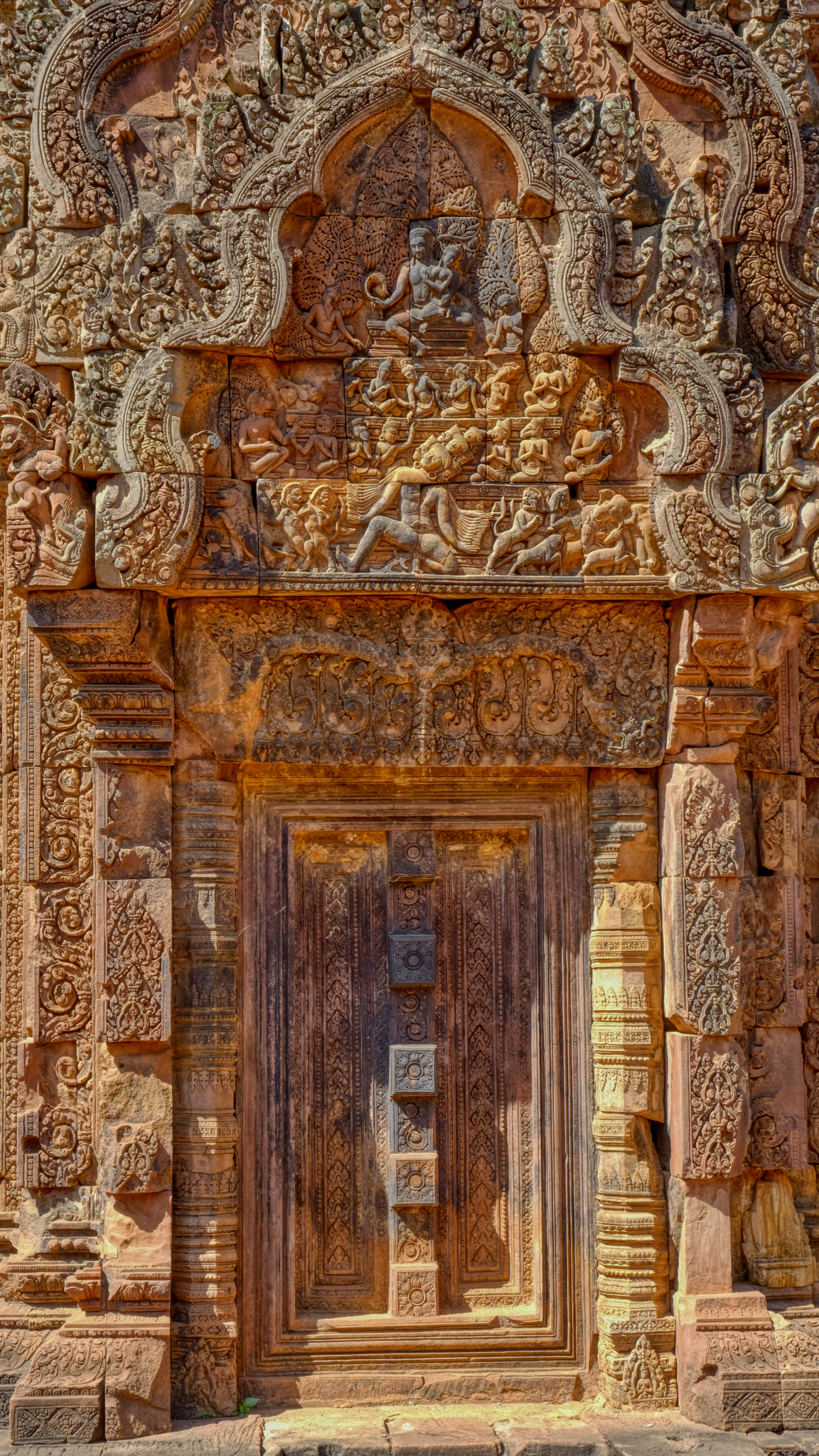 A magnificently carved stone door.
A magnificently carved stone door.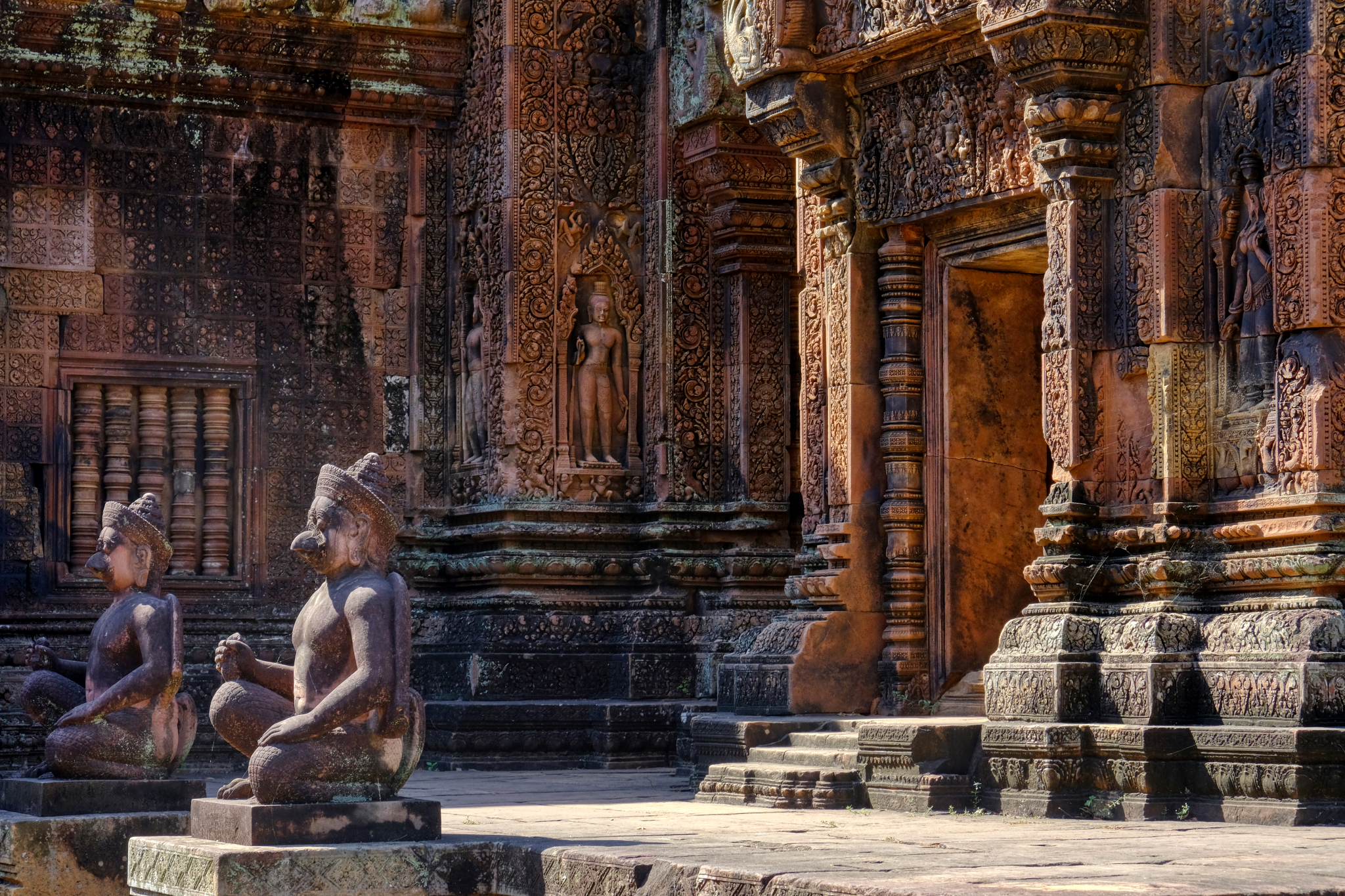 In the deep afternoon shadows, these statues in front of the carved temple presented an ancient, mystical image I will never forget.
In the deep afternoon shadows, these statues in front of the carved temple presented an ancient, mystical image I will never forget.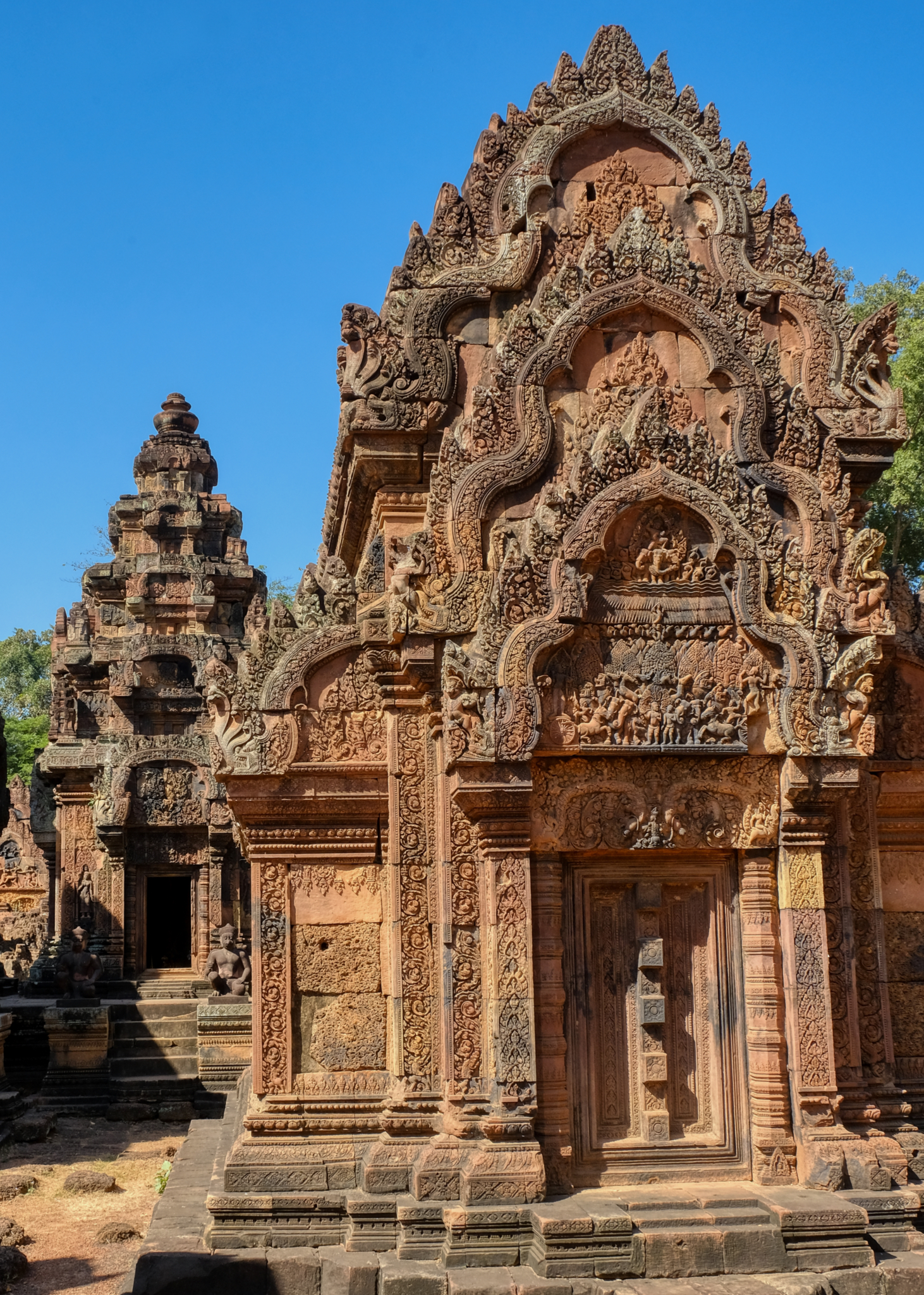 Many small temple structures filled the walled enclosure surrounded by a moat.
Many small temple structures filled the walled enclosure surrounded by a moat.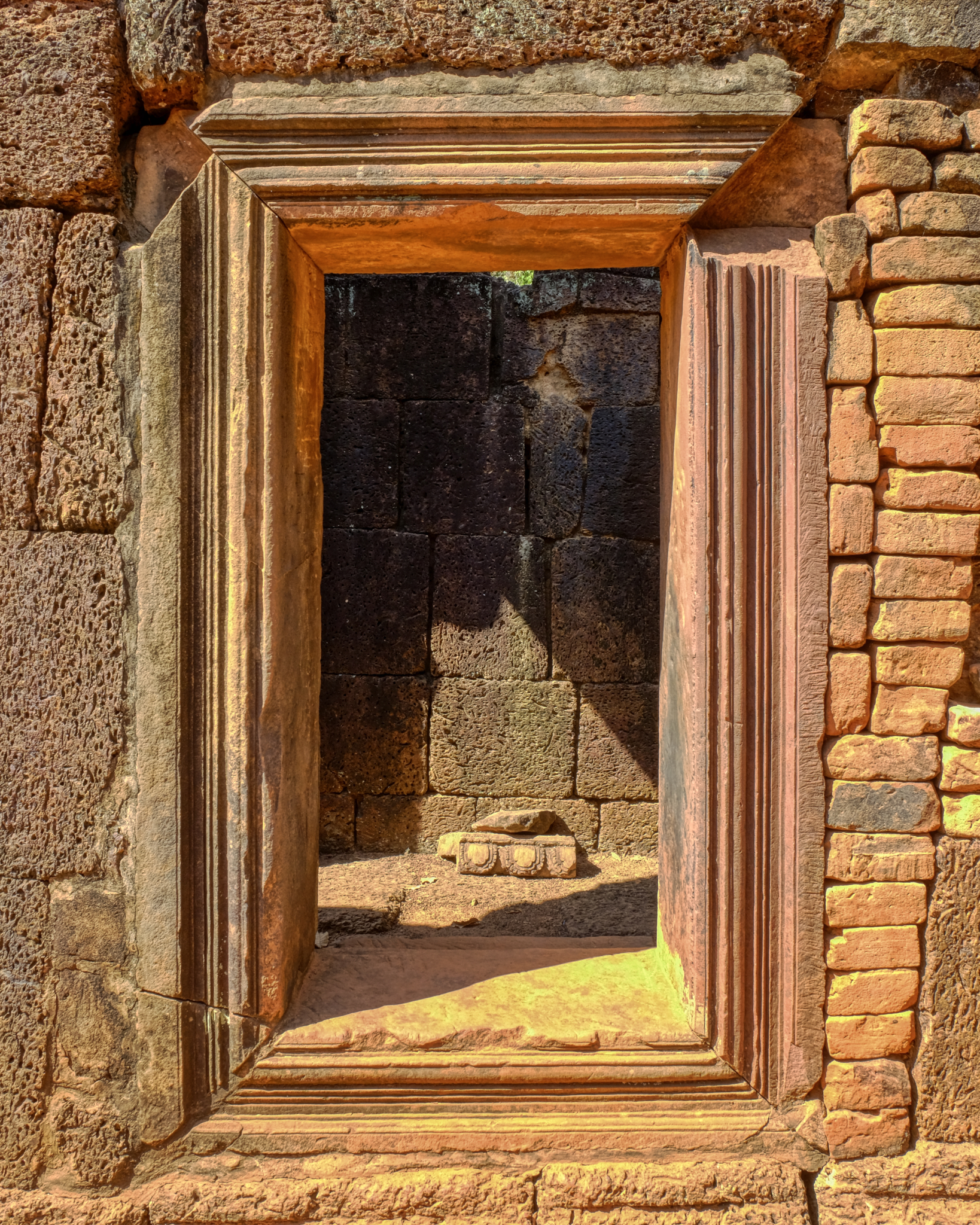 After exploring the red temple, and taking 30-40 photographs of windows and doors, we headed down the road again.
After exploring the red temple, and taking 30-40 photographs of windows and doors, we headed down the road again.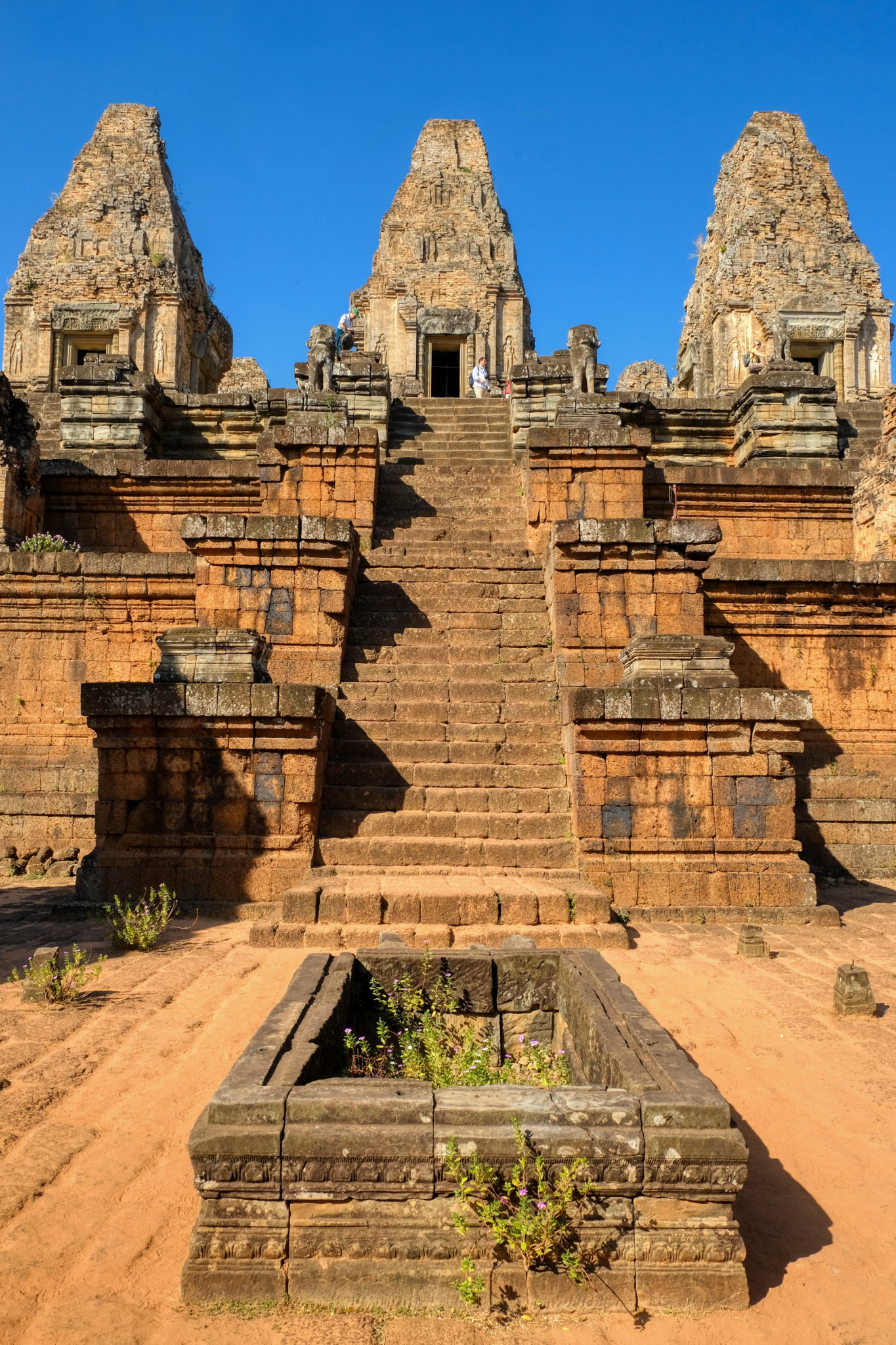 While speeding along a rural road, we yelled to the driver to stop when we saw this small temple alongside the road . . . .
While speeding along a rural road, we yelled to the driver to stop when we saw this small temple alongside the road . . . .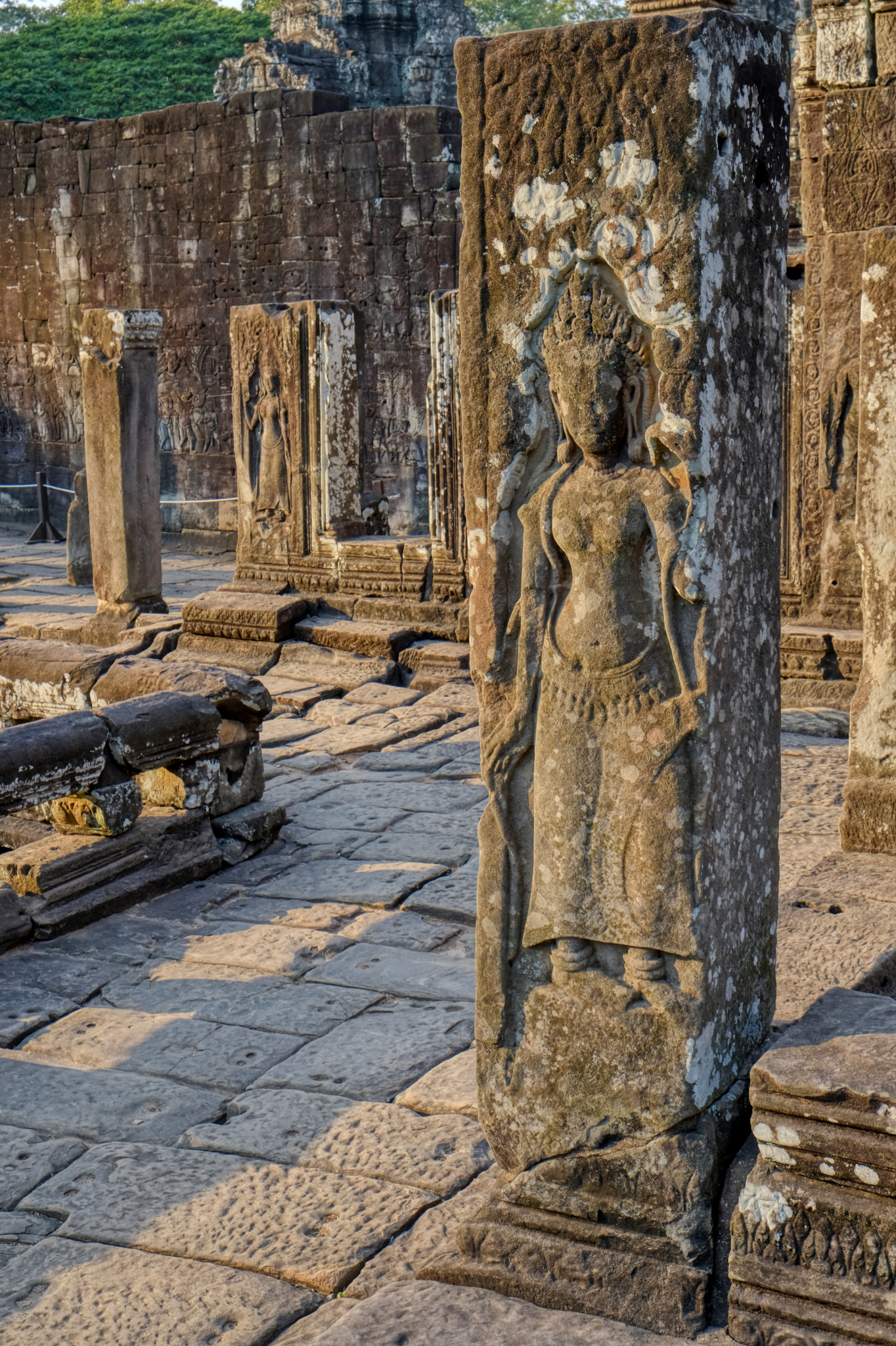 A remarkable temple in the late magic light.
A remarkable temple in the late magic light.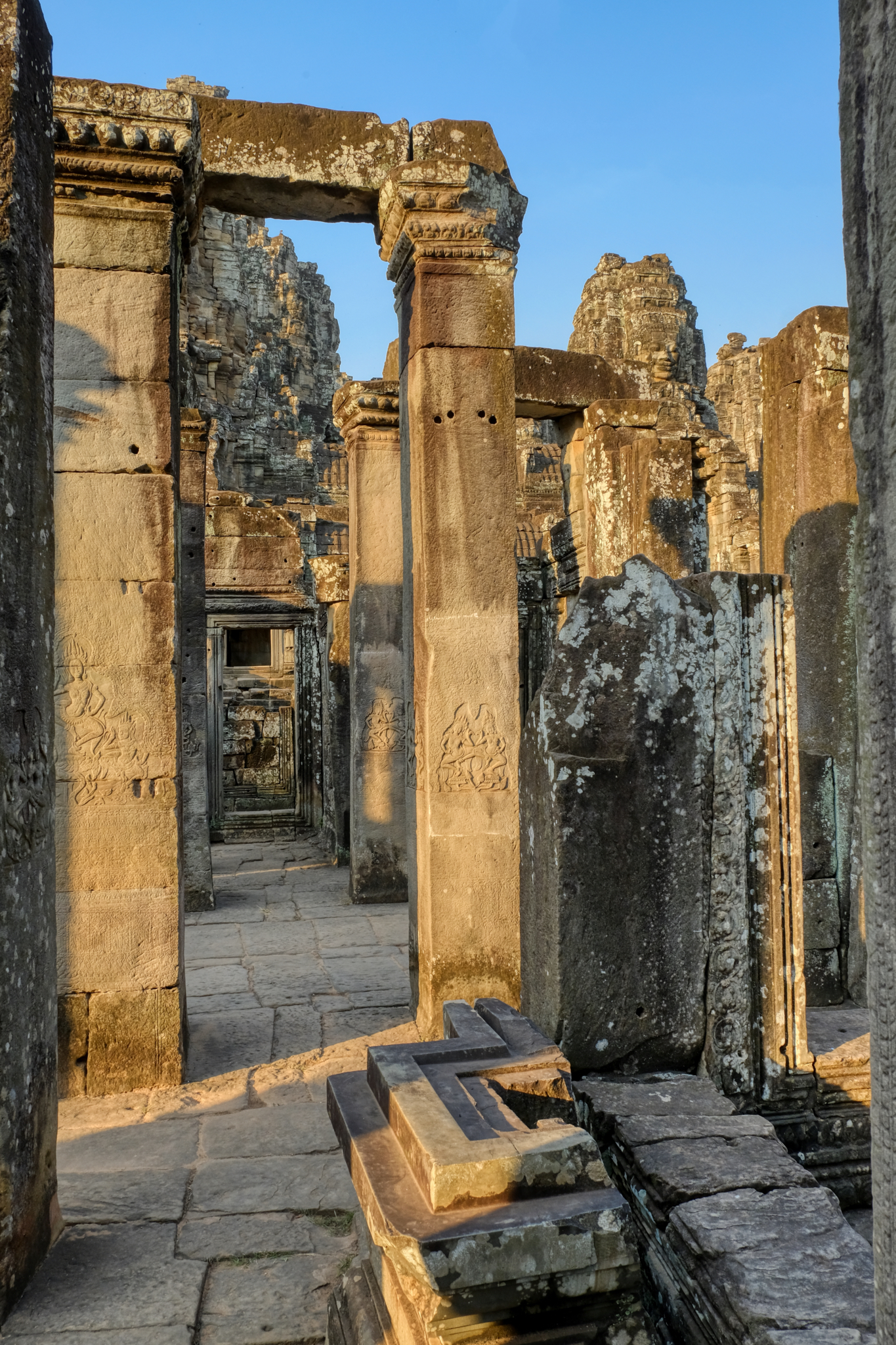 Stunning bas reliefs on the columns.
Stunning bas reliefs on the columns.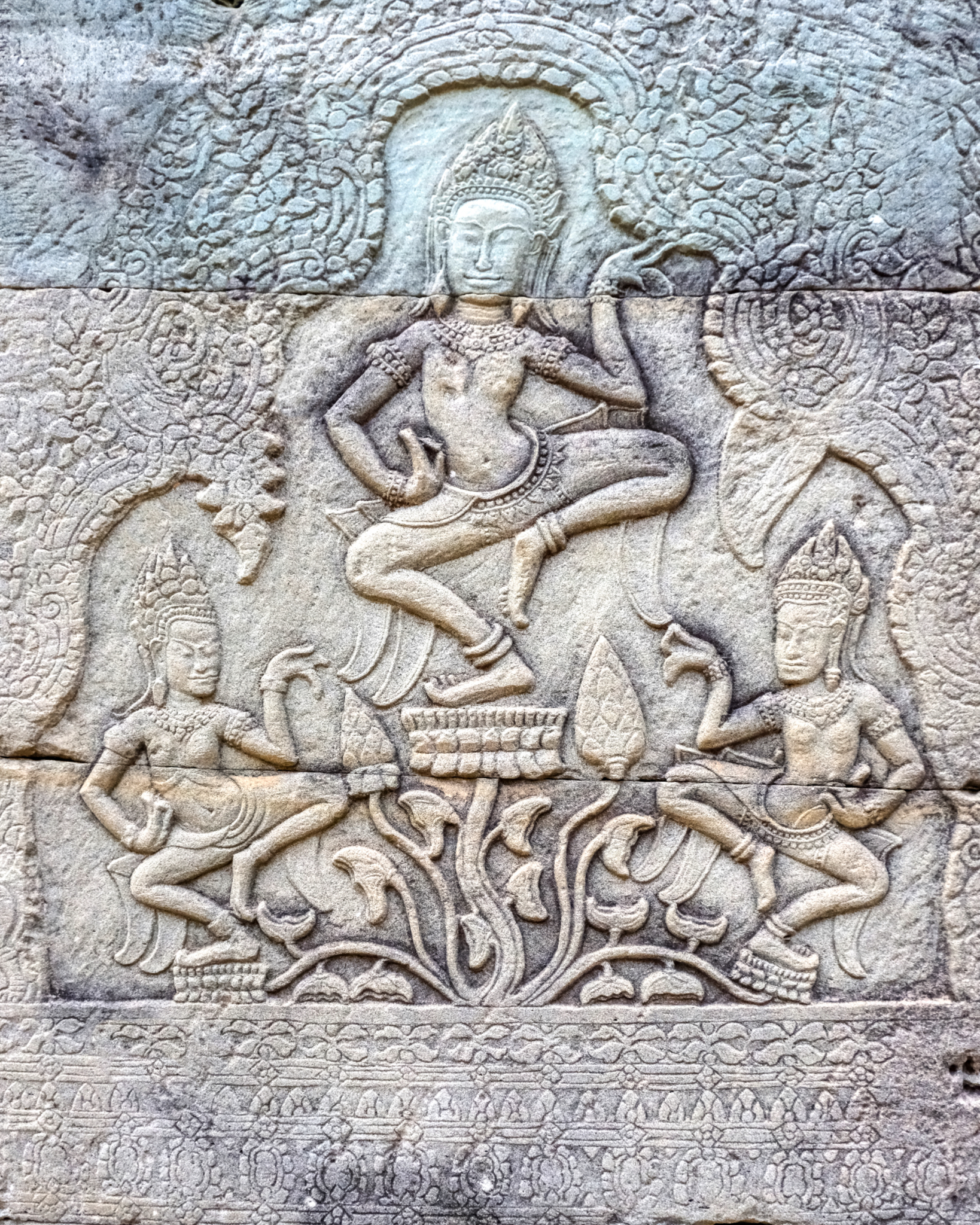 One of the columns' bas relief of a dancer.
One of the columns' bas relief of a dancer.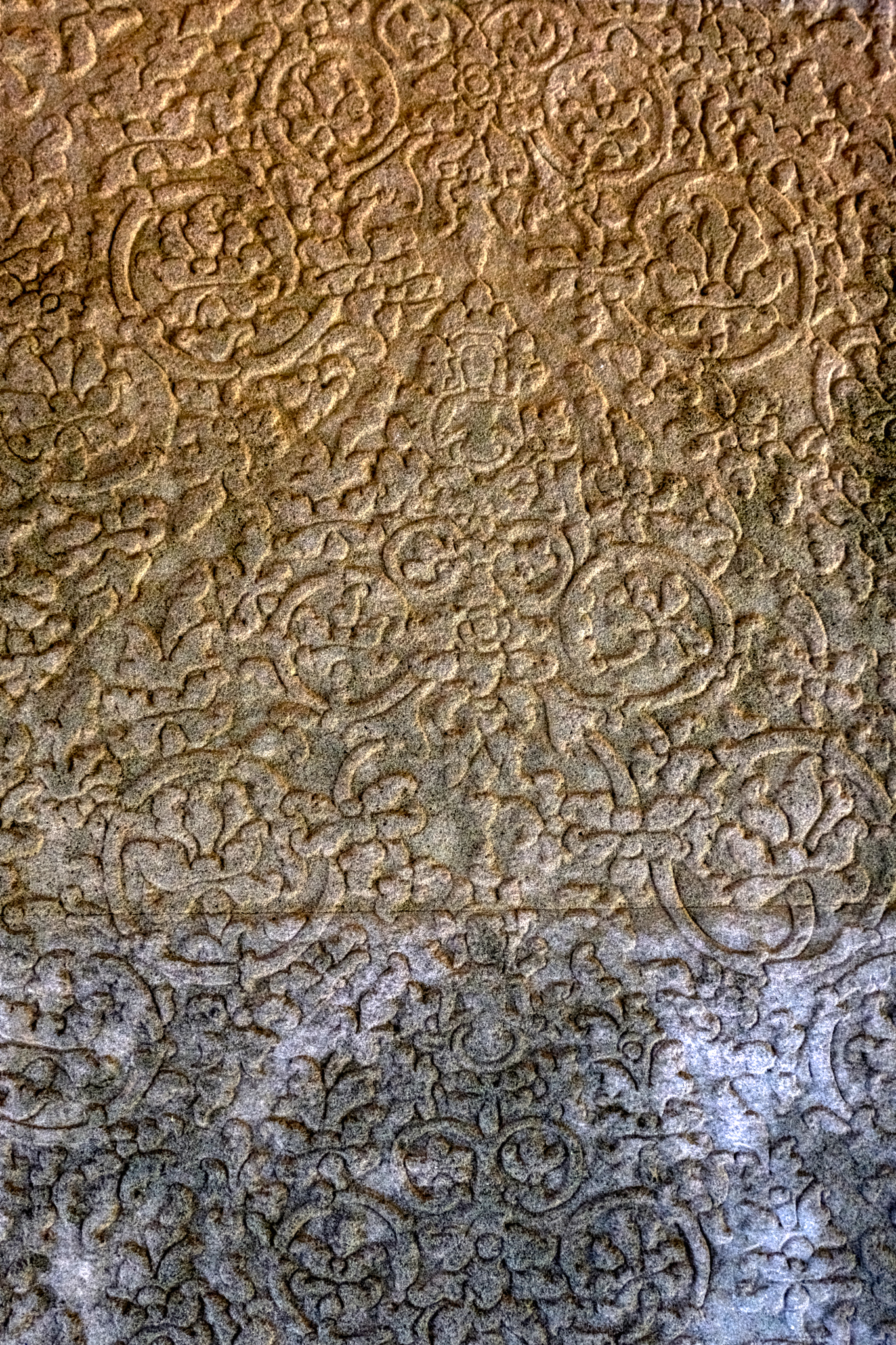 Almost every surface of this temple was incised with these marvelous patterns.
Almost every surface of this temple was incised with these marvelous patterns.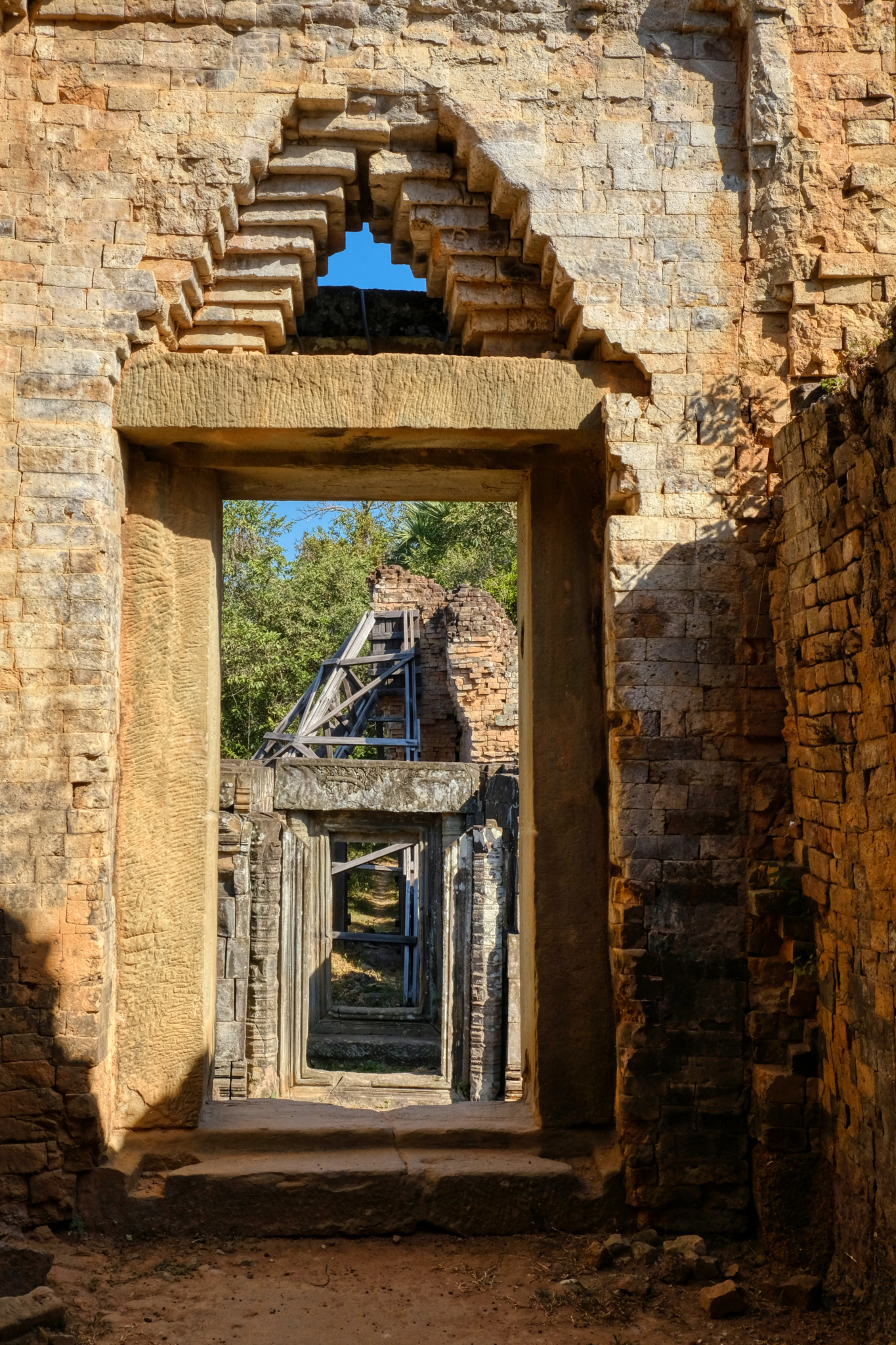 We wandered around this small temple for only 15 minutes before heading out with the driver again. I must go back!!!
We wandered around this small temple for only 15 minutes before heading out with the driver again. I must go back!!!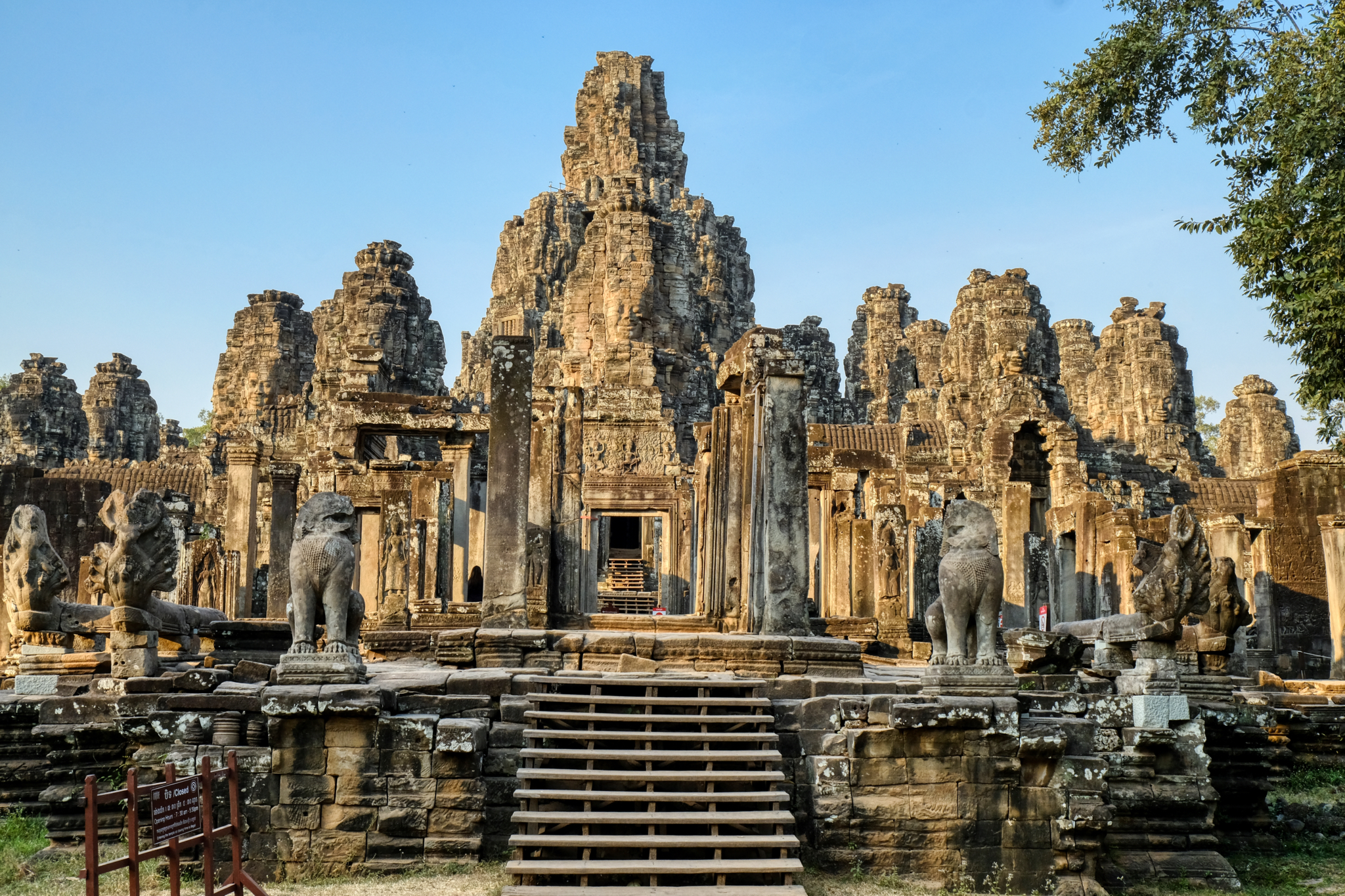 Another roadside temple . . . this photograph taken out of the window of the car. No time to explore it.
Another roadside temple . . . this photograph taken out of the window of the car. No time to explore it.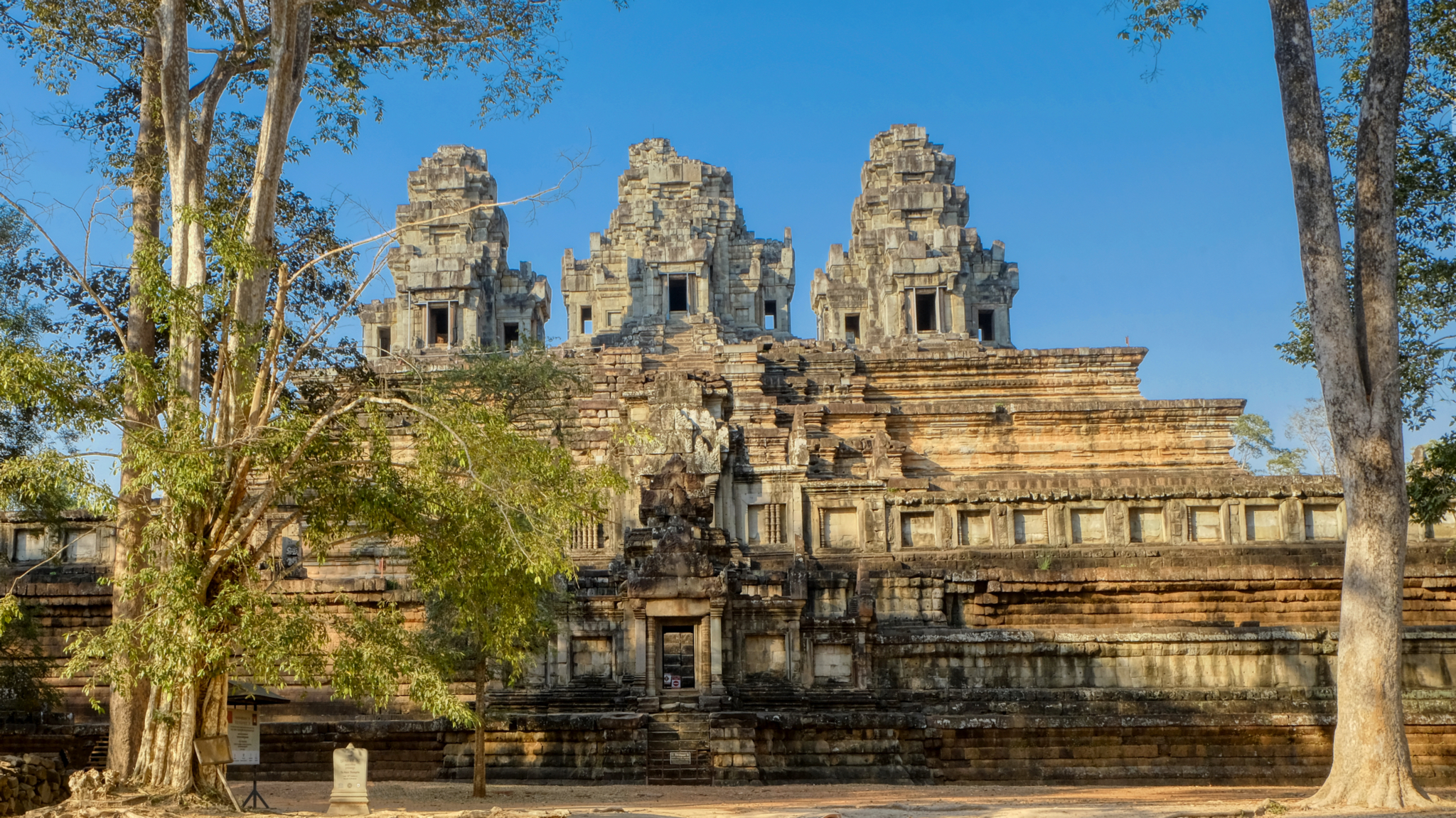 Yet another photo taken from the car of a temple not explored . . . I MUST come back!
Yet another photo taken from the car of a temple not explored . . . I MUST come back! A highlight of the day was the 'discovery' of the halls of carved stone concubines at a place called the elephant race track.
A highlight of the day was the 'discovery' of the halls of carved stone concubines at a place called the elephant race track.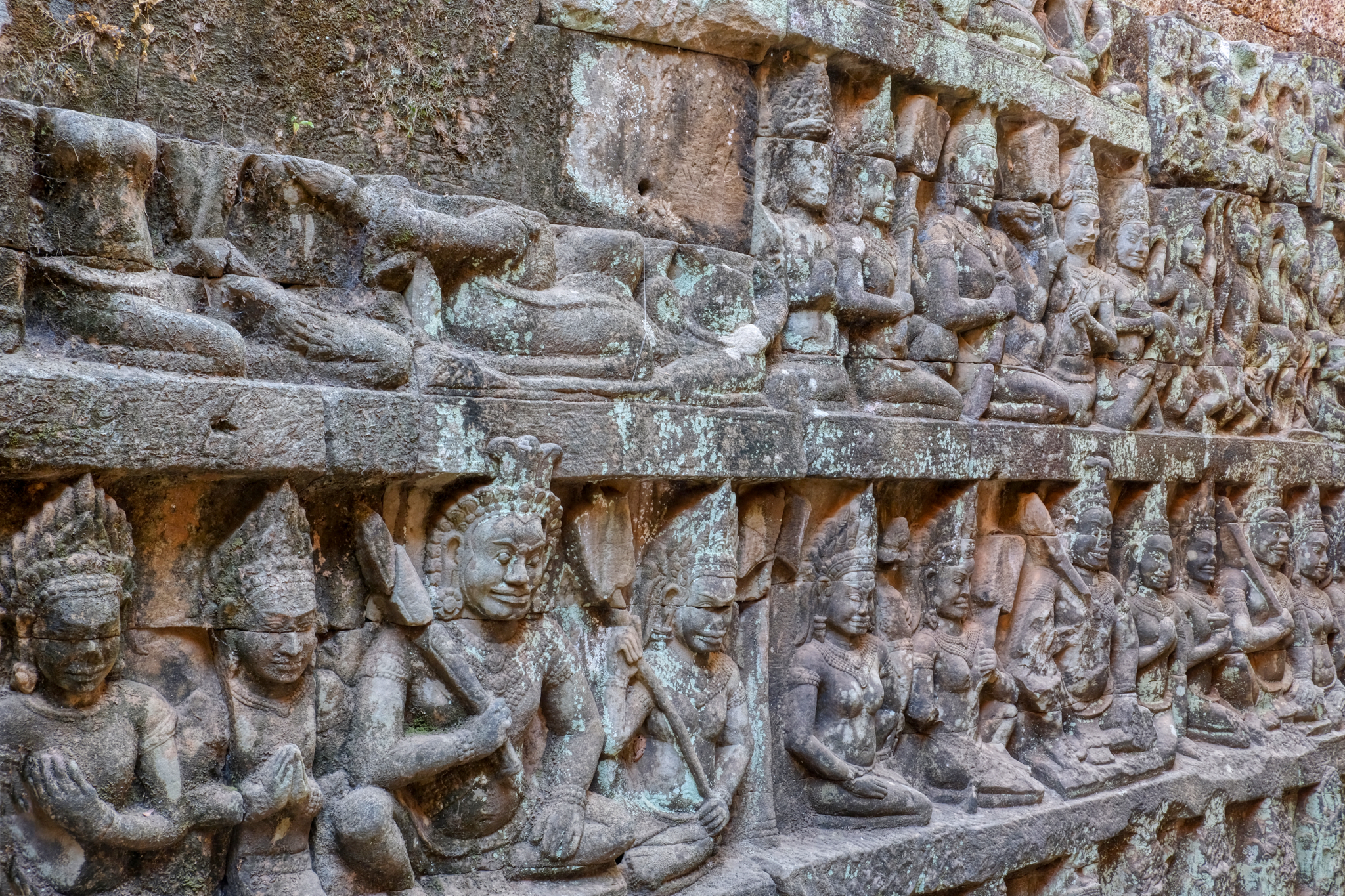 Hundreds and hundreds of individuals represented in stone.
Hundreds and hundreds of individuals represented in stone.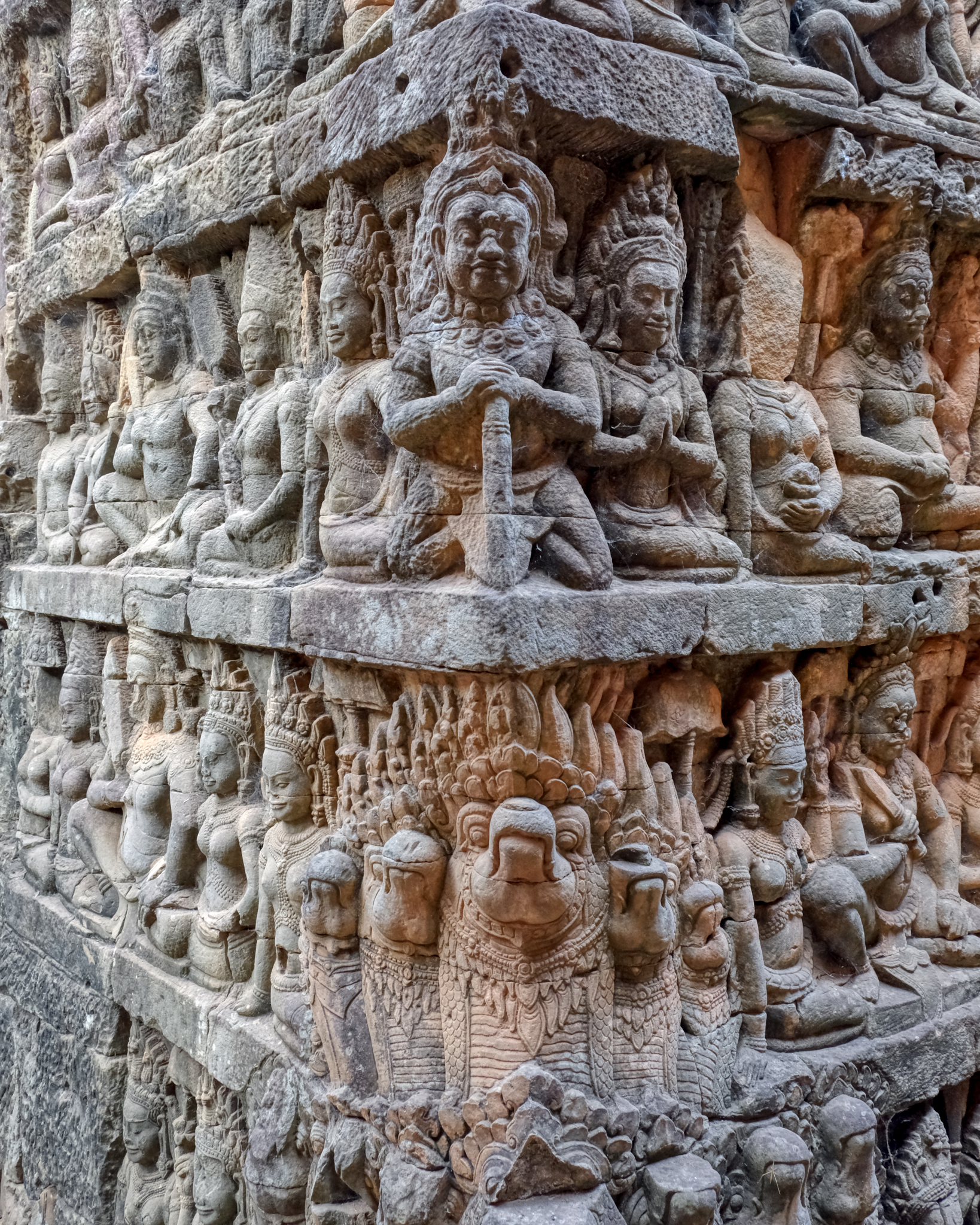 An incredible archeological find.
An incredible archeological find.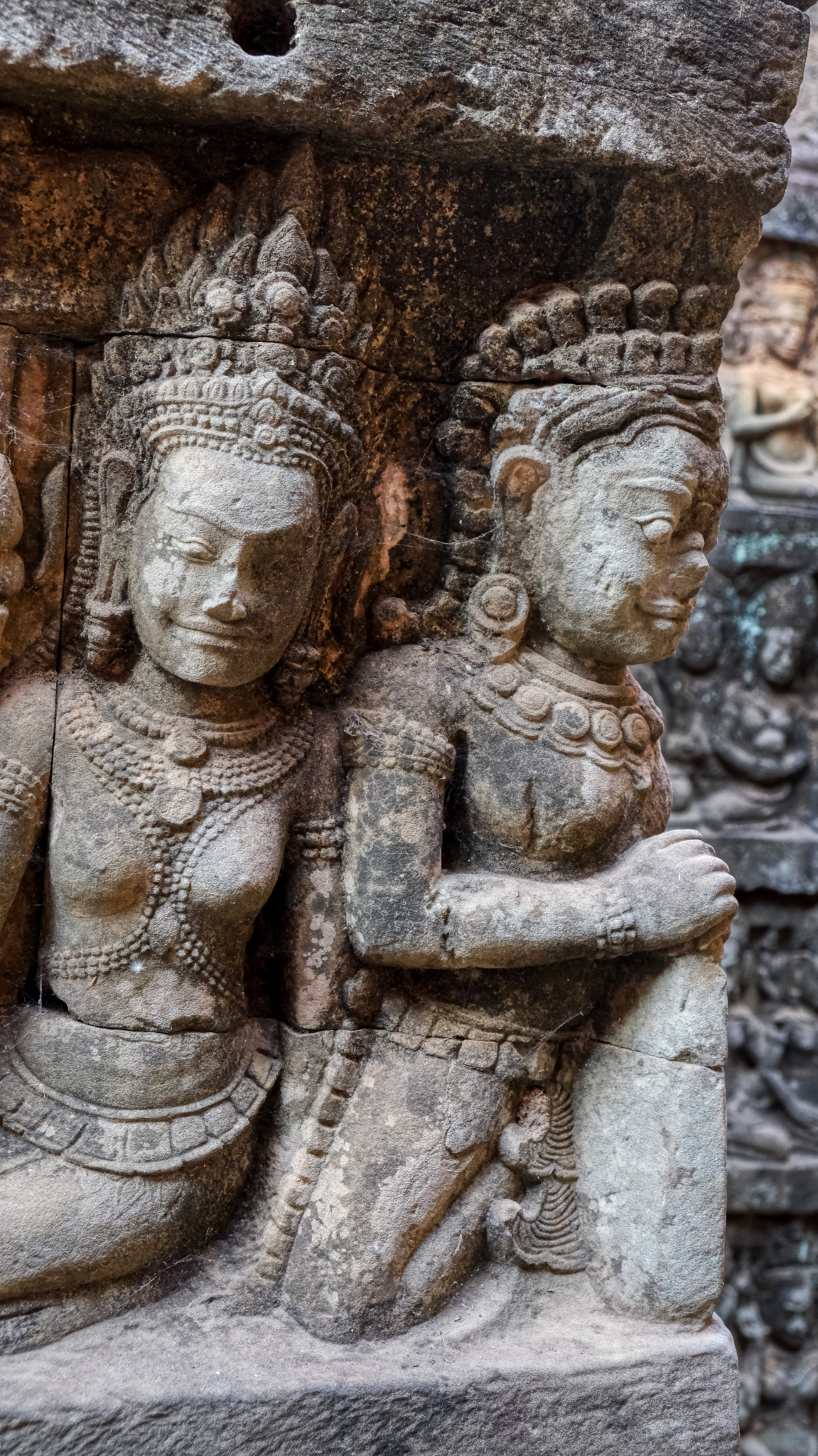 Great detail.
Great detail.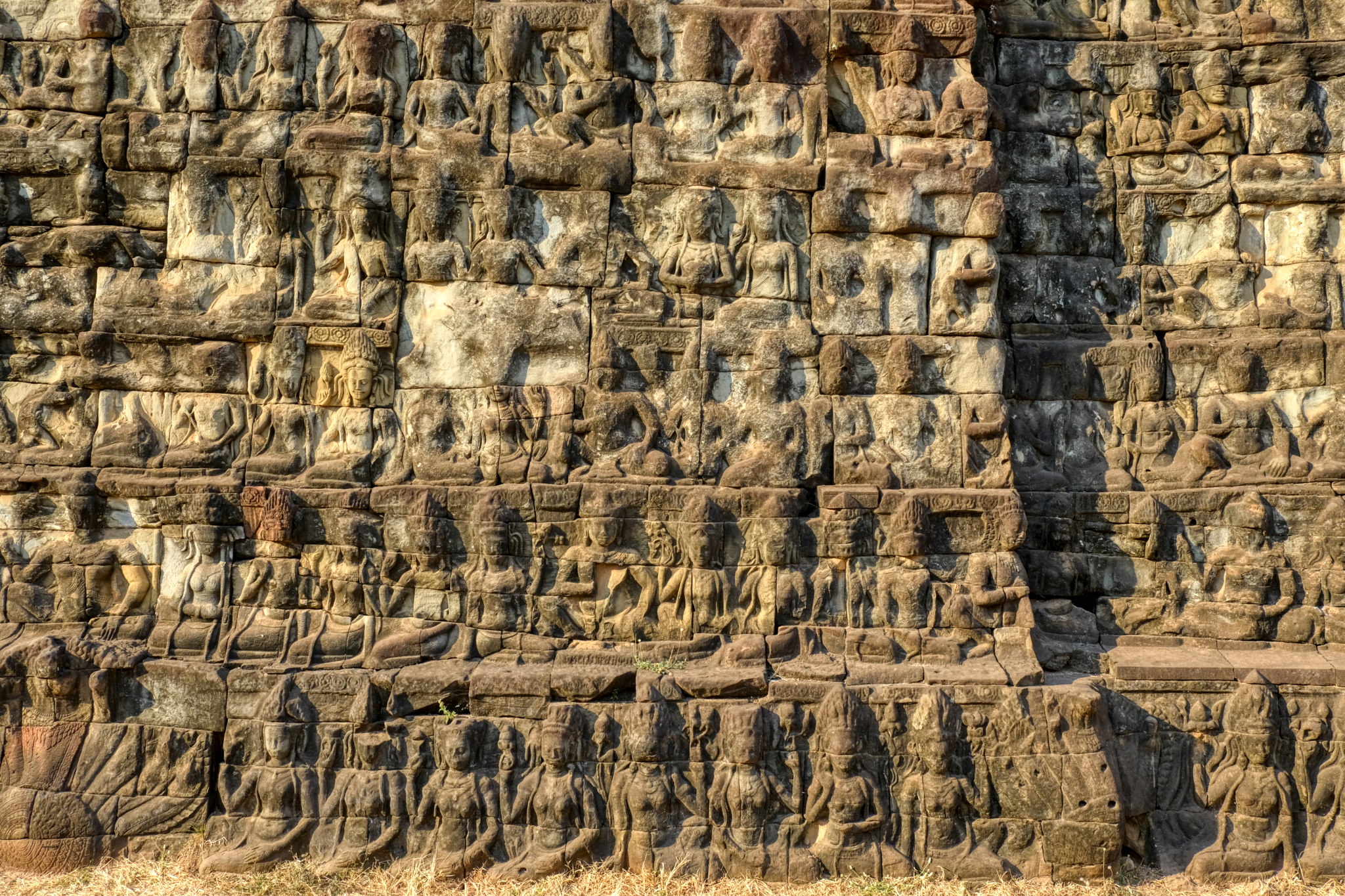 Another wall of concubines in the late sunlight.
Another wall of concubines in the late sunlight.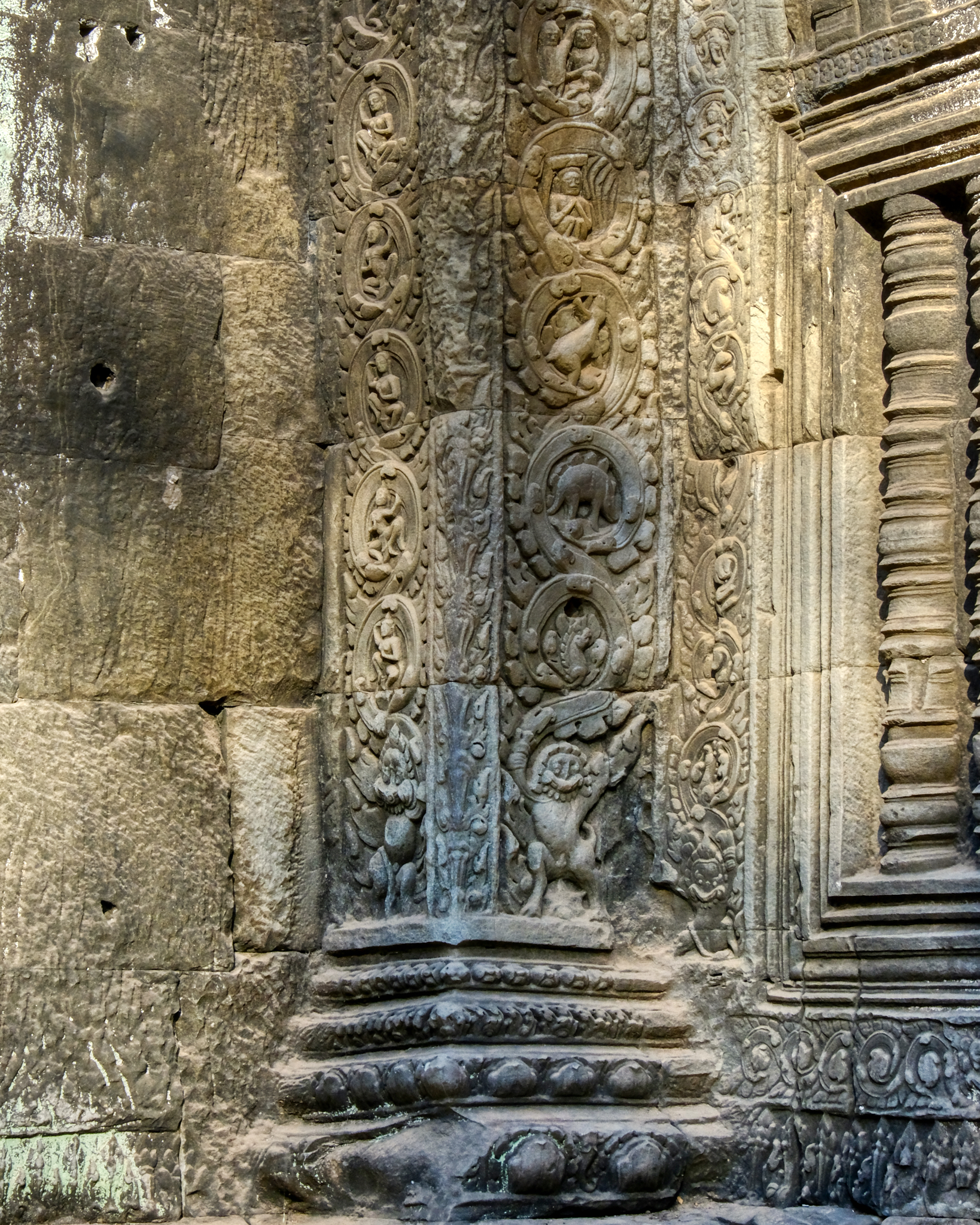 This corner panel has stumped archaeologists for a hundred years. See if you can spot the carved stegosaurus (3rd one up from the bottom on right). . . . they didn't know about the dinosaurs at that time!
This corner panel has stumped archaeologists for a hundred years. See if you can spot the carved stegosaurus (3rd one up from the bottom on right). . . . they didn't know about the dinosaurs at that time!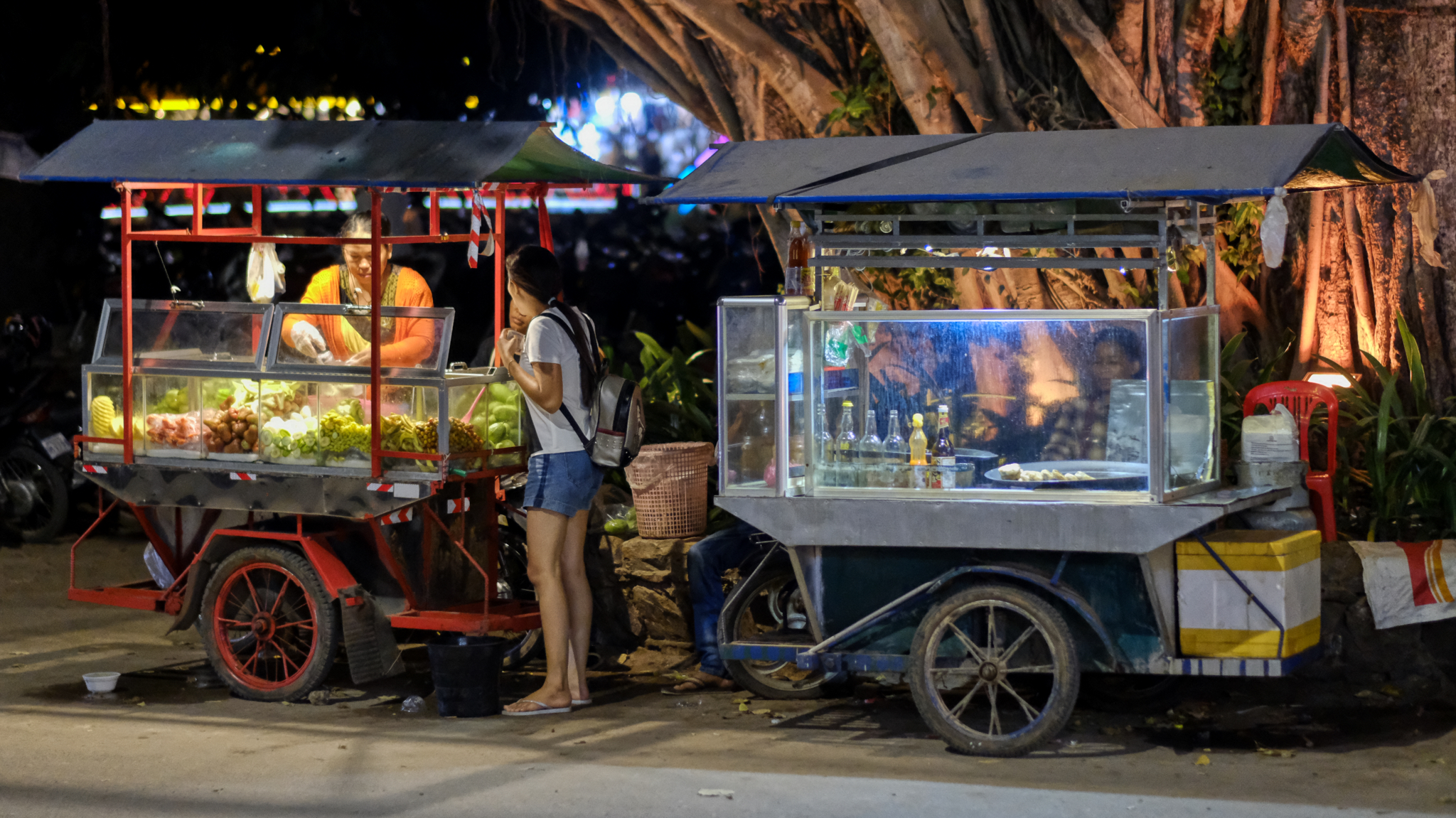 We stayed at the nearby town of Siem Reap. Although it was filling up with tourists (before the Covid-19 scare), it was a pleasant and vibrant little place with good restaurants and good shopping.
We stayed at the nearby town of Siem Reap. Although it was filling up with tourists (before the Covid-19 scare), it was a pleasant and vibrant little place with good restaurants and good shopping.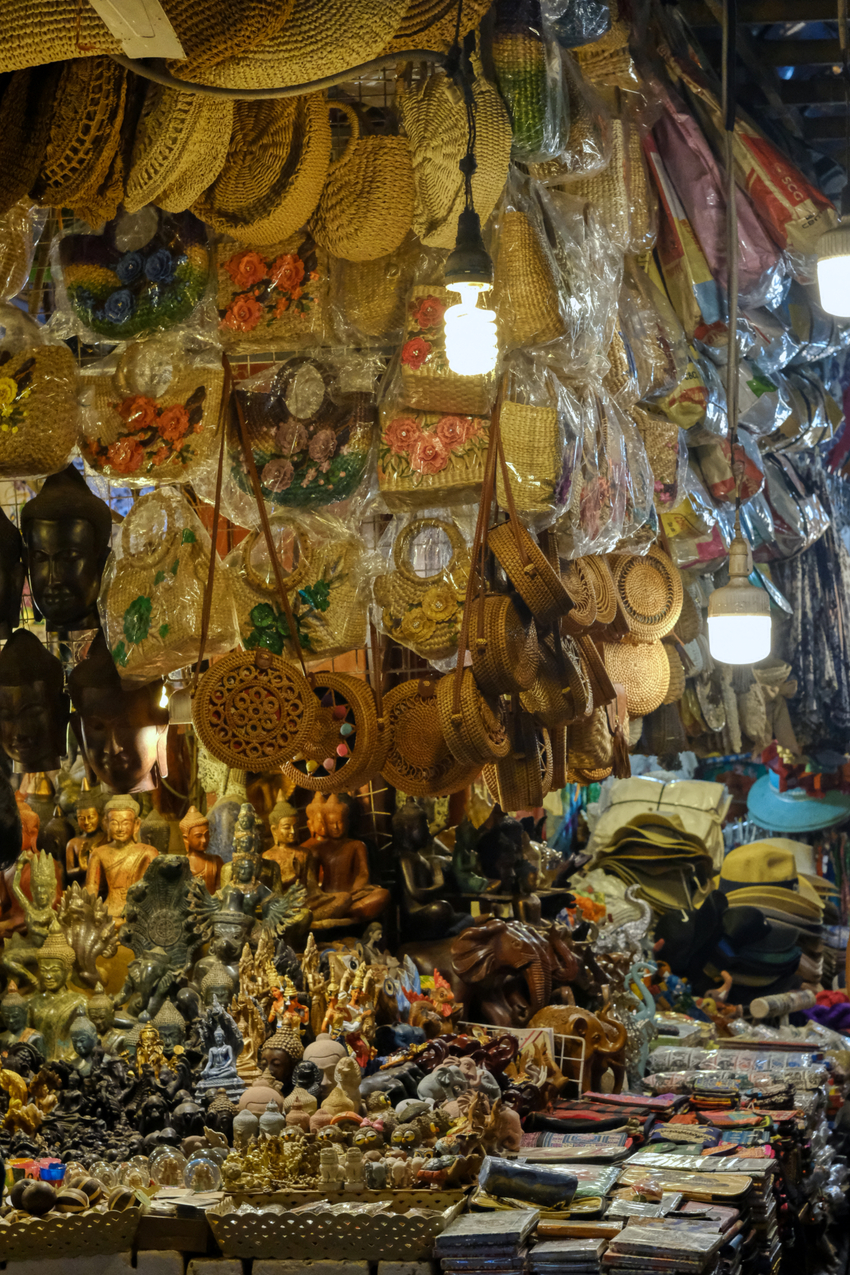 There was an extensive 'night market' stuffed with tourist curios . . . and some very nice things too.
There was an extensive 'night market' stuffed with tourist curios . . . and some very nice things too.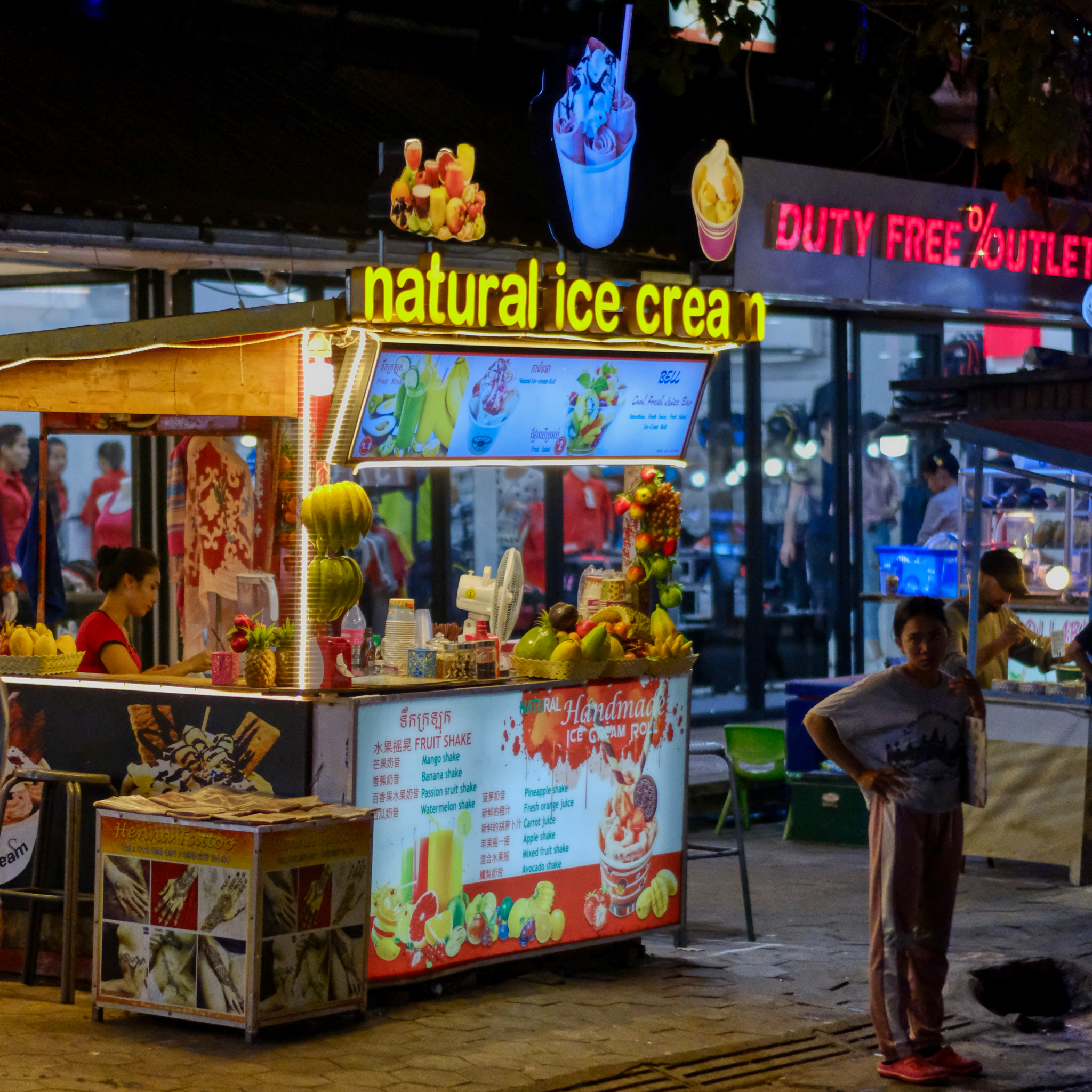 Yes, everything an international tourist might want on a hot Cambodian night.
Yes, everything an international tourist might want on a hot Cambodian night.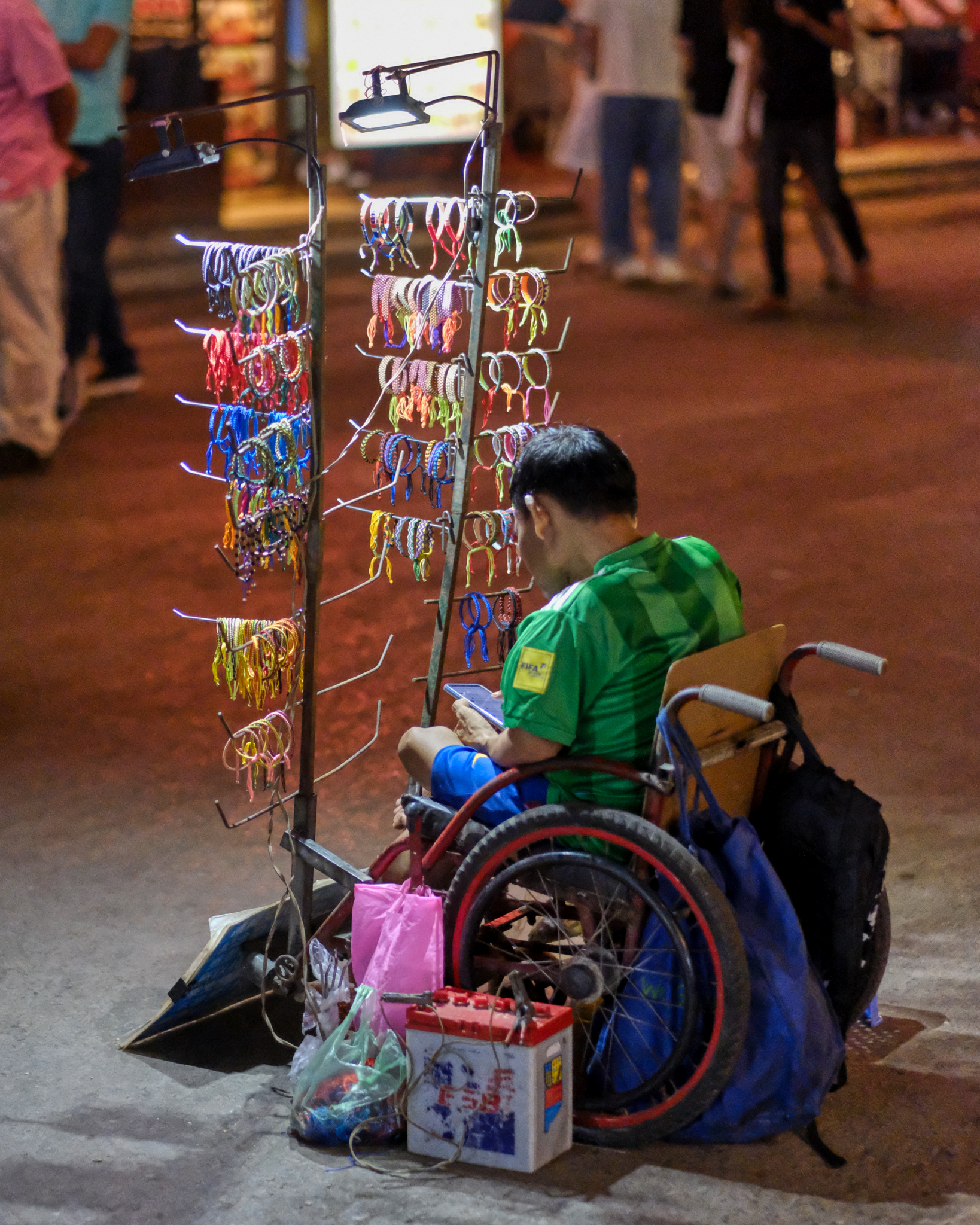 I bought some bracelets from this hard working guy.
I bought some bracelets from this hard working guy.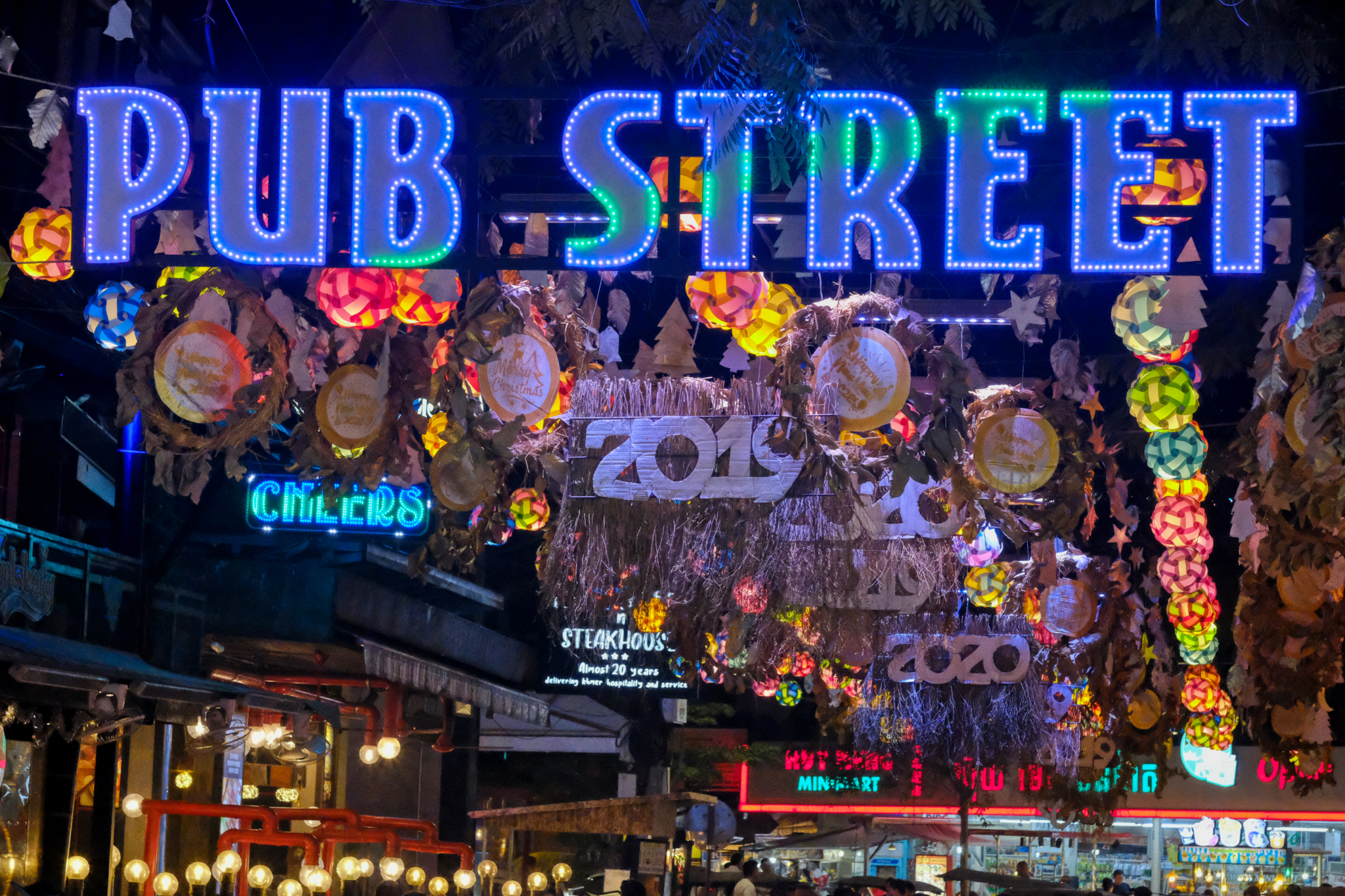 We had a feeling we were not the first tourists to have visited Siem Reap. Pub Street was a lively place.
We had a feeling we were not the first tourists to have visited Siem Reap. Pub Street was a lively place.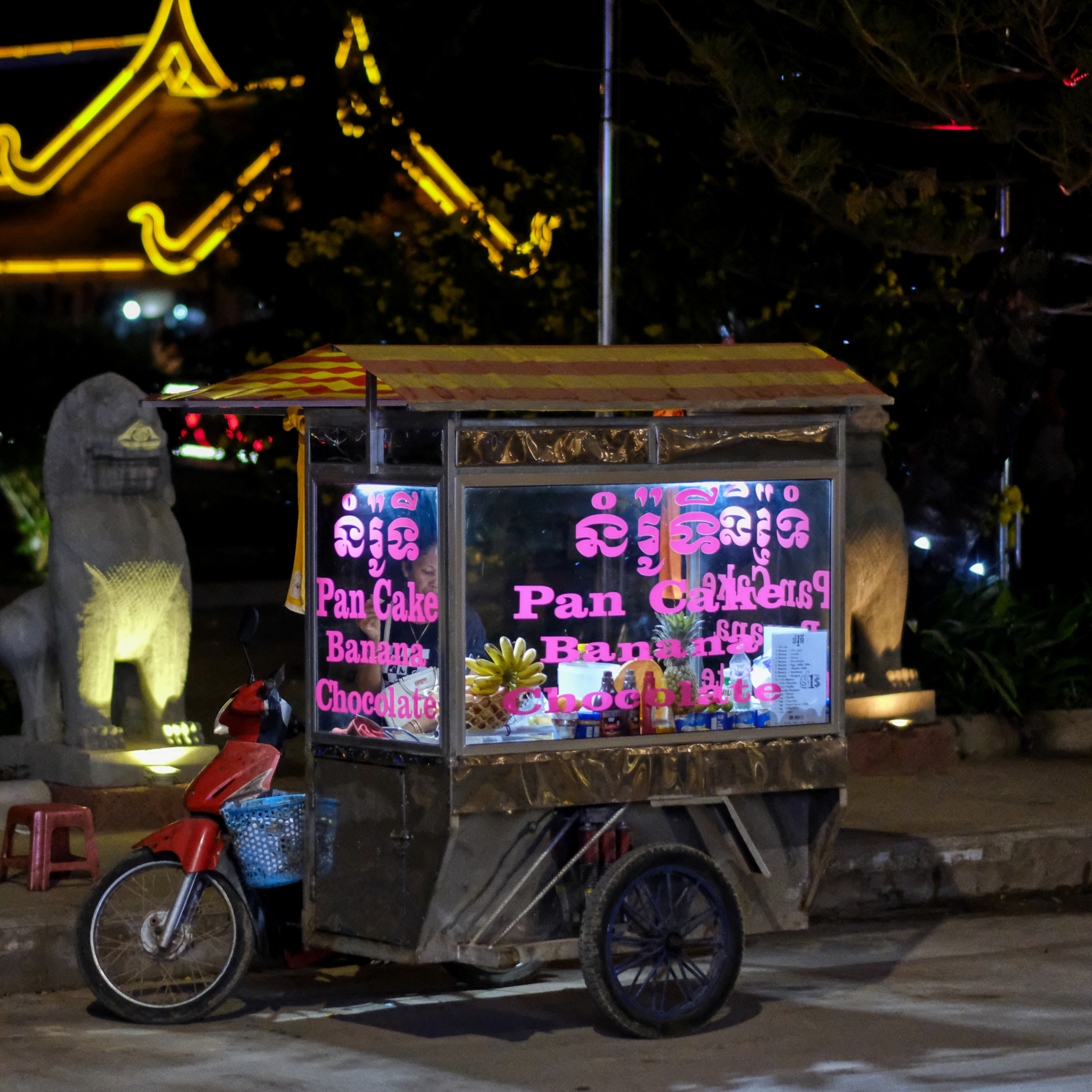 This cart reminded me of the movie Groundhog Day . . . "Hey, who wants some flapjacks?"
This cart reminded me of the movie Groundhog Day . . . "Hey, who wants some flapjacks?"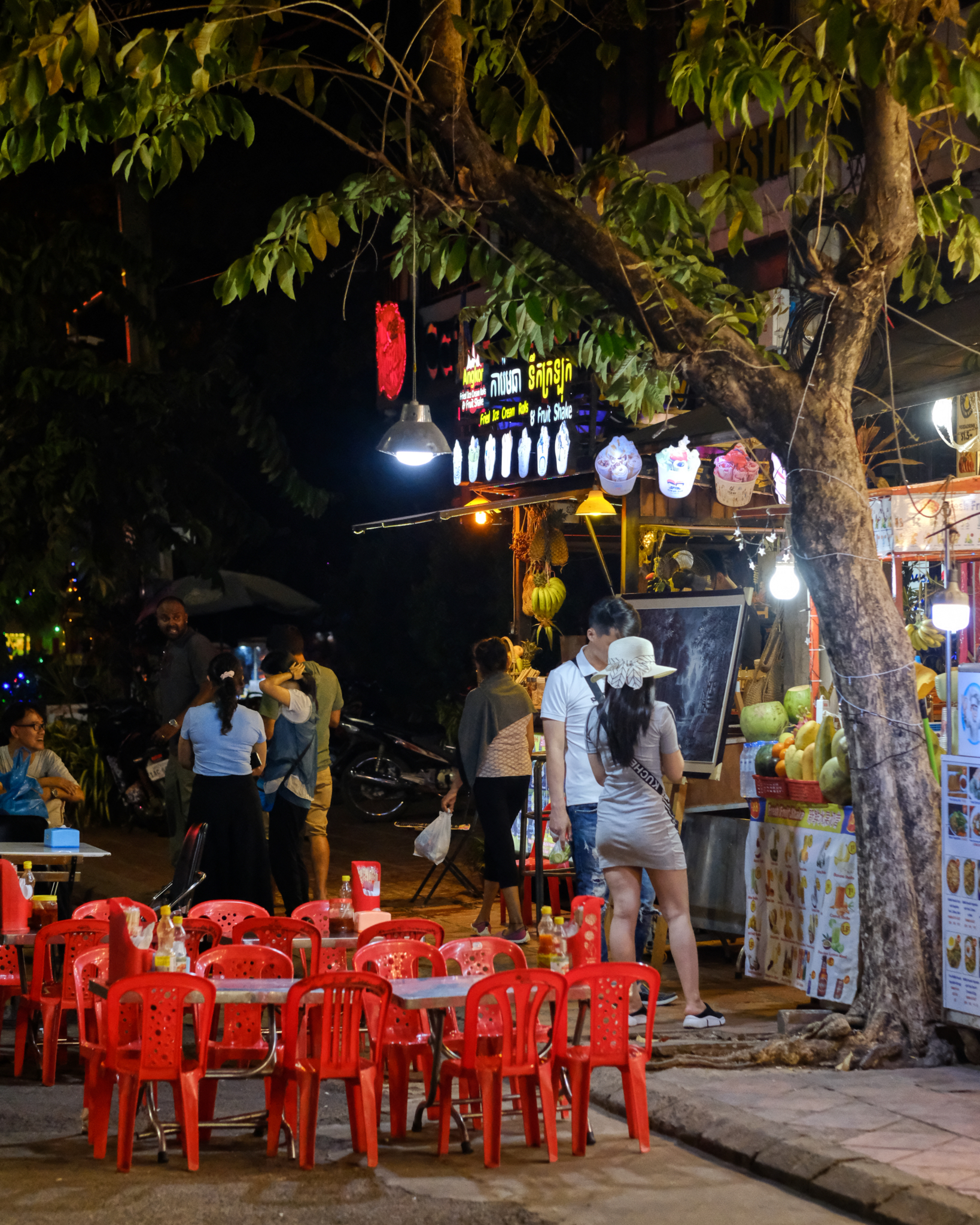 Lots of small street eateries. This was in the middle of the tourist season, mid-January, and it was not as crowded as I would have thought.
Lots of small street eateries. This was in the middle of the tourist season, mid-January, and it was not as crowded as I would have thought.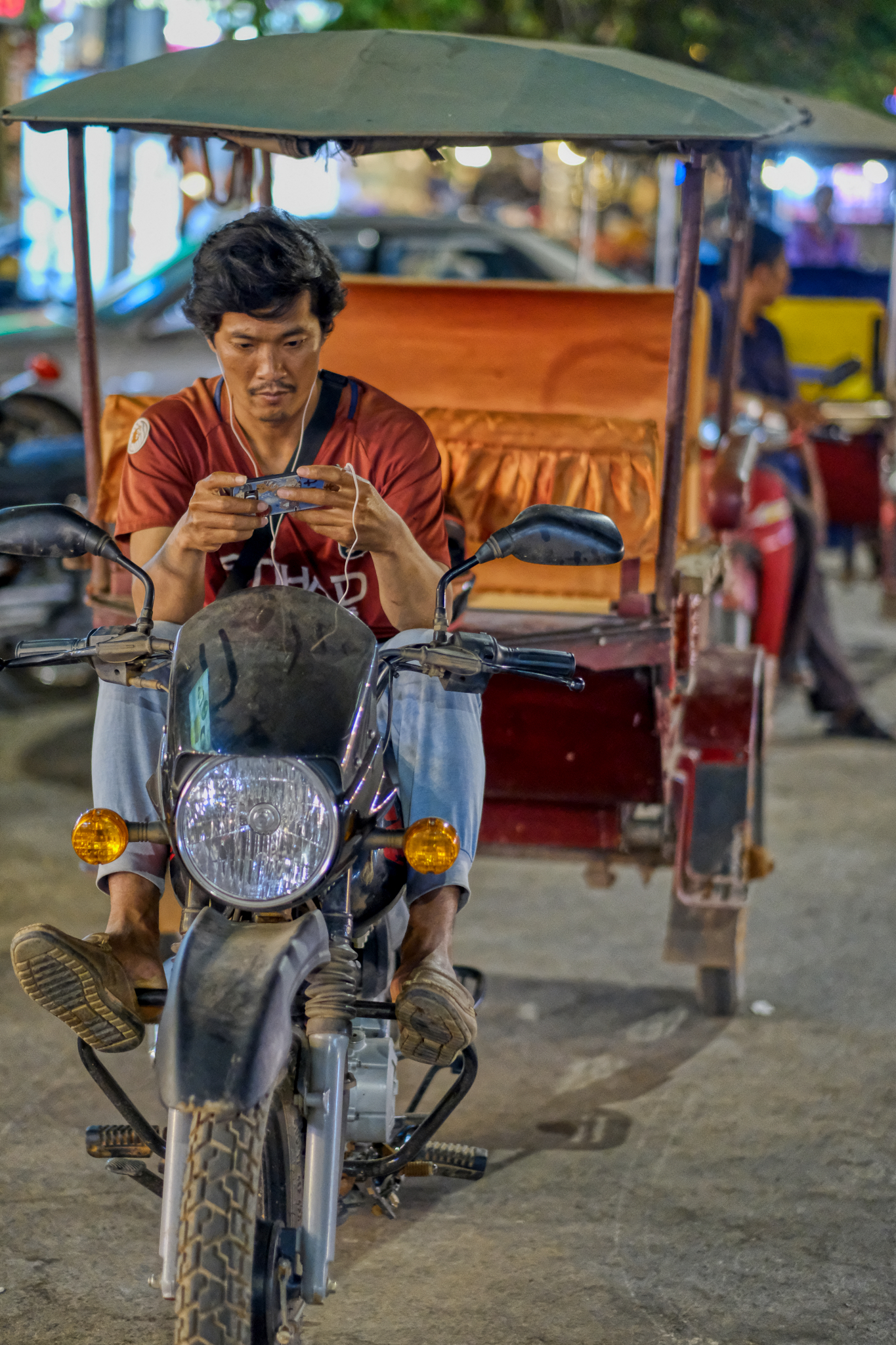 The modern tuk-tuk driver is hooked into the world and its events.
The modern tuk-tuk driver is hooked into the world and its events.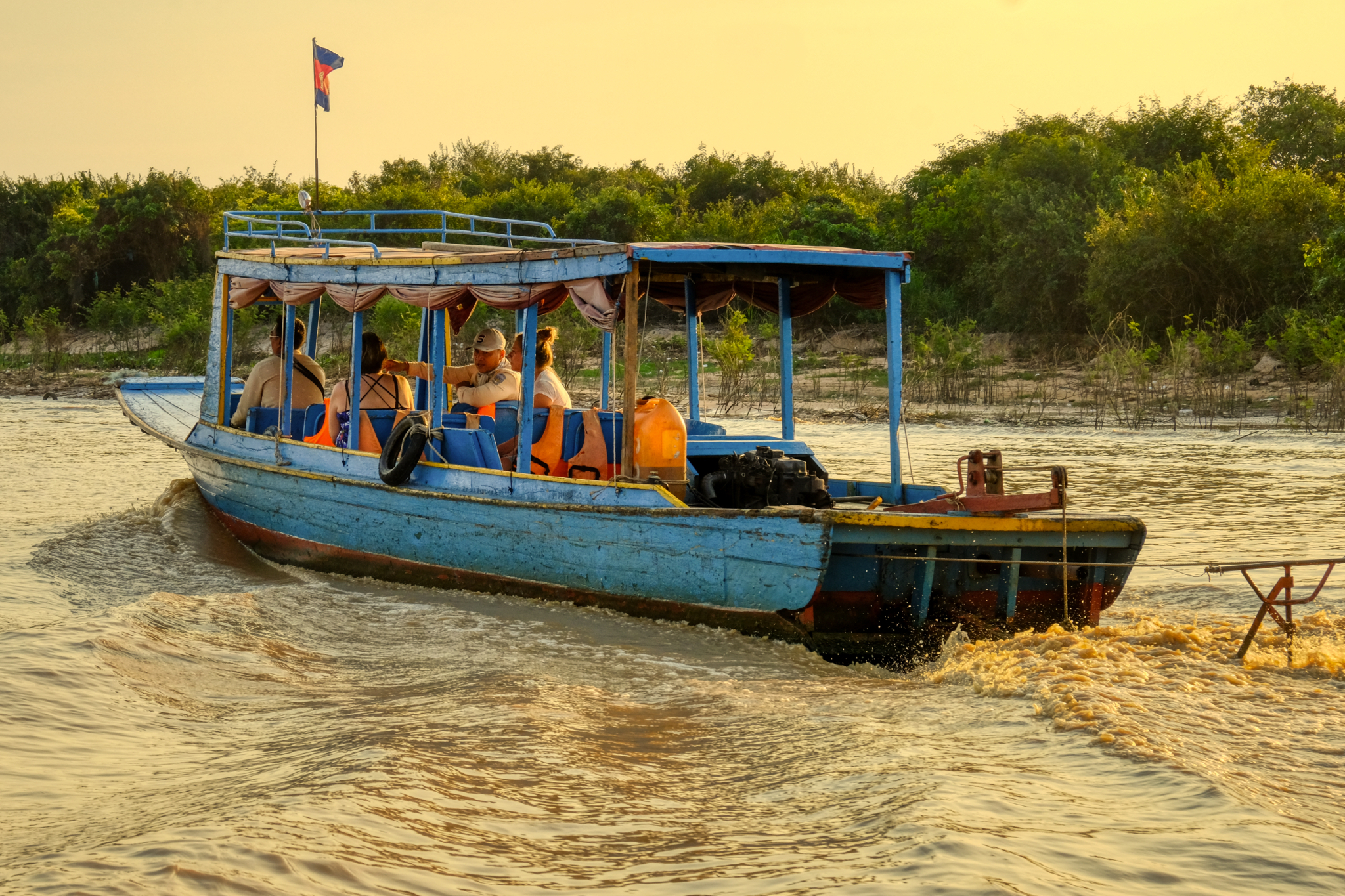 Our driver insisted that we all go out to the lake and take a boat on the water to see the sunset. We were sure it was just a tourist trap, but we relented. There were hundreds of small boats full of tourists. We got one and headed out.
Our driver insisted that we all go out to the lake and take a boat on the water to see the sunset. We were sure it was just a tourist trap, but we relented. There were hundreds of small boats full of tourists. We got one and headed out.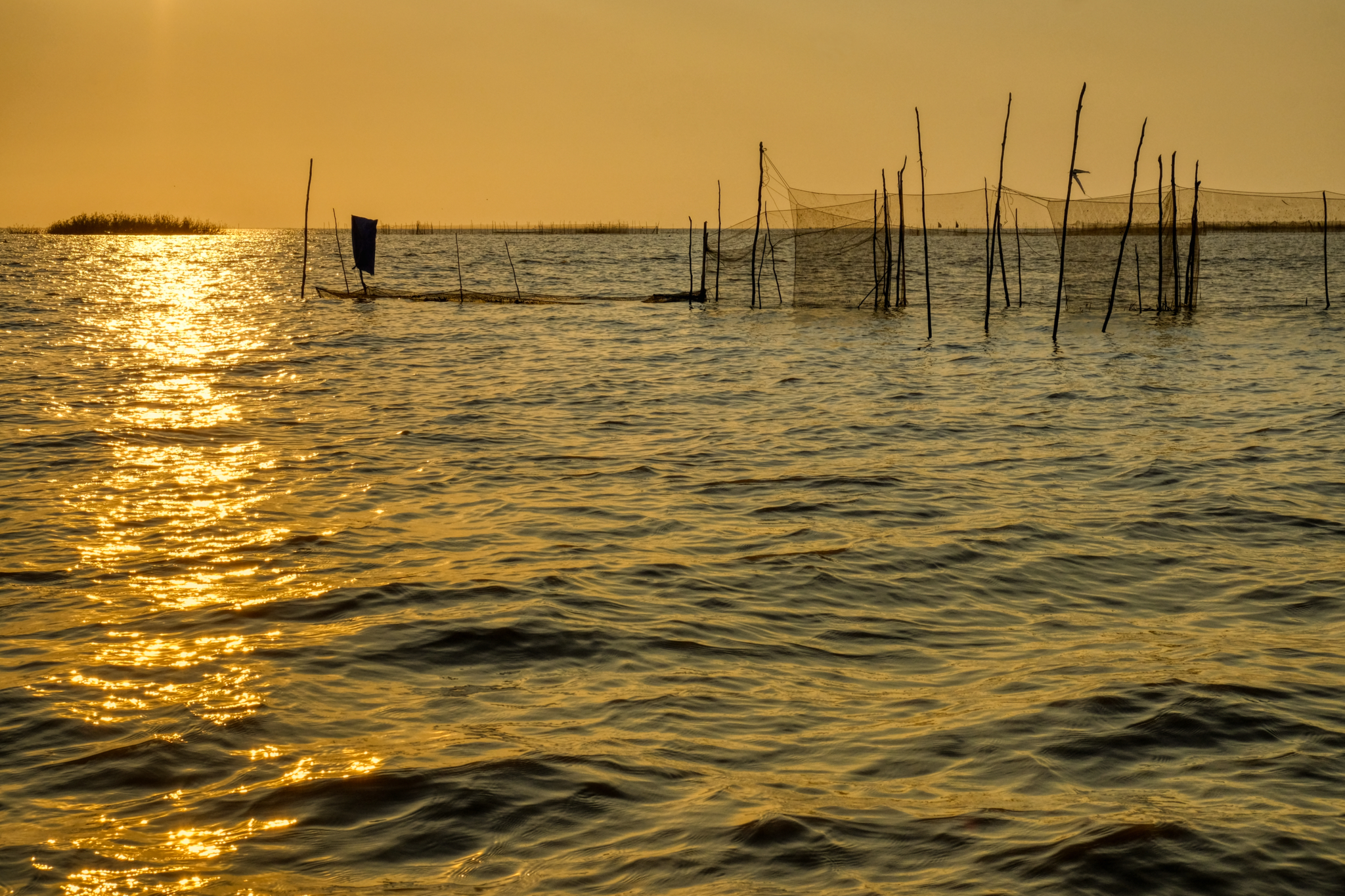 The ride out to the lake was spectacular. We were very happy we had taken the trip.
The ride out to the lake was spectacular. We were very happy we had taken the trip.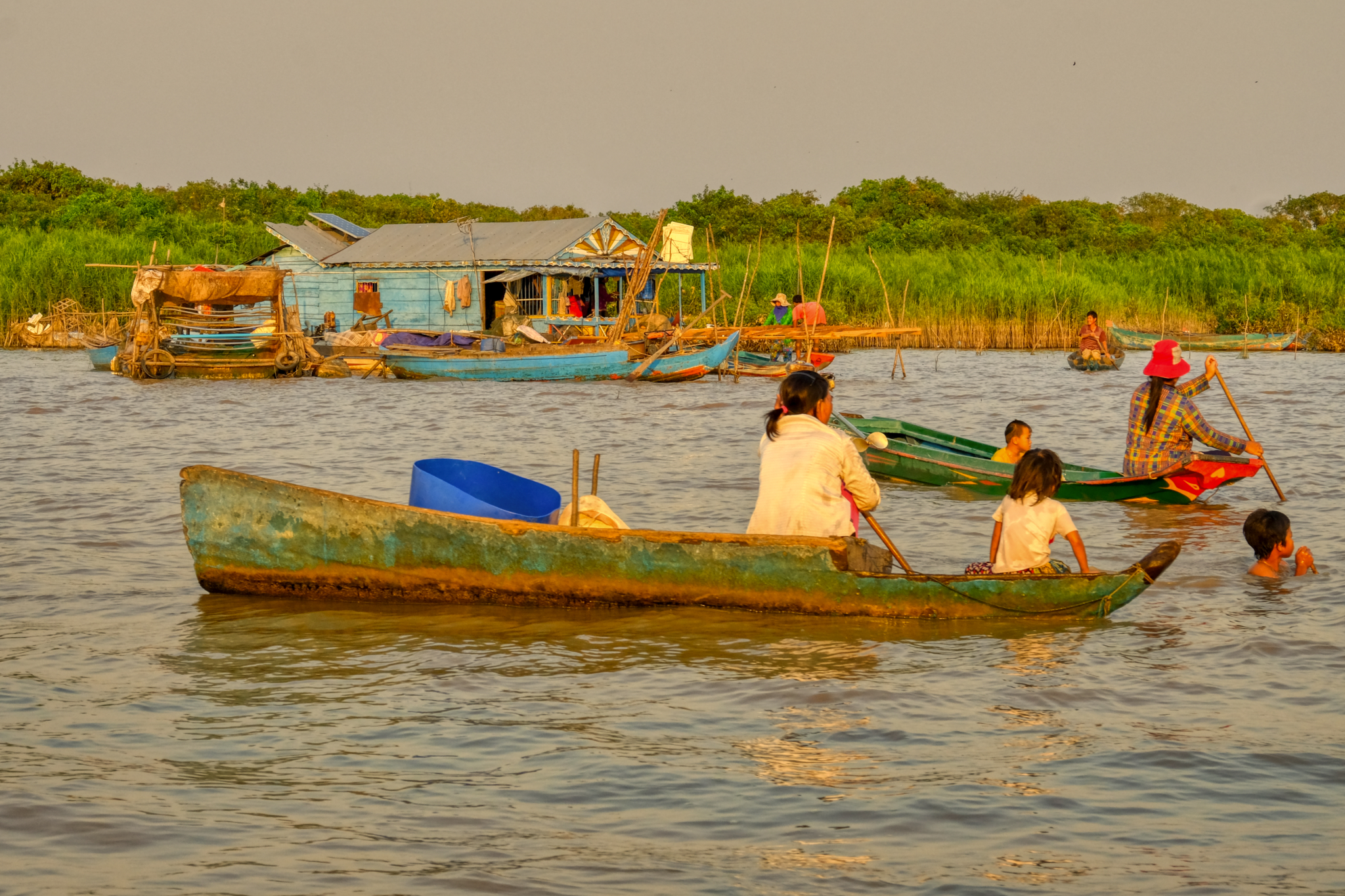 We passed through a floating village along the way. The boatman told us that this village moves with the rising and falling of the lake.
We passed through a floating village along the way. The boatman told us that this village moves with the rising and falling of the lake.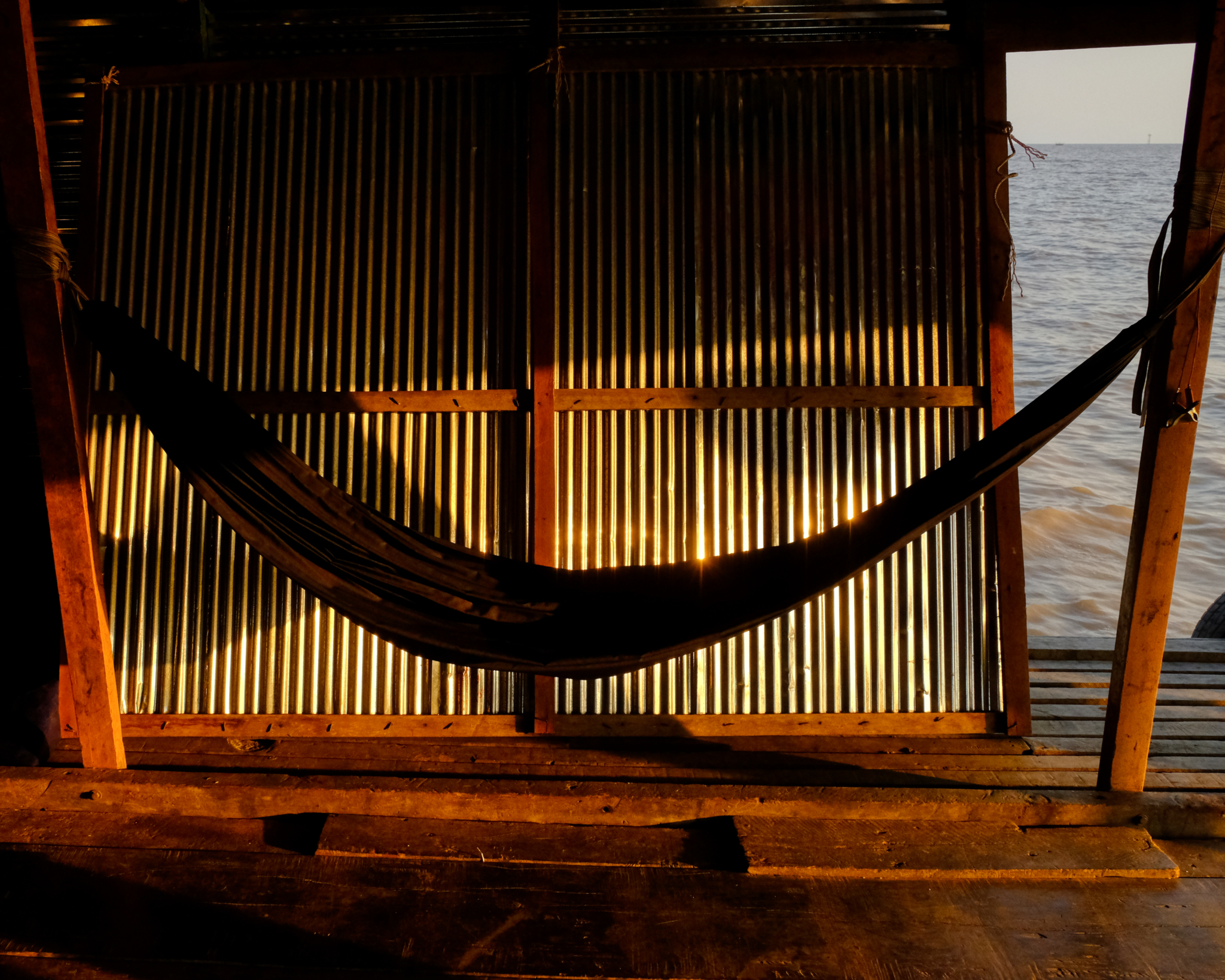 We stopped off at one of the floating shacks.
We stopped off at one of the floating shacks.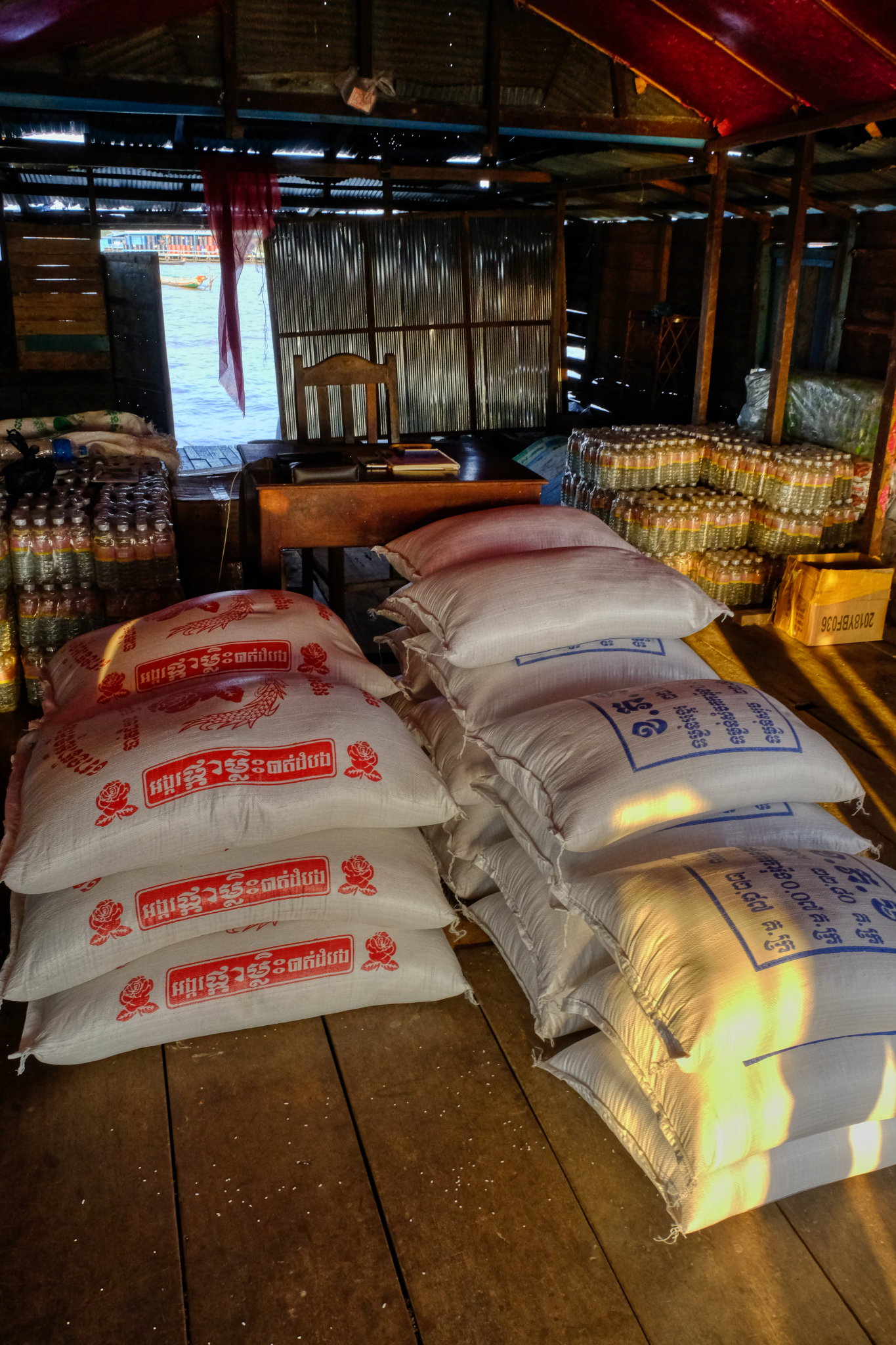 The boatman said these villagers were very poor. He asked if we would like to make a donation of rice to the local floating school. We were happy to help. For a few dollars we bought four sacks of rice and delivered them to this school:
The boatman said these villagers were very poor. He asked if we would like to make a donation of rice to the local floating school. We were happy to help. For a few dollars we bought four sacks of rice and delivered them to this school: This is the floating school. We stopped here to unload the rice.
This is the floating school. We stopped here to unload the rice.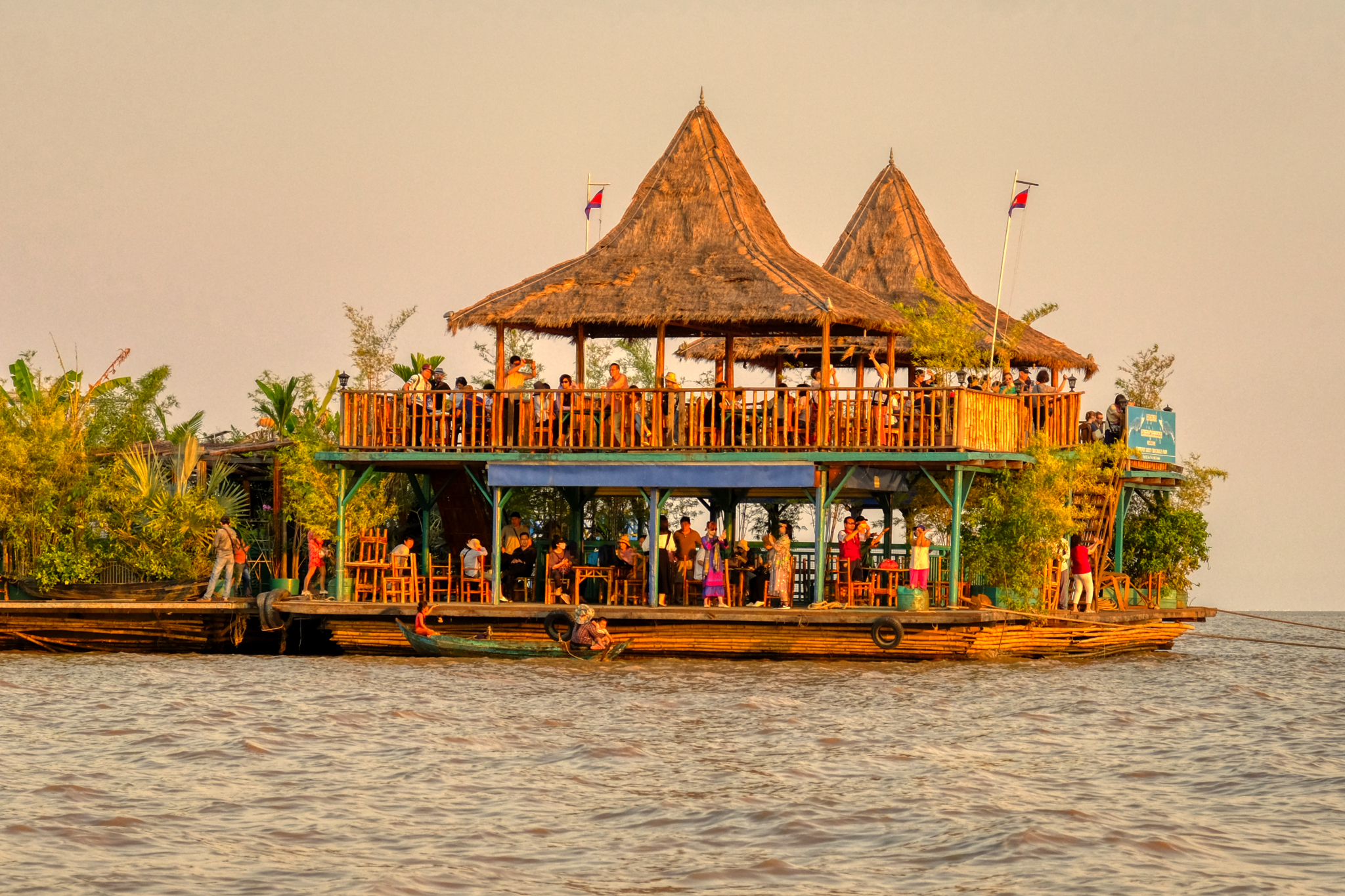 There were several of these large sunset viewing rafts out a mile or so from the shore of the lake . . . full of tourists like us.
There were several of these large sunset viewing rafts out a mile or so from the shore of the lake . . . full of tourists like us.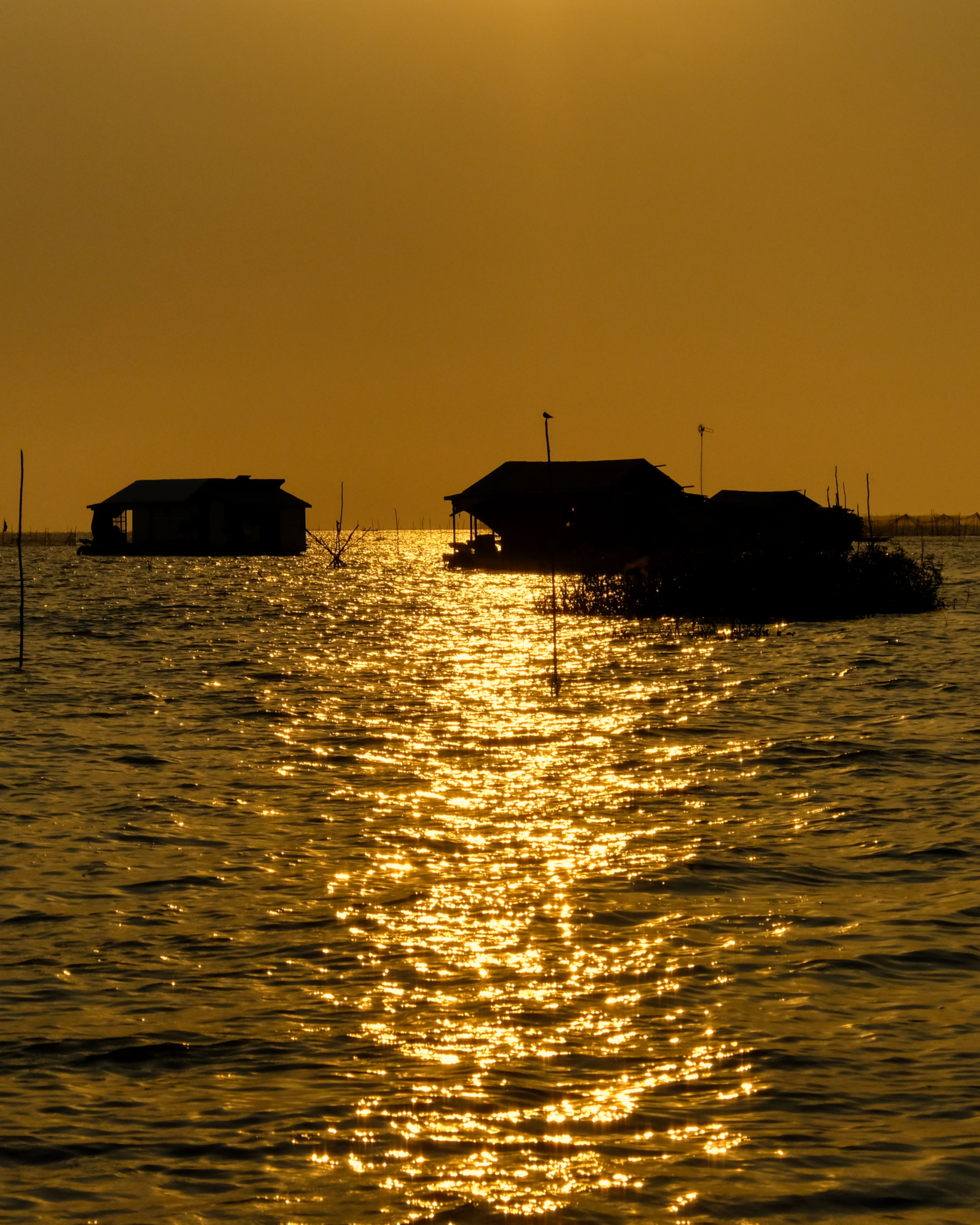 A beautiful trip out into the inland sea.
A beautiful trip out into the inland sea.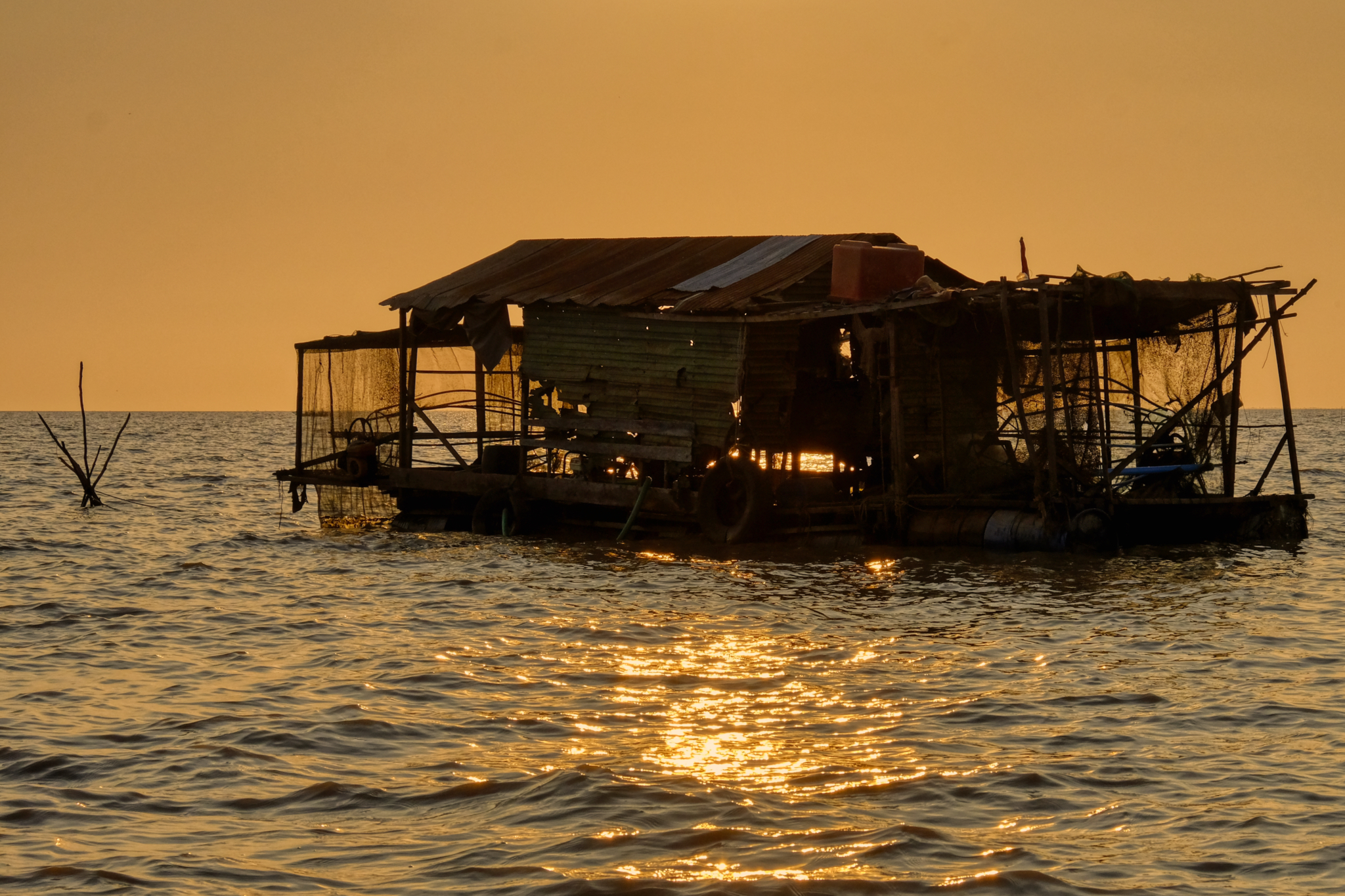 The villagers made their living fishing from their floating platforms.
The villagers made their living fishing from their floating platforms.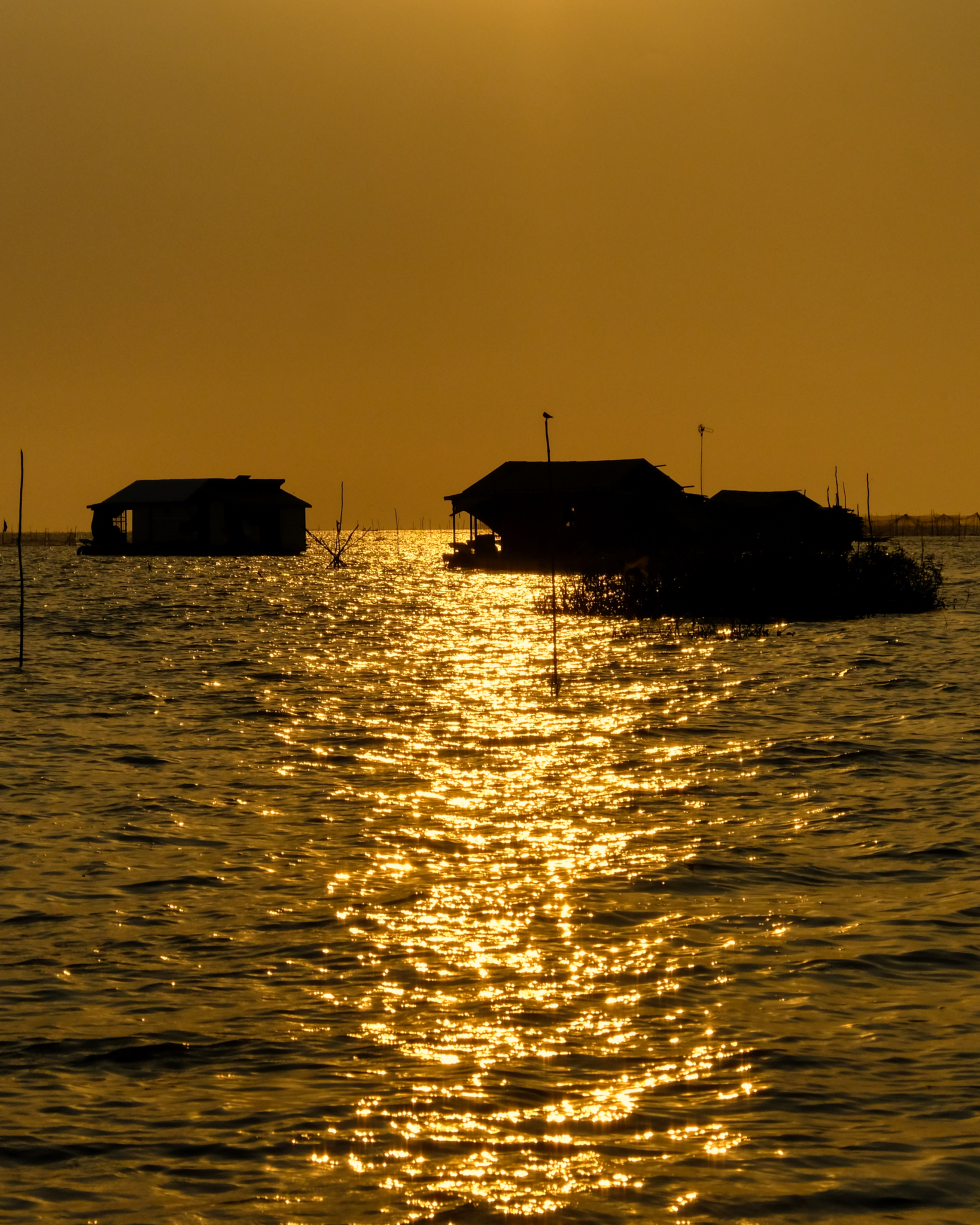 Village shacks in the amber sunset light.
Village shacks in the amber sunset light.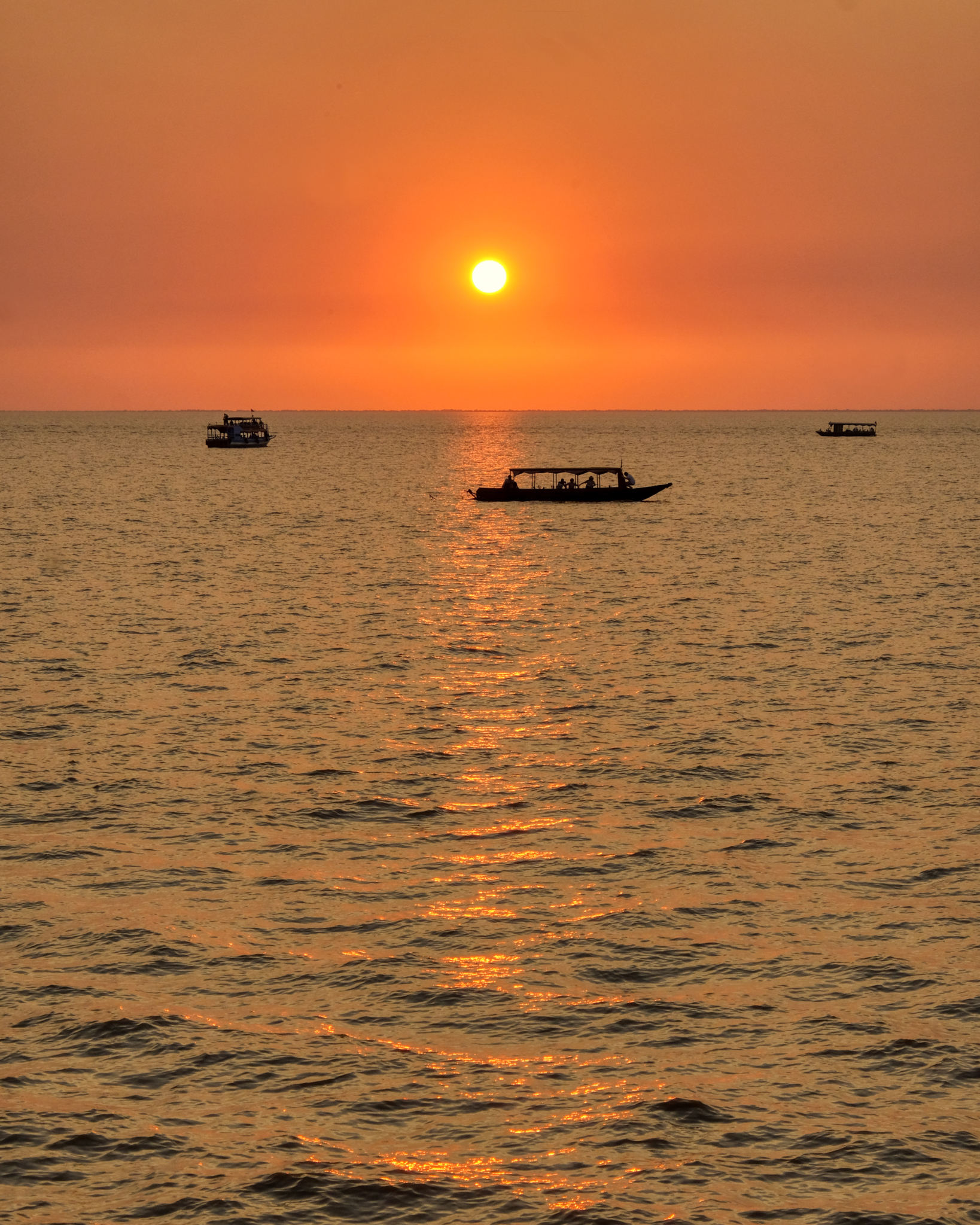 The view from our observation deck . . . boats in the setting sun.
The view from our observation deck . . . boats in the setting sun. And the sun set over our Angkor Wat vacation. A wonderful four days. If you go to see Angkor Wat, I highly recommend the sunset boat trip . . . .
And the sun set over our Angkor Wat vacation. A wonderful four days. If you go to see Angkor Wat, I highly recommend the sunset boat trip . . . .USA Road Trip: Driving the Oregon Coast to the California Redwoods
 Thursday, July 25, 2019 at 7:11PM
Thursday, July 25, 2019 at 7:11PM 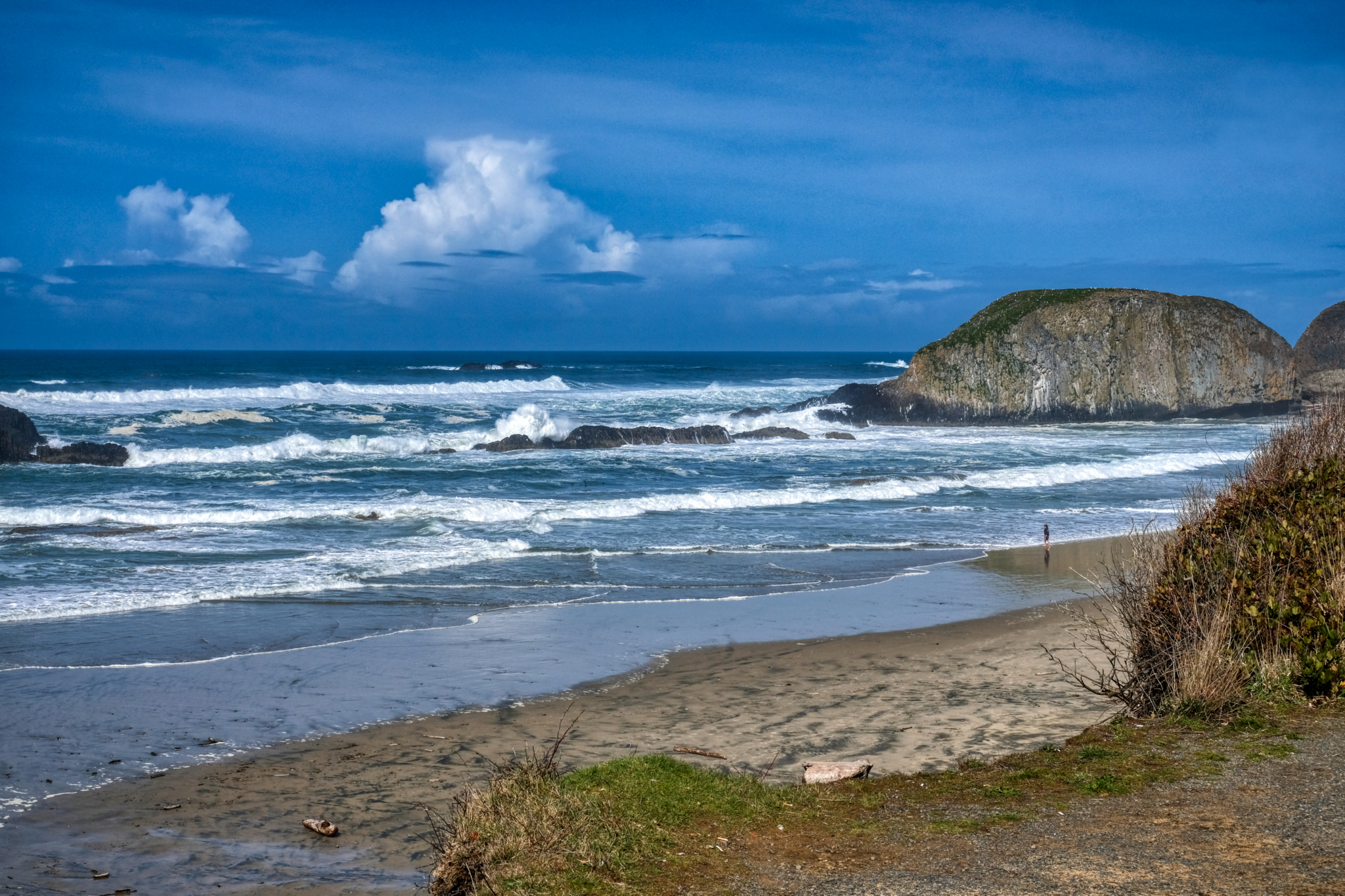 The beautiful southern Oregon coast in early April.
The beautiful southern Oregon coast in early April.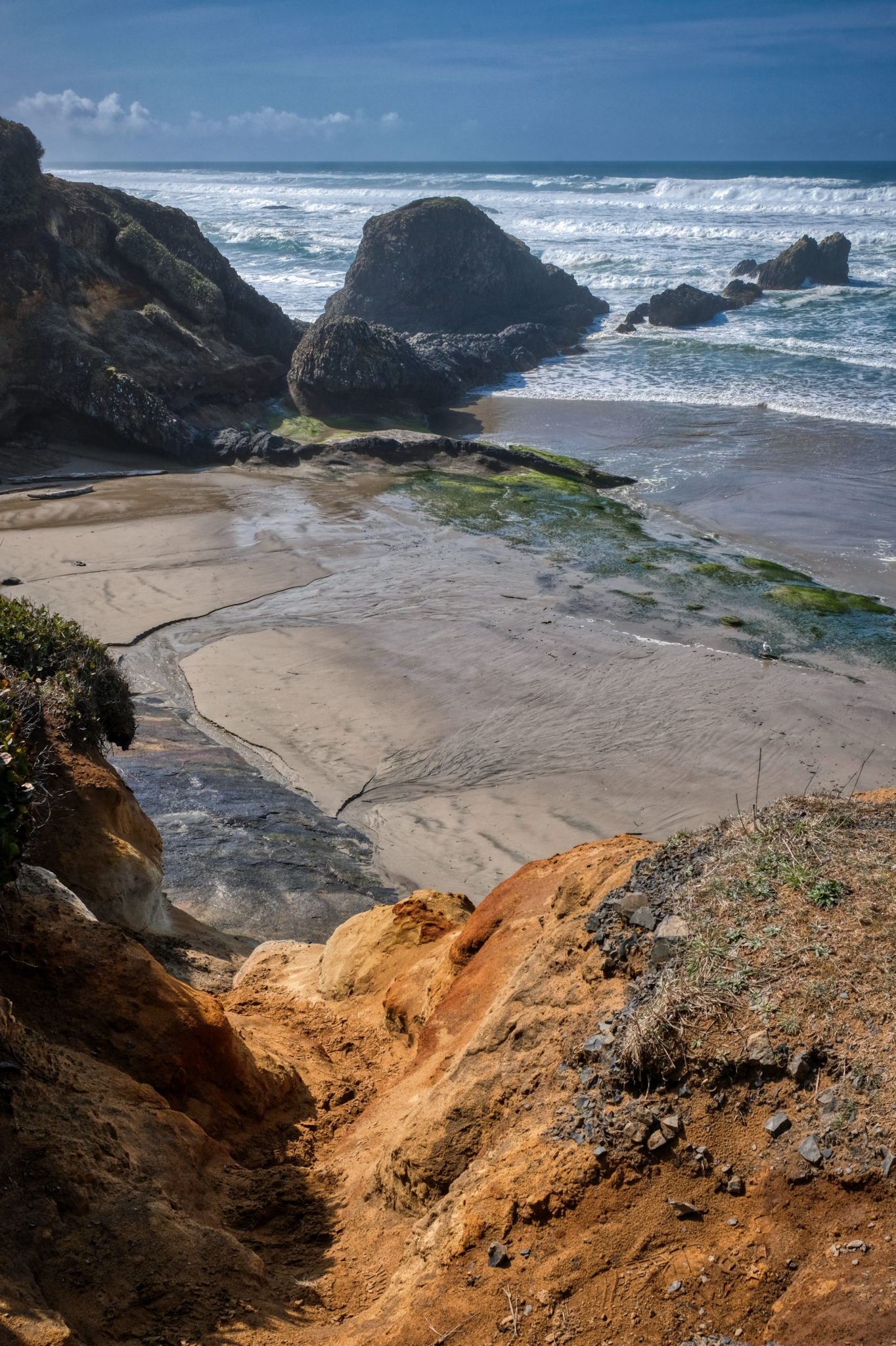 A rugged coast for several hundred miles.
A rugged coast for several hundred miles.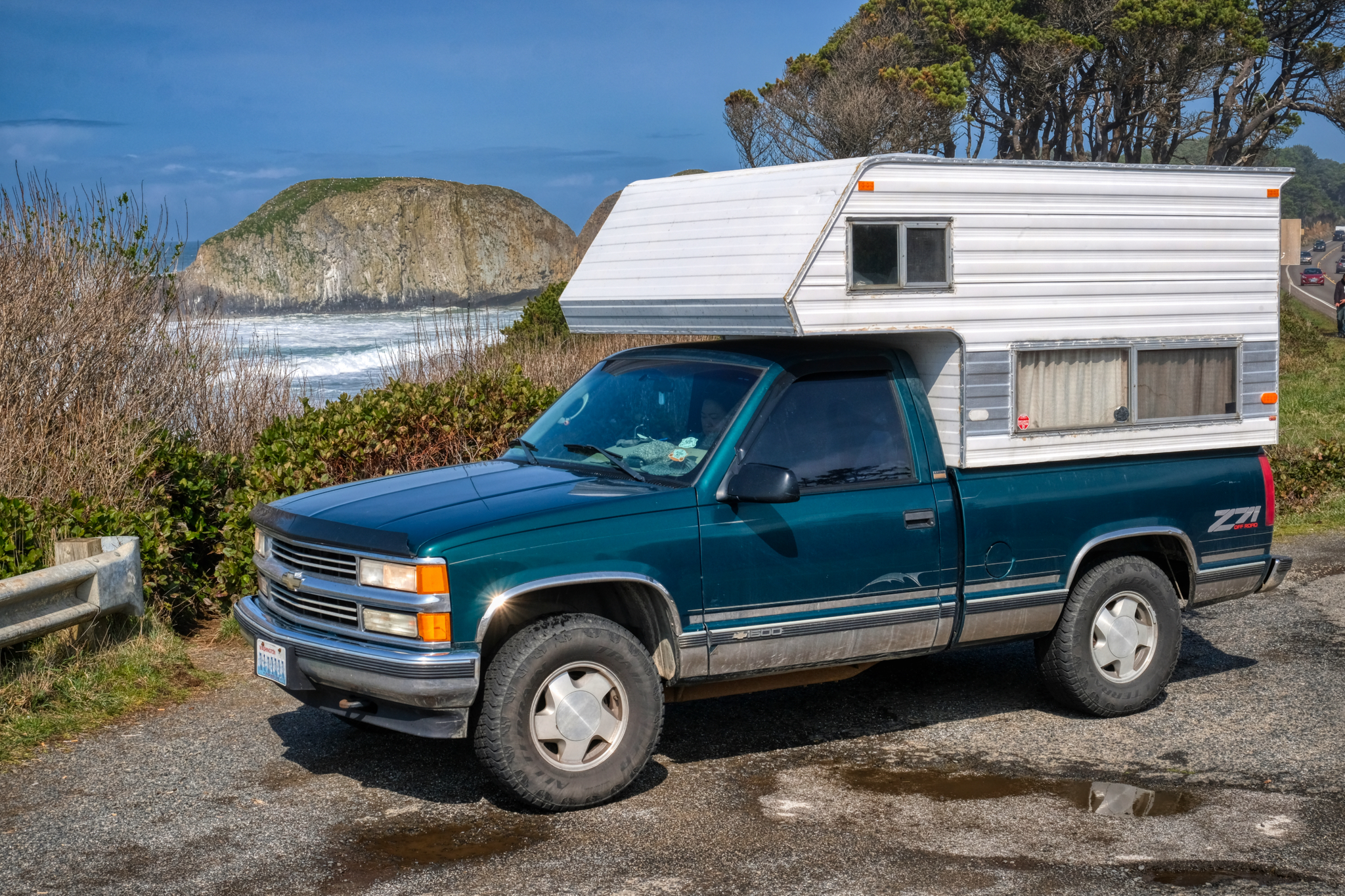 The old 1996 Chevy 4X4 camper truck working well.
The old 1996 Chevy 4X4 camper truck working well.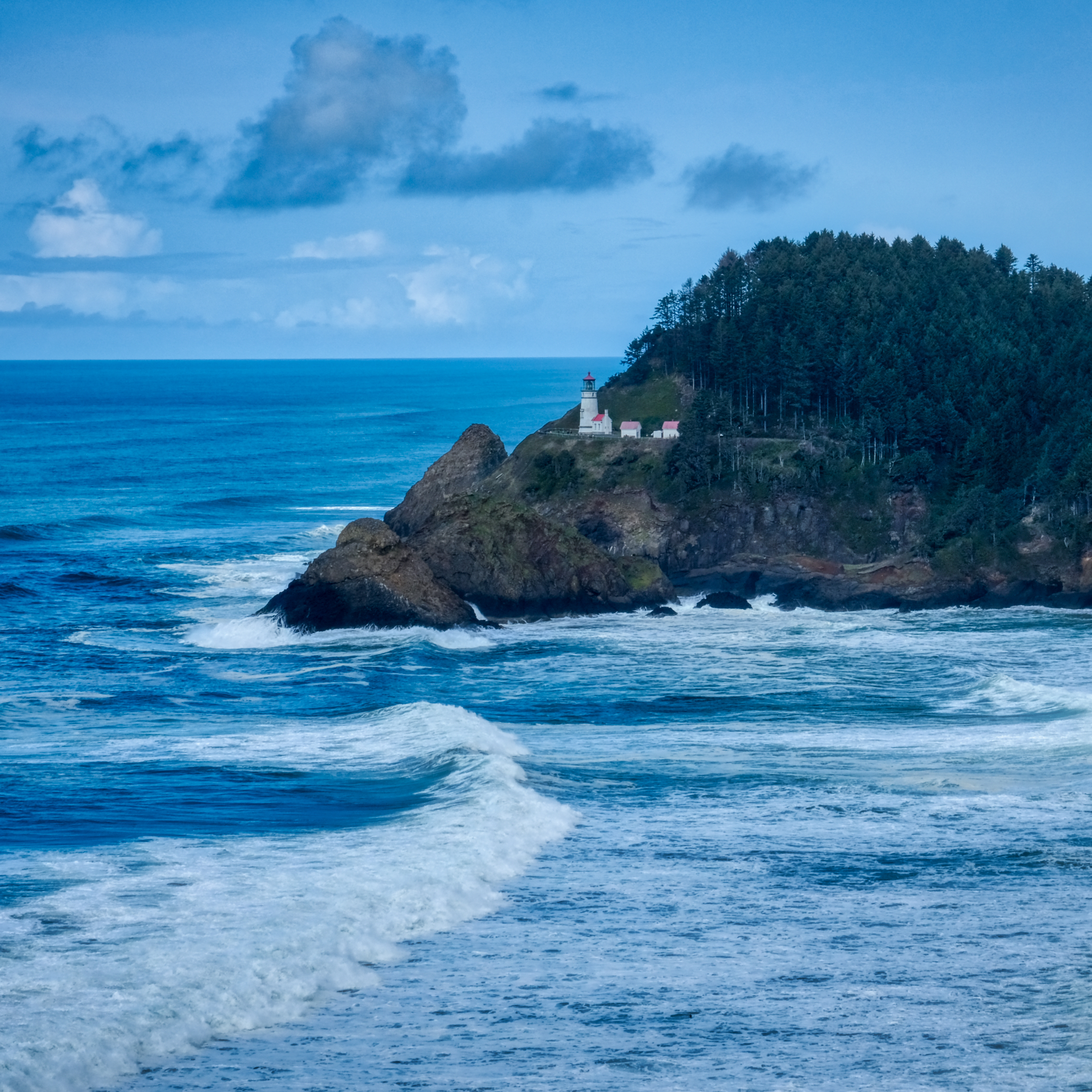 A classic lighthouse on a high bluff above the raging Pacific Ocean.
A classic lighthouse on a high bluff above the raging Pacific Ocean.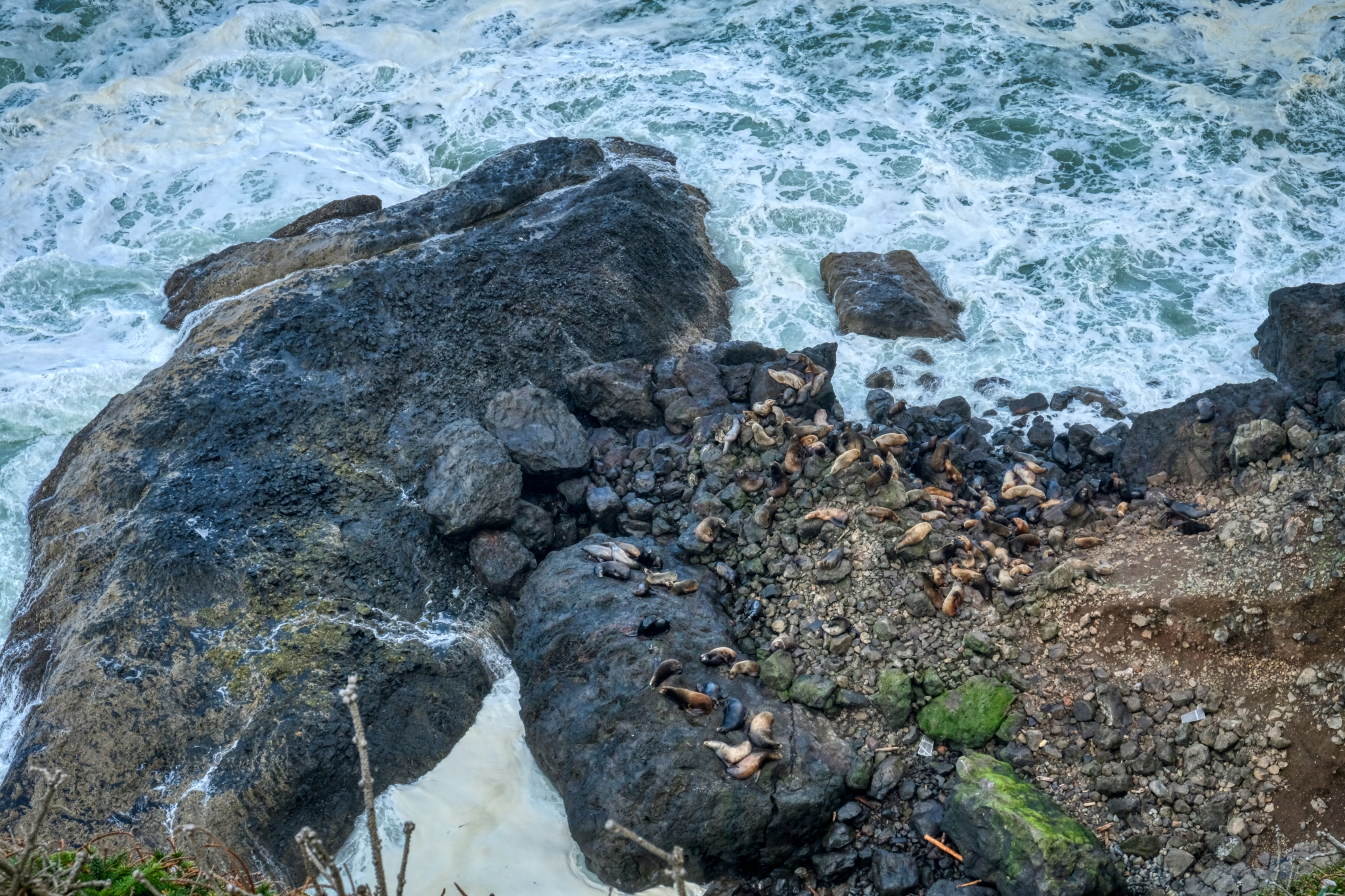 Sea Lions abound along the southern Oregon coast. We saw them at almost all our stops.
Sea Lions abound along the southern Oregon coast. We saw them at almost all our stops.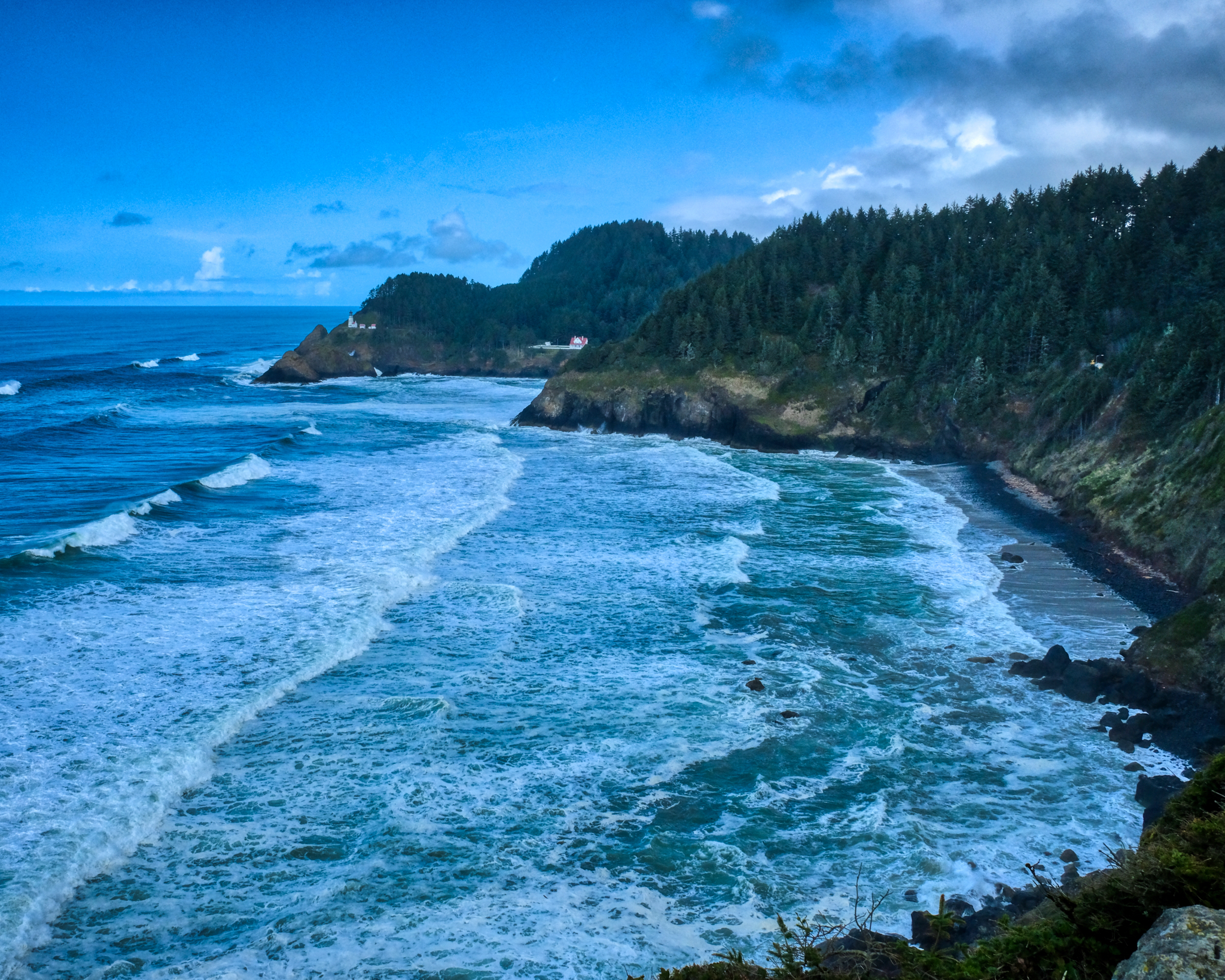 The famous beauty of the Oregon coast in all its magnificence.
The famous beauty of the Oregon coast in all its magnificence.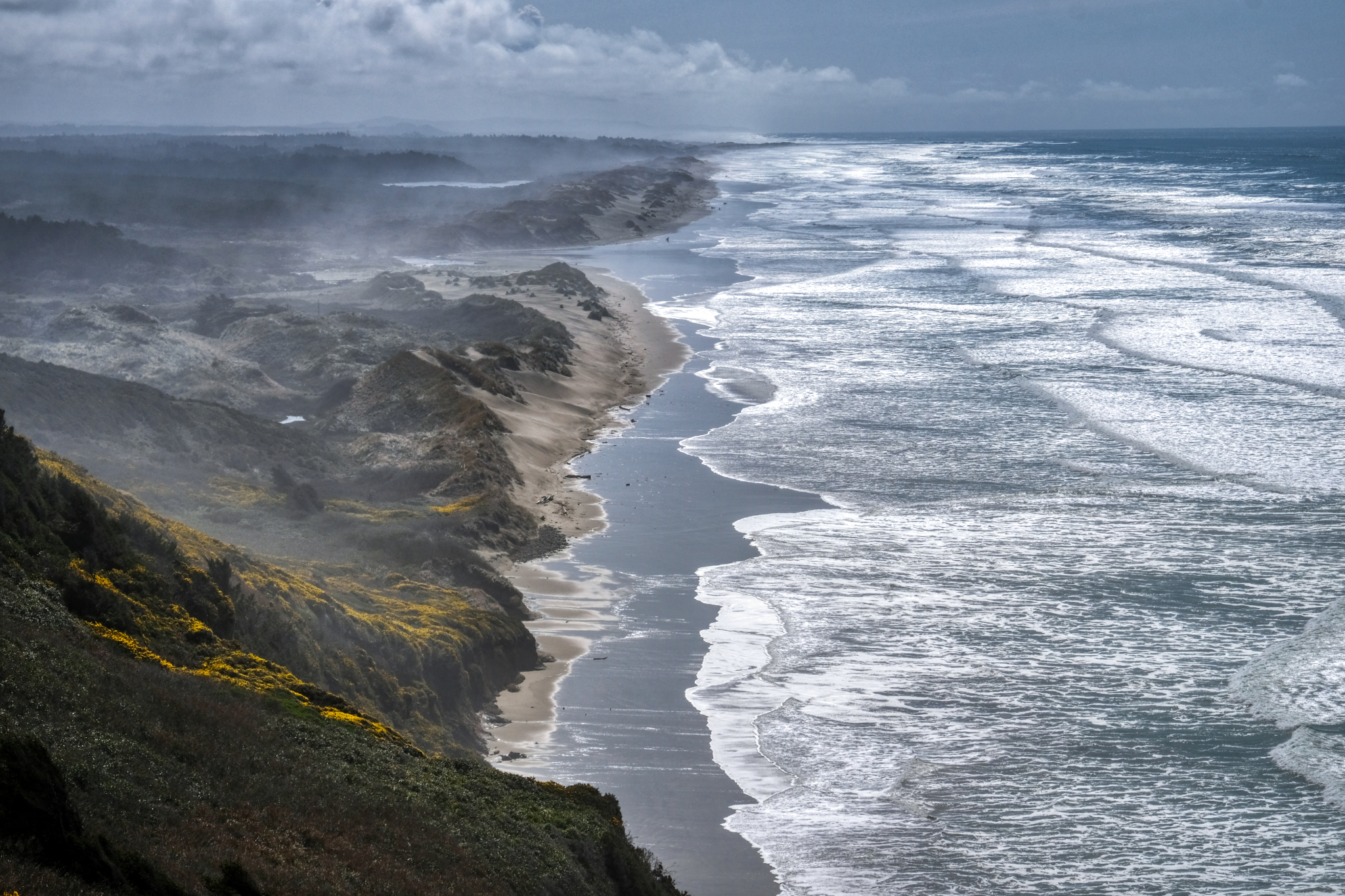 The drive south on the Oregon coast is wonderful because at every turn there is a new sweeping panorama . . .
The drive south on the Oregon coast is wonderful because at every turn there is a new sweeping panorama . . .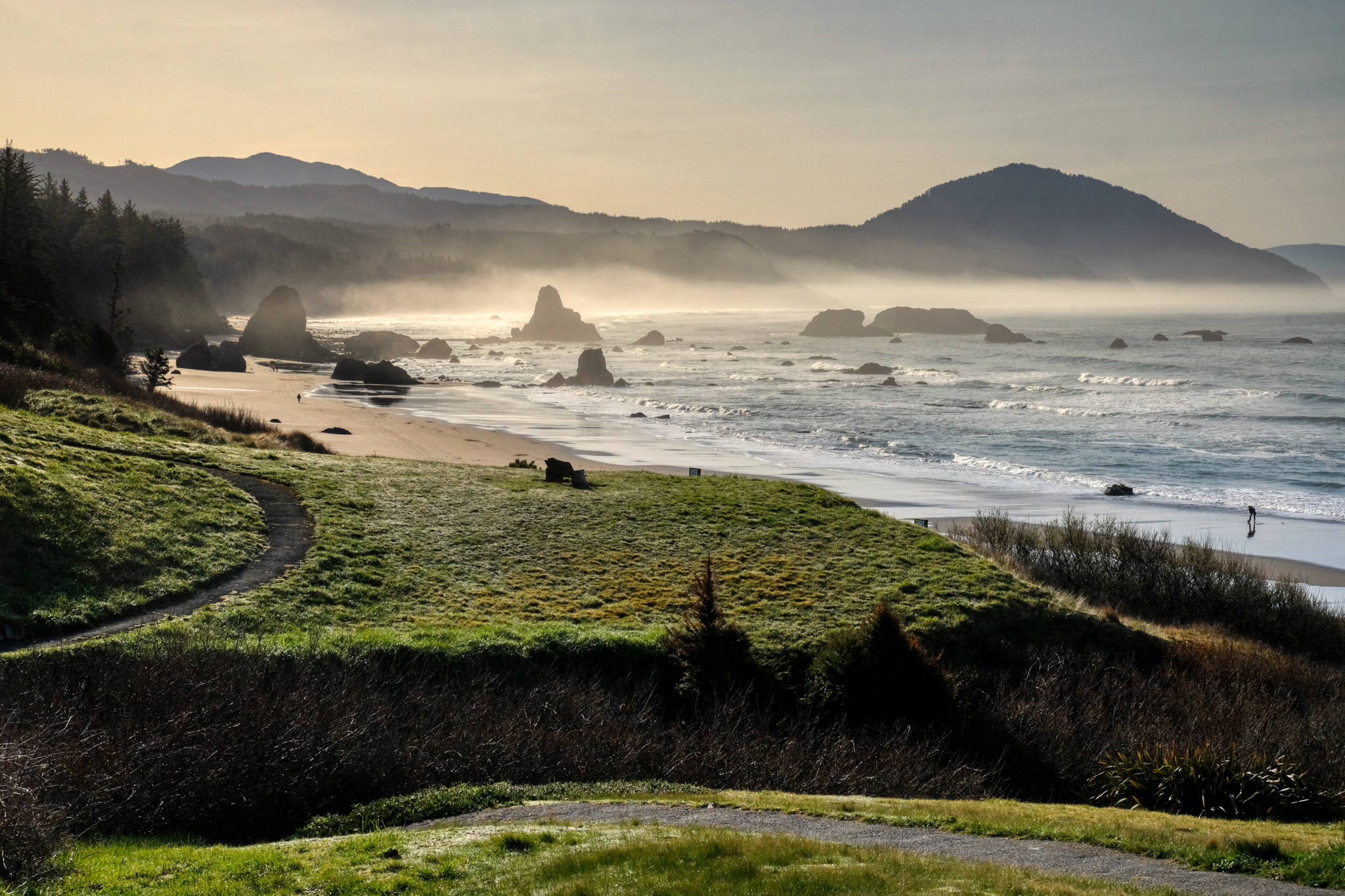 A beautiful bay just south of Crescent City, California after sunrise.
A beautiful bay just south of Crescent City, California after sunrise.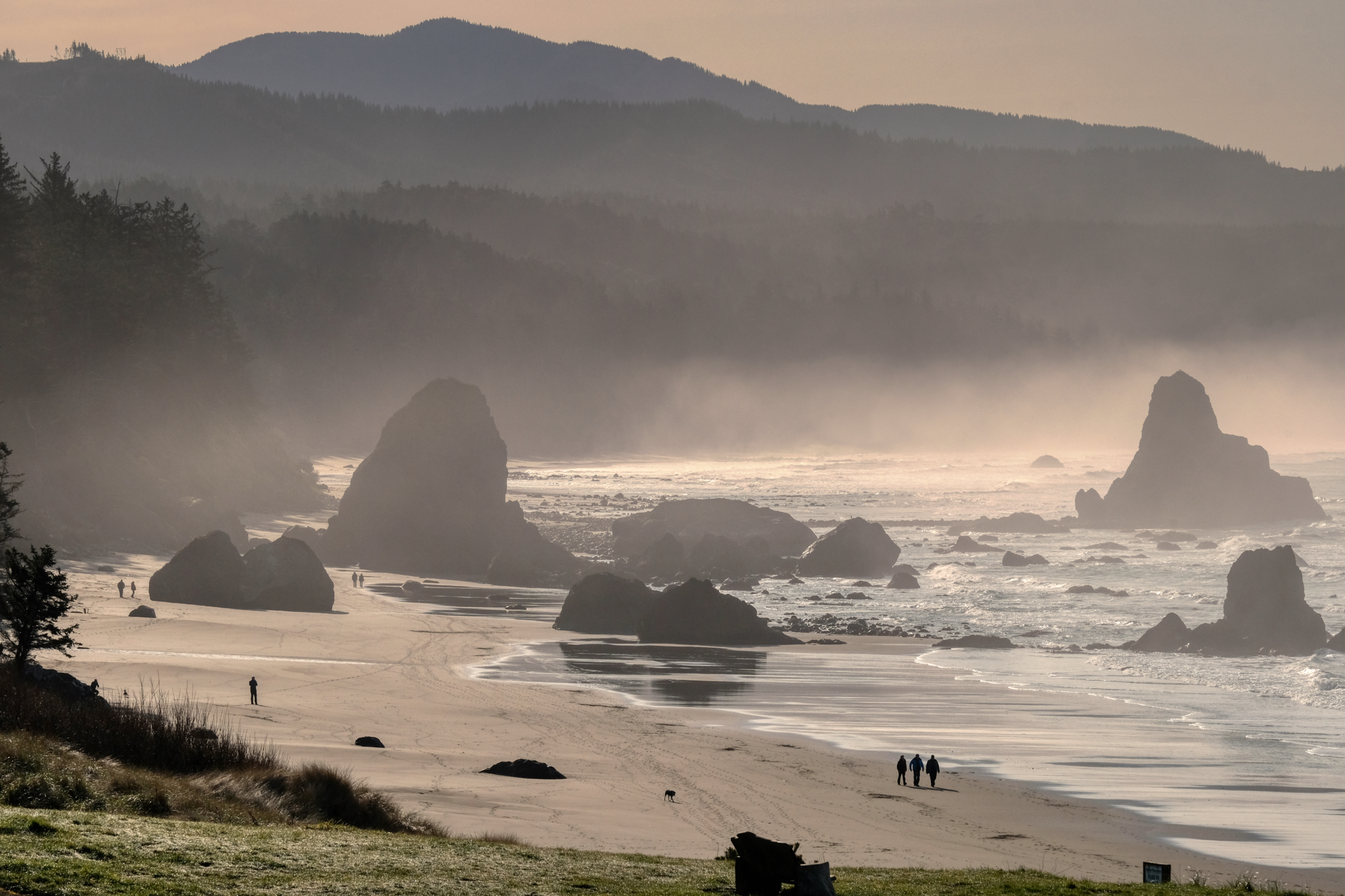 People out on their morning beach walk.
People out on their morning beach walk.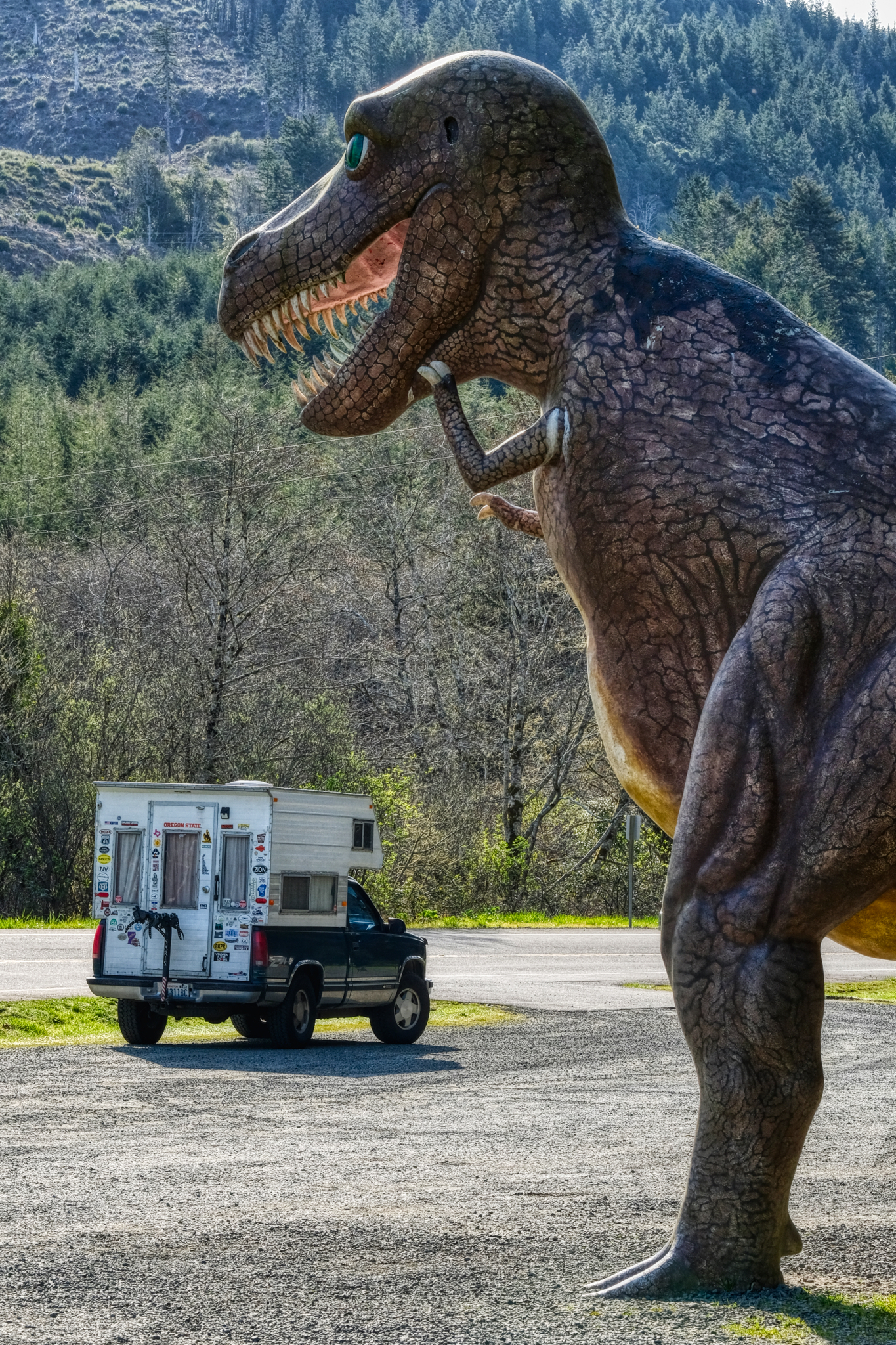 I'm glad I had the V8! Not exactly a tourist trap . . . but a pretty good dinosaur park roadside attraction.
I'm glad I had the V8! Not exactly a tourist trap . . . but a pretty good dinosaur park roadside attraction.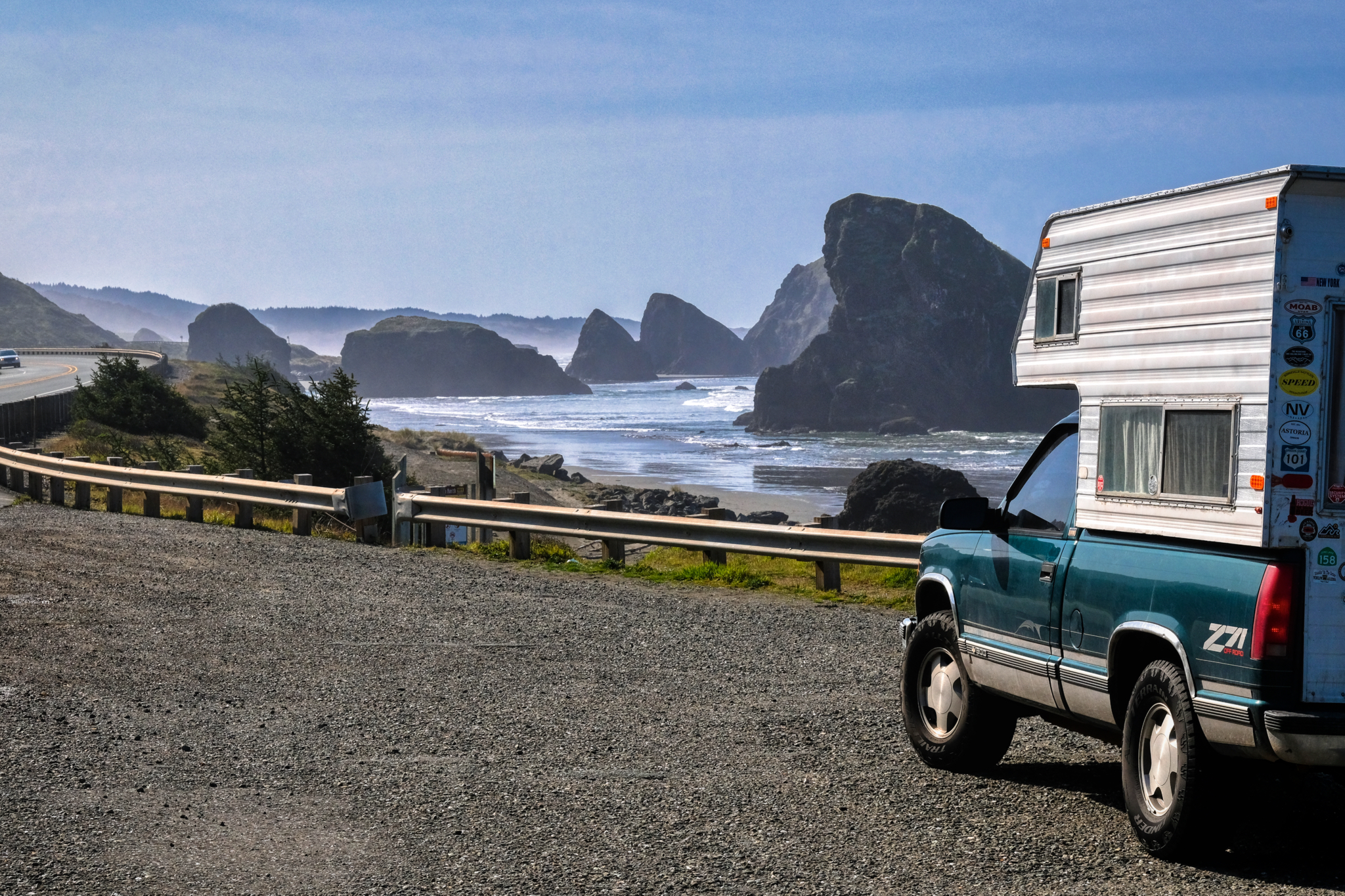 We made many stops along Highway 101 to ogle at the incredible scenery.
We made many stops along Highway 101 to ogle at the incredible scenery.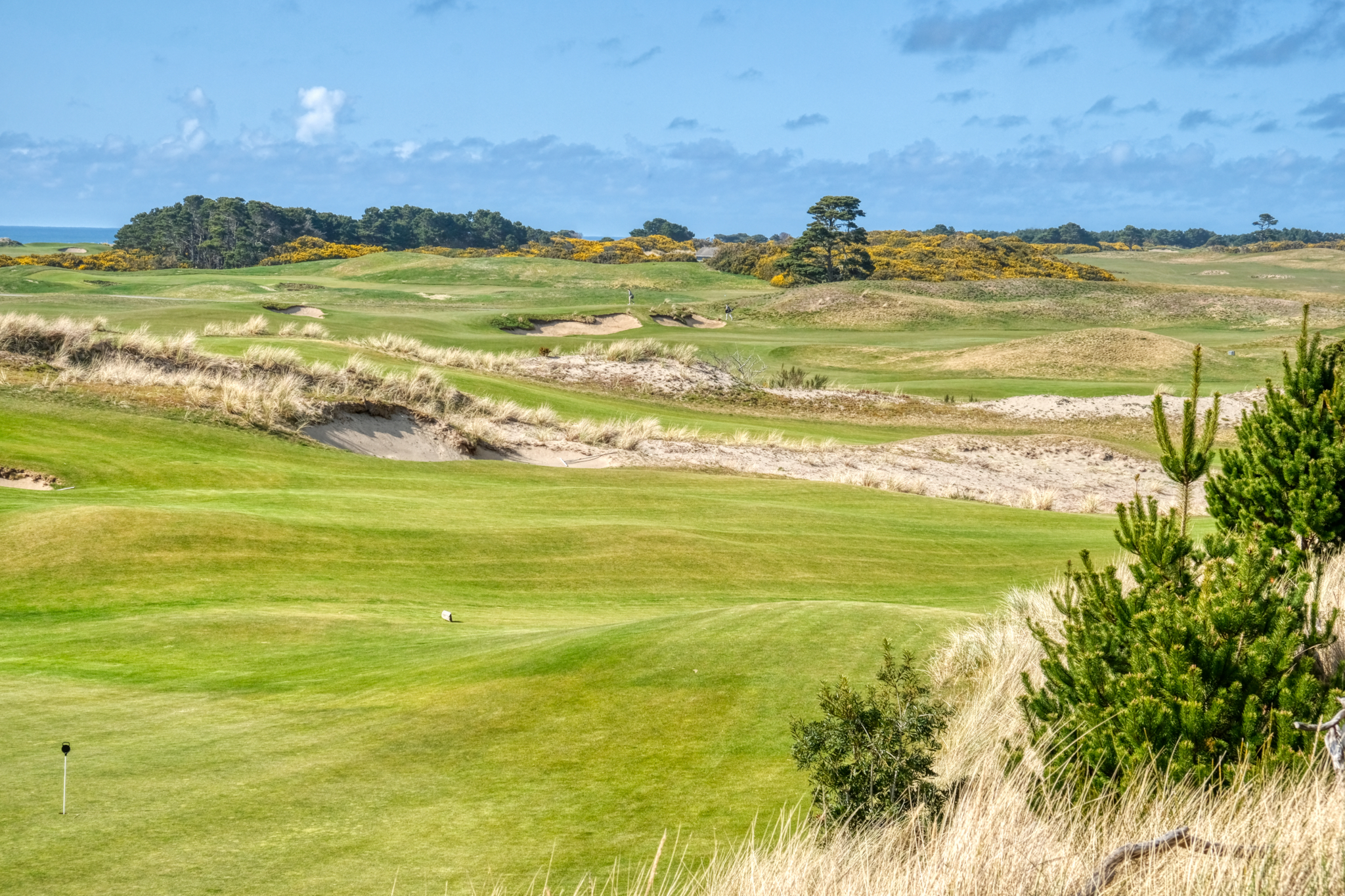 Of course, my wife wanted to stop and look at every golf curse along the way. This one, near Brookings, looked so Scottish! A real links curse, yellow gorse and all!
Of course, my wife wanted to stop and look at every golf curse along the way. This one, near Brookings, looked so Scottish! A real links curse, yellow gorse and all!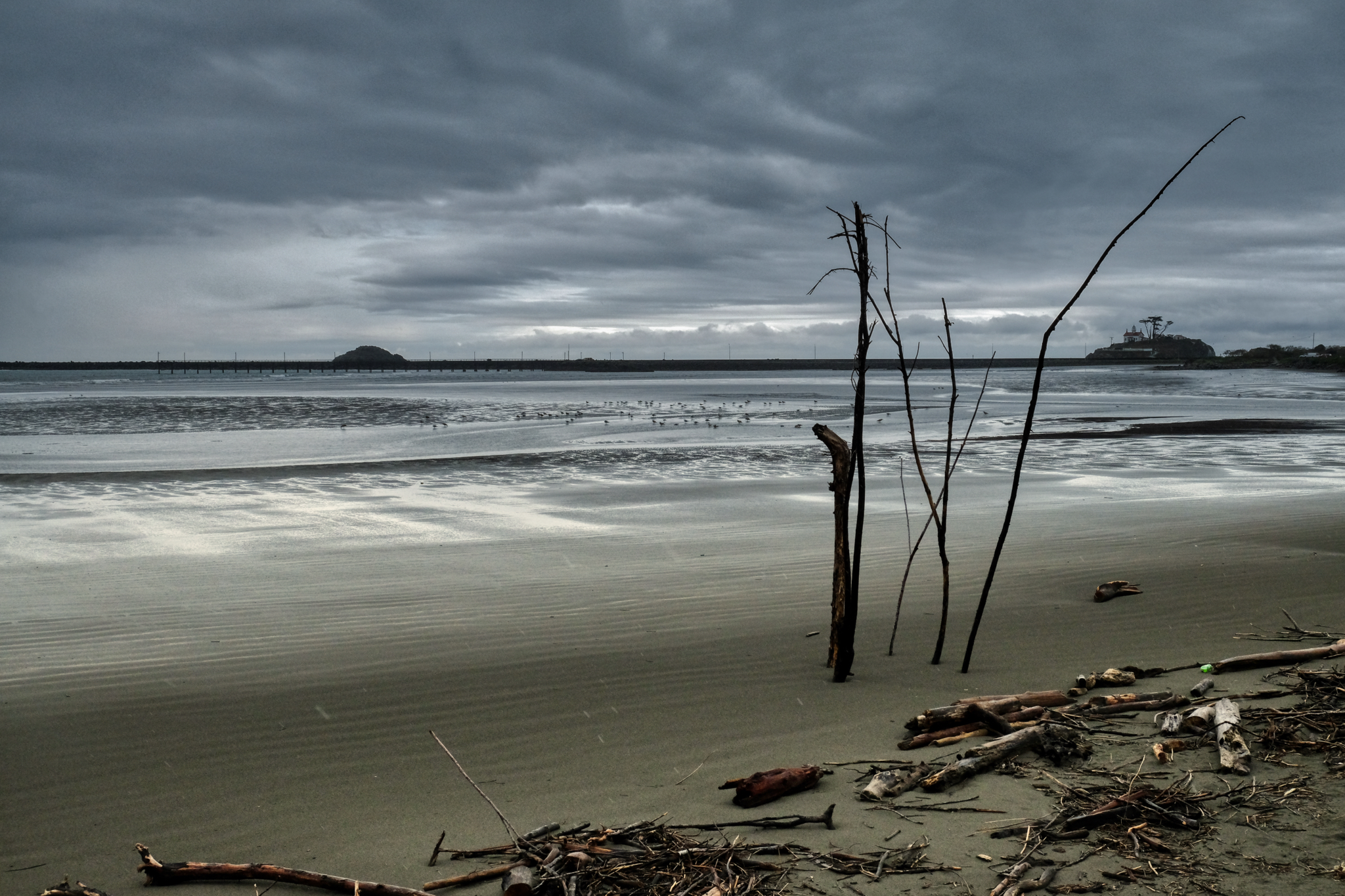 Arriving at the Crescent City bay.
Arriving at the Crescent City bay.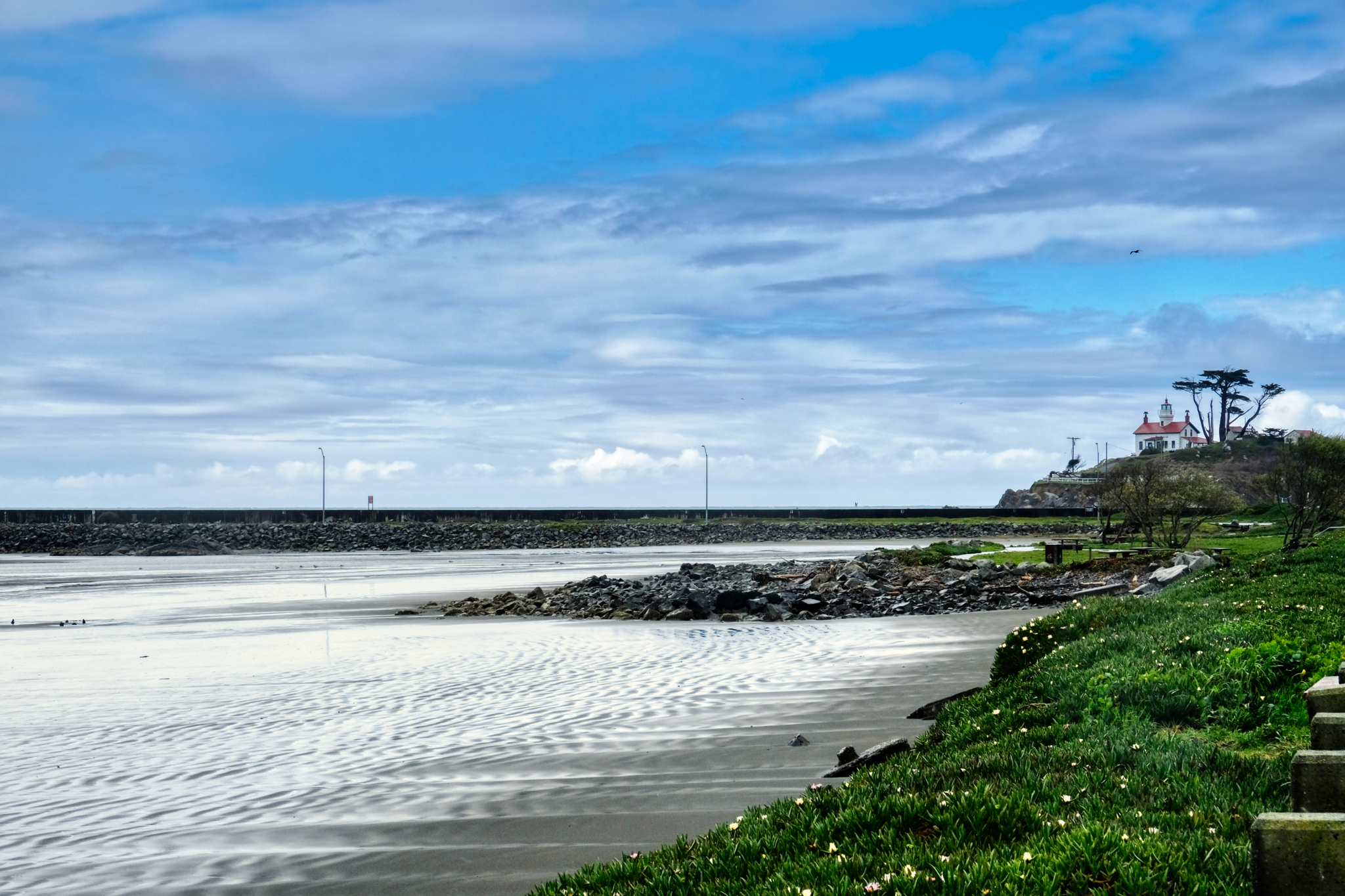 Crescent City bay and lighthouse.
Crescent City bay and lighthouse.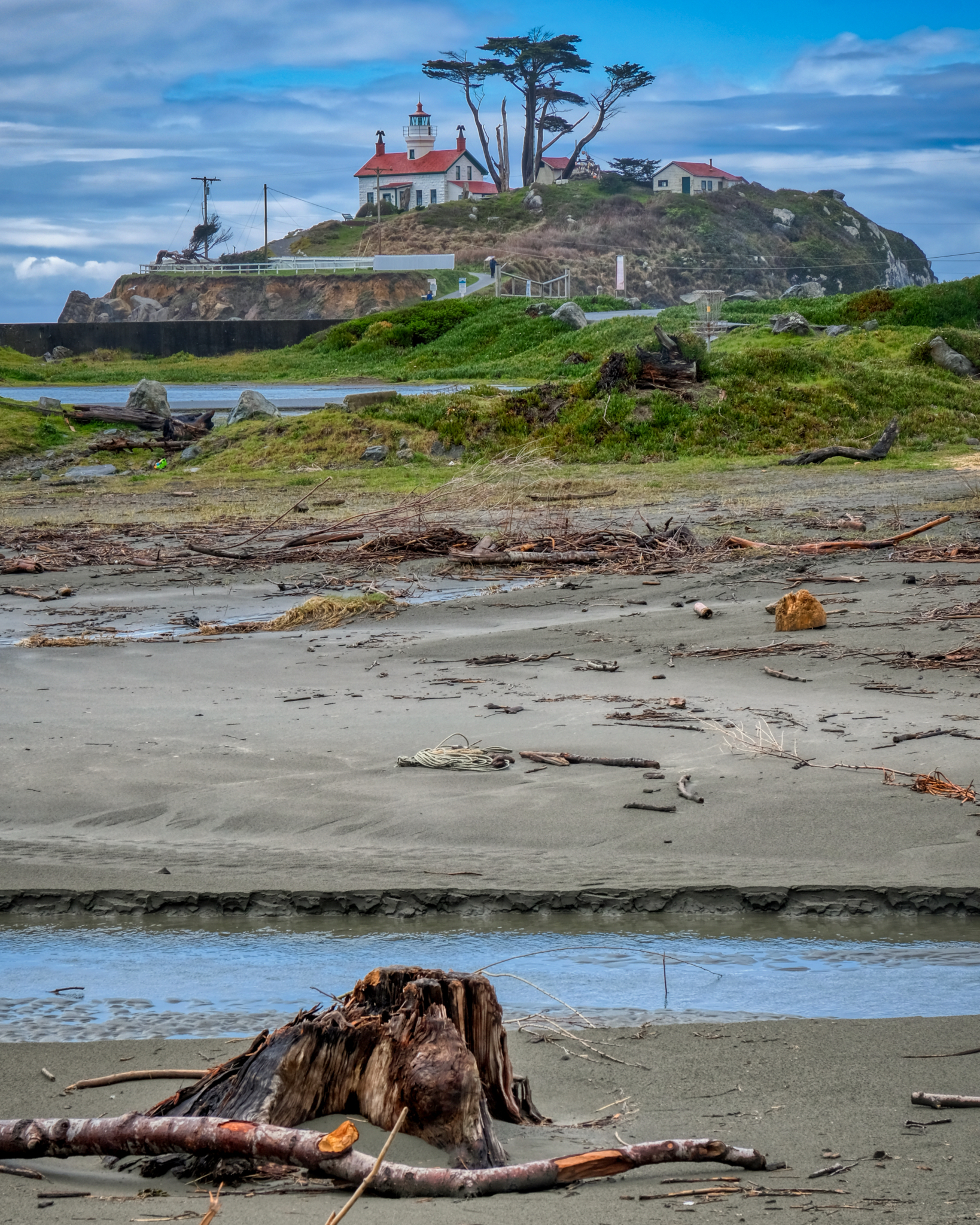 Crescent City lighthouse.
Crescent City lighthouse.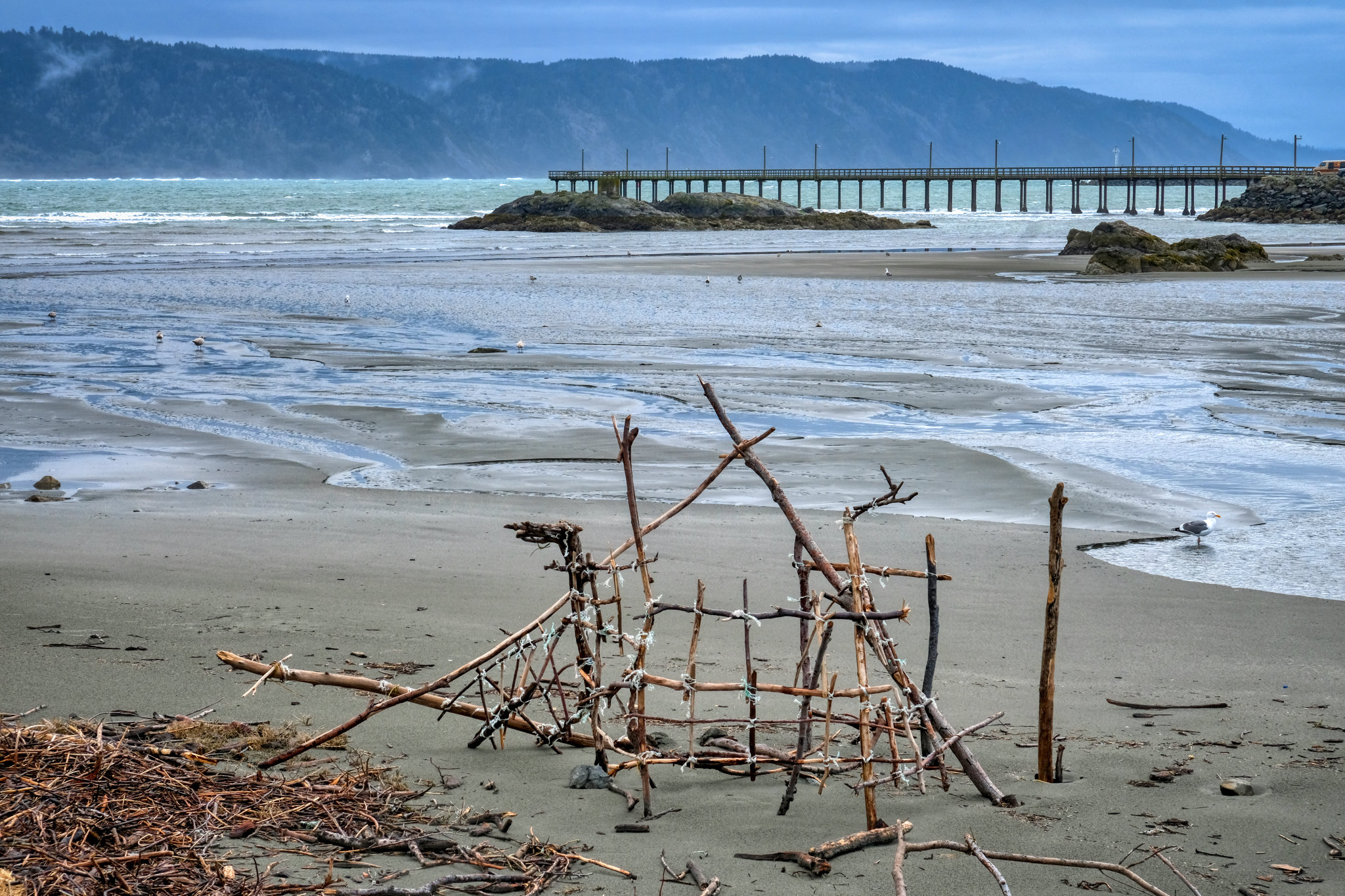 A beachcombers' stick sculpture.
A beachcombers' stick sculpture.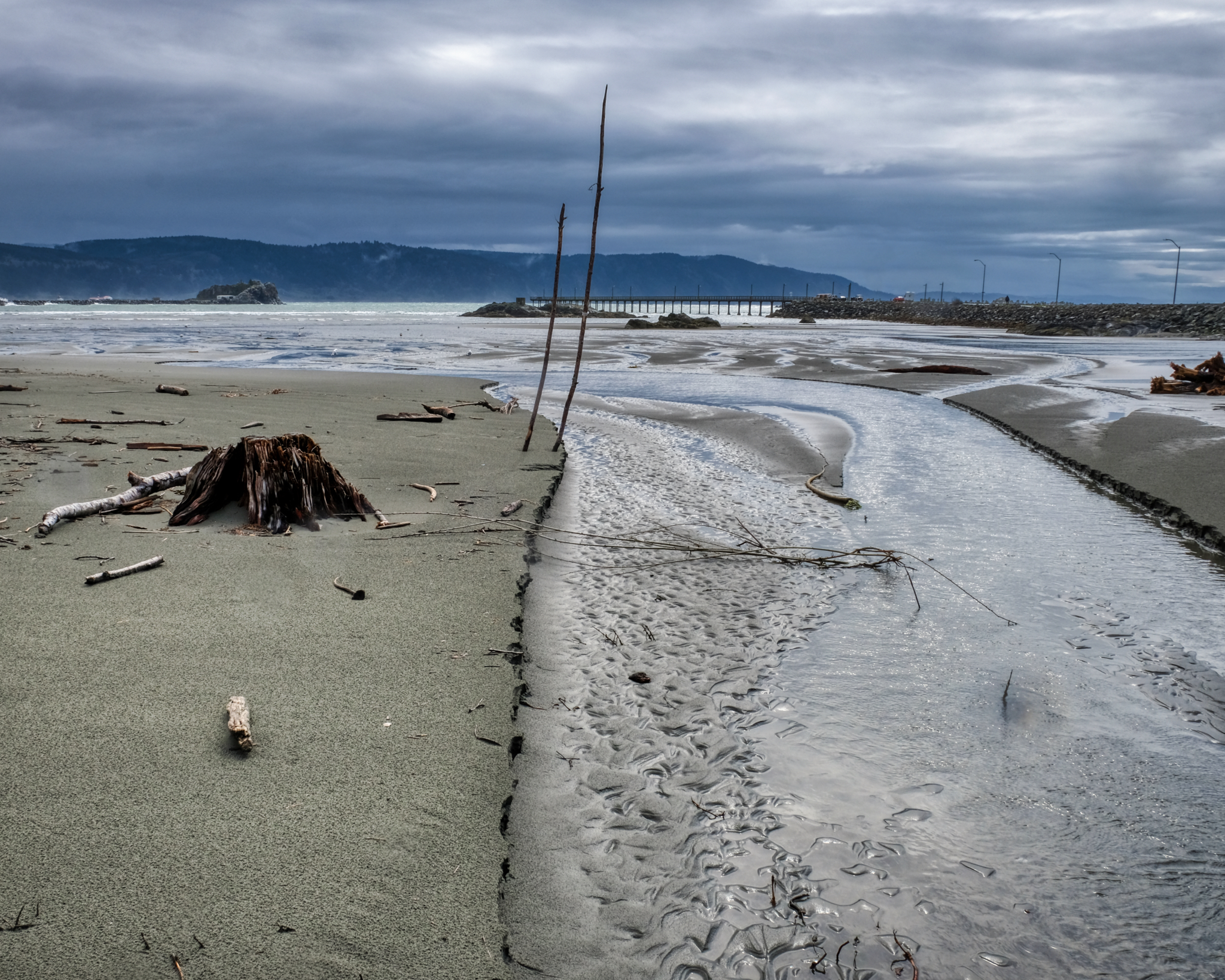 I love these Pacific Northwest coastal scenes.
I love these Pacific Northwest coastal scenes.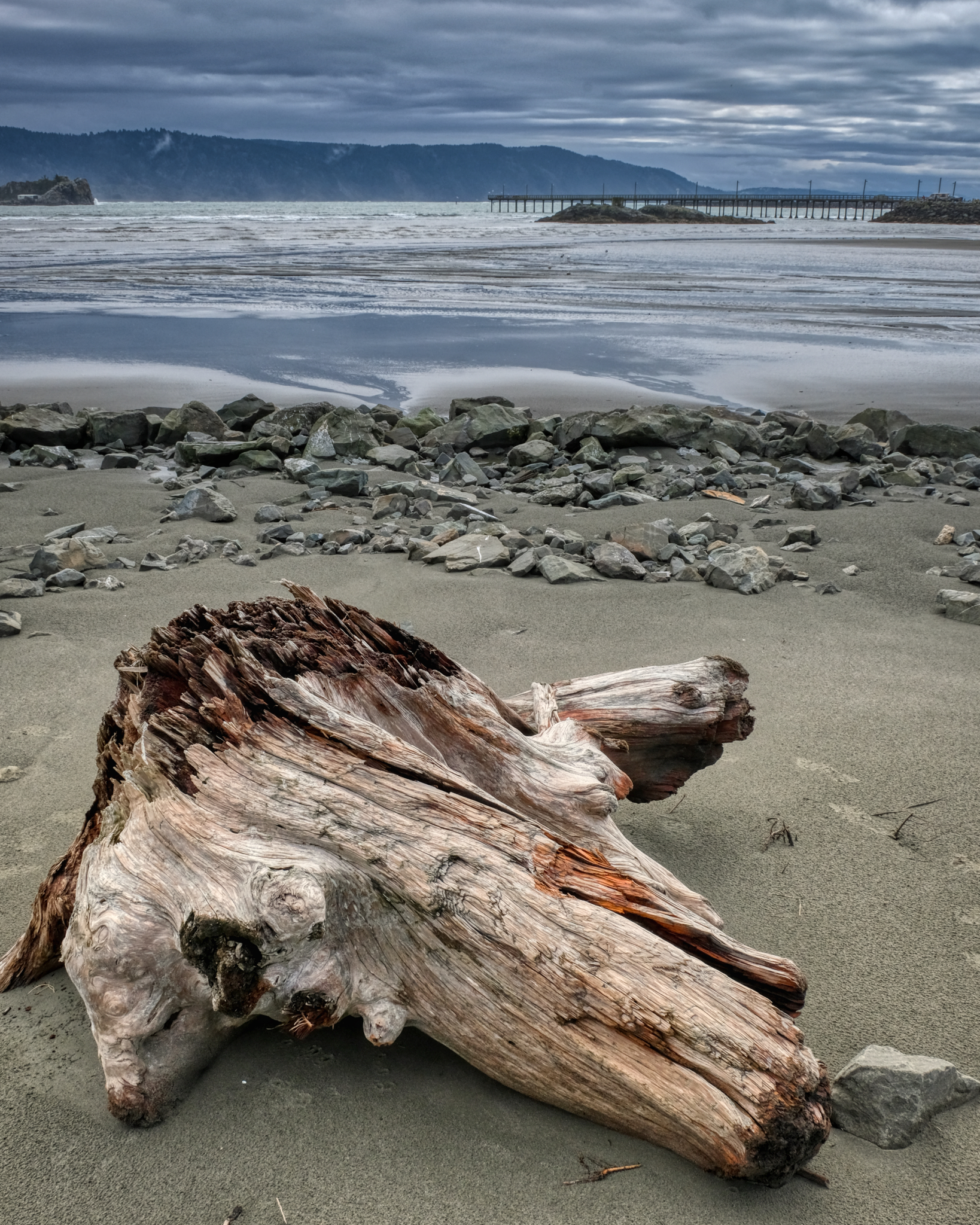 On of my favorite photographic subjects: driftwood.
On of my favorite photographic subjects: driftwood.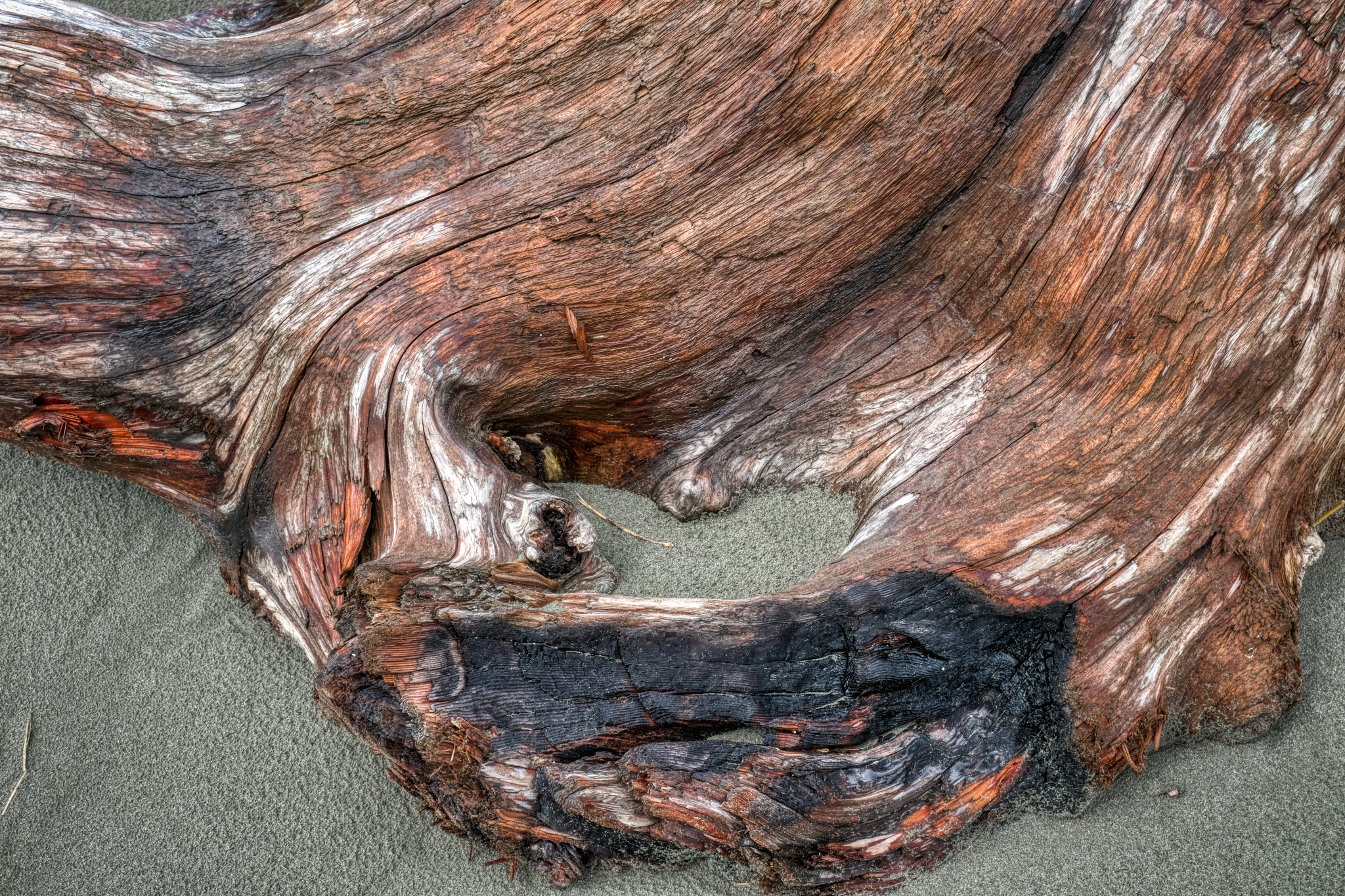 Worn by sea, sun, and sand into fabulous textures and patterns . . .
Worn by sea, sun, and sand into fabulous textures and patterns . . .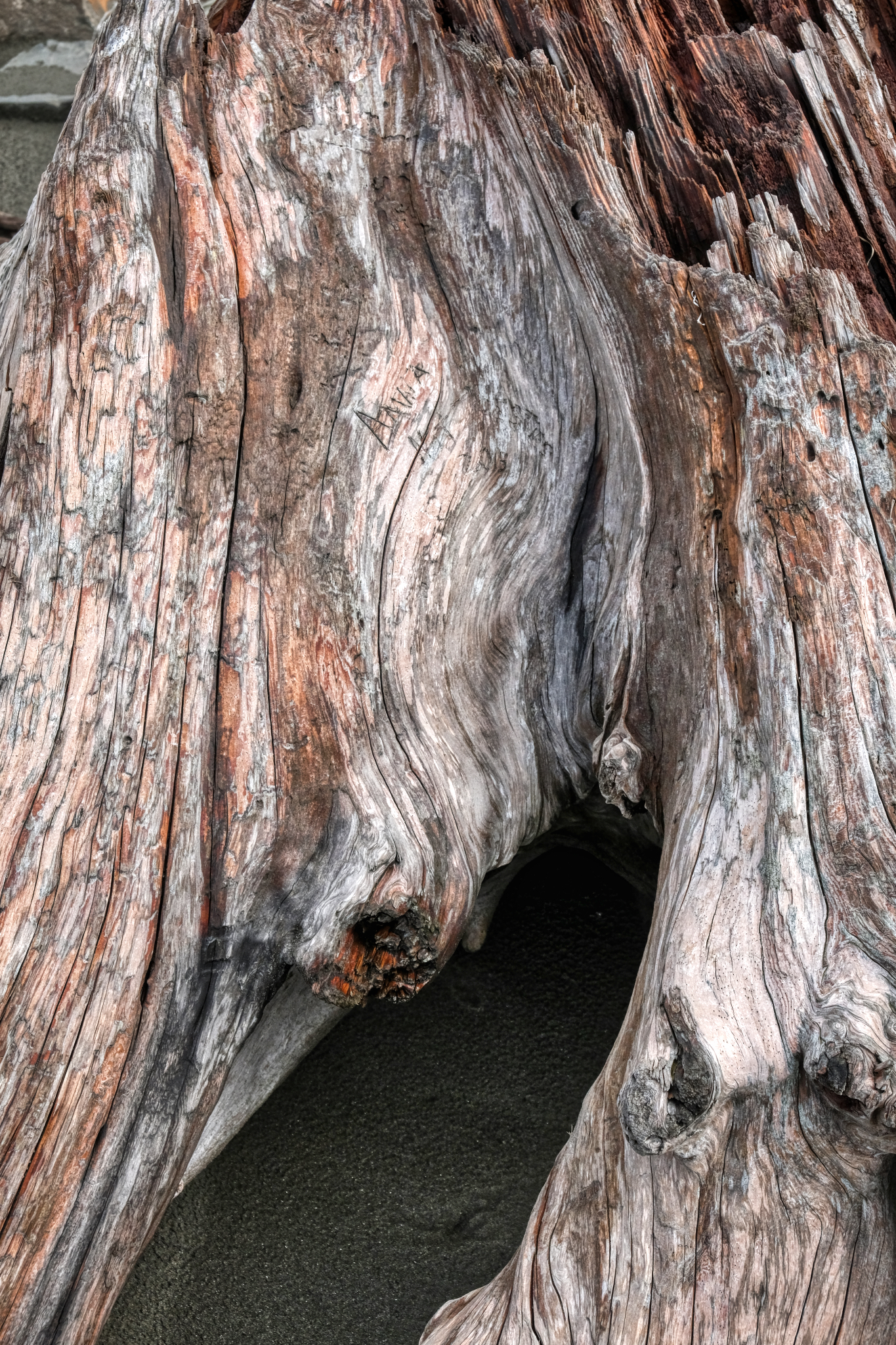 A visitor's cartouche . . .
A visitor's cartouche . . .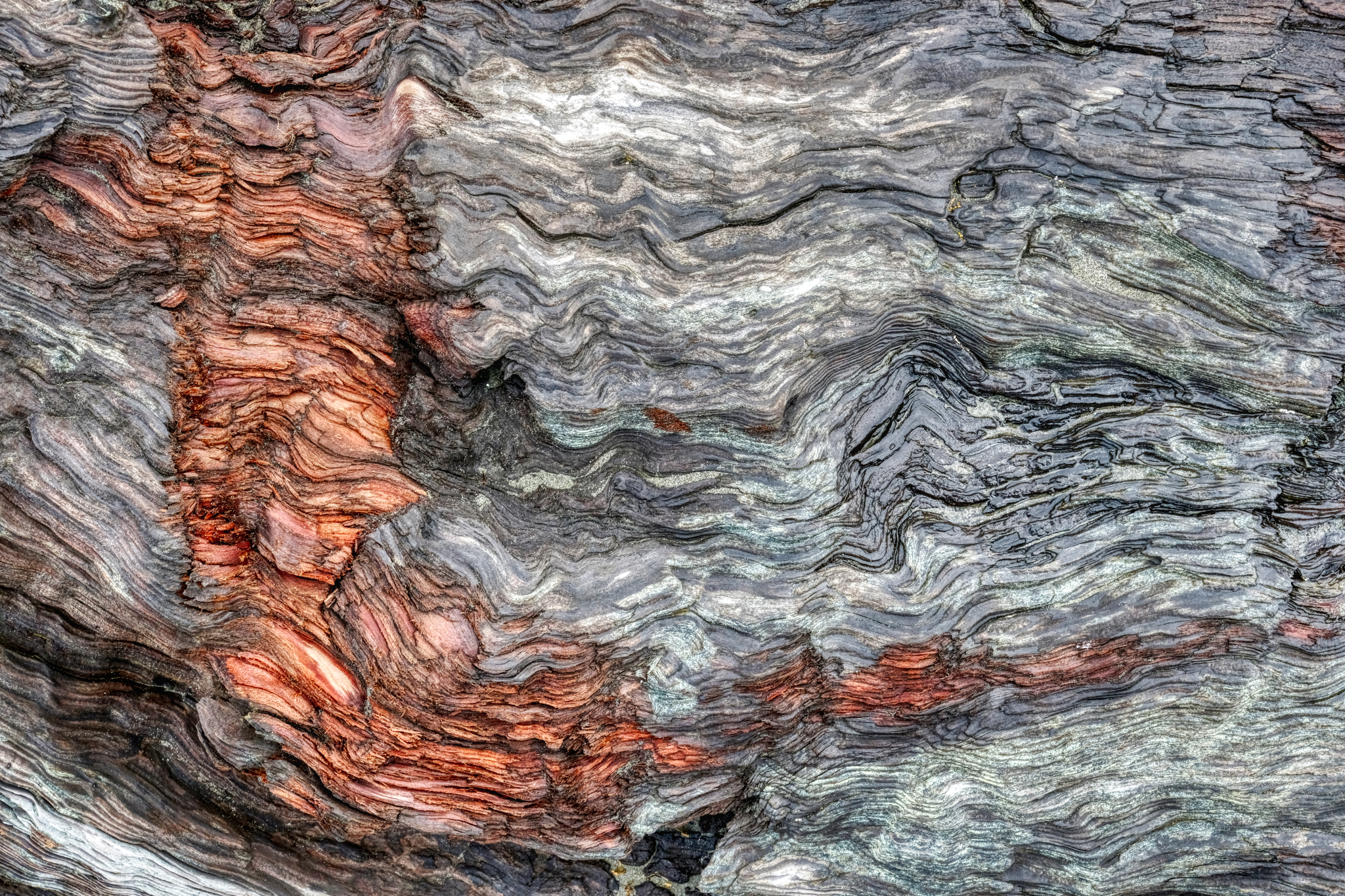 A damaged surface. The orange scrape revealing the natural color behind the grey aged driftwood.
A damaged surface. The orange scrape revealing the natural color behind the grey aged driftwood.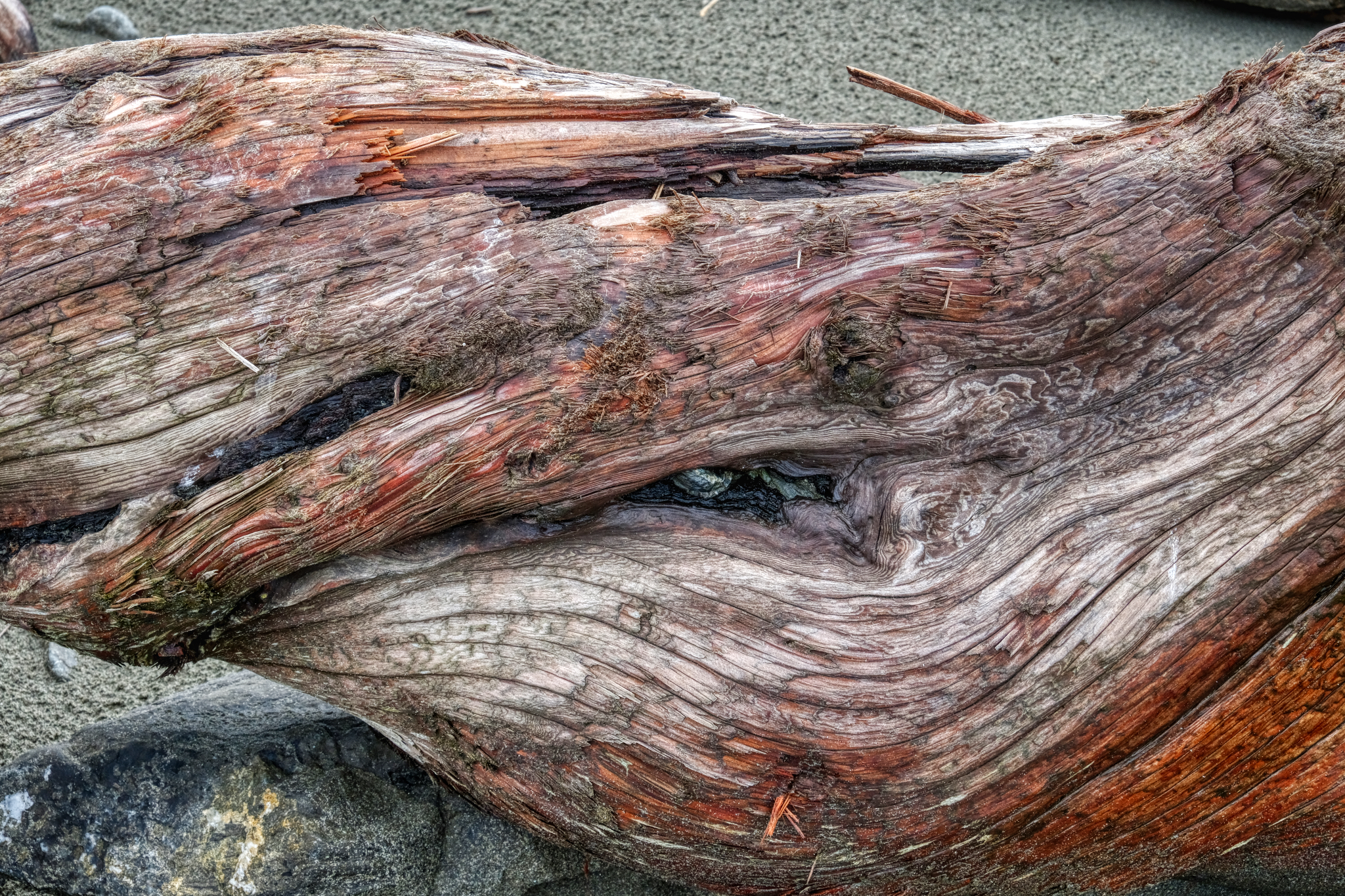 Twisted driftwood.
Twisted driftwood.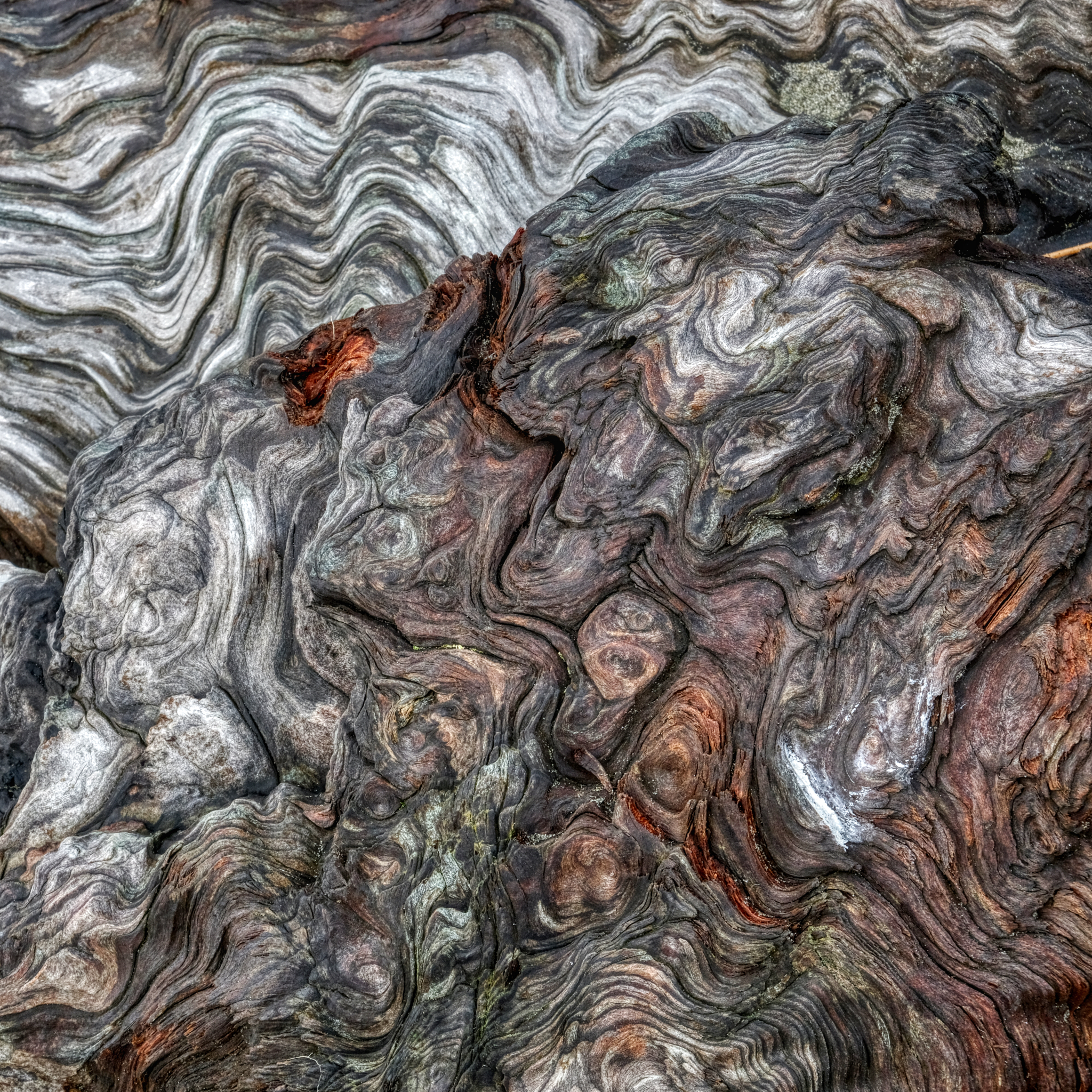 A revelation of the history of the forces and conditions this particular tree has experienced in the past represented in these patterns.
A revelation of the history of the forces and conditions this particular tree has experienced in the past represented in these patterns.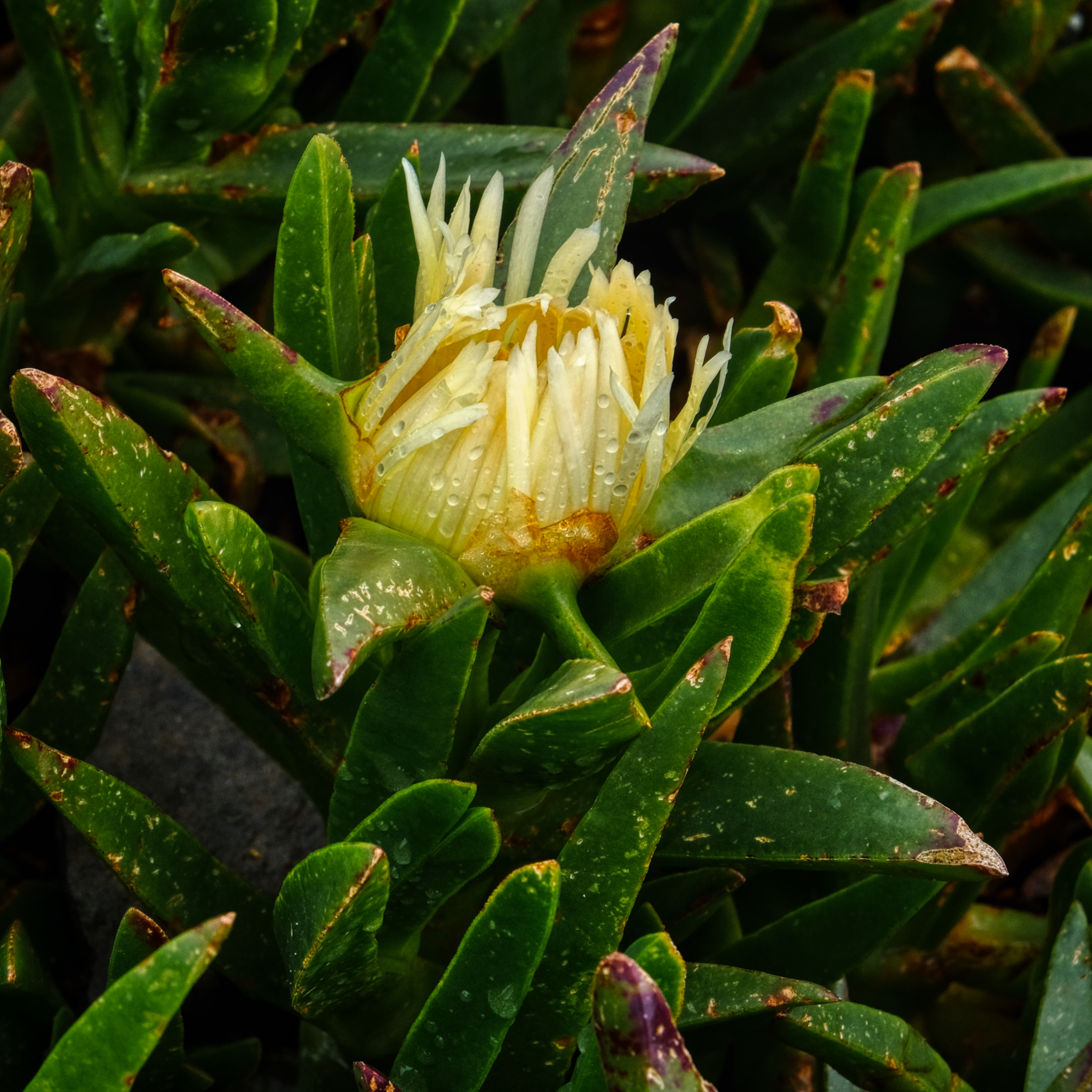 Ice plant! Stained all my clothes as a child. Here, at Crescent City, in flower on a rainy morning.
Ice plant! Stained all my clothes as a child. Here, at Crescent City, in flower on a rainy morning.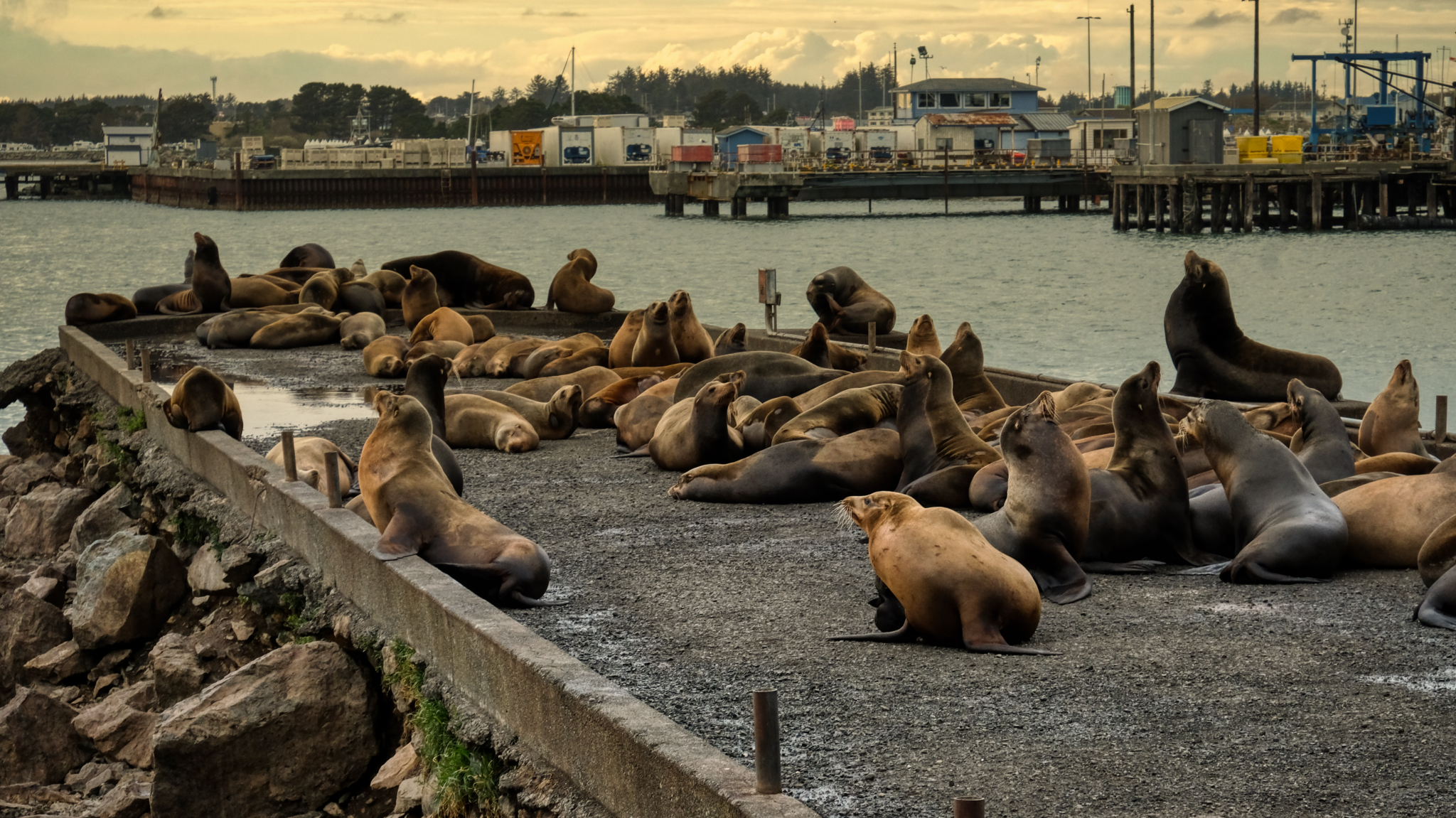 We stayed the night in a motel in Crescent City, California and went out for seafood on the pier . . . and discovered the sea lions at sunset.
We stayed the night in a motel in Crescent City, California and went out for seafood on the pier . . . and discovered the sea lions at sunset.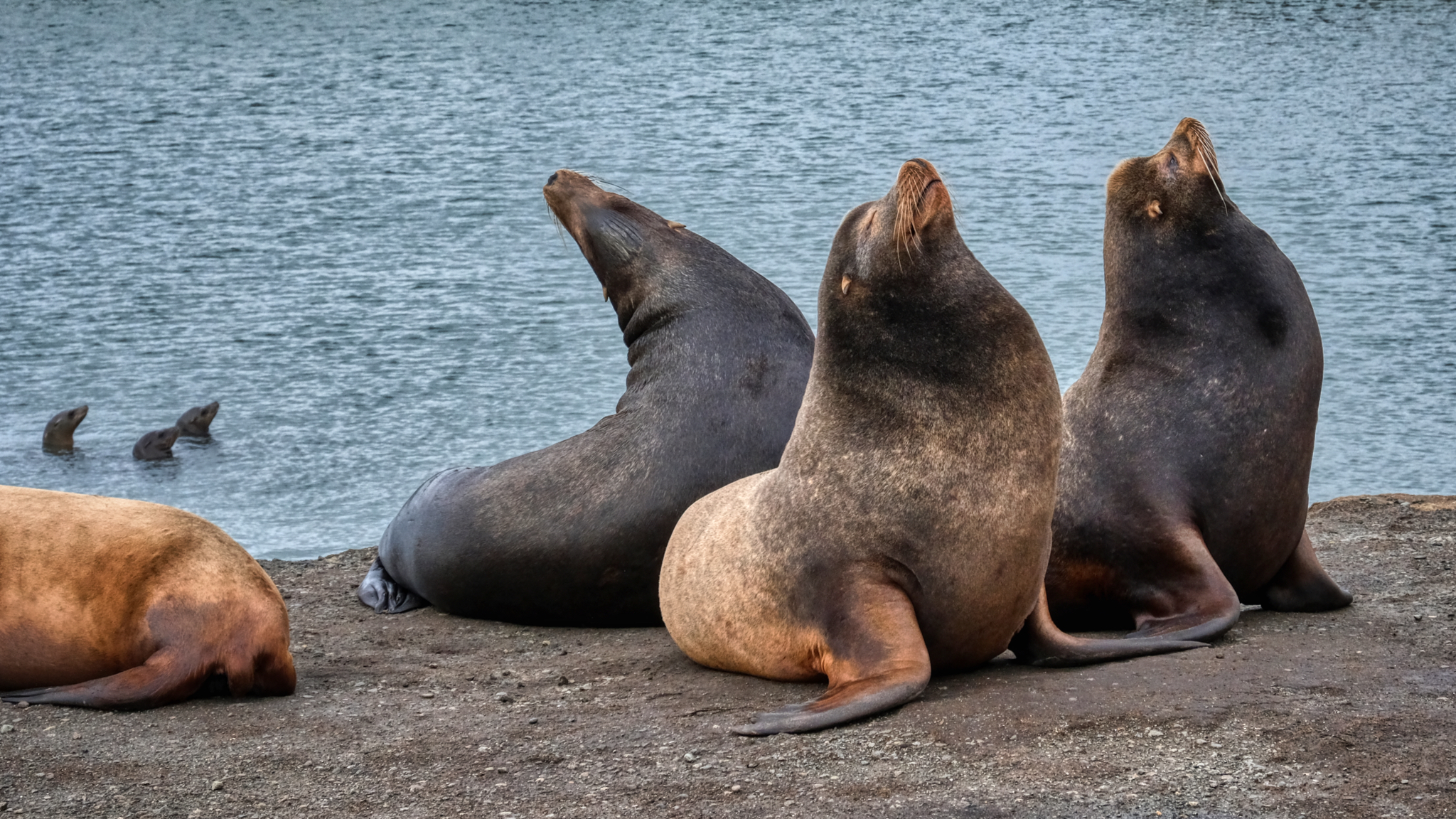 Sea lions are fascinating to watch. Very entertaining sea mammals!
Sea lions are fascinating to watch. Very entertaining sea mammals!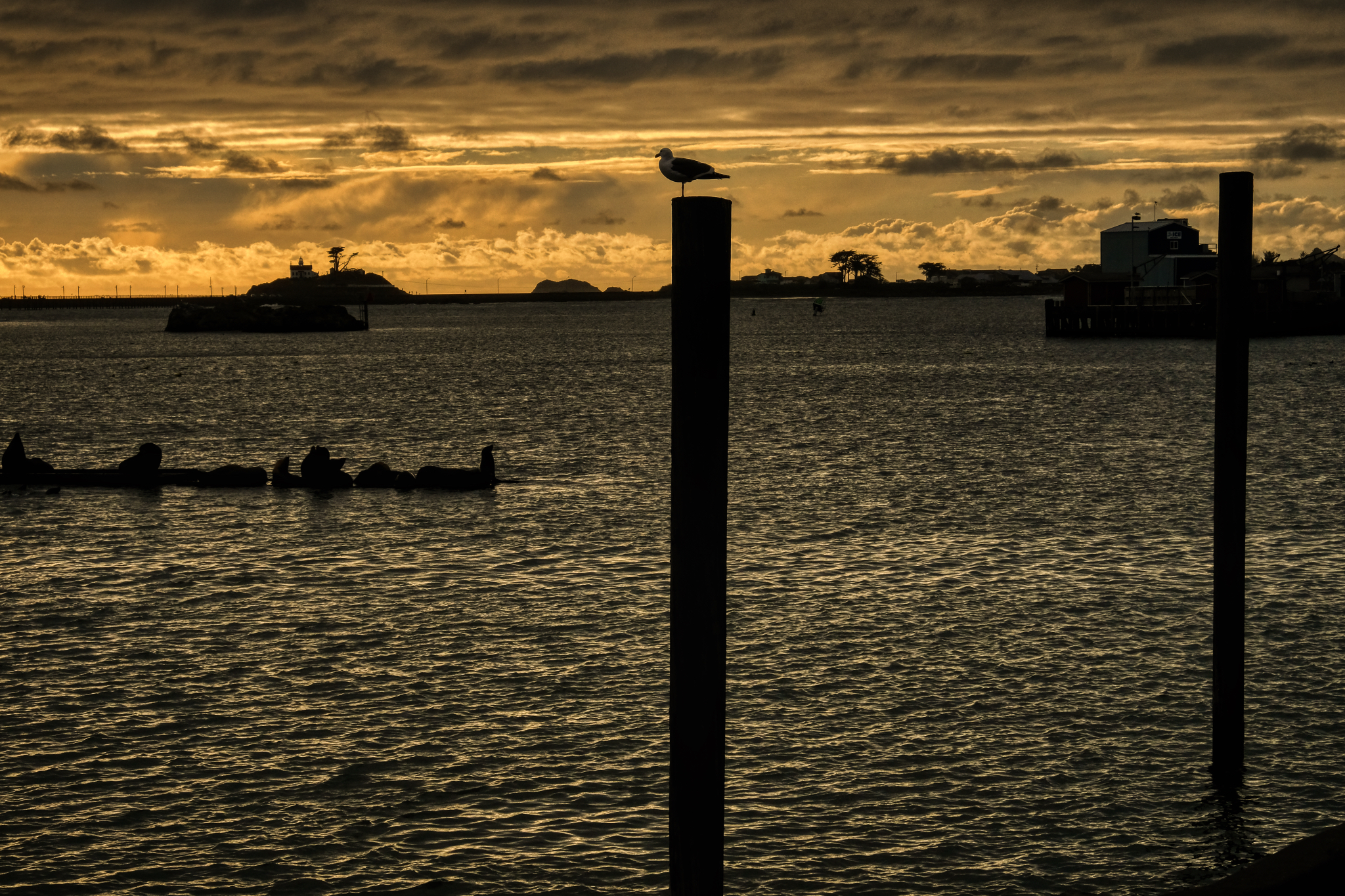 The Crescent City harbor . . . a gull supervises a log-full of sea lions.
The Crescent City harbor . . . a gull supervises a log-full of sea lions.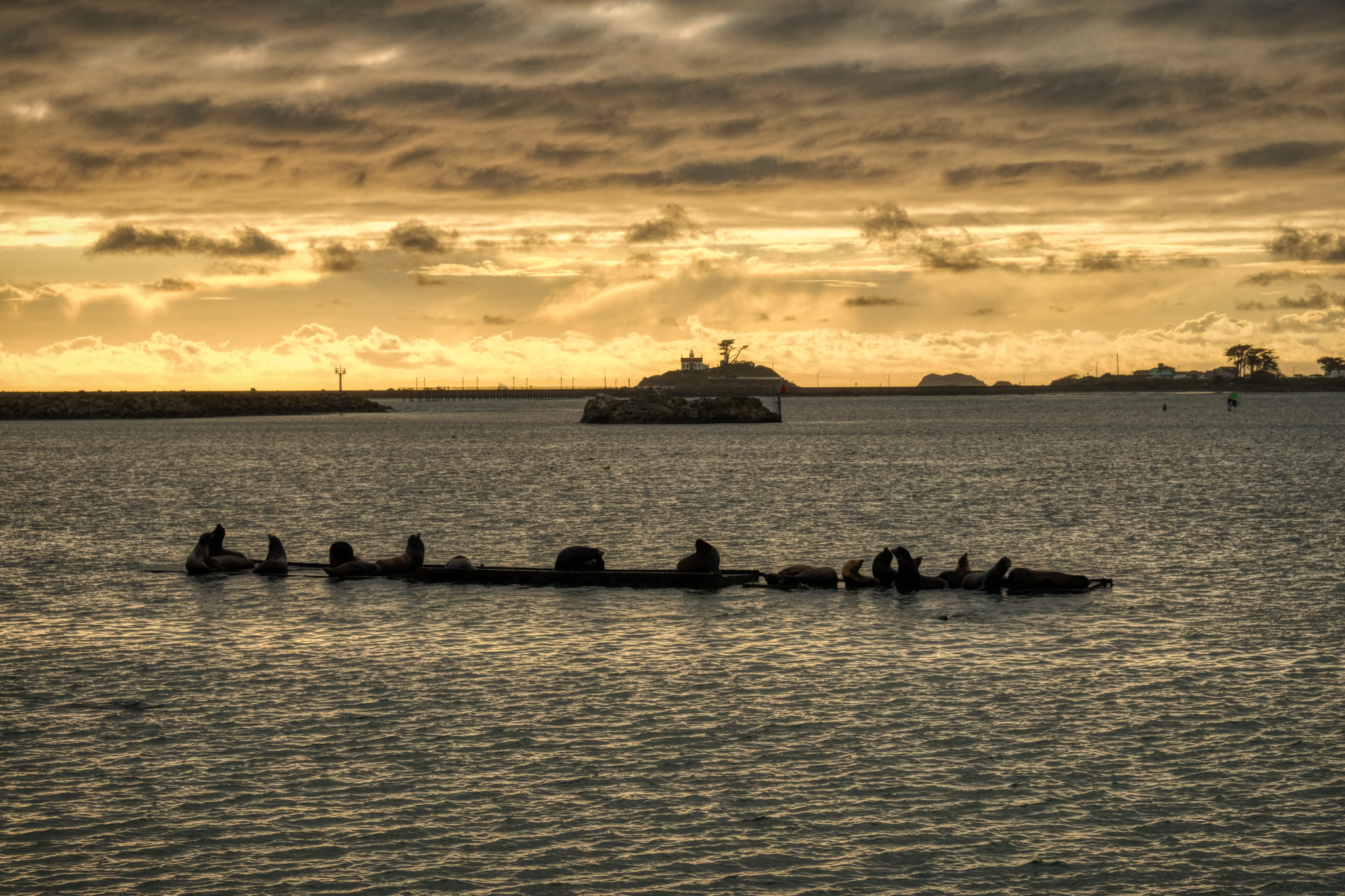 Sea lions on a log in the sunset.
Sea lions on a log in the sunset.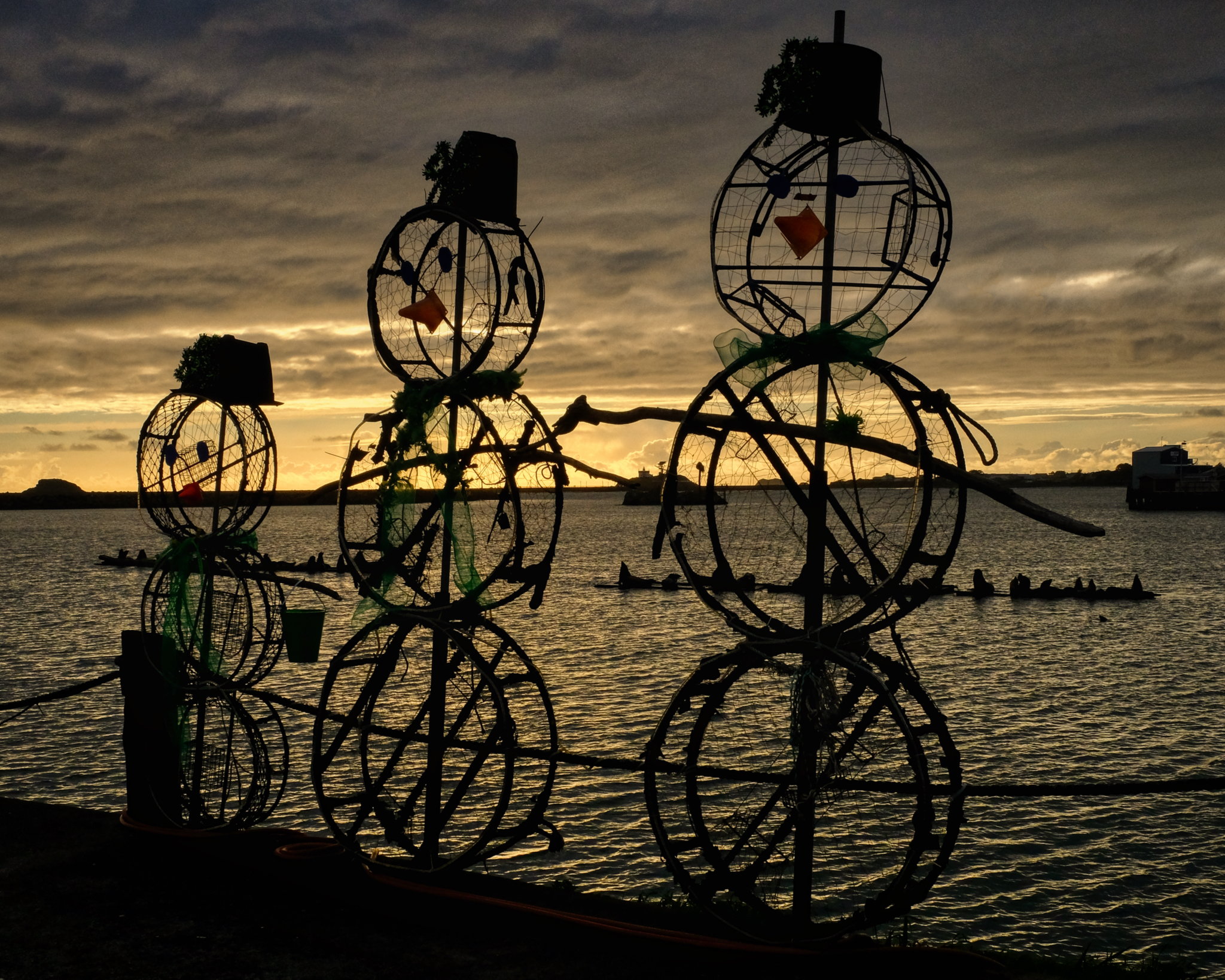 It was early April . . . time to take down the Christmas decorations . . . but cute.
It was early April . . . time to take down the Christmas decorations . . . but cute.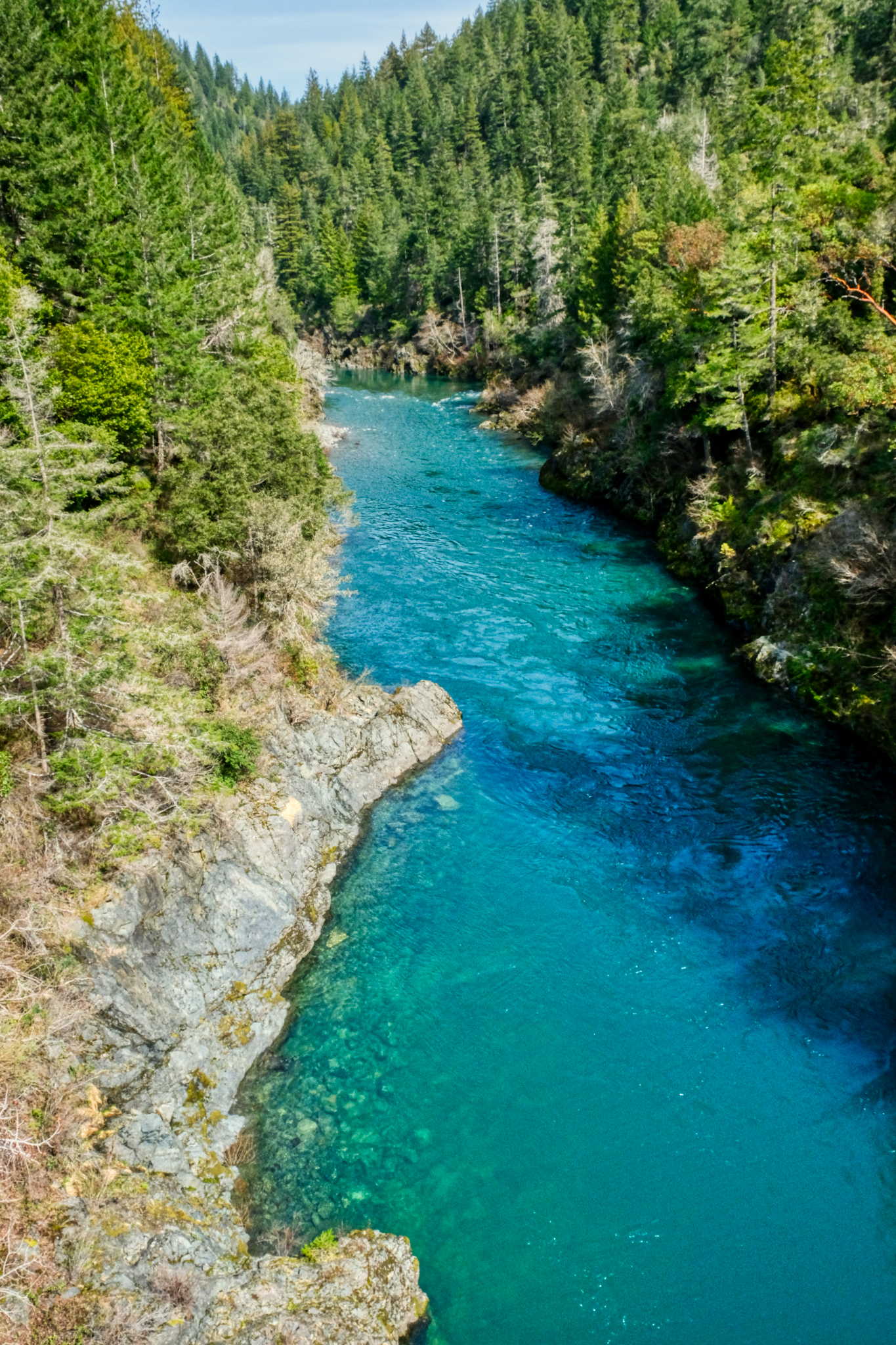 Crossing the Smith River on the way to a redwood stand.
Crossing the Smith River on the way to a redwood stand.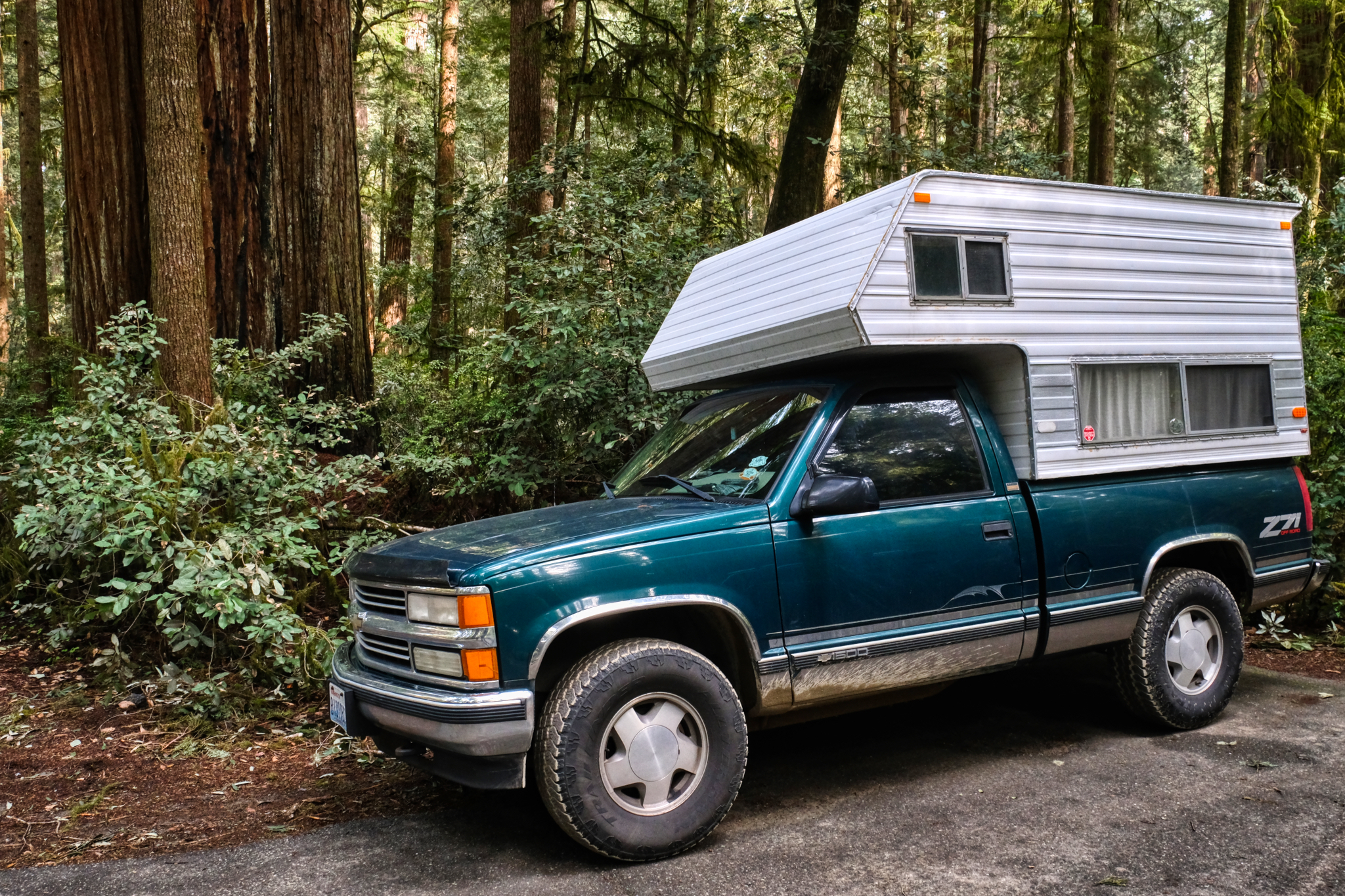 Arriving at Jedediah Smith Redwoods State Park.
Arriving at Jedediah Smith Redwoods State Park.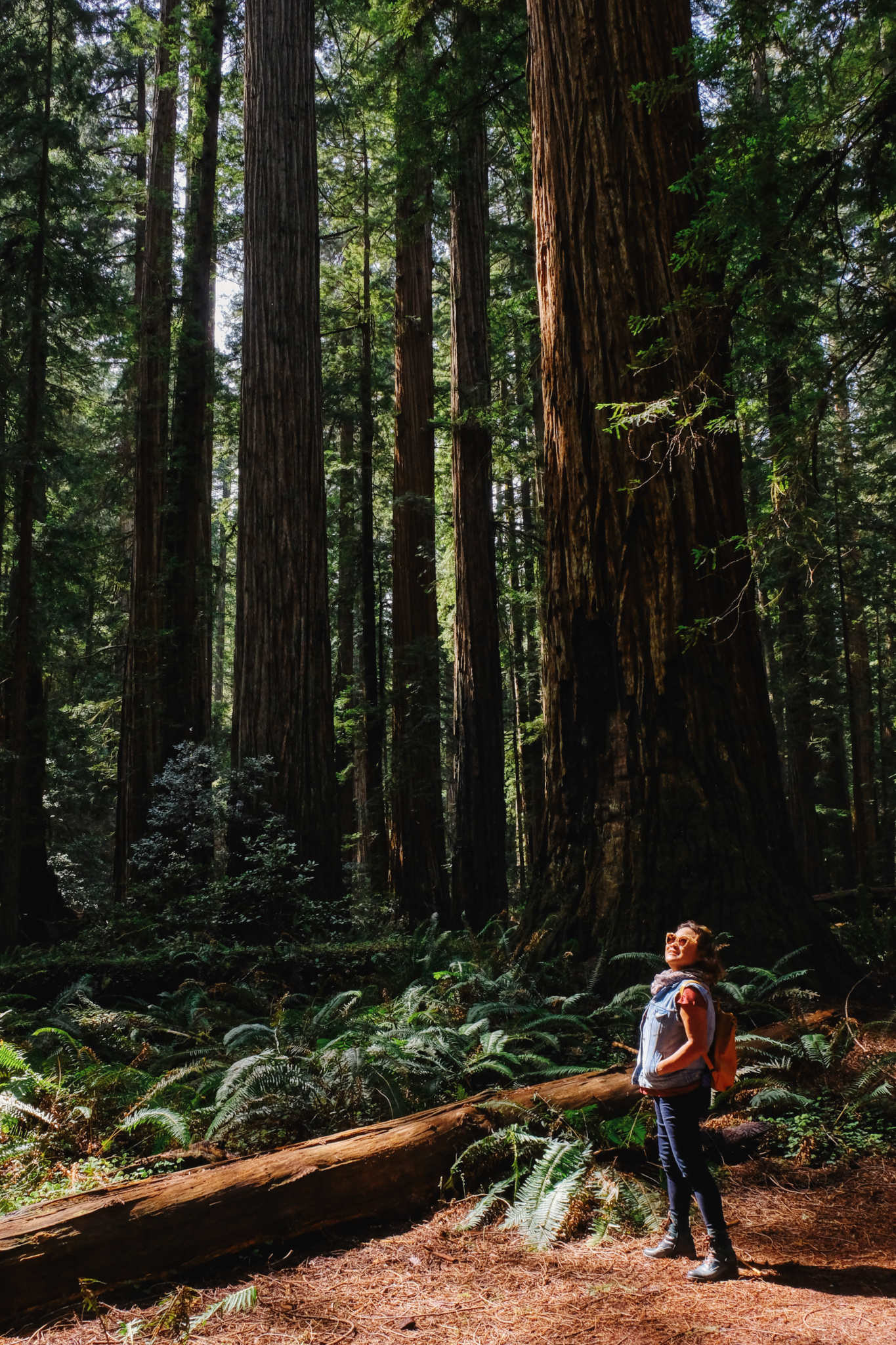 One of many foreign tourists that visit the giant redwoods of California every year.
One of many foreign tourists that visit the giant redwoods of California every year.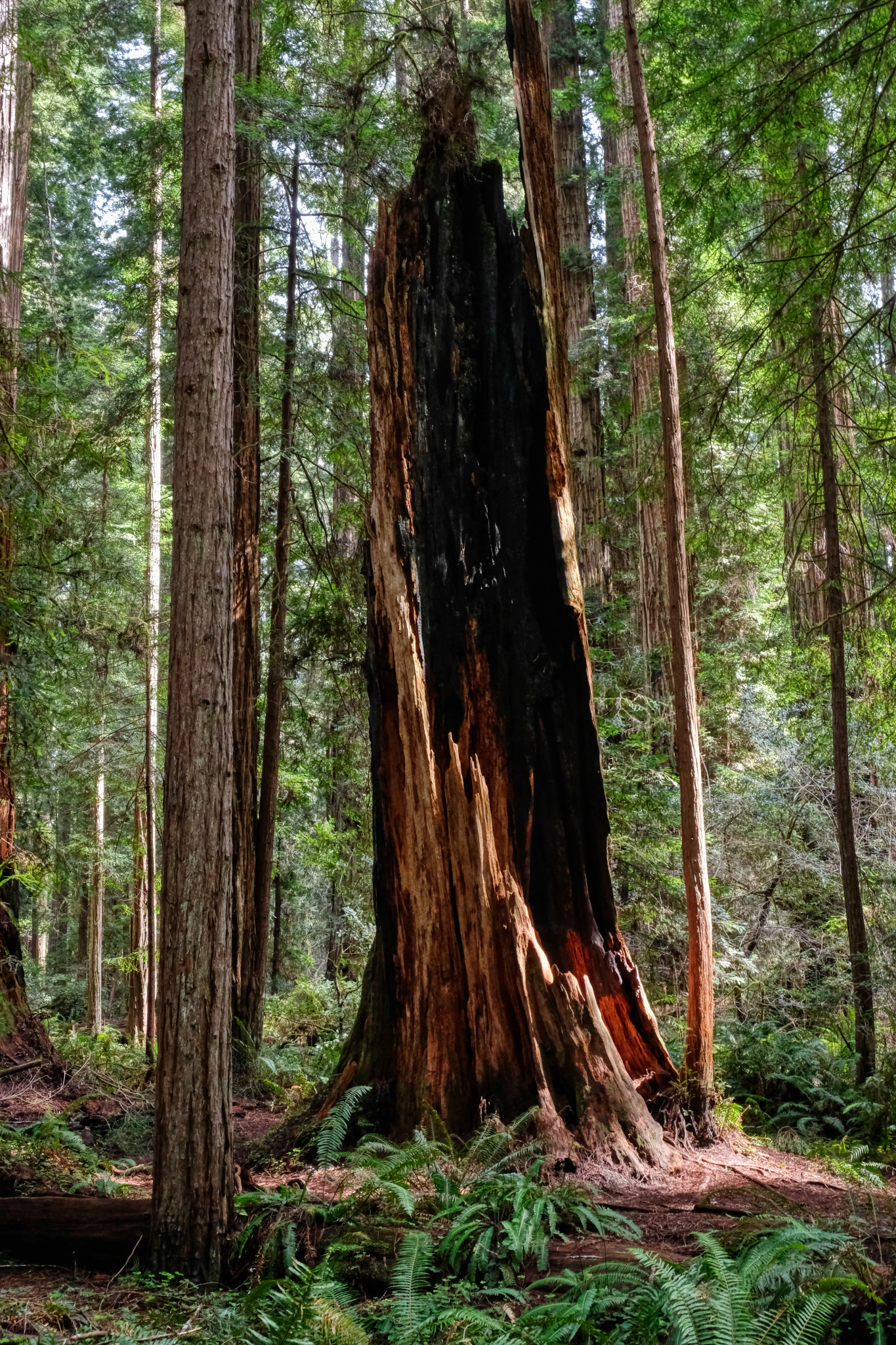 A fantastically dramatic redwood snag left from some past burn.
A fantastically dramatic redwood snag left from some past burn.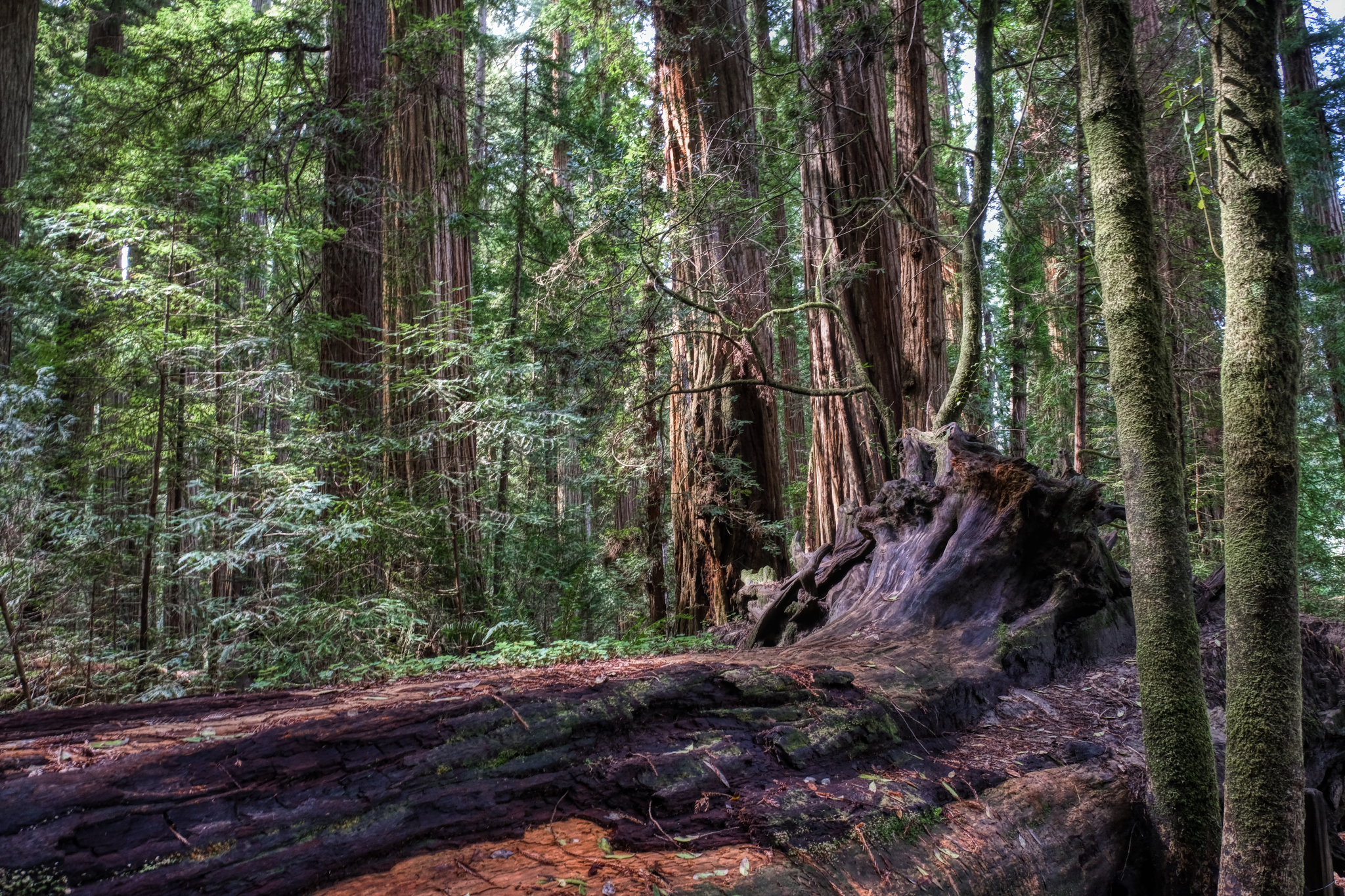 Ancient giant redwoods.
Ancient giant redwoods.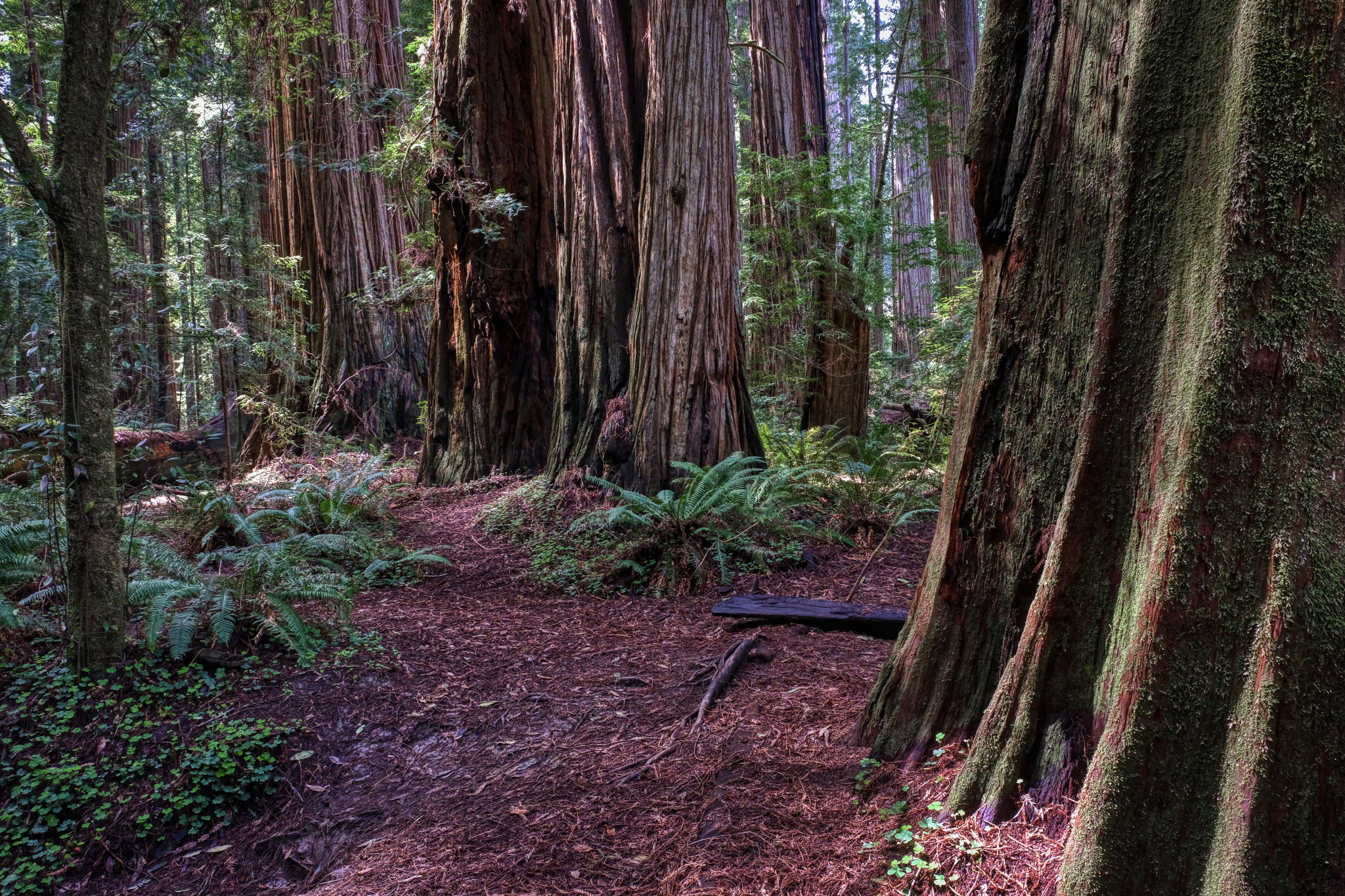 We walked for hours on the park paths among the towering redwoods.
We walked for hours on the park paths among the towering redwoods.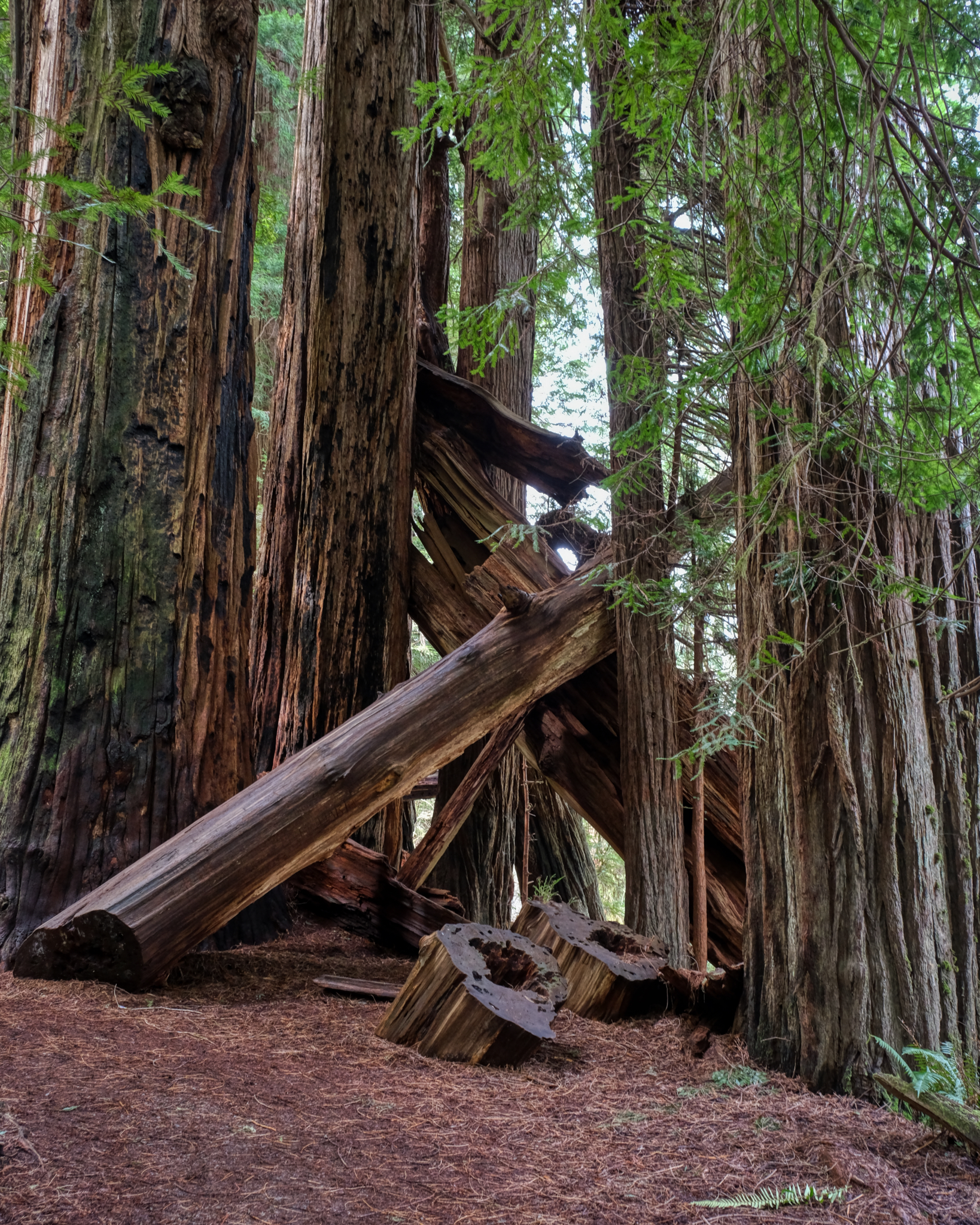 The park service did a good job of keeping the paths easily accessible by cutting back fallen redwoods.
The park service did a good job of keeping the paths easily accessible by cutting back fallen redwoods.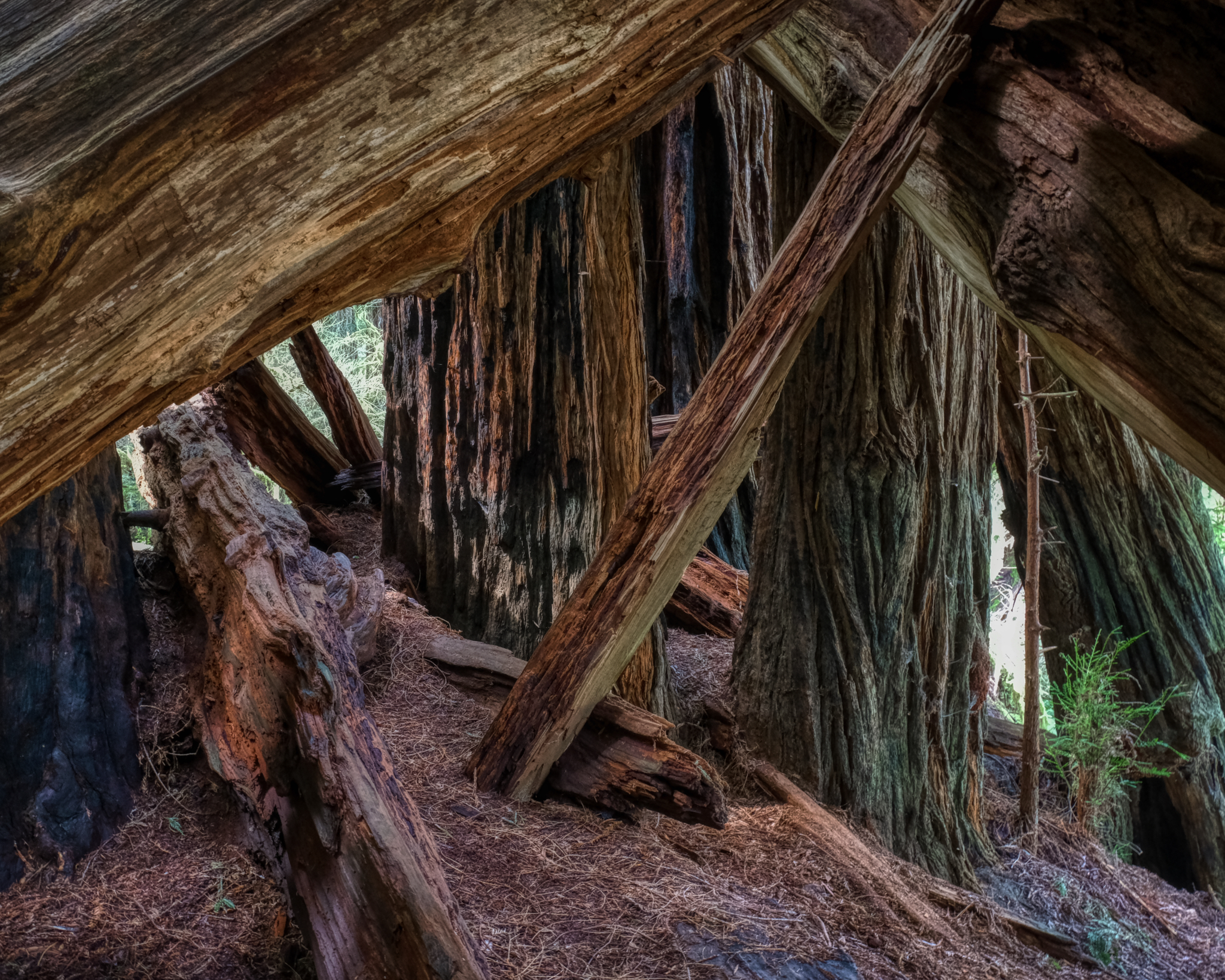 An incredible space, line, color.
An incredible space, line, color.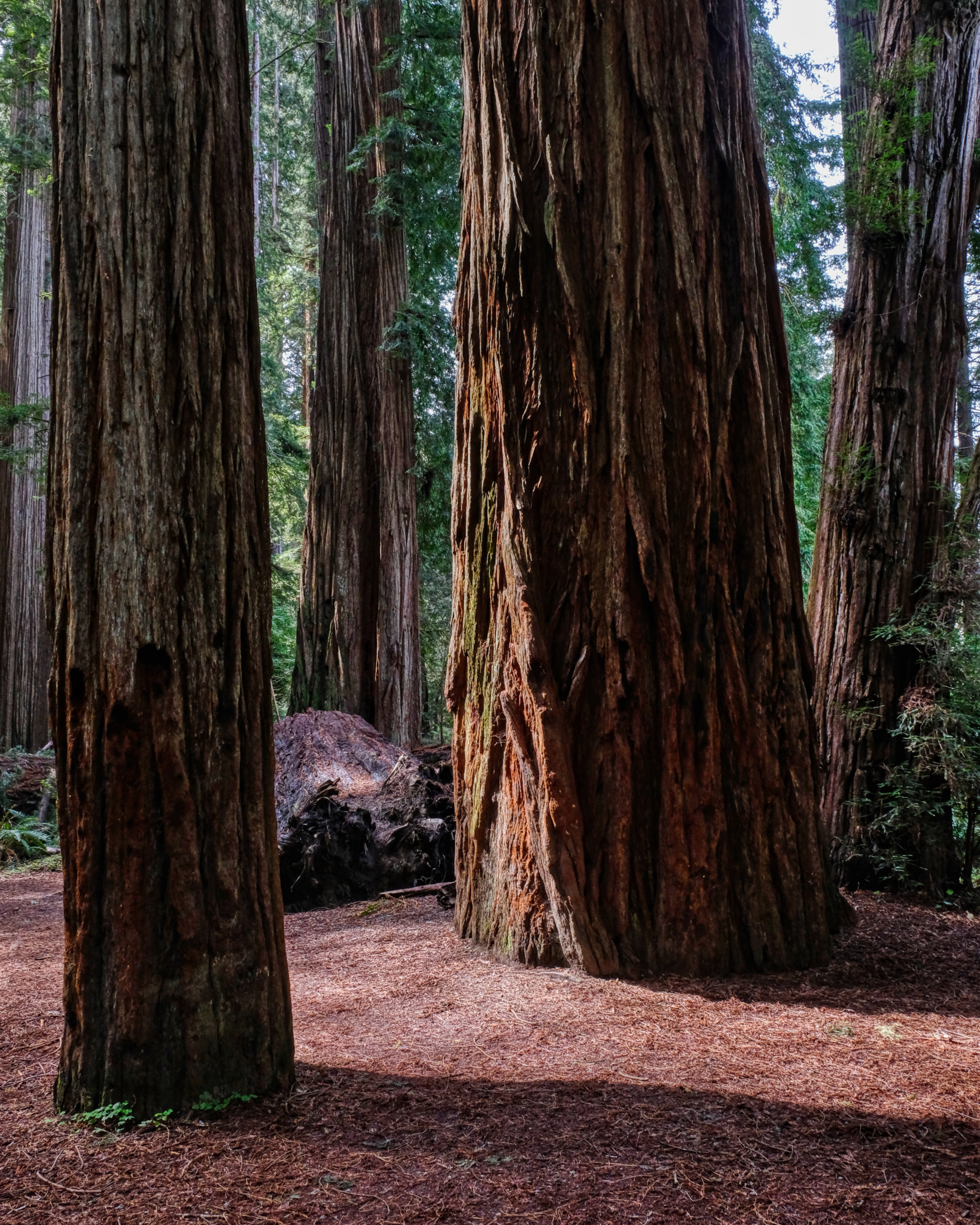 Ancient plant spirits . . .
Ancient plant spirits . . .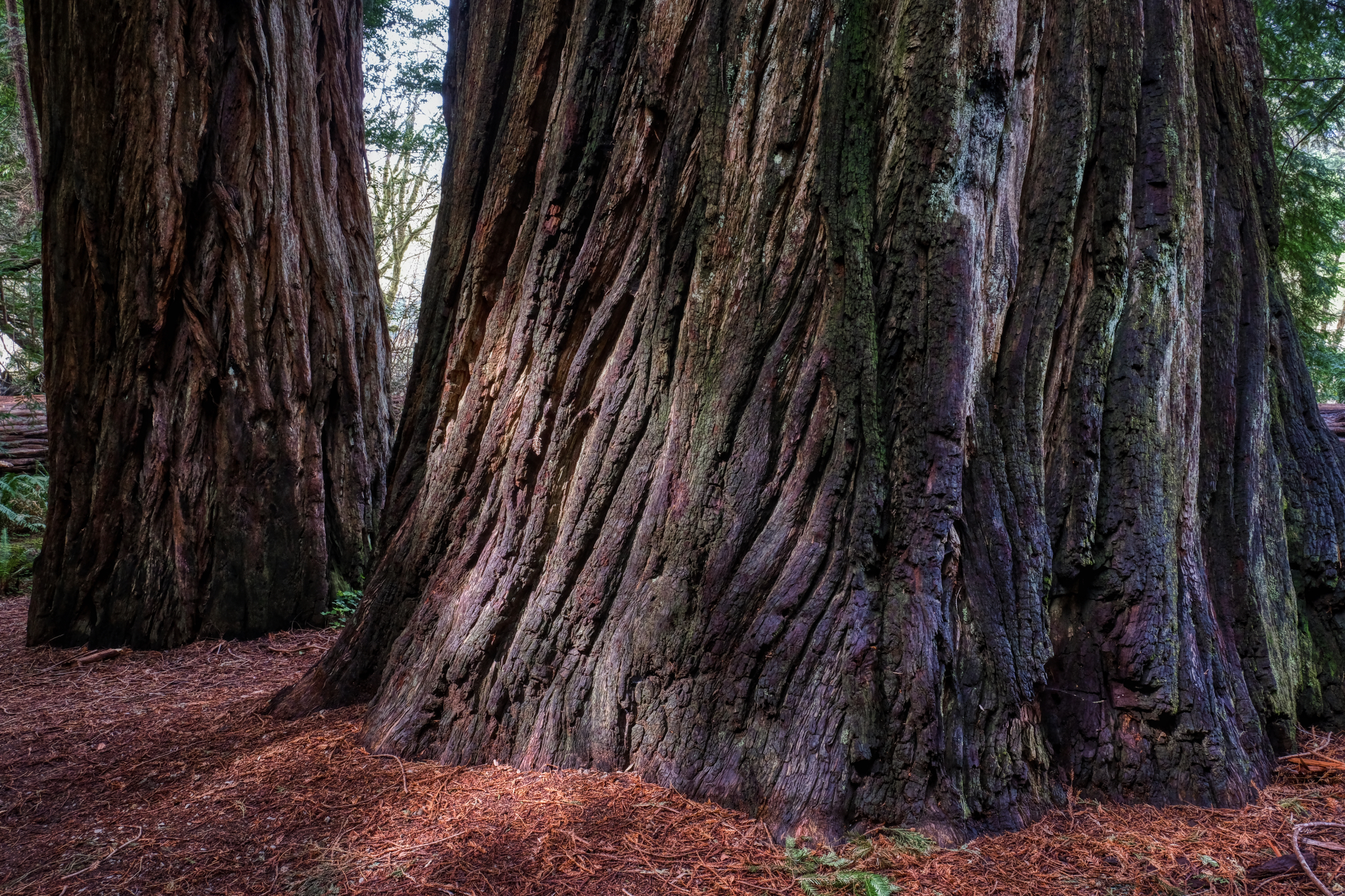 Sturdy, solid, immense, strong, tall . . .
Sturdy, solid, immense, strong, tall . . .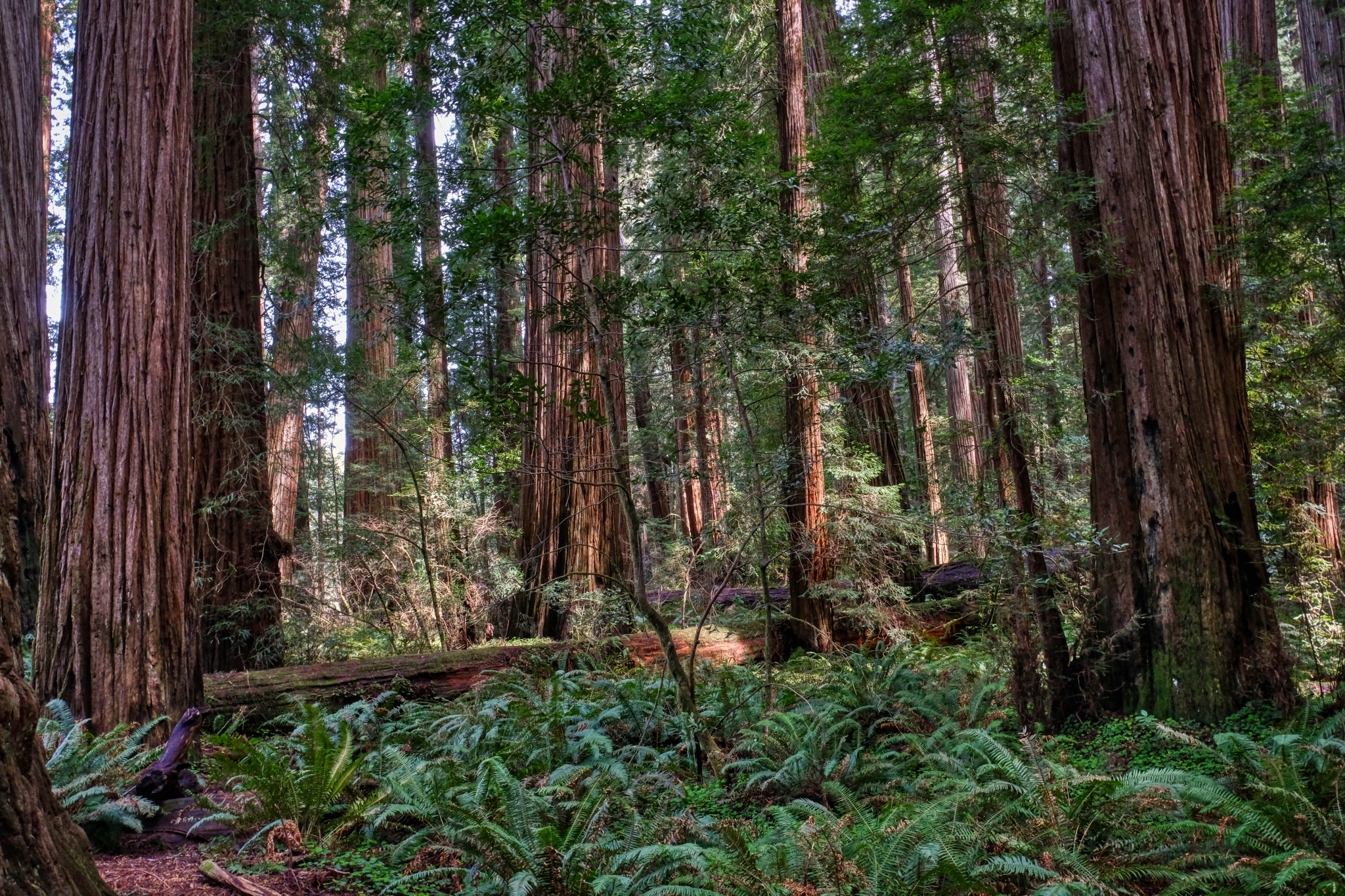 Walking in the giant redwood forest is a spiritual experience.
Walking in the giant redwood forest is a spiritual experience.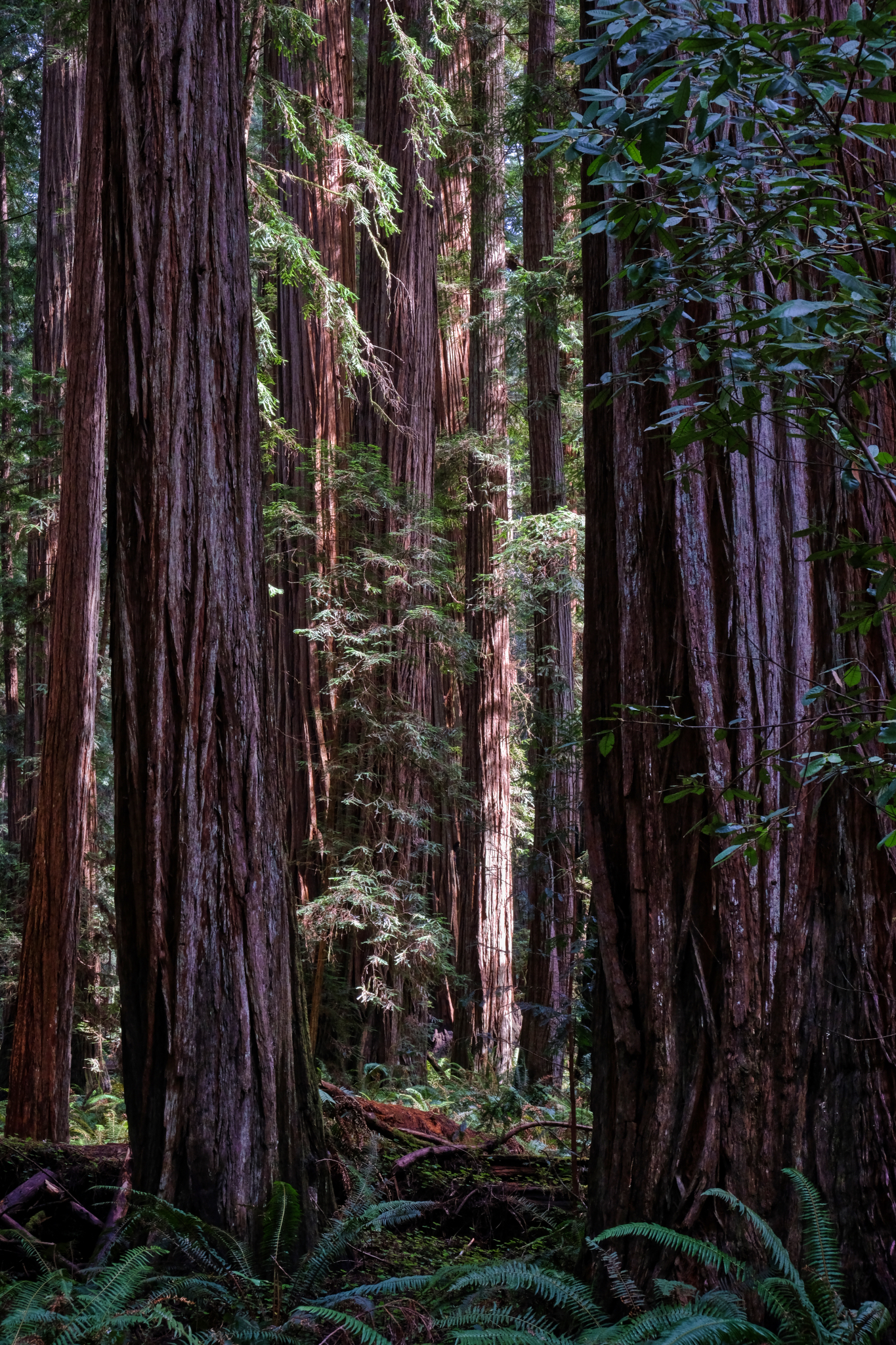 Wonderful shafts of clear, bright light illuminated the forest.
Wonderful shafts of clear, bright light illuminated the forest.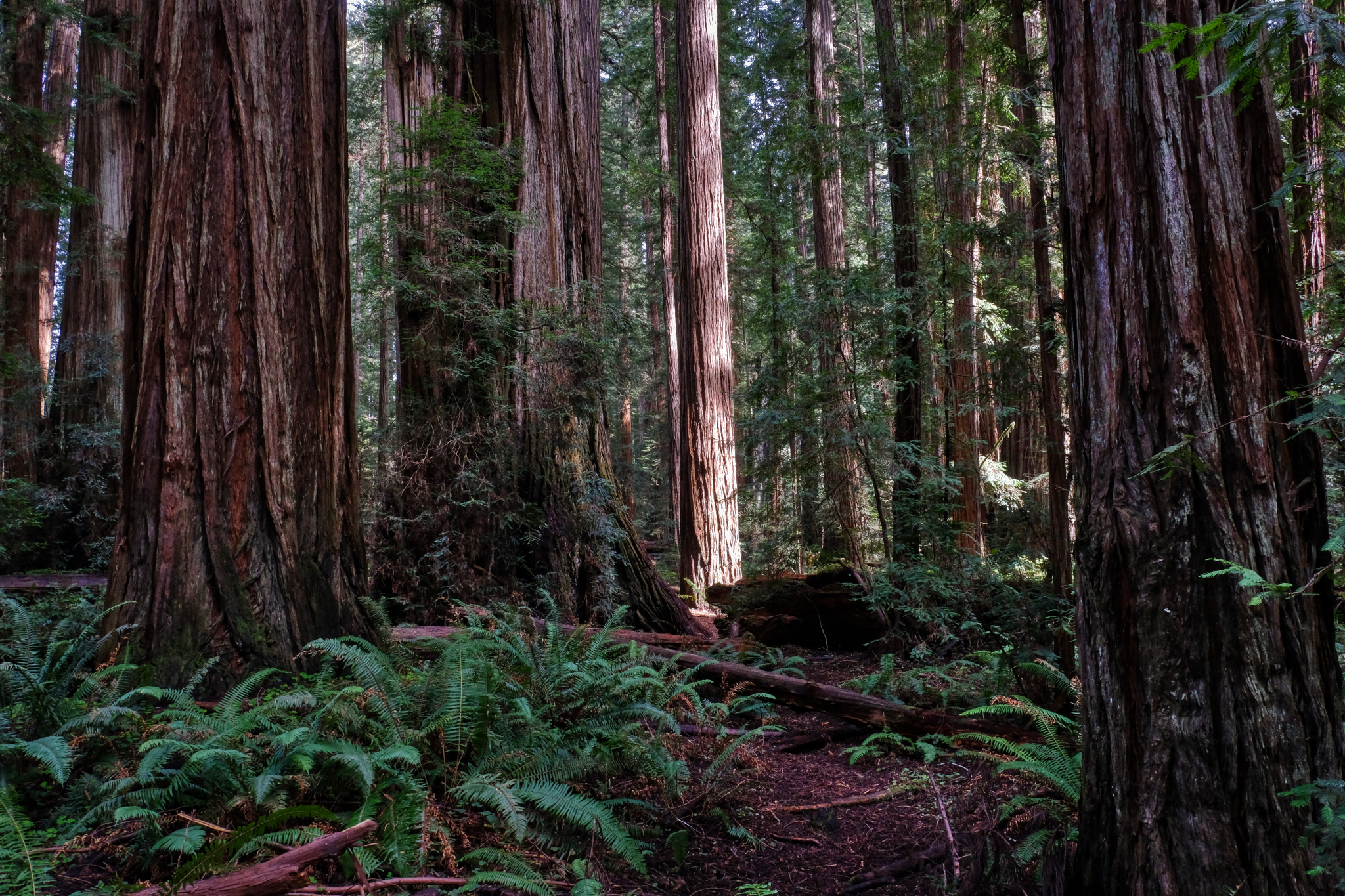 A single lit redwood in the dense forest.
A single lit redwood in the dense forest.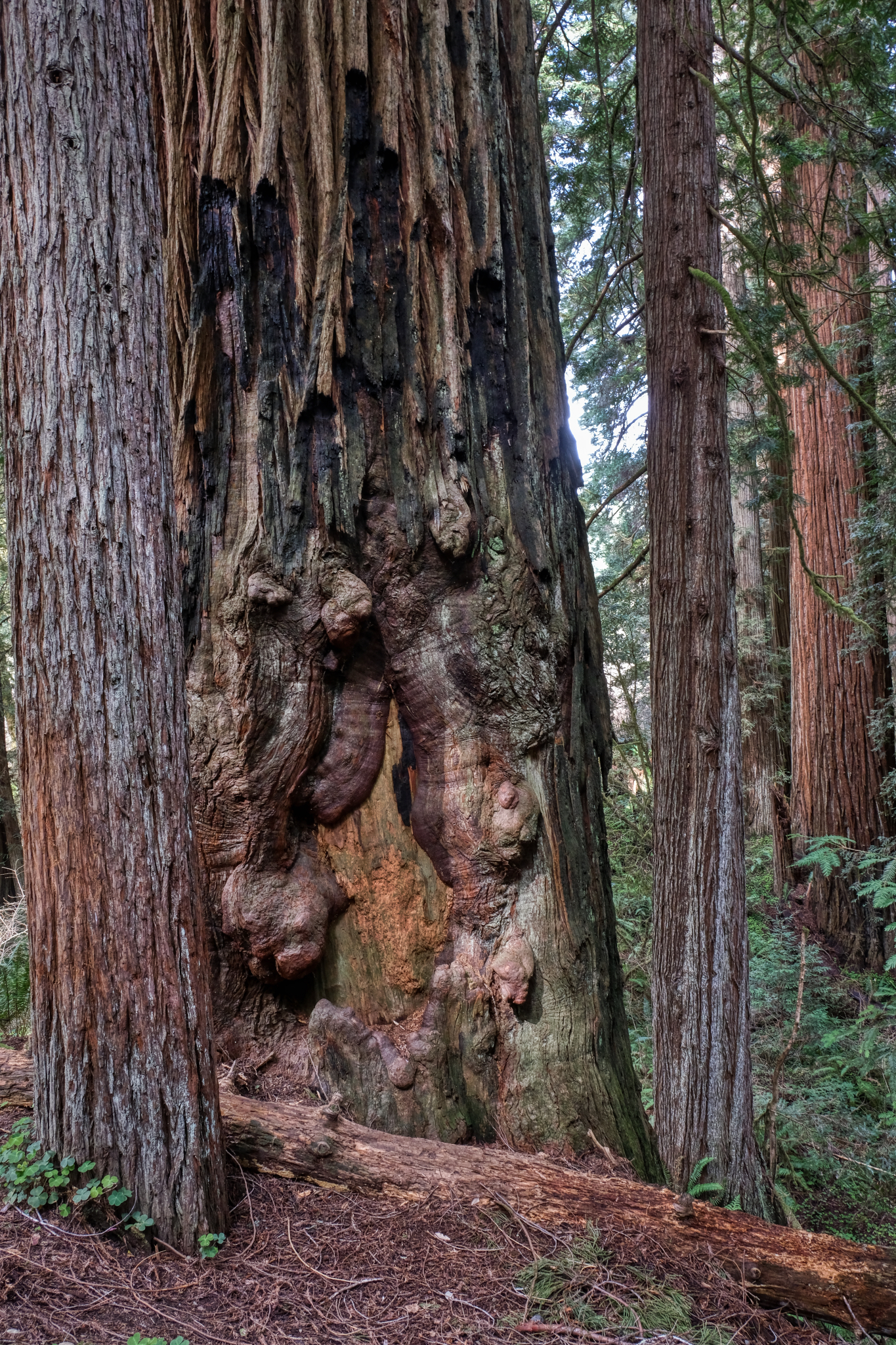 A giant redwood healing an old wound.
A giant redwood healing an old wound.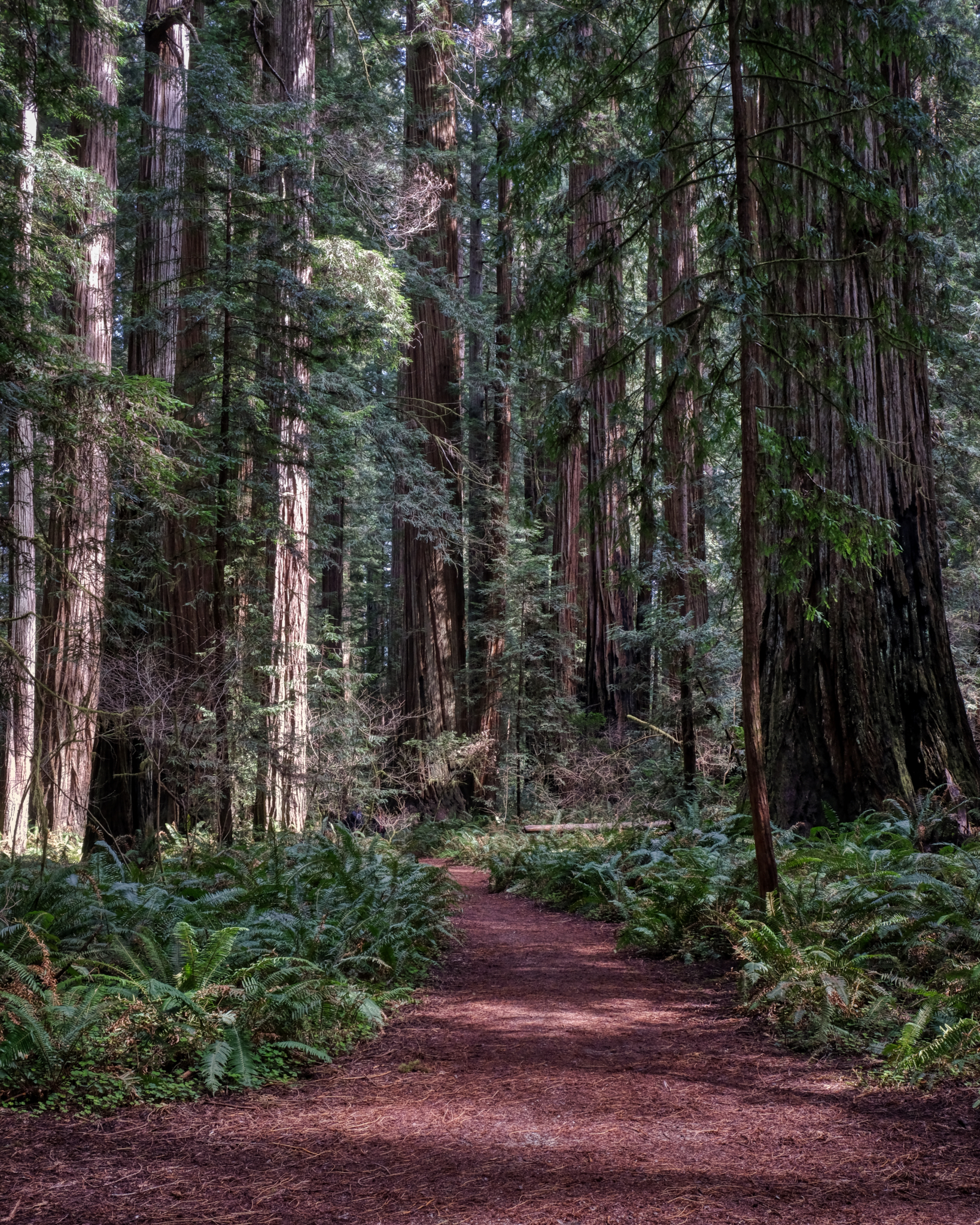 A beautiful path through a magical forest.
A beautiful path through a magical forest.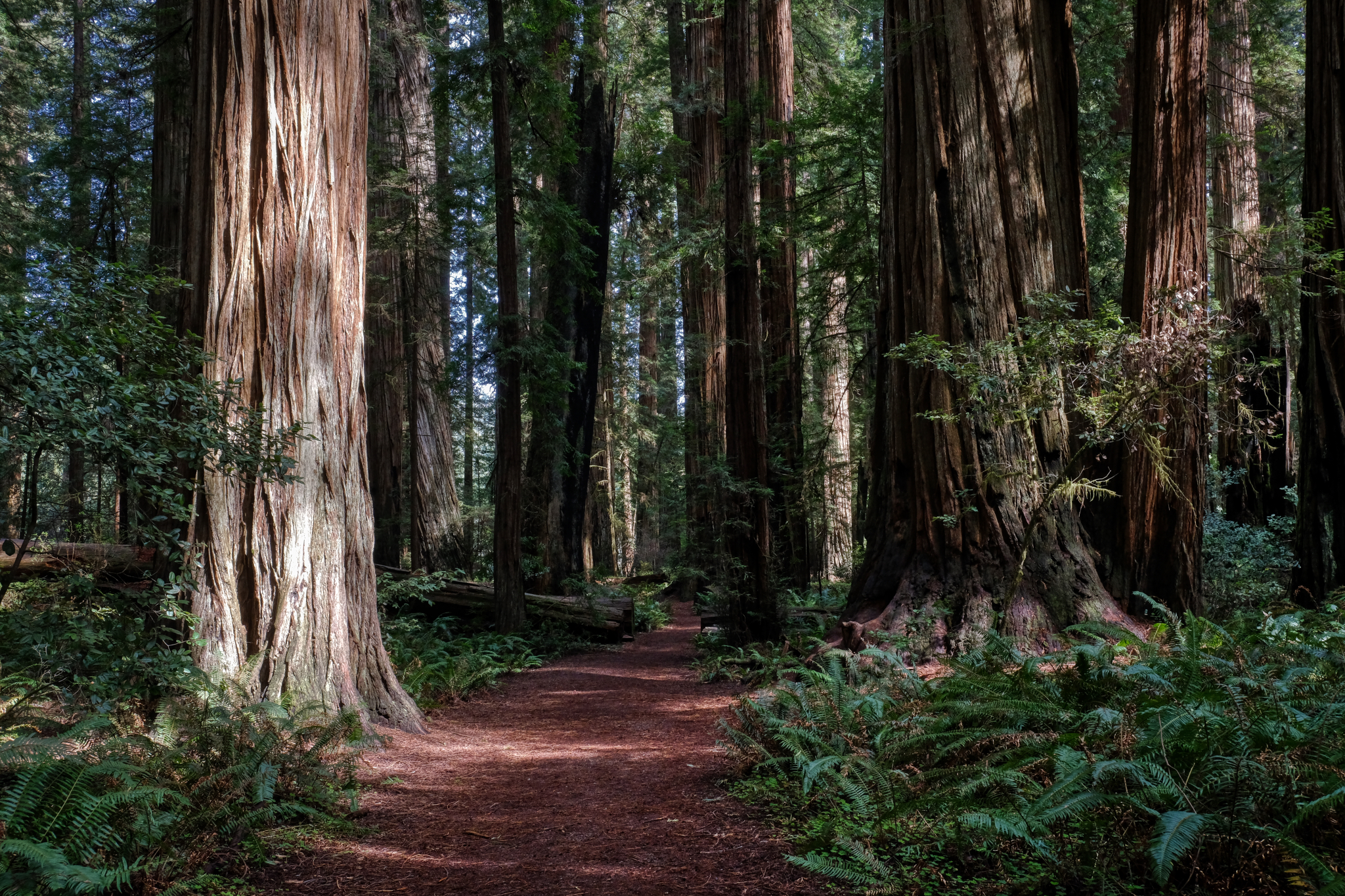 Deeper into the redwood forest.
Deeper into the redwood forest.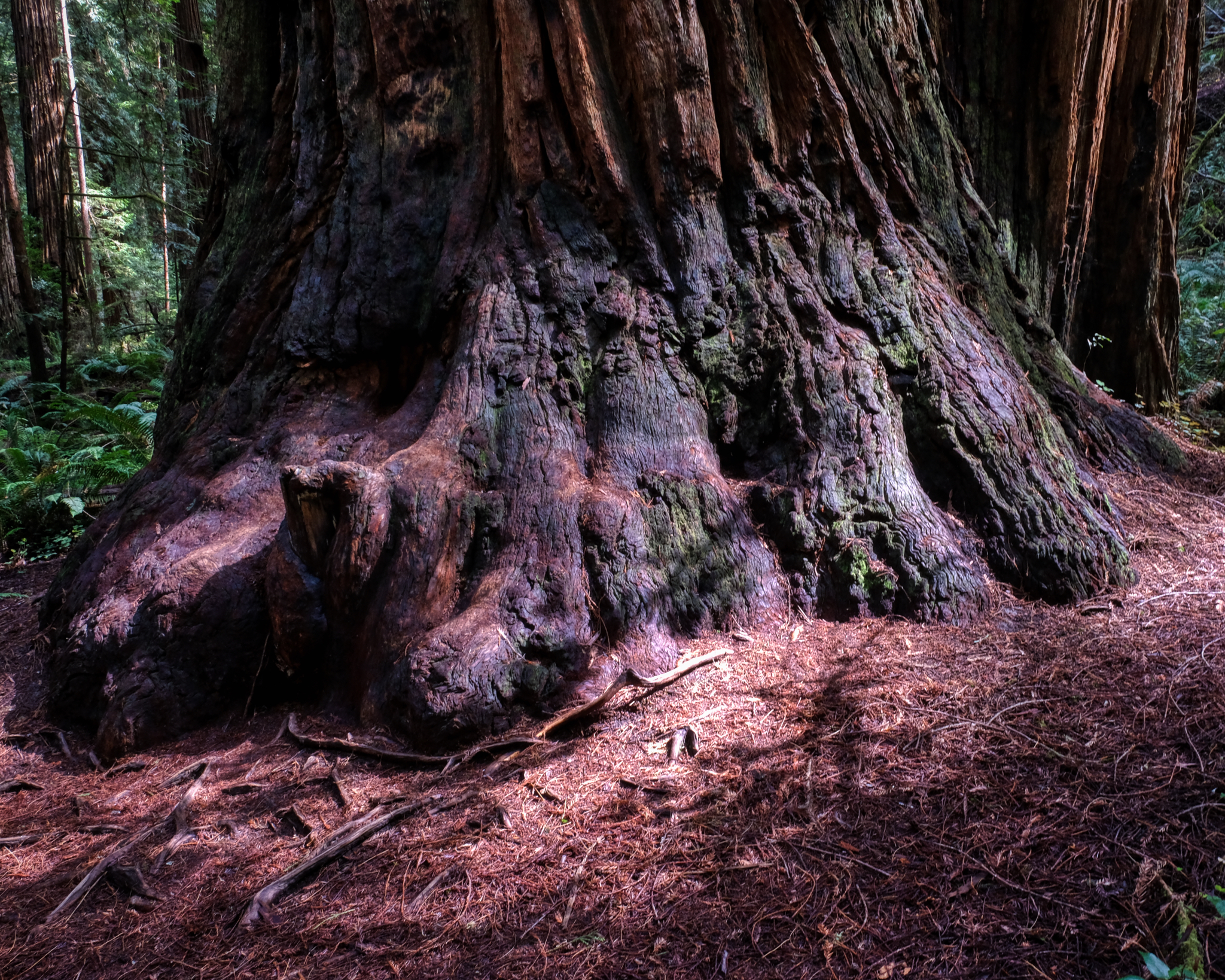 The sturdy foot of a giant redwood.
The sturdy foot of a giant redwood.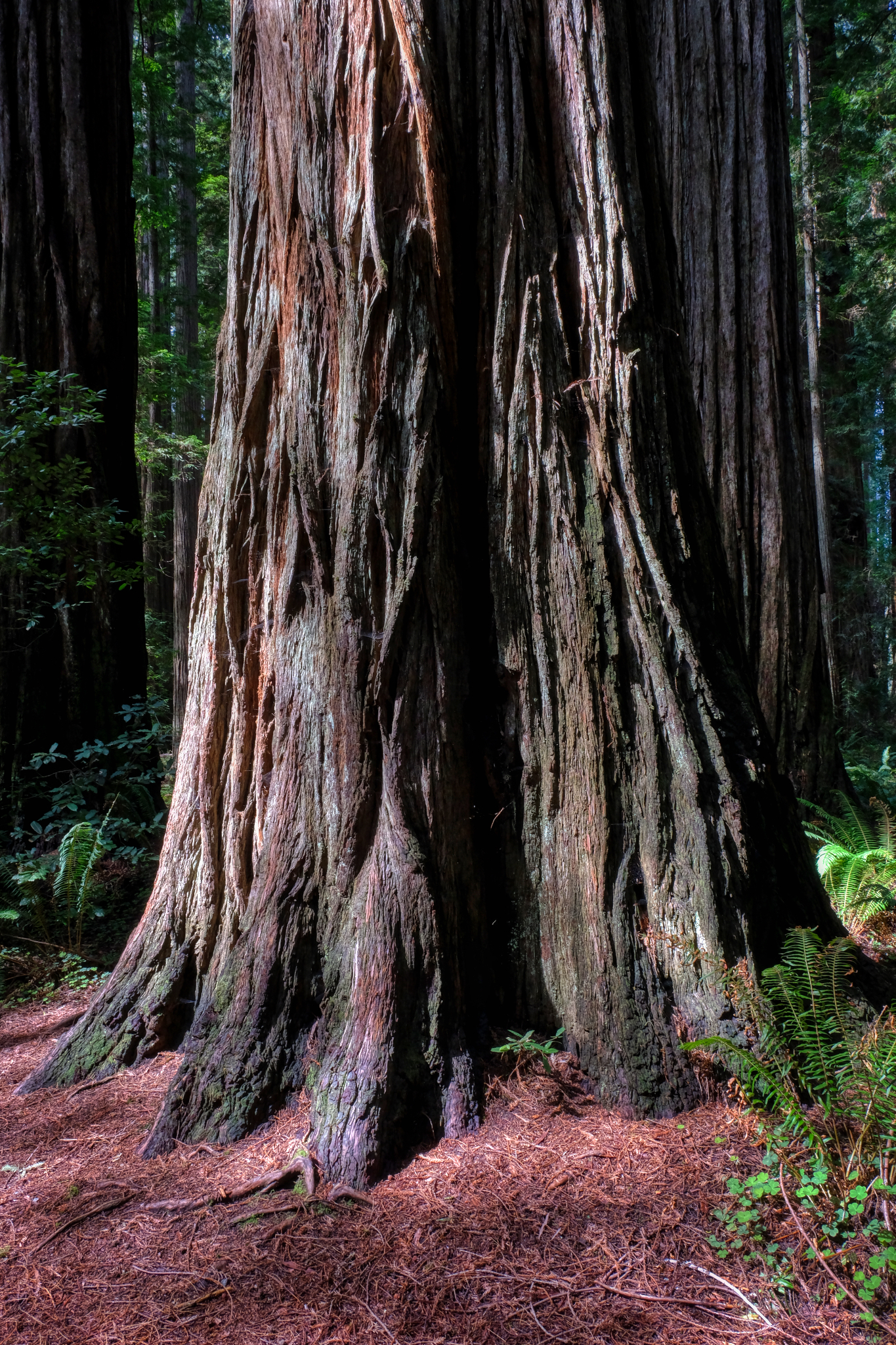 The existential redwood.
The existential redwood.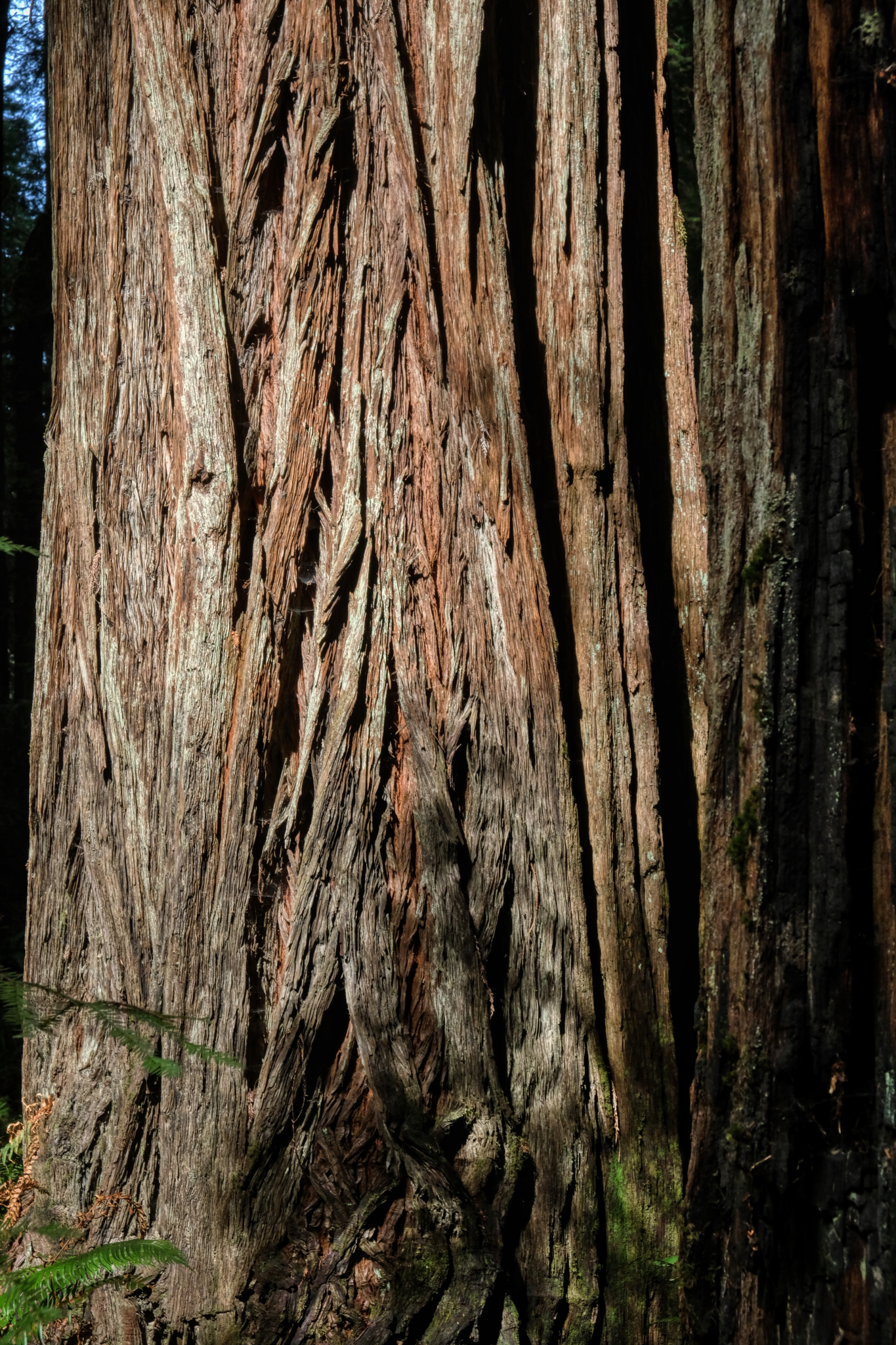 Redwood bark.
Redwood bark.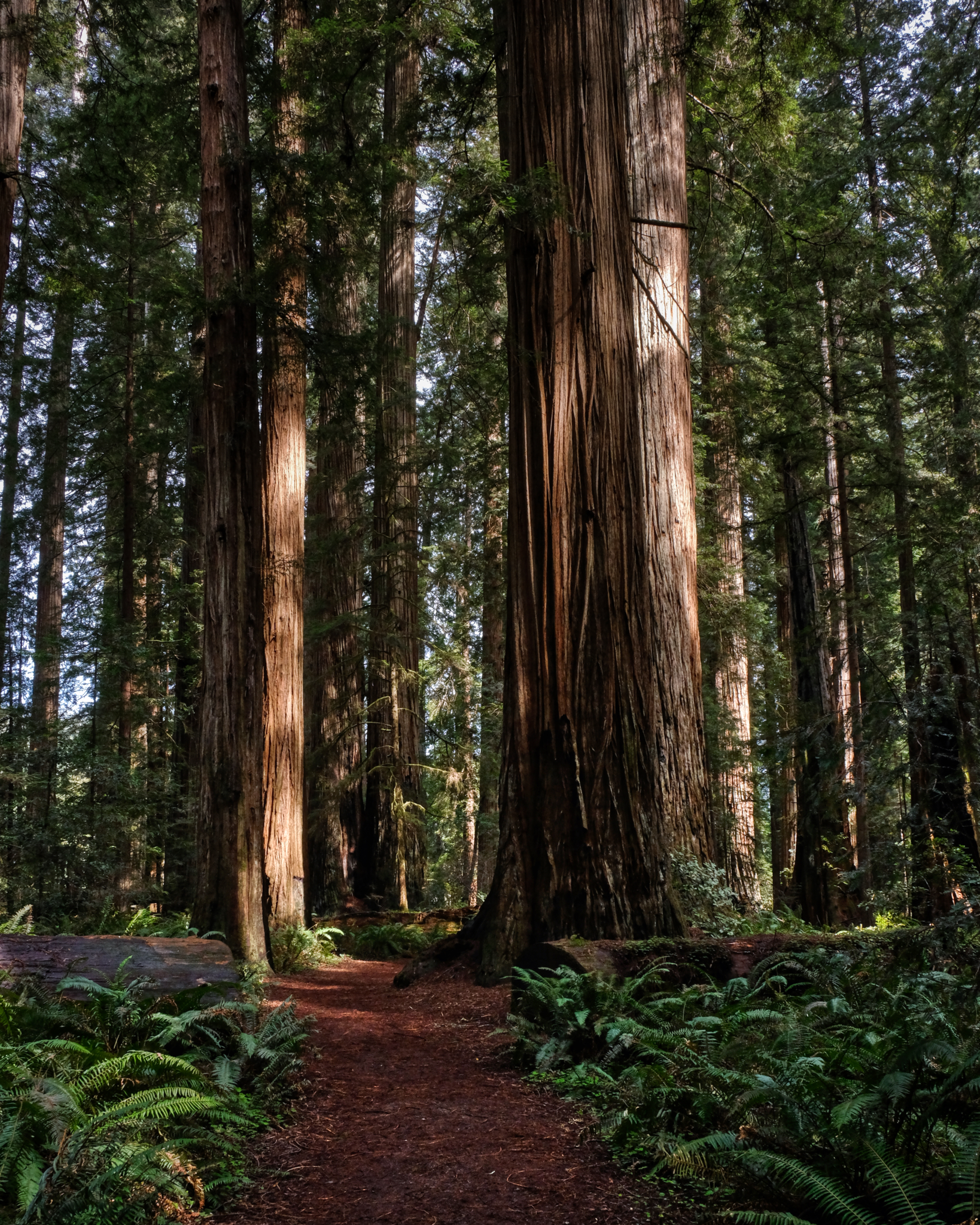 We could have stayed in these woods all day . . . but the call of a seafood dinner beckoned.
We could have stayed in these woods all day . . . but the call of a seafood dinner beckoned.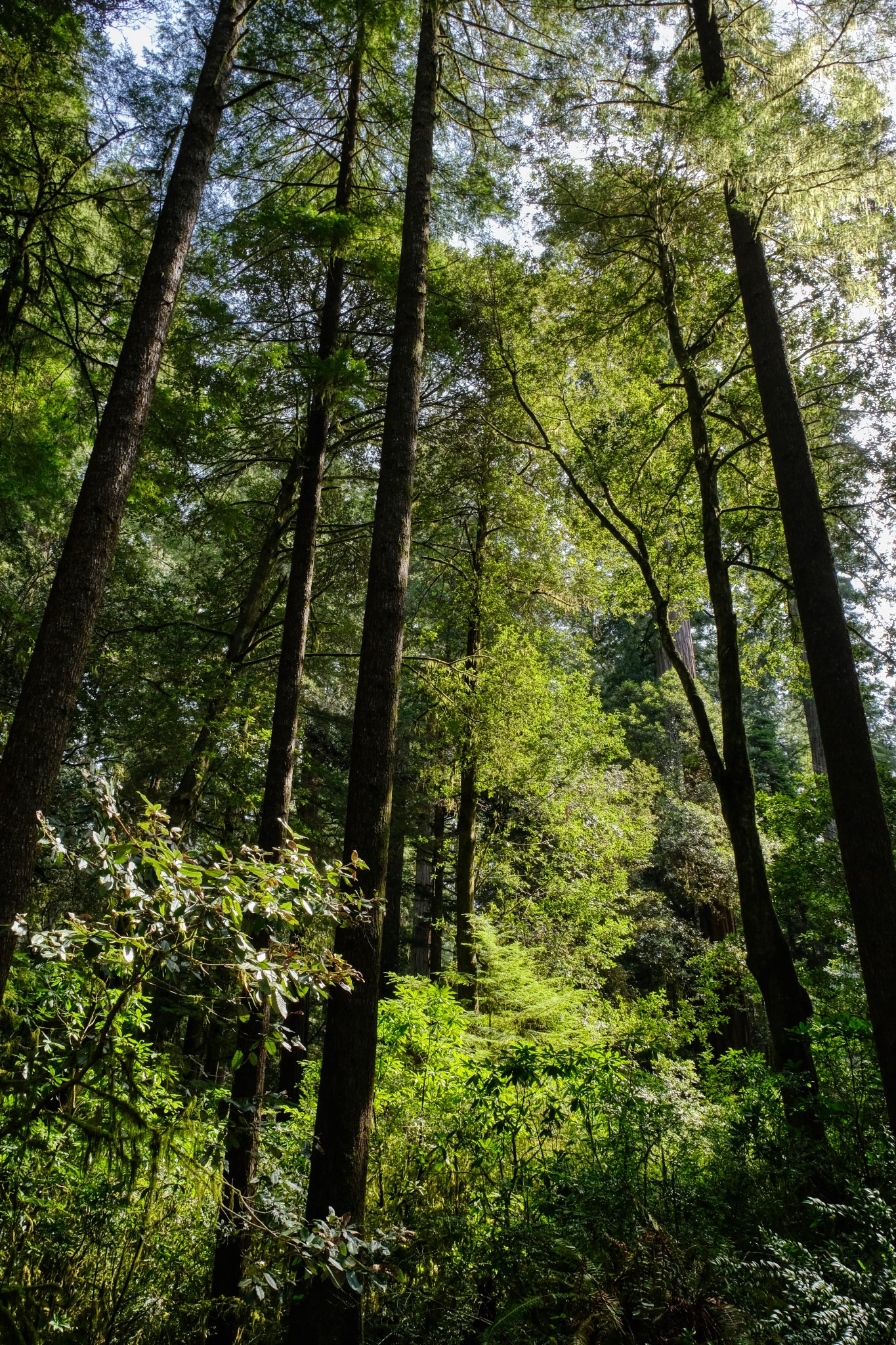 Out through the small trees to the camper . . and then, the next day, back to Keizer, Oregon on I-5.
Out through the small trees to the camper . . and then, the next day, back to Keizer, Oregon on I-5. Dr. Jeff Harper
Dr. Jeff Harper
Redwood Burls
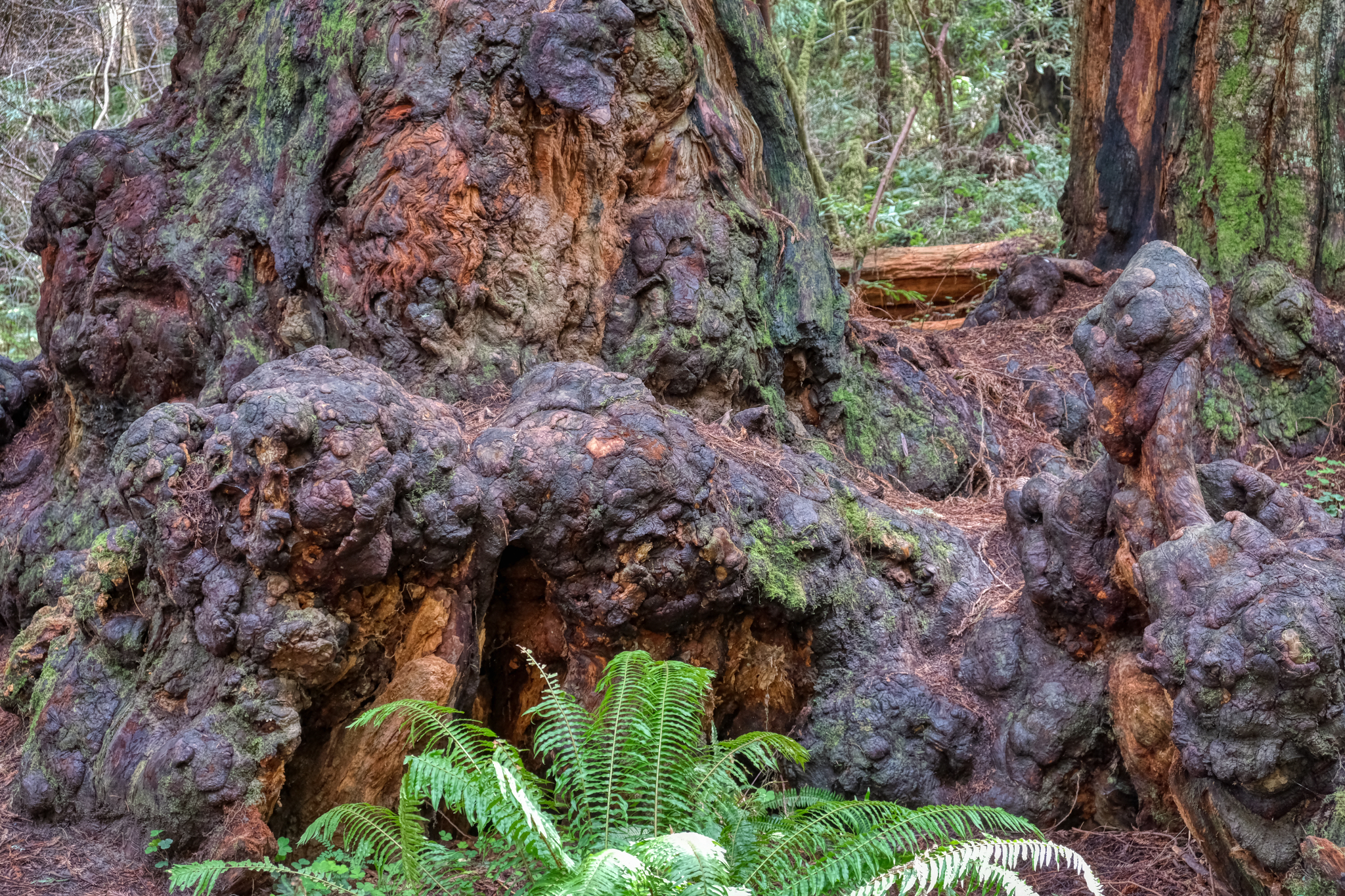 I became fascinated with the redwood burls in this forest.
I became fascinated with the redwood burls in this forest.
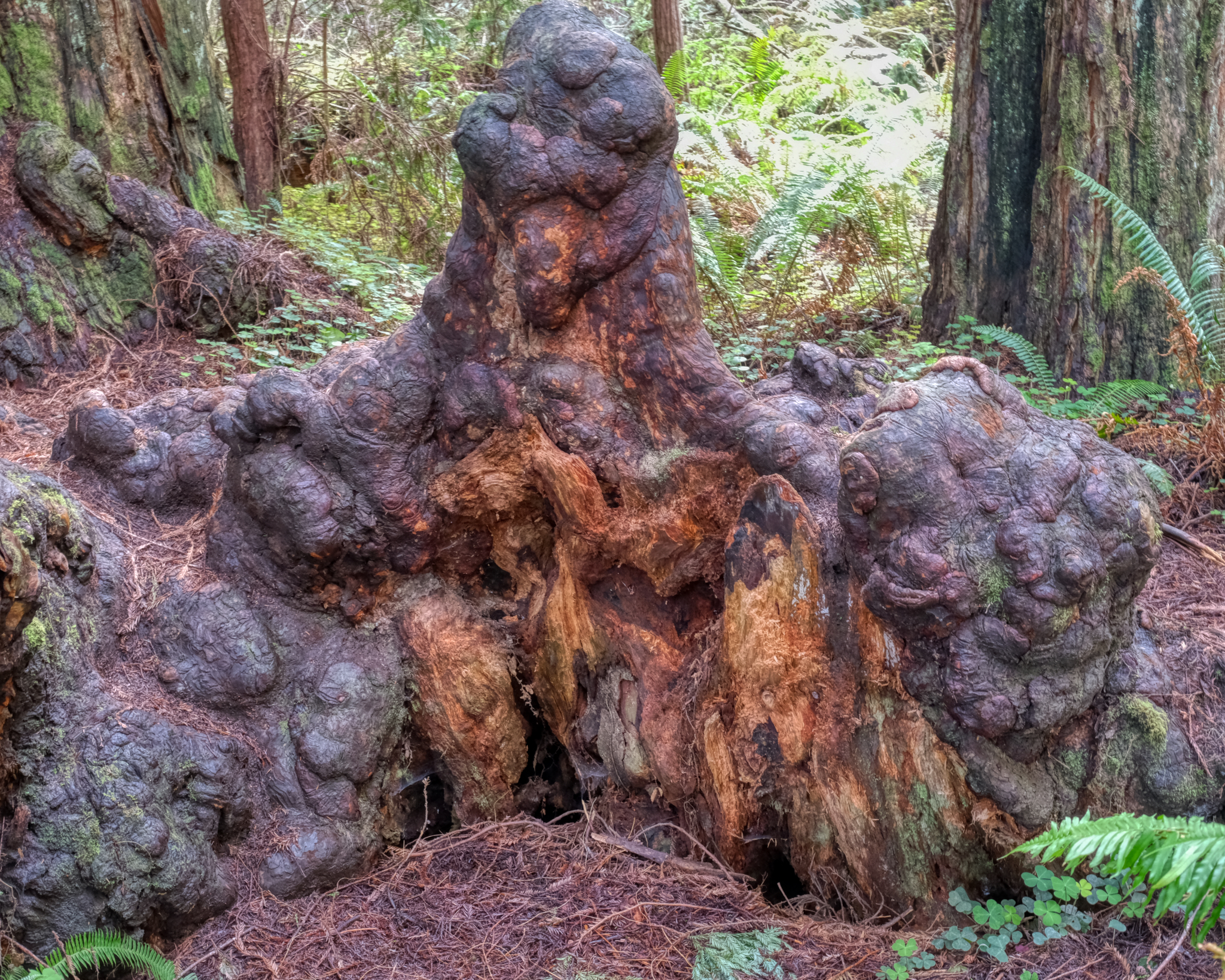 Burls are growth gone astray . . .
Burls are growth gone astray . . .
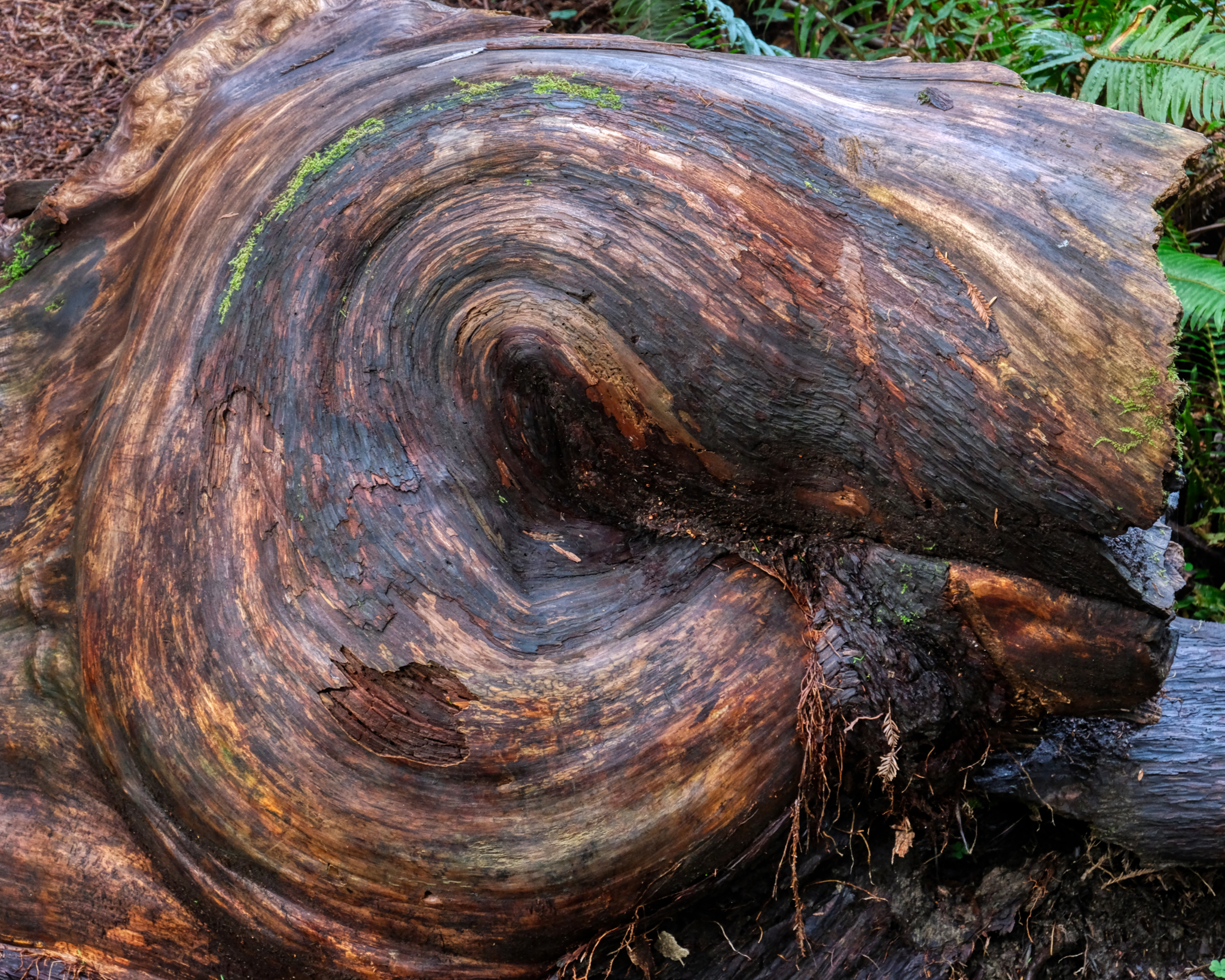 Every burl is different.
Every burl is different.
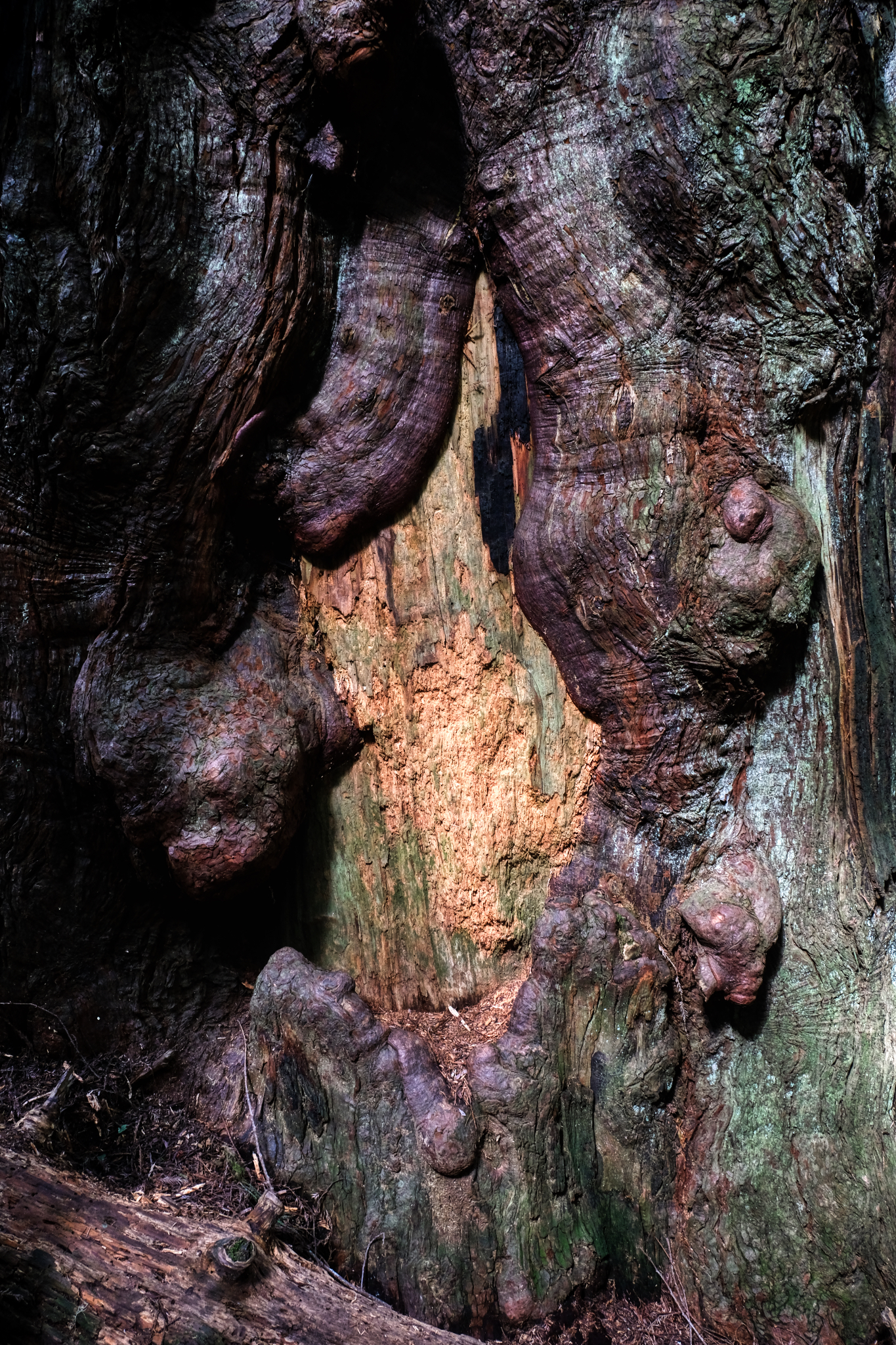 fascinating.
fascinating.
Samut Songkhran & Amphawa Village - A Good Day Out and About in Thailand
 Sunday, May 26, 2019 at 2:16PM
Sunday, May 26, 2019 at 2:16PM 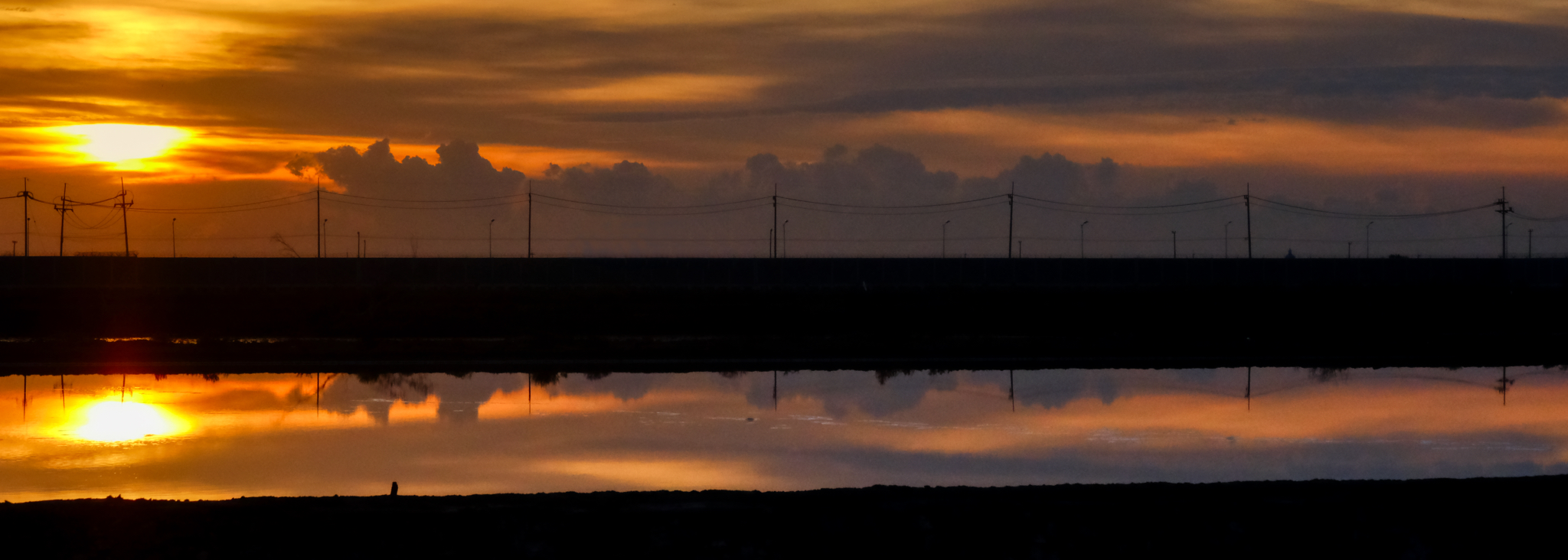 Up and out the door at 4:30am to catch the sun rise over the salt pans of Samut Songkhran with a couple of buddies . . . and for a day of photography.
Up and out the door at 4:30am to catch the sun rise over the salt pans of Samut Songkhran with a couple of buddies . . . and for a day of photography.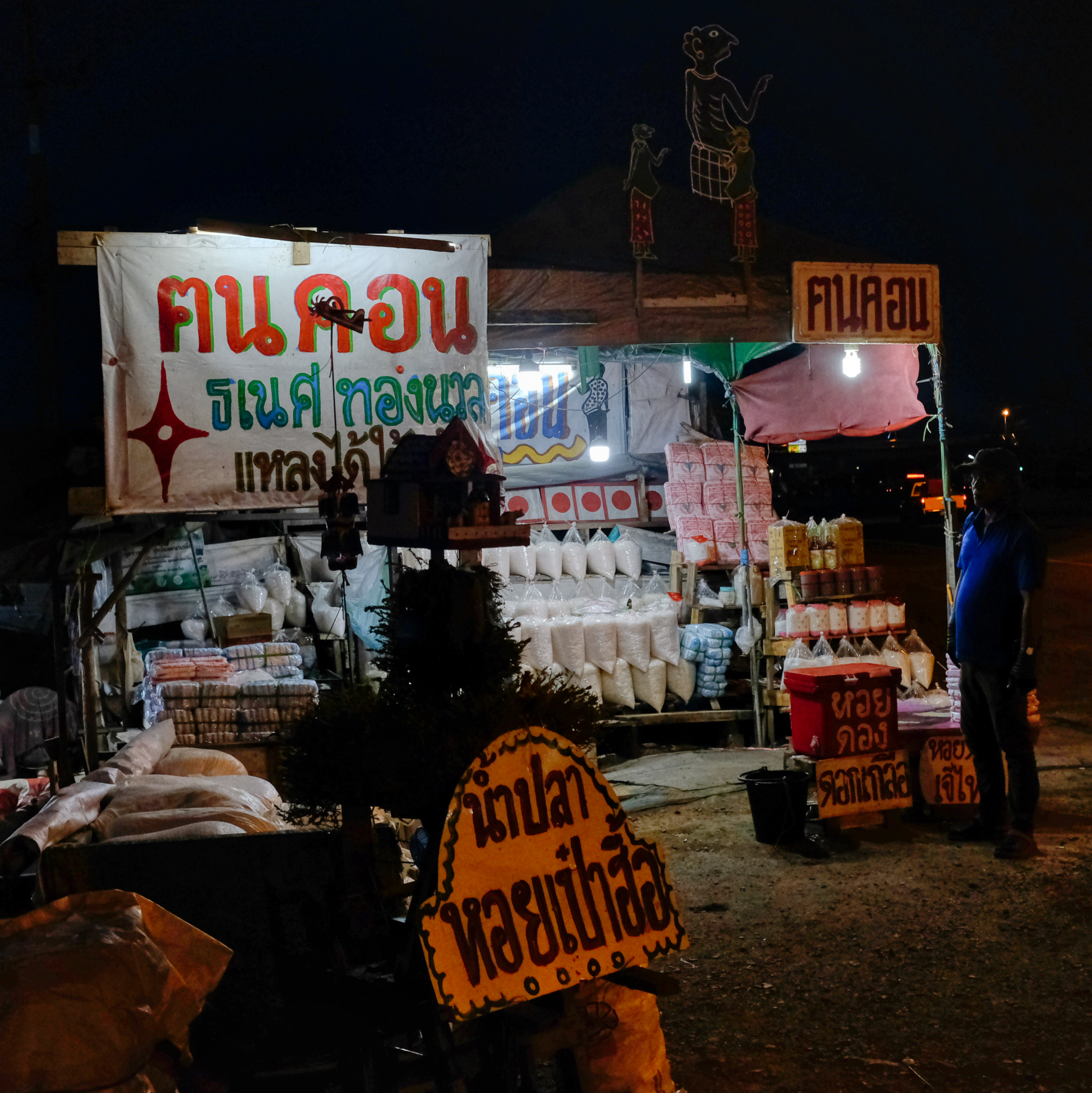 Roadside salt sales before sunset.
Roadside salt sales before sunset.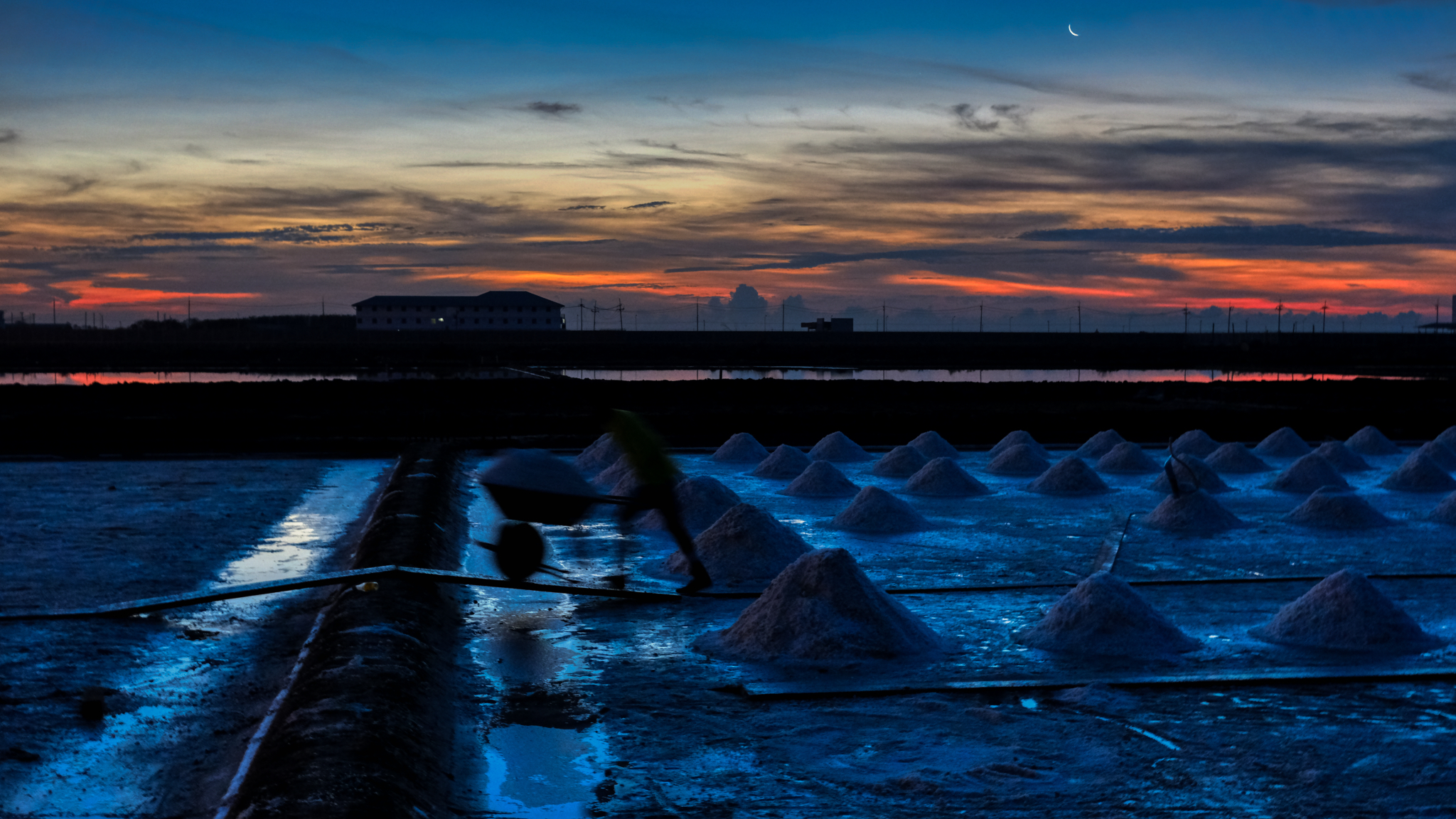 A workman is a blur in first light.
A workman is a blur in first light.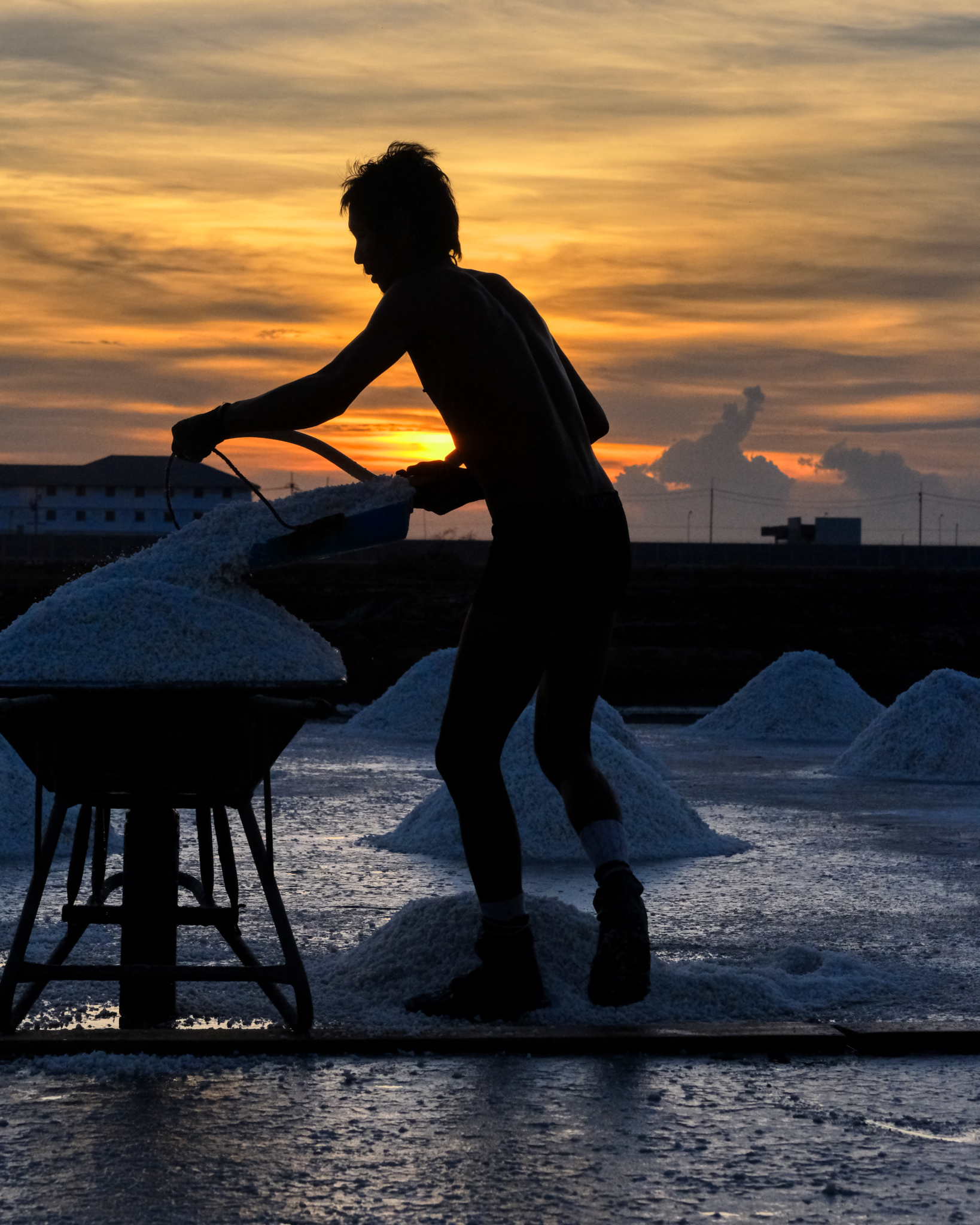 At 5:45am the ambient temperature was already 89f . . with a heat index of 105f!
At 5:45am the ambient temperature was already 89f . . with a heat index of 105f!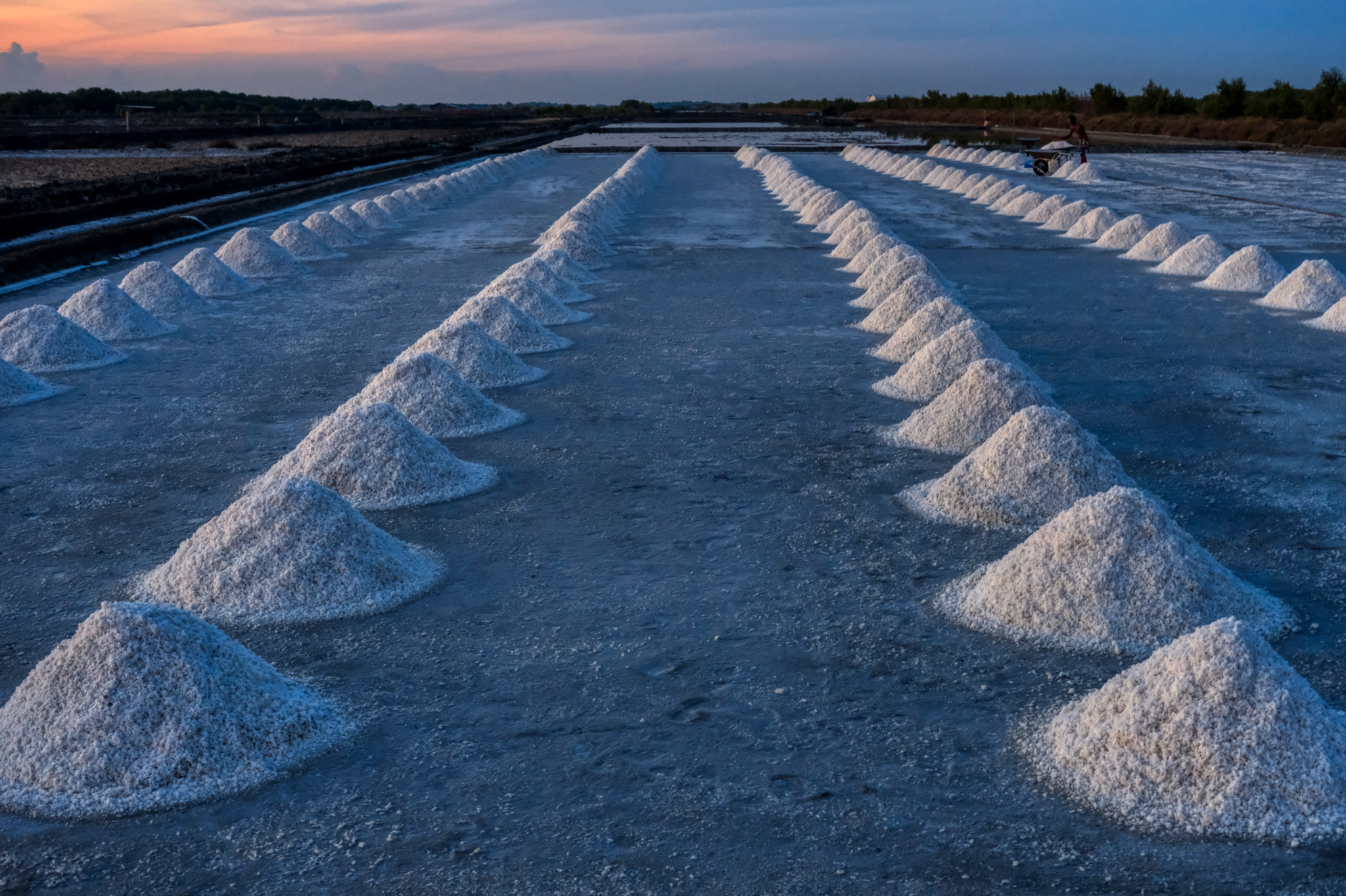 Early morning salt pan. The salt is raked up into cones by one crew, and picked up and hauled by wheelbarrow to a large pile near the highway for transportation.
Early morning salt pan. The salt is raked up into cones by one crew, and picked up and hauled by wheelbarrow to a large pile near the highway for transportation.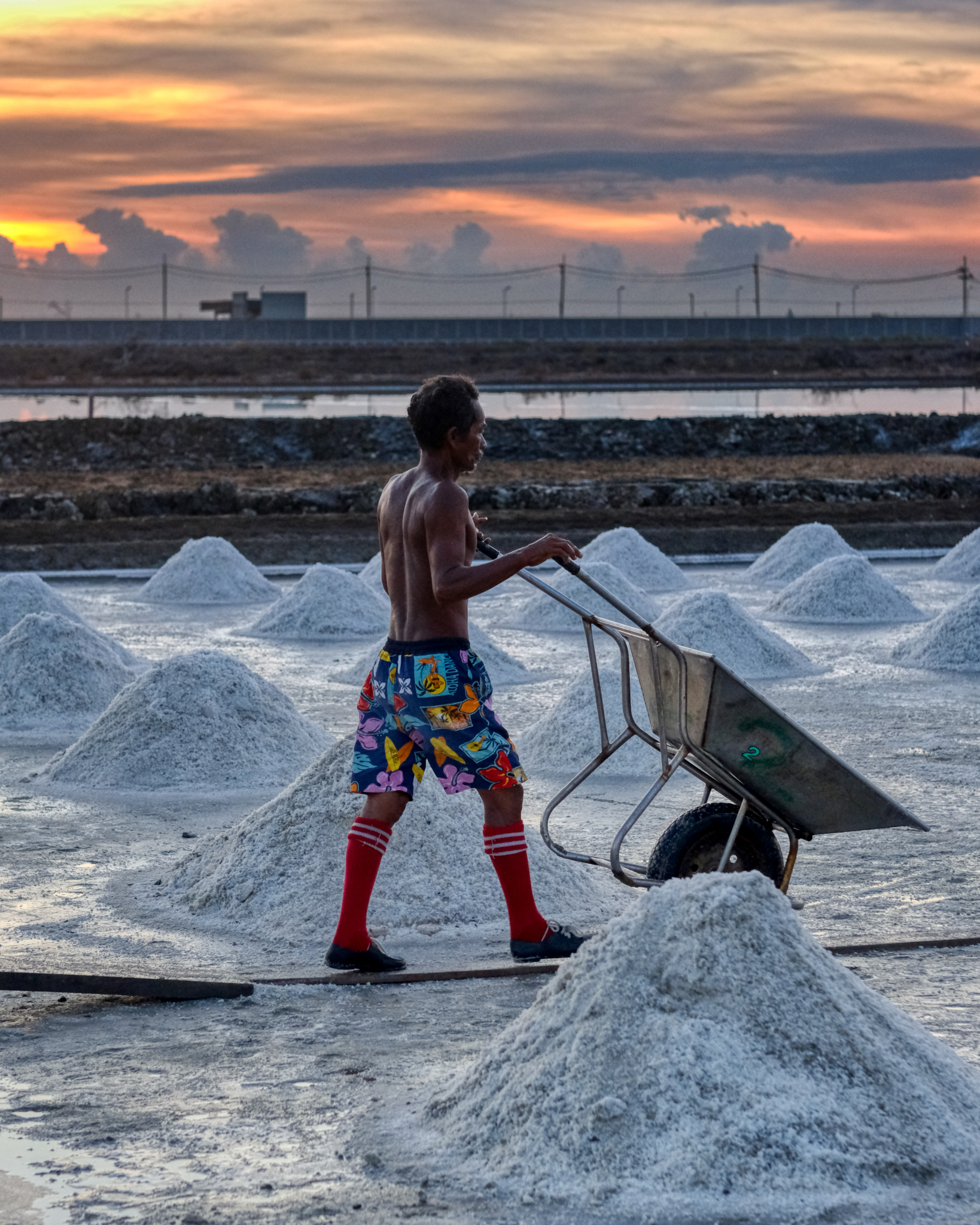 The salt workers were working hard at first light to get as much done before the blistering heat to come.
The salt workers were working hard at first light to get as much done before the blistering heat to come.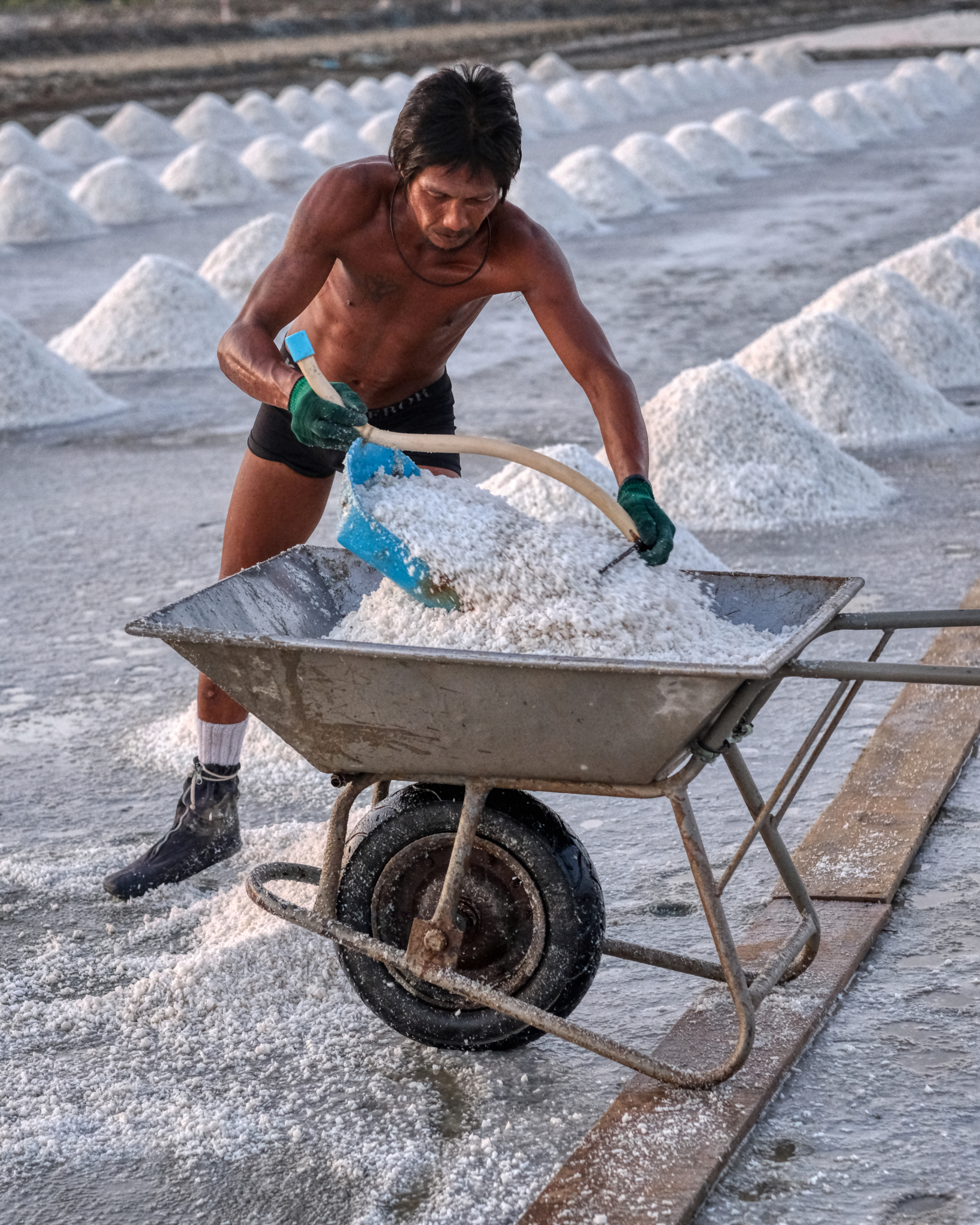 Scooping heavy, damp salt.
Scooping heavy, damp salt.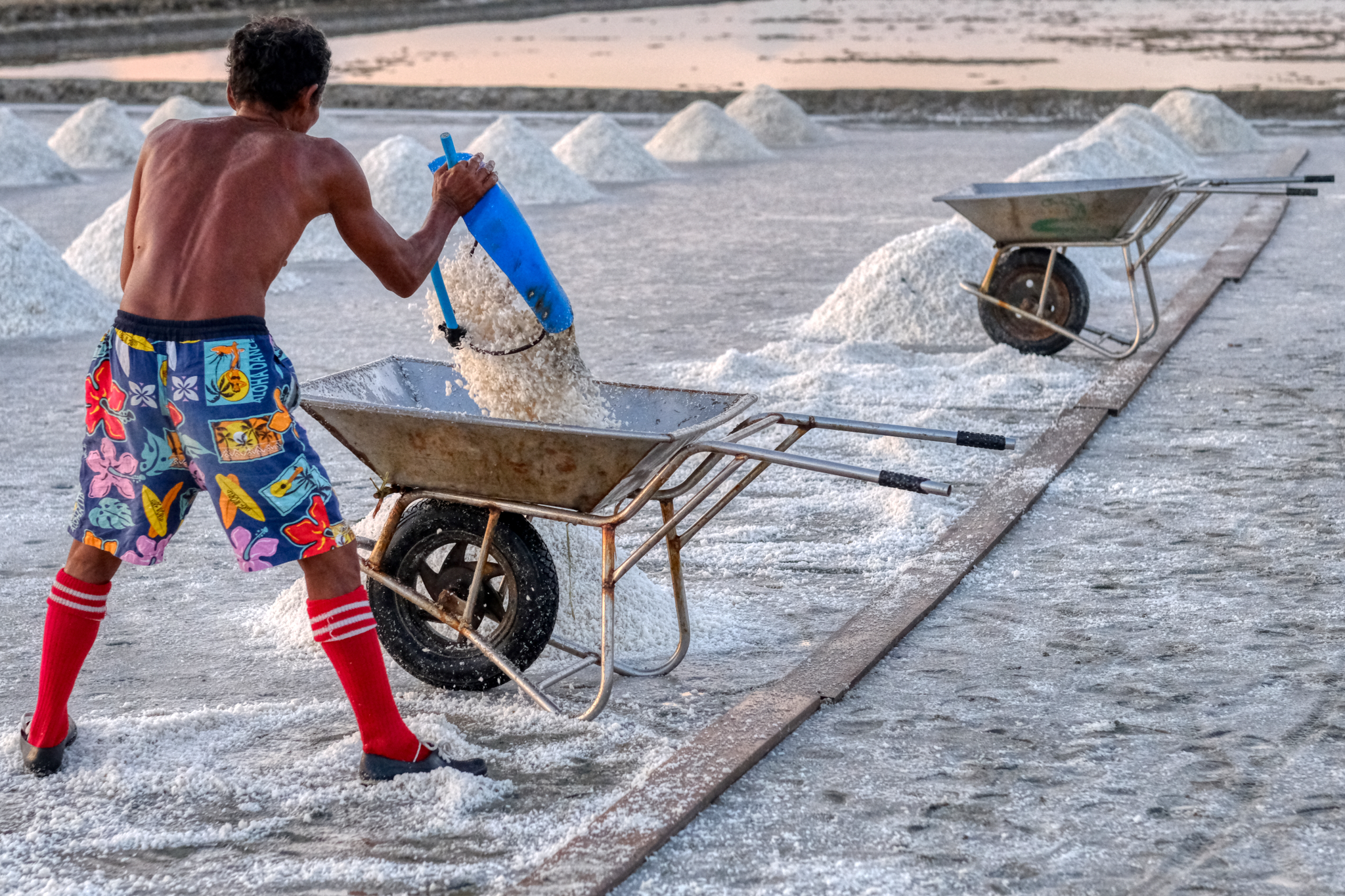 Loading the wheelbarrow for another trip to the highway.
Loading the wheelbarrow for another trip to the highway.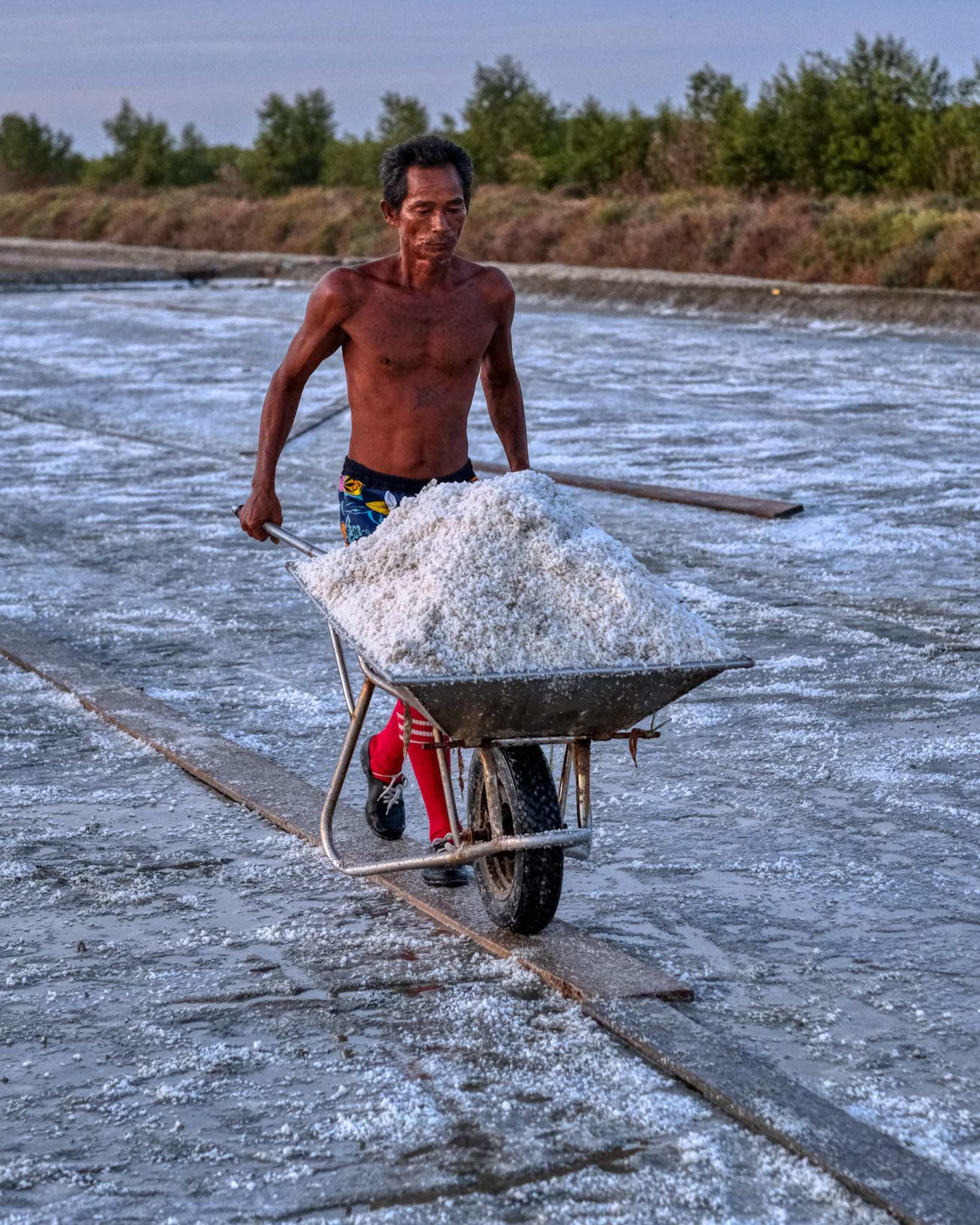 Another load full to wheel out . . .
Another load full to wheel out . . .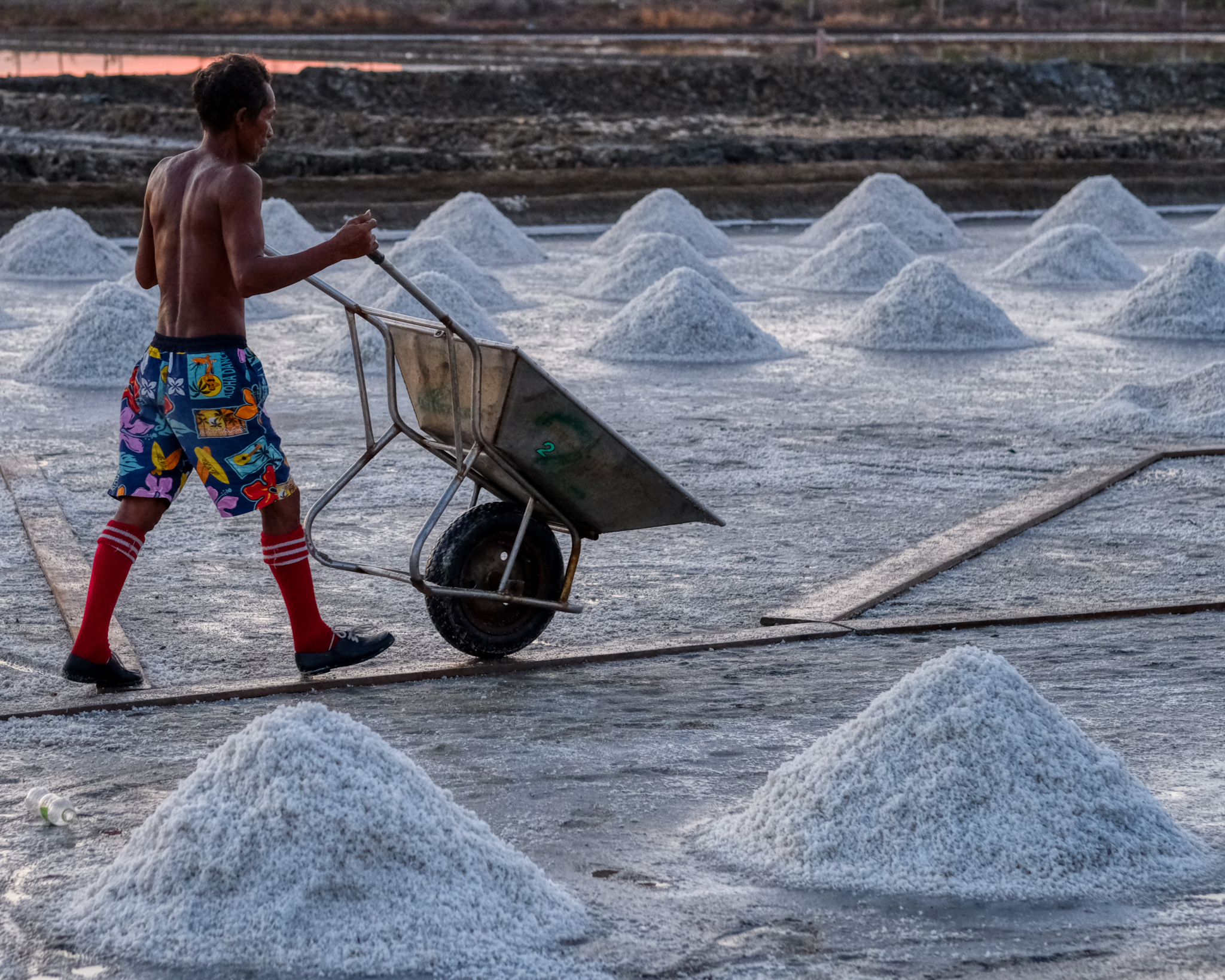 . . . and then back again in an endless loop of scoop, haul, return, scoop . . .
. . . and then back again in an endless loop of scoop, haul, return, scoop . . .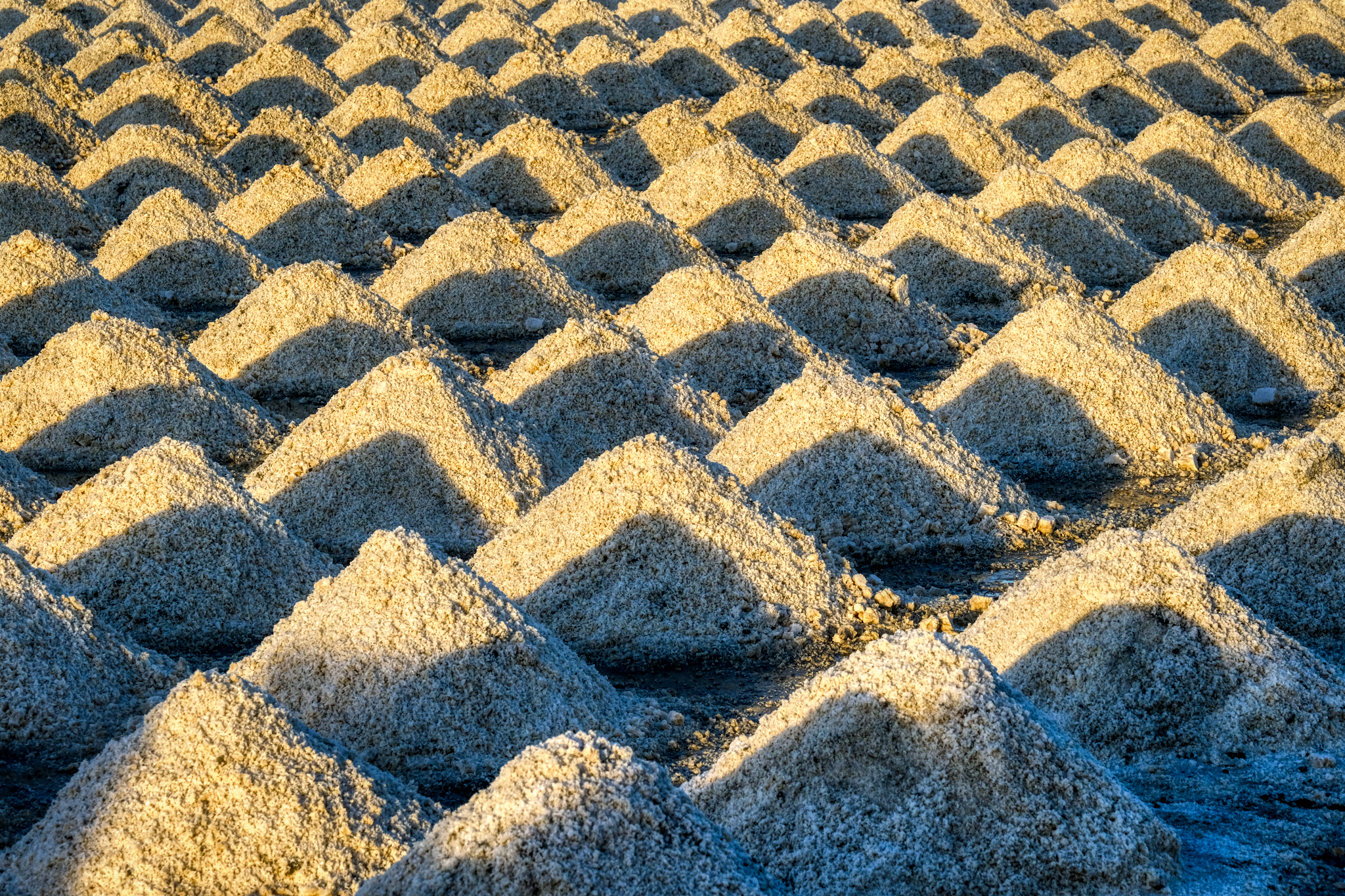 Marvelous patterns of salt cones in the morning magic hour light.
Marvelous patterns of salt cones in the morning magic hour light.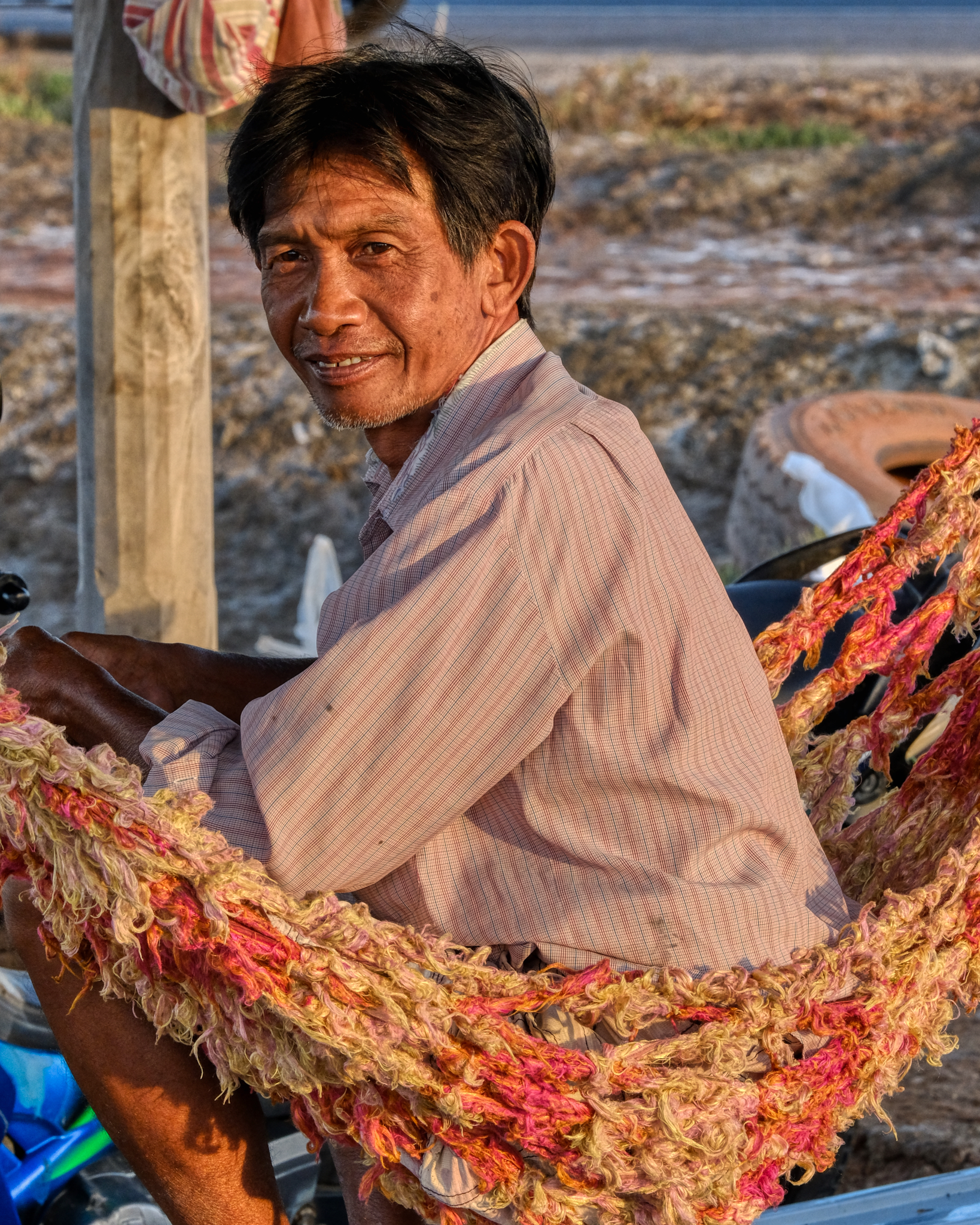 A kindly looking salt worker on a hammock.
A kindly looking salt worker on a hammock.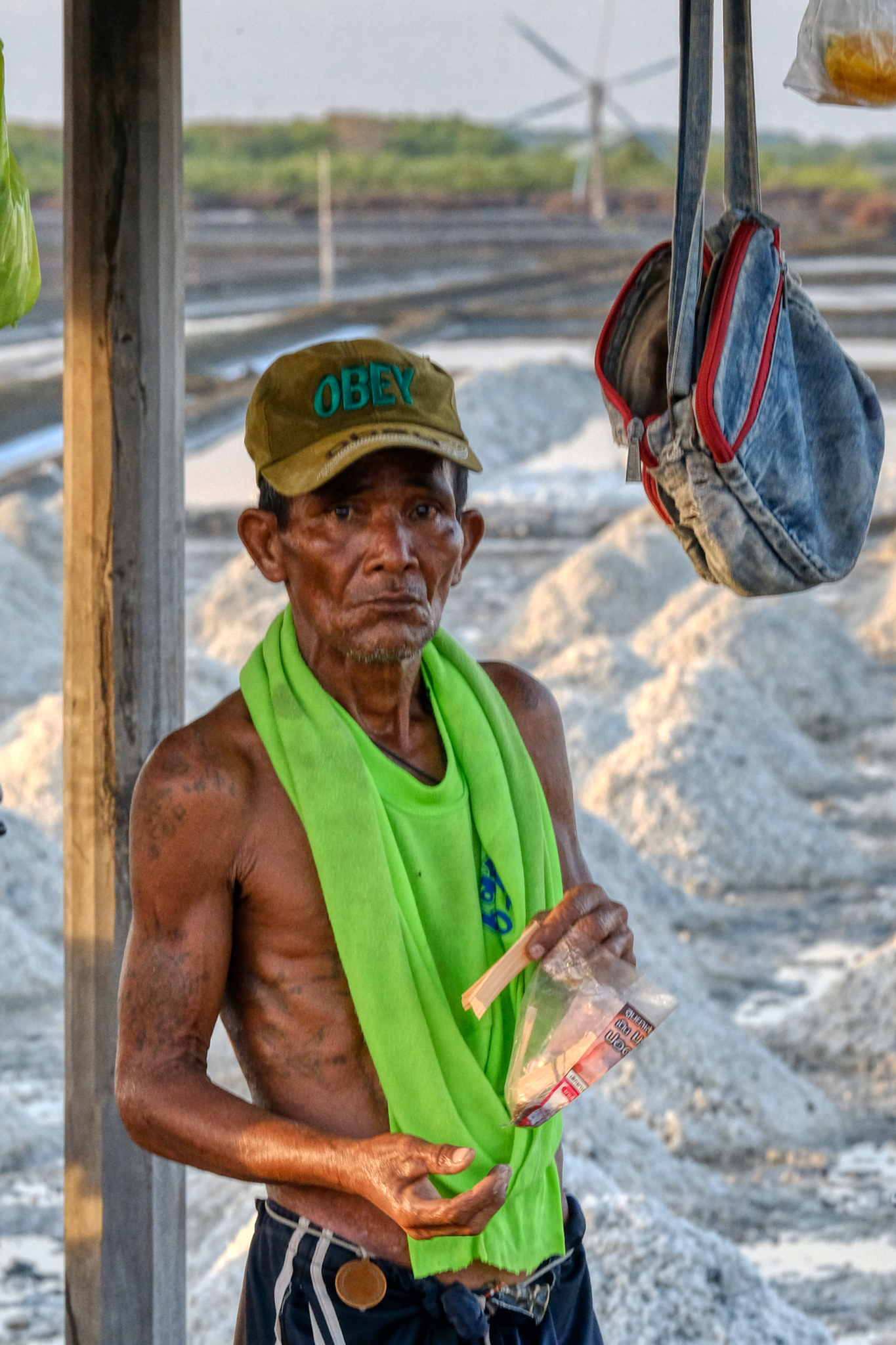 Obey. Indeed.
Obey. Indeed. Meanwhile, in another salt pan down the road . . .
Meanwhile, in another salt pan down the road . . .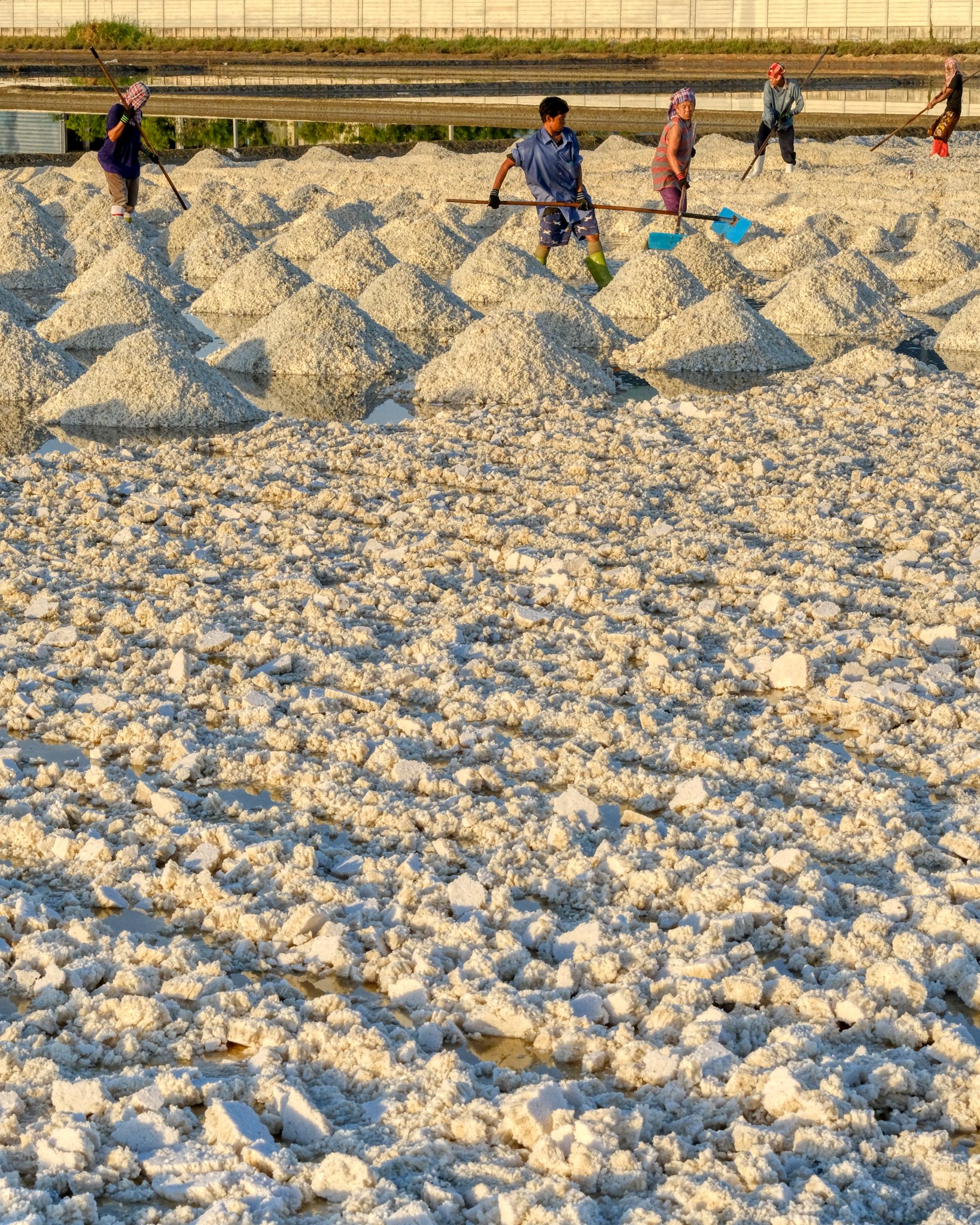 After an hour at the sunrise pans, we drove a kilometer up the road and found a big crew out in a damp pan raking the salt into the cones. Hard work in the morning sun.
After an hour at the sunrise pans, we drove a kilometer up the road and found a big crew out in a damp pan raking the salt into the cones. Hard work in the morning sun.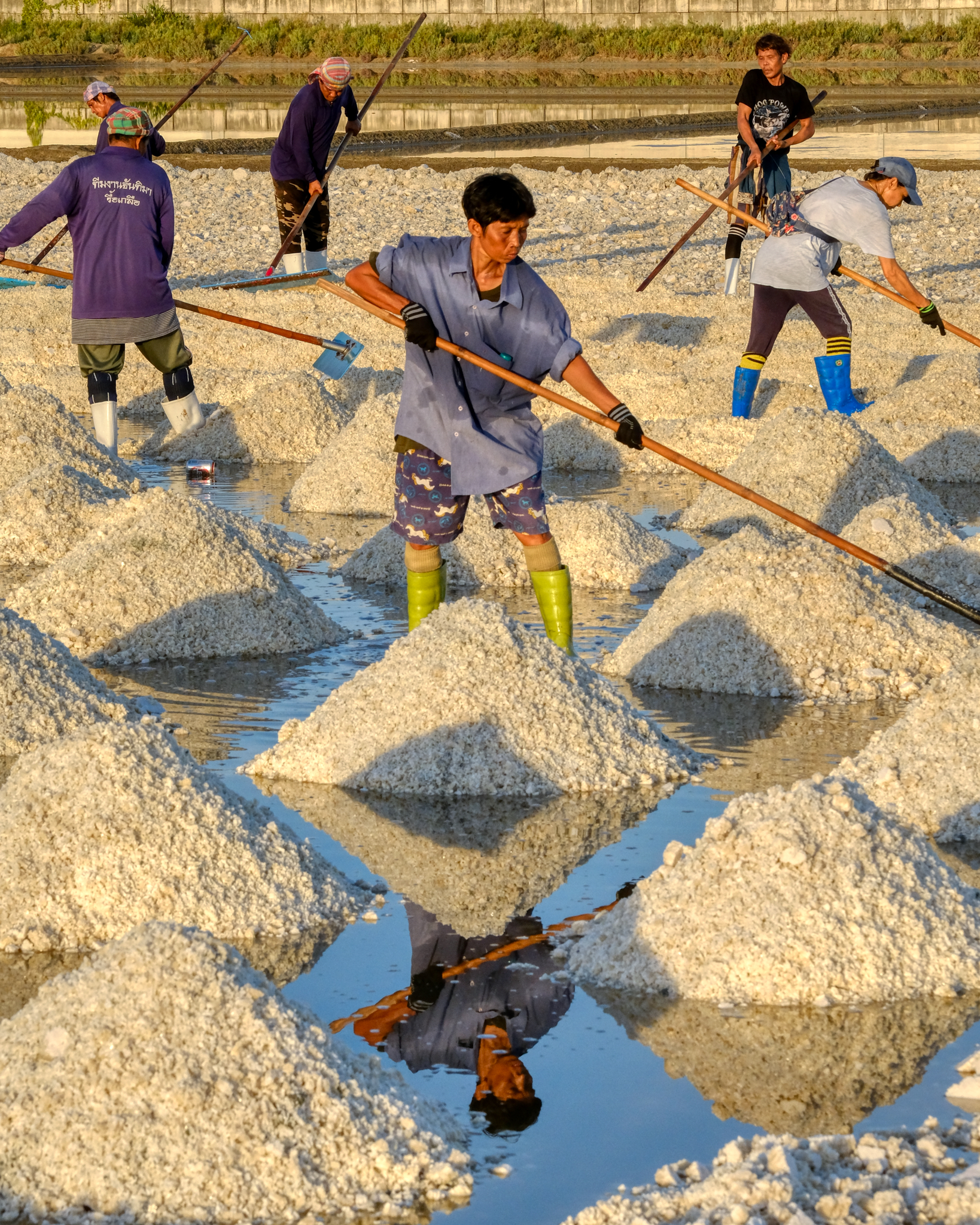 Hard at work while standing in supersaturated salt water.
Hard at work while standing in supersaturated salt water.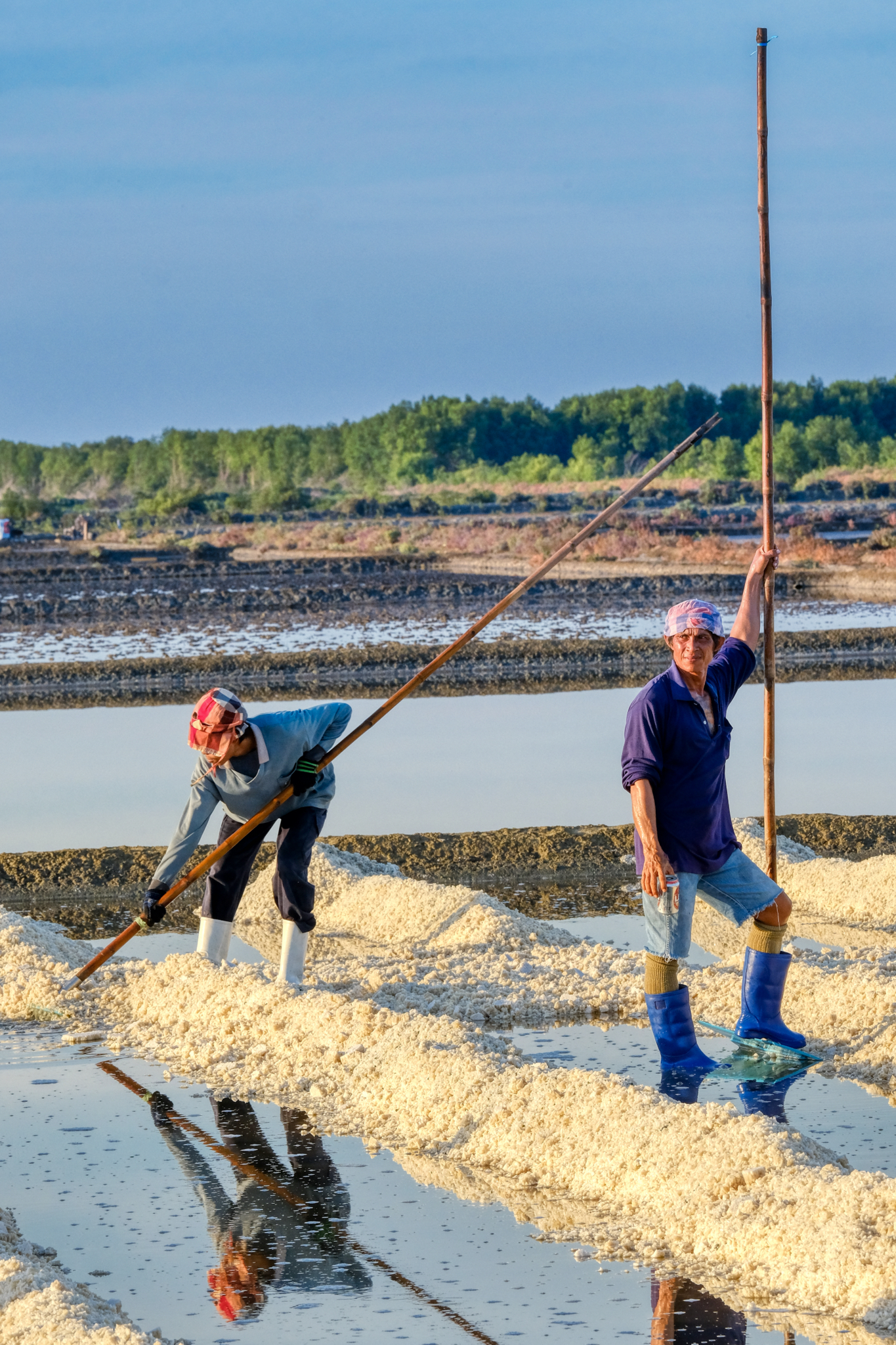 Such a photogenic scene . . . especially when the salt workers pose for you!!!
Such a photogenic scene . . . especially when the salt workers pose for you!!!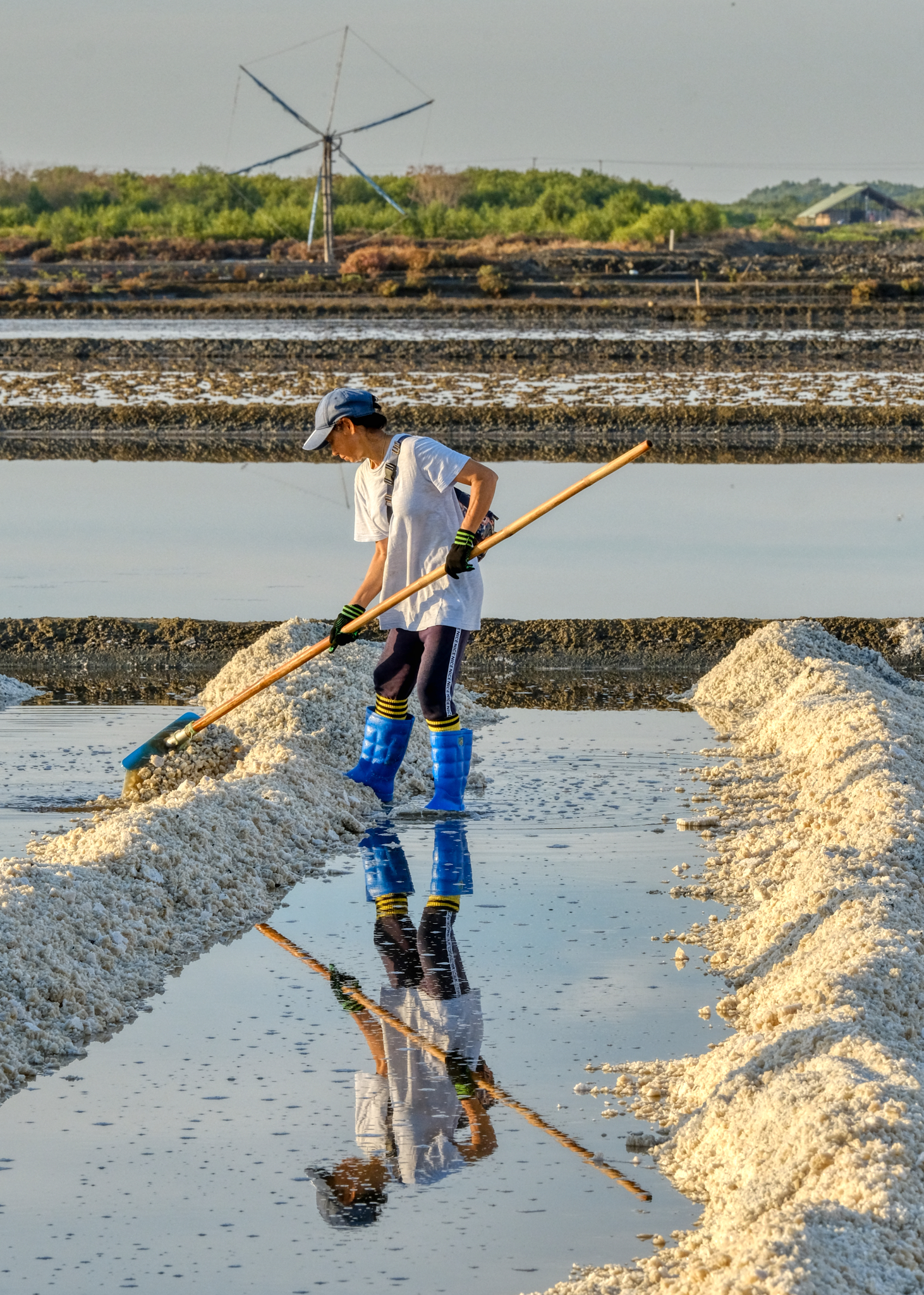 Windmills, salt, humanity, reflections . . .
Windmills, salt, humanity, reflections . . .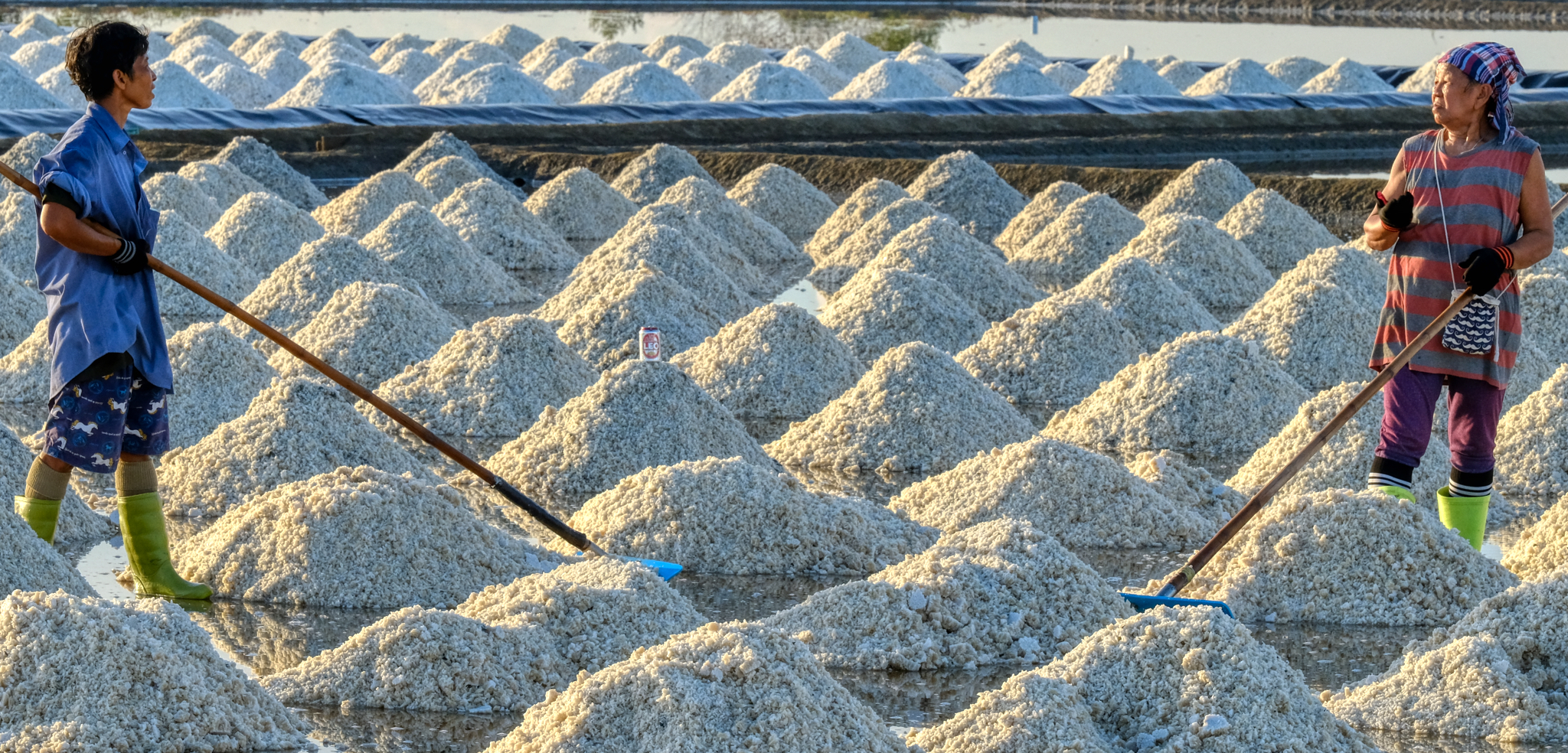 Having a chat while working . . .
Having a chat while working . . . 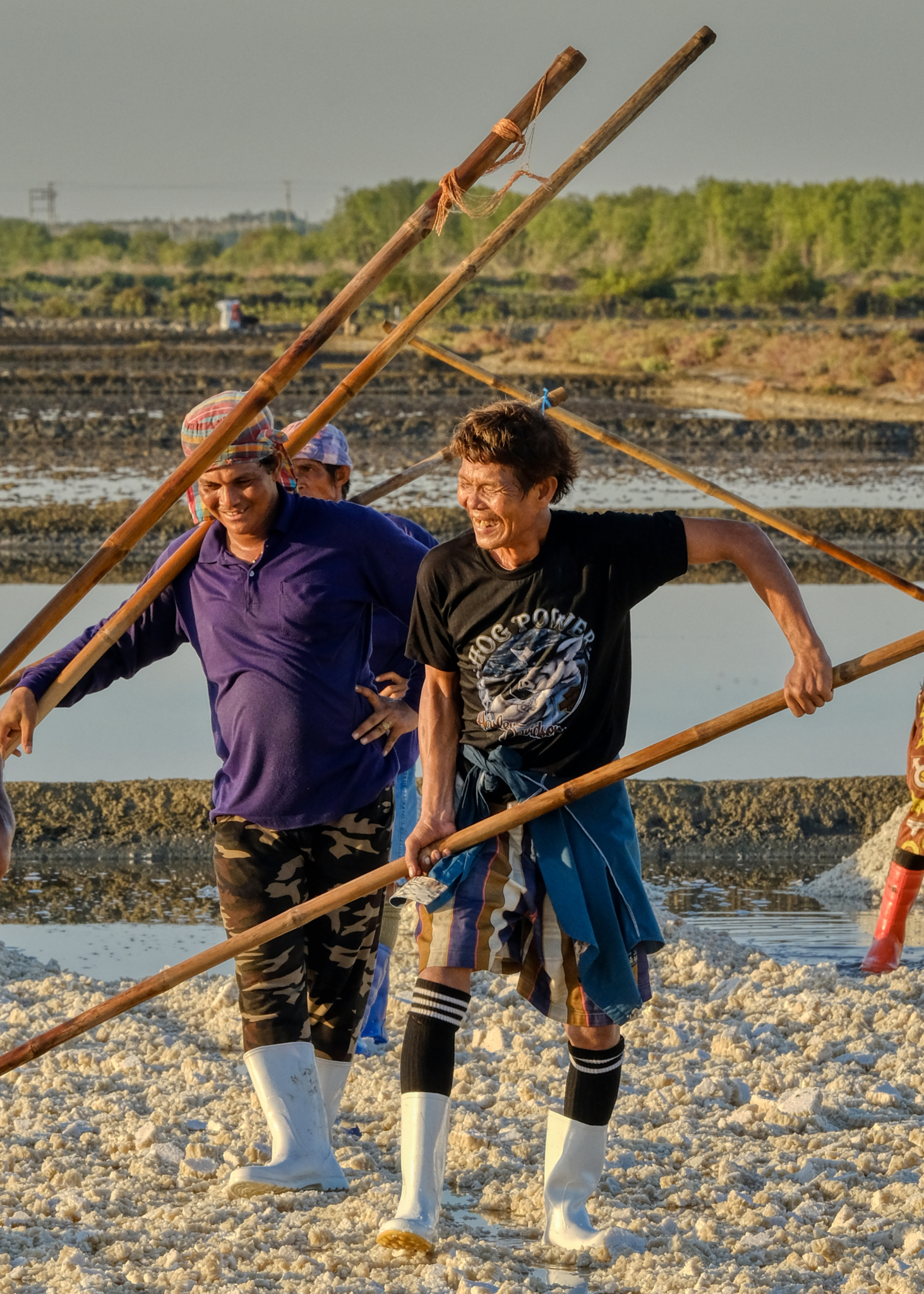 The salt workers seemed to know each other well . . . it's more enjoyable to work while sharing a joke with your friends.
The salt workers seemed to know each other well . . . it's more enjoyable to work while sharing a joke with your friends.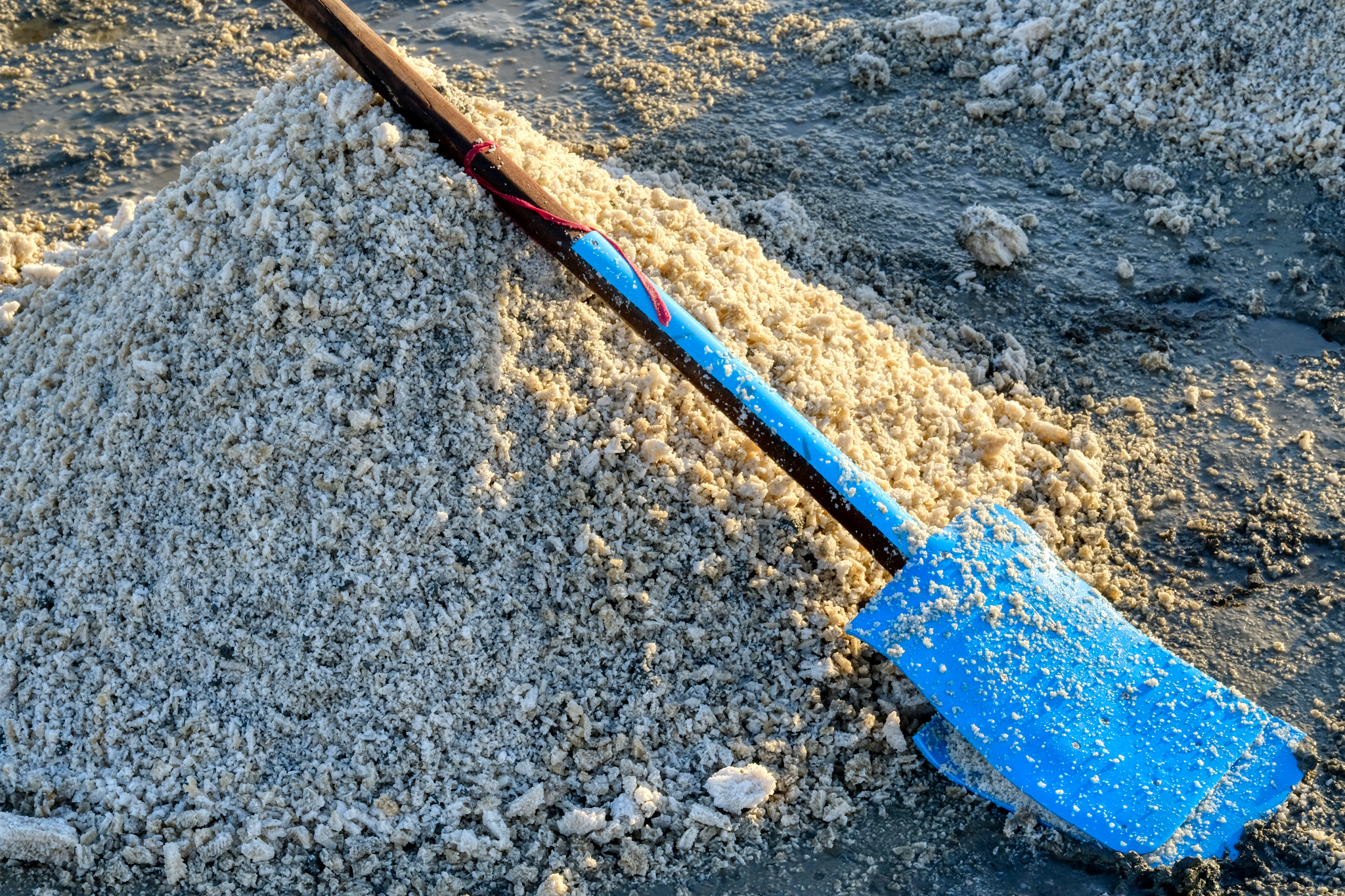 Home made crude scrapers for piling the salt into cones.
Home made crude scrapers for piling the salt into cones.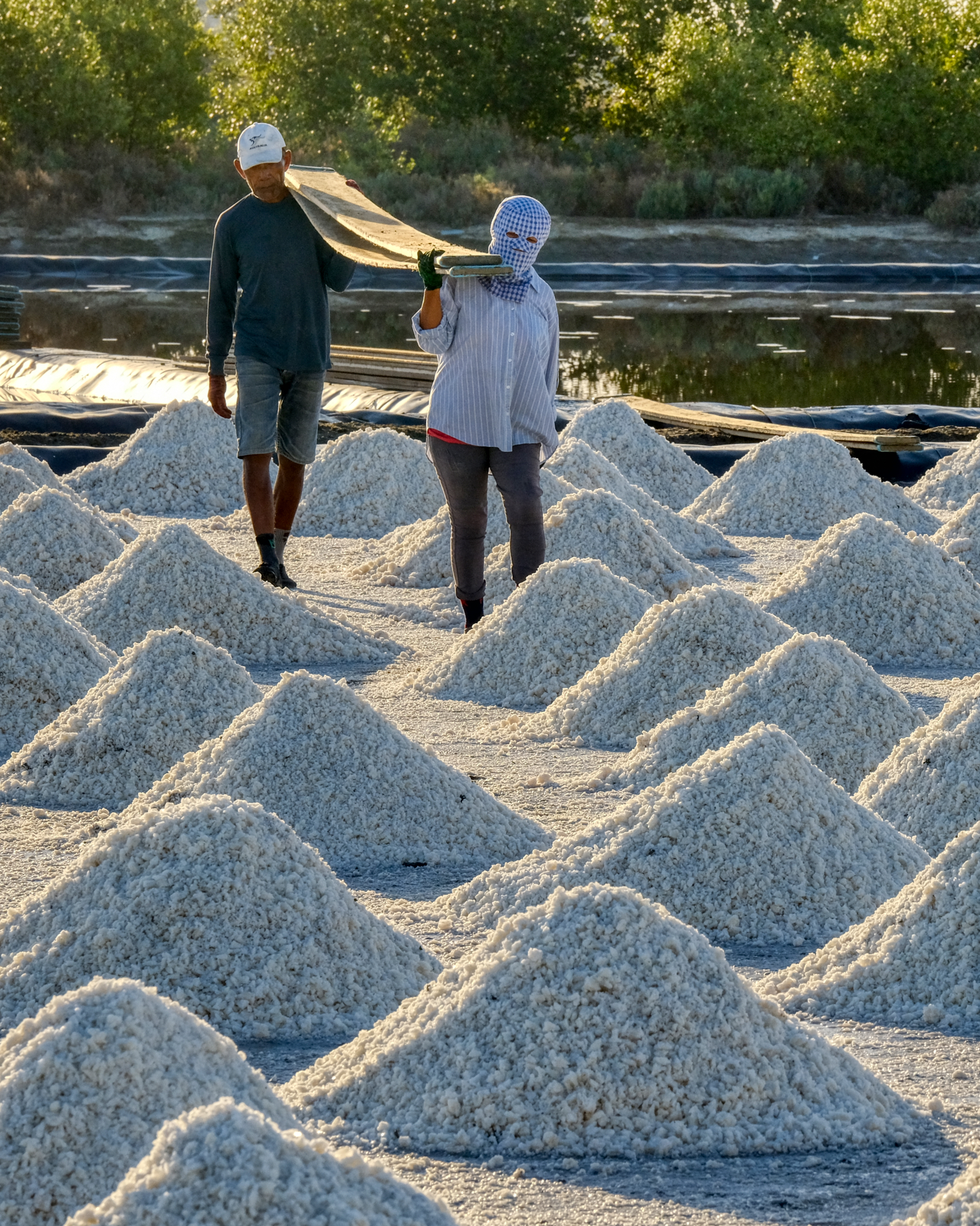 Moving and placing heavy planks for the wheelbarrows that will come to remove the salt from the pans.
Moving and placing heavy planks for the wheelbarrows that will come to remove the salt from the pans.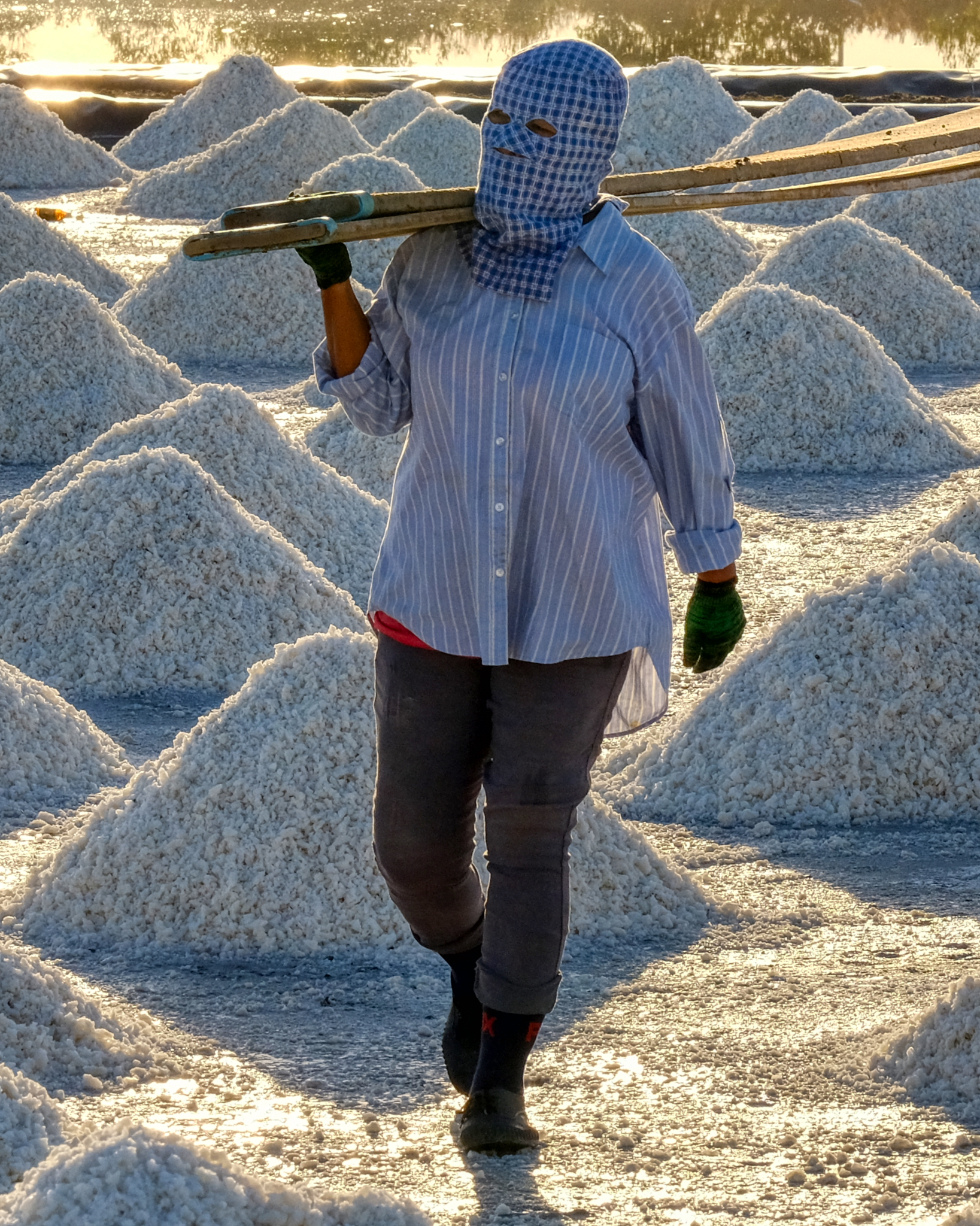 Protection from the sun . . . .
Protection from the sun . . . .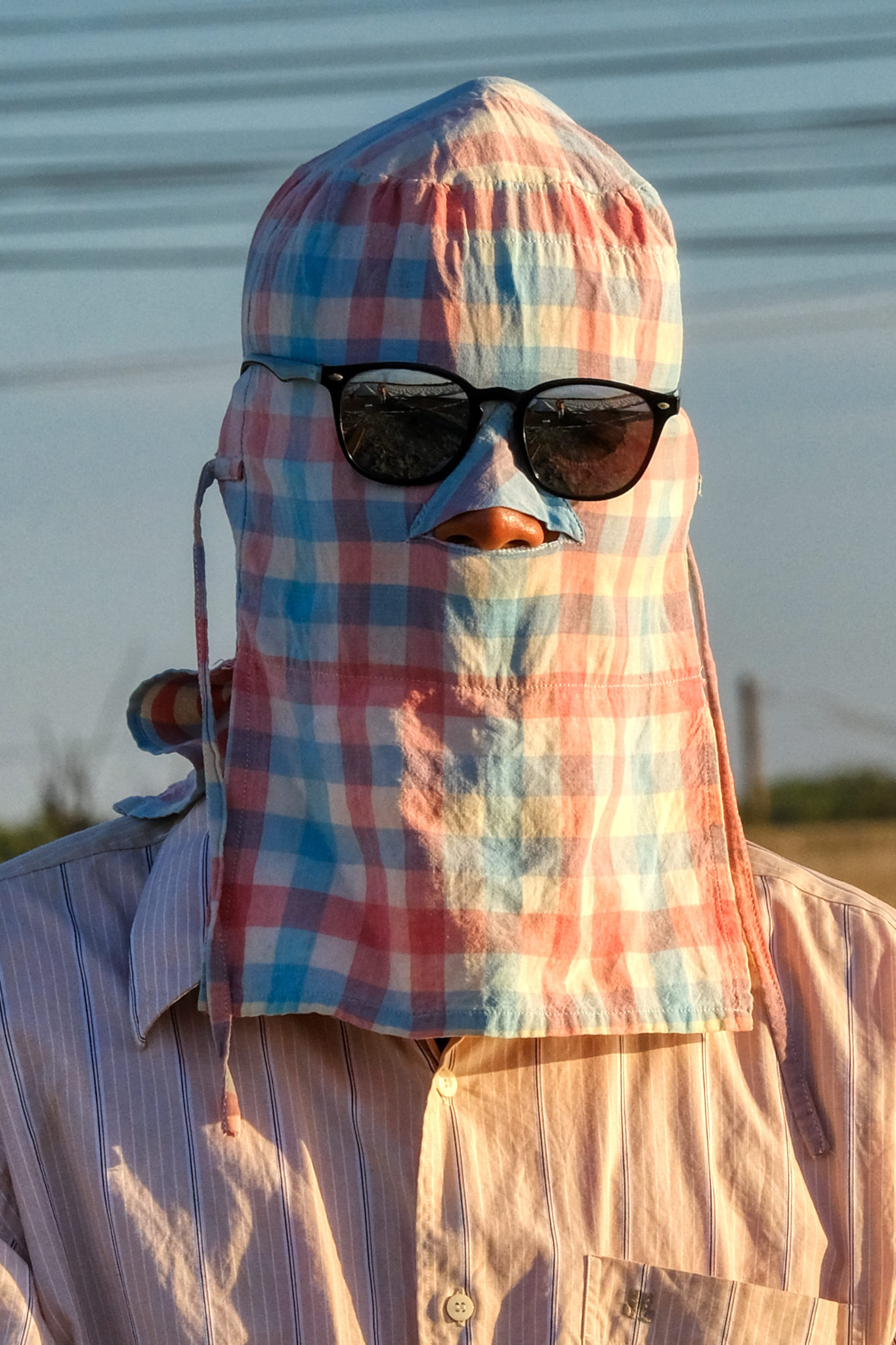 Extreme sun protection . . . it must be very hot under that hood in this oppressive heat and humidity.
Extreme sun protection . . . it must be very hot under that hood in this oppressive heat and humidity.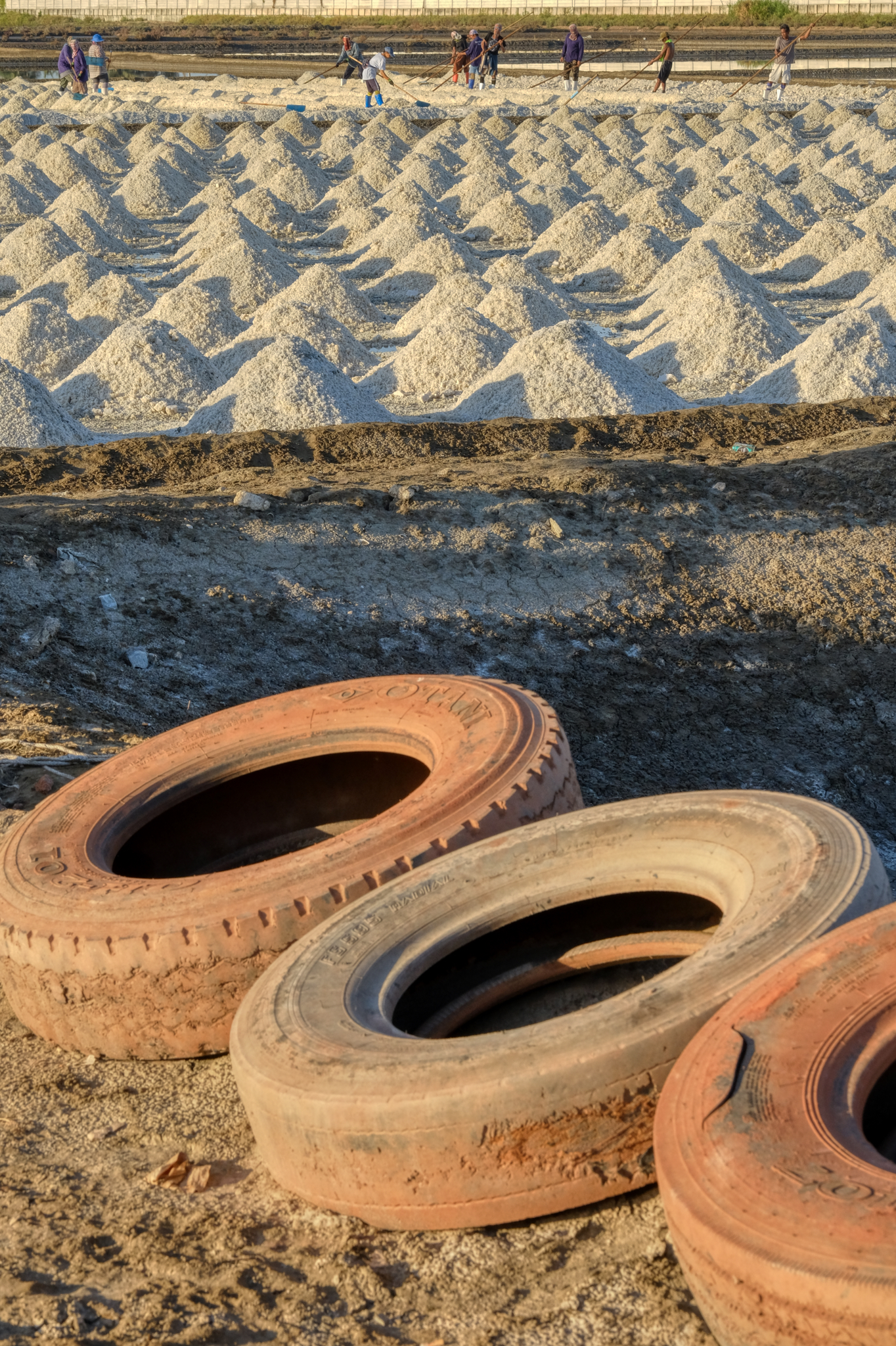 The is much to see in the area, so we moved on . . .
The is much to see in the area, so we moved on . . .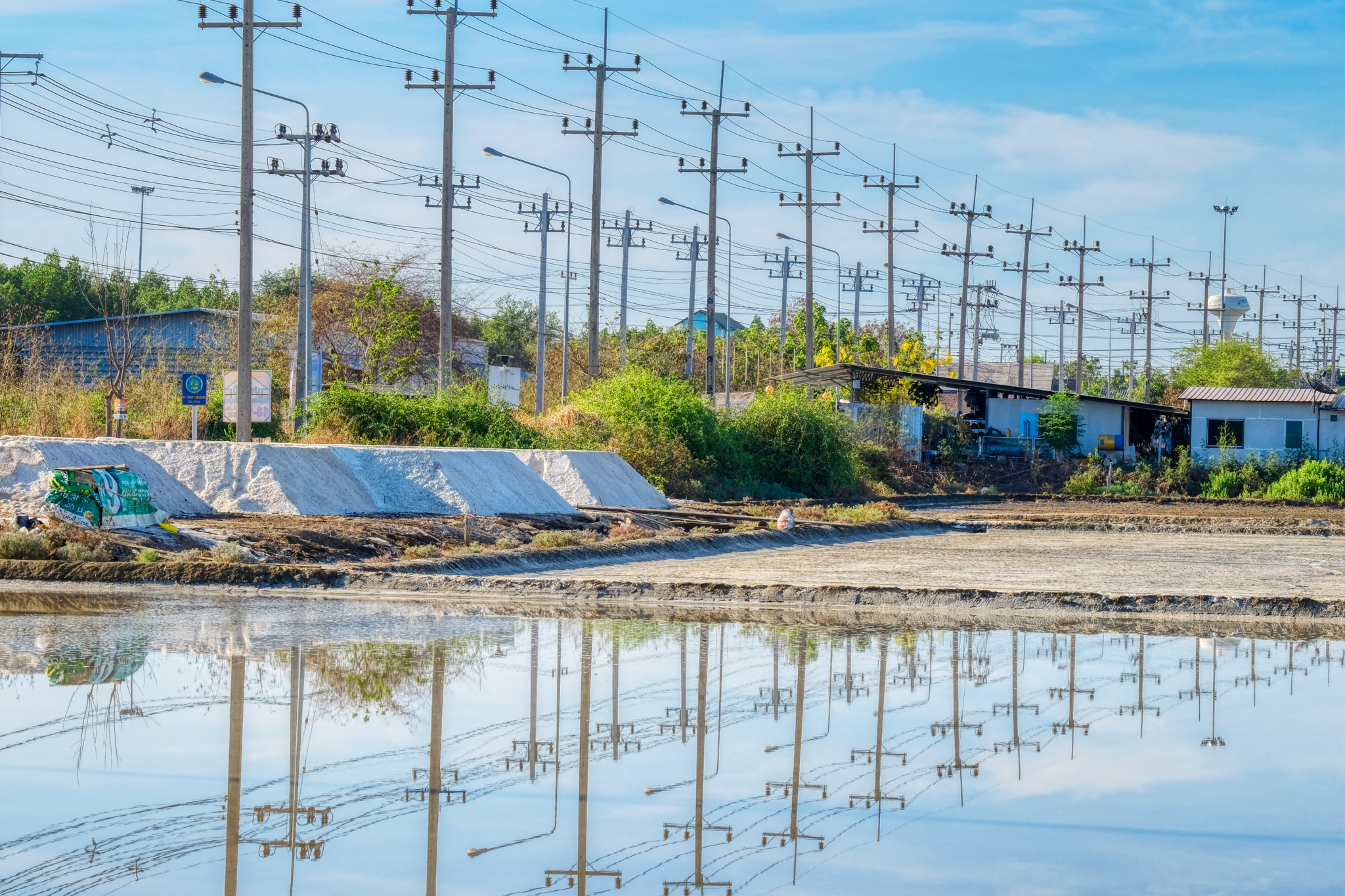 Rural roads are few and far between - valuable land is not used up for roads. As such, the roads that do exist serve for arterials for power, phone, and water. This is Thai local highway 2001.
Rural roads are few and far between - valuable land is not used up for roads. As such, the roads that do exist serve for arterials for power, phone, and water. This is Thai local highway 2001.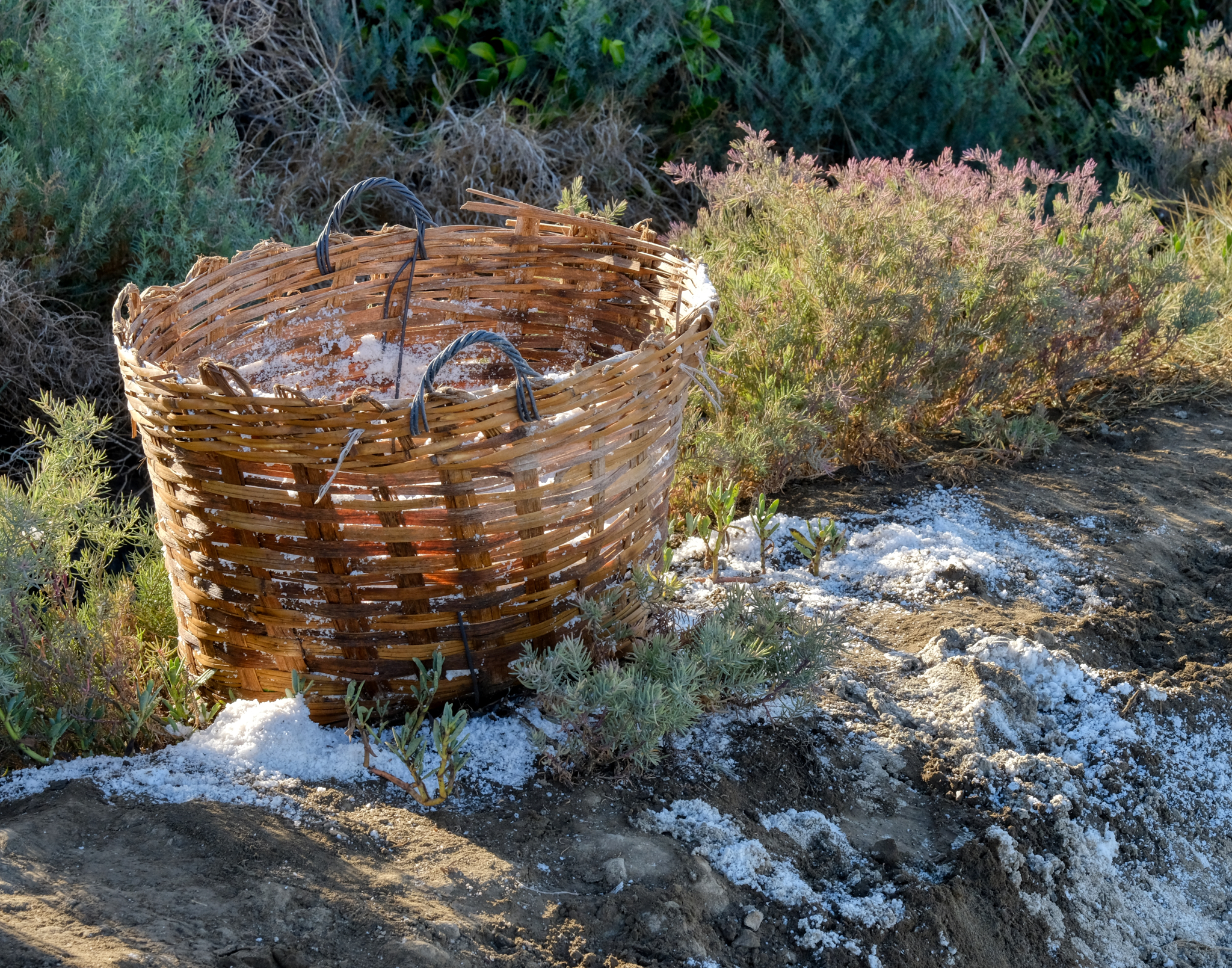 In the next salt pan, baskets were used to collect a special salt from the surface.
In the next salt pan, baskets were used to collect a special salt from the surface.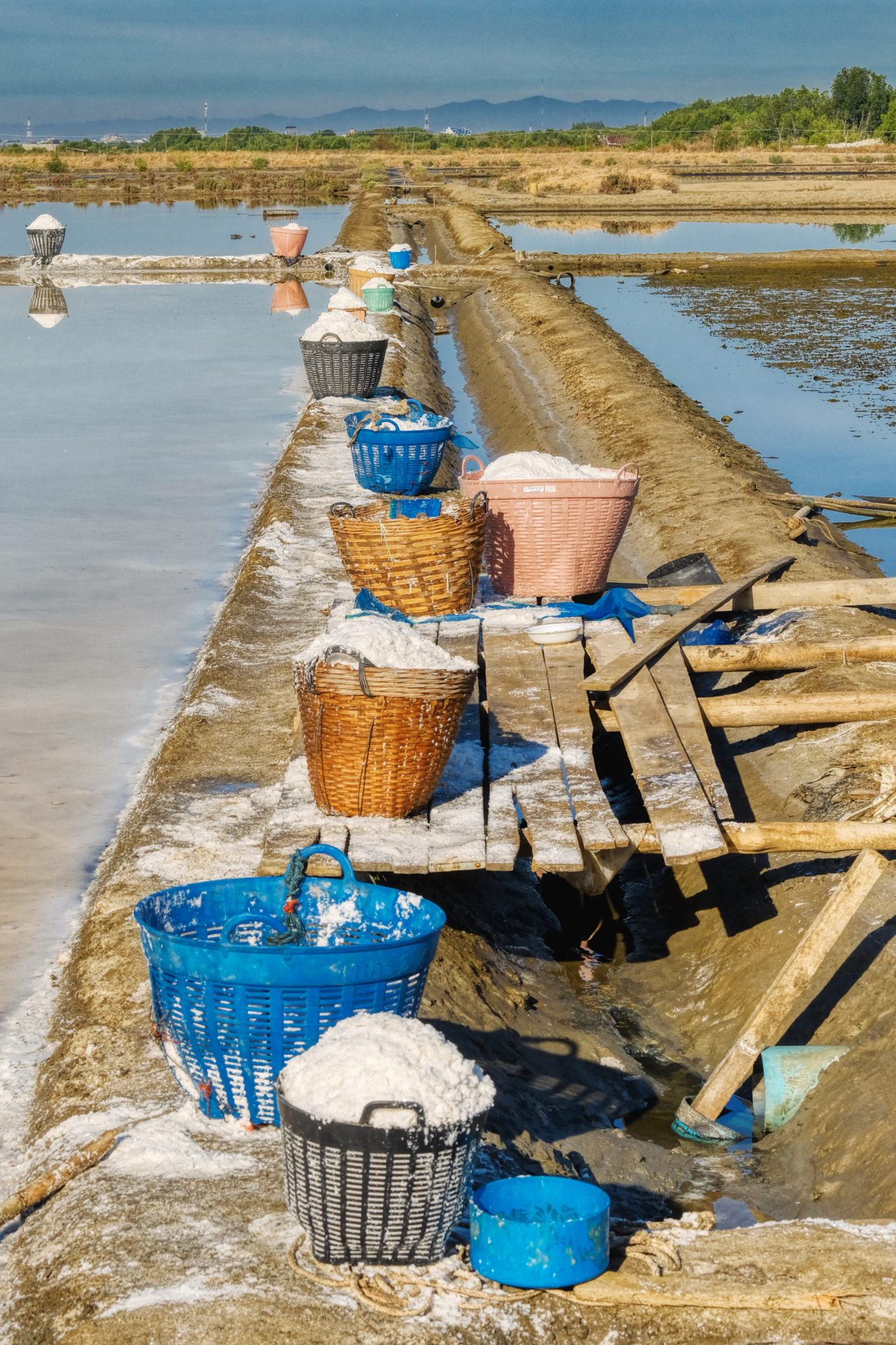 Ongoing salt harvesting.
Ongoing salt harvesting.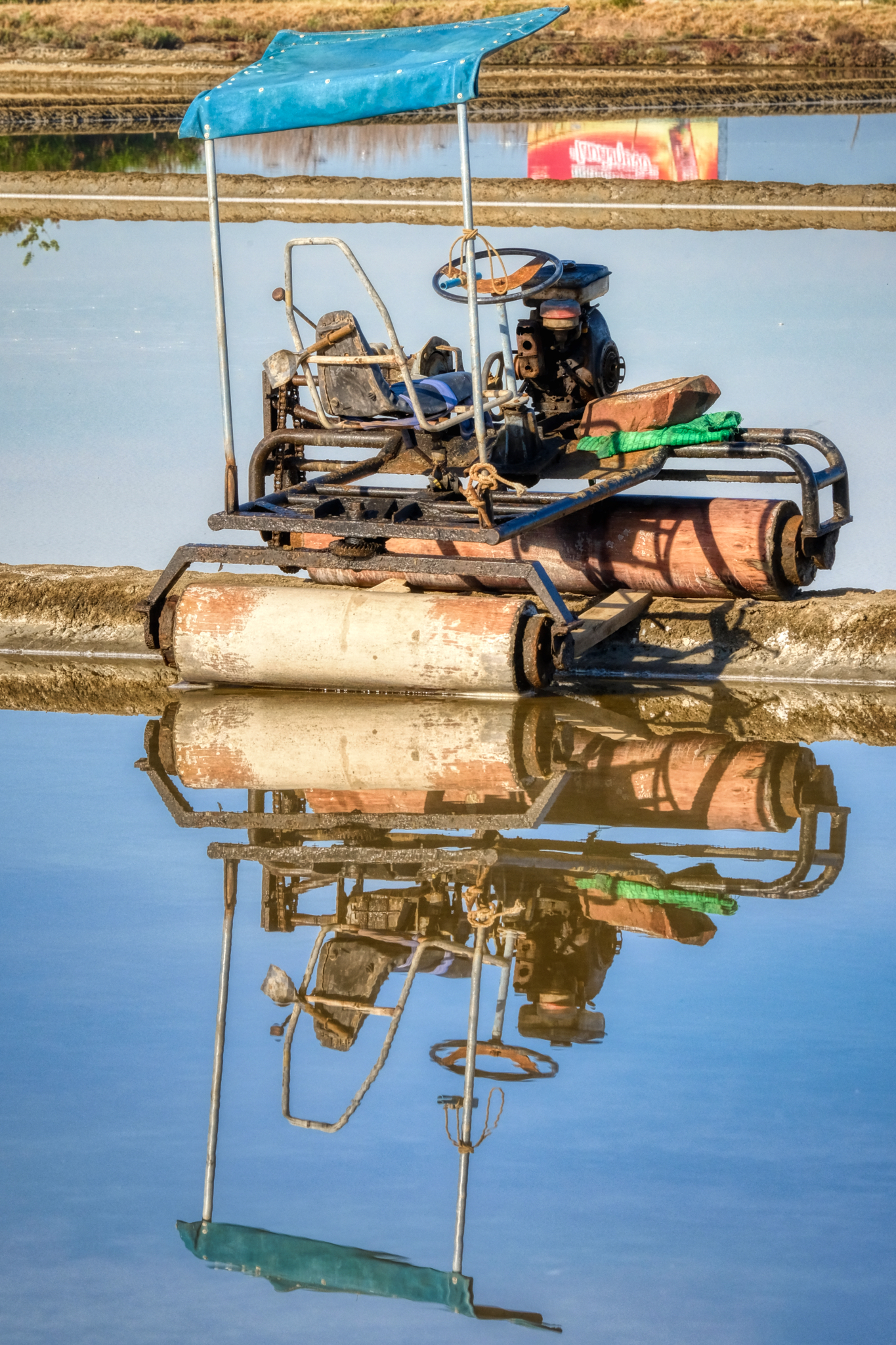 I love these amazing contraptions . . . used to flatten the pans after the salt has been removed.
I love these amazing contraptions . . . used to flatten the pans after the salt has been removed.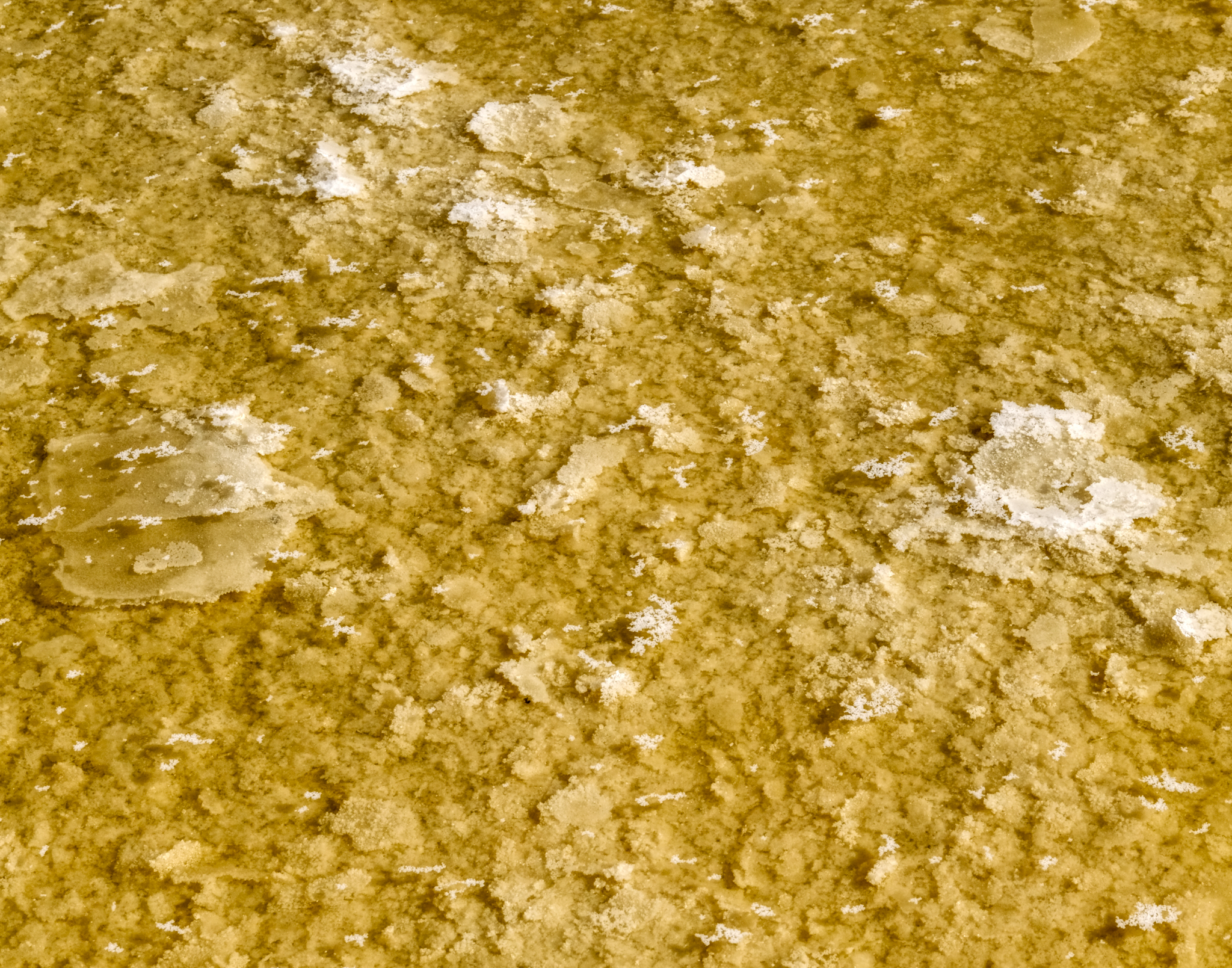 This is a rare (and valuable) form of flake salt favored by chefs . . . it floats on top of the supersaturated pans and is harvested in baskets (above).
This is a rare (and valuable) form of flake salt favored by chefs . . . it floats on top of the supersaturated pans and is harvested in baskets (above).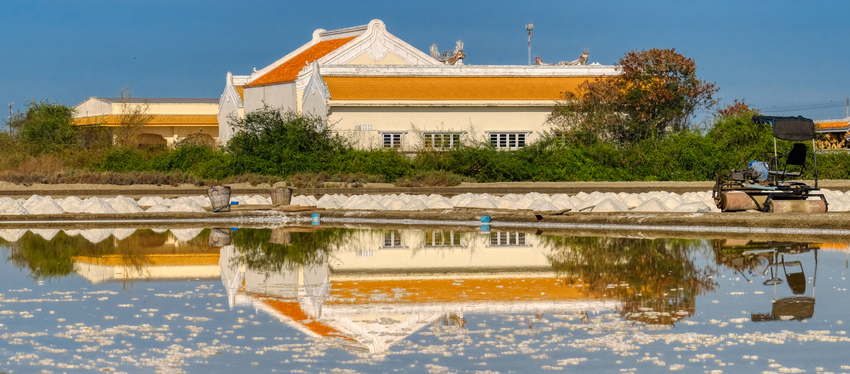 A beautiful Chinese-style Buddhist temple reflected in the salt pans.
A beautiful Chinese-style Buddhist temple reflected in the salt pans.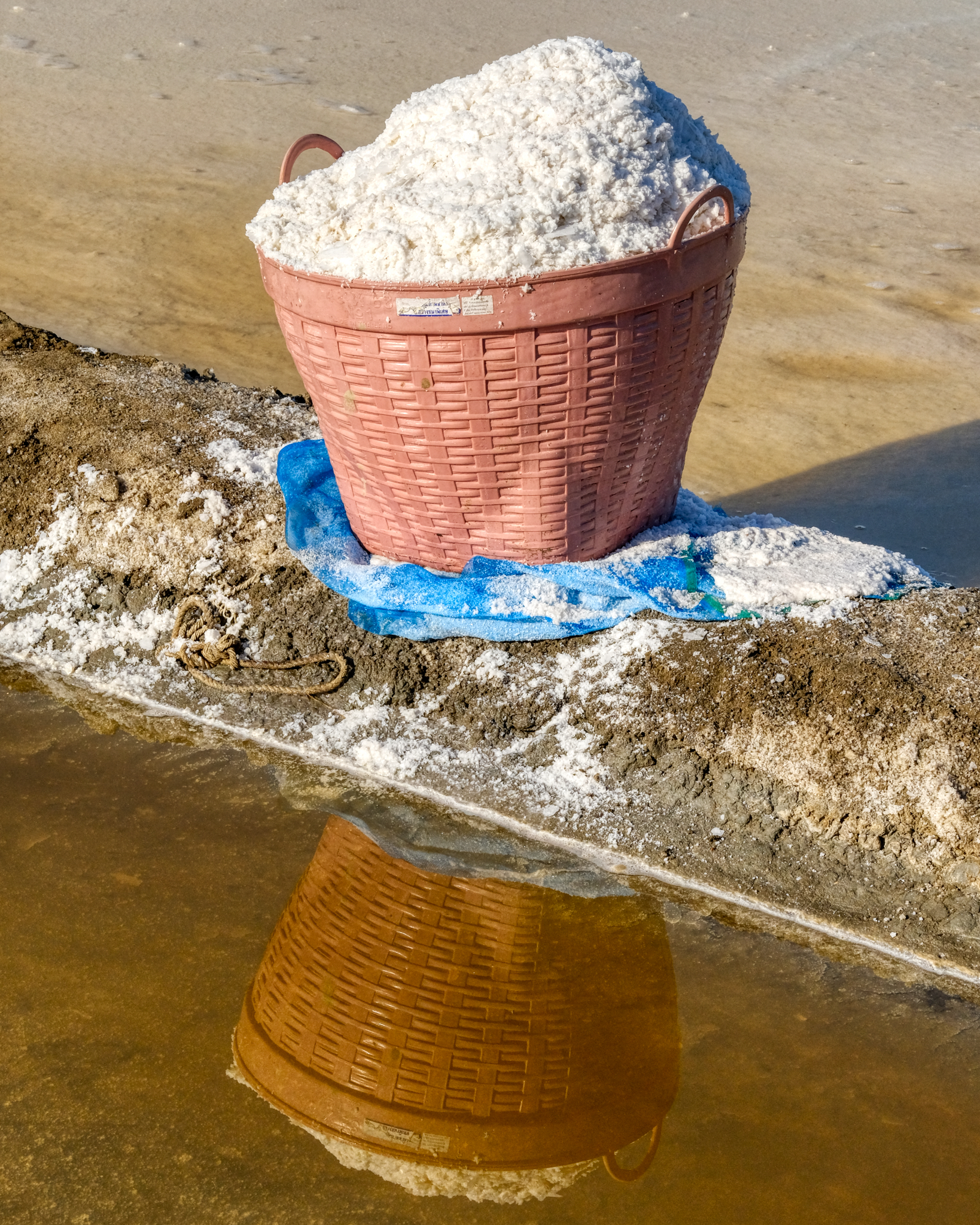 Light and flakey salt -- very valuable and sought after.
Light and flakey salt -- very valuable and sought after.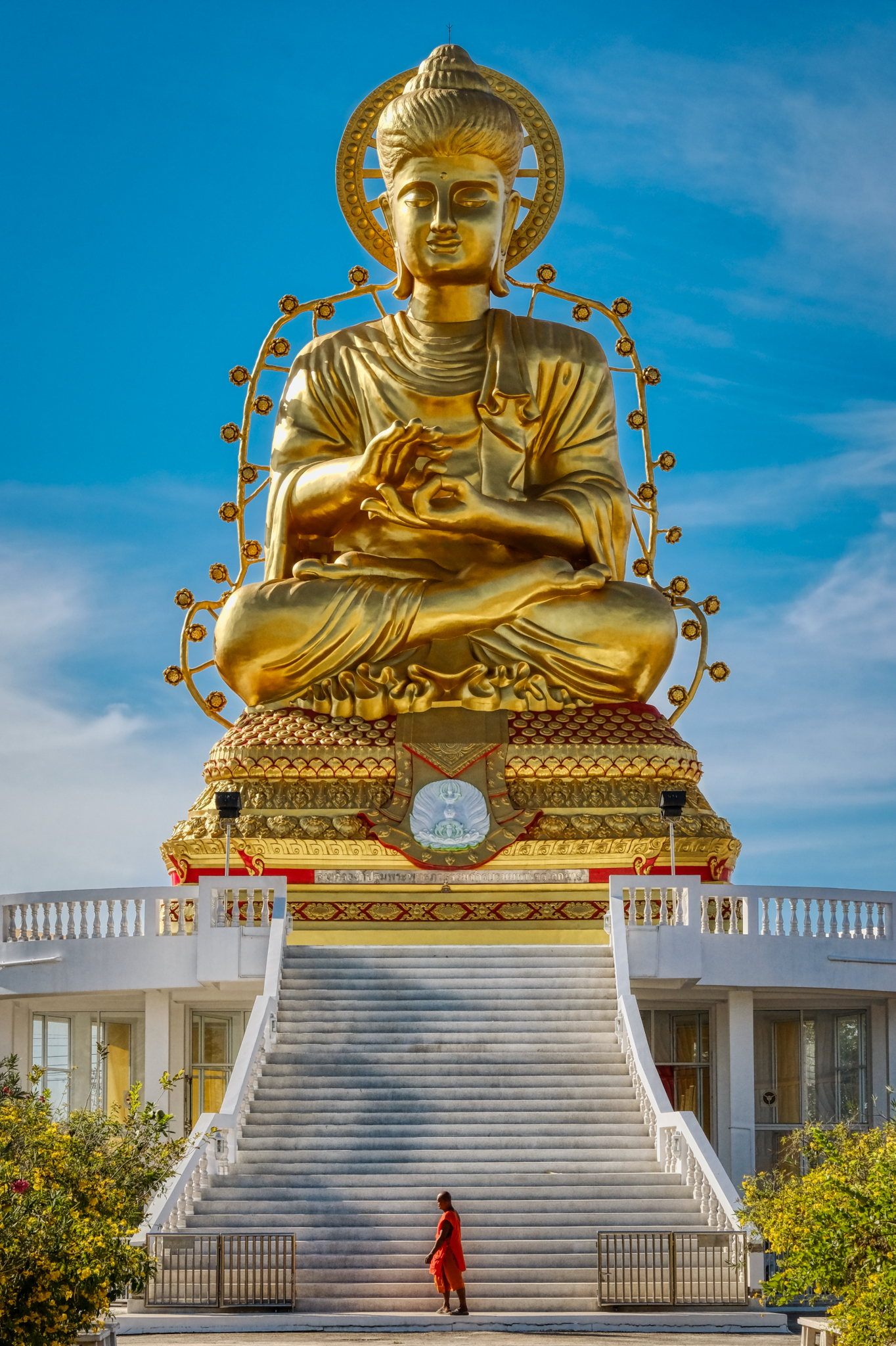 Directly across from the flake salt gathering was the Buddhist Wat I came to see after 5 years . . . . Wat Lat Yai with the Buddha colossus.
Directly across from the flake salt gathering was the Buddhist Wat I came to see after 5 years . . . . Wat Lat Yai with the Buddha colossus. 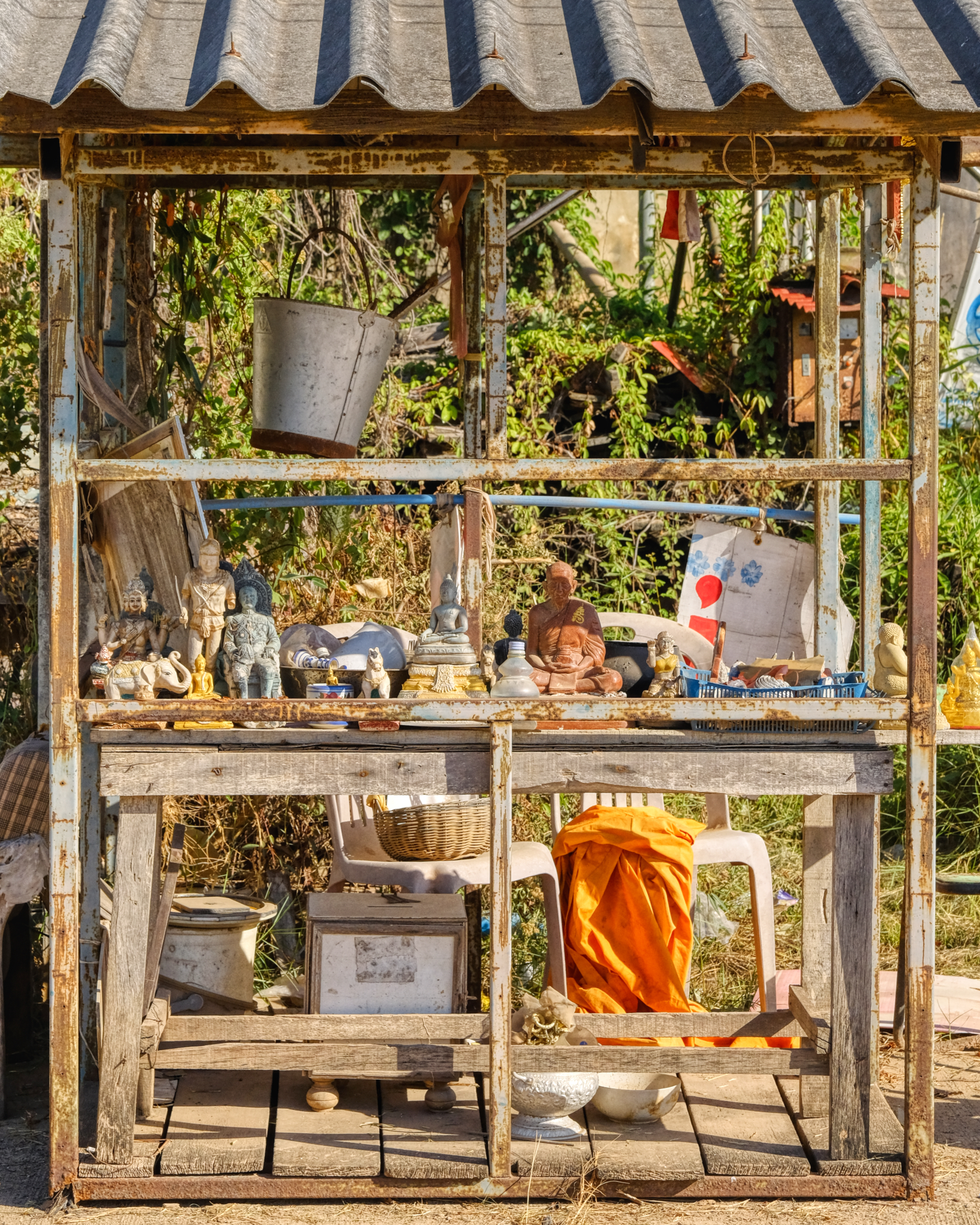 I had such wonderful memories of the spirituality of this Wat when I last visited. There are always interesting and unexpected things to see in a Wat. Some of what you see are what the monks themselves have arranged (like this small altar), but most of what is seen in a Wat are the results of what the big, rich donors want there to be.
I had such wonderful memories of the spirituality of this Wat when I last visited. There are always interesting and unexpected things to see in a Wat. Some of what you see are what the monks themselves have arranged (like this small altar), but most of what is seen in a Wat are the results of what the big, rich donors want there to be.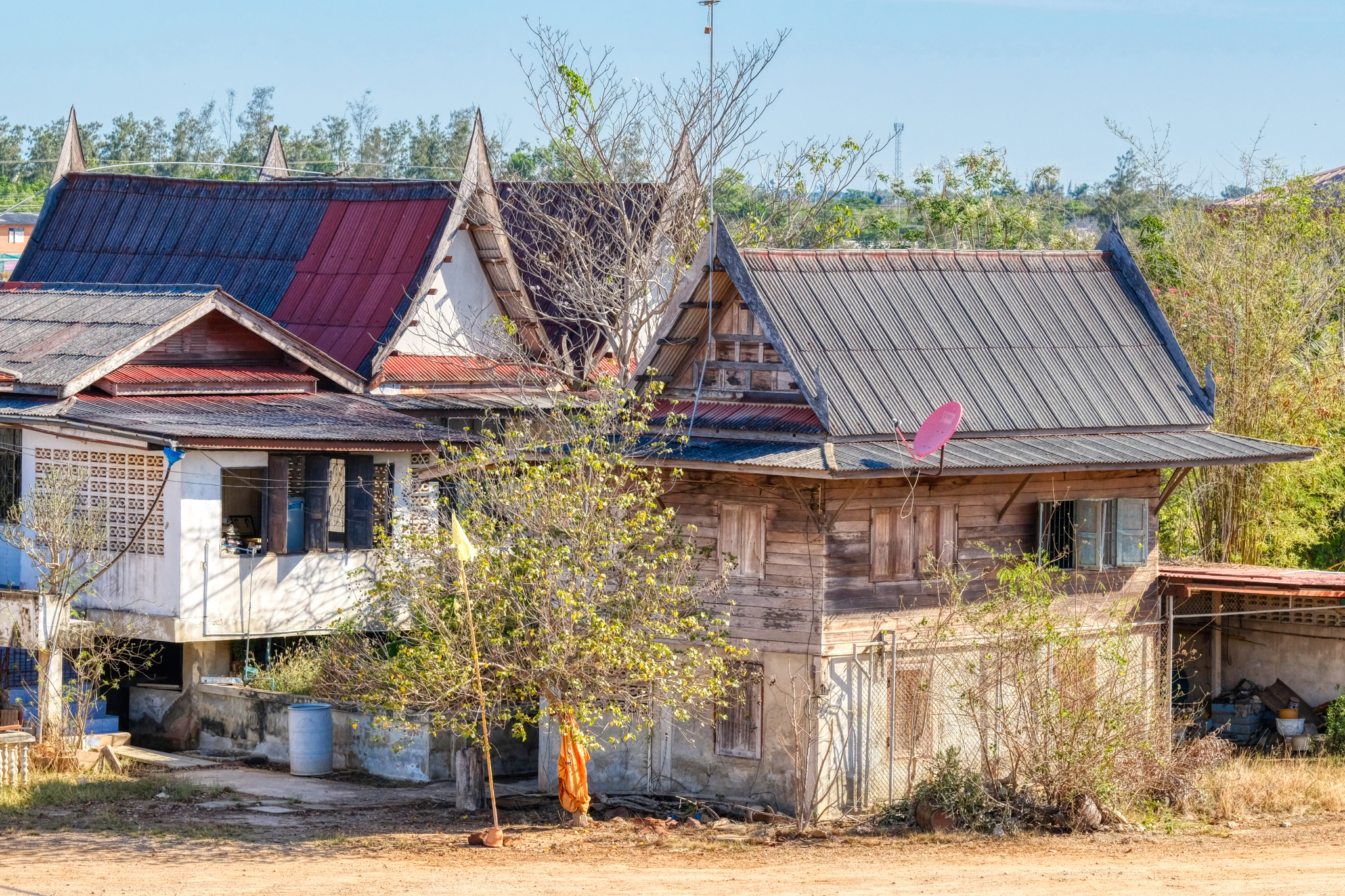 The surviving old monk quarters. I am always amazed to see a satellite dish in a Buddhist temple . . .
The surviving old monk quarters. I am always amazed to see a satellite dish in a Buddhist temple . . . 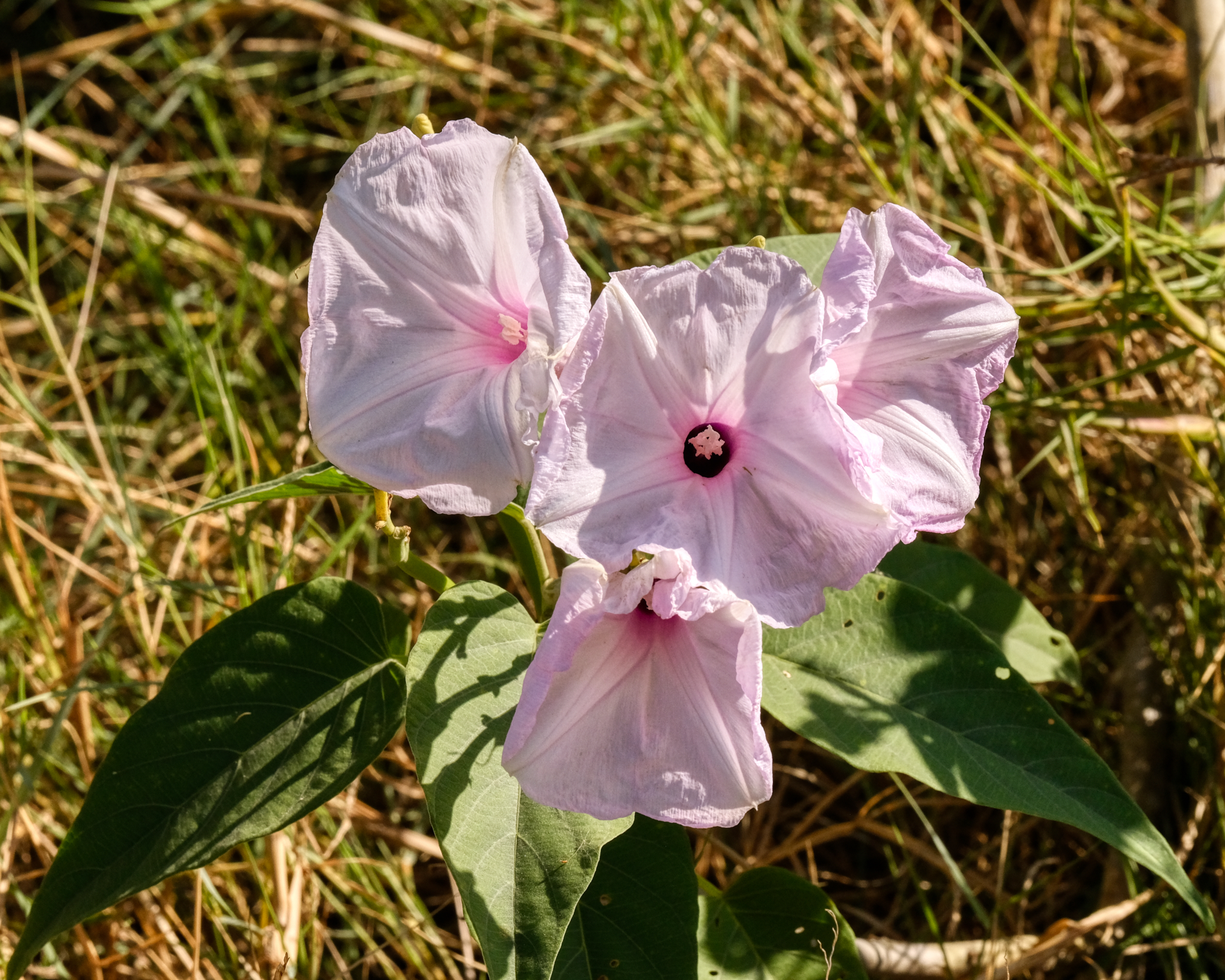 Always beautiful flowers to be seen in a Wat.
Always beautiful flowers to be seen in a Wat.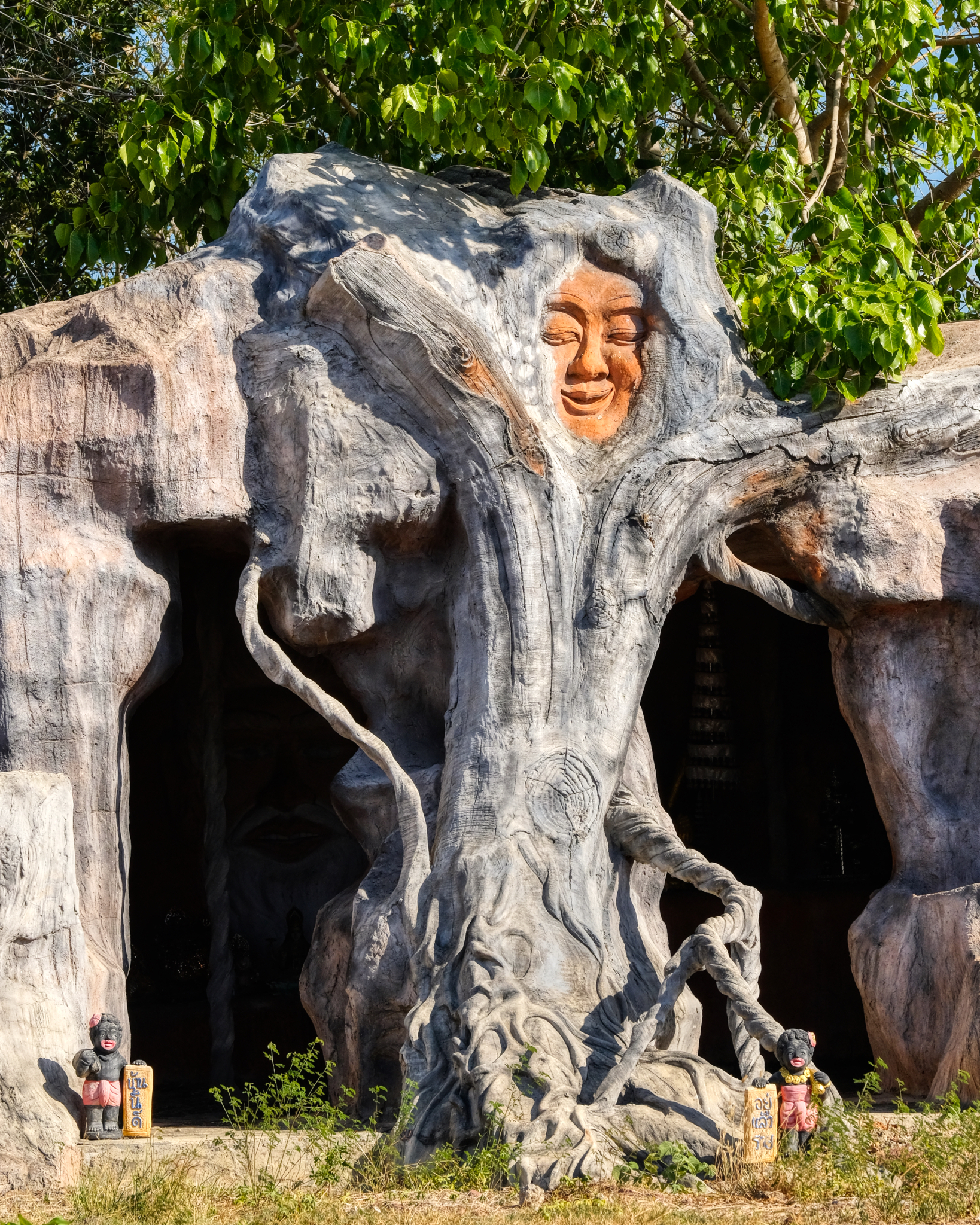 Wat Lat Yai has some of the strangest 'grottos' I have ever seen. From the outside they are just plain weird . . .
Wat Lat Yai has some of the strangest 'grottos' I have ever seen. From the outside they are just plain weird . . .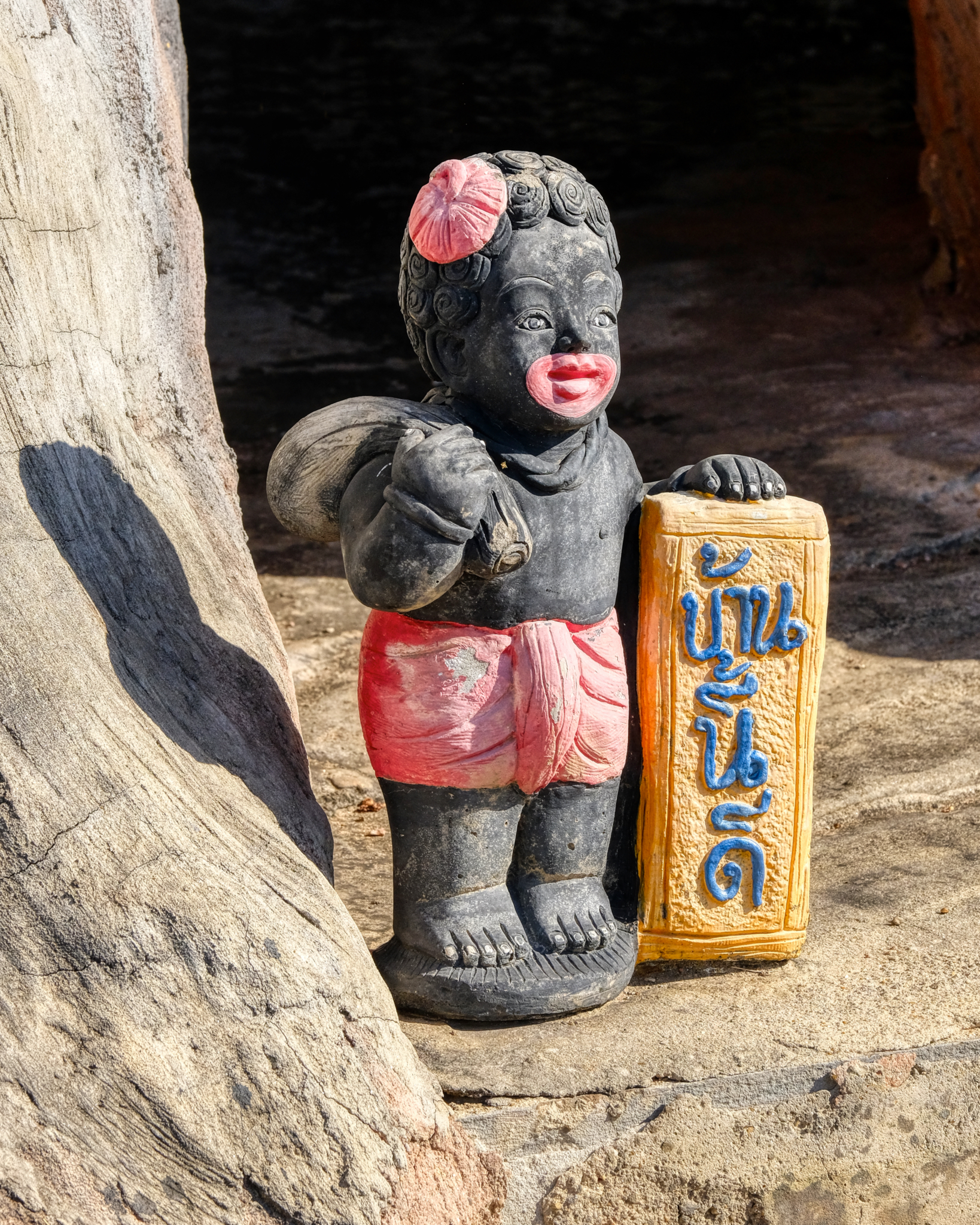 What exactly is going on here? Remember, these things are placed in temples by the doners, not by the monks, who renounce material things. But still . . . .
What exactly is going on here? Remember, these things are placed in temples by the doners, not by the monks, who renounce material things. But still . . . .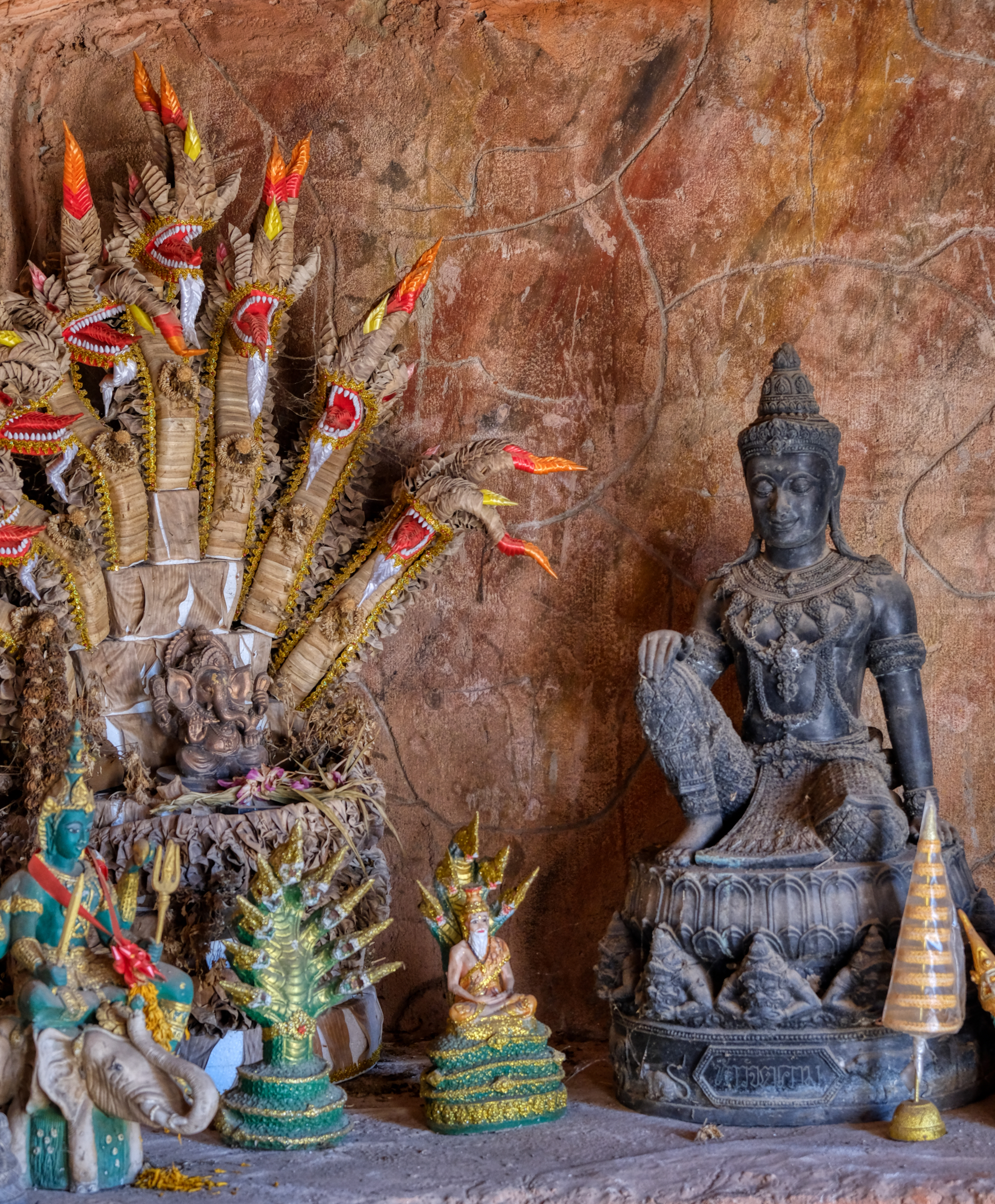 Although the outside of this man-made grotto was a little strange, the inside was magic.
Although the outside of this man-made grotto was a little strange, the inside was magic.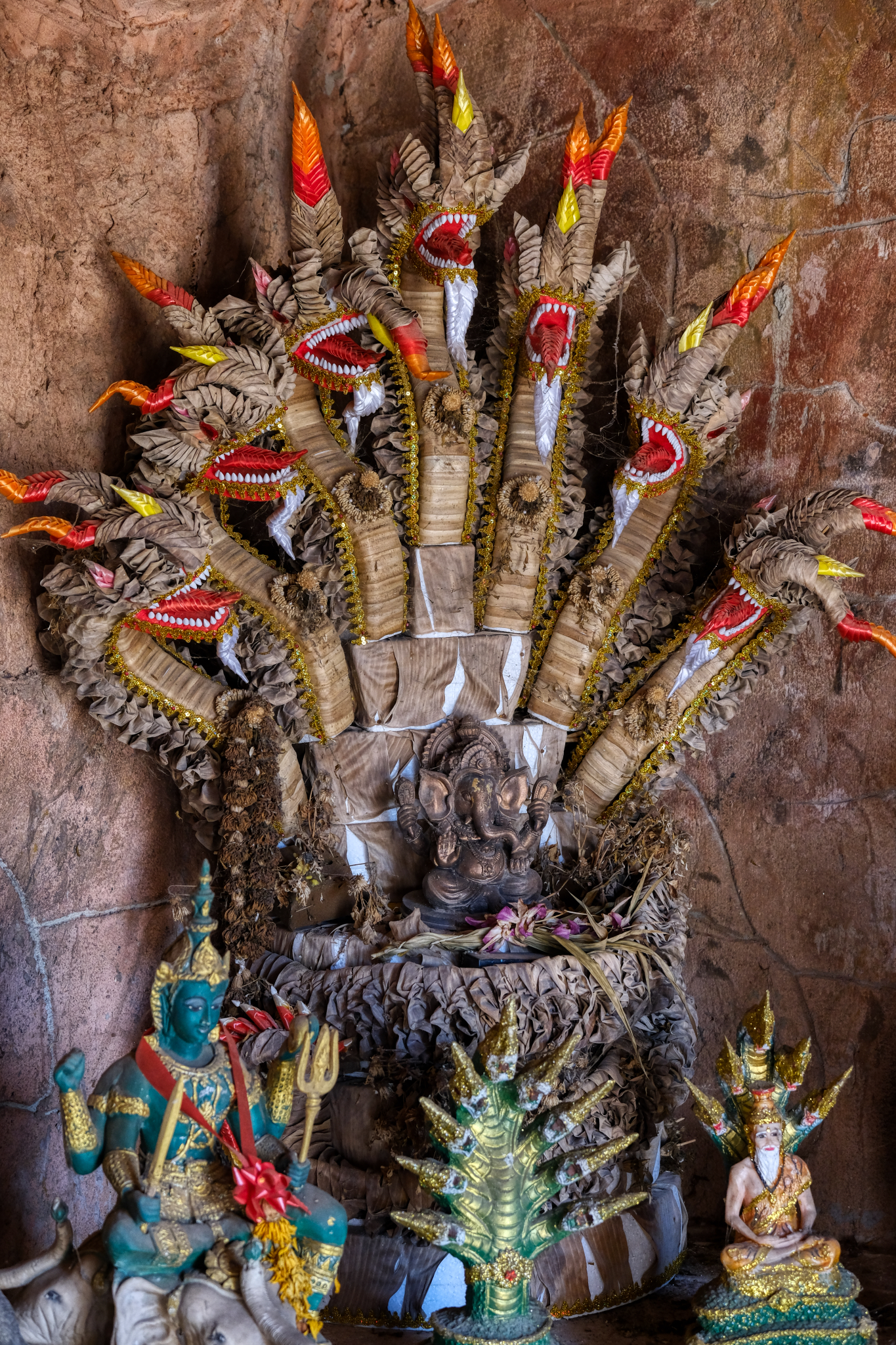 The banana leaf origami on this altar piece was stunningly beautiful. I felt a little like Indiana Jones discovering a lost tomb or ancient temple never seen before. These are Hindu religious items revered in Thailand along side The Buddha.
The banana leaf origami on this altar piece was stunningly beautiful. I felt a little like Indiana Jones discovering a lost tomb or ancient temple never seen before. These are Hindu religious items revered in Thailand along side The Buddha.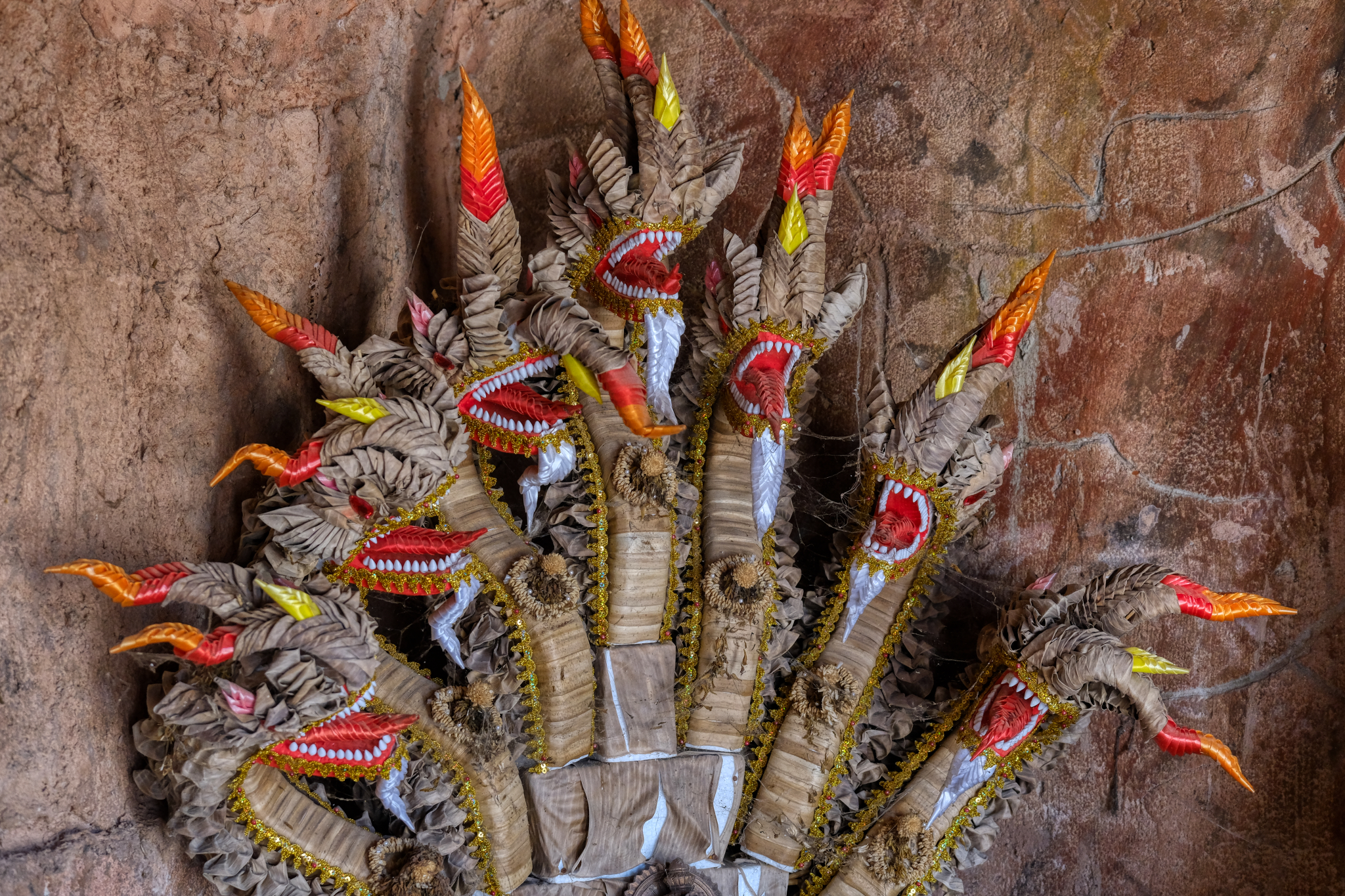 Remarkable fine detailing.
Remarkable fine detailing.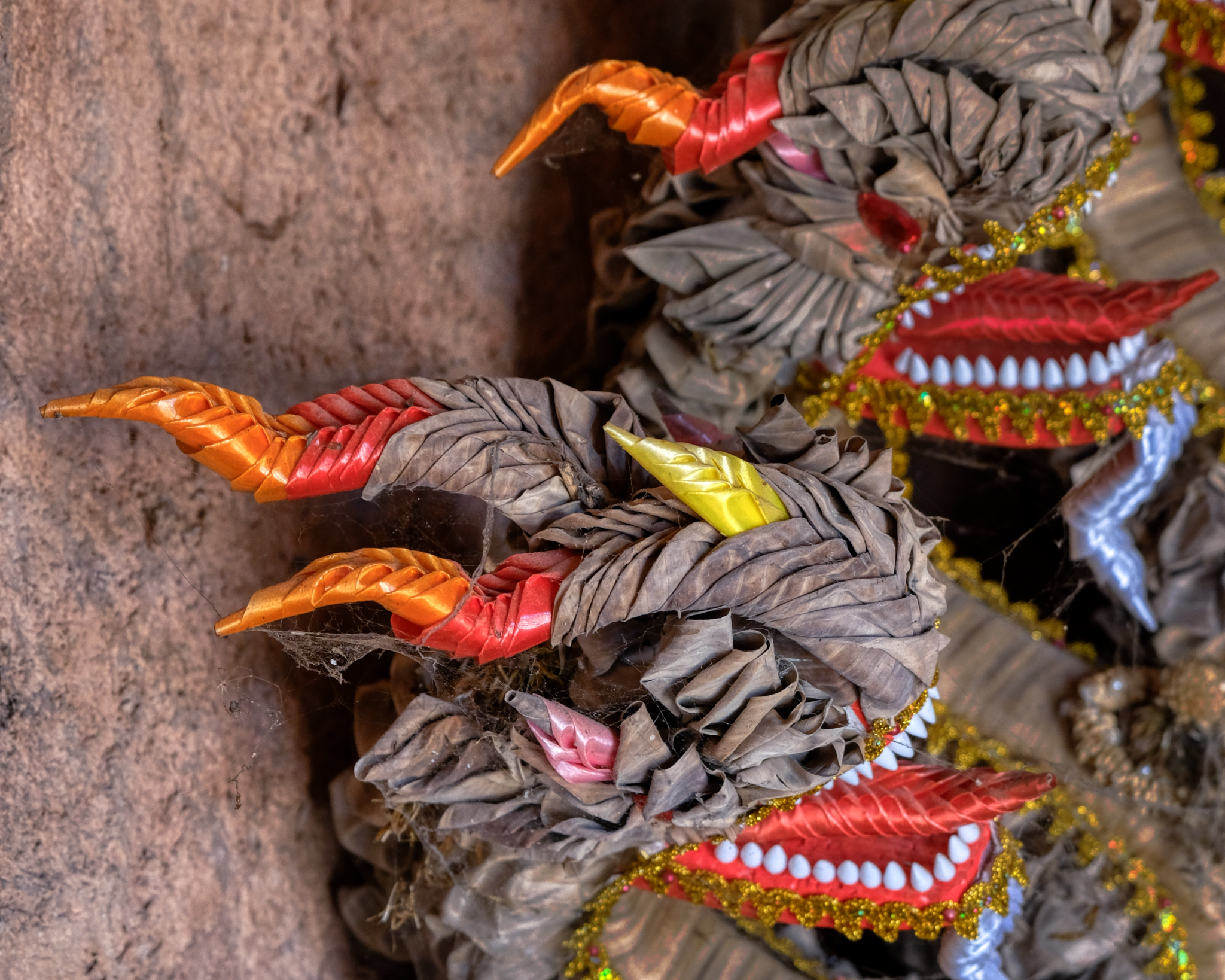 Even the cobwebs seem to belong; adding to the spiritual power of this votive object.
Even the cobwebs seem to belong; adding to the spiritual power of this votive object.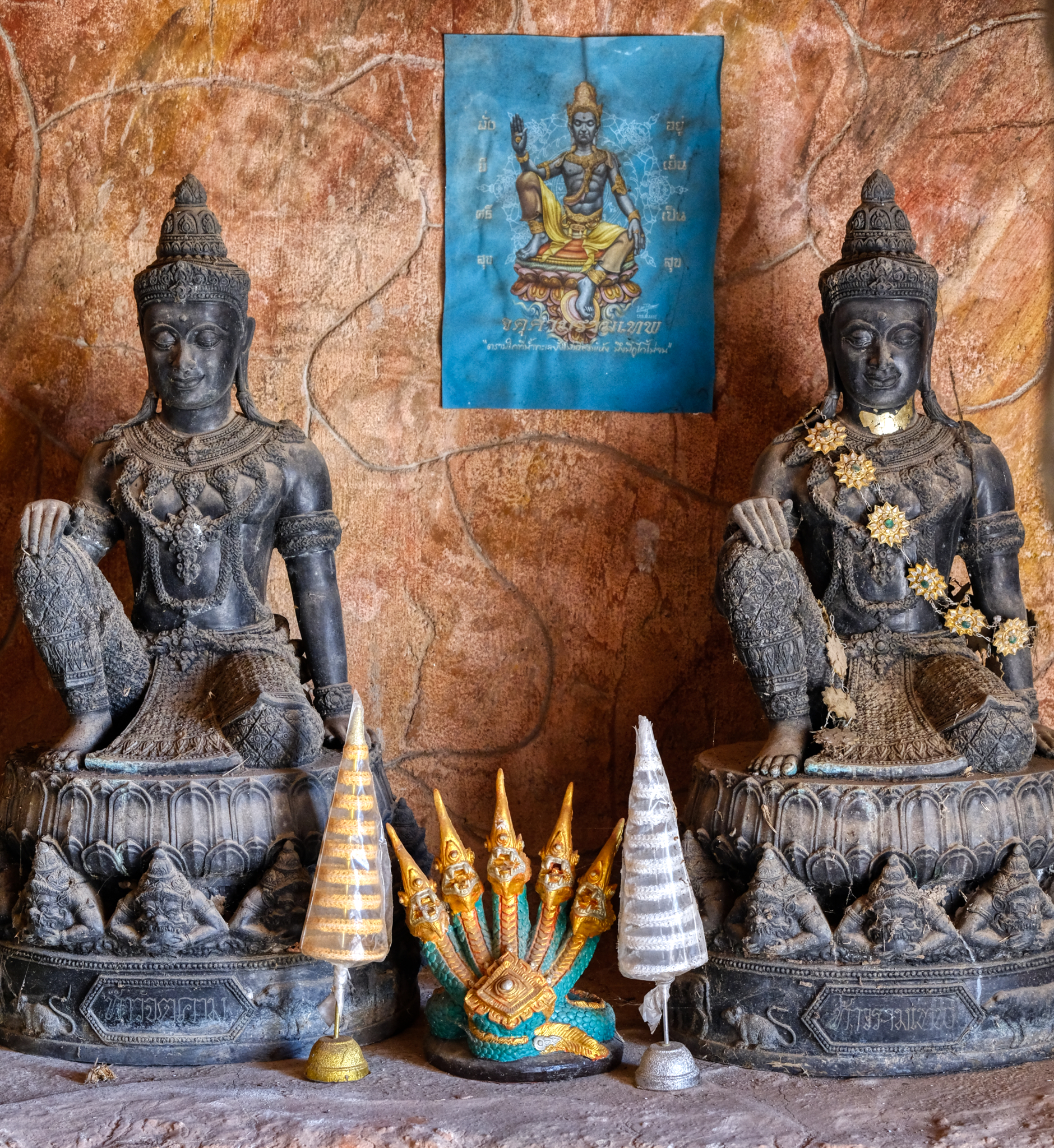 Bikkus, listeners of the Buddha teaching the dharma.
Bikkus, listeners of the Buddha teaching the dharma.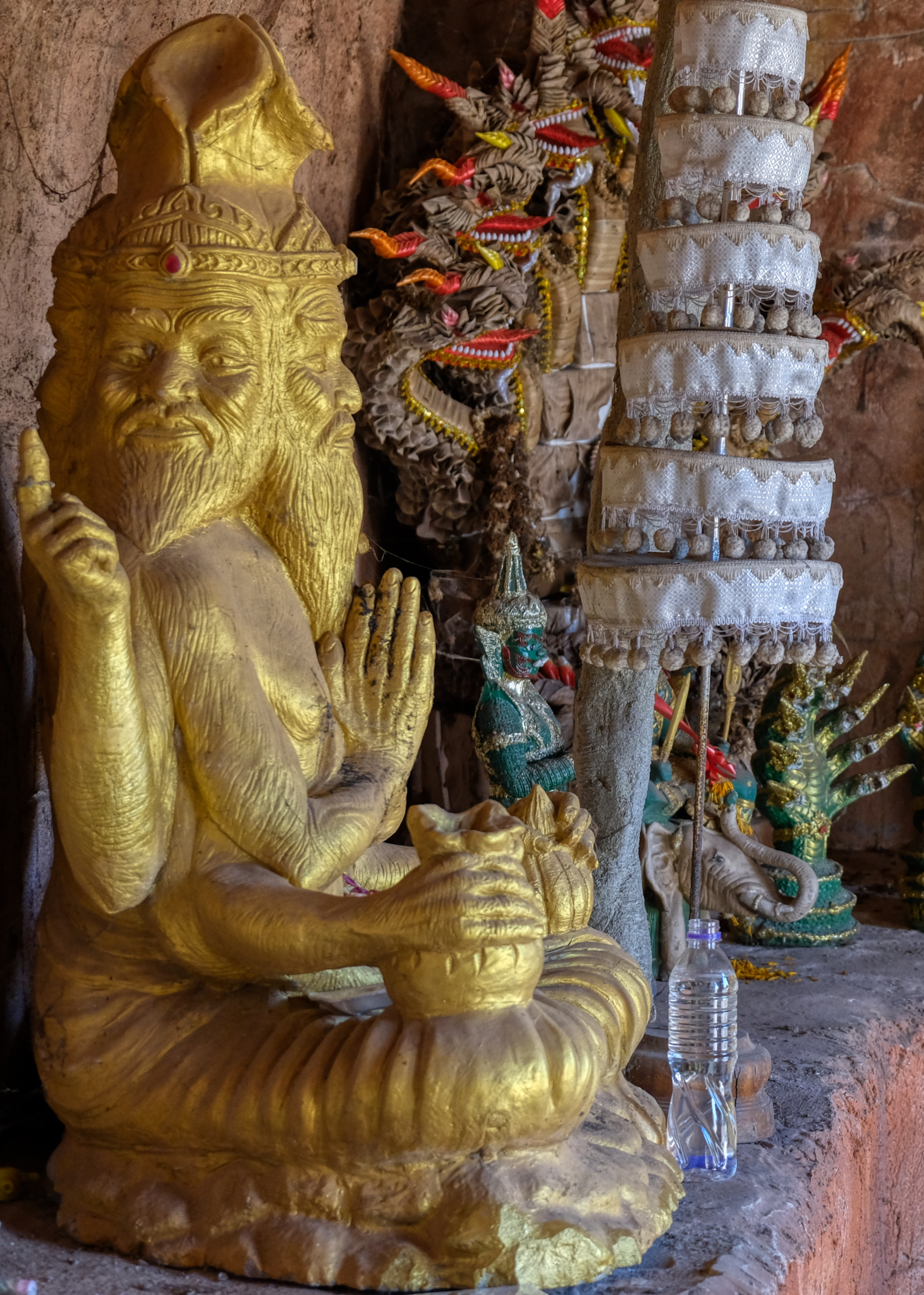 Another Hindu reference . . . a four face sadhu.
Another Hindu reference . . . a four face sadhu.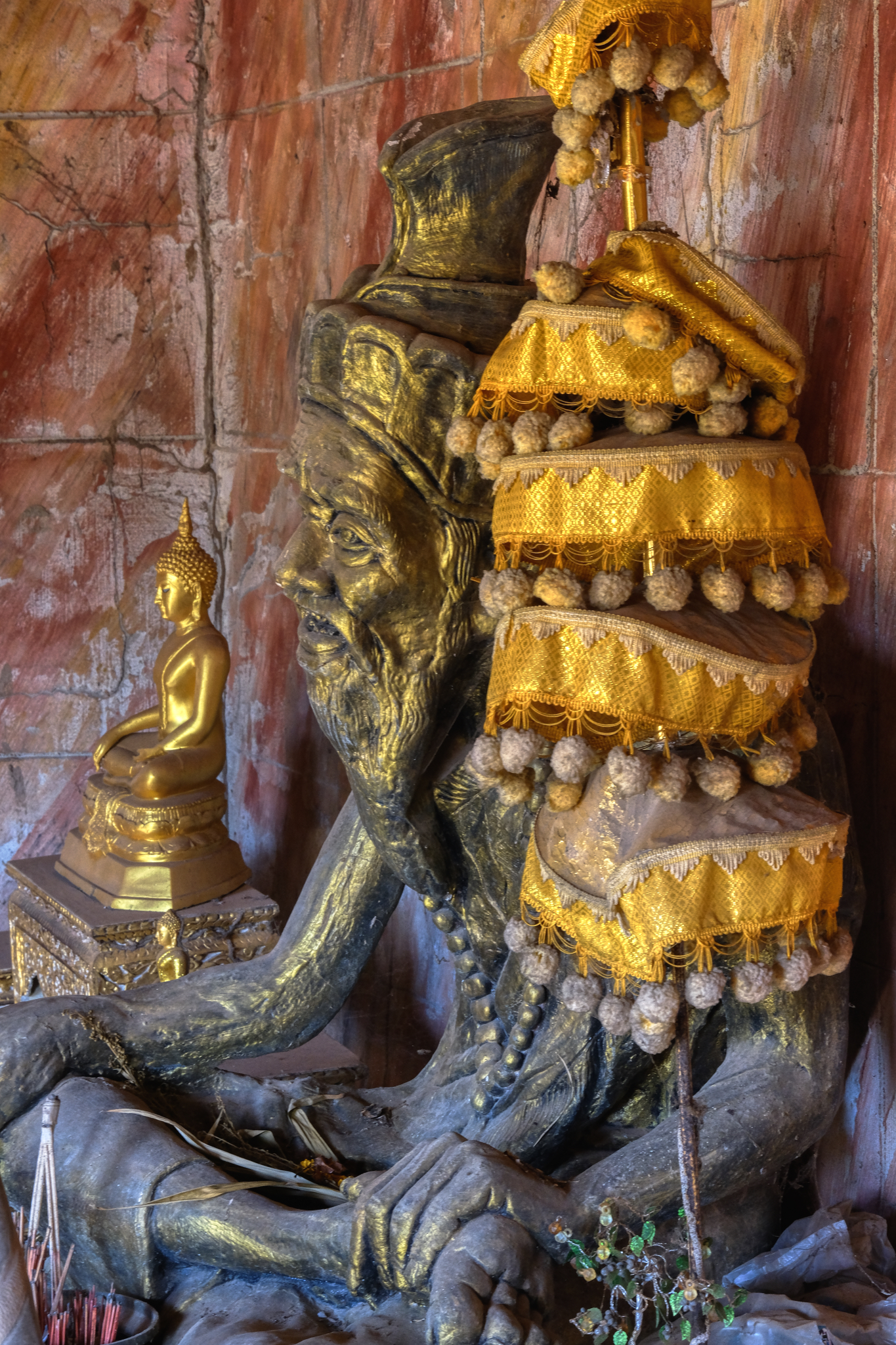 Sadhu and Buddha images in the grotto. I loved being in that space . . .
Sadhu and Buddha images in the grotto. I loved being in that space . . .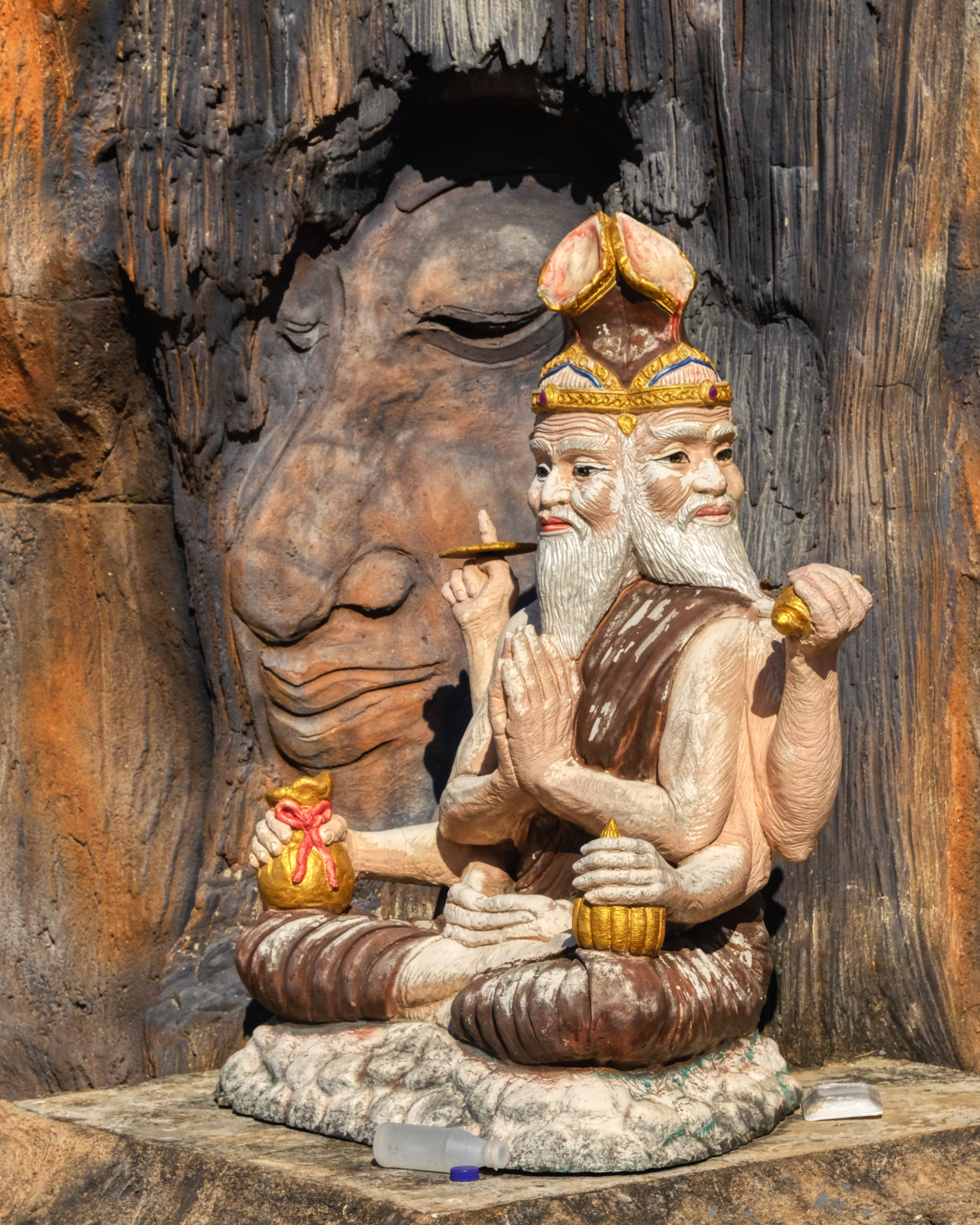 There were also a series of enclave altars around the outside and back of the grotto structure.
There were also a series of enclave altars around the outside and back of the grotto structure.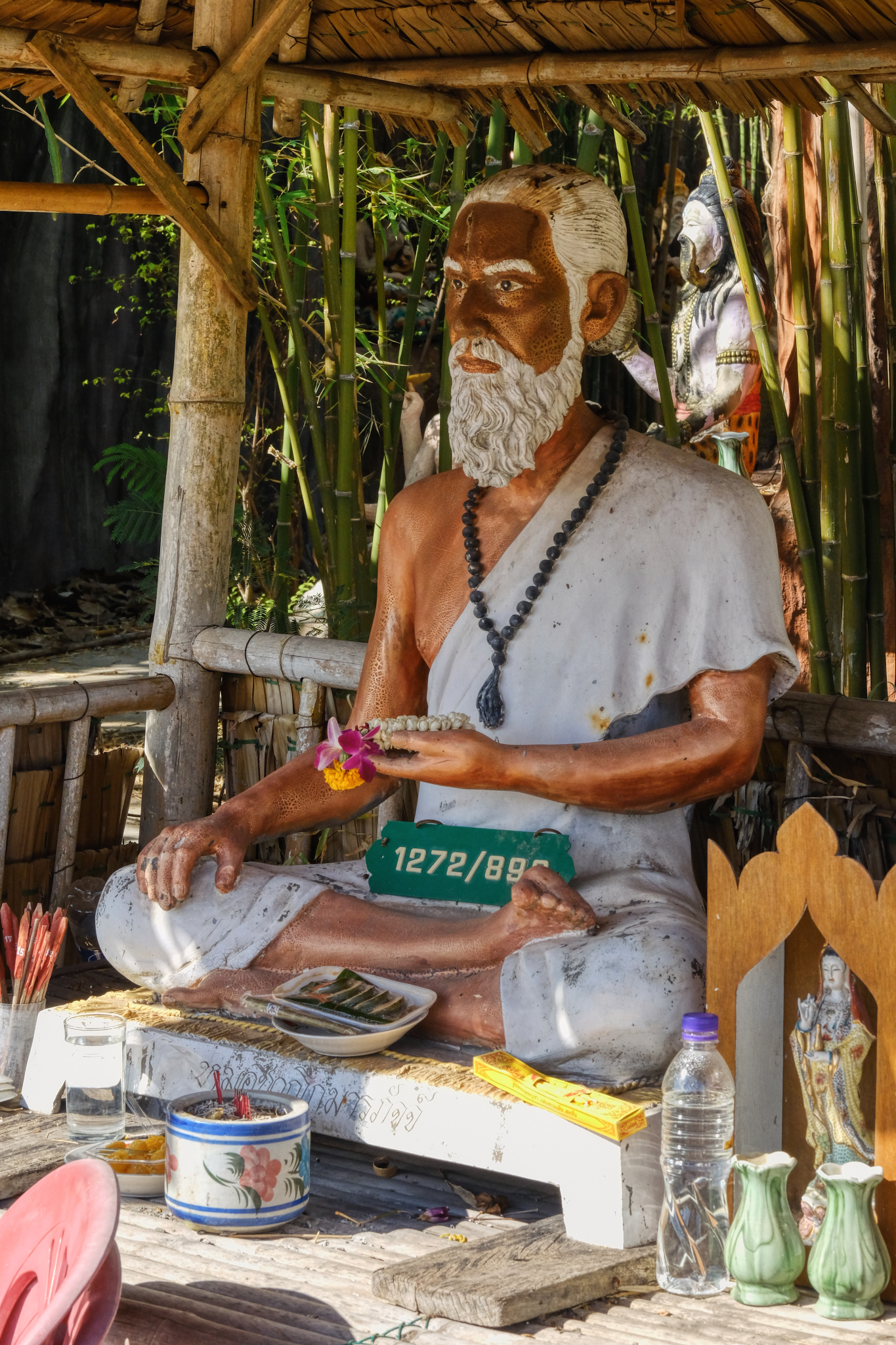 These are living altars. As can be seen, people bring offerings, usually wishing or hoping for good luck. Notice that someone has left the address plate from their house on the altar . . .
These are living altars. As can be seen, people bring offerings, usually wishing or hoping for good luck. Notice that someone has left the address plate from their house on the altar . . .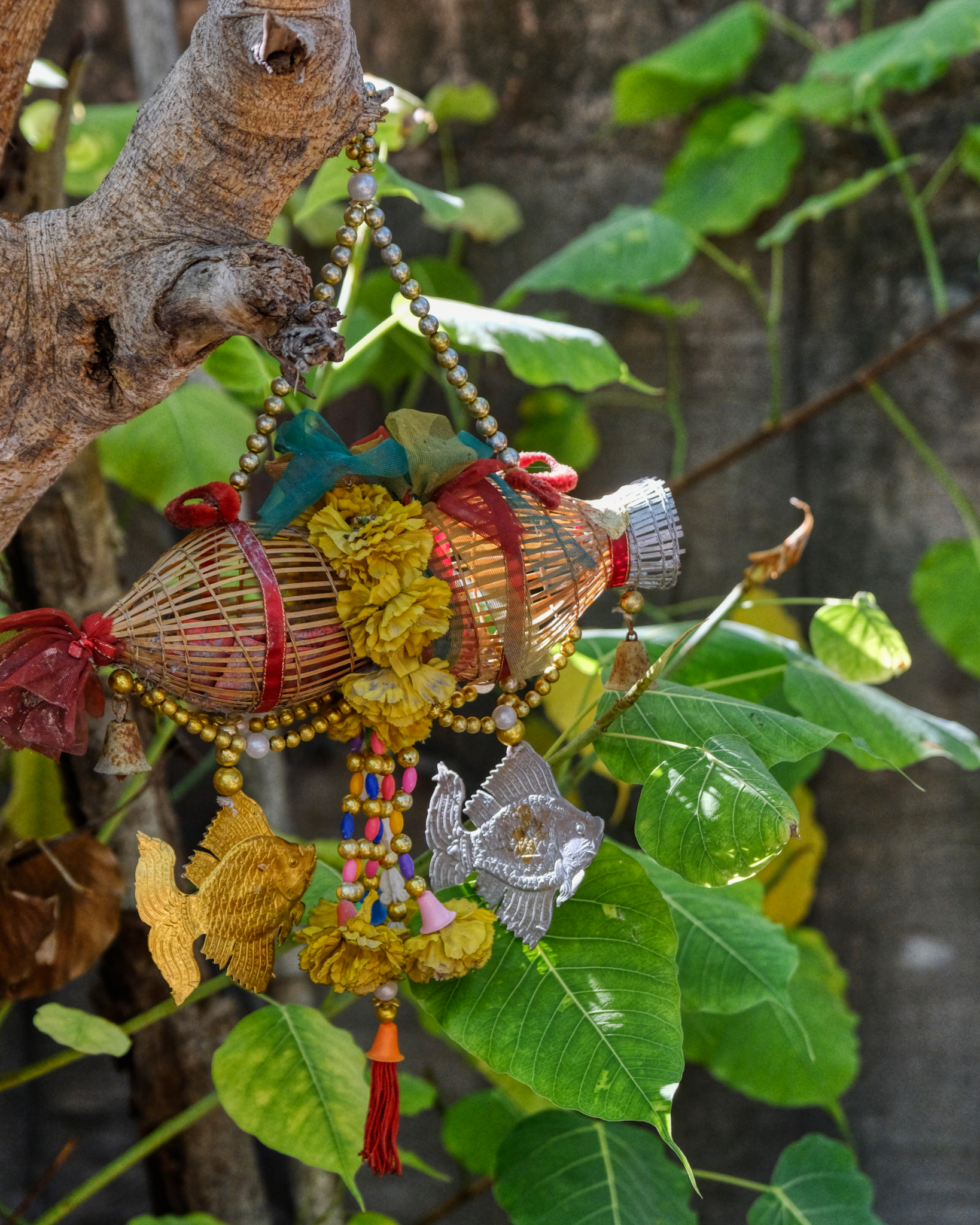 Slung here and there, votive charms festoon the temple trees.
Slung here and there, votive charms festoon the temple trees.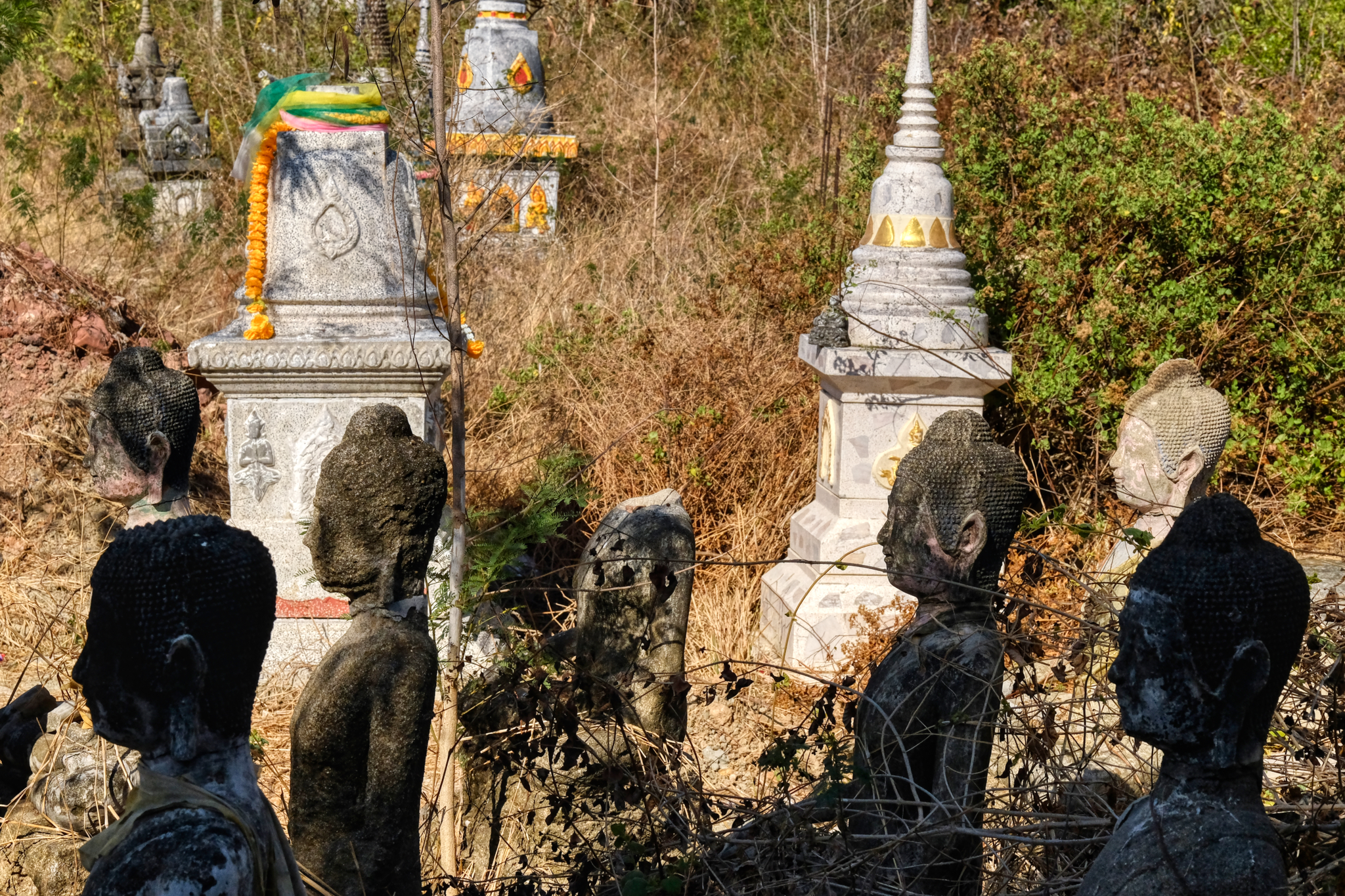 The reason I wanted to return to this Wat and bring friends, was because there used to be a tropical pine grove with old Buddha images in it . . . covered in pine needles. The pine forest is gone: slashed because they did not fit the plan of a doner with a new vision for this temple. The old Buddhas were still there, but looking like they have been 'mothballed' . . .
The reason I wanted to return to this Wat and bring friends, was because there used to be a tropical pine grove with old Buddha images in it . . . covered in pine needles. The pine forest is gone: slashed because they did not fit the plan of a doner with a new vision for this temple. The old Buddhas were still there, but looking like they have been 'mothballed' . . .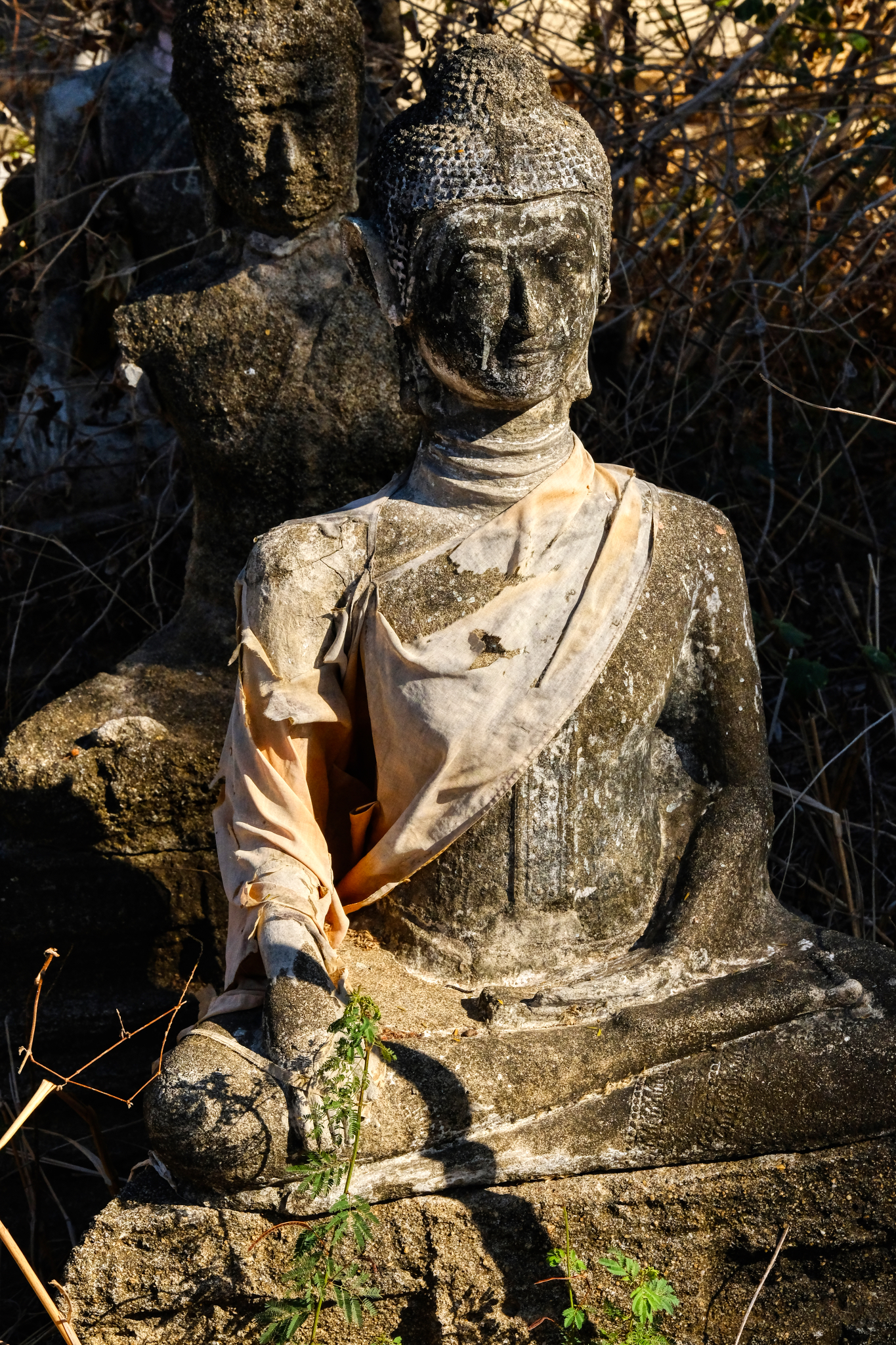 These old, and seemingly discarded, Buddha images seemed to me to be highly spiritual reminders of the project that the Buddha called us to try.
These old, and seemingly discarded, Buddha images seemed to me to be highly spiritual reminders of the project that the Buddha called us to try.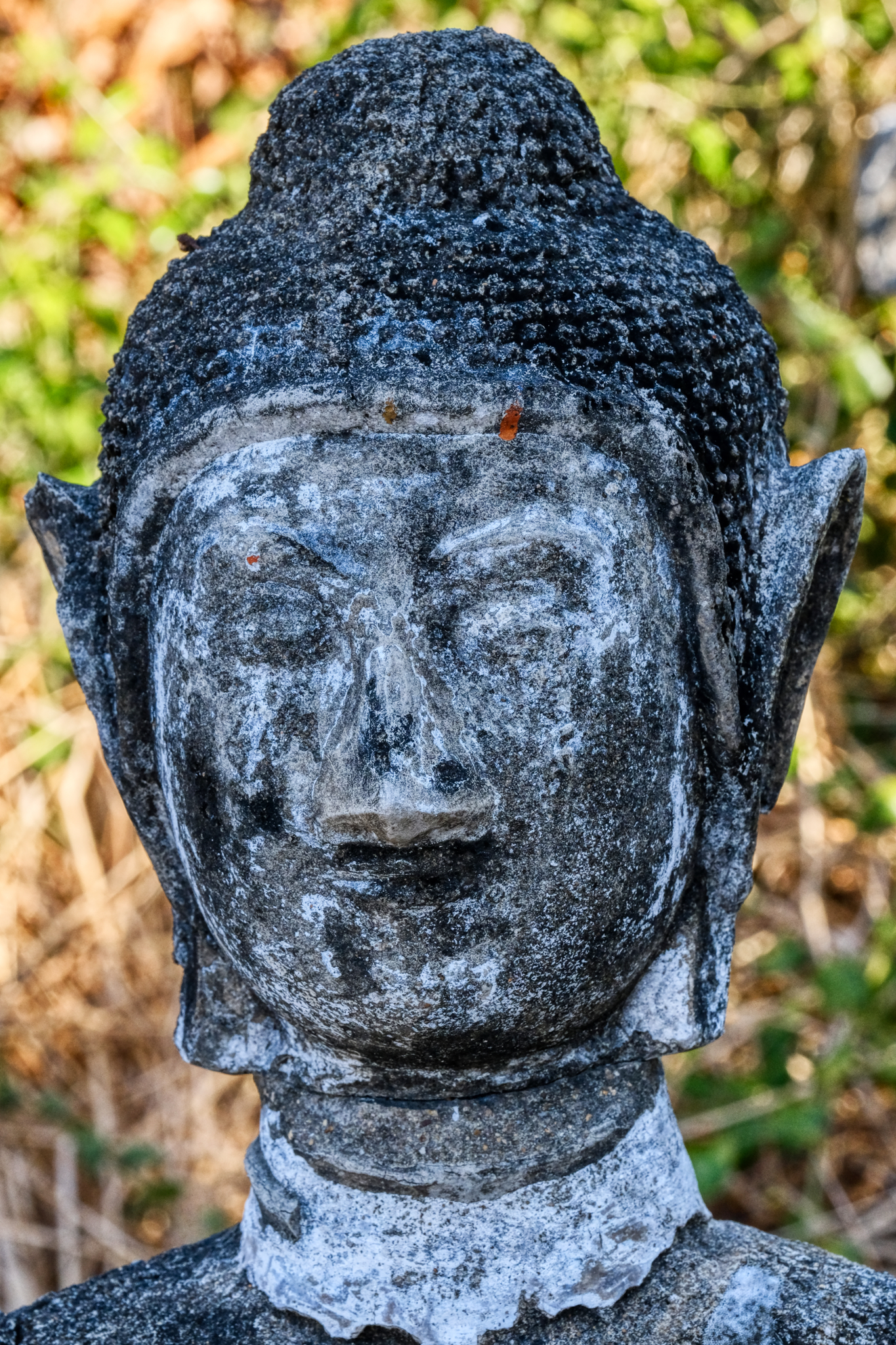 It seems like someone has taken a scraper to clean some of the moss of of this Buddha image.
It seems like someone has taken a scraper to clean some of the moss of of this Buddha image.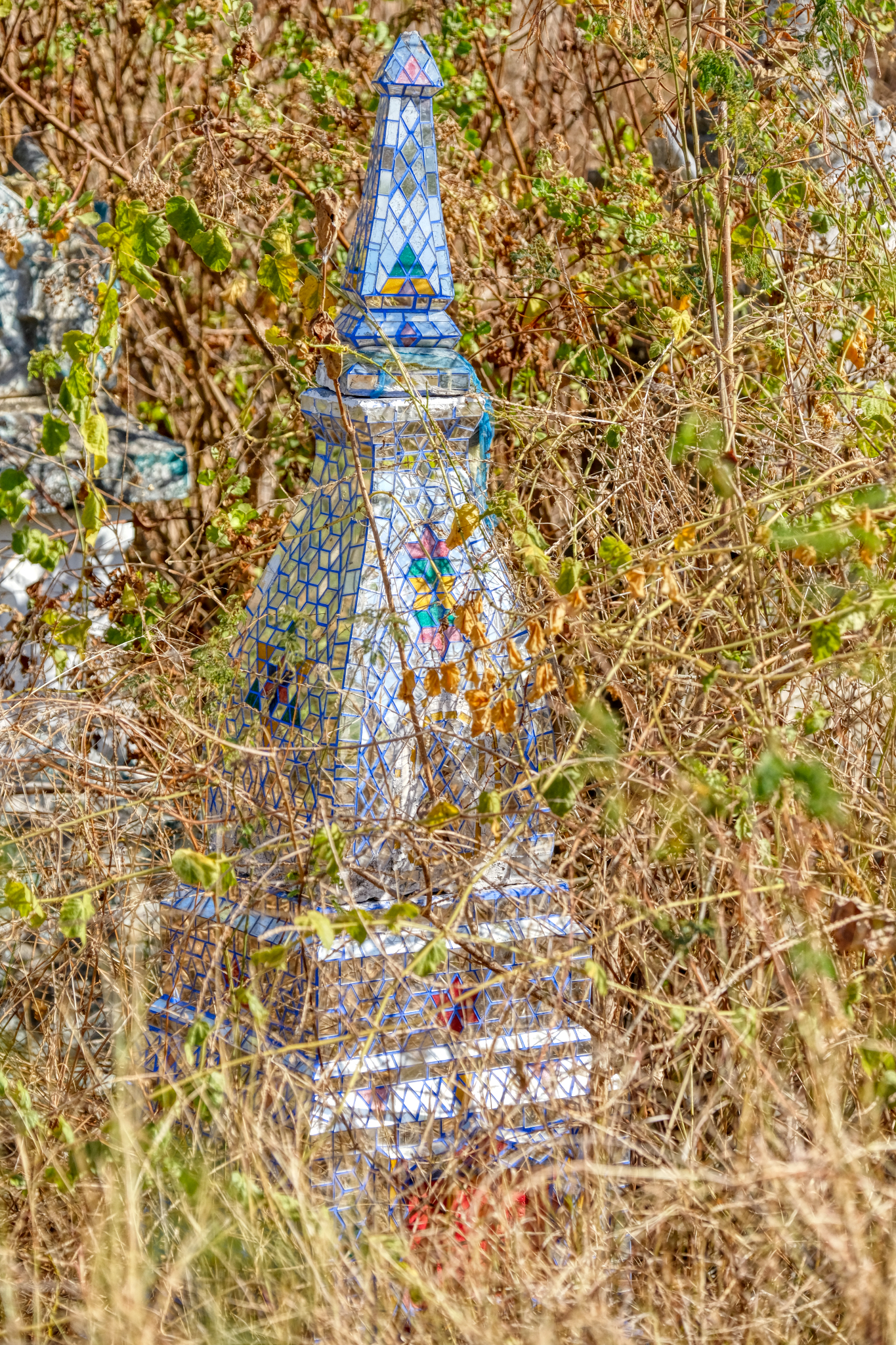 Still bright and shiny . . . an overgrown mirror chedi.
Still bright and shiny . . . an overgrown mirror chedi.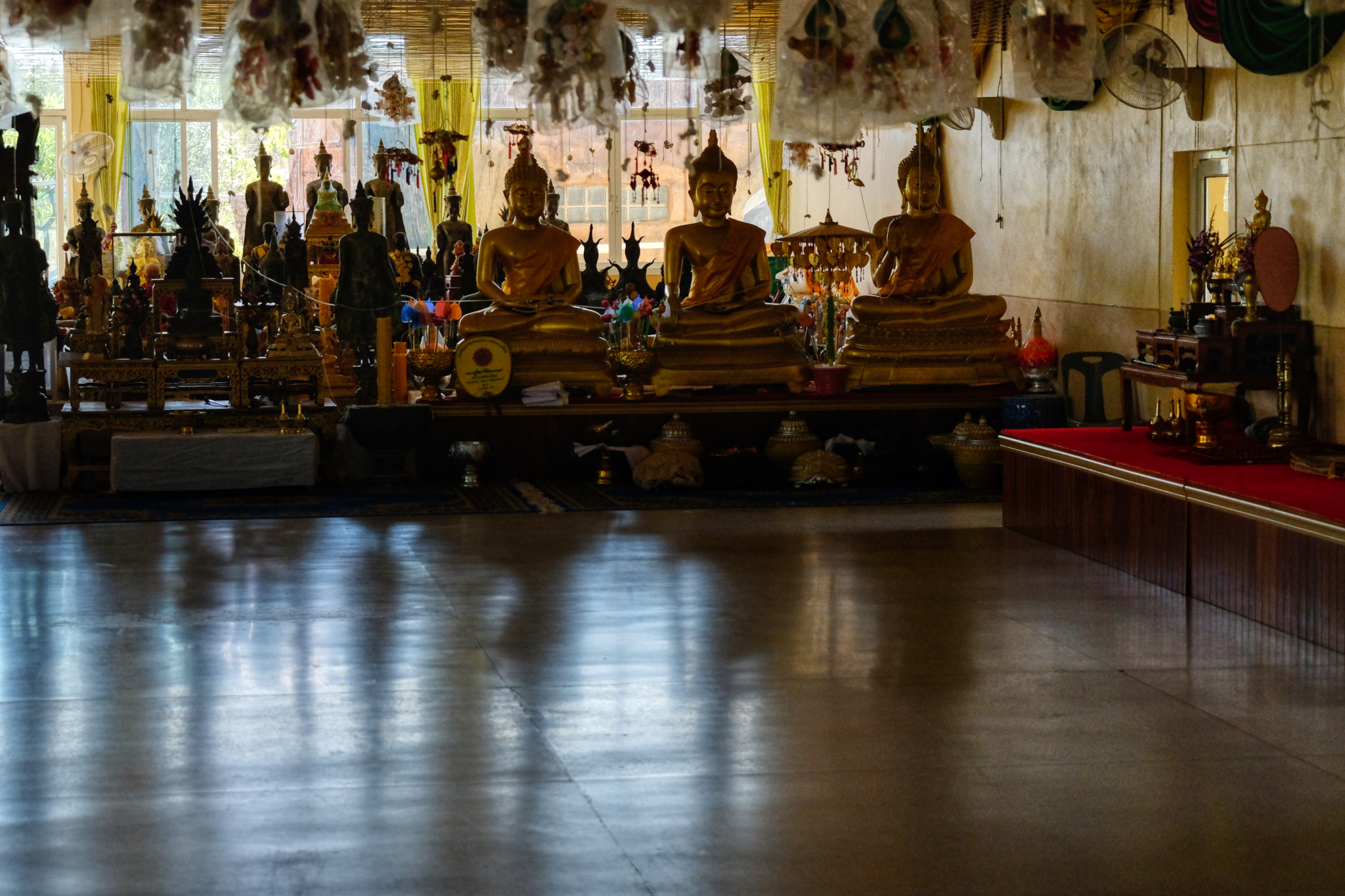 By this time of the morning (9:00am) it was already devilishly hot: well over 40c. We went inside to the shaded hall where two nice old ladies (helpers) brought us bottled water. The hall seemed temporary, perhaps being used until some other structure was being built.
By this time of the morning (9:00am) it was already devilishly hot: well over 40c. We went inside to the shaded hall where two nice old ladies (helpers) brought us bottled water. The hall seemed temporary, perhaps being used until some other structure was being built.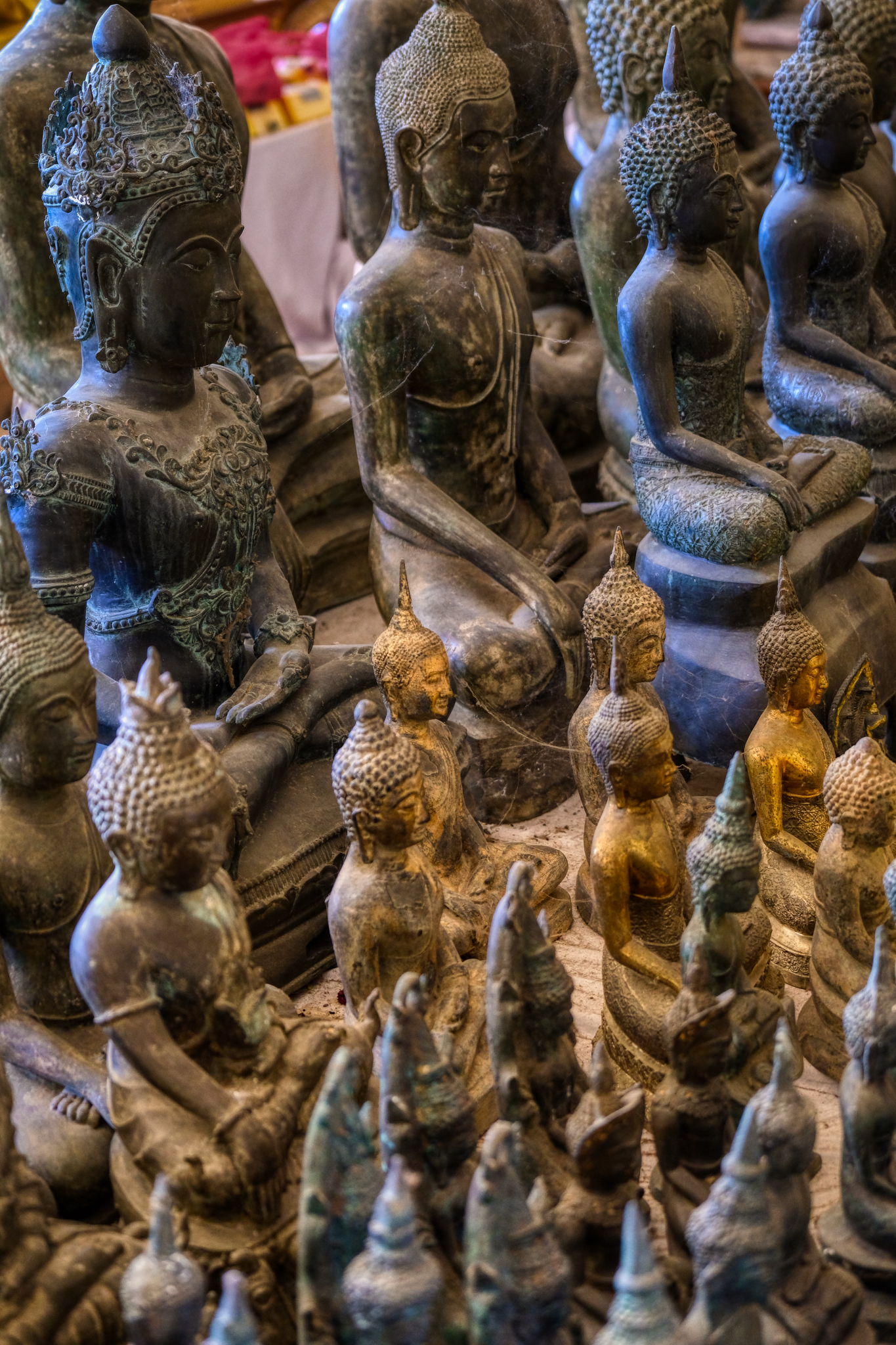 The altar was crowded with Buddha images. Fascinating.
The altar was crowded with Buddha images. Fascinating.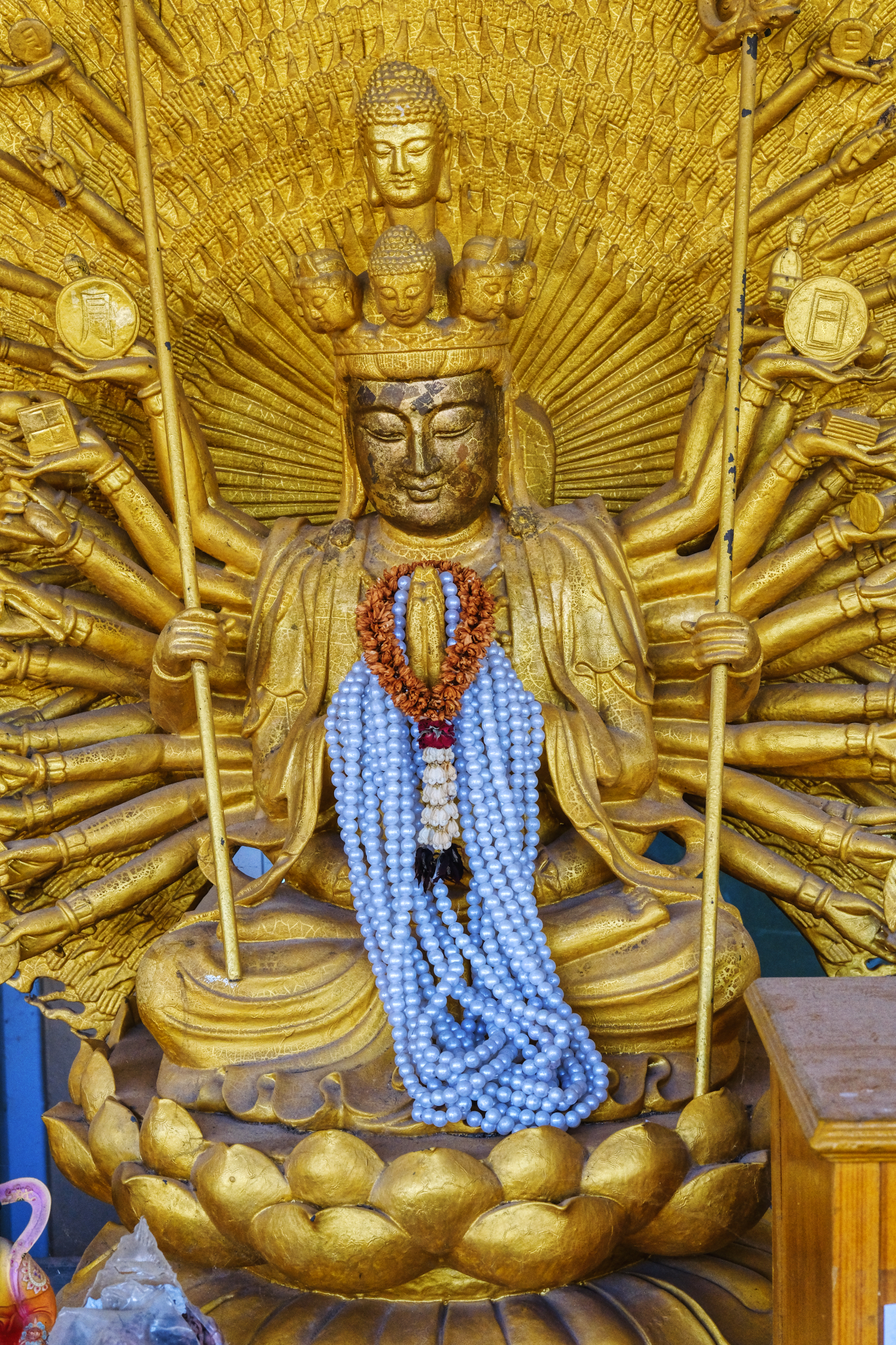 There seemed to be many more Hindu symbols in this Wat than others I have visited. I want a hat like this!
There seemed to be many more Hindu symbols in this Wat than others I have visited. I want a hat like this!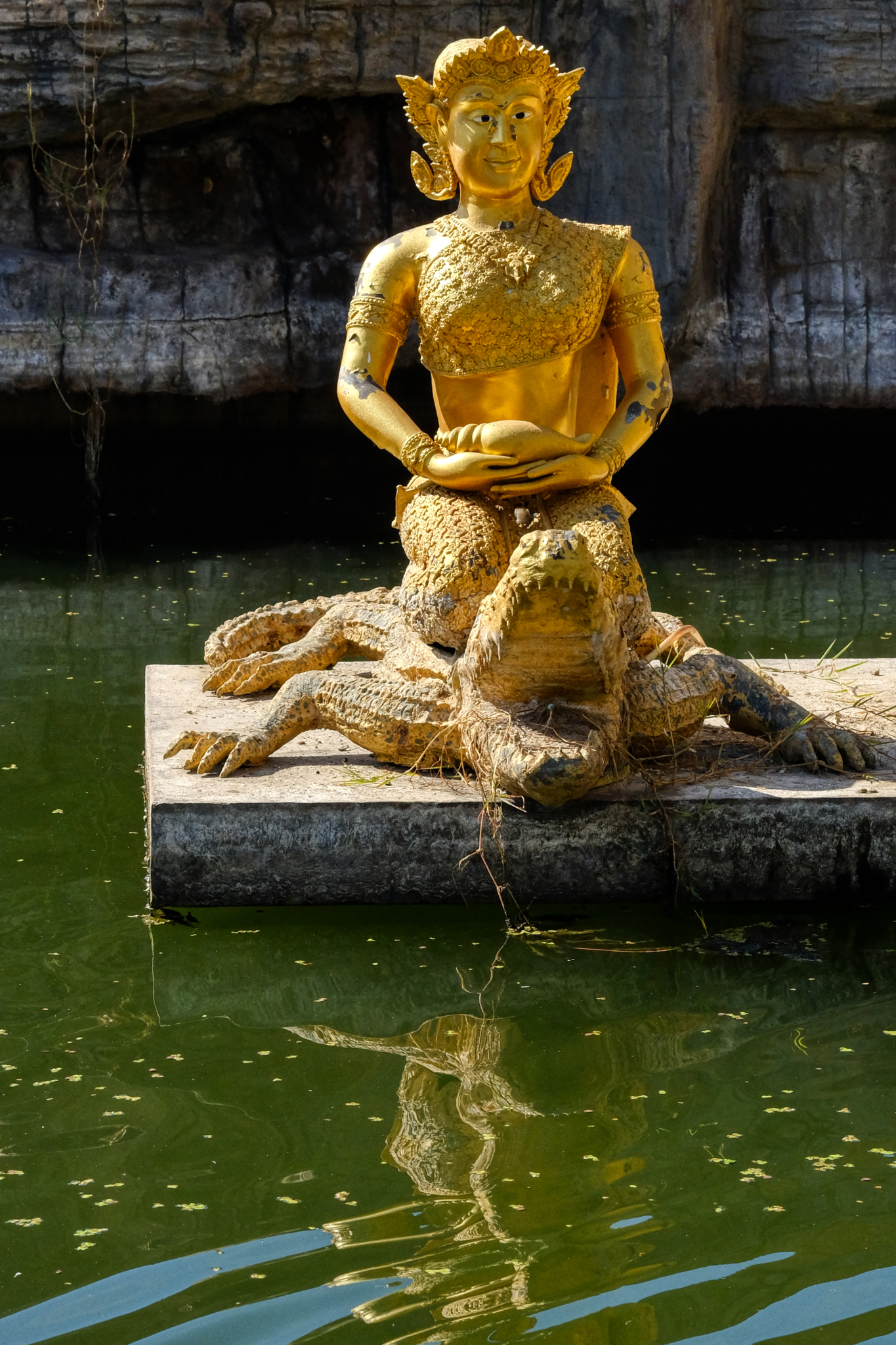 "What, me worry?" Supreme detachment. We left the Wat and headed back to the highway where we saw a sign pointing to small road and the name of another Wat . . .
"What, me worry?" Supreme detachment. We left the Wat and headed back to the highway where we saw a sign pointing to small road and the name of another Wat . . .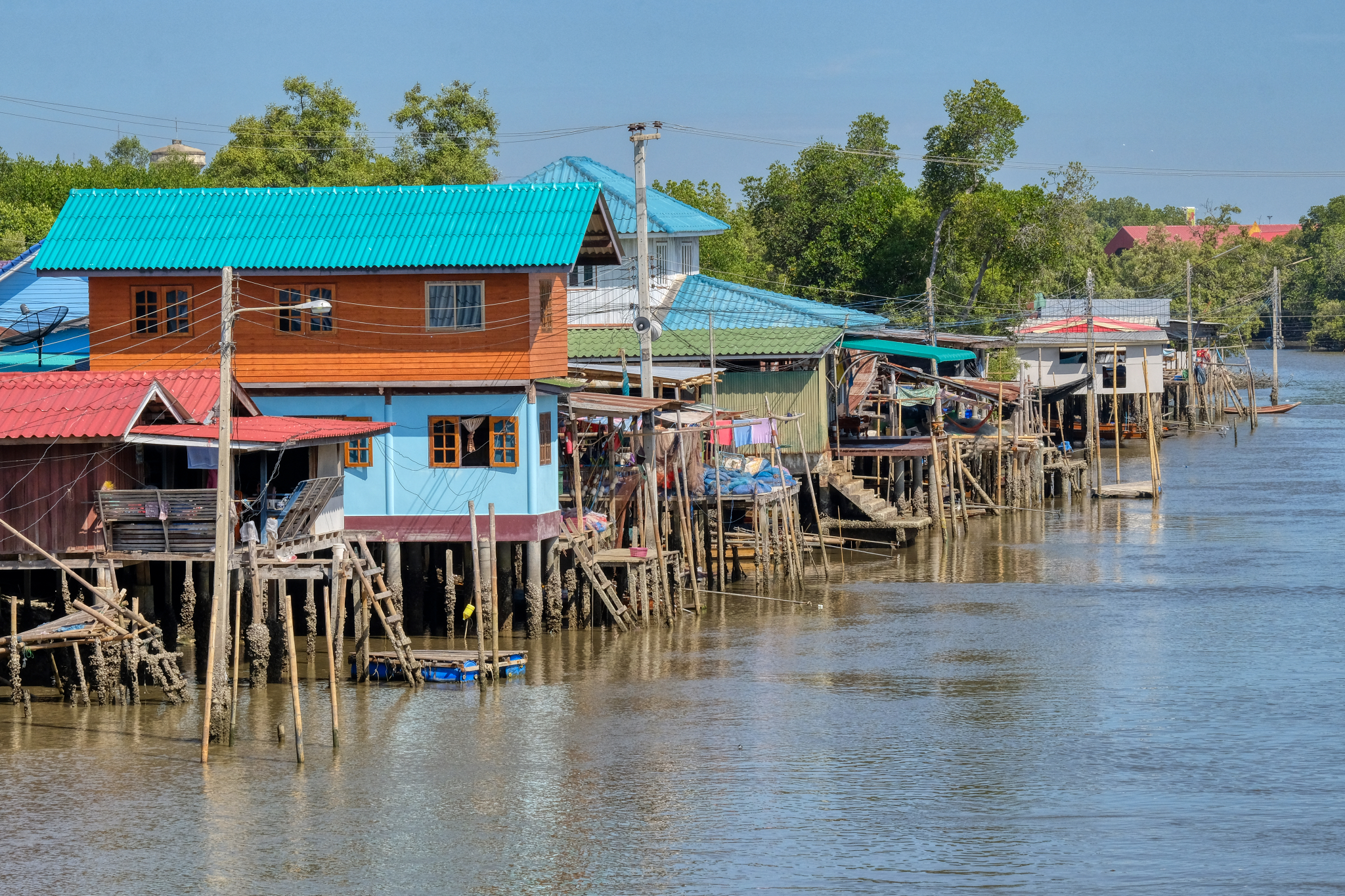 A short drive up a small rural road in search of another Buddhist temple to explore. We didn't find the temple, but we did find this wonderful village built on a canal not far from where it emptied into the Gulf of Thailand.
A short drive up a small rural road in search of another Buddhist temple to explore. We didn't find the temple, but we did find this wonderful village built on a canal not far from where it emptied into the Gulf of Thailand.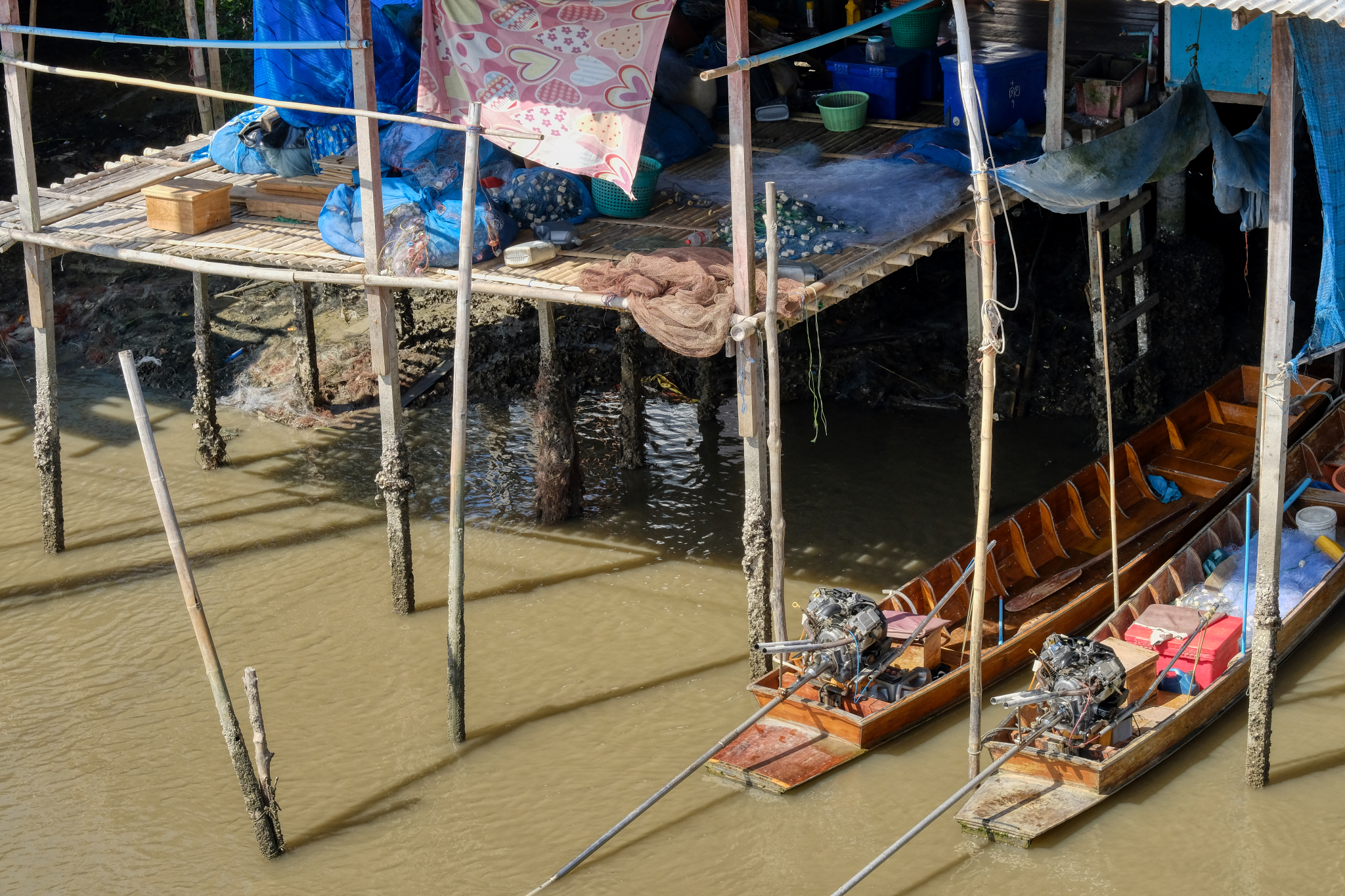 I love these canal side fishing villages . . . they are so picturesque . . . and visually complex.
I love these canal side fishing villages . . . they are so picturesque . . . and visually complex.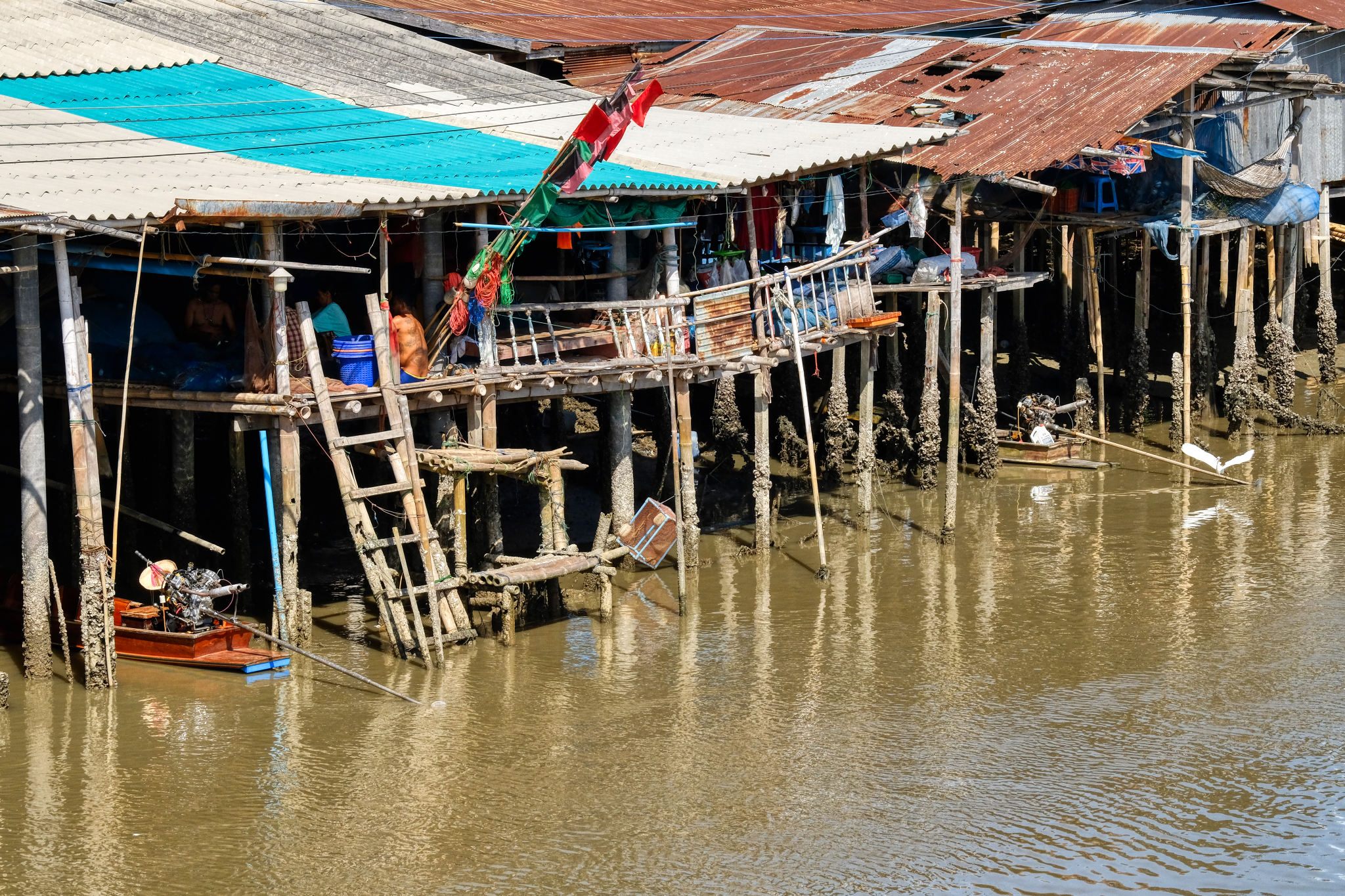 Too hot to do anything other than to sit around with your friends and family and mend nets . . . unless you are a falang photographer, that is!
Too hot to do anything other than to sit around with your friends and family and mend nets . . . unless you are a falang photographer, that is!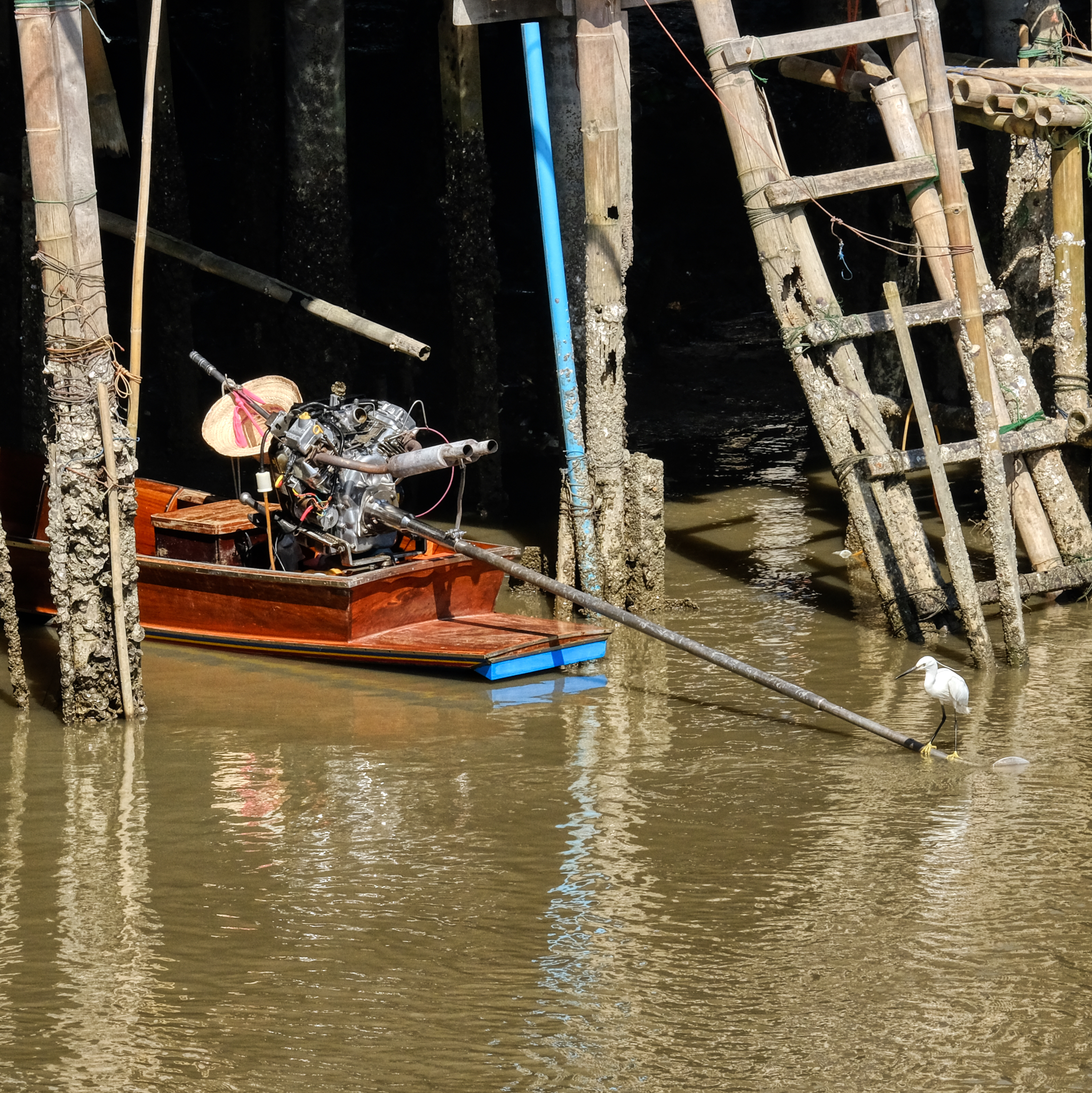 I'm not sure what the make of this V-2 long-tail boat engine is, but it was a beautiful scene.
I'm not sure what the make of this V-2 long-tail boat engine is, but it was a beautiful scene.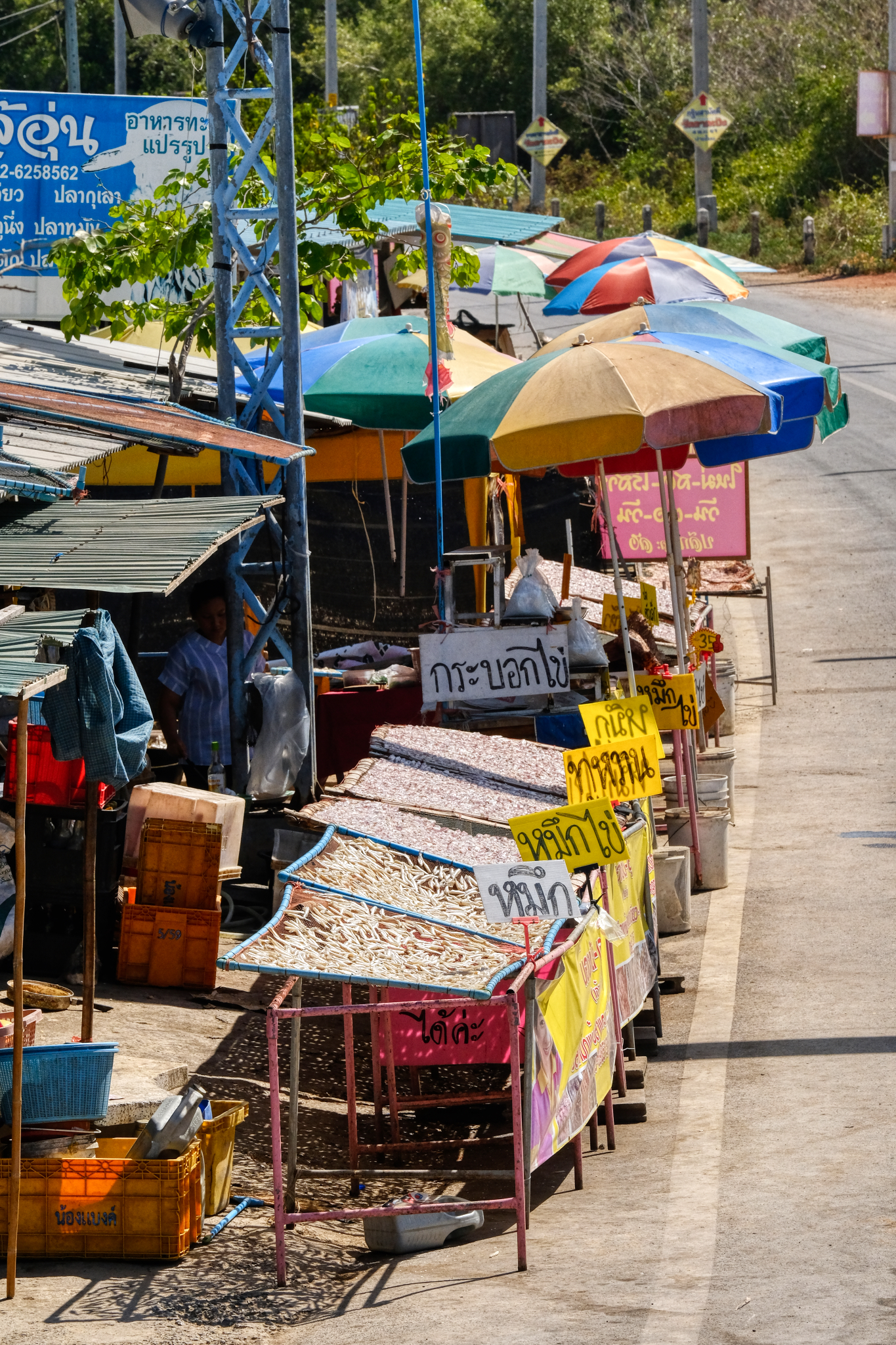 There was a lovely roadside fish market just outside the hamlet.
There was a lovely roadside fish market just outside the hamlet.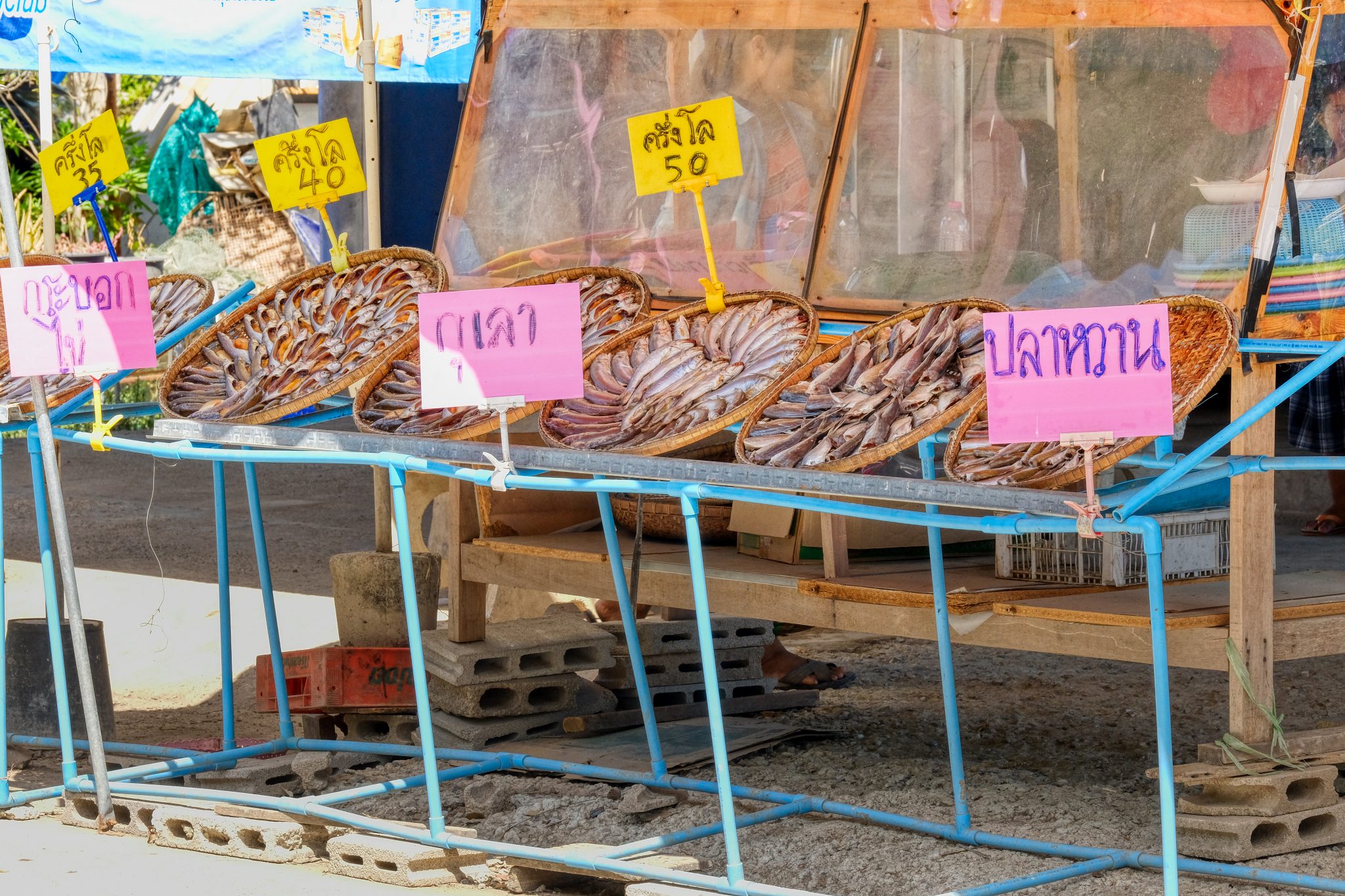 Many different kinds, sizes, and colors of fish . . . all inviting visual exploration.
Many different kinds, sizes, and colors of fish . . . all inviting visual exploration.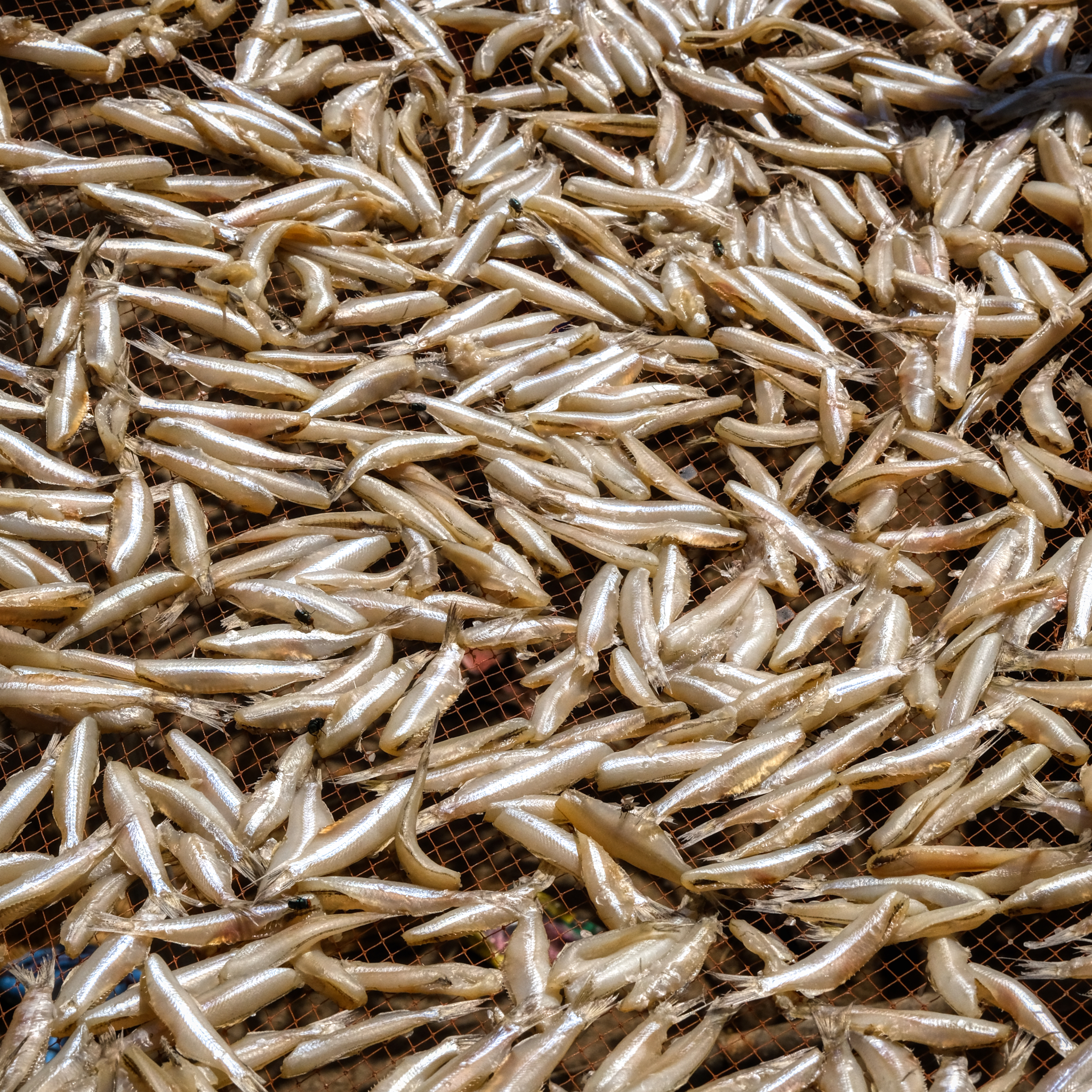 These small 'smelt' are very tasty when deep fat fried. One of my favorites.
These small 'smelt' are very tasty when deep fat fried. One of my favorites.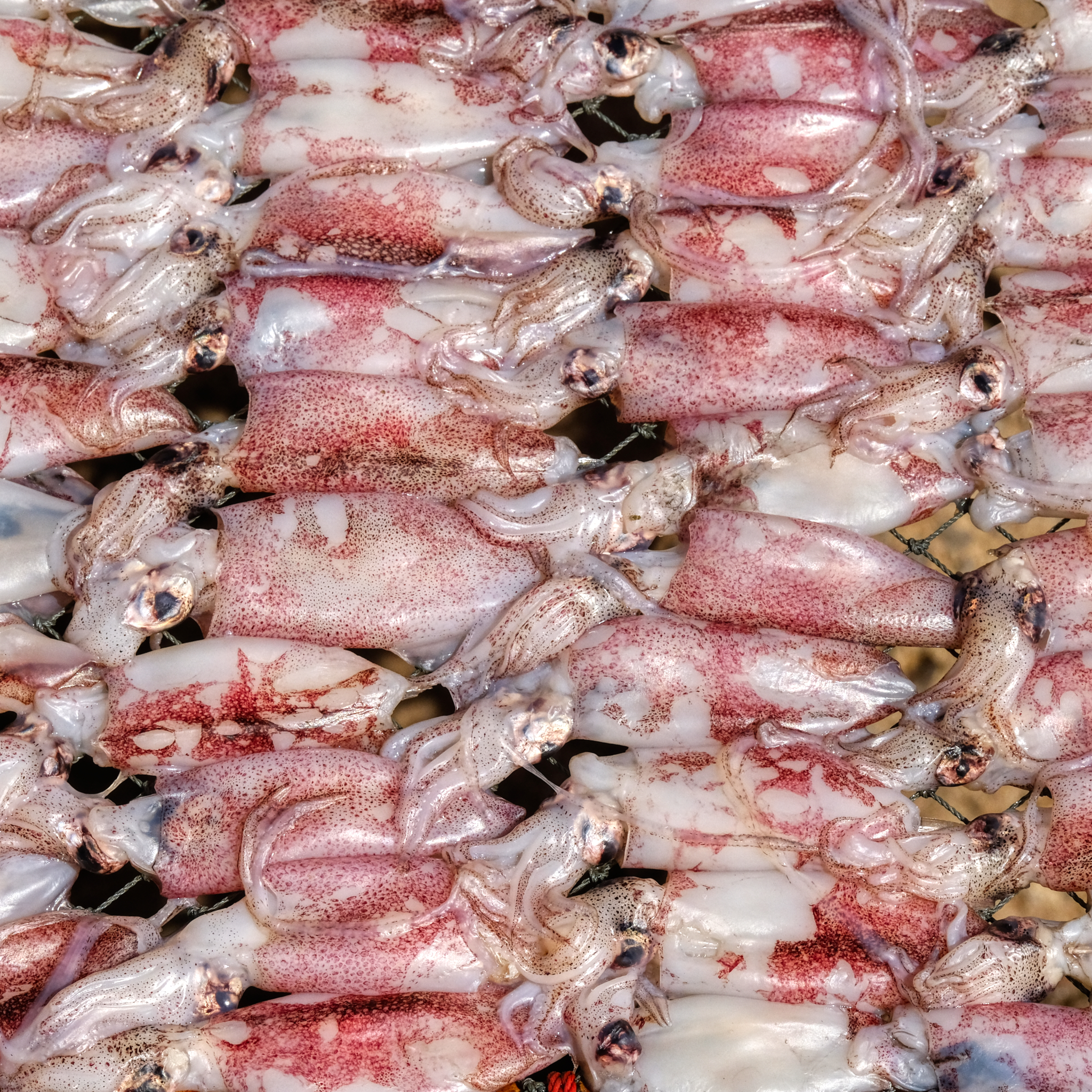 Delicious-looking baby squid. My favorite.
Delicious-looking baby squid. My favorite.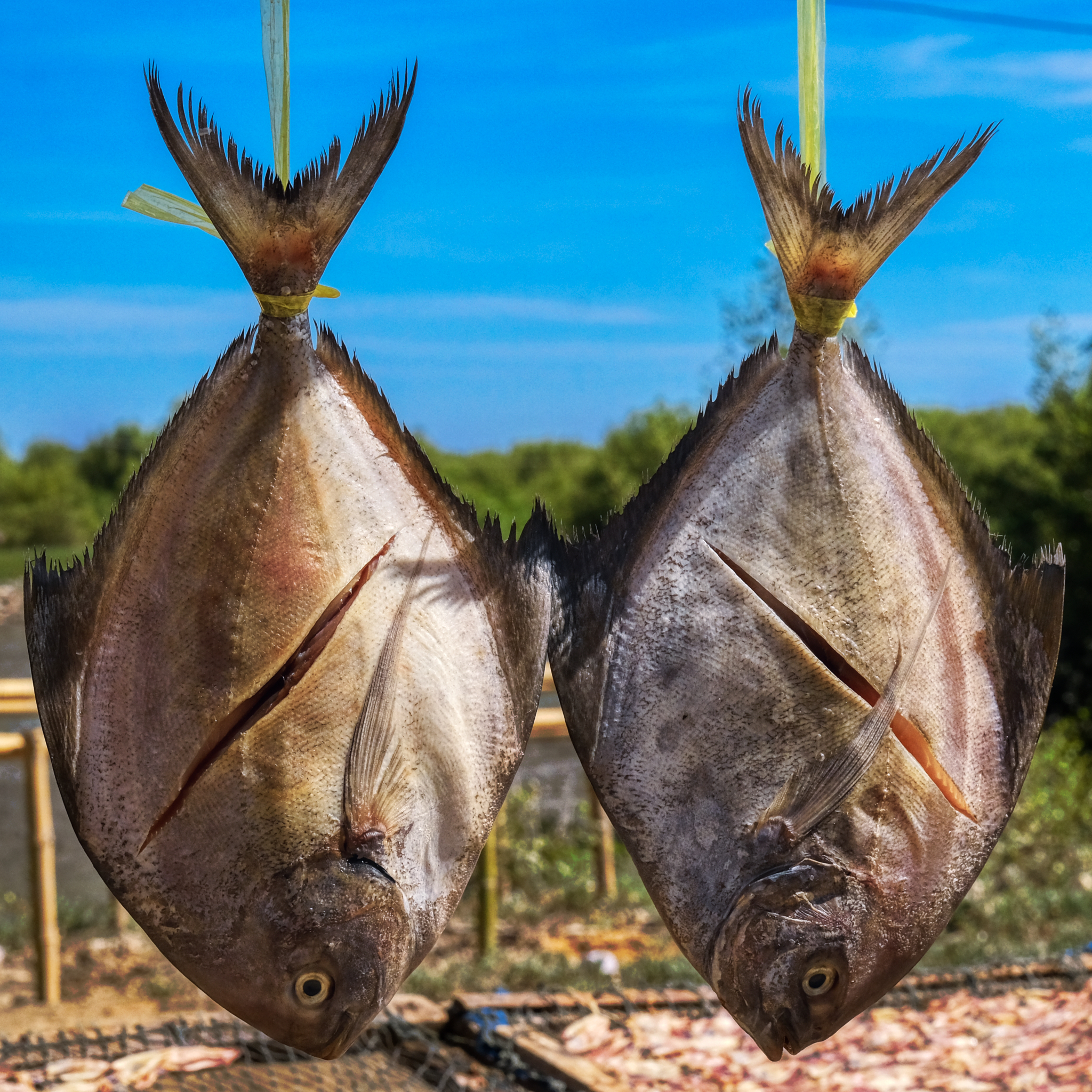 Good looking fish.
Good looking fish.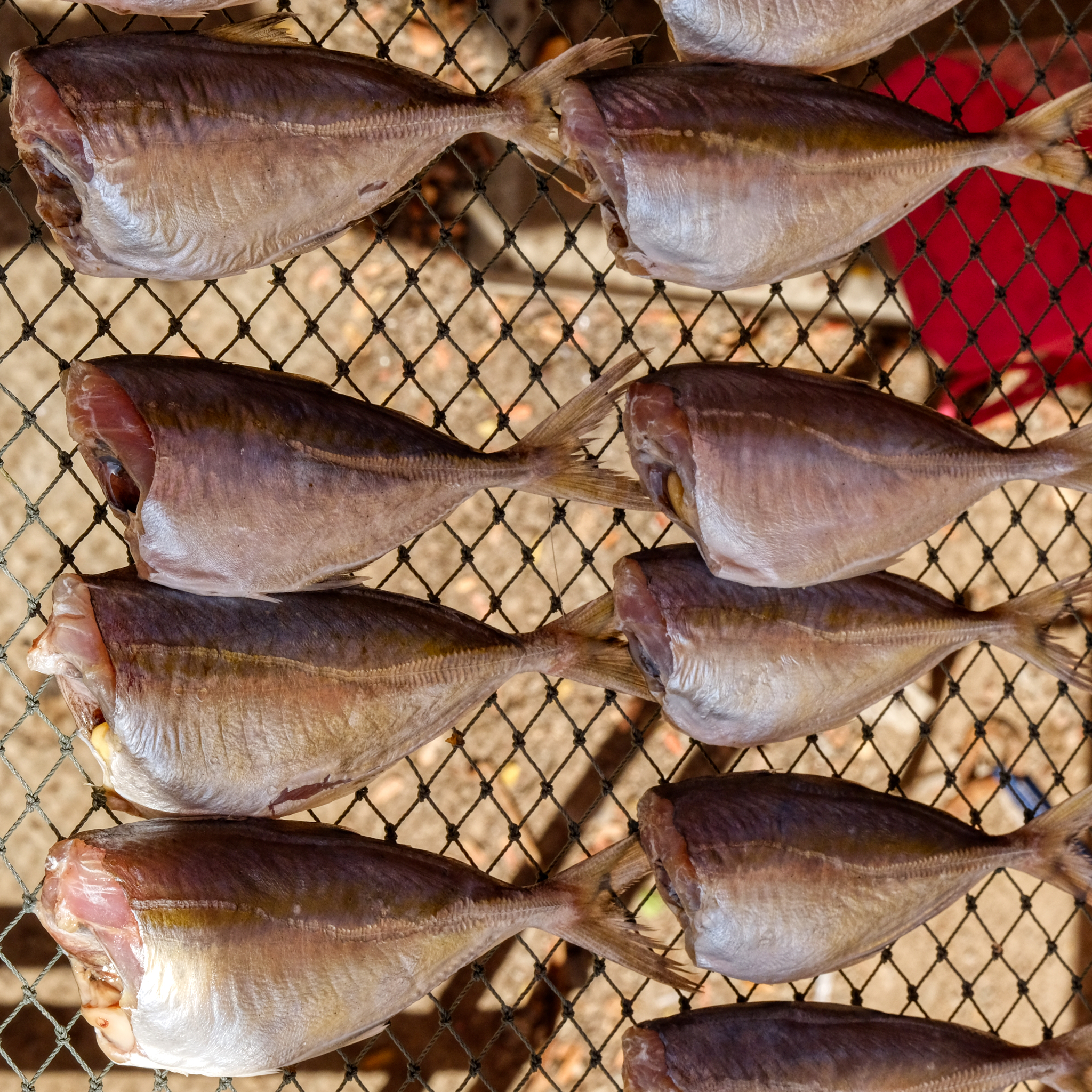 The drying fish are meant to be used in soups and curries.
The drying fish are meant to be used in soups and curries. But, of course, the most visually interesting fish were the baskets with their intricately patterned fish on display.
But, of course, the most visually interesting fish were the baskets with their intricately patterned fish on display.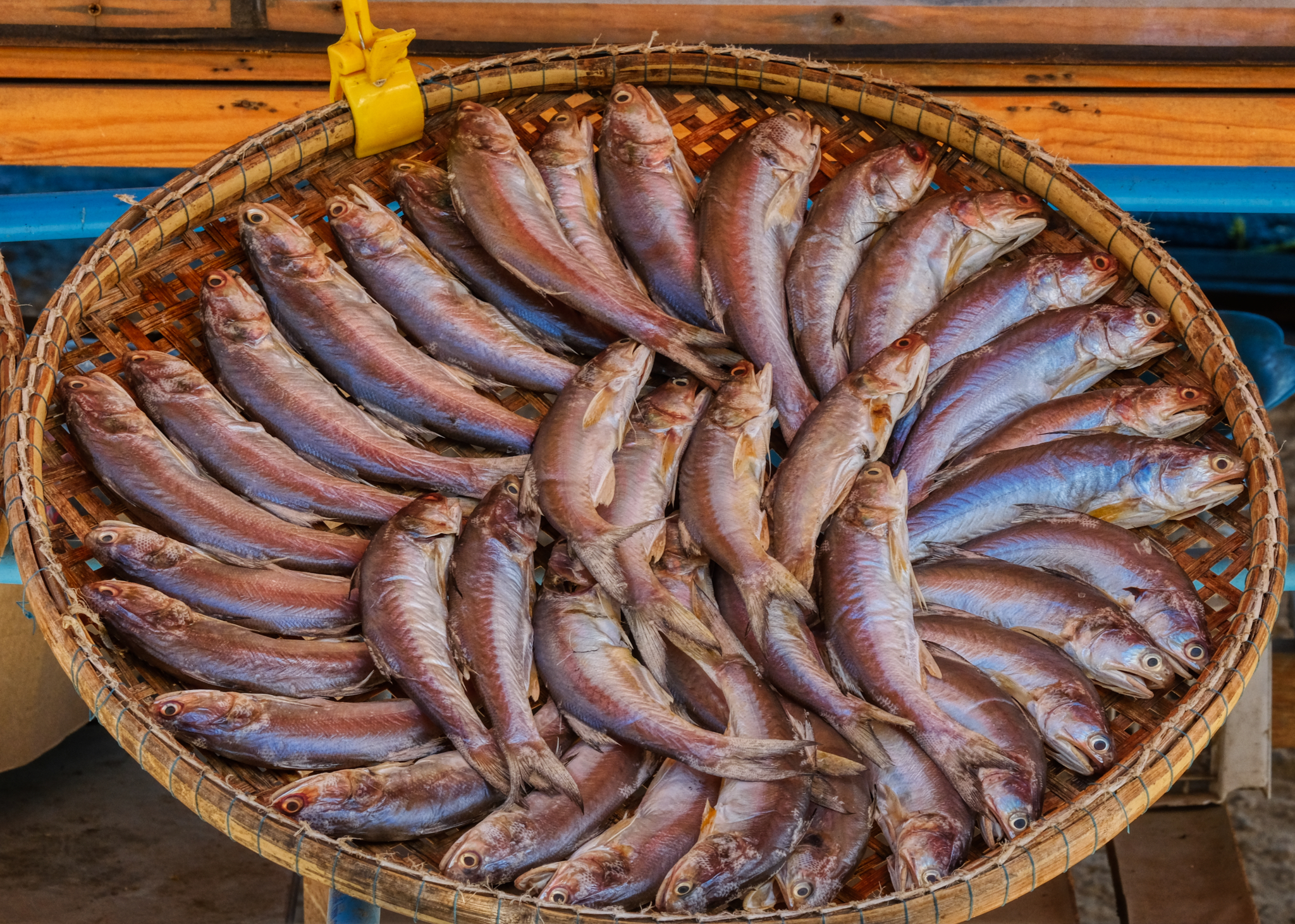 While I was photographing these fish baskets, I was thinking that these would print and frame very beautifully as a set.
While I was photographing these fish baskets, I was thinking that these would print and frame very beautifully as a set.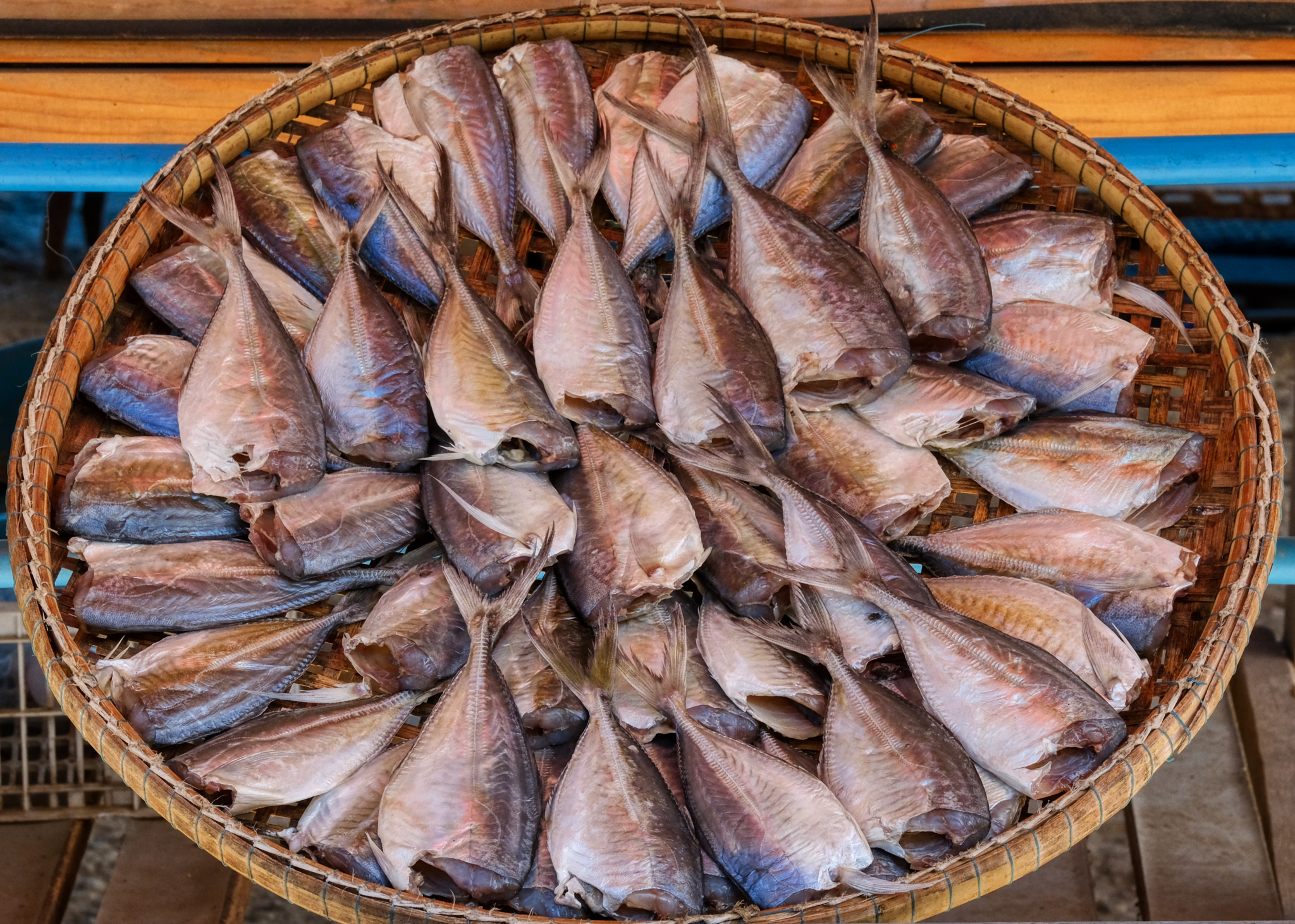 Perhaps I should come back here with a big tripod and reflectors for more professional, and better framed, shots . . .
Perhaps I should come back here with a big tripod and reflectors for more professional, and better framed, shots . . .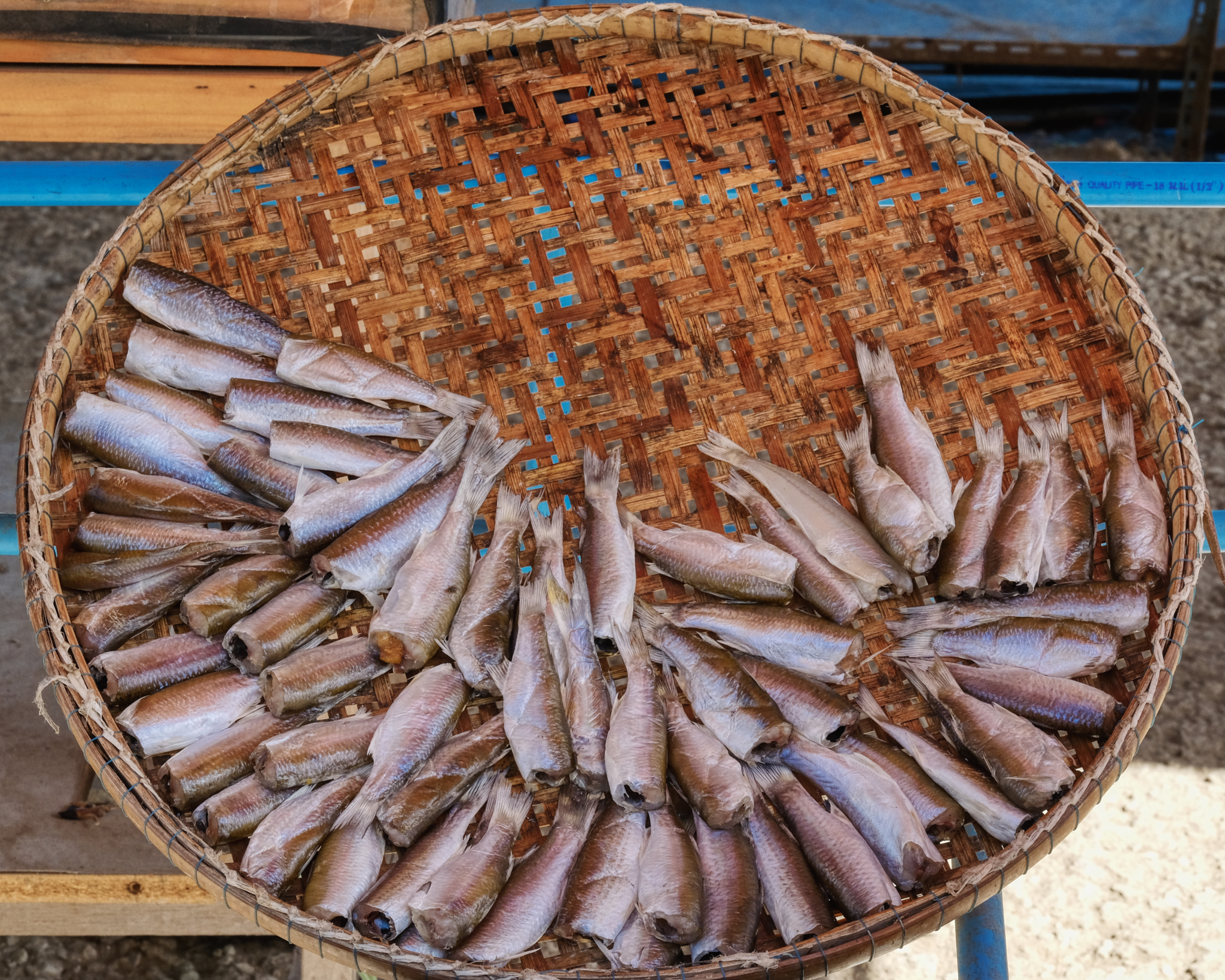 I took many, many photos of these beautiful fish baskets, but only post a few here.
I took many, many photos of these beautiful fish baskets, but only post a few here. We asked one of the fish hawkers how to get to the seashore and they pointed to a small road. We passed this woman busily building a boat on the roadside in tremendous heat and humidity.
We asked one of the fish hawkers how to get to the seashore and they pointed to a small road. We passed this woman busily building a boat on the roadside in tremendous heat and humidity.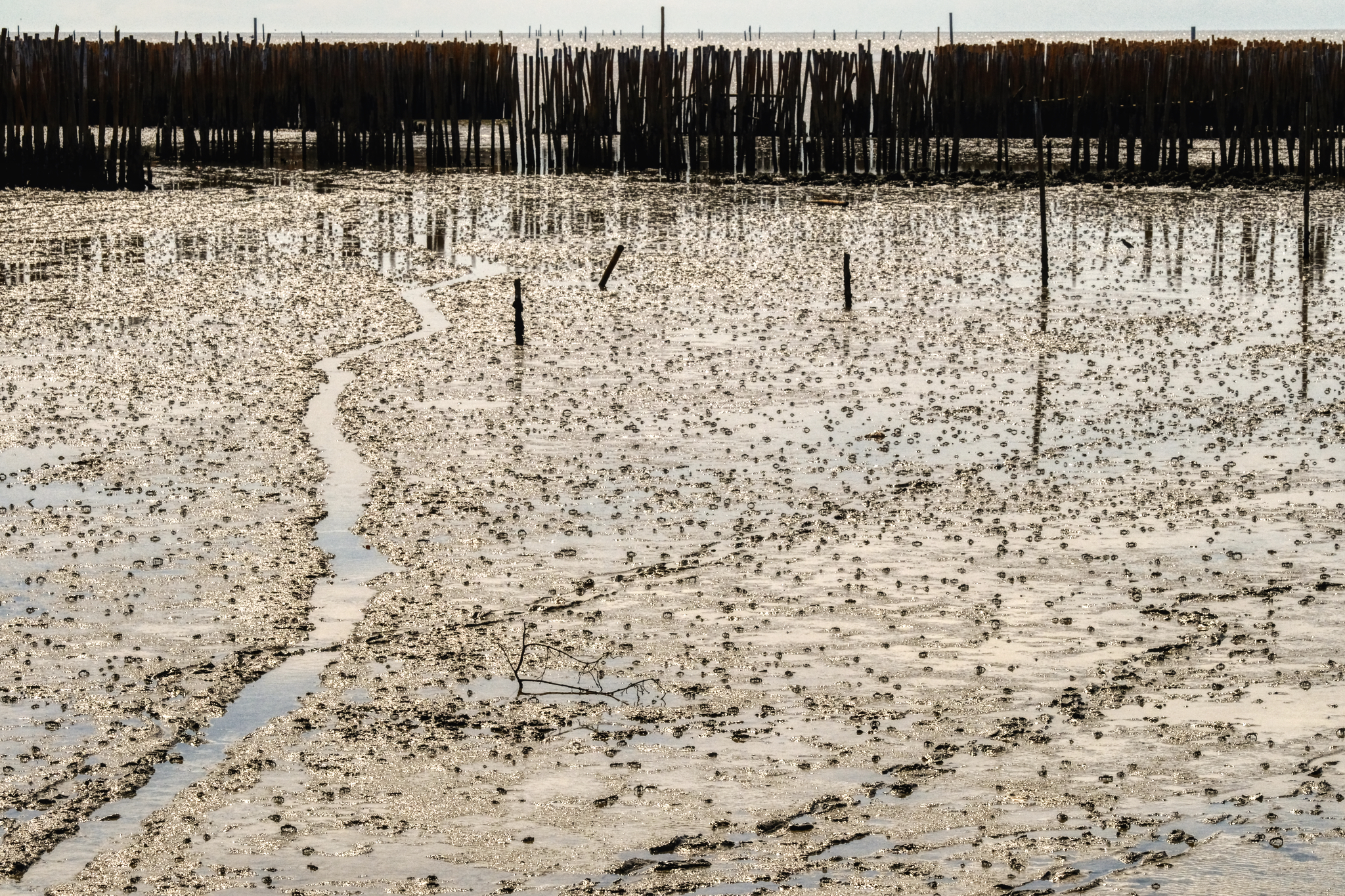 The small dirt road dumped us out at the foot of these mud flats . . . crawling with small crabs. These are the mud flats famous for a particular type of small clam that the Thais absolutely love to eat.
The small dirt road dumped us out at the foot of these mud flats . . . crawling with small crabs. These are the mud flats famous for a particular type of small clam that the Thais absolutely love to eat. 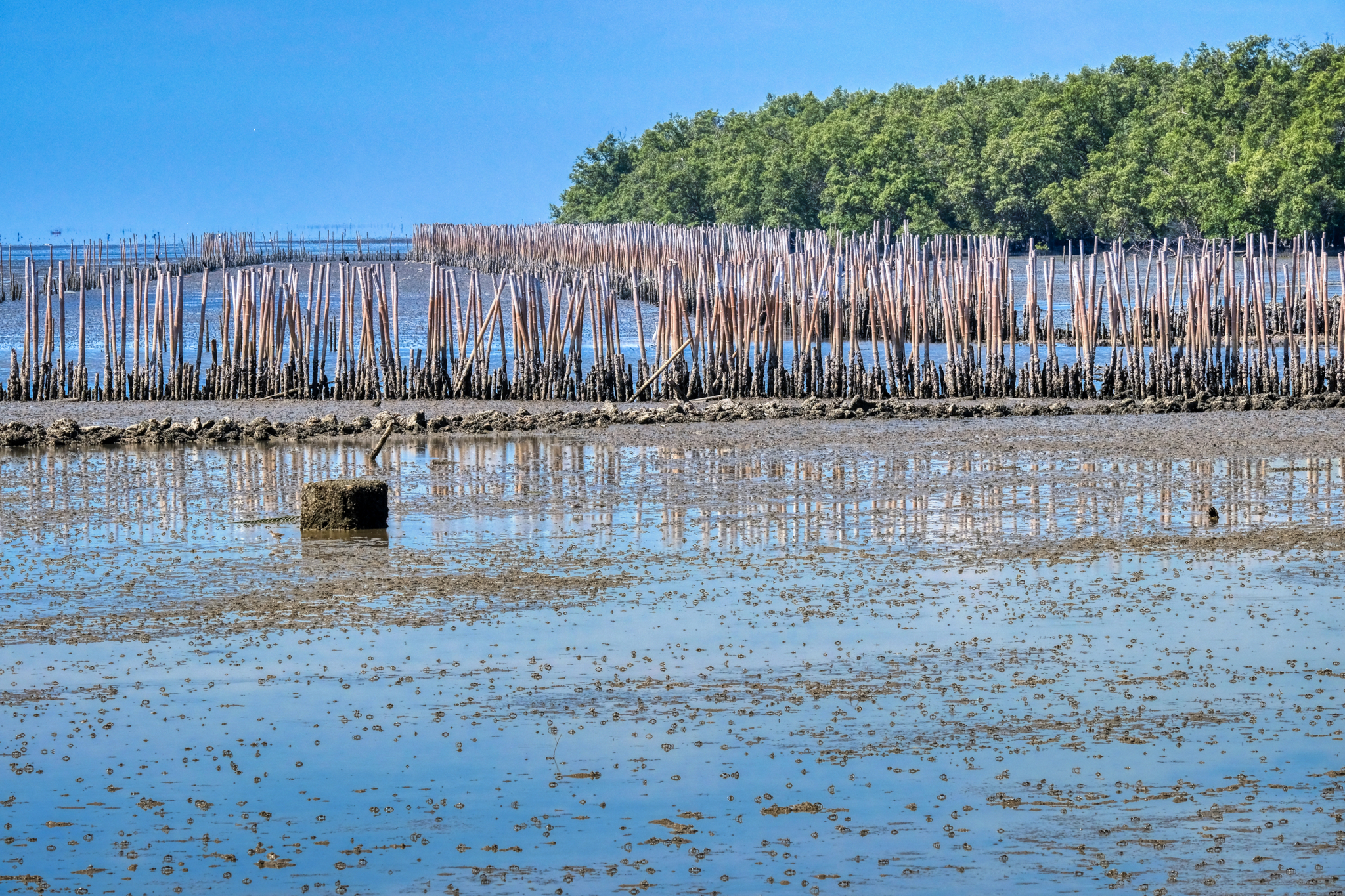 The elaborate bamboo barrier works extended for miles and miles along these mud flats . . . and off into the horizon of the Gulf of Thailand.
The elaborate bamboo barrier works extended for miles and miles along these mud flats . . . and off into the horizon of the Gulf of Thailand.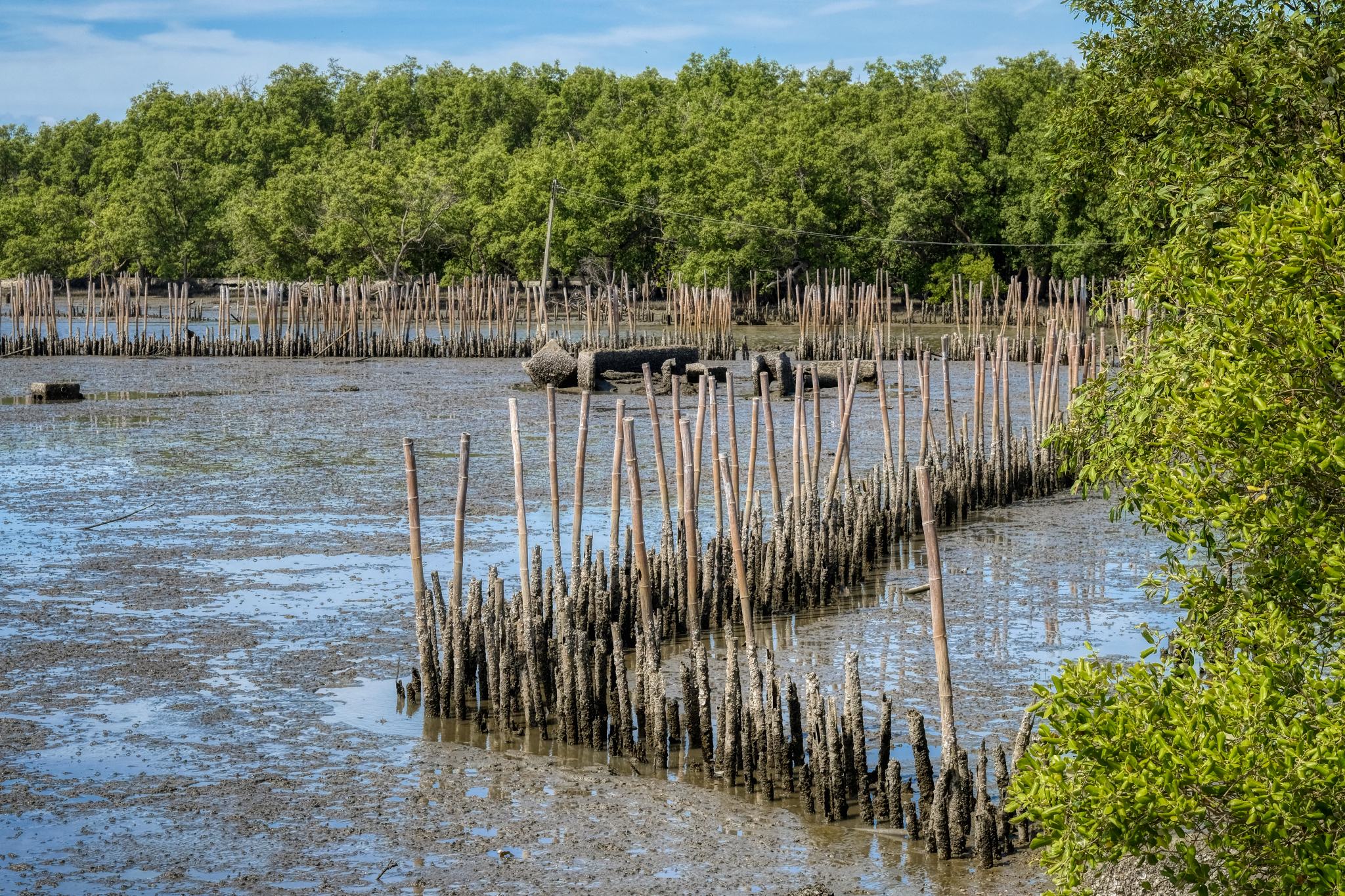 At a point of a small canal entering the mud flats there were many kinds of barrier works.
At a point of a small canal entering the mud flats there were many kinds of barrier works.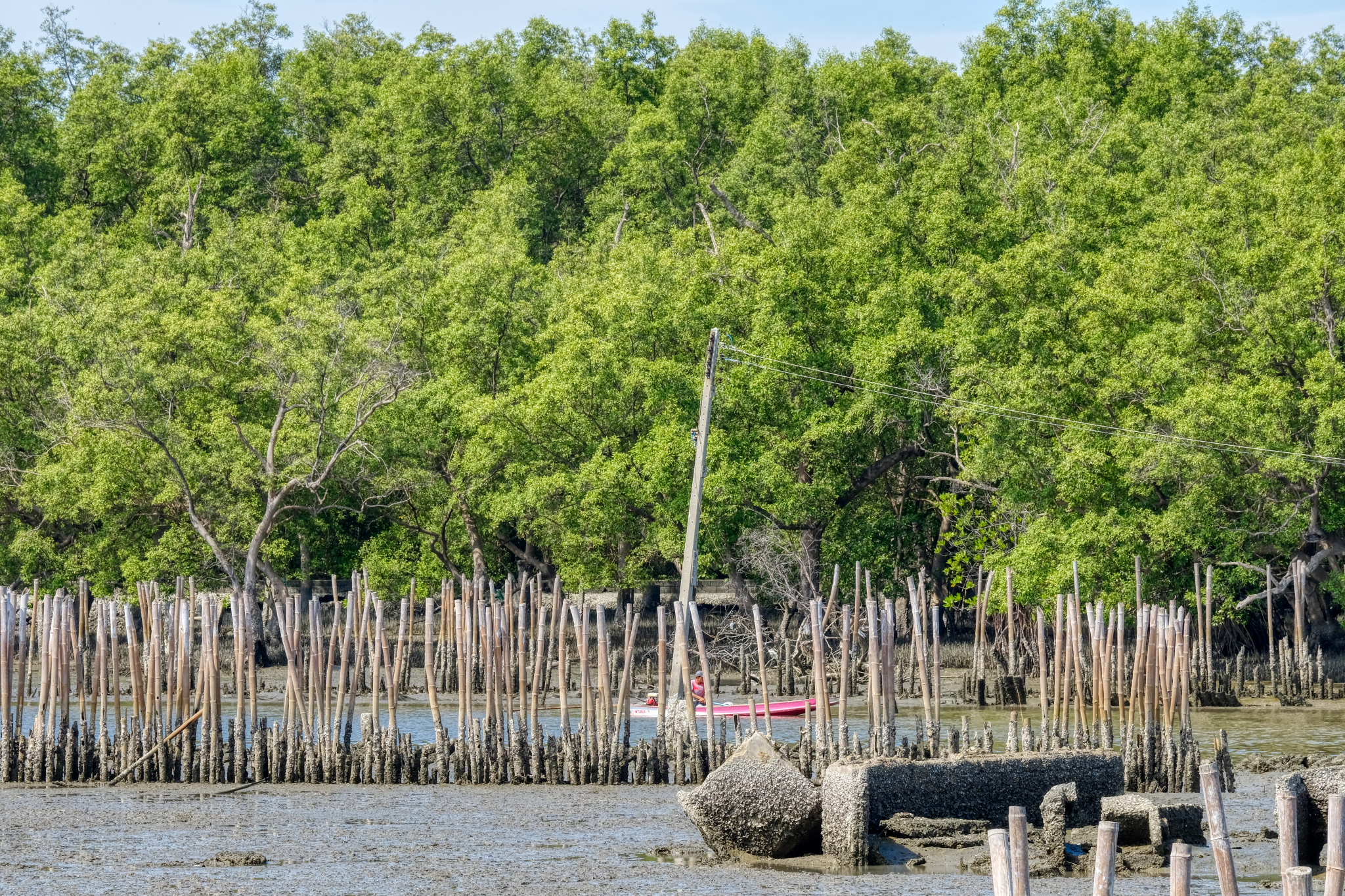 A workman out doing maintenance on the bamboo works.
A workman out doing maintenance on the bamboo works.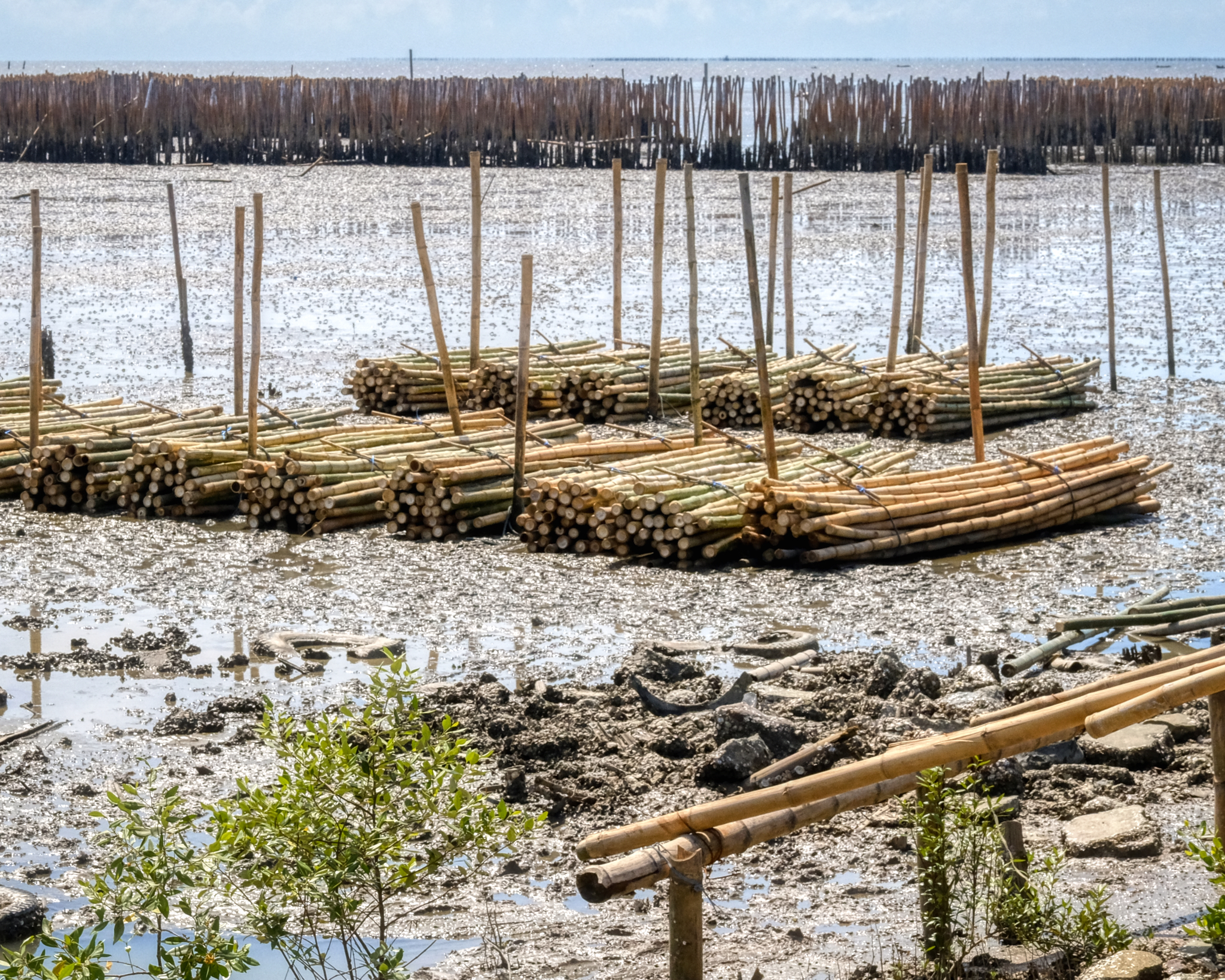 Fresh cut bamboo was being unloaded and made into rafts to bring out into the sea. This was a huge project . . .
Fresh cut bamboo was being unloaded and made into rafts to bring out into the sea. This was a huge project . . .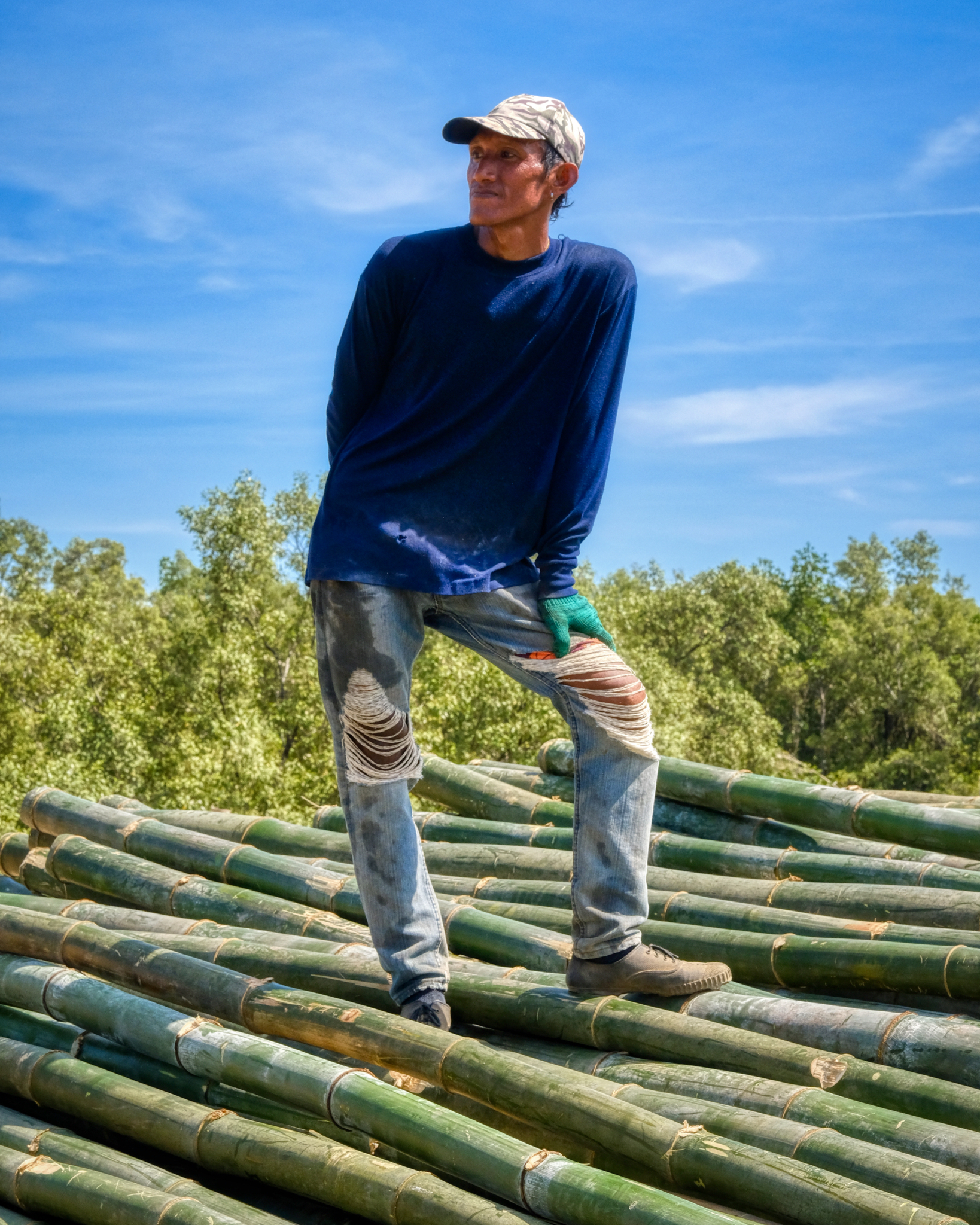 A Samut bamboo wrangler.
A Samut bamboo wrangler.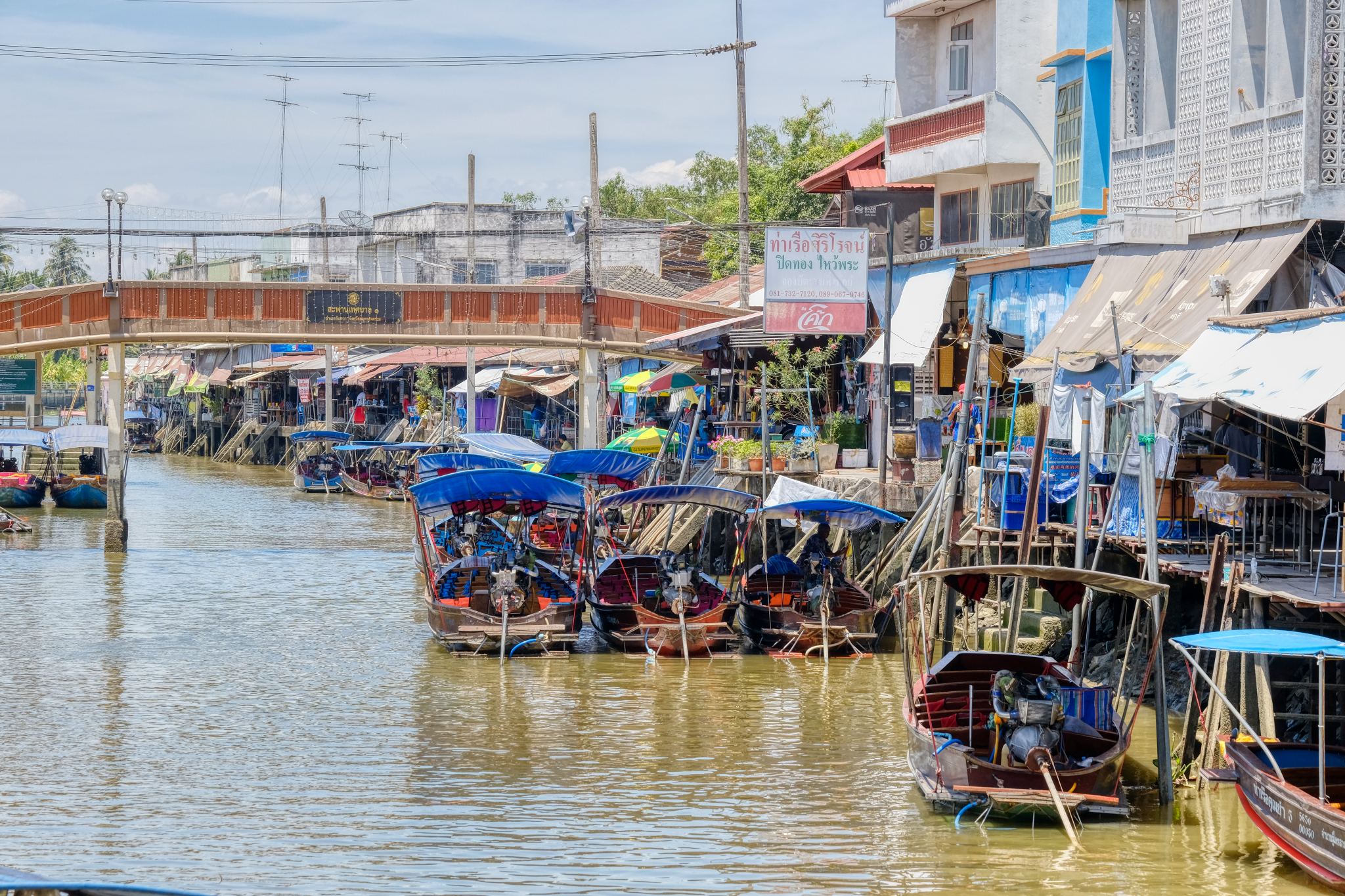 Our next stop was at the village of Amphawa, a floating market. Too much tourism has changed the feeling of this place since I last visited it nearly 20 years ago. It is still very charming . . . and visually interesting.
Our next stop was at the village of Amphawa, a floating market. Too much tourism has changed the feeling of this place since I last visited it nearly 20 years ago. It is still very charming . . . and visually interesting.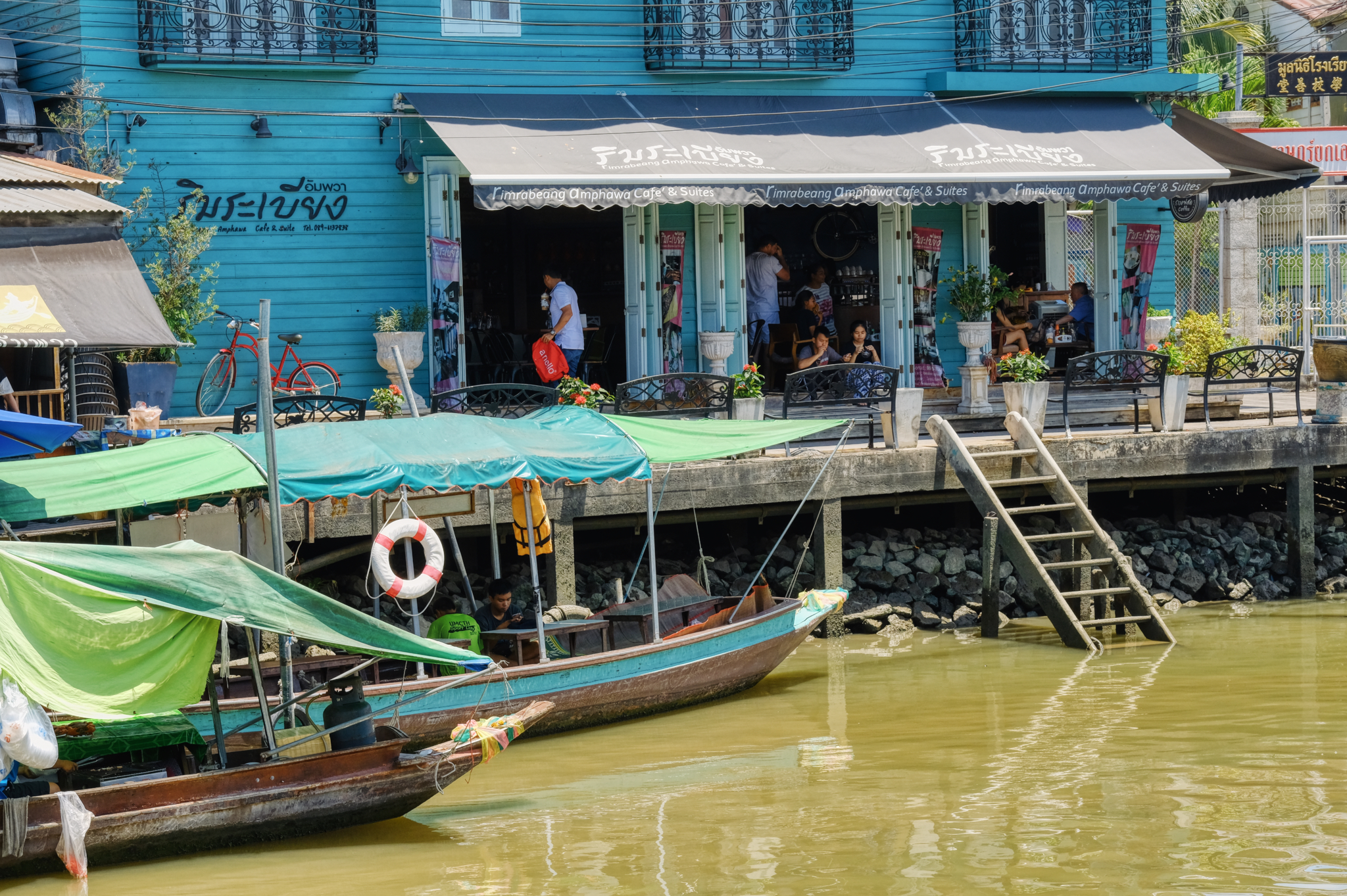 There are many very nice, upscale coffee shops and nice restaurants . . . a big change from an authentic fishing and market village.
There are many very nice, upscale coffee shops and nice restaurants . . . a big change from an authentic fishing and market village. 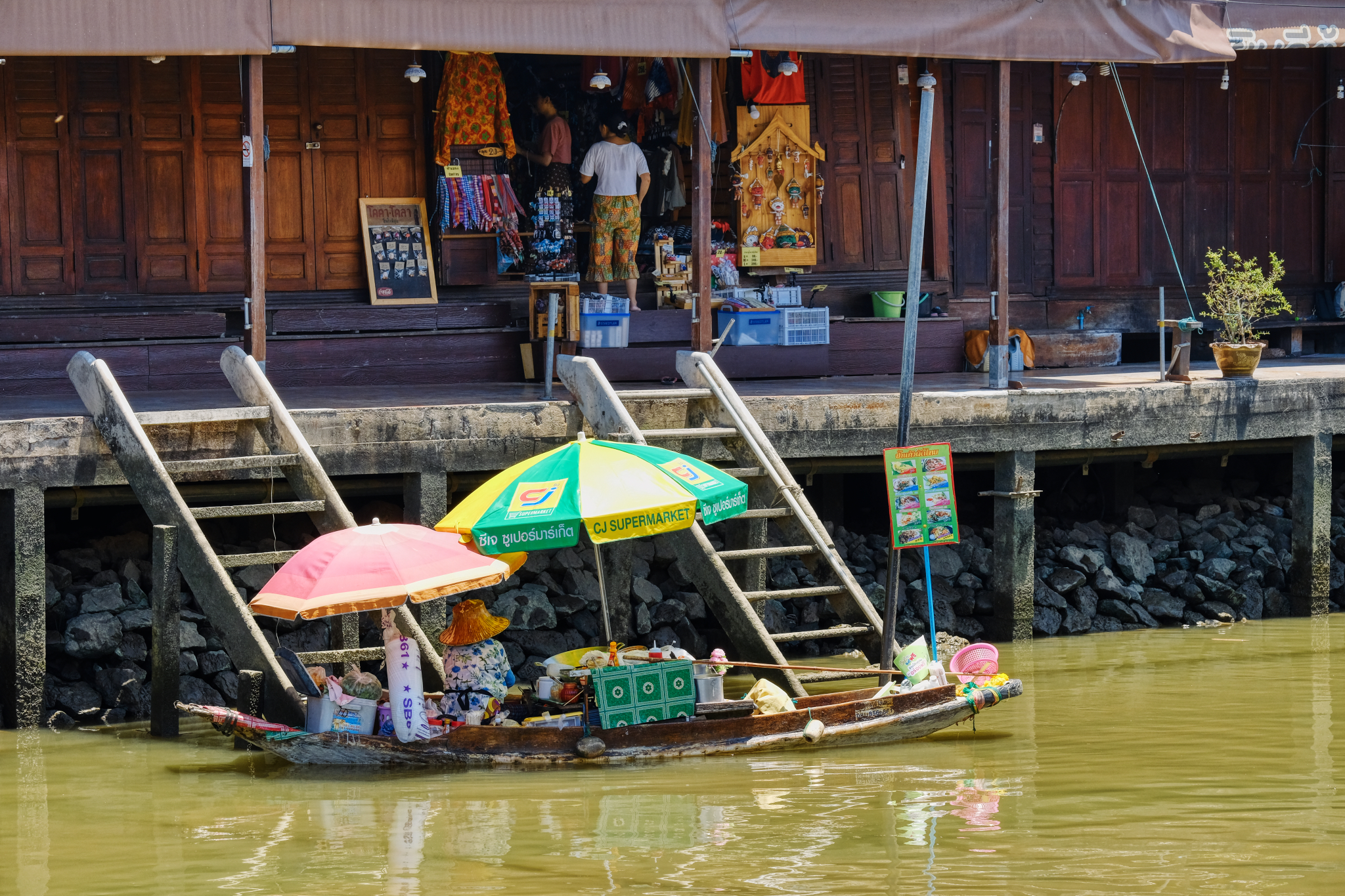 With the ambient temperature above 105(f) with high humidity, it was little wonder there were few people out and about.
With the ambient temperature above 105(f) with high humidity, it was little wonder there were few people out and about.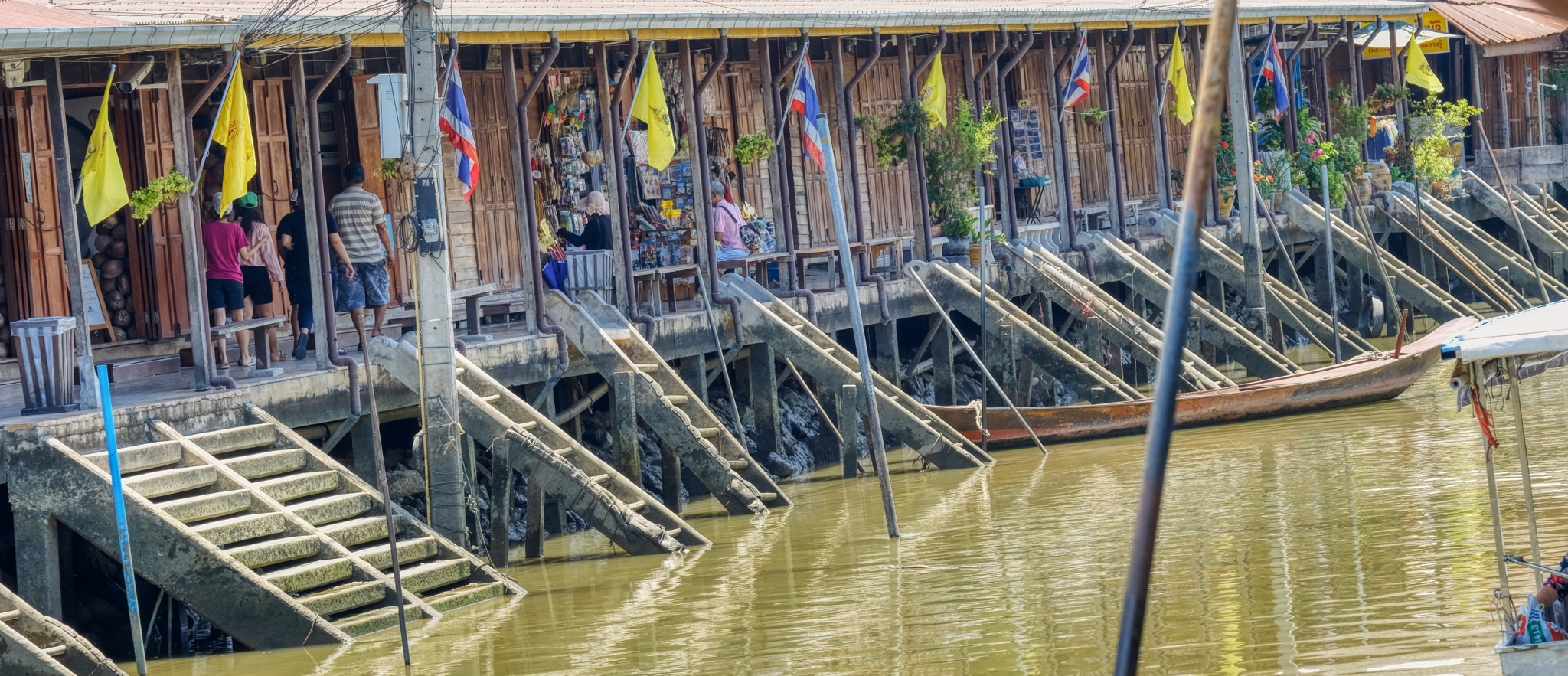 The repeating patterns of the klong access steps made for a fascinating study.
The repeating patterns of the klong access steps made for a fascinating study.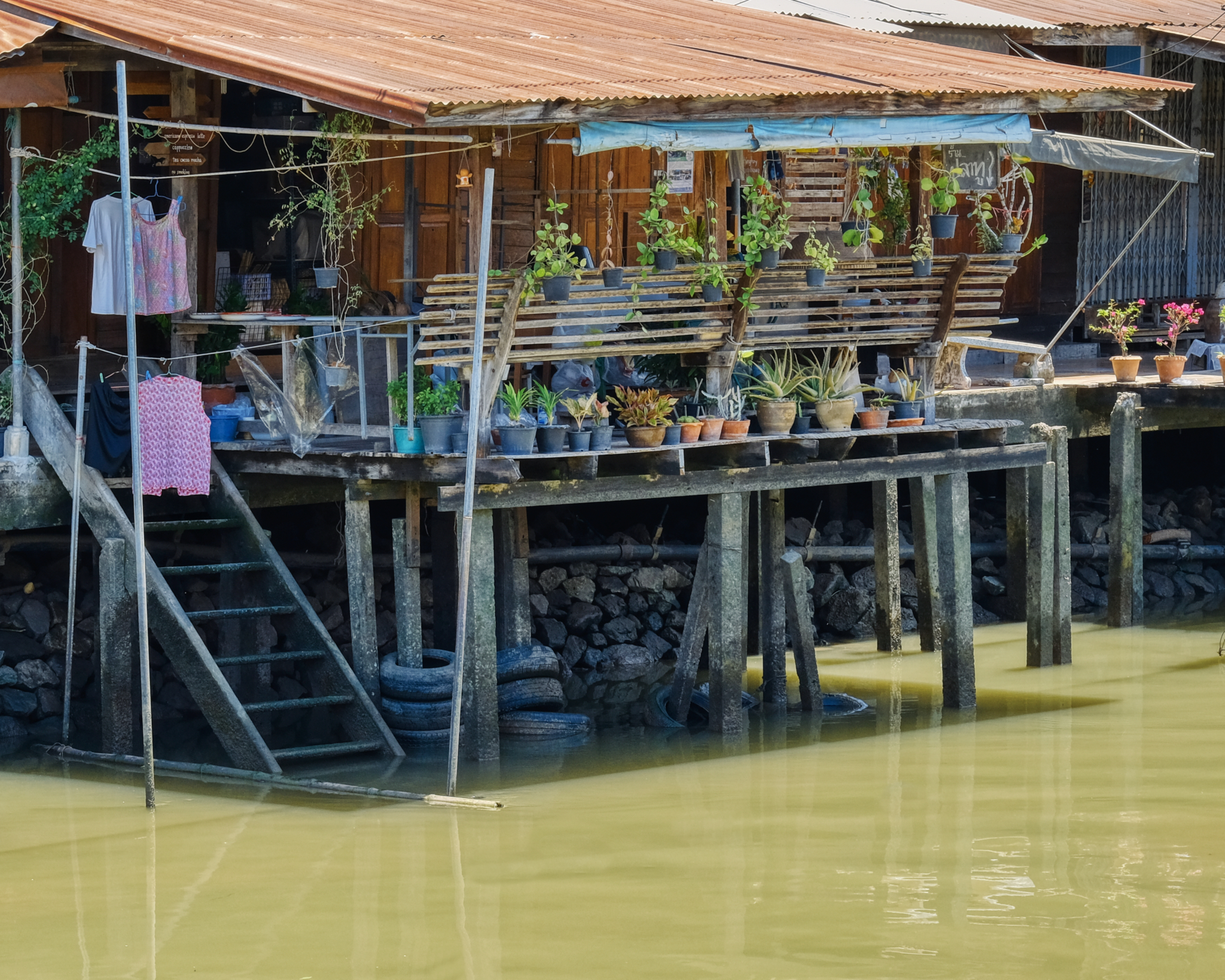 Life along the canal (klong) . . .
Life along the canal (klong) . . .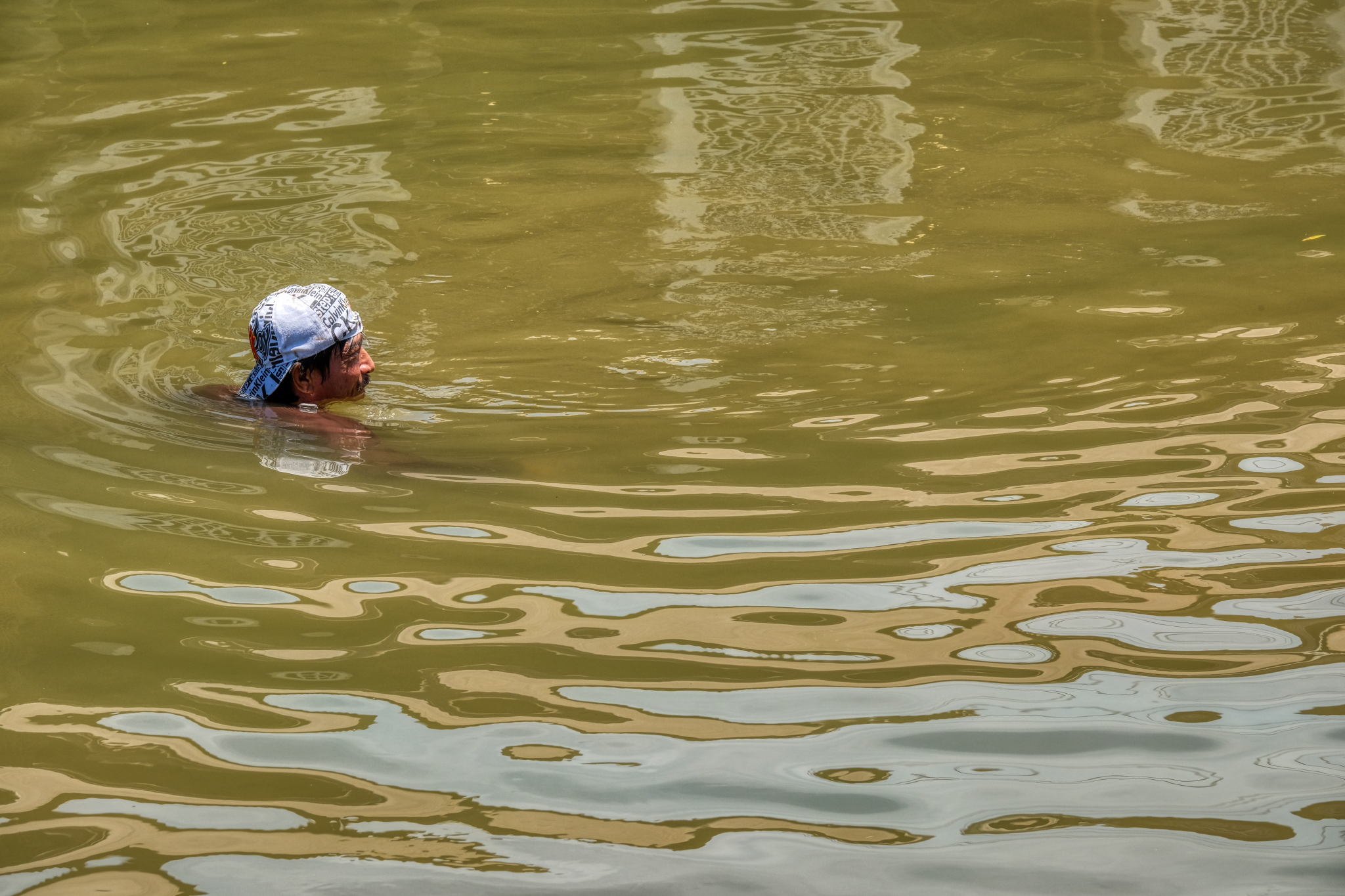 Swimming to beat the heat? No . . . fishing for bottom feeders with a long-handled net.
Swimming to beat the heat? No . . . fishing for bottom feeders with a long-handled net.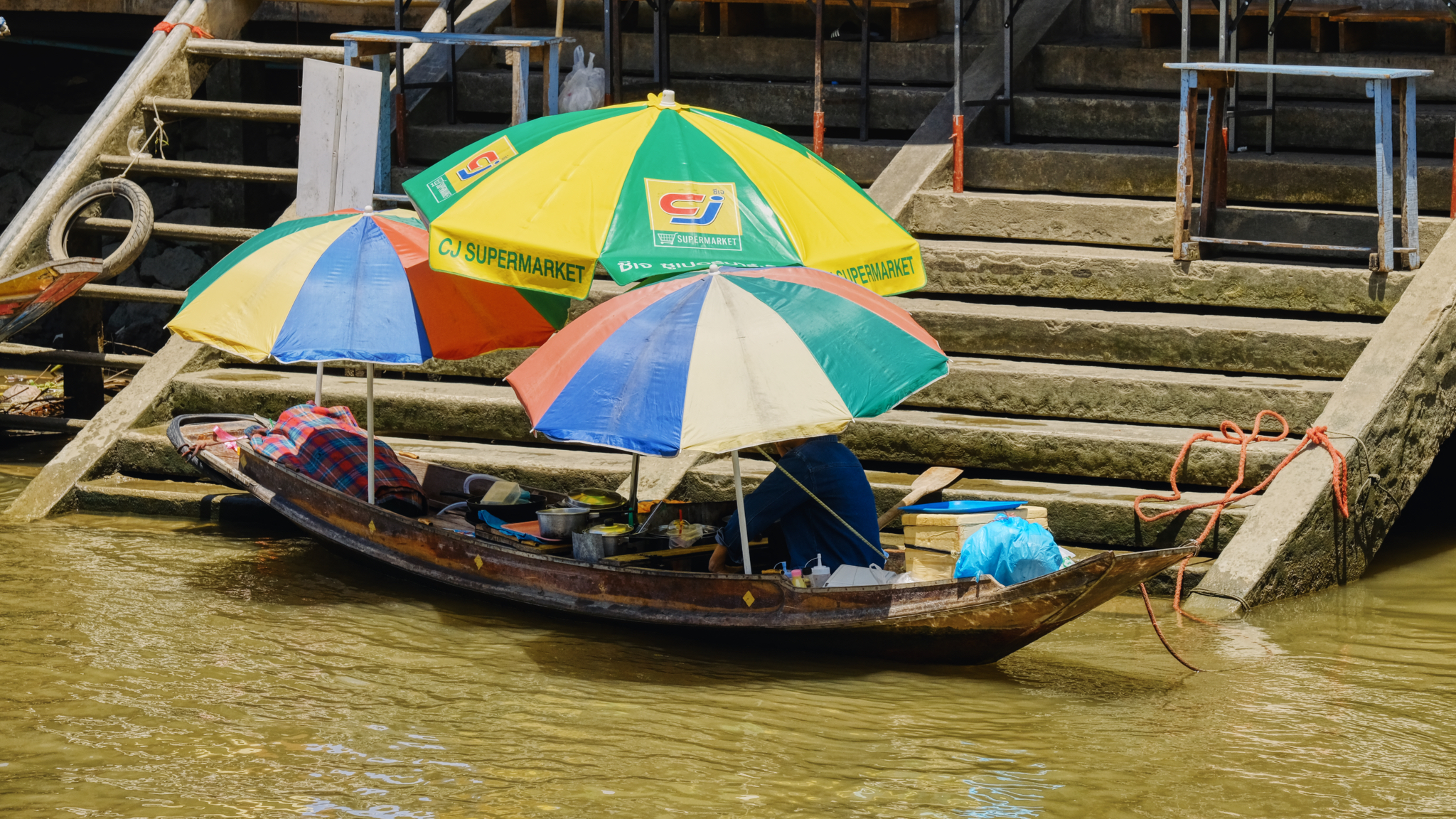 With few tourists around, and crushing heat, the boat vendors sat in quiet repose . . . waiting for a sale.
With few tourists around, and crushing heat, the boat vendors sat in quiet repose . . . waiting for a sale. When the canal is full of tourists in their small boats, these floating restaurants serve the water traffic.
When the canal is full of tourists in their small boats, these floating restaurants serve the water traffic.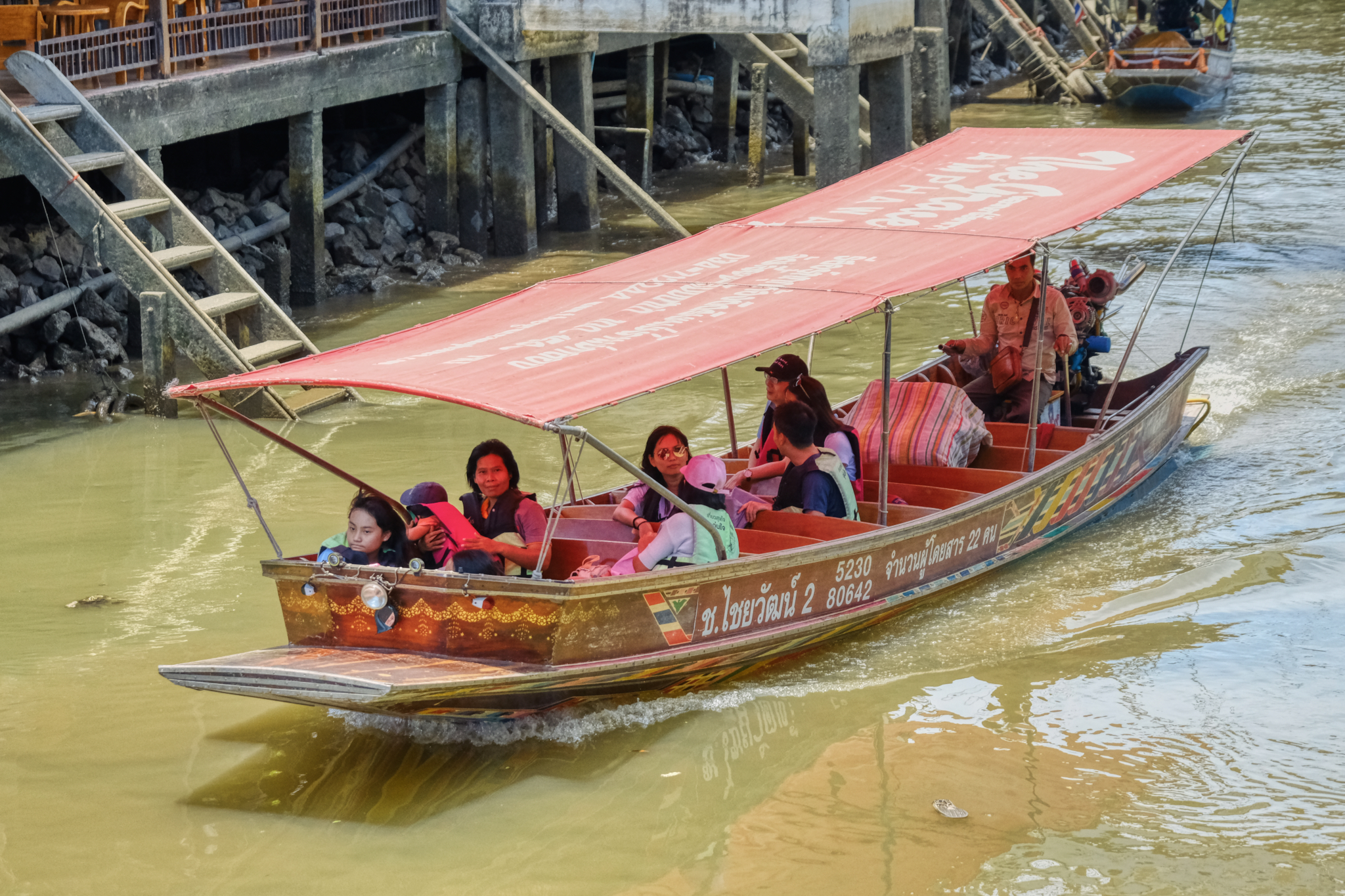 This was the only tourist boat we say all afternoon . . . and they looked HOT!
This was the only tourist boat we say all afternoon . . . and they looked HOT!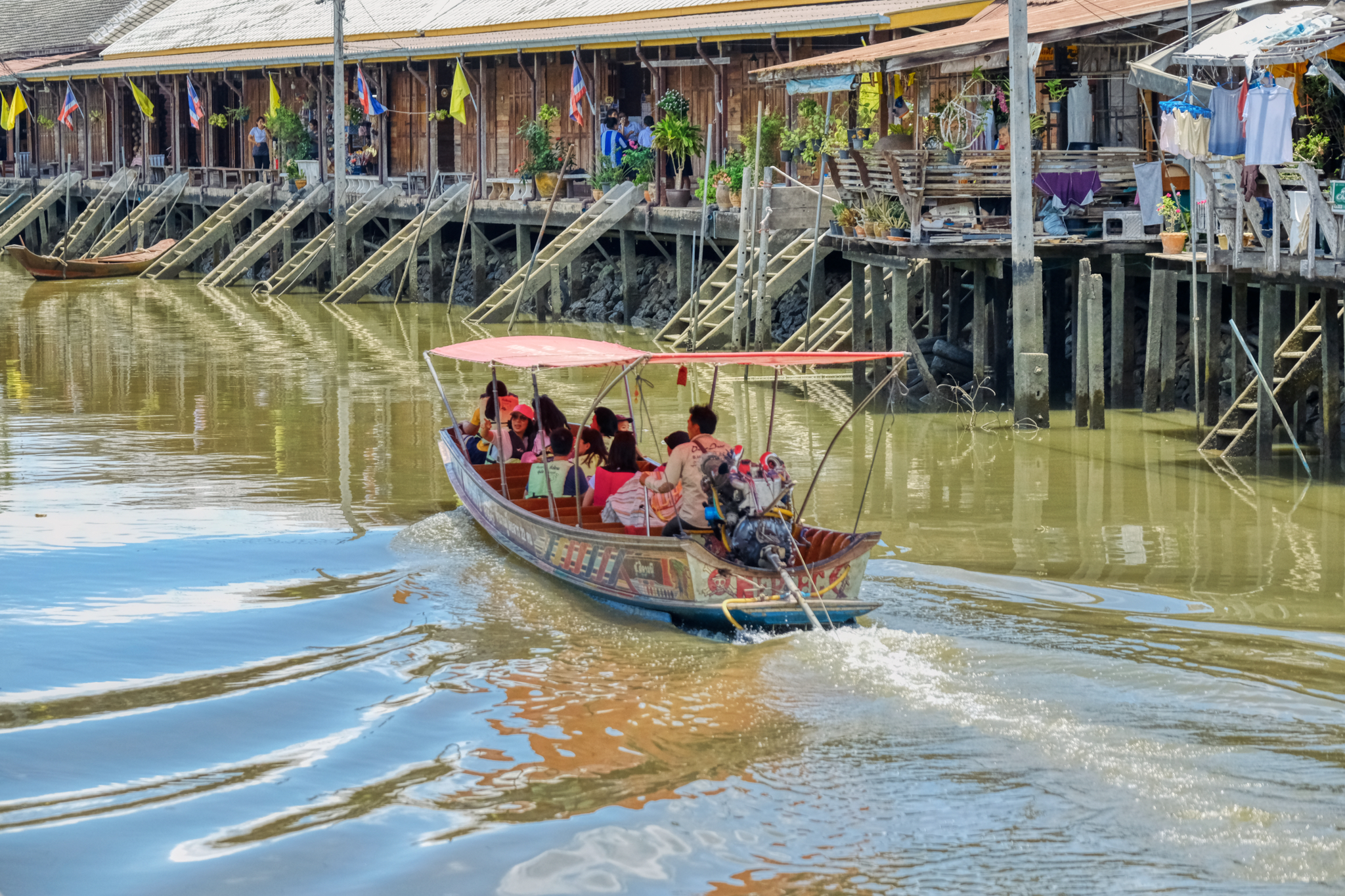 In some respects, this might be the best time of year to visit Amphawa . . . the rest of the year it is overcrowded with tourists. They had the place to themselves.
In some respects, this might be the best time of year to visit Amphawa . . . the rest of the year it is overcrowded with tourists. They had the place to themselves.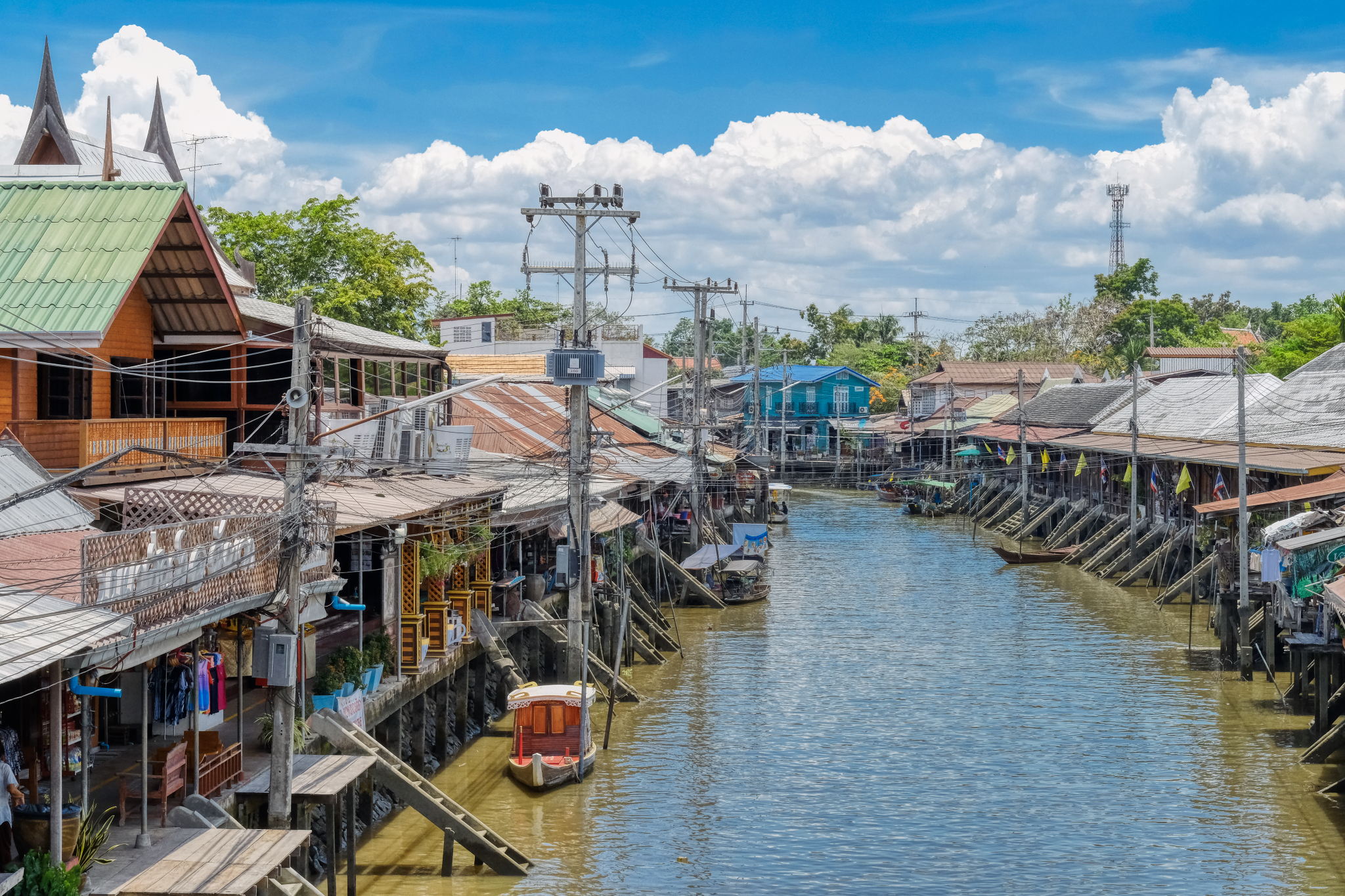 Standing on a bridge over the canal . . and a view one way . . . and . . .
Standing on a bridge over the canal . . and a view one way . . . and . . .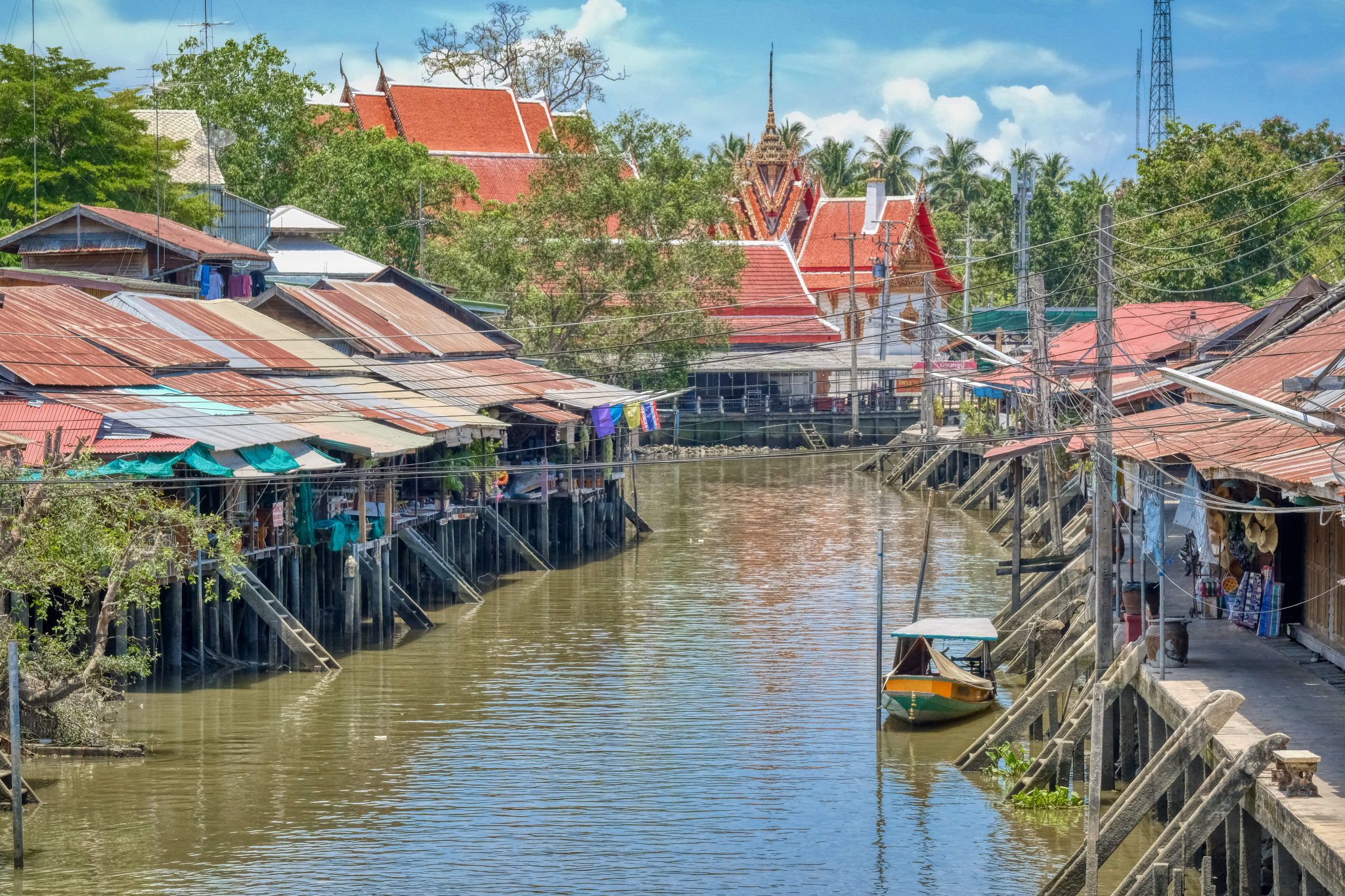 . . . the view in the other direction toward a Buddhist temple (wat).
. . . the view in the other direction toward a Buddhist temple (wat).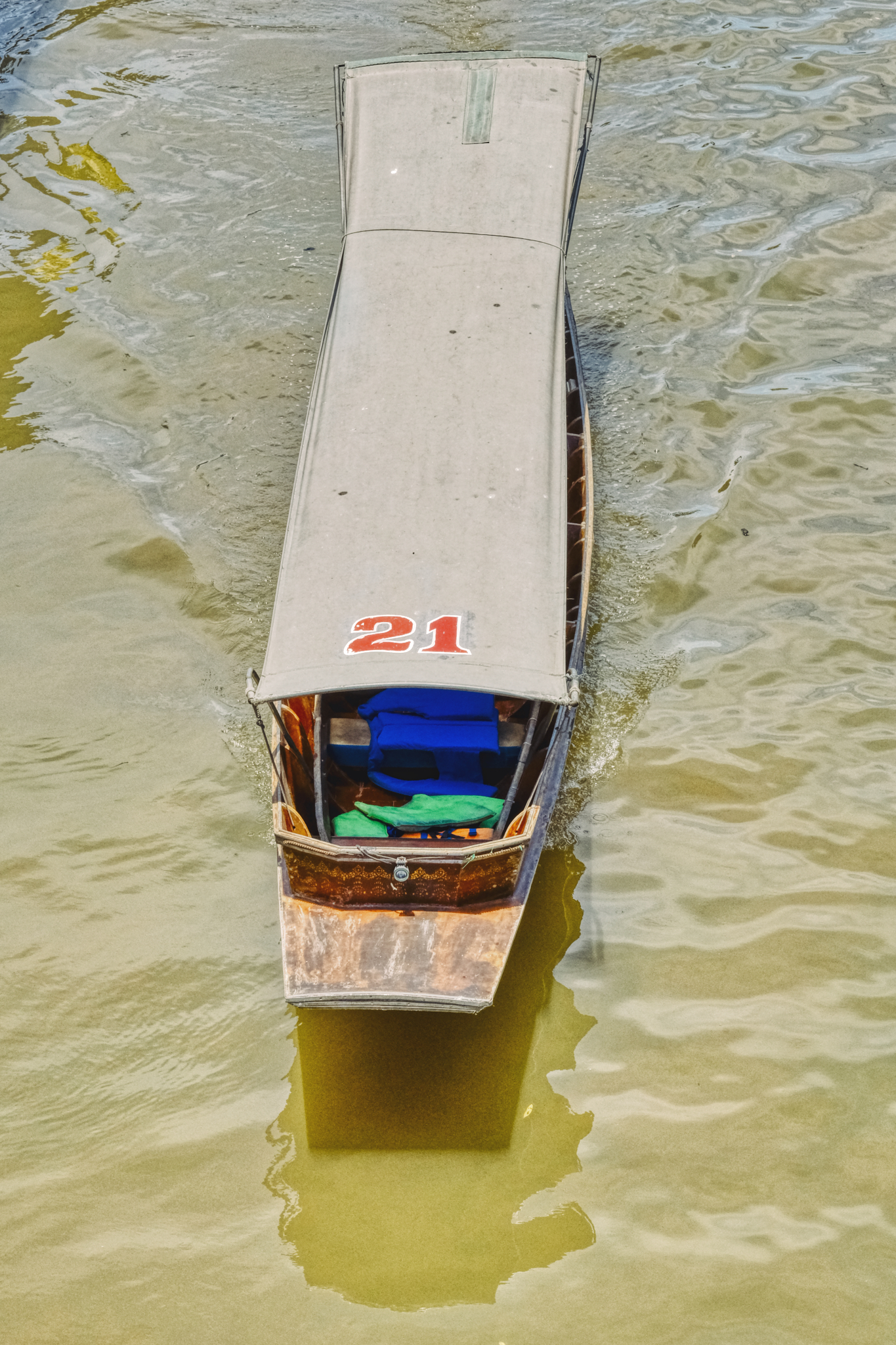 A tourist boat cruising for a fare . . . unsuccessfully.
A tourist boat cruising for a fare . . . unsuccessfully.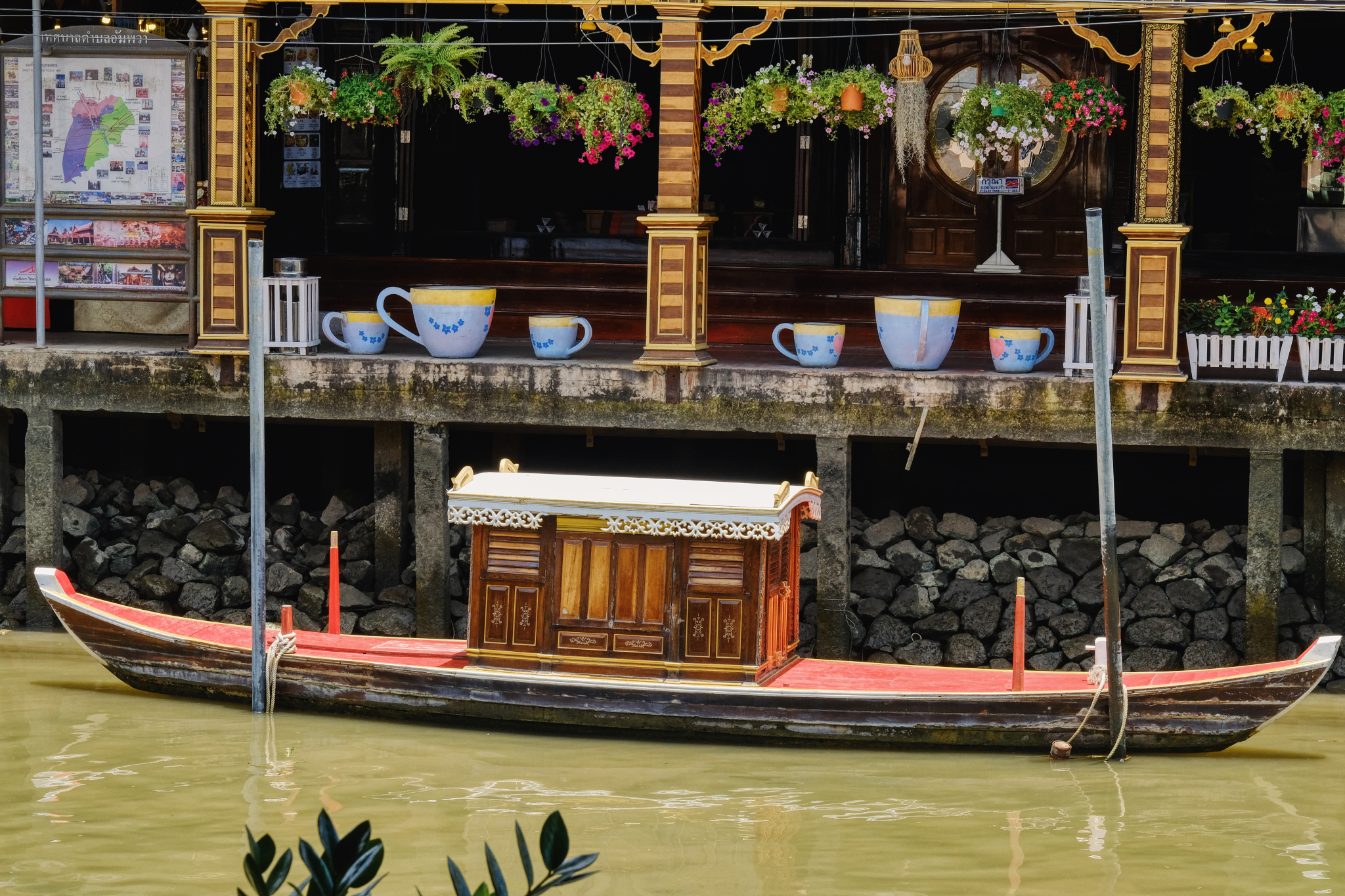 That looks inviting. We went over to this marvelous Old Thai style coffee house for some ice coffee and cold water.
That looks inviting. We went over to this marvelous Old Thai style coffee house for some ice coffee and cold water.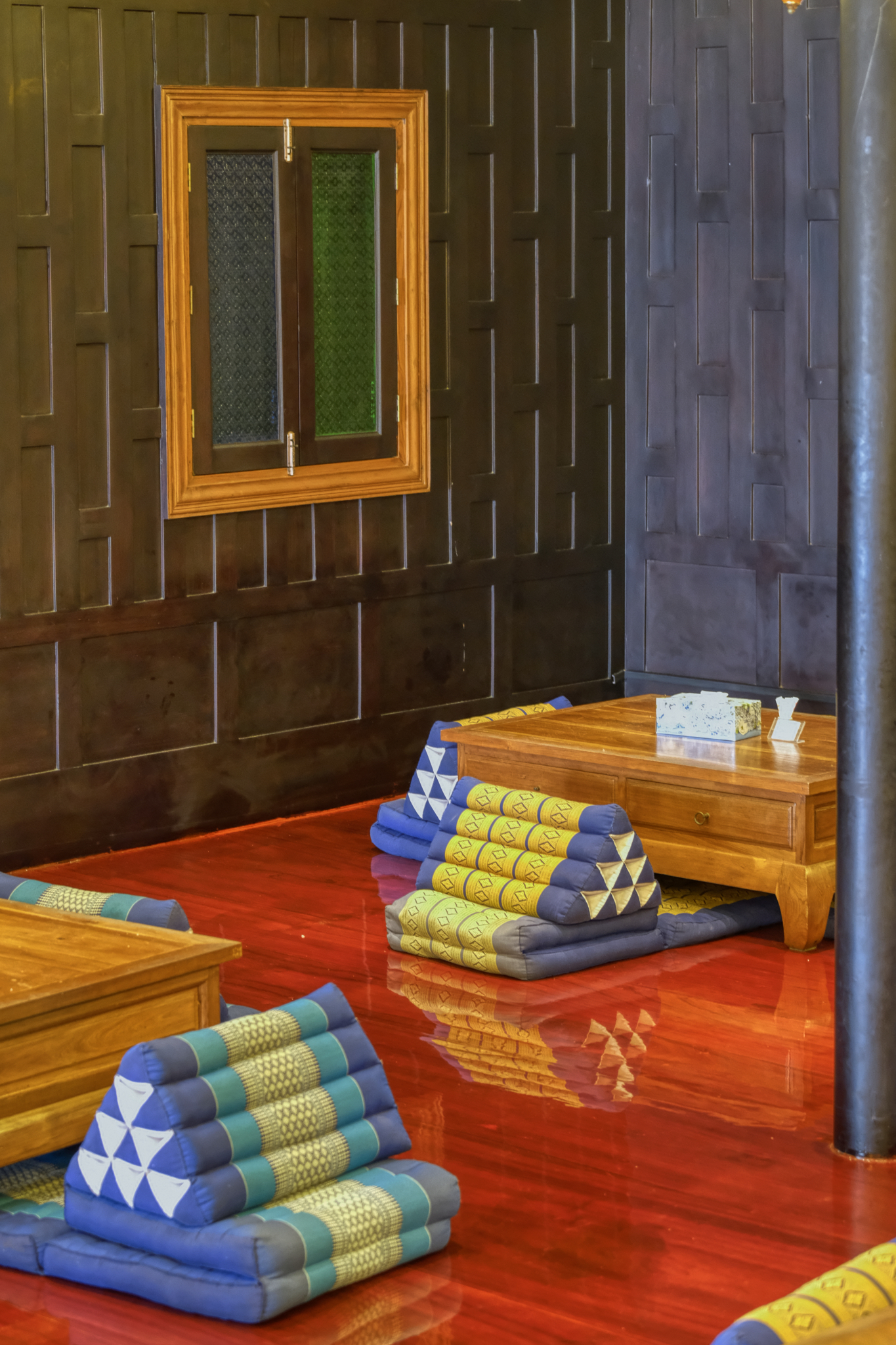 Such a beautiful place to rest, replenish, hydrate, and sit in front of some fans.
Such a beautiful place to rest, replenish, hydrate, and sit in front of some fans.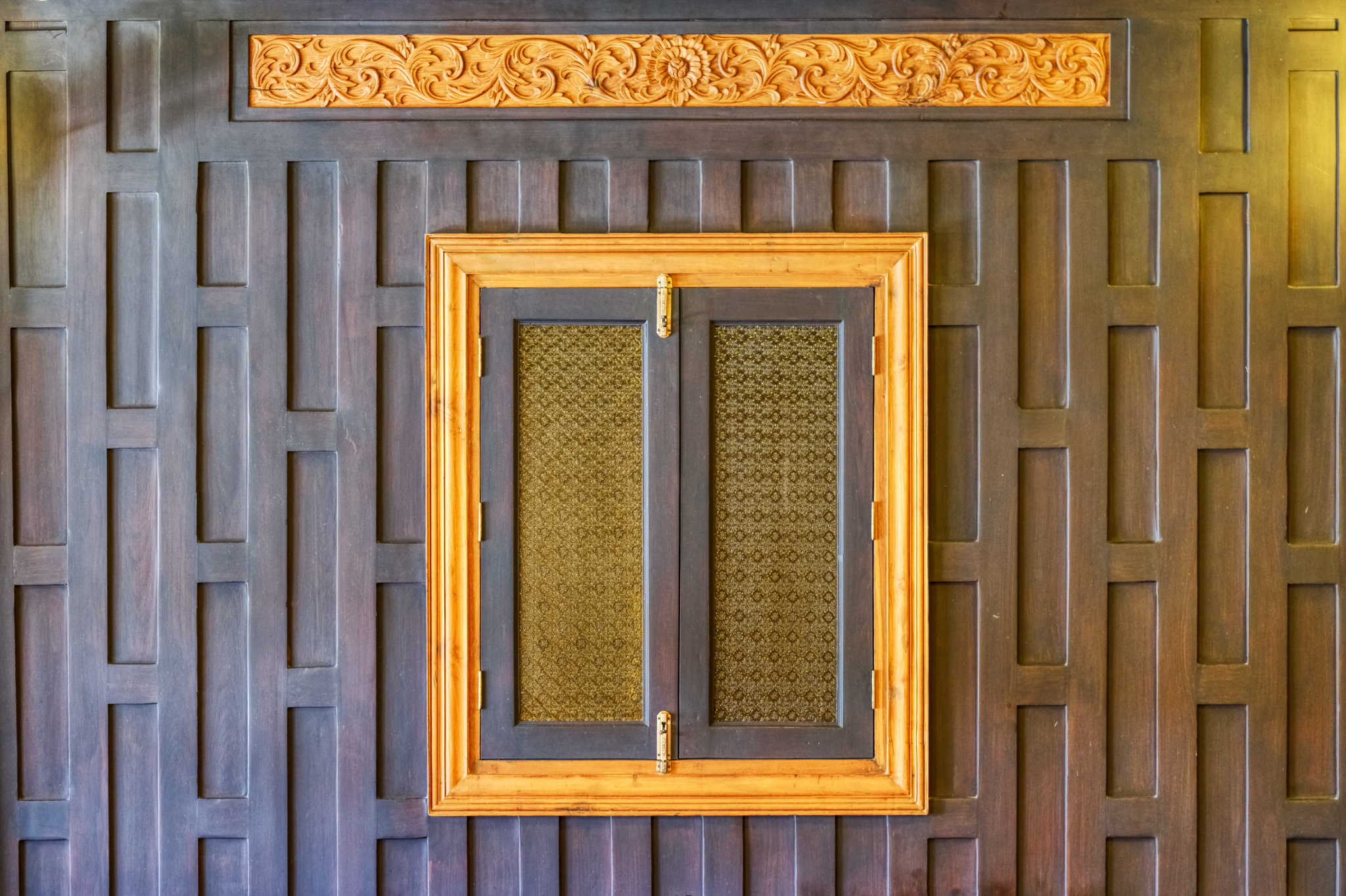 Old Thai style wood panels are so beautiful.
Old Thai style wood panels are so beautiful.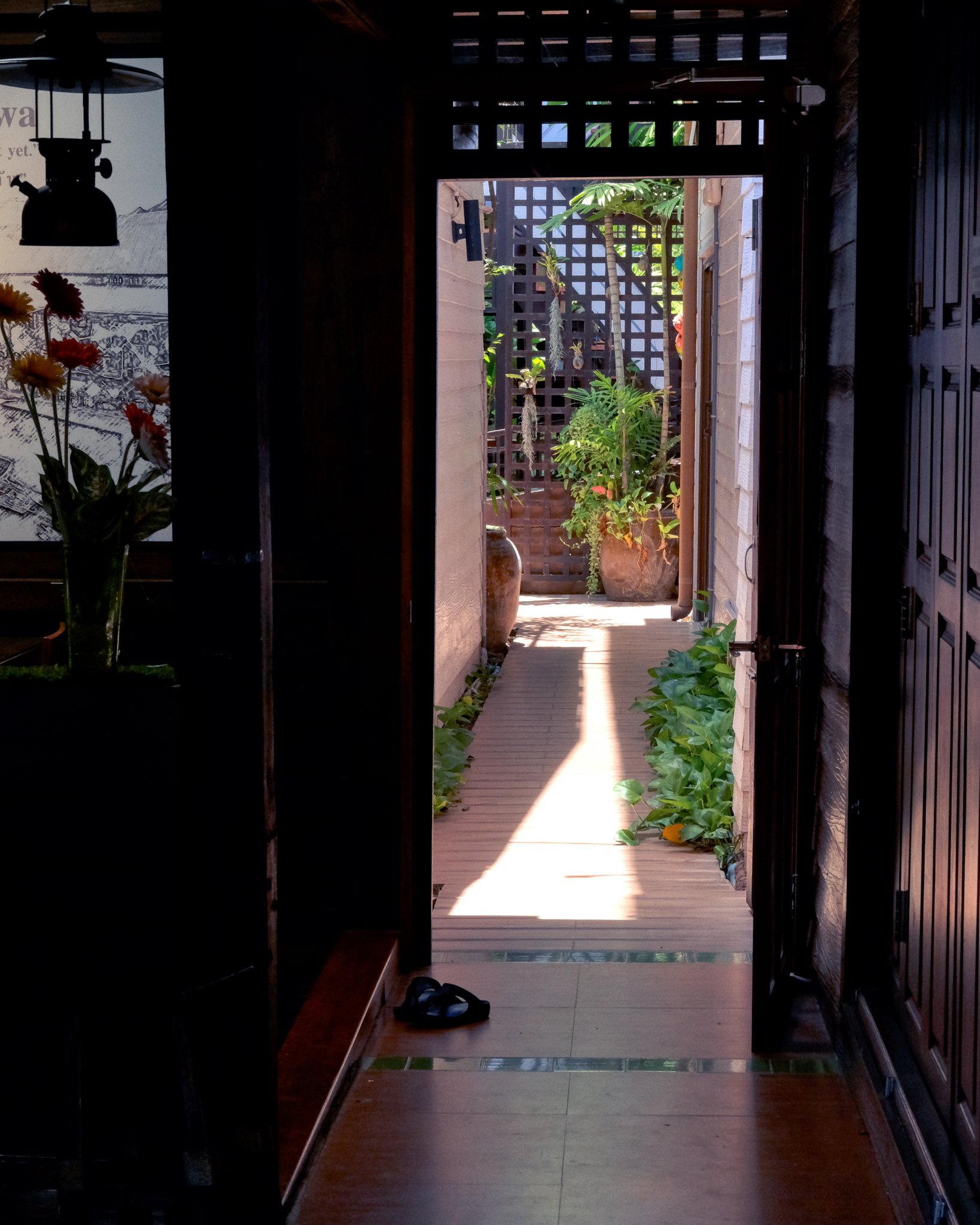 After a break we walked along he wooden boardwalks and secretly peaked into the houses. Such serene stillness in the oppressive heat and humidity.
After a break we walked along he wooden boardwalks and secretly peaked into the houses. Such serene stillness in the oppressive heat and humidity.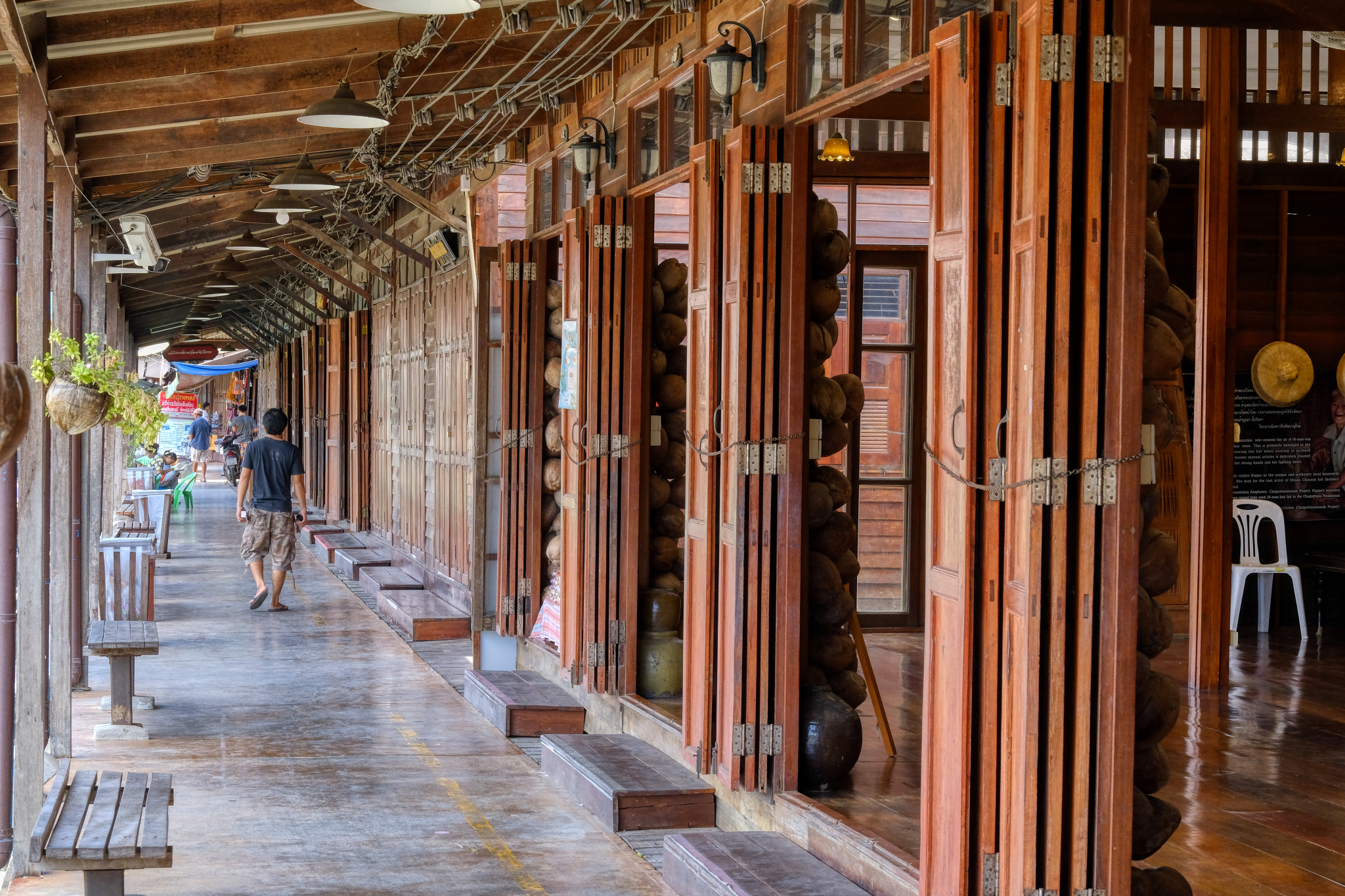 We took our time meandering along the shops . . . and this nice museum of the history of canal life.
We took our time meandering along the shops . . . and this nice museum of the history of canal life.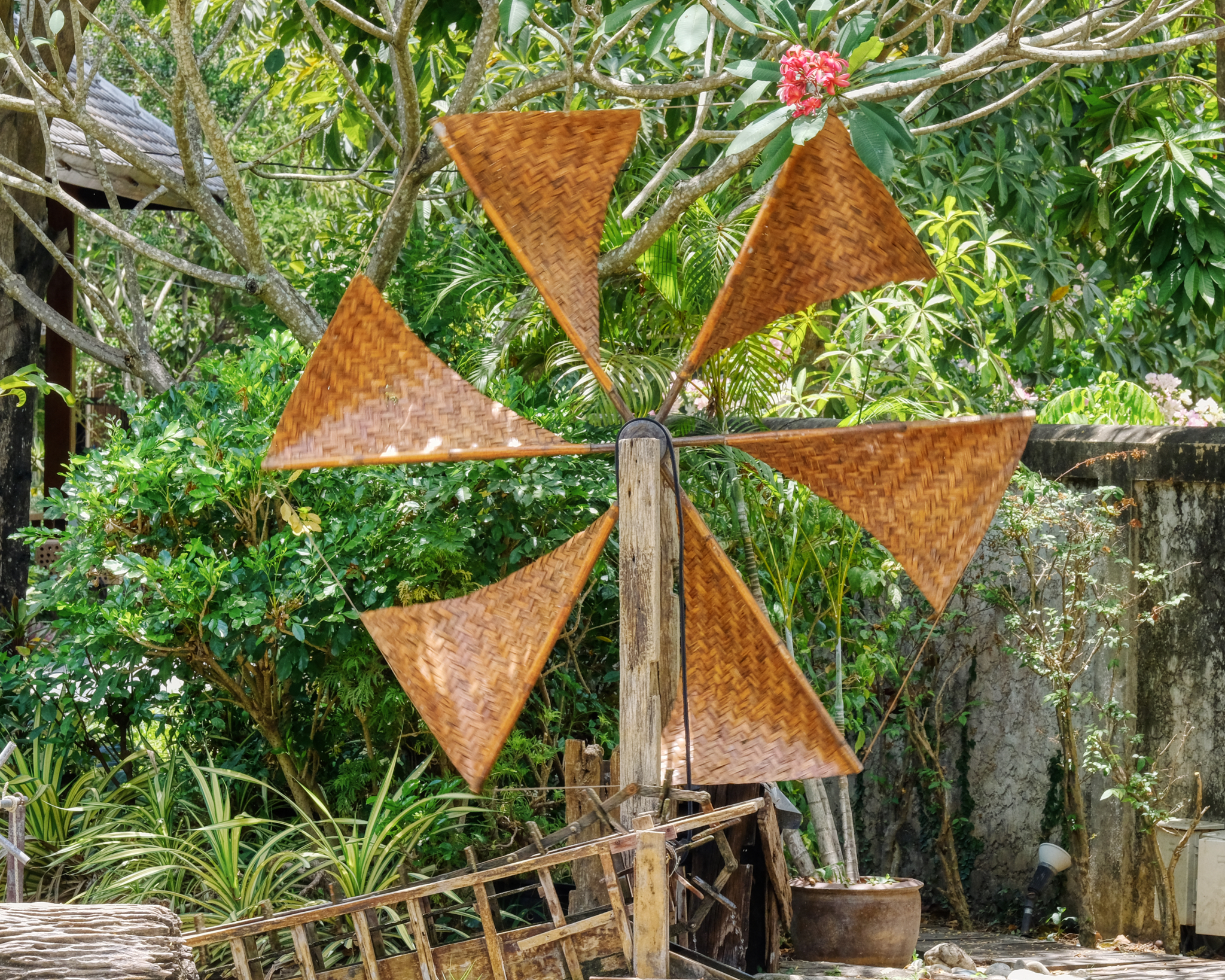 A spinning windmill behind the museum.
A spinning windmill behind the museum.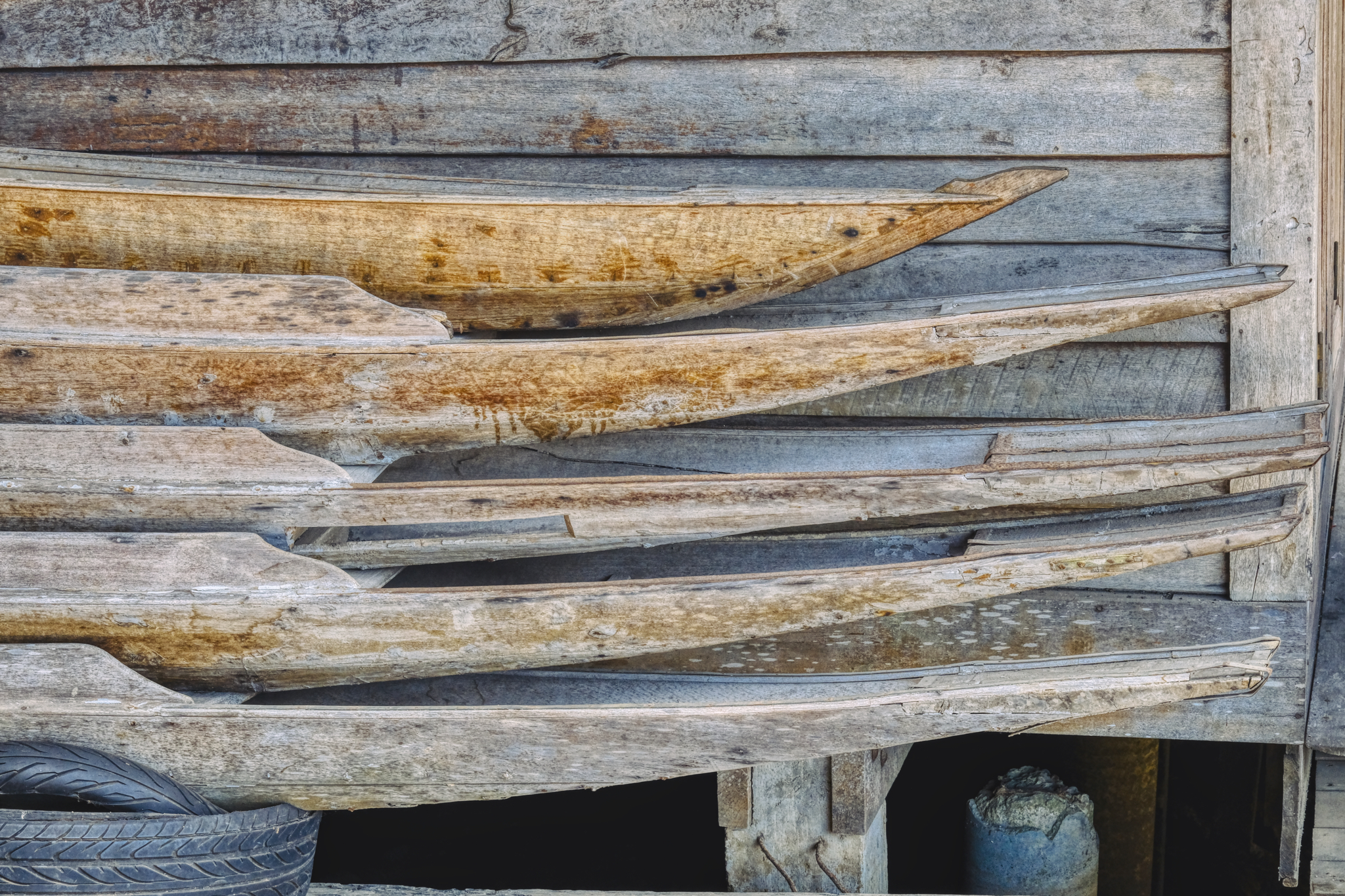 Antique canoes stacked along side the museum.
Antique canoes stacked along side the museum.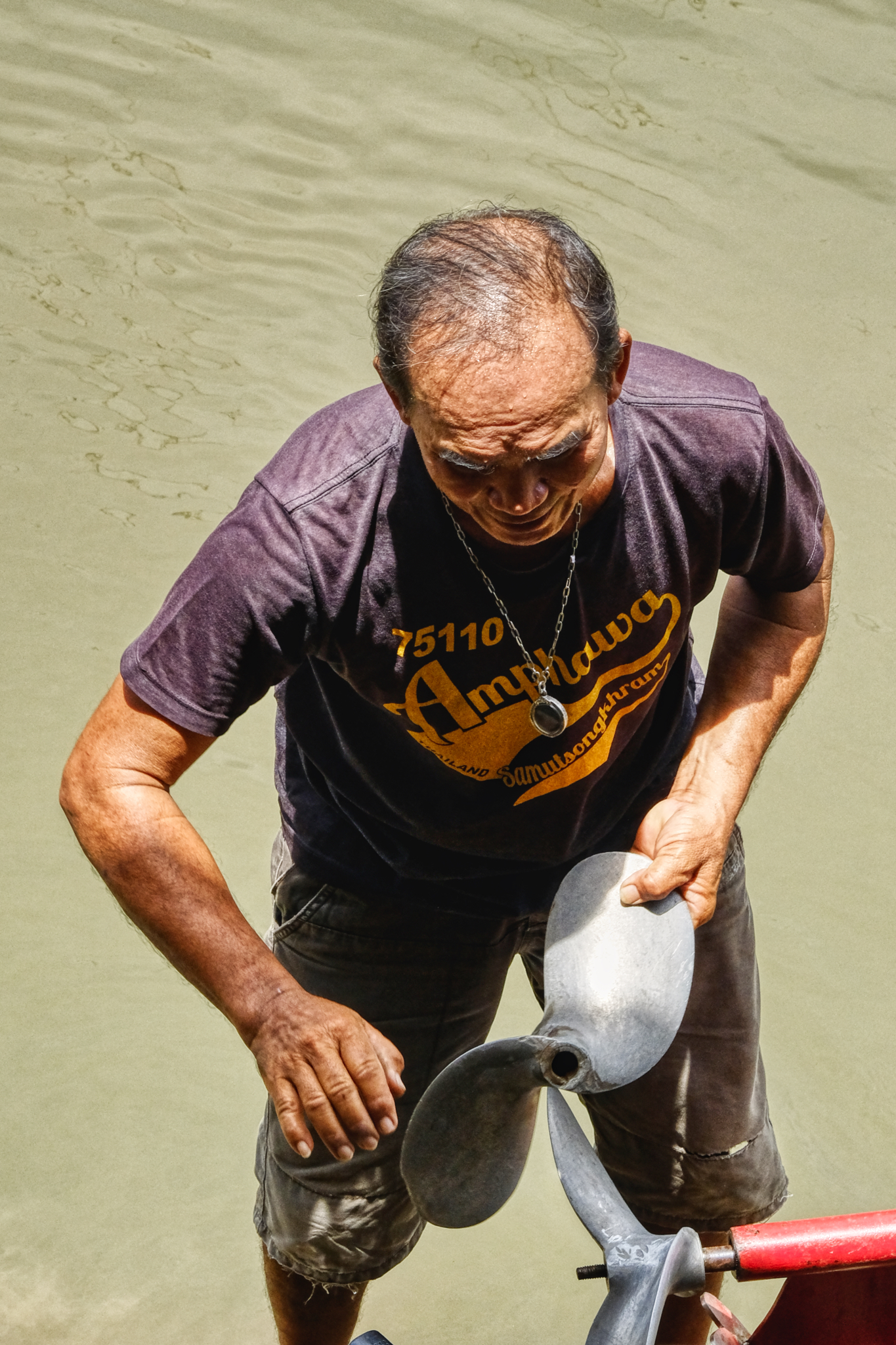 Even as hot as it was, the propeller still needed repairing.
Even as hot as it was, the propeller still needed repairing.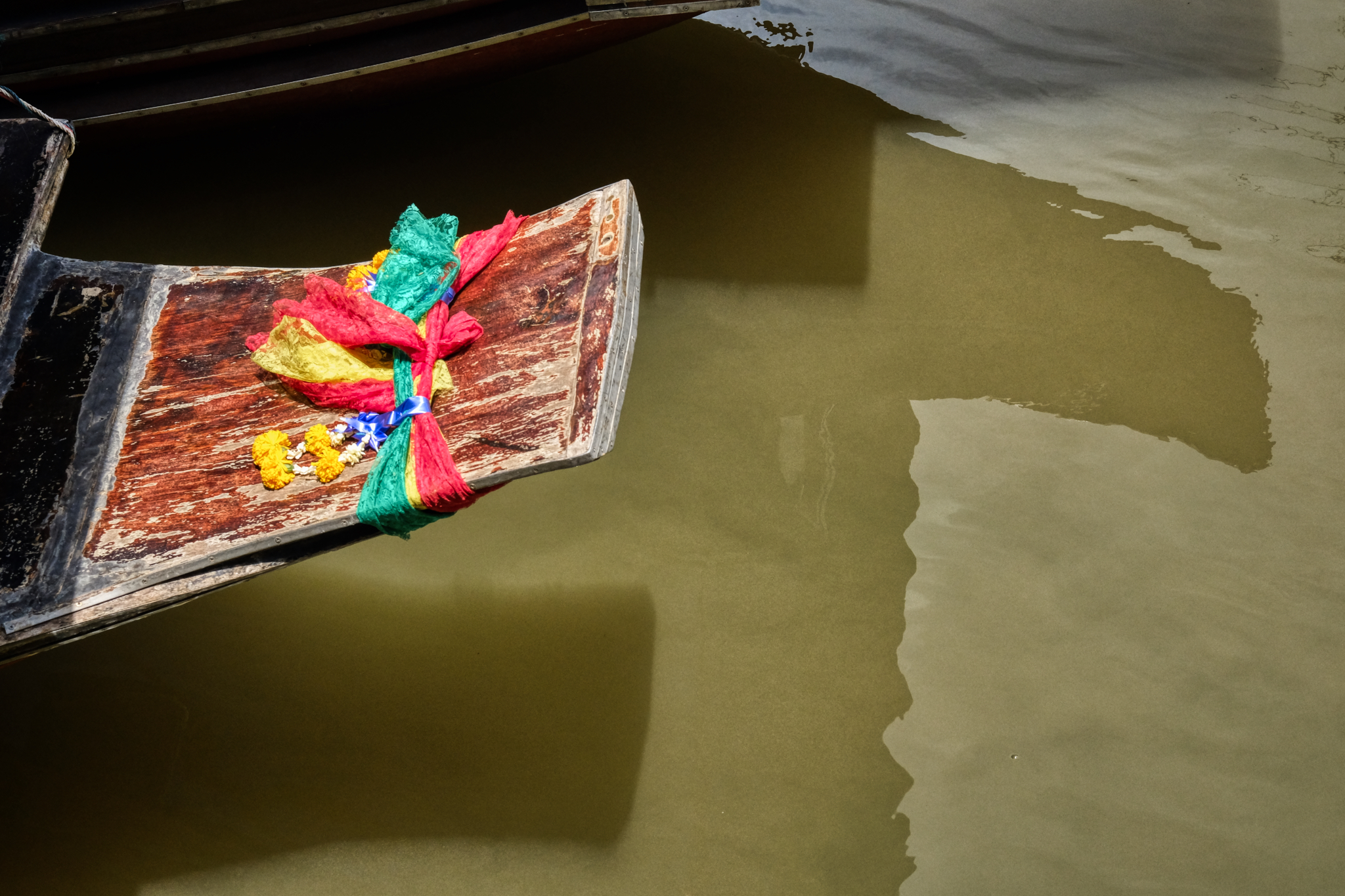 The tourist boas were beautifully decorated . . . in hopes of attracting business . . . which never came on this scorching day.
The tourist boas were beautifully decorated . . . in hopes of attracting business . . . which never came on this scorching day.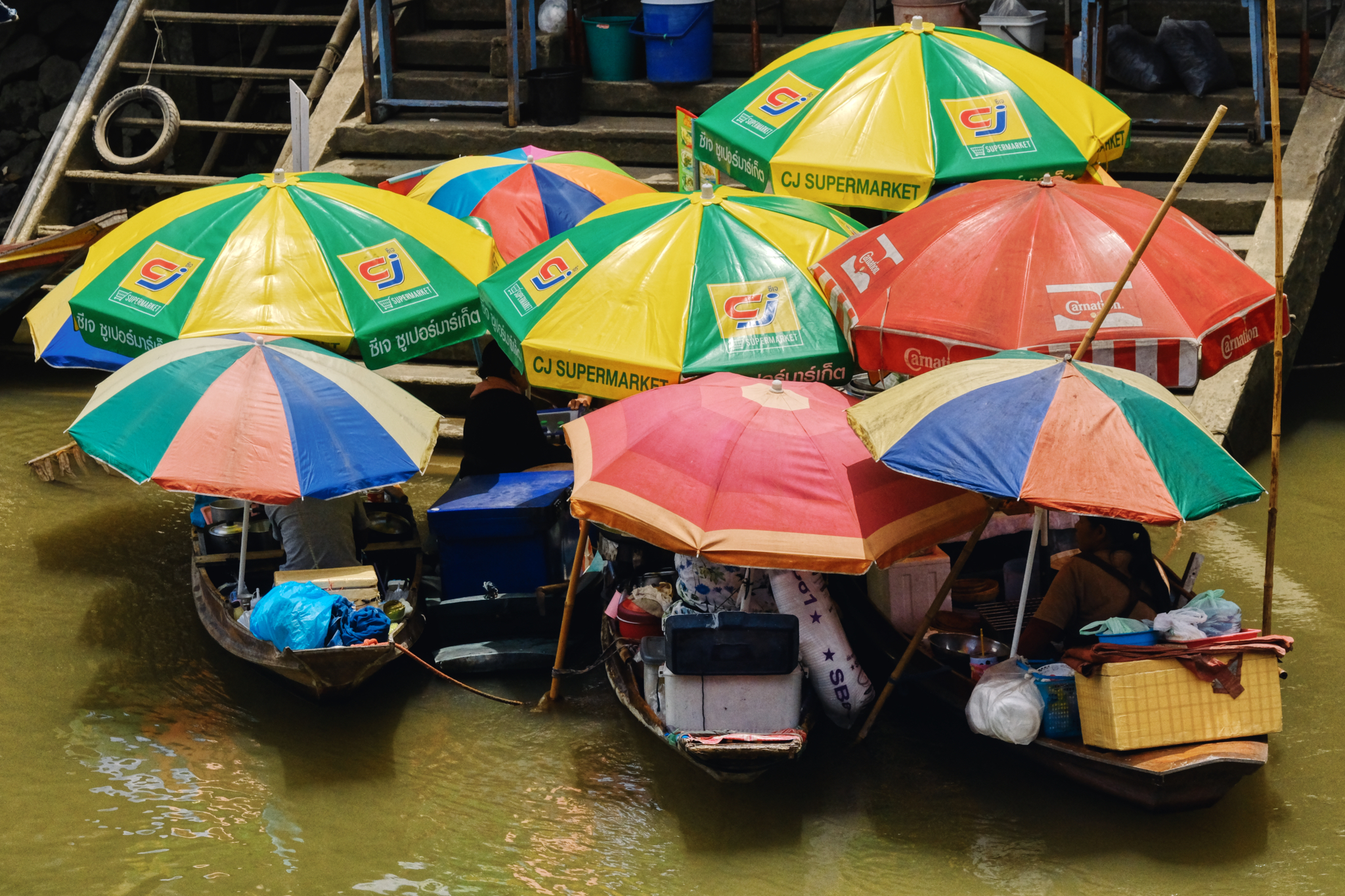 The ladies in their food stall boats congregated to swat flies and swap lies, as they say. Not much else to do.
The ladies in their food stall boats congregated to swat flies and swap lies, as they say. Not much else to do.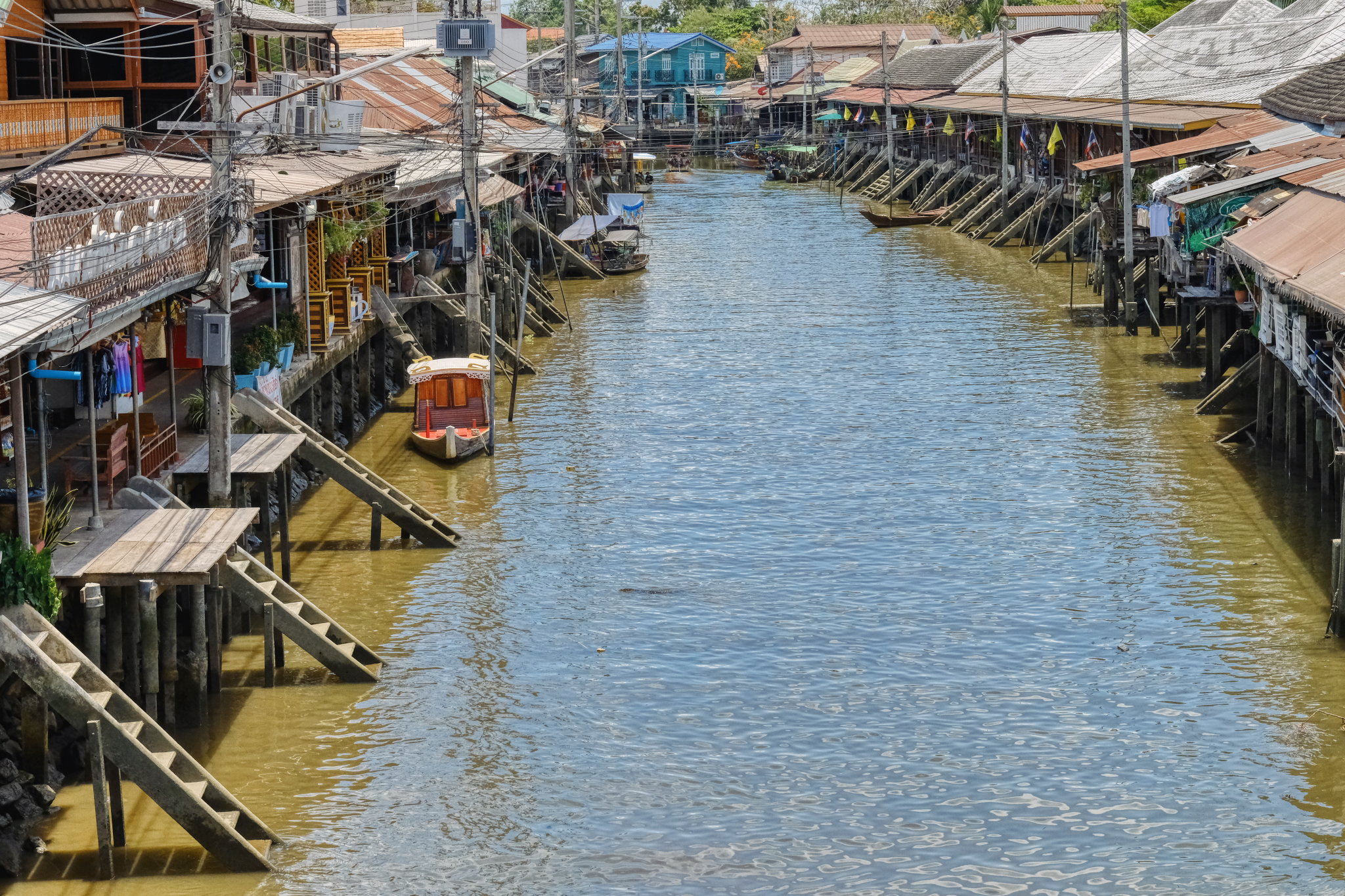 Back over the bridge toward the car. The hot day nearly over . . . the car air-conditioner is calling.
Back over the bridge toward the car. The hot day nearly over . . . the car air-conditioner is calling.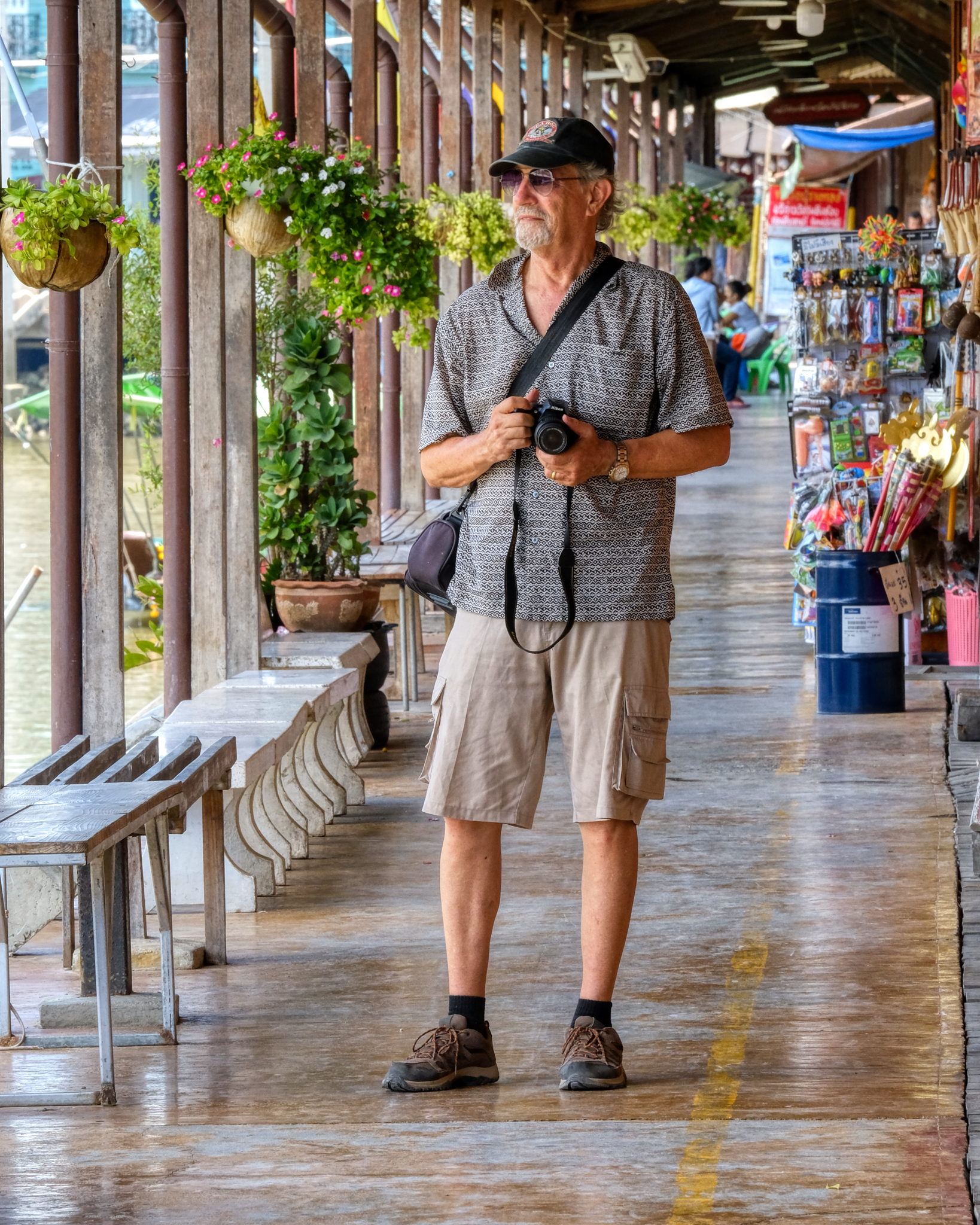 My friend John always on the look out for an amazing image.
My friend John always on the look out for an amazing image. We descended down into the sea of sun parasols and the tourist curios.
We descended down into the sea of sun parasols and the tourist curios.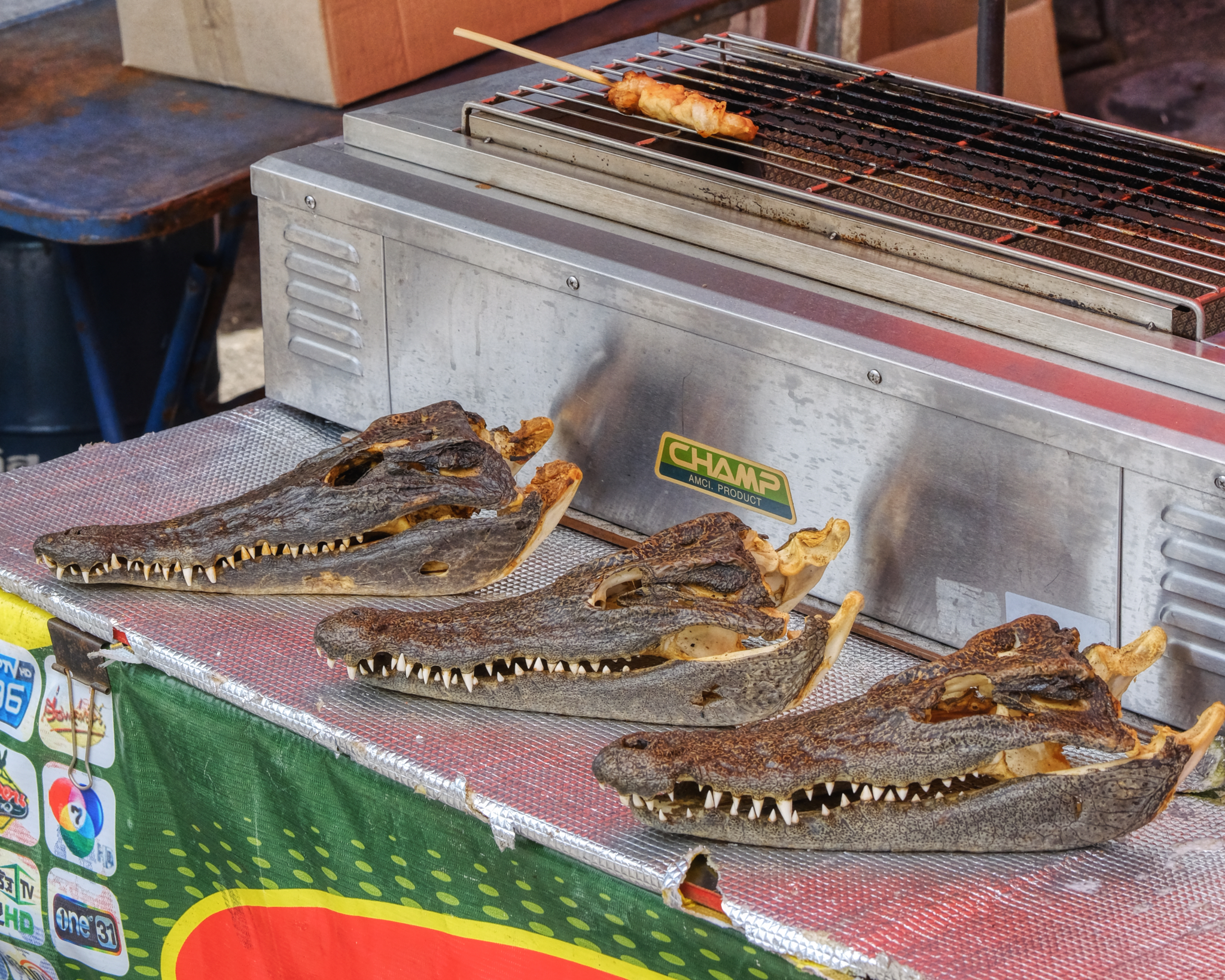 Our last act was to buy a 'croc-on-a-stick' brochet . . . Yes, it did taste like chicken, which makes a kind of sense since crocodiles are actually surviving dinosaurs . . . and birds are dinosaur descendants. We worried all the way back home that we could have eaten 'bad crocodile' . . . . but we were fine . . . no intestinal turmoil after all.
Our last act was to buy a 'croc-on-a-stick' brochet . . . Yes, it did taste like chicken, which makes a kind of sense since crocodiles are actually surviving dinosaurs . . . and birds are dinosaur descendants. We worried all the way back home that we could have eaten 'bad crocodile' . . . . but we were fine . . . no intestinal turmoil after all. 